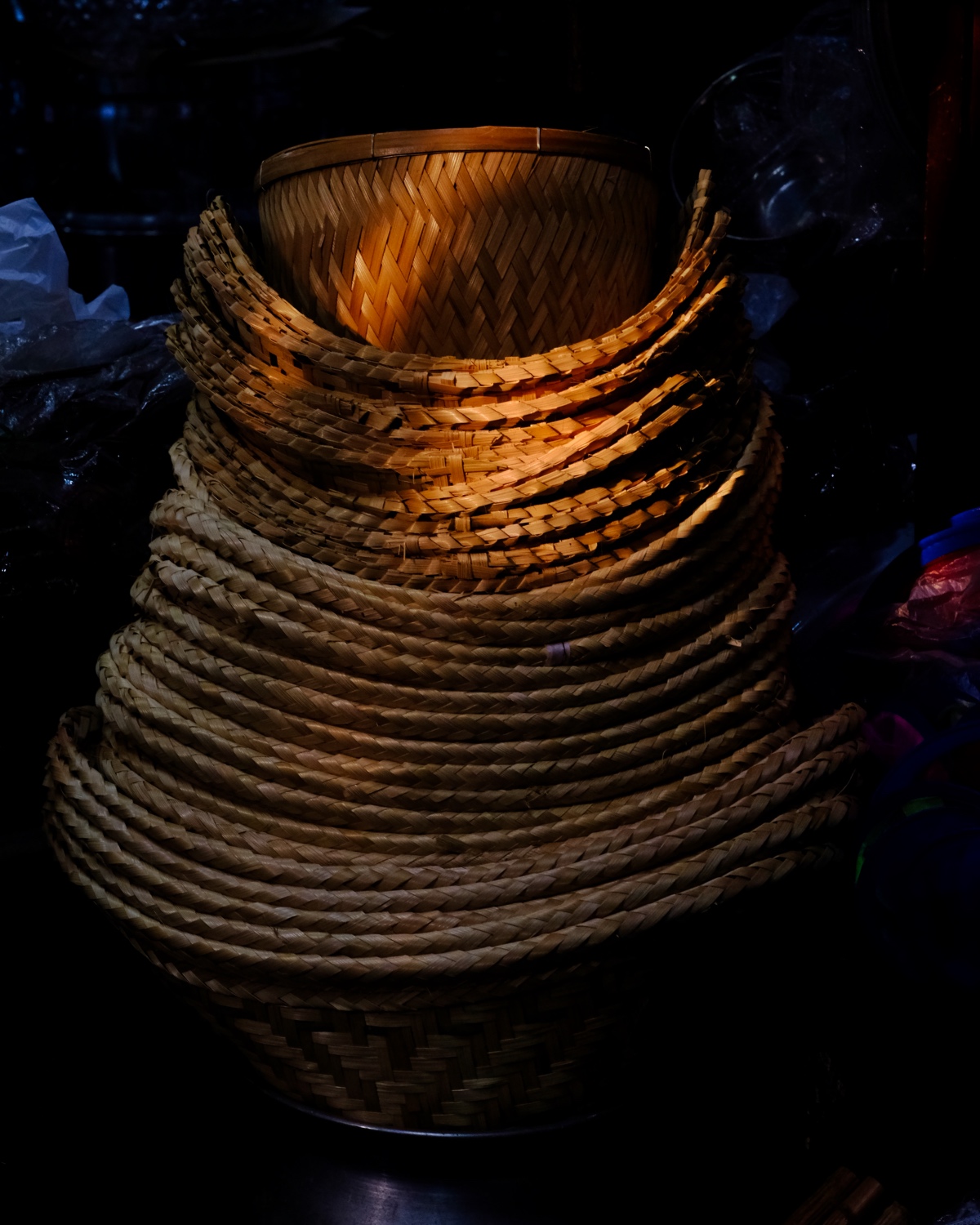My most current blog entry:
Entries in Old Doors & Windows (41)
Road Trip USA: Cherry Creek, Nevada
 Thursday, September 20, 2018 at 3:36AM
Thursday, September 20, 2018 at 3:36AM 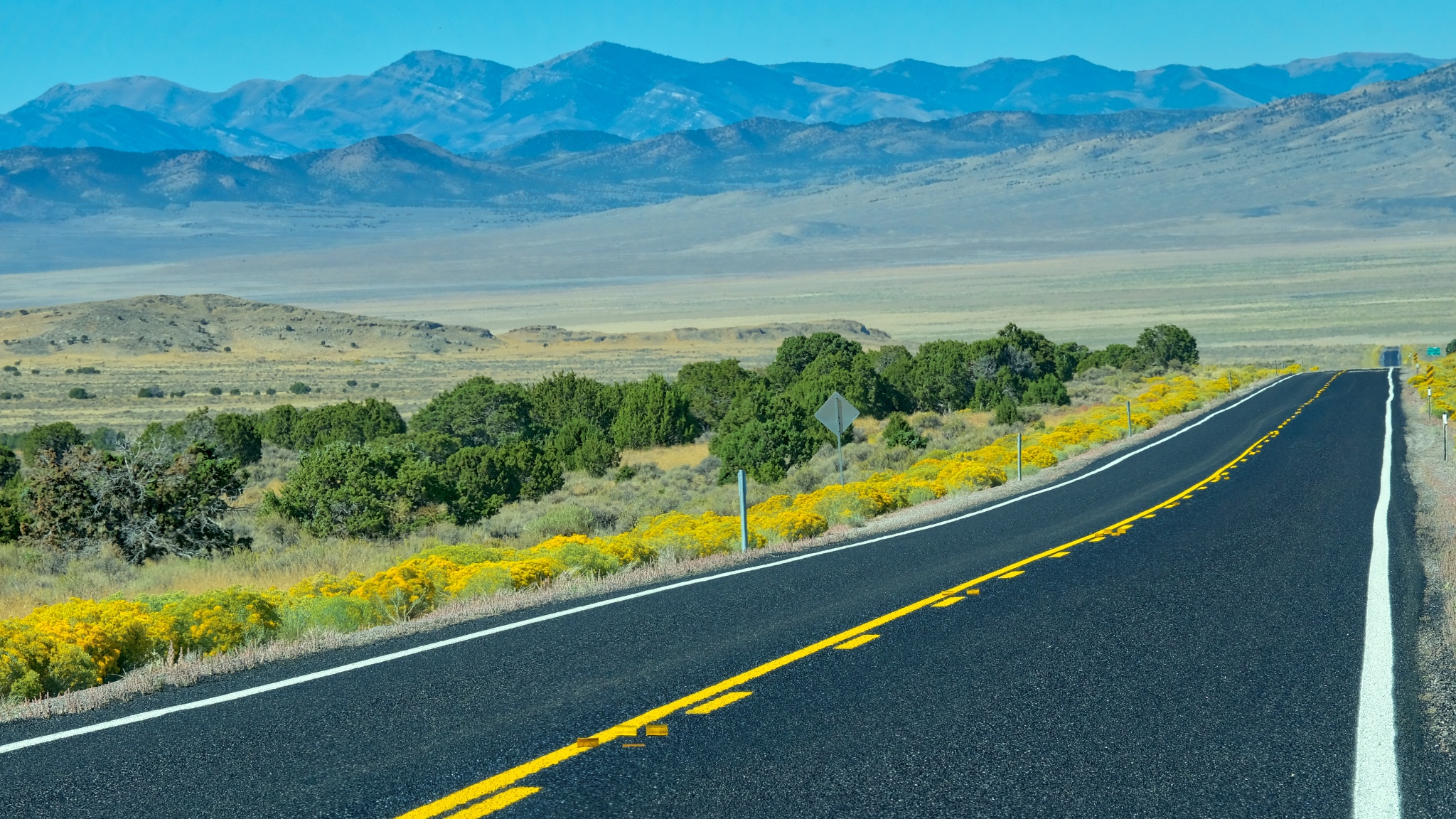 After a wonderful four days at the World of Speed event at the Bonneville Salt Flats in Utah, I headed off on US Highway 93 (via Alt 93) to the Eastern Sierras in California. I was in no hurry . . . and planned to stay at a campground somewhere along the way.
After a wonderful four days at the World of Speed event at the Bonneville Salt Flats in Utah, I headed off on US Highway 93 (via Alt 93) to the Eastern Sierras in California. I was in no hurry . . . and planned to stay at a campground somewhere along the way.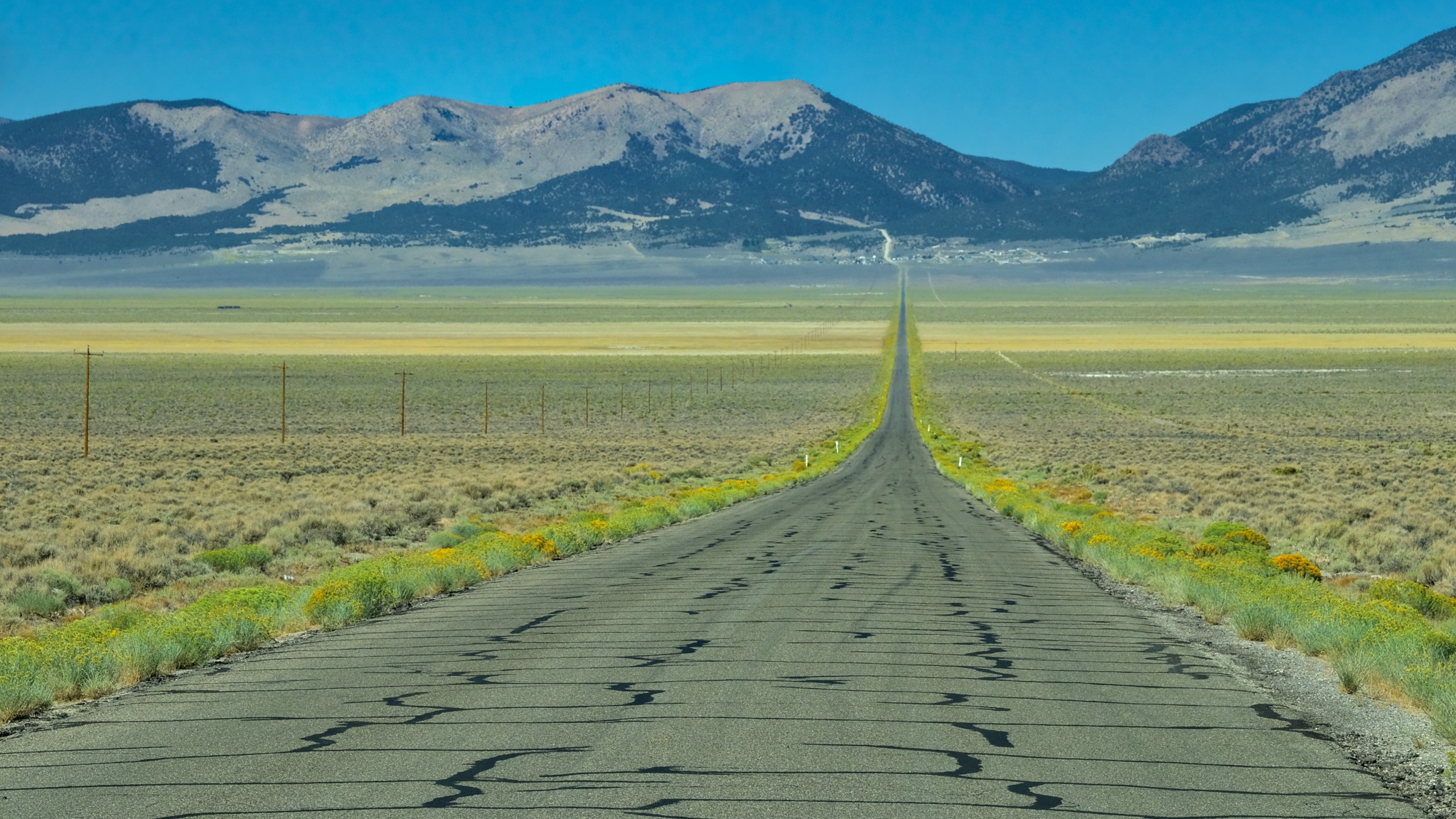 I came across this road leading up to some hills with a sign that said "Cherry Creek Museum 8 Miles" that looked interesting to me. Why not? Maybe it is an old photogenic mining town.
I came across this road leading up to some hills with a sign that said "Cherry Creek Museum 8 Miles" that looked interesting to me. Why not? Maybe it is an old photogenic mining town.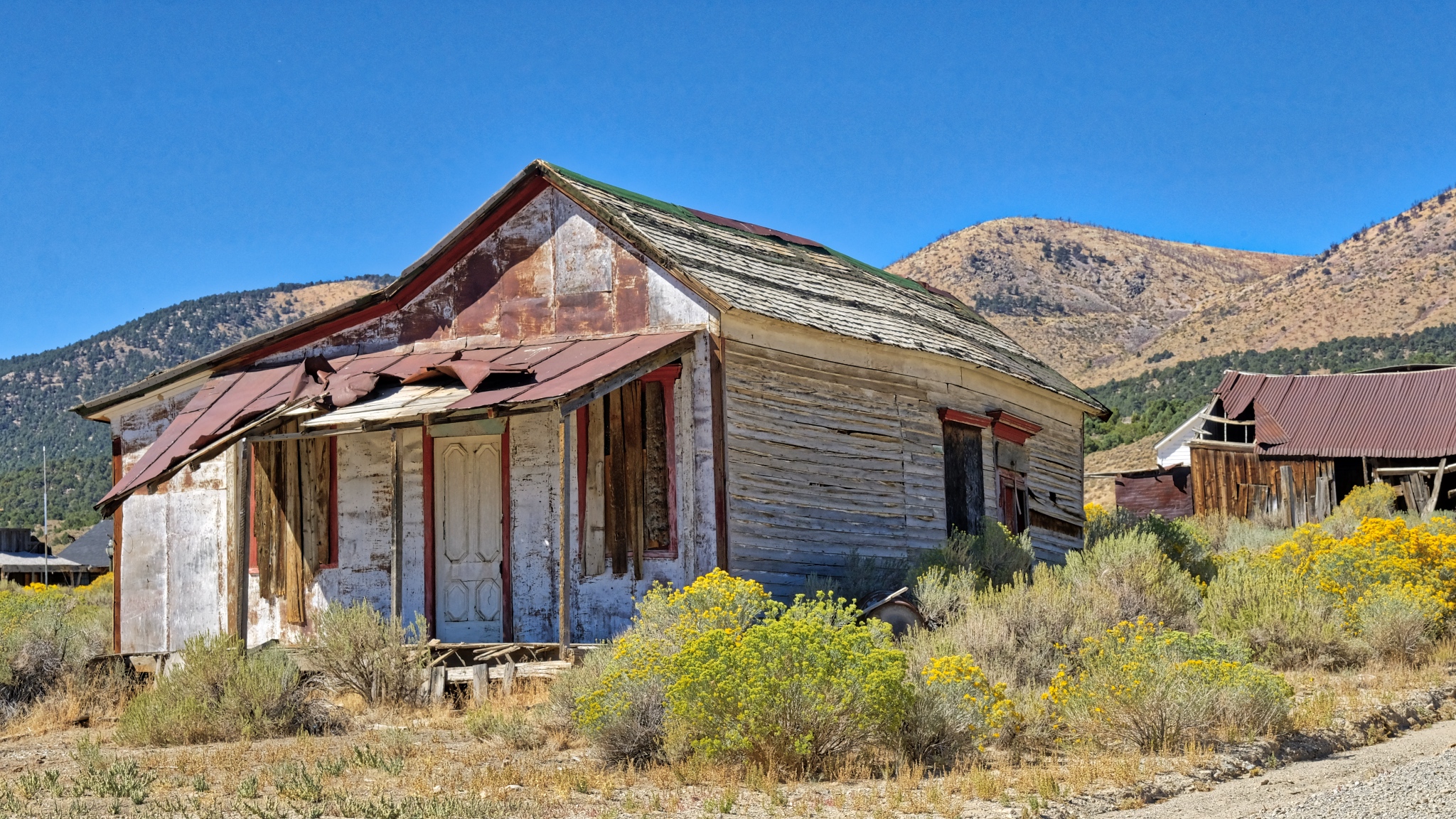 Yep, sure enough: Cherry Creek was an old mining town that had seen its glory days in the 1880-1890s. Just what I had hoped!
Yep, sure enough: Cherry Creek was an old mining town that had seen its glory days in the 1880-1890s. Just what I had hoped!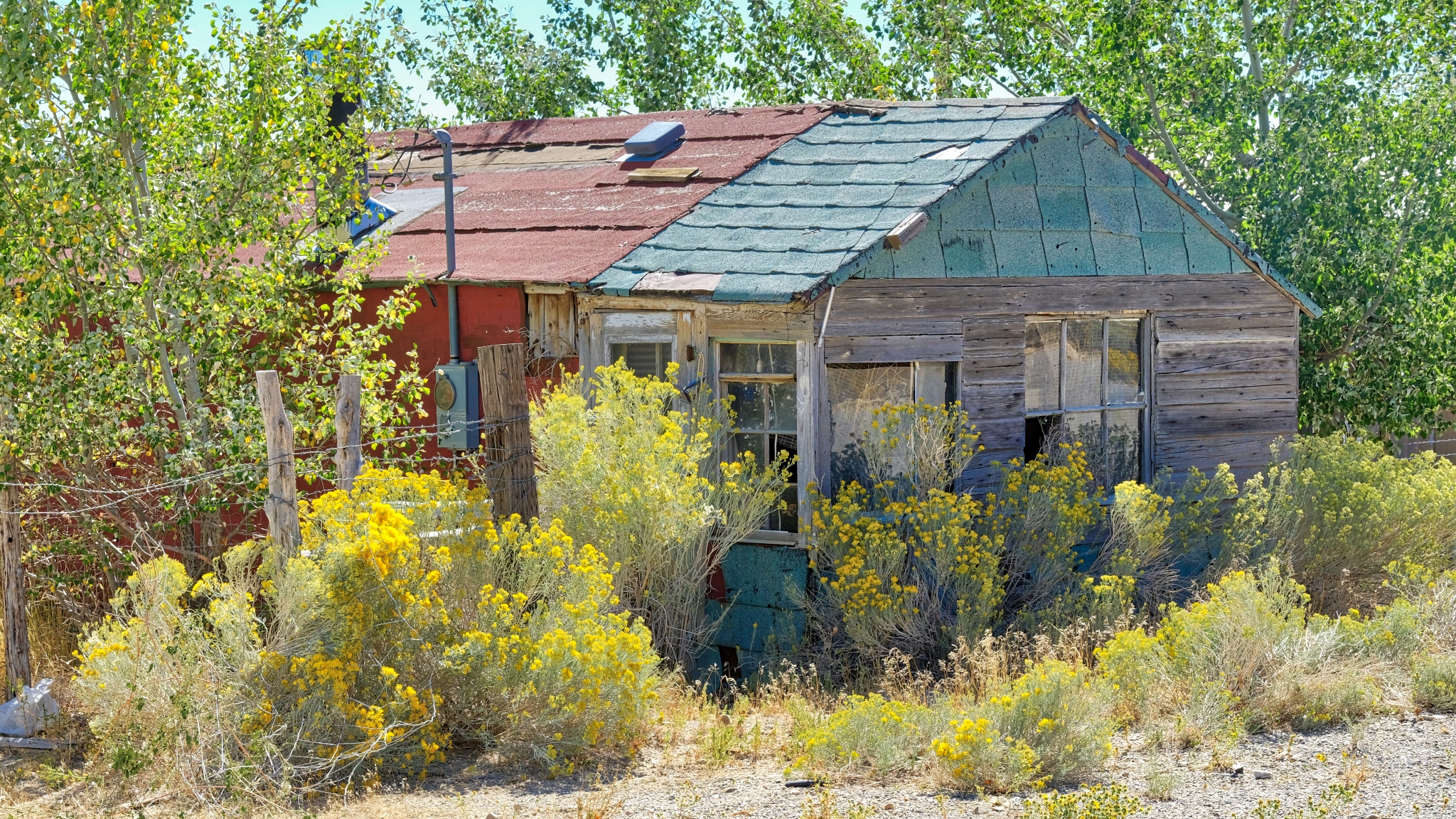 The blooming sage and the old weathered houses made for perfect compositions.
The blooming sage and the old weathered houses made for perfect compositions.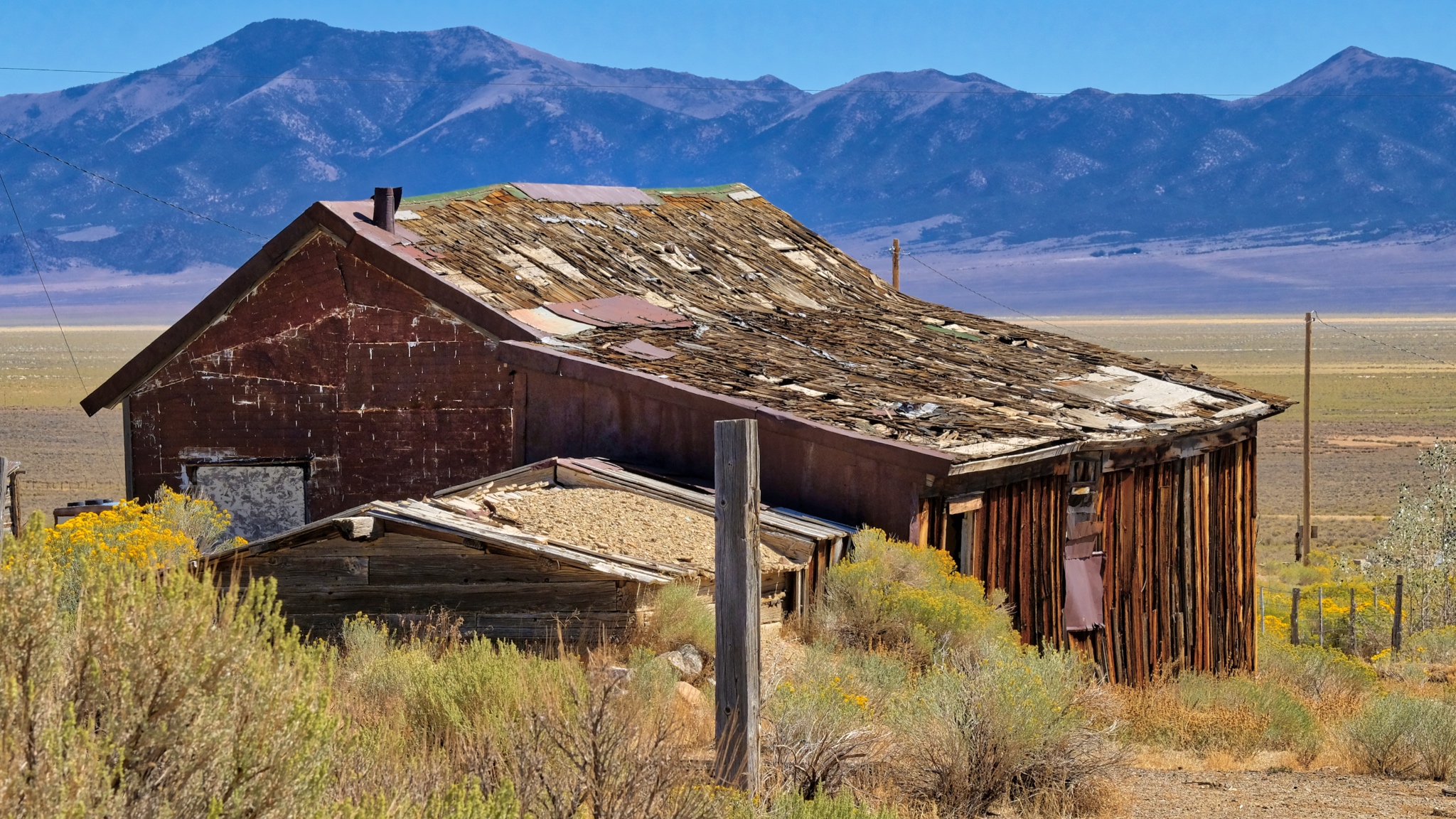 Some of the shacks seemed much older than others . . . perhaps dating to the beginning of the last century.
Some of the shacks seemed much older than others . . . perhaps dating to the beginning of the last century.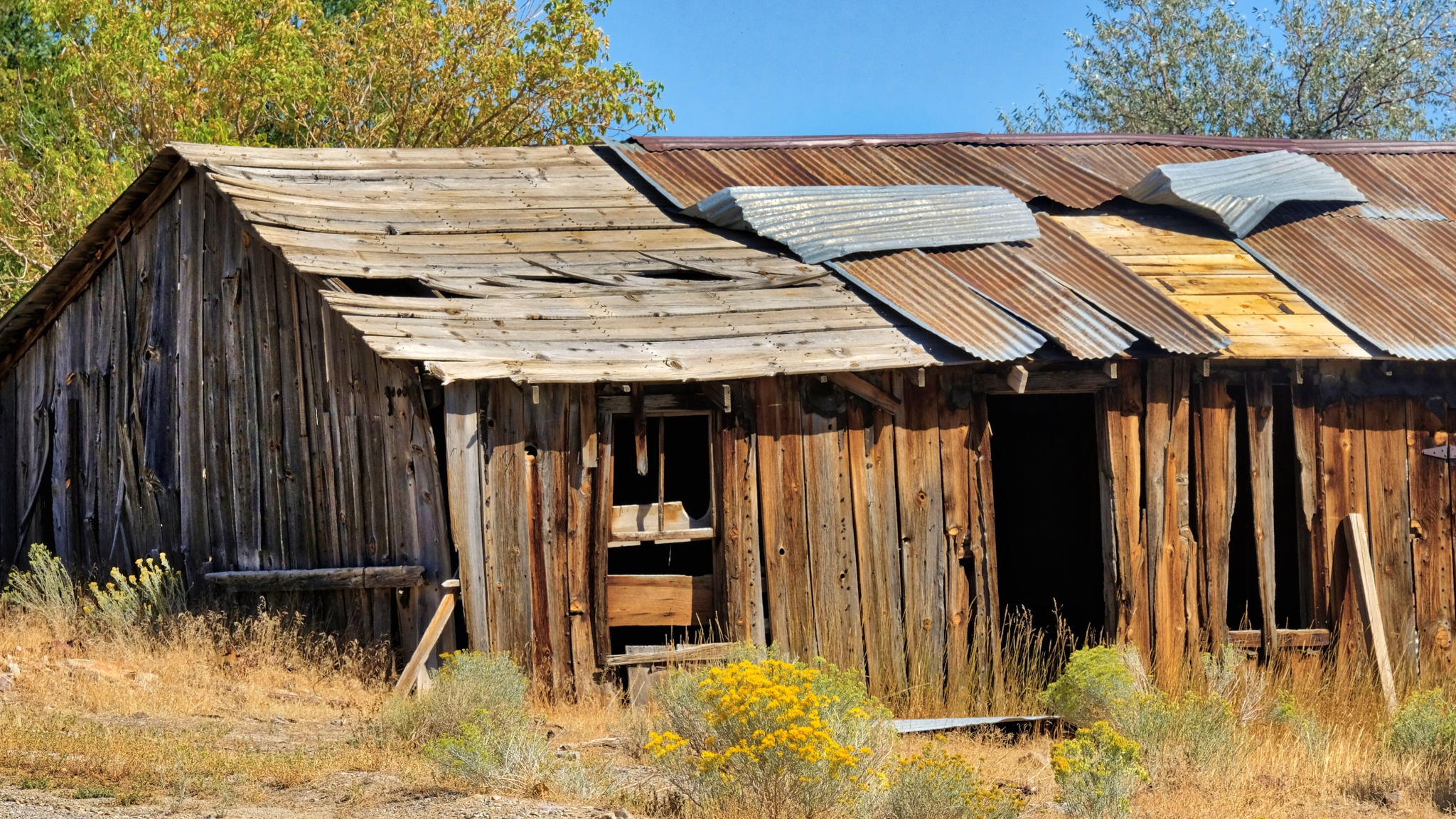 Much repairing and patching was done before these old houses were abandoned.
Much repairing and patching was done before these old houses were abandoned.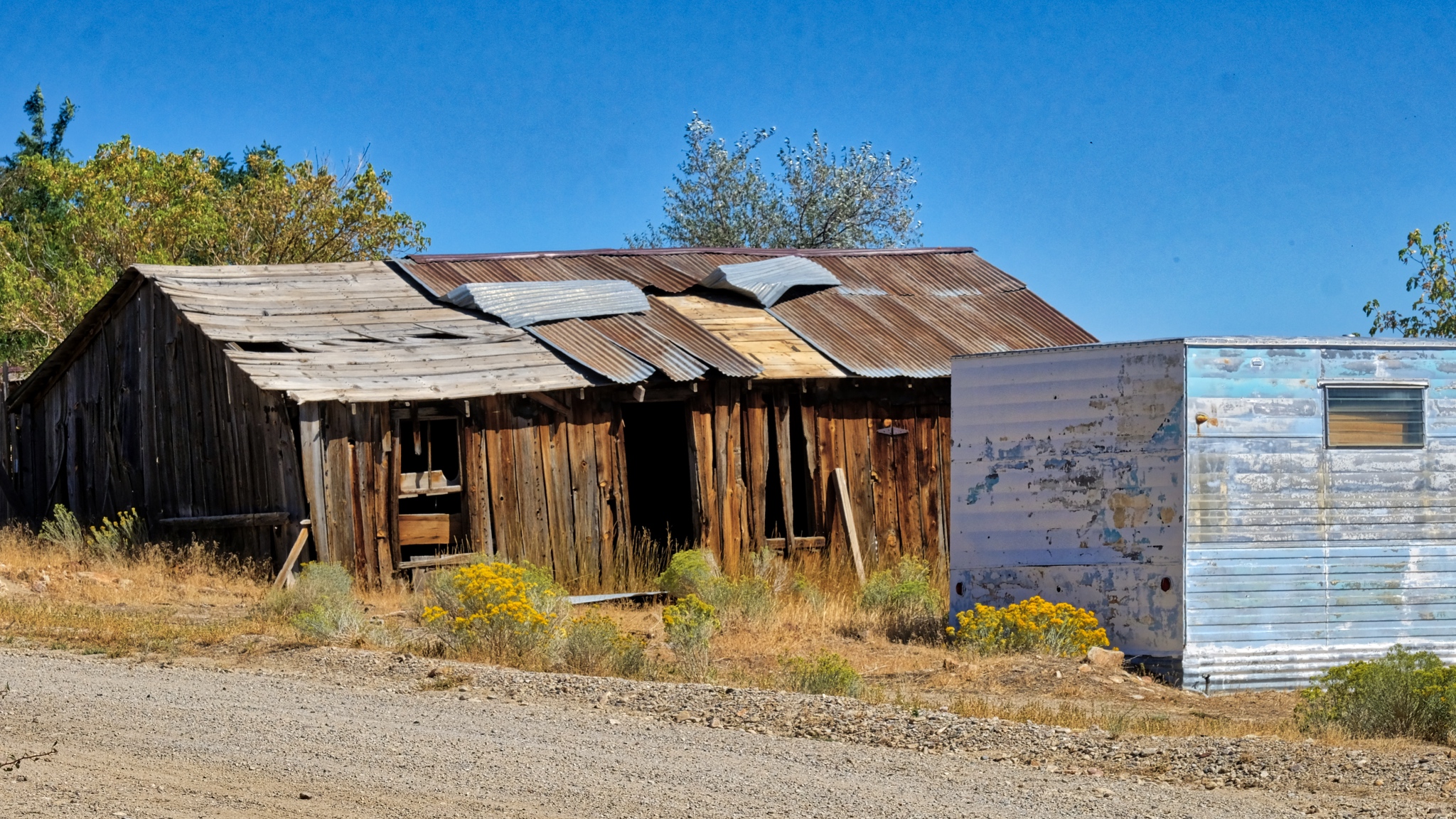 The old and the new(er).
The old and the new(er).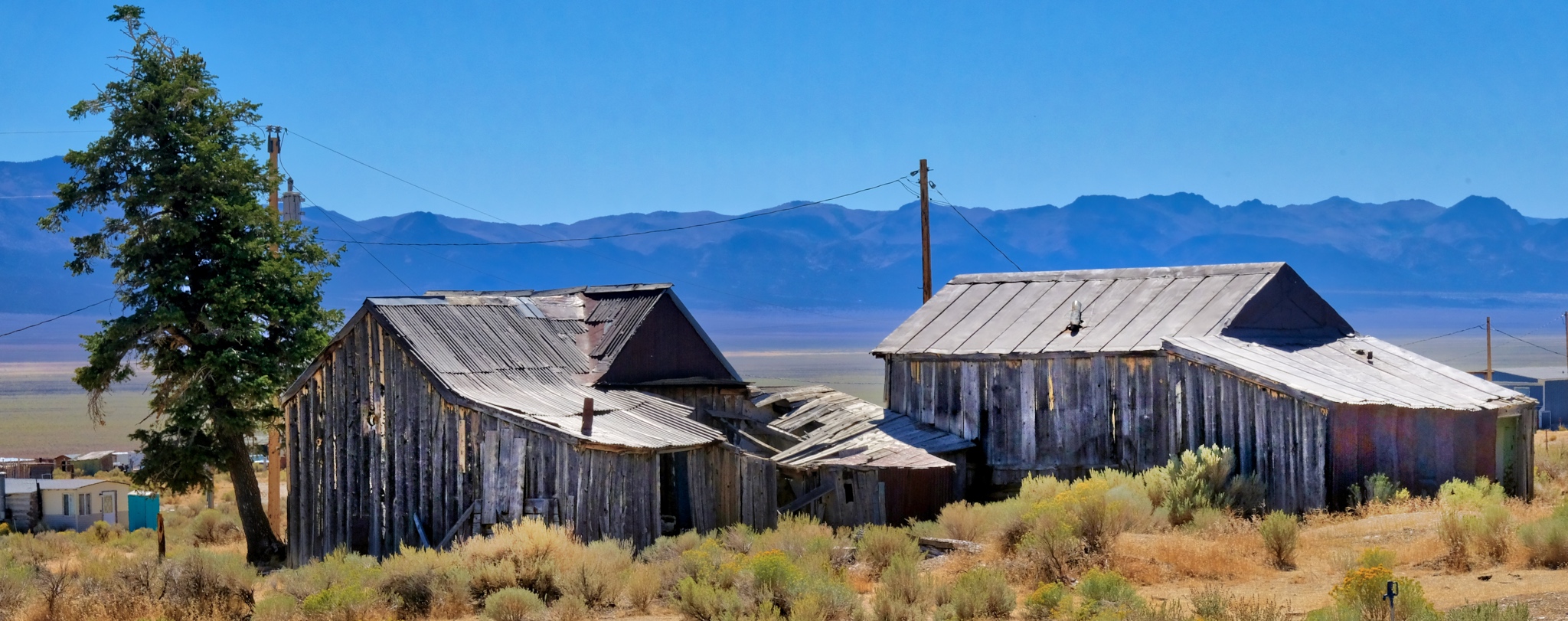 In 1882, Cherry Creek was estimated to have had a population of 7800, but by the census of 1890, it had fallen to just 350. In 2007 the population was 93 (61 male and 32 female). I did not see a single solitary person during my one hour walk-about.
In 1882, Cherry Creek was estimated to have had a population of 7800, but by the census of 1890, it had fallen to just 350. In 2007 the population was 93 (61 male and 32 female). I did not see a single solitary person during my one hour walk-about. Corrugation and dilapidation . . . my favorite photographic subjects.
Corrugation and dilapidation . . . my favorite photographic subjects.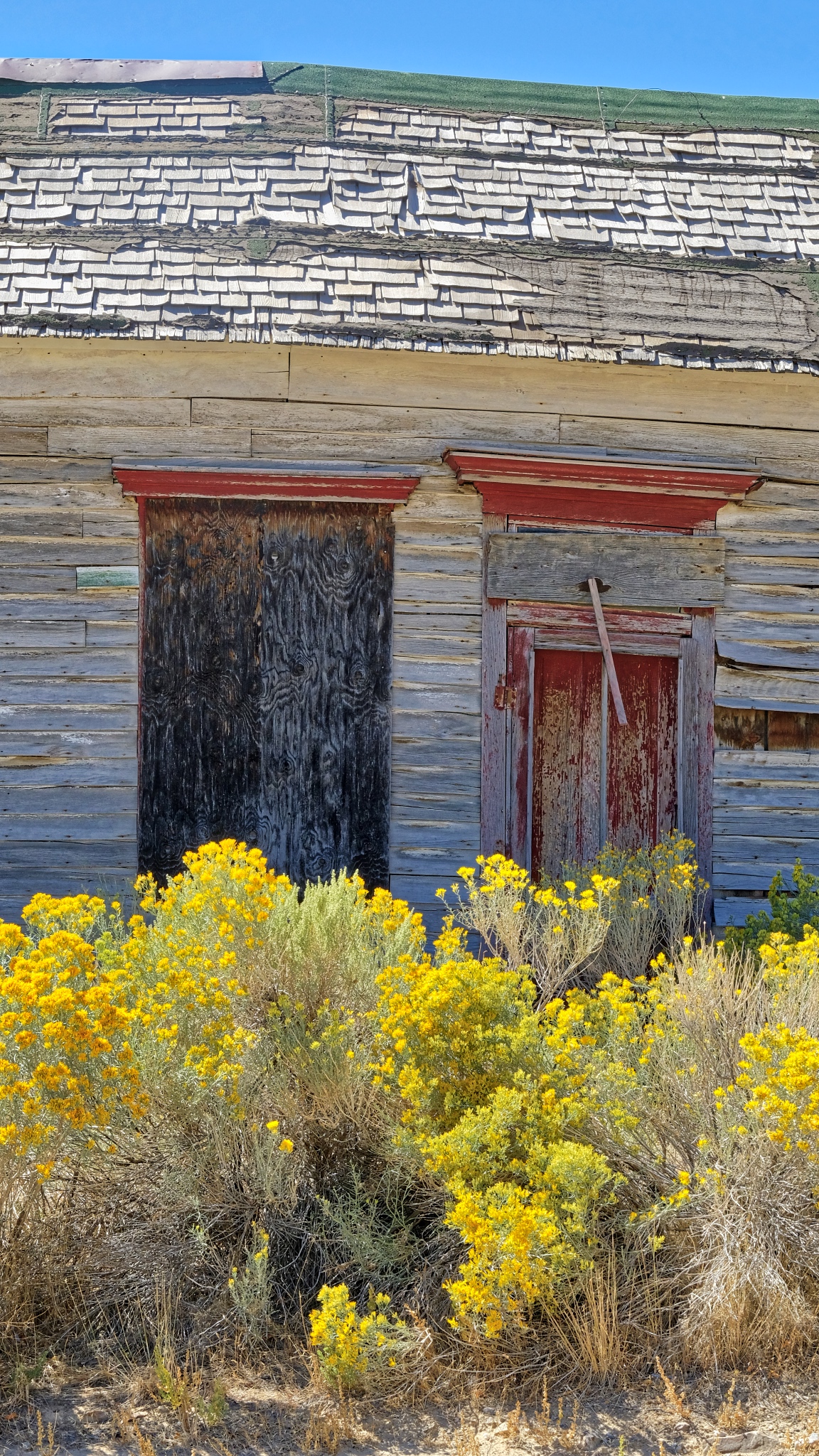 There were some lovely photos to be had.
There were some lovely photos to be had.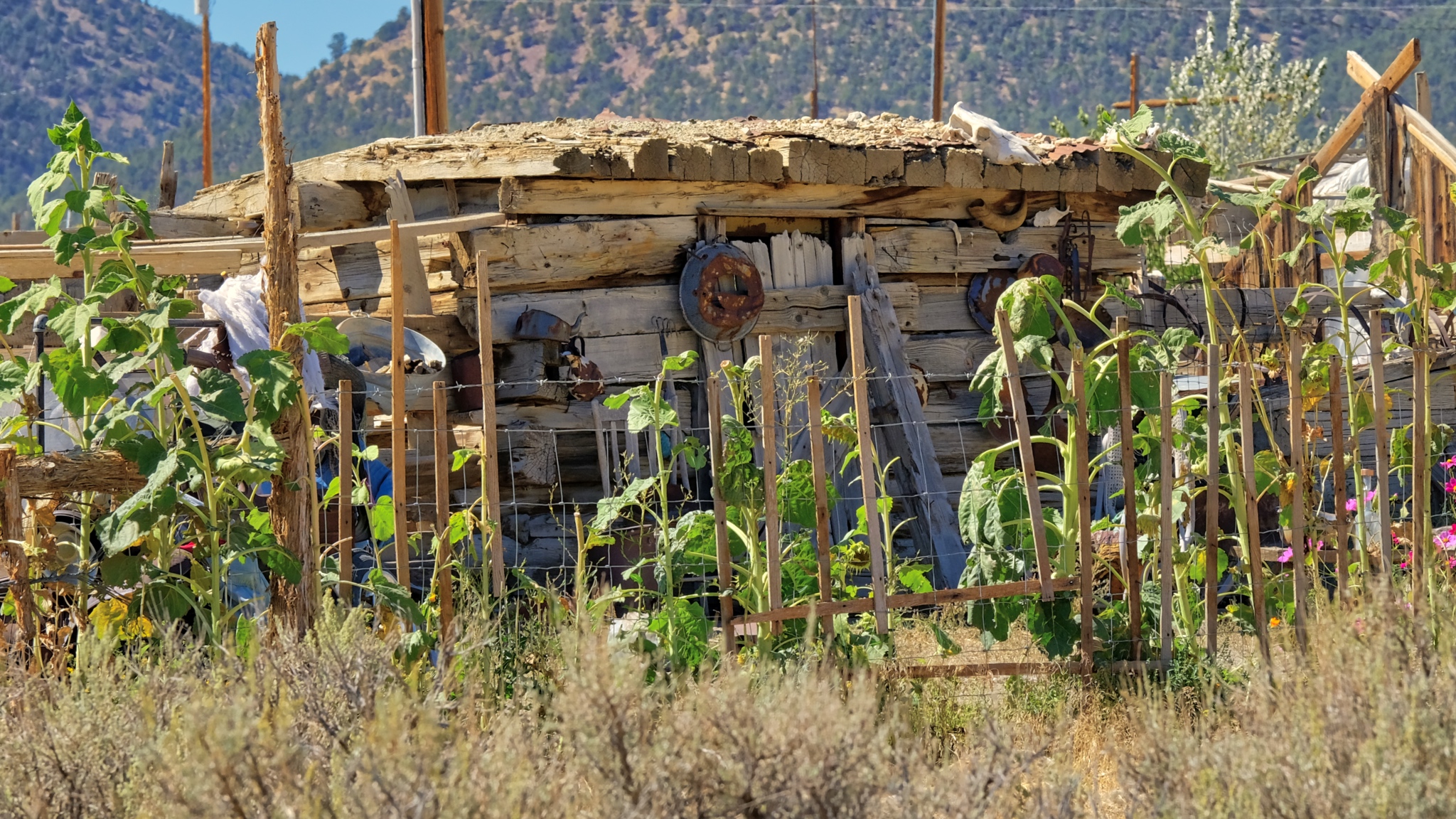 Although I didn't see any of the 93 inhabitants, I did see a nice rustic garden.
Although I didn't see any of the 93 inhabitants, I did see a nice rustic garden.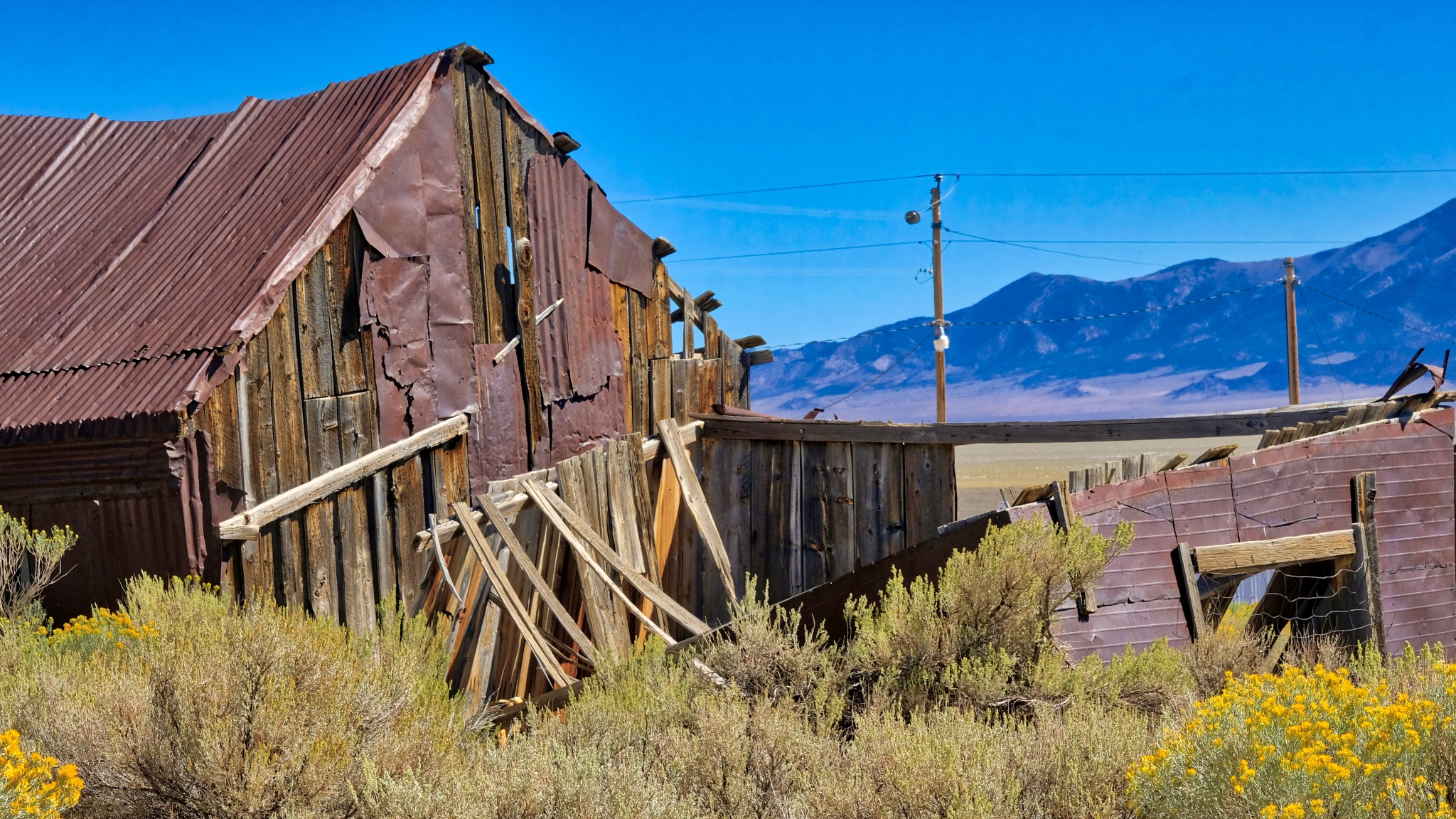 Patching, propping, and repairing right up to the end.
Patching, propping, and repairing right up to the end. I saw several of these houses in the region that seemed to be made of large timbers like railroad ties.
I saw several of these houses in the region that seemed to be made of large timbers like railroad ties.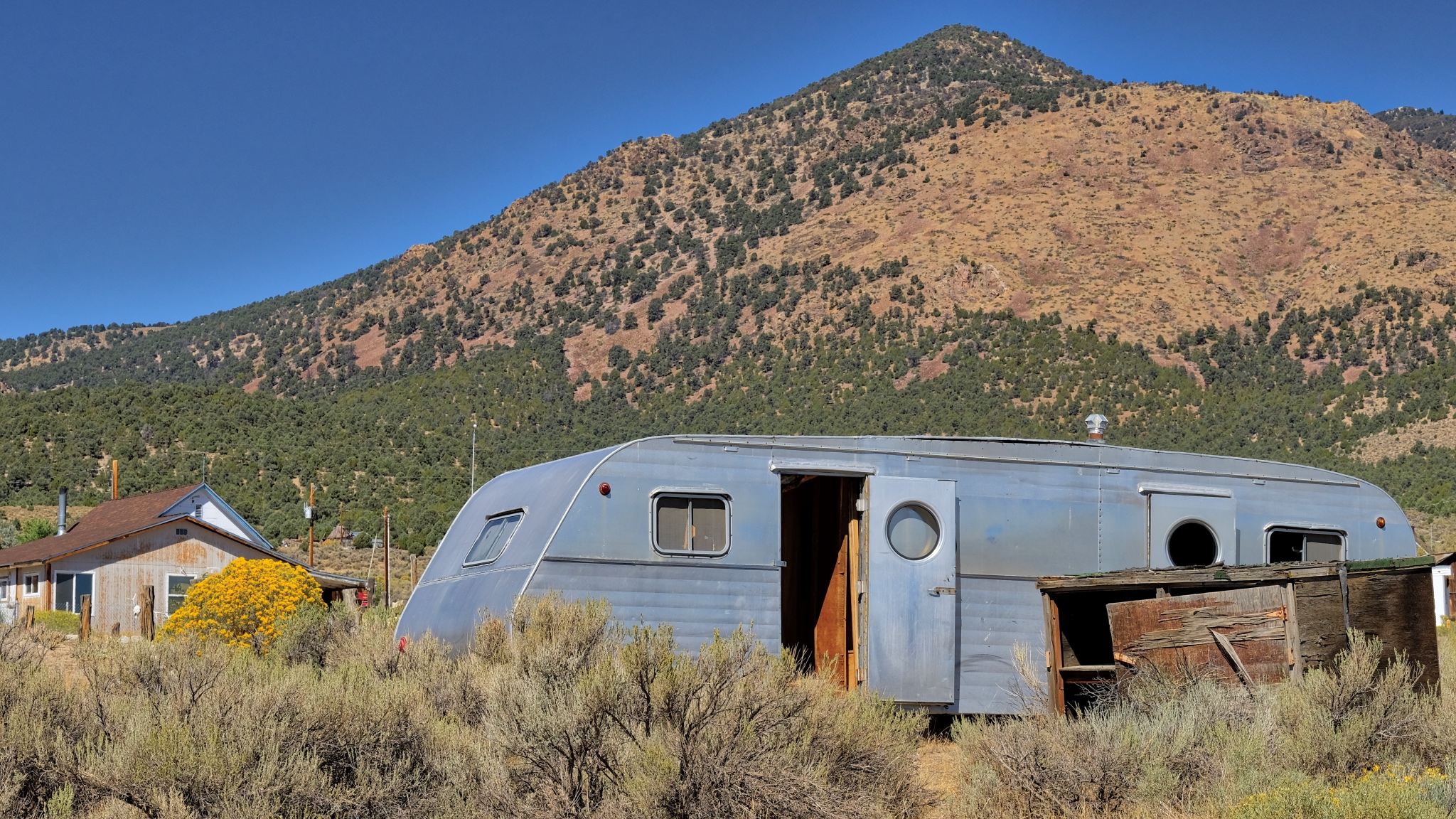 The 'townsite' was literally littered with old antique trailers . . .
The 'townsite' was literally littered with old antique trailers . . .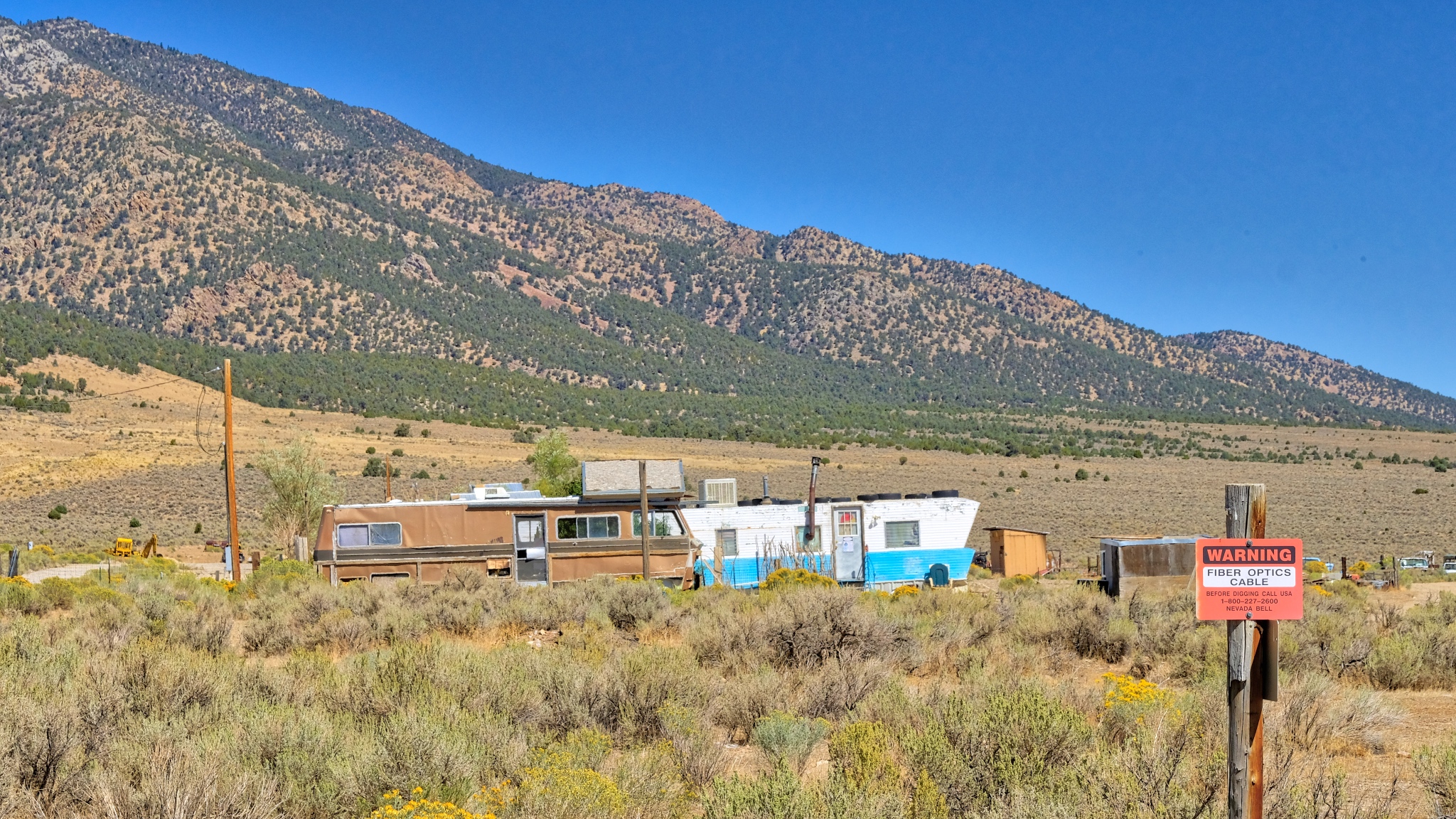 . . . and old motor homes. These residents may live out "in the middle of nowhere" . . . but they are by no means remote: there is fiber optic cable!!!
. . . and old motor homes. These residents may live out "in the middle of nowhere" . . . but they are by no means remote: there is fiber optic cable!!!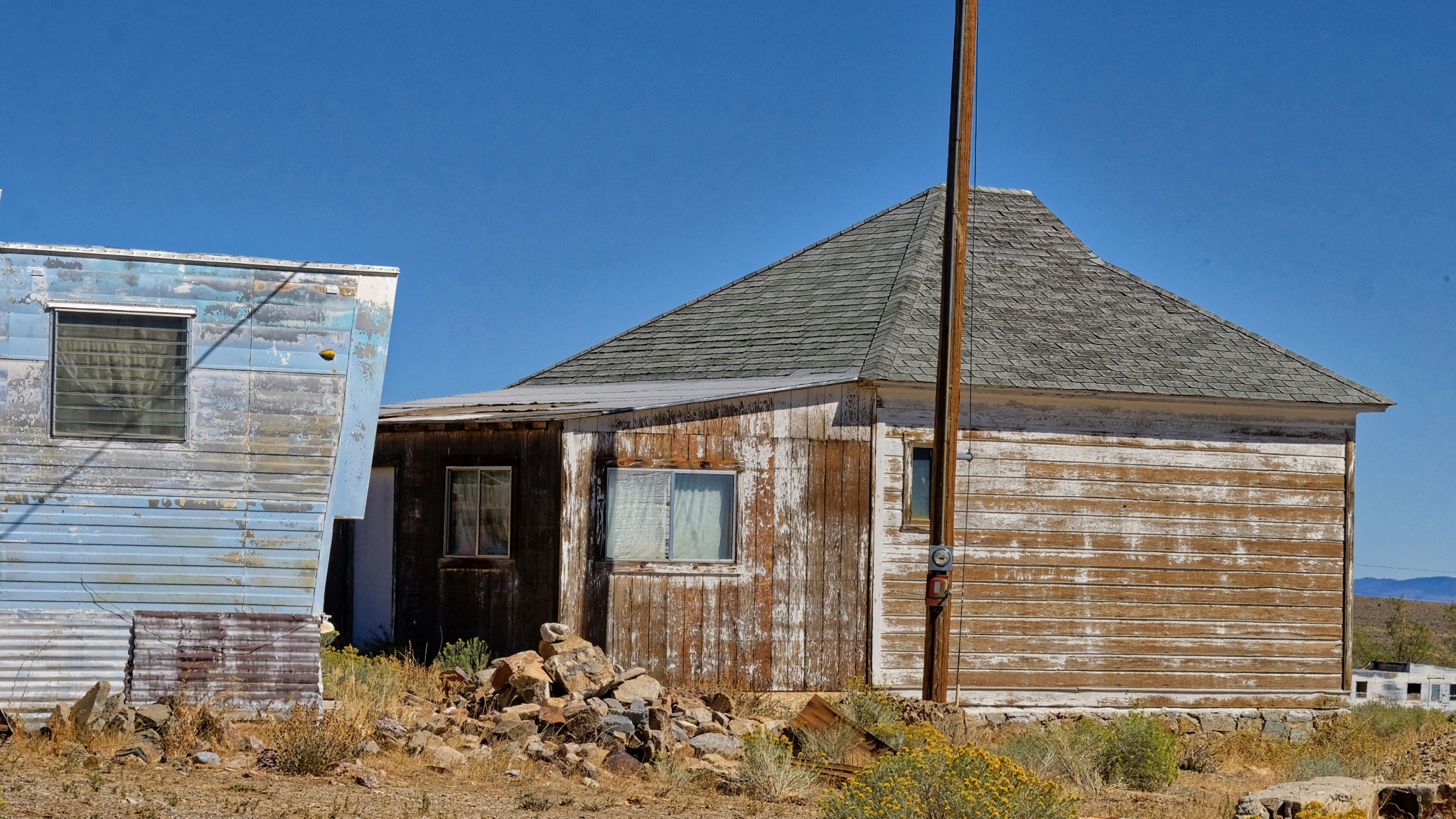 A very cool juxtaposition of old and new . . . .
A very cool juxtaposition of old and new . . . .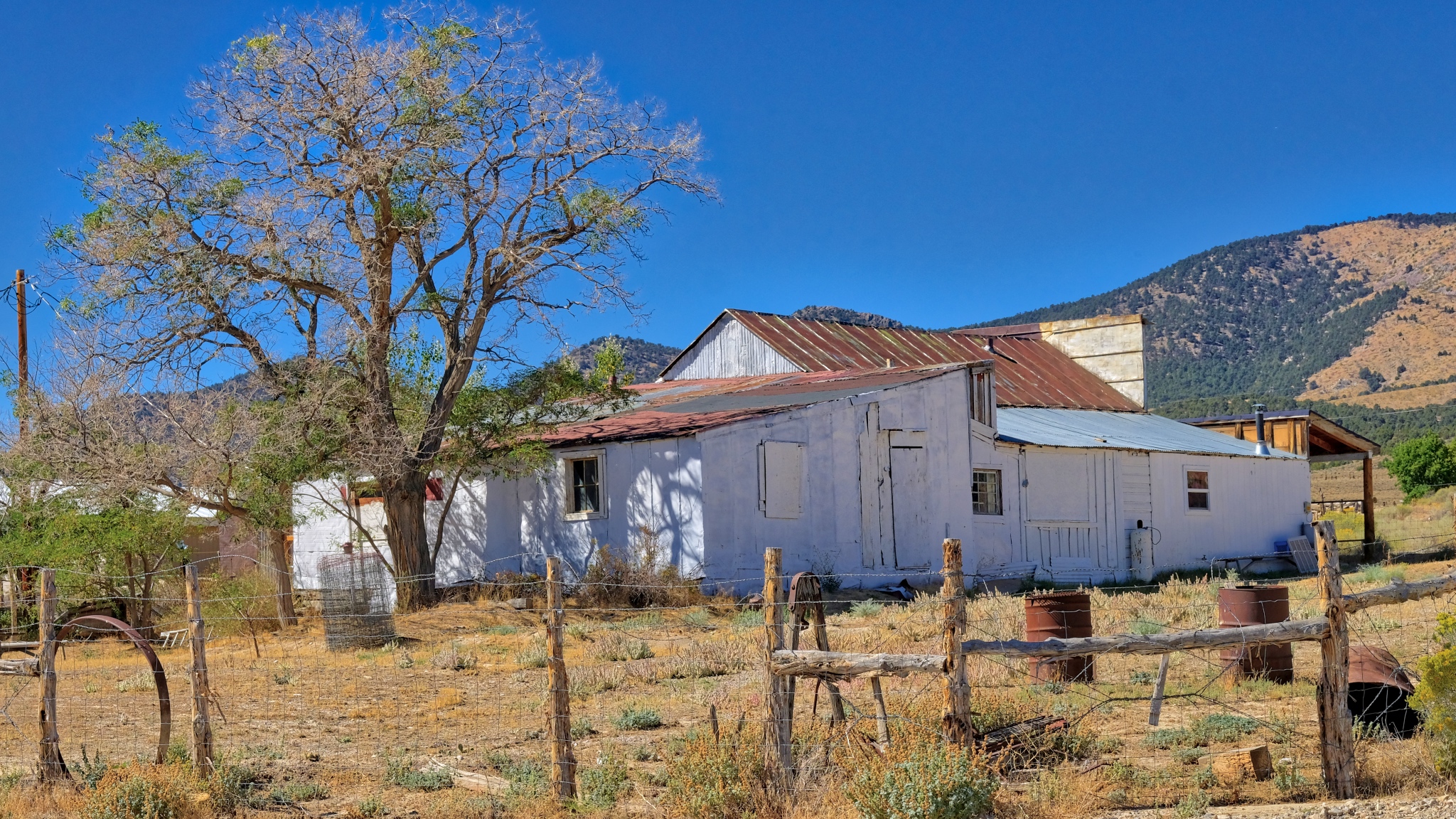 At some point in the recent past there was commerce here . . . this old store was for sale.
At some point in the recent past there was commerce here . . . this old store was for sale.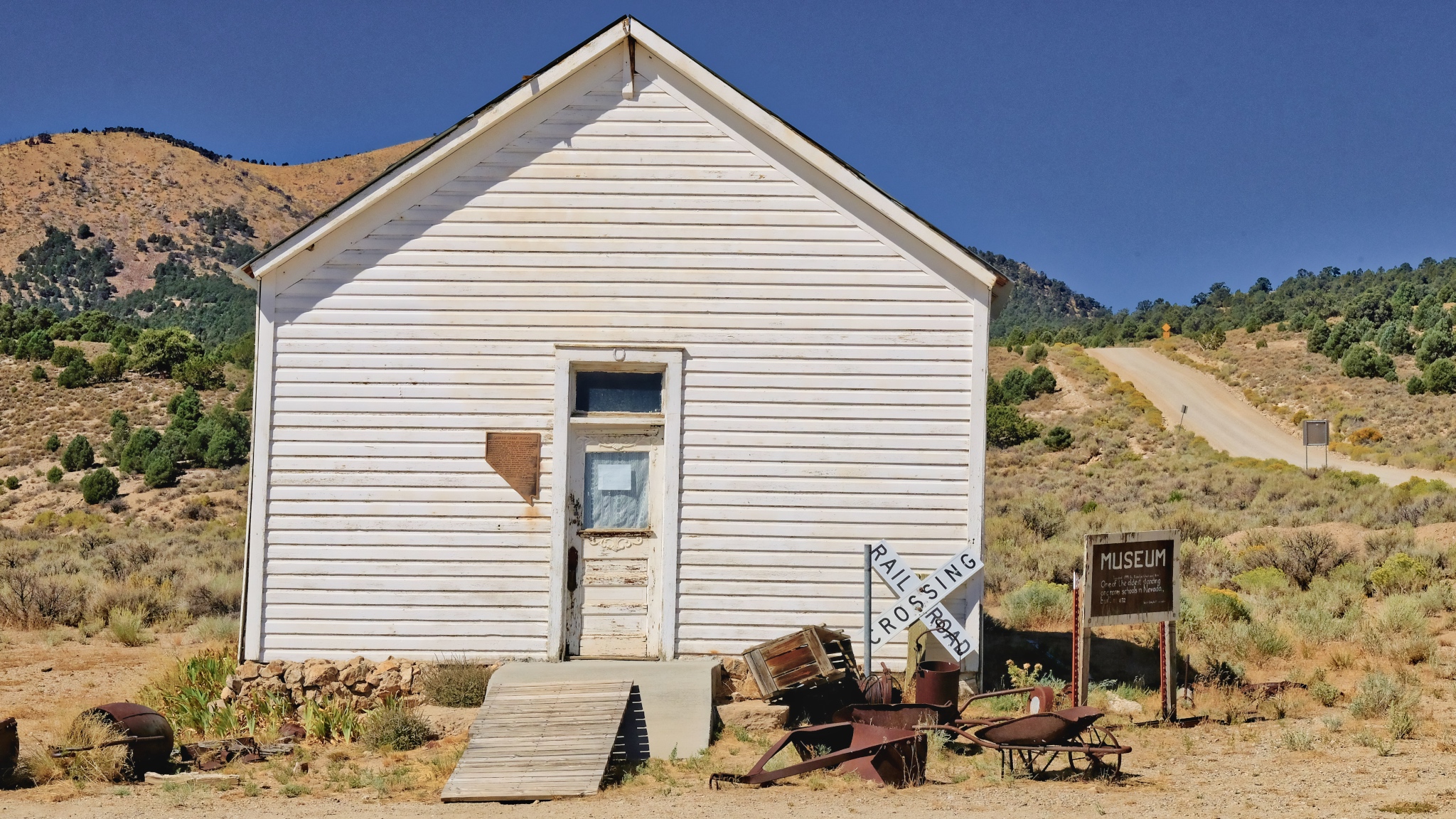 The Cherry Creek Museum was the old school house. It was closed, but a map on the door told you which trailer door to knock on to get a tour.
The Cherry Creek Museum was the old school house. It was closed, but a map on the door told you which trailer door to knock on to get a tour.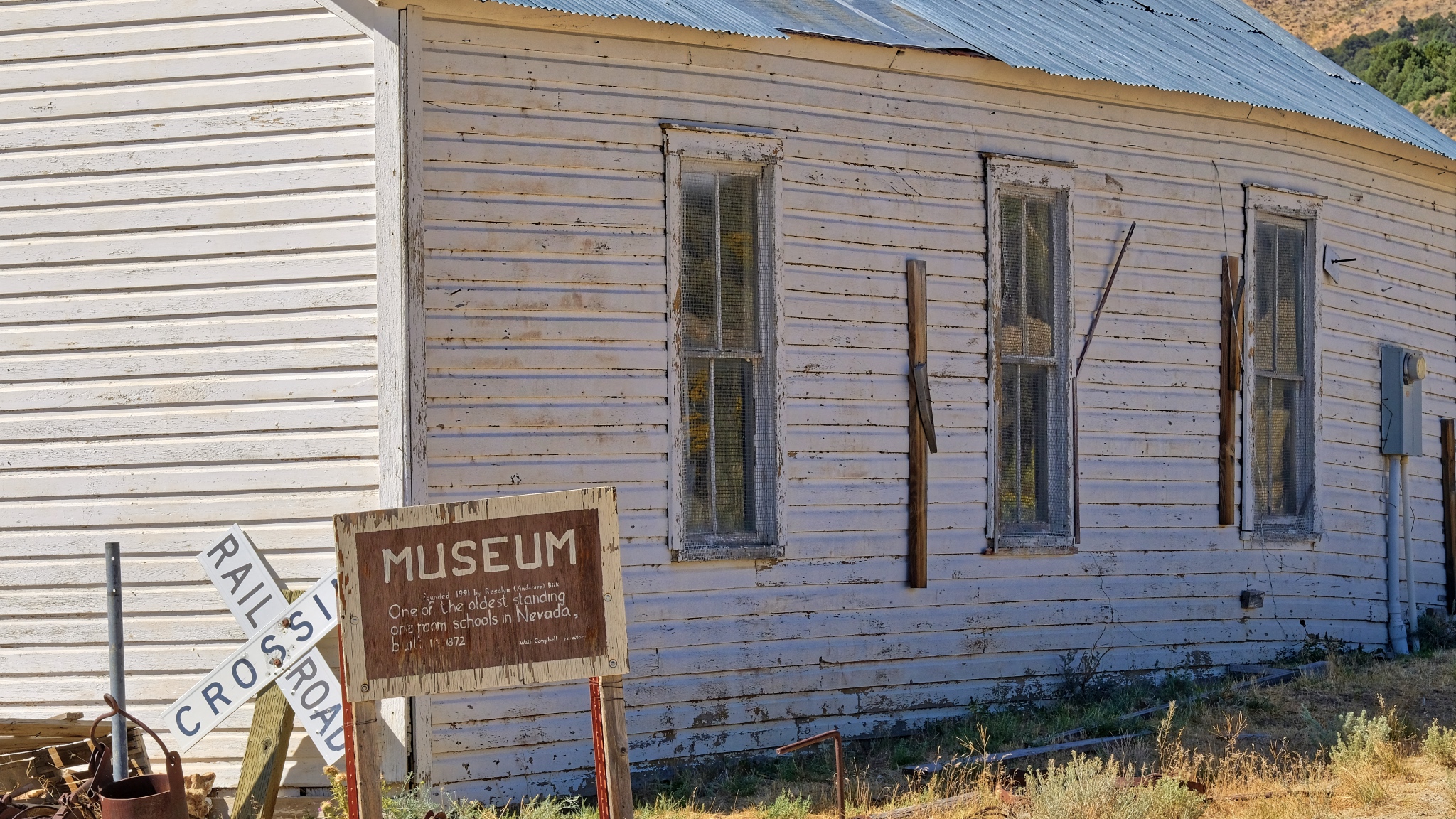 "One of the oldest standing one room schools in Nevada. Built in 1872."
"One of the oldest standing one room schools in Nevada. Built in 1872."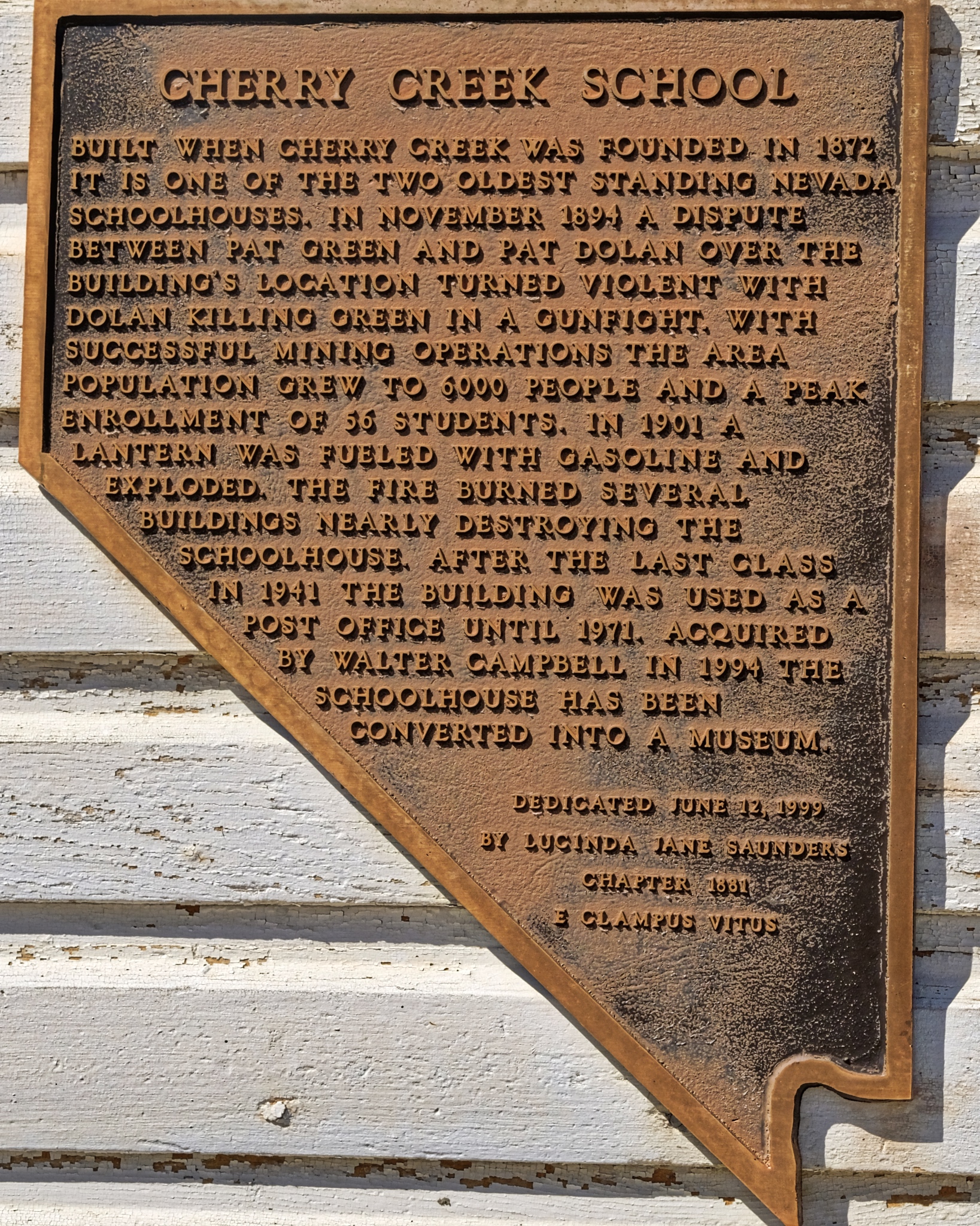 There was this wonderful commemorative plaque attached to the old school.
There was this wonderful commemorative plaque attached to the old school.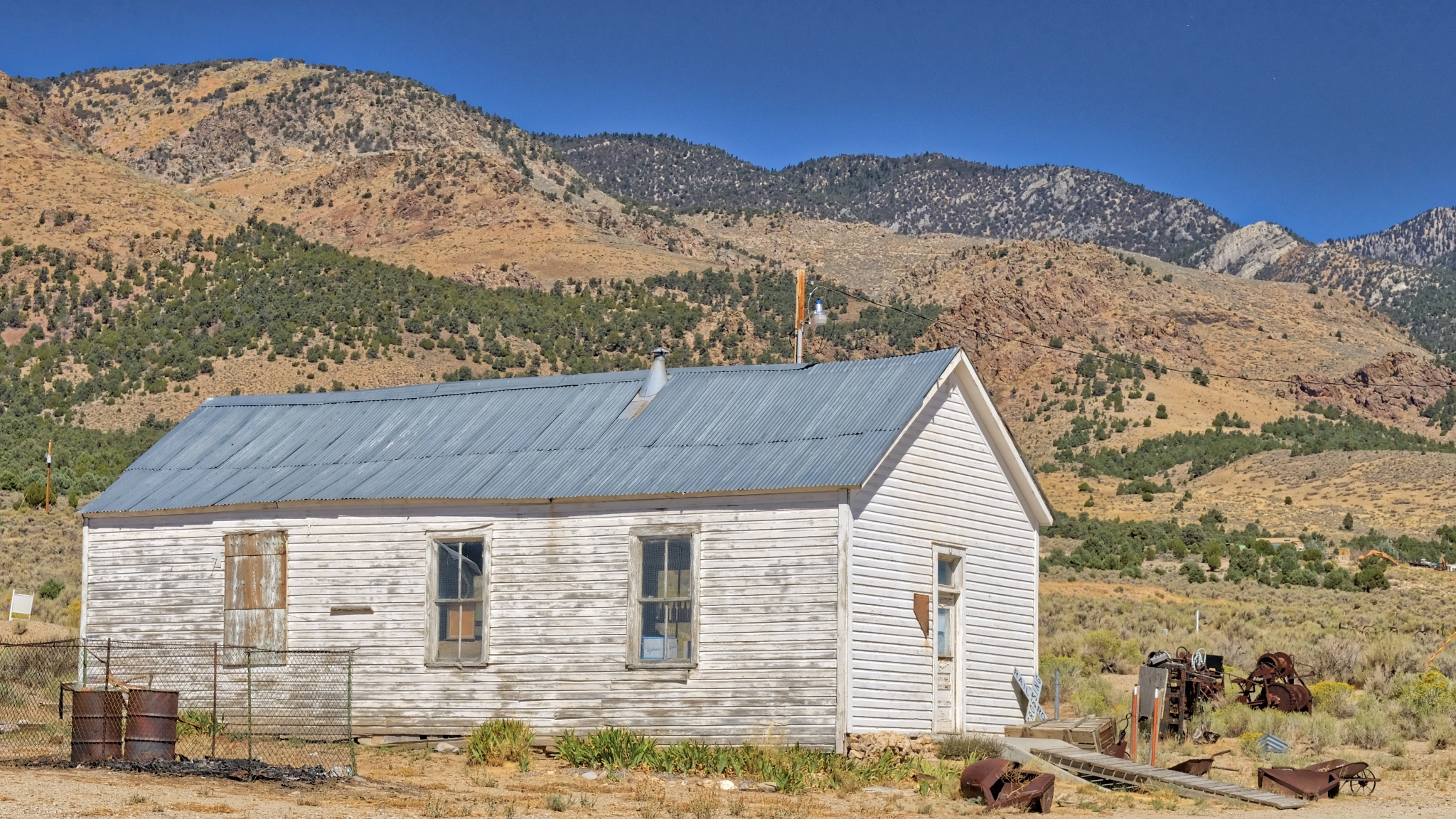 Oh the memories these children made! At it's peak there were 66 students. Where are all those 'children' now?
Oh the memories these children made! At it's peak there were 66 students. Where are all those 'children' now?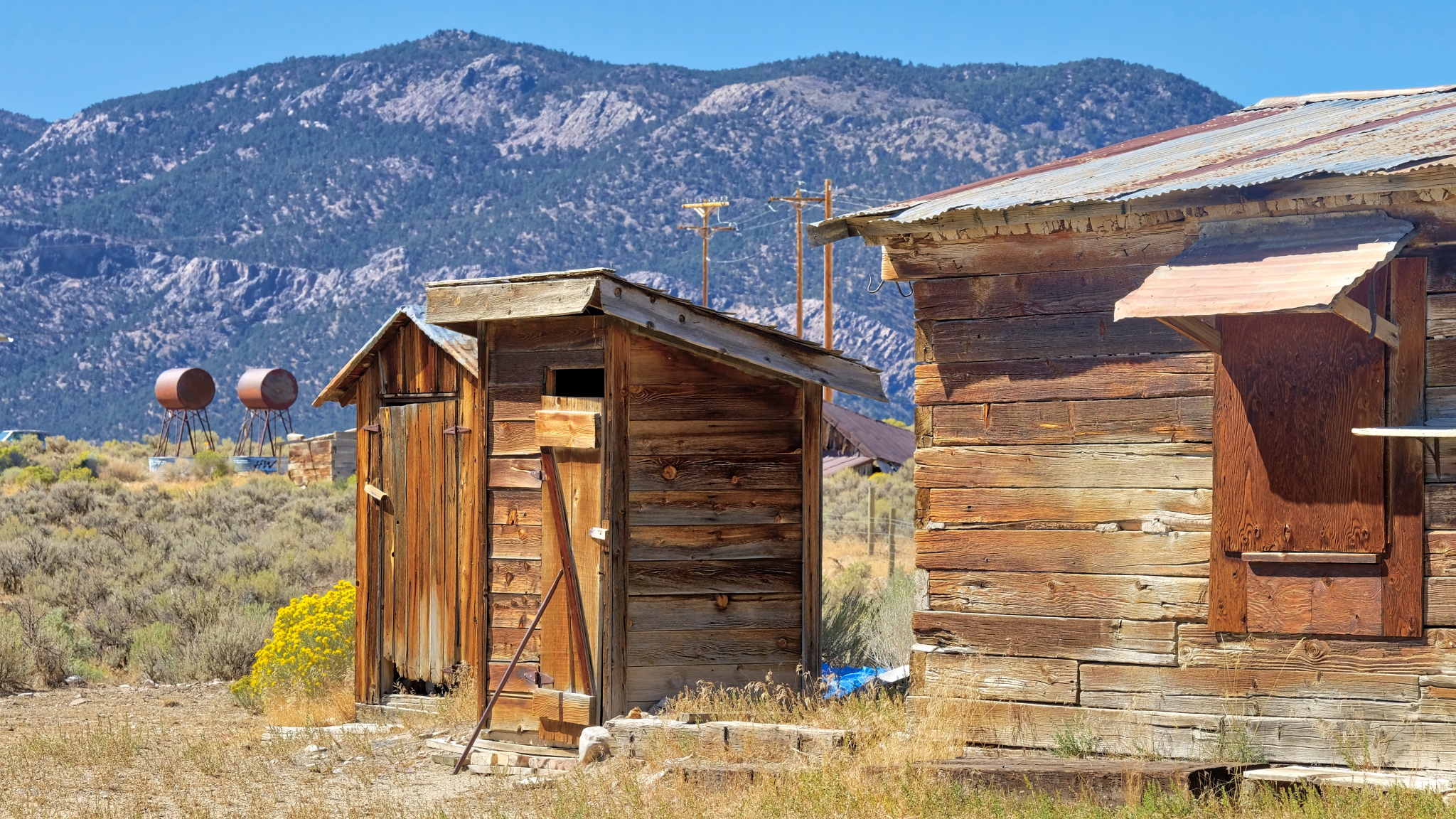 Outhouses.
Outhouses.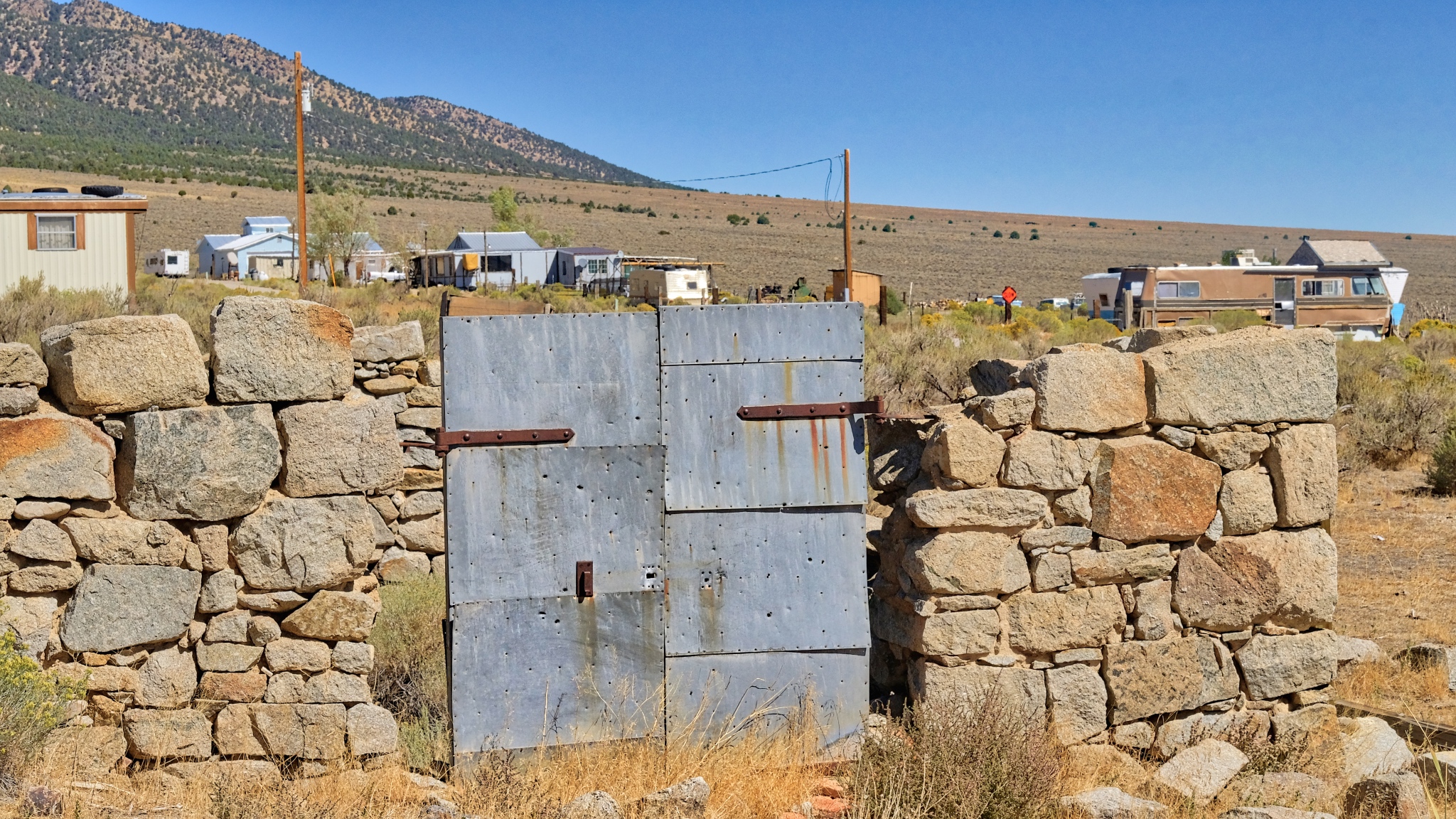 A strong wall and a steel gate to protect what is not there from what is no longer there . . . .
A strong wall and a steel gate to protect what is not there from what is no longer there . . . .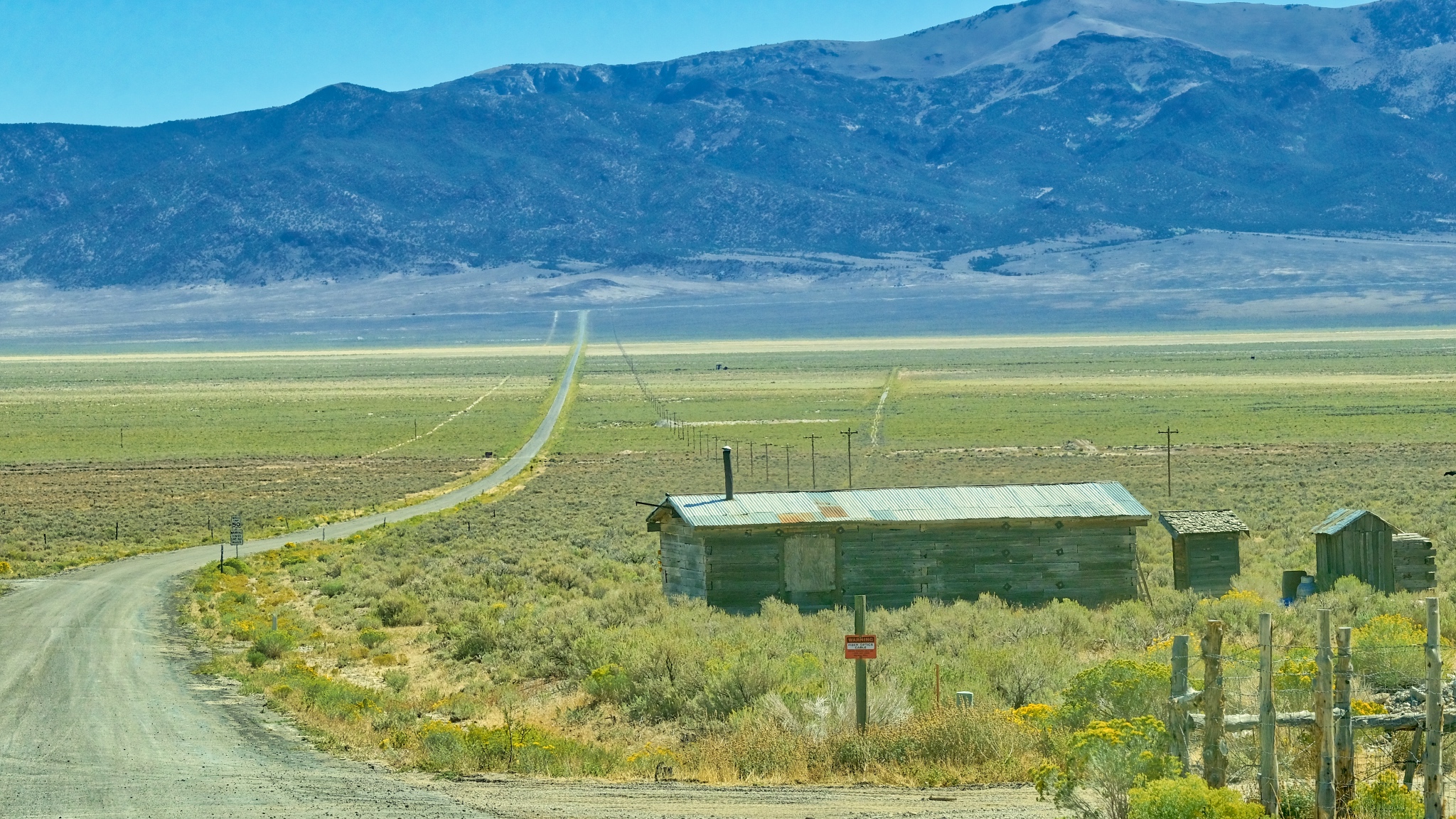 And so I left Cherry Creek, Nevada and headed up the 8 miles of road back to US 93.
And so I left Cherry Creek, Nevada and headed up the 8 miles of road back to US 93.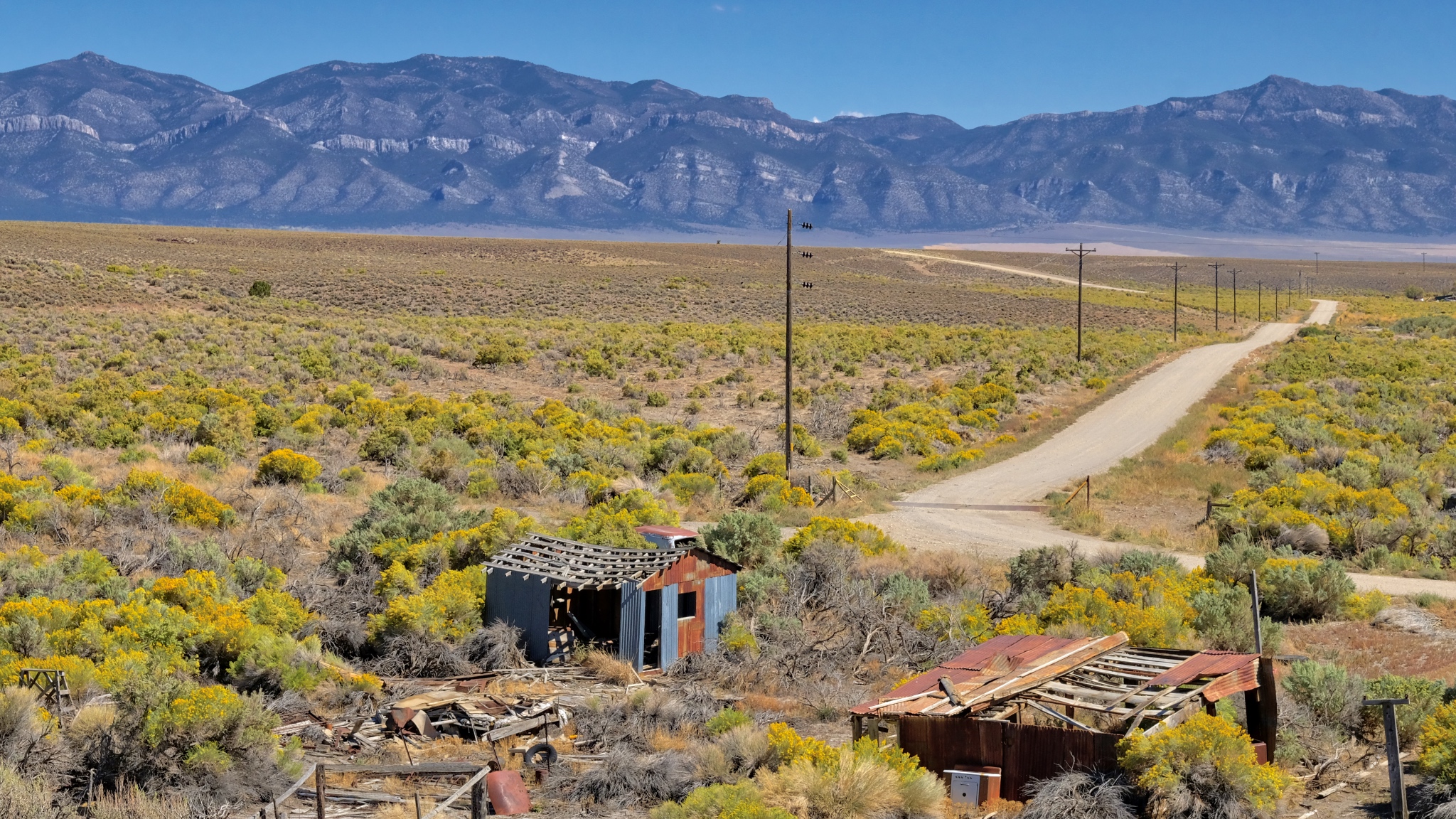 Further up the highway . . . more wonder: corrugation and dilapidation.
Further up the highway . . . more wonder: corrugation and dilapidation.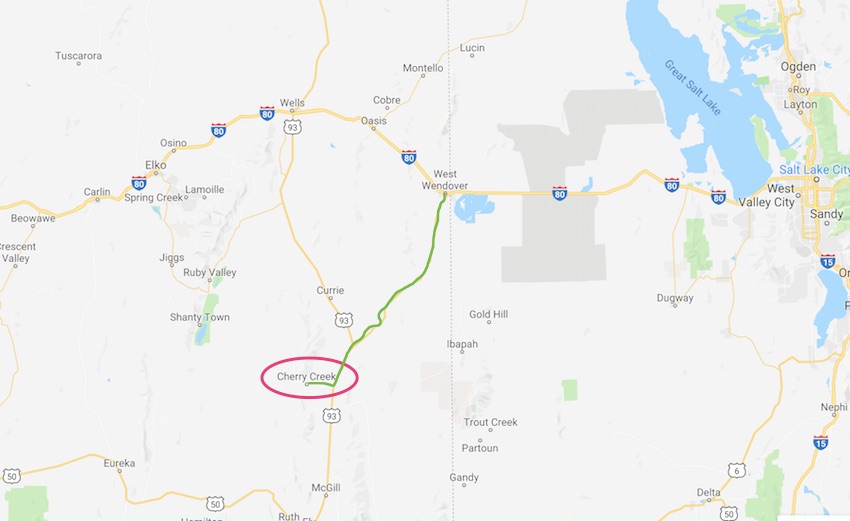 Cherry Creek is in the northeast corner of Nevada.
Cherry Creek is in the northeast corner of Nevada. Dr. Jeff Harper
Dr. Jeff Harper
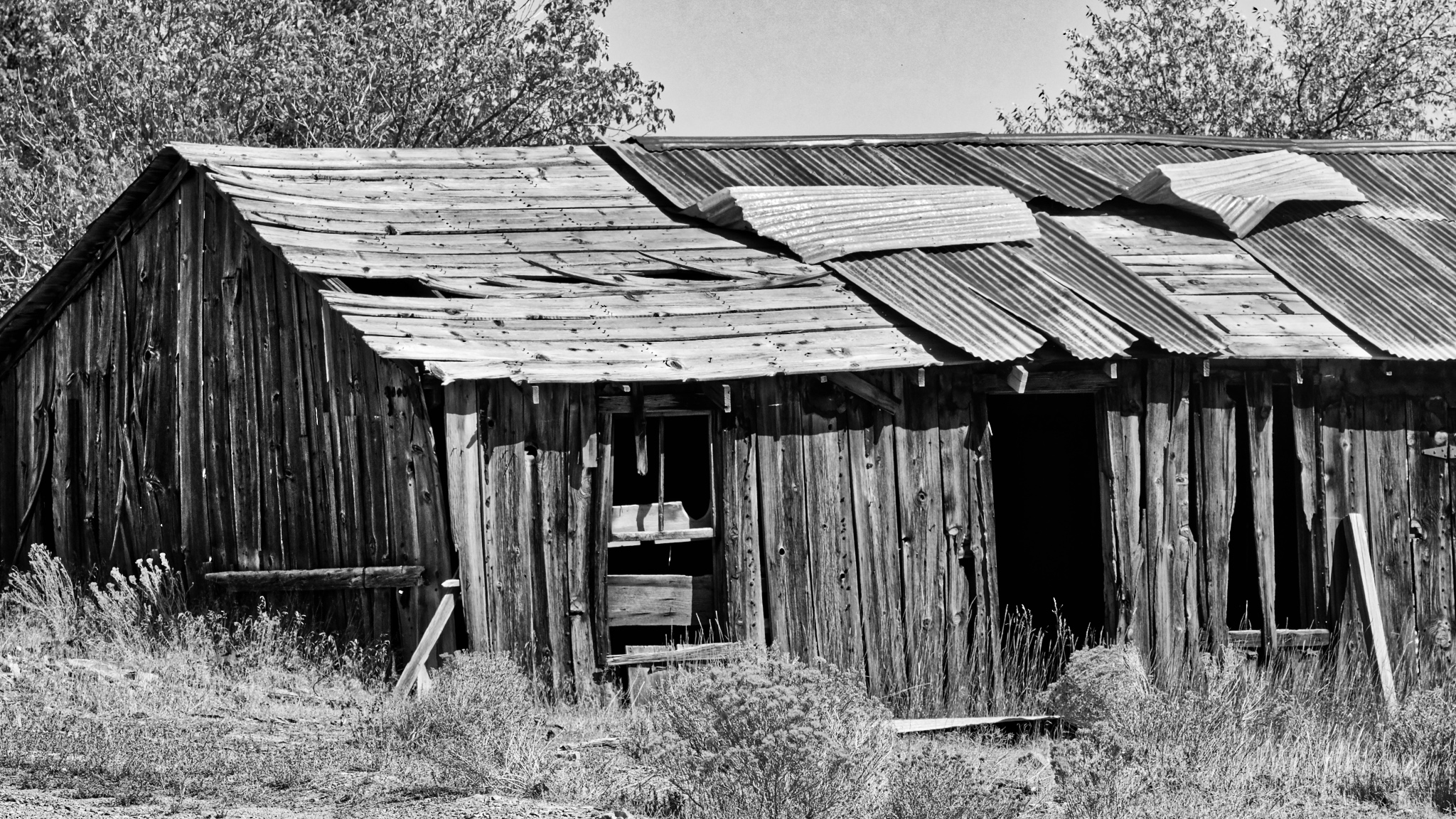 Some of the photos seem to lend themselves to black & white . . . and perhaps printning.
Some of the photos seem to lend themselves to black & white . . . and perhaps printning.Gibraltar: Day and Night
 Tuesday, April 17, 2018 at 3:27AM
Tuesday, April 17, 2018 at 3:27AM  In February 2017 we made the short flight to the British enclave of Gibraltar. It is worth a three night stay . . . but perhaps not any longer . . .
In February 2017 we made the short flight to the British enclave of Gibraltar. It is worth a three night stay . . . but perhaps not any longer . . .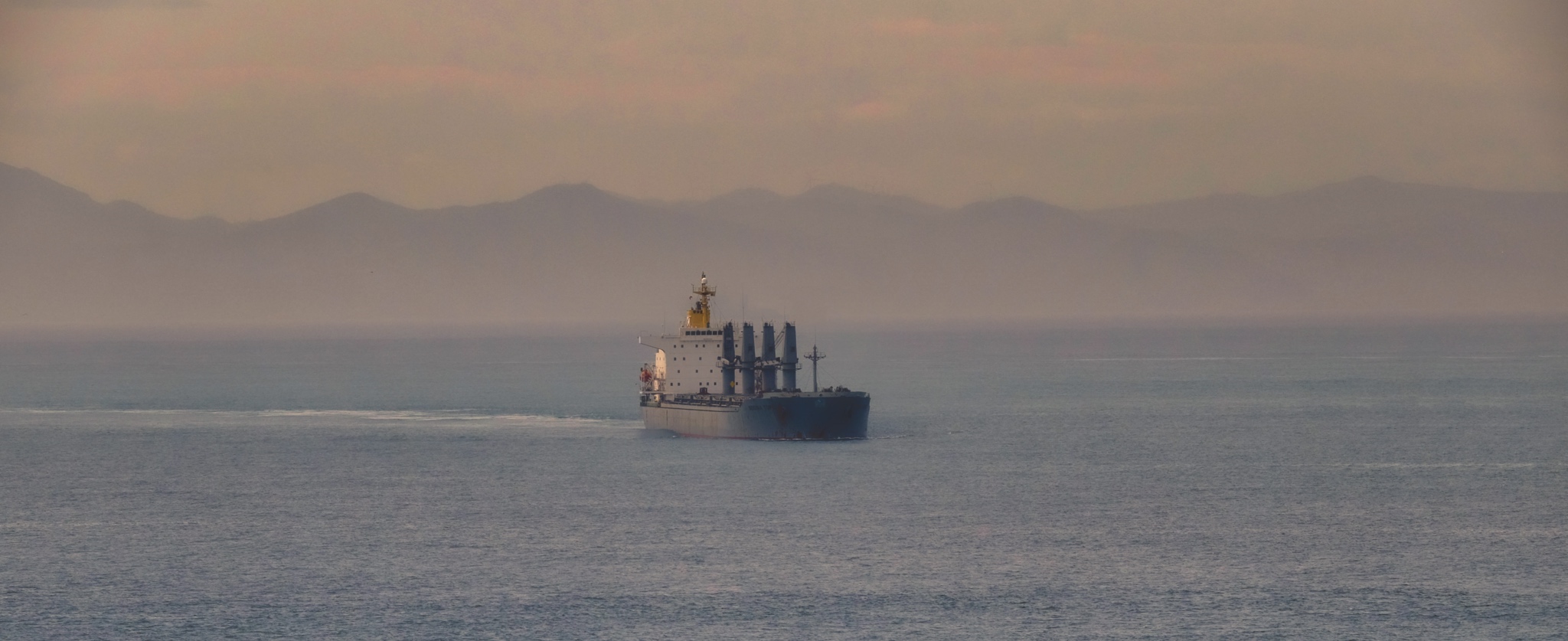 Gibraltar sits near the southern tip of Spain at the northern side of the Straight of Gibraltar. All ships that pass from the Mediterranean Sea to the Atlantic Ocean must pass through here. The North African coast can be seen across the Straight of Gibraltar.
Gibraltar sits near the southern tip of Spain at the northern side of the Straight of Gibraltar. All ships that pass from the Mediterranean Sea to the Atlantic Ocean must pass through here. The North African coast can be seen across the Straight of Gibraltar.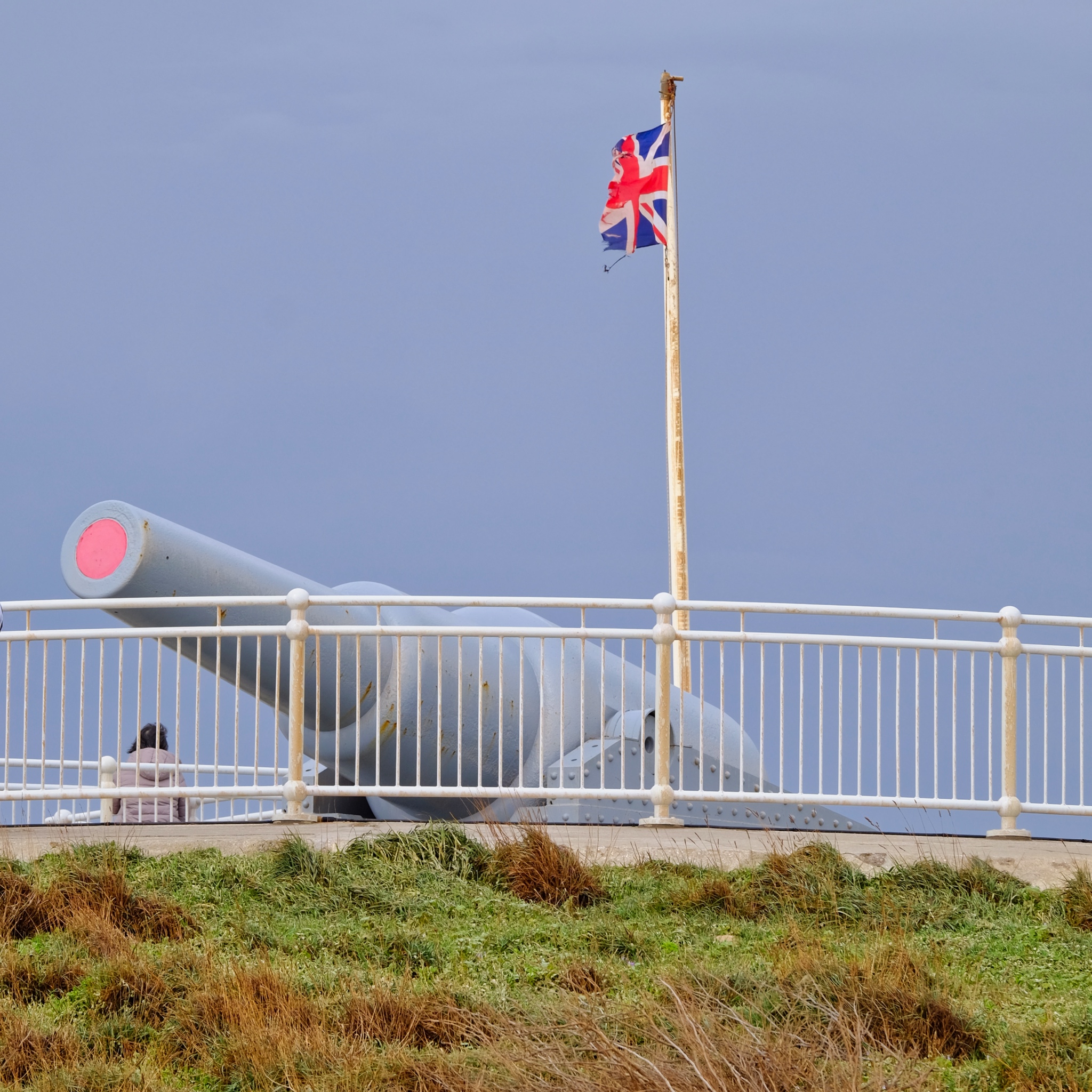 Gibraltar is a British territory . . . The residents recently voted 96% in favor of staying within the UK and not joining Spain . . . of course, they also voted 96% to stay within the EU during the Brexit vote!
Gibraltar is a British territory . . . The residents recently voted 96% in favor of staying within the UK and not joining Spain . . . of course, they also voted 96% to stay within the EU during the Brexit vote!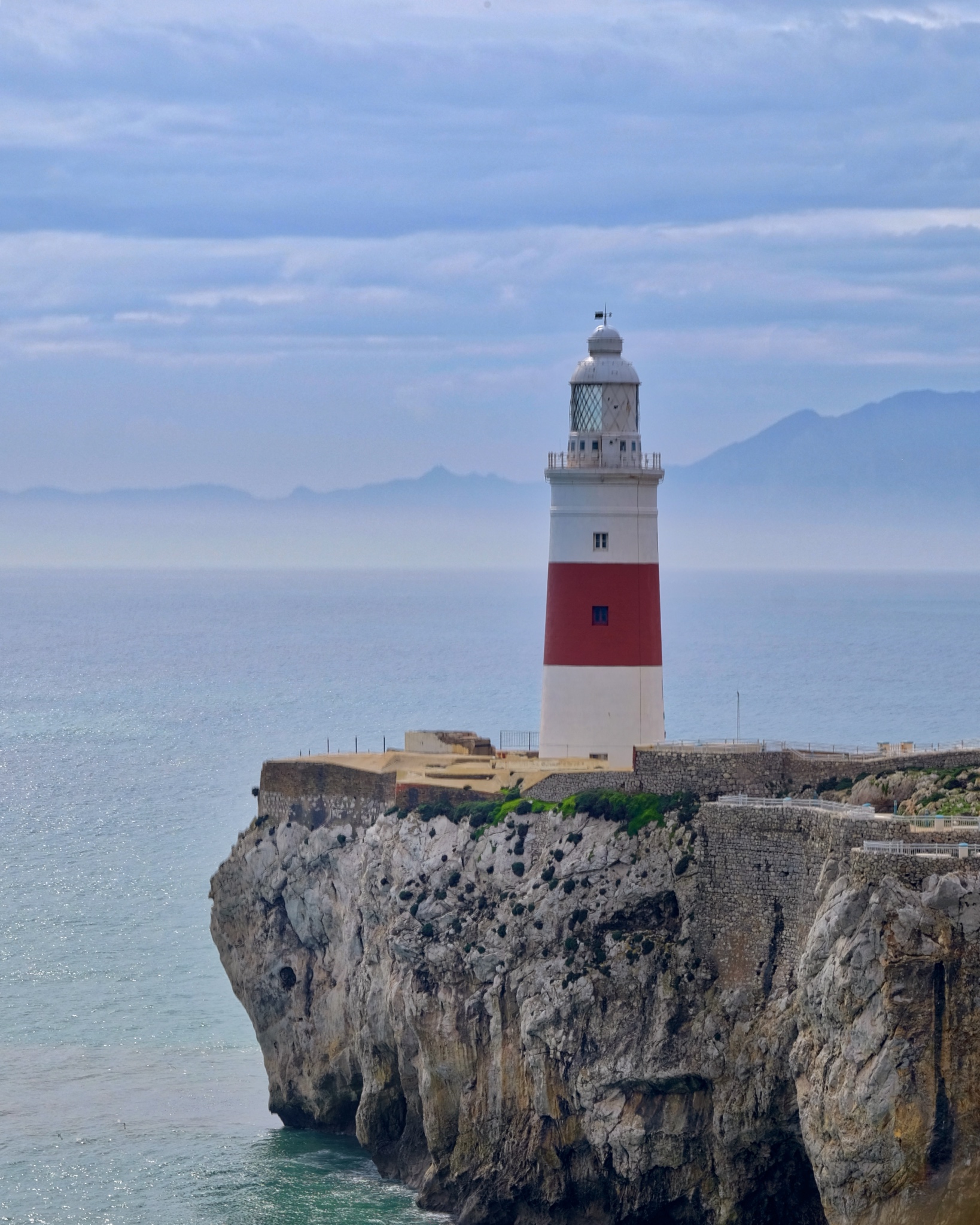 The lighthouse at the tip Gibraltar . . . this straight is also known as the Pillars of Hercules by the Greeks.
The lighthouse at the tip Gibraltar . . . this straight is also known as the Pillars of Hercules by the Greeks.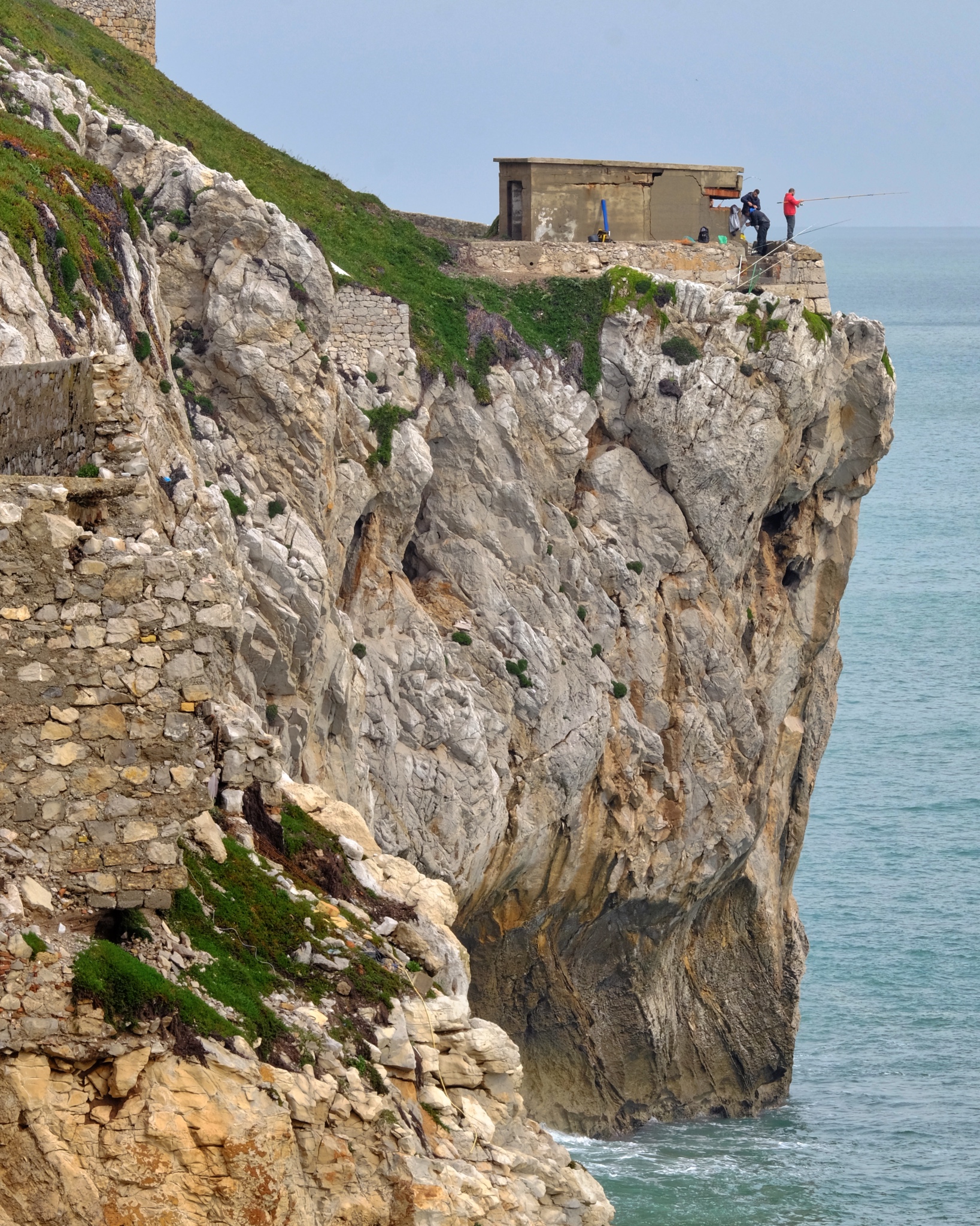 The 'rock' of Gibraltar falls directly into the Mediterranean Sea on the eastern side. Fishermen find good use of an old war pill box.
The 'rock' of Gibraltar falls directly into the Mediterranean Sea on the eastern side. Fishermen find good use of an old war pill box.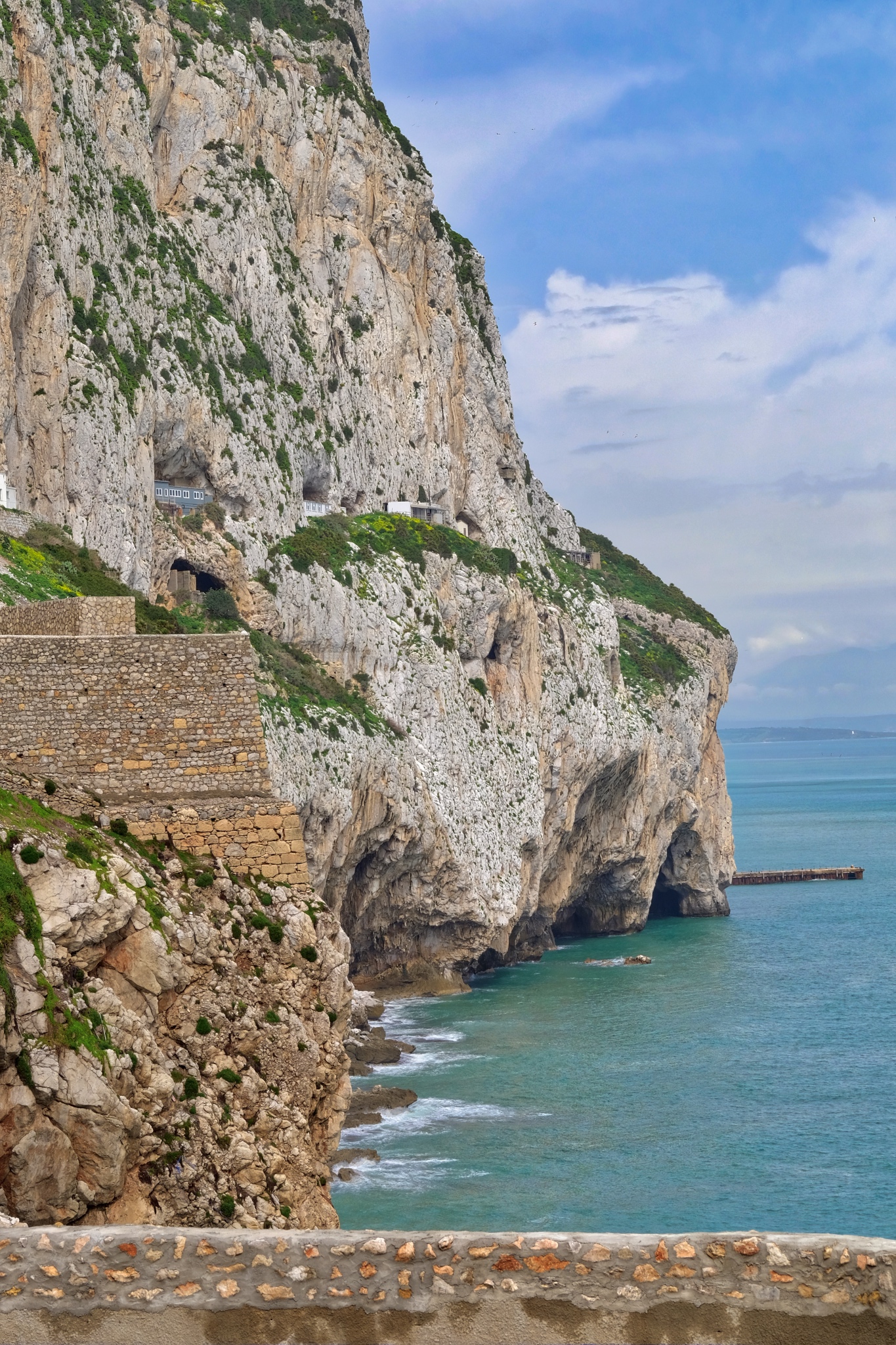 The cliffs of Gibraltar are compelling: their sheer size . . . and the remnants of structures left behind by the many former occupants over the millennia, draws the eye.
The cliffs of Gibraltar are compelling: their sheer size . . . and the remnants of structures left behind by the many former occupants over the millennia, draws the eye.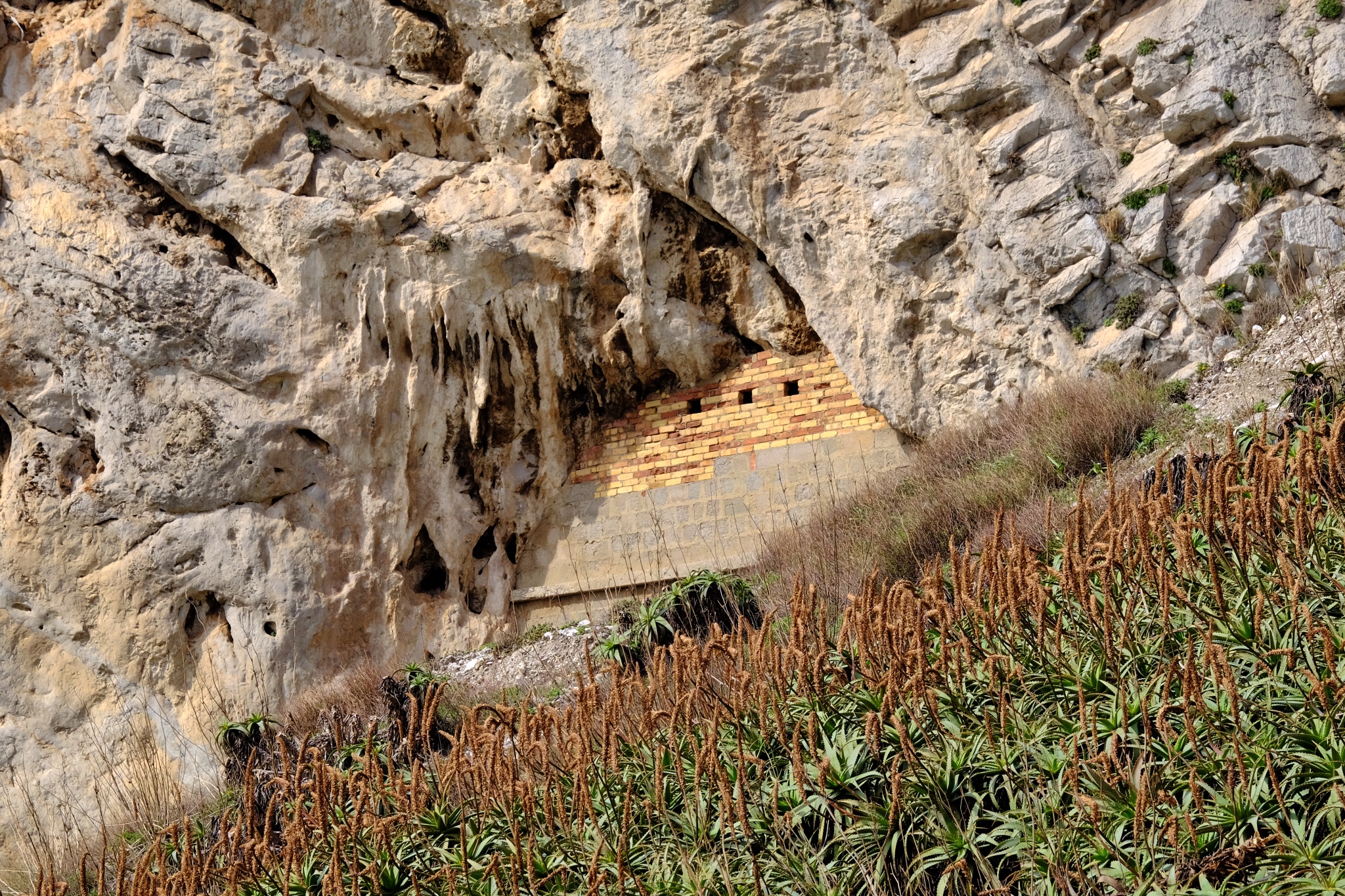 The whole of the rock is riddled with passages and tunnels used as fortified defensive emplacements.
The whole of the rock is riddled with passages and tunnels used as fortified defensive emplacements.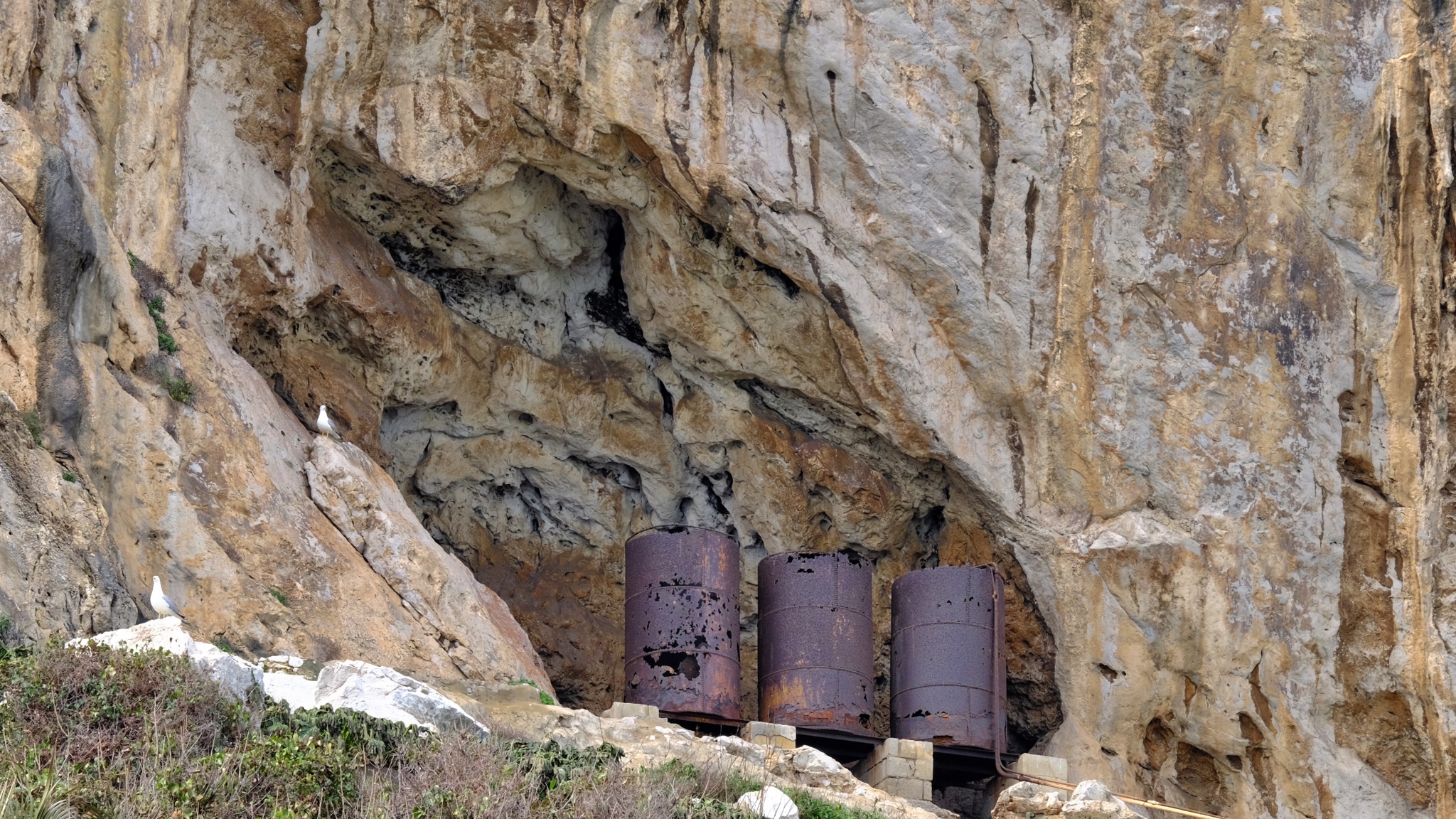 Some very old infrastructure left behind by a long forgotten project.
Some very old infrastructure left behind by a long forgotten project.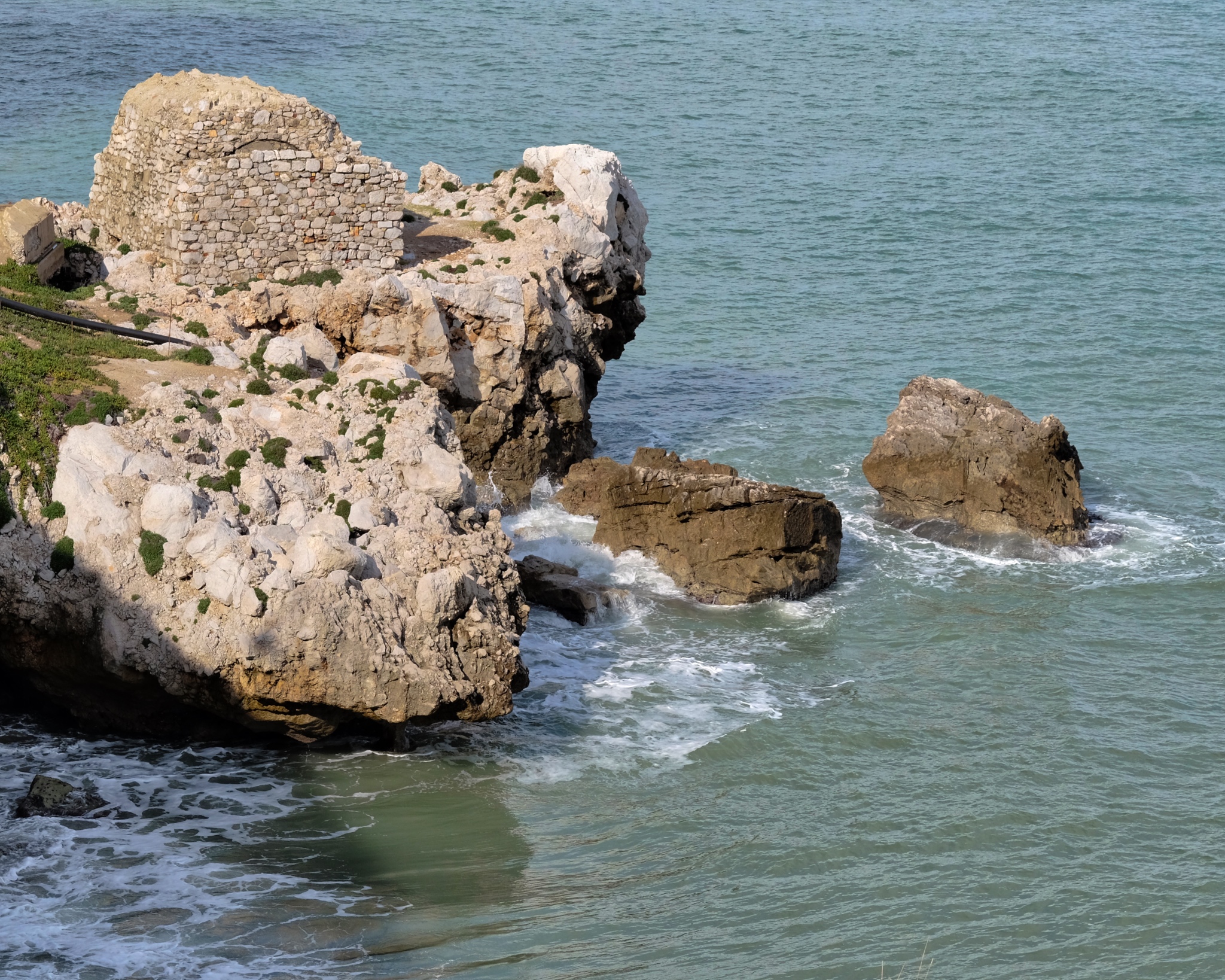 Everywhere a remnant of some previous occupier . . . Moorish?
Everywhere a remnant of some previous occupier . . . Moorish?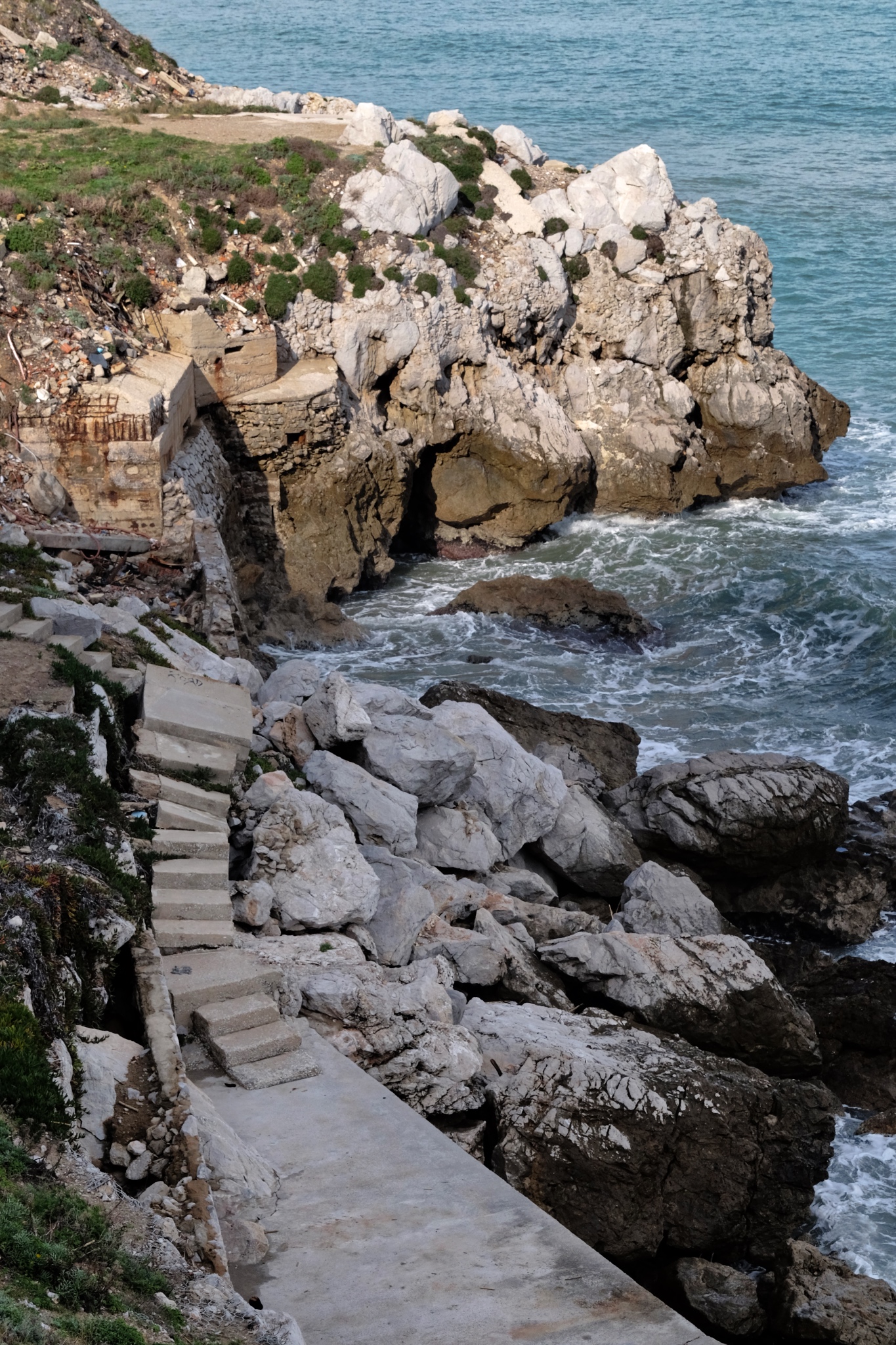 Many different building traces from many different eras all overlapping . . . . Gibraltar was occupied, at various times from 950BC, by the Phoneticians, Greeks, Carthaginians, Romans, Vandals, Goths, Visigoths, Moors, Nasrids, Medinas, Dutch, Spanish, and ultimately, the British.
Many different building traces from many different eras all overlapping . . . . Gibraltar was occupied, at various times from 950BC, by the Phoneticians, Greeks, Carthaginians, Romans, Vandals, Goths, Visigoths, Moors, Nasrids, Medinas, Dutch, Spanish, and ultimately, the British.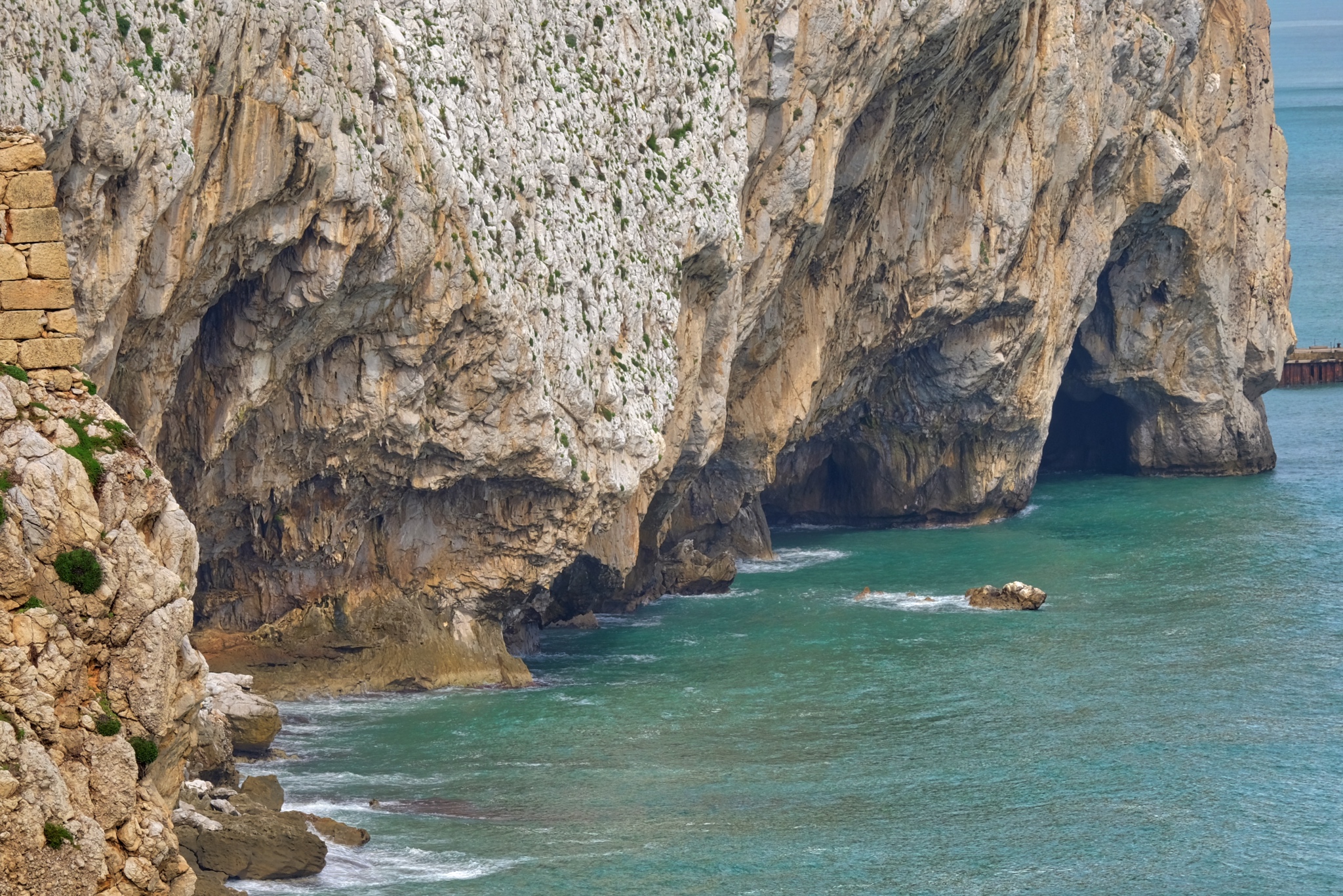 Near here, in Gorham's Cave, Neanderthal remains were found dating to 55,000 years ago.
Near here, in Gorham's Cave, Neanderthal remains were found dating to 55,000 years ago.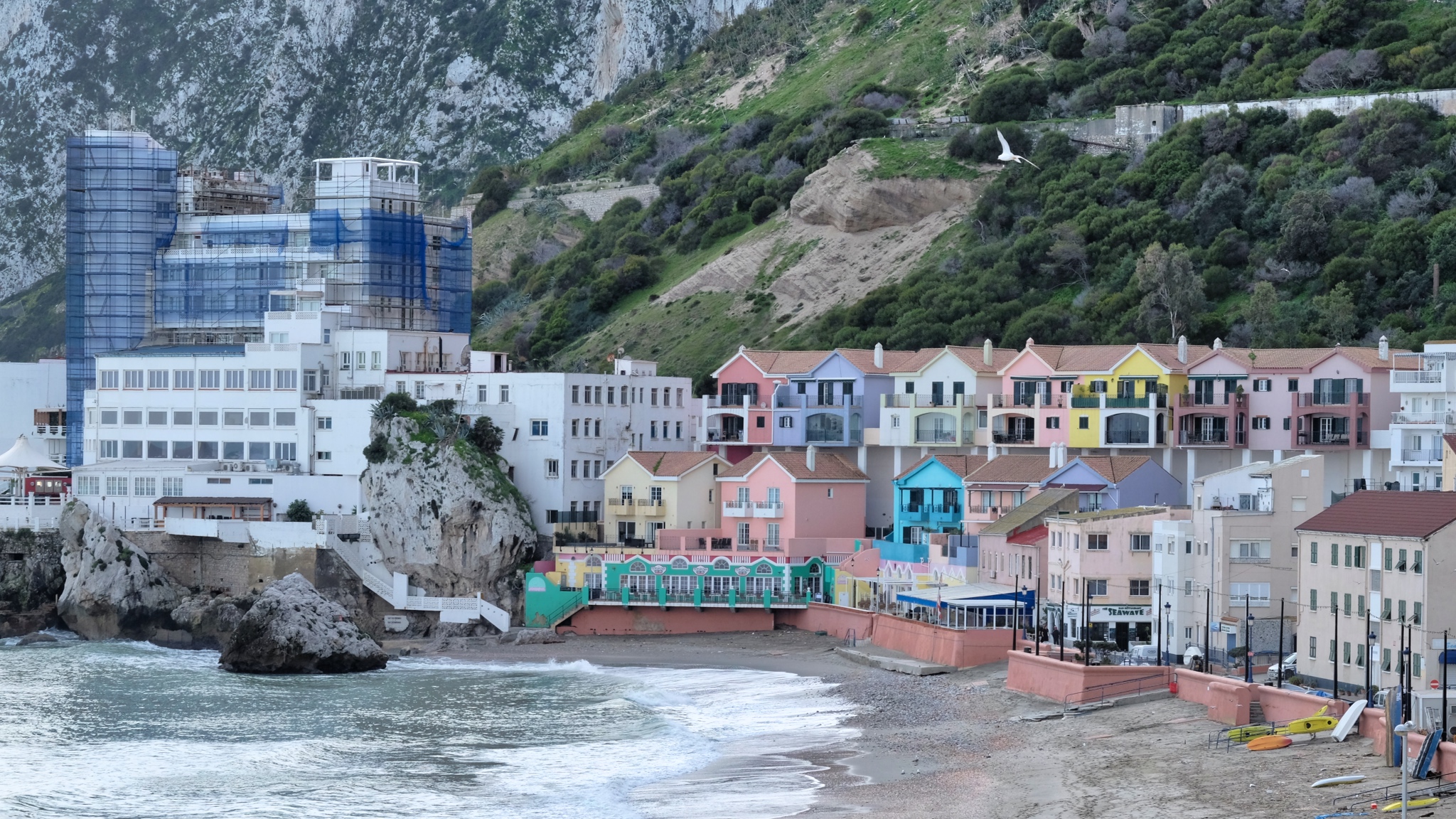 Today, Gibraltar is a Mecca for Mediterranean cruise ships and British retirees (pensioners).
Today, Gibraltar is a Mecca for Mediterranean cruise ships and British retirees (pensioners).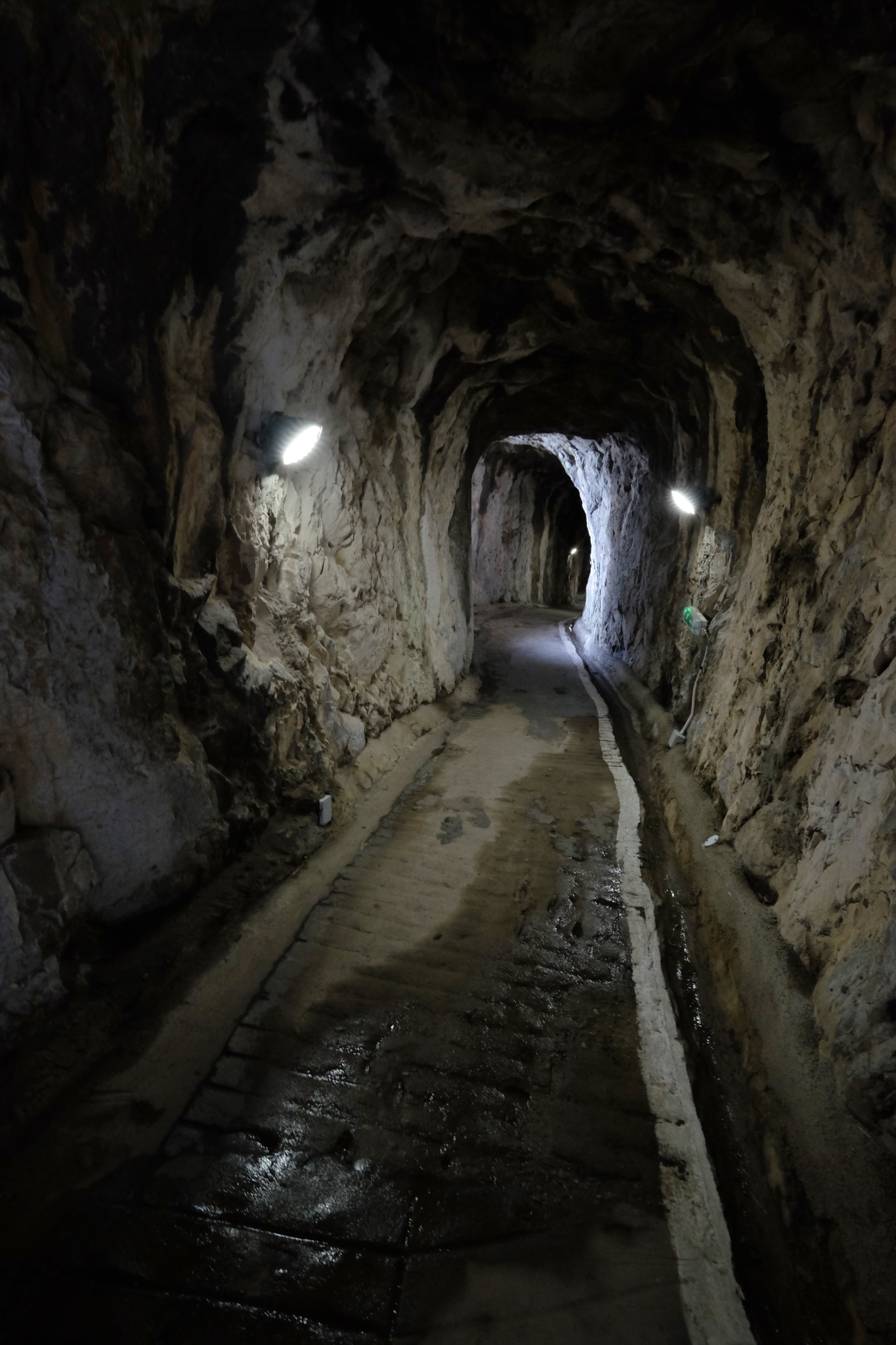 The Rock of Gibraltar is as riddled with caves and tunnels as a block of Swiss cheese. The massive rock was the ideal place to build hardened shelters during times of war, particularly during WWI and WWII. These tunnels date to even before those times when the British and the Spanish were at constant conflict.
The Rock of Gibraltar is as riddled with caves and tunnels as a block of Swiss cheese. The massive rock was the ideal place to build hardened shelters during times of war, particularly during WWI and WWII. These tunnels date to even before those times when the British and the Spanish were at constant conflict.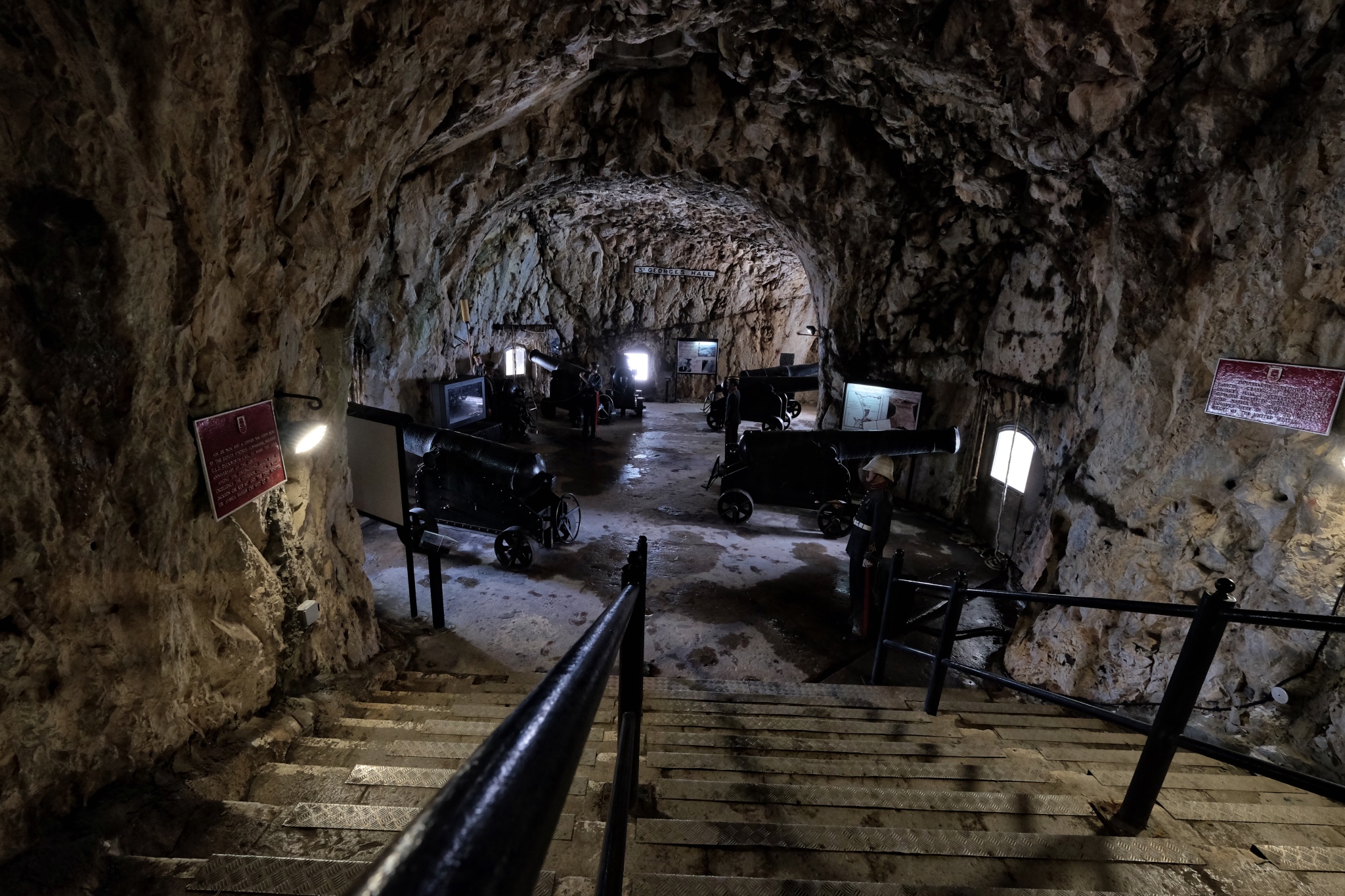 The St. George Tunnel is still equipped with the original cannon from the era.
The St. George Tunnel is still equipped with the original cannon from the era.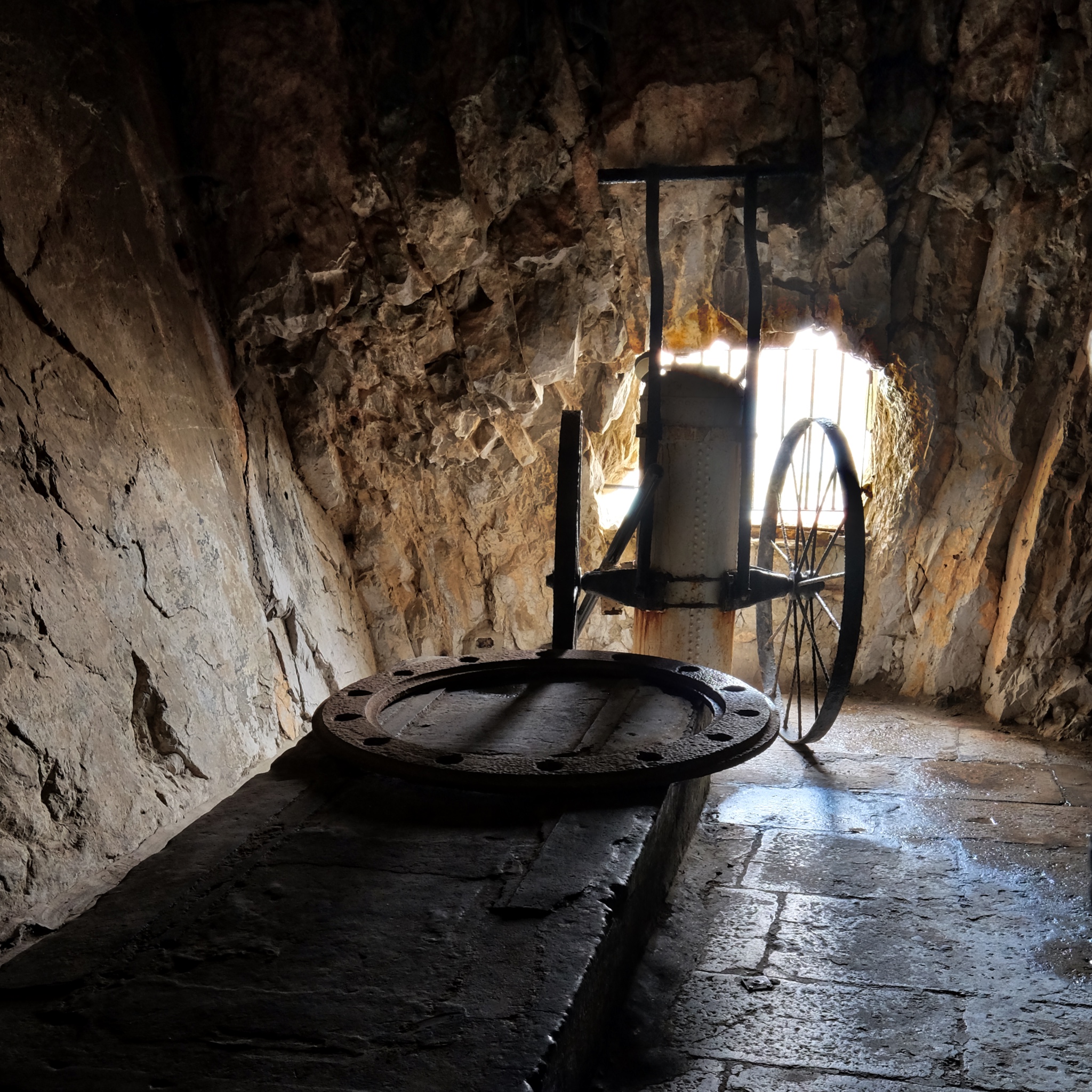 Although the cannon is missing, the turret and fire safety cart remains.
Although the cannon is missing, the turret and fire safety cart remains.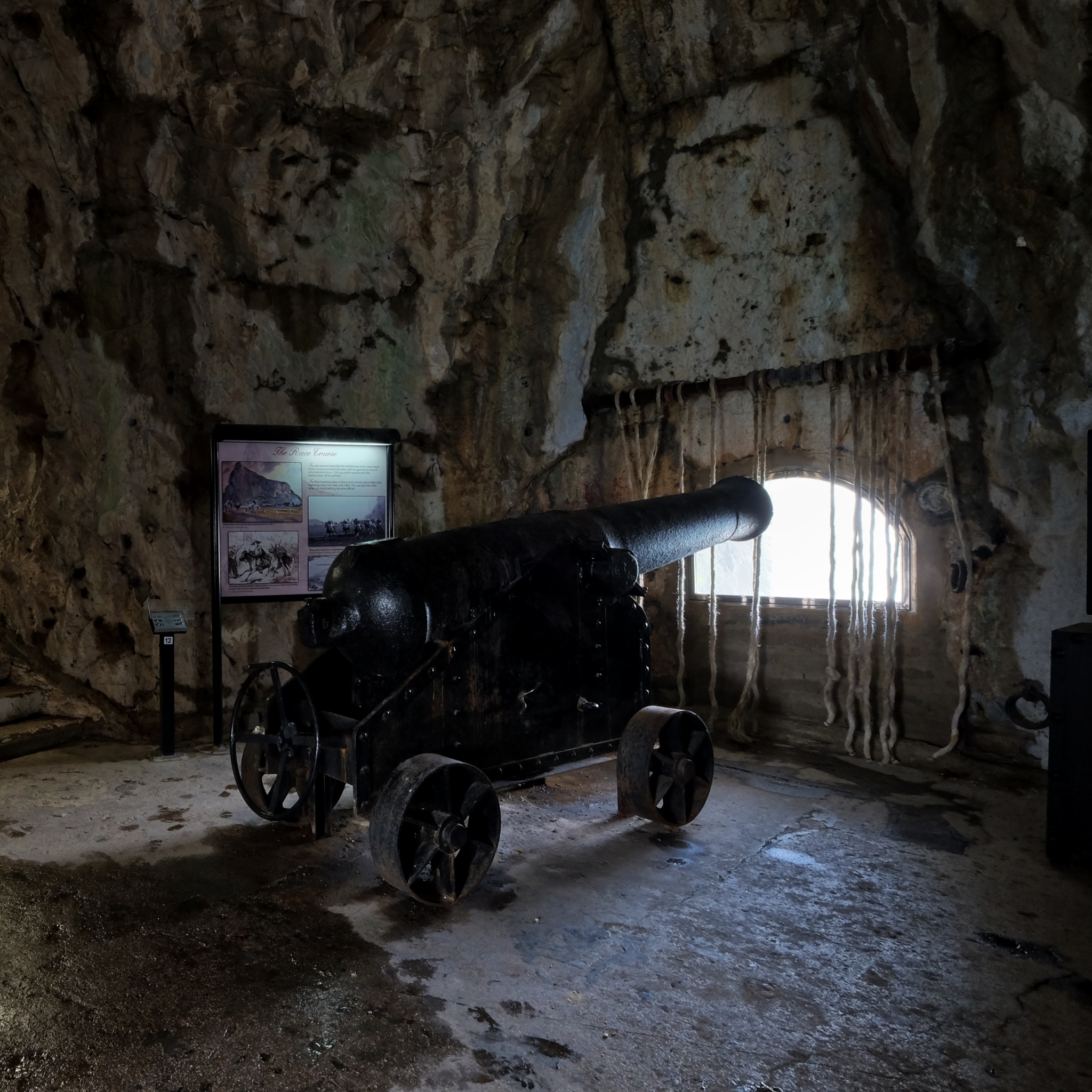 The historical placards were very informative and made the tunnel visit very interesting.
The historical placards were very informative and made the tunnel visit very interesting.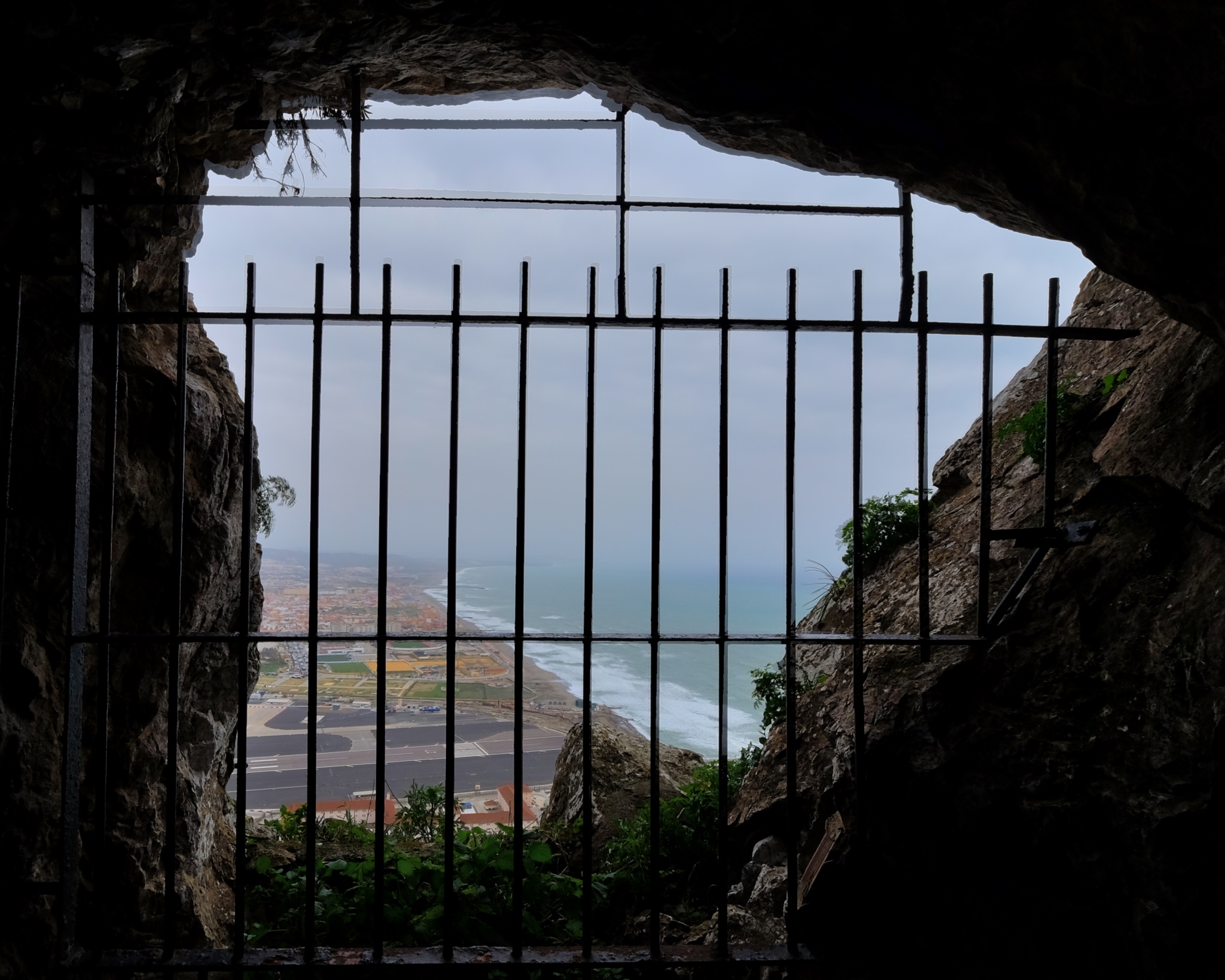 This view from a cannon emplacement is testimony to the strategic importance of these tunnels.
This view from a cannon emplacement is testimony to the strategic importance of these tunnels.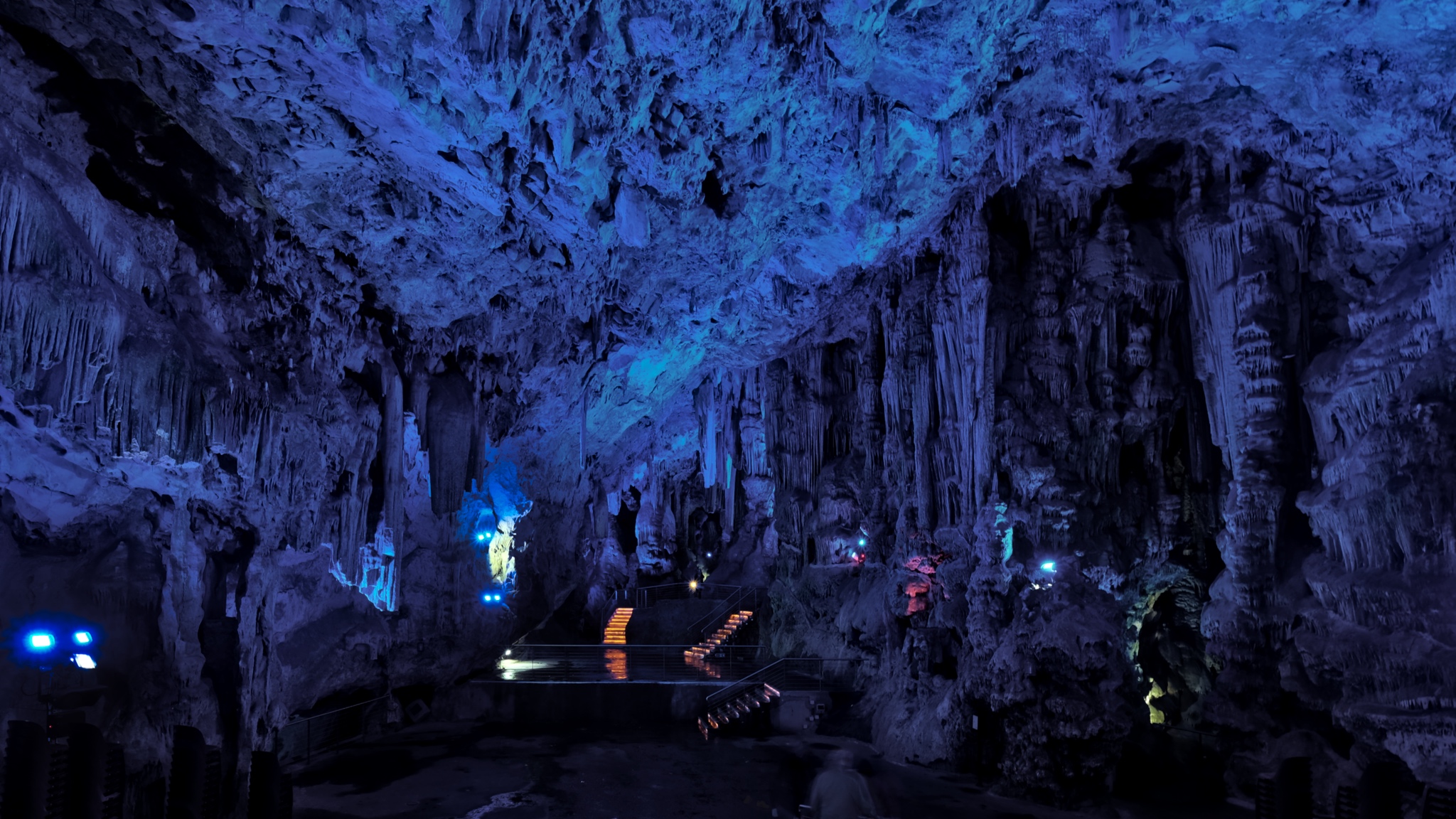 In addition to the military tunnels, there are also natural caves in the Rock of Gibraltar. For a nominal fee, you were treated to giant caverns lit by an ever-changing Xmas tree light.
In addition to the military tunnels, there are also natural caves in the Rock of Gibraltar. For a nominal fee, you were treated to giant caverns lit by an ever-changing Xmas tree light.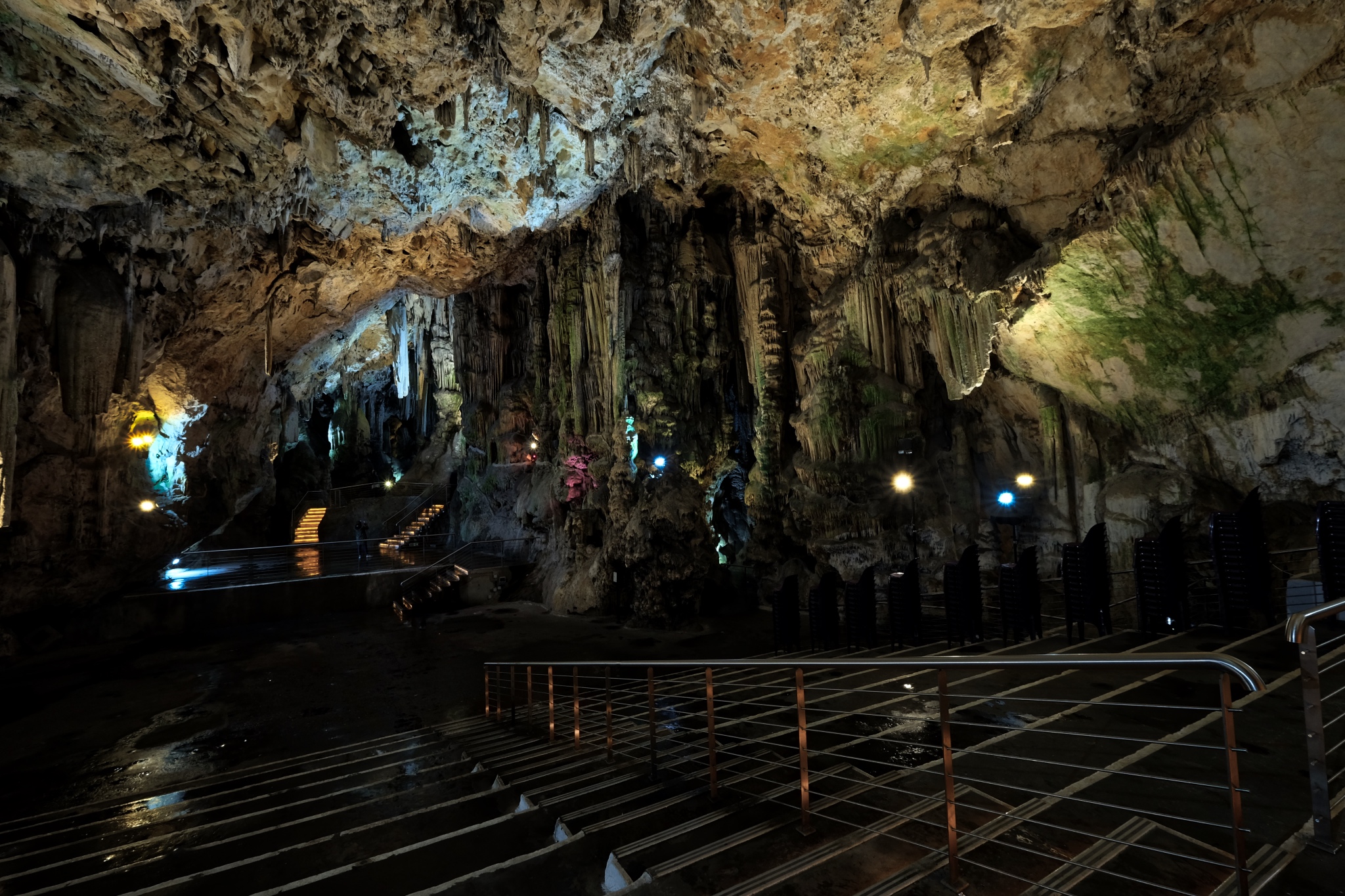 It appeared that they must hold musical events inside the cavern from time to time.
It appeared that they must hold musical events inside the cavern from time to time.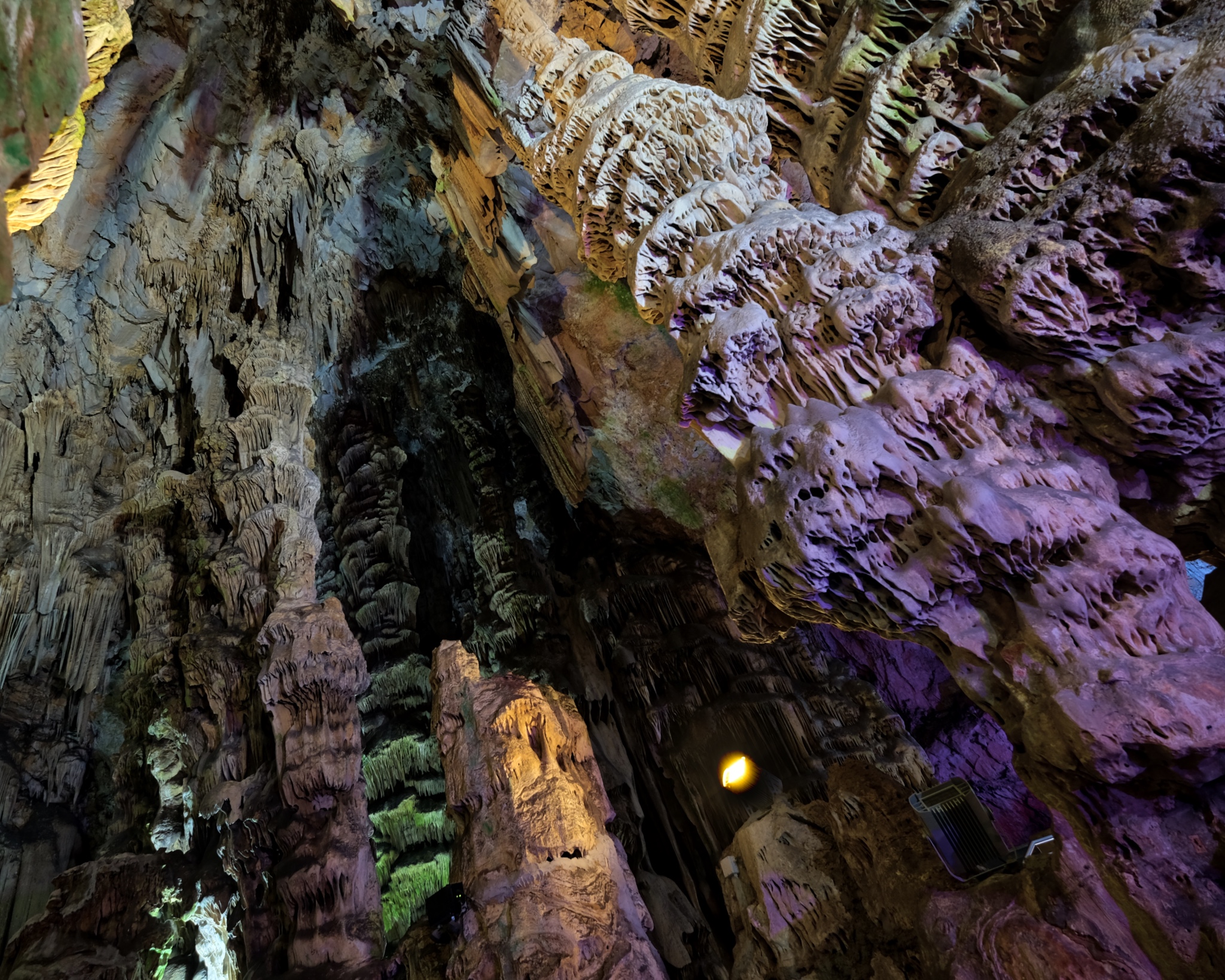 A very beautiful place indeed.
A very beautiful place indeed.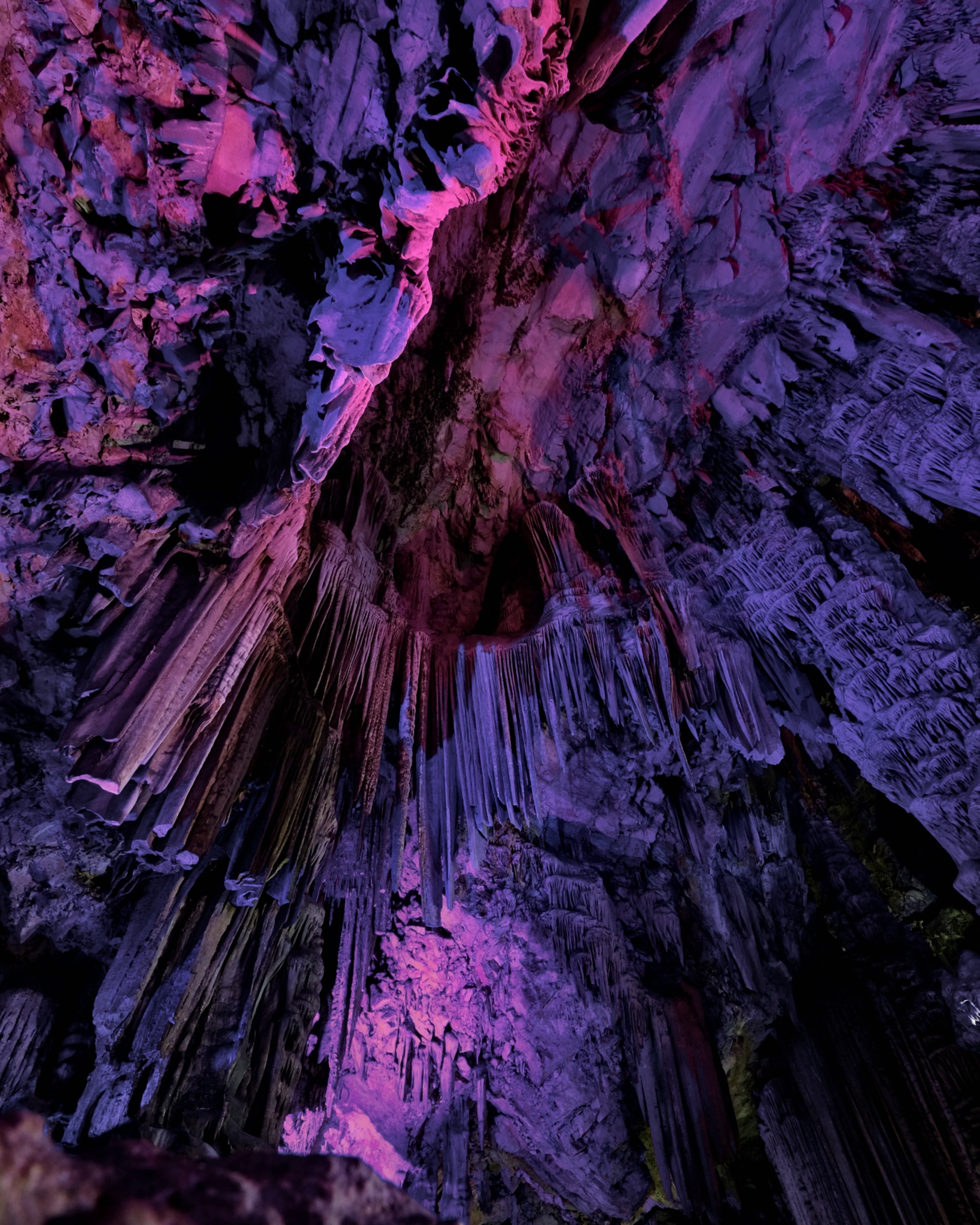 The colored lights grew on you after a while.
The colored lights grew on you after a while.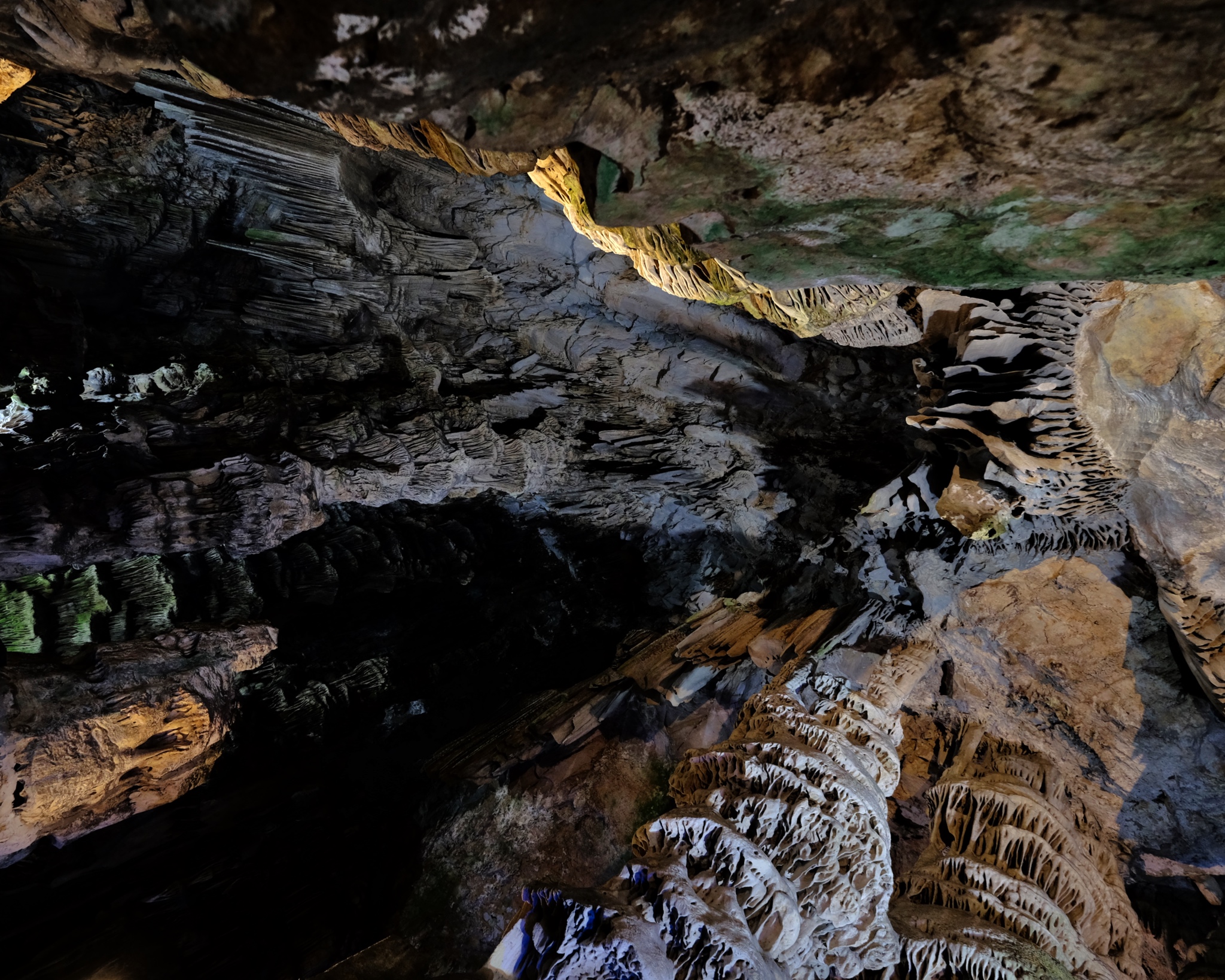 We enjoyed our walk-through of the caves. When we emerged were greeted by . . .
We enjoyed our walk-through of the caves. When we emerged were greeted by . . .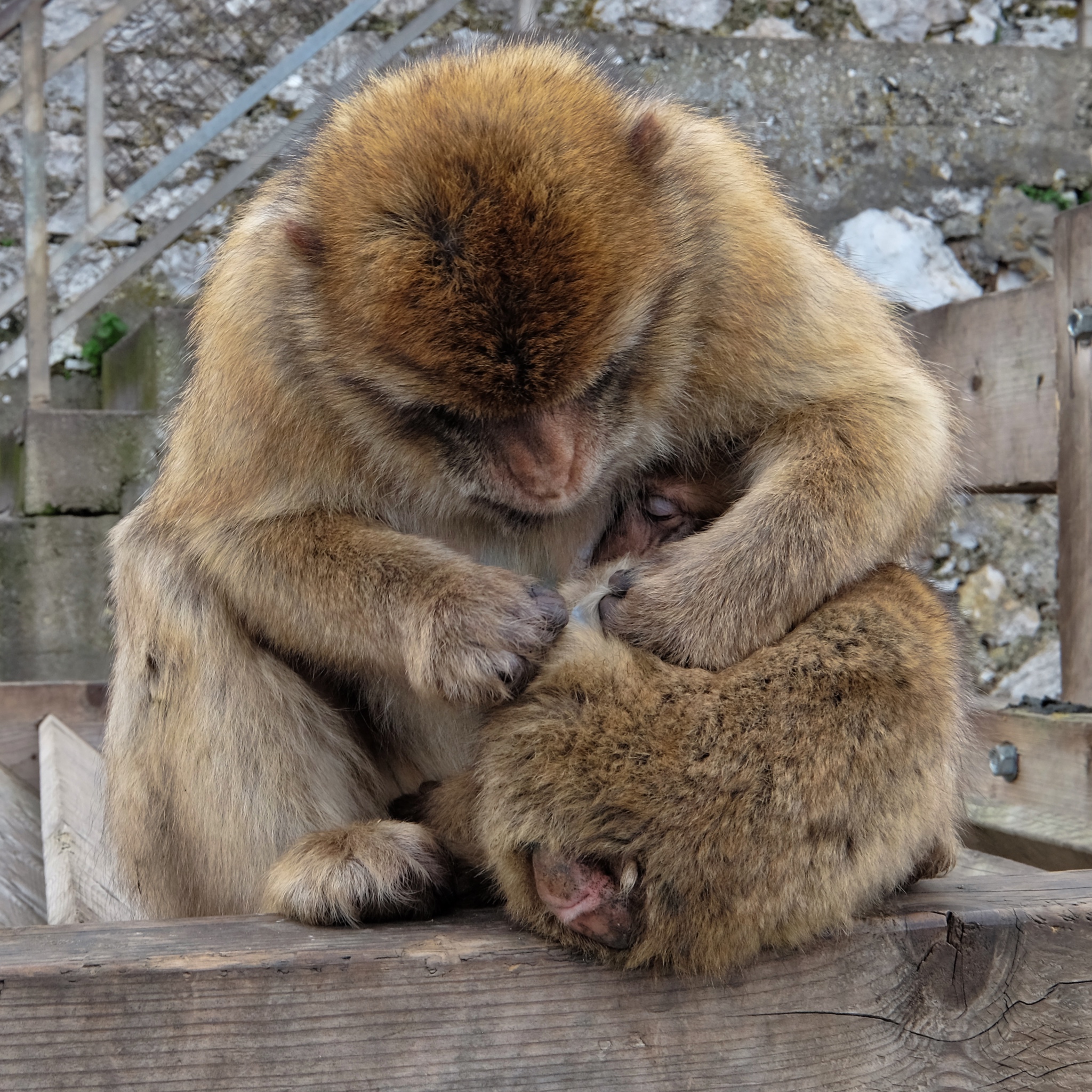 Monkeys! Lots of monkeys! We were warned about the monkeys . . . that they were little pickpockets! One does not associate monkeys with Europe . . . but there you are!
Monkeys! Lots of monkeys! We were warned about the monkeys . . . that they were little pickpockets! One does not associate monkeys with Europe . . . but there you are!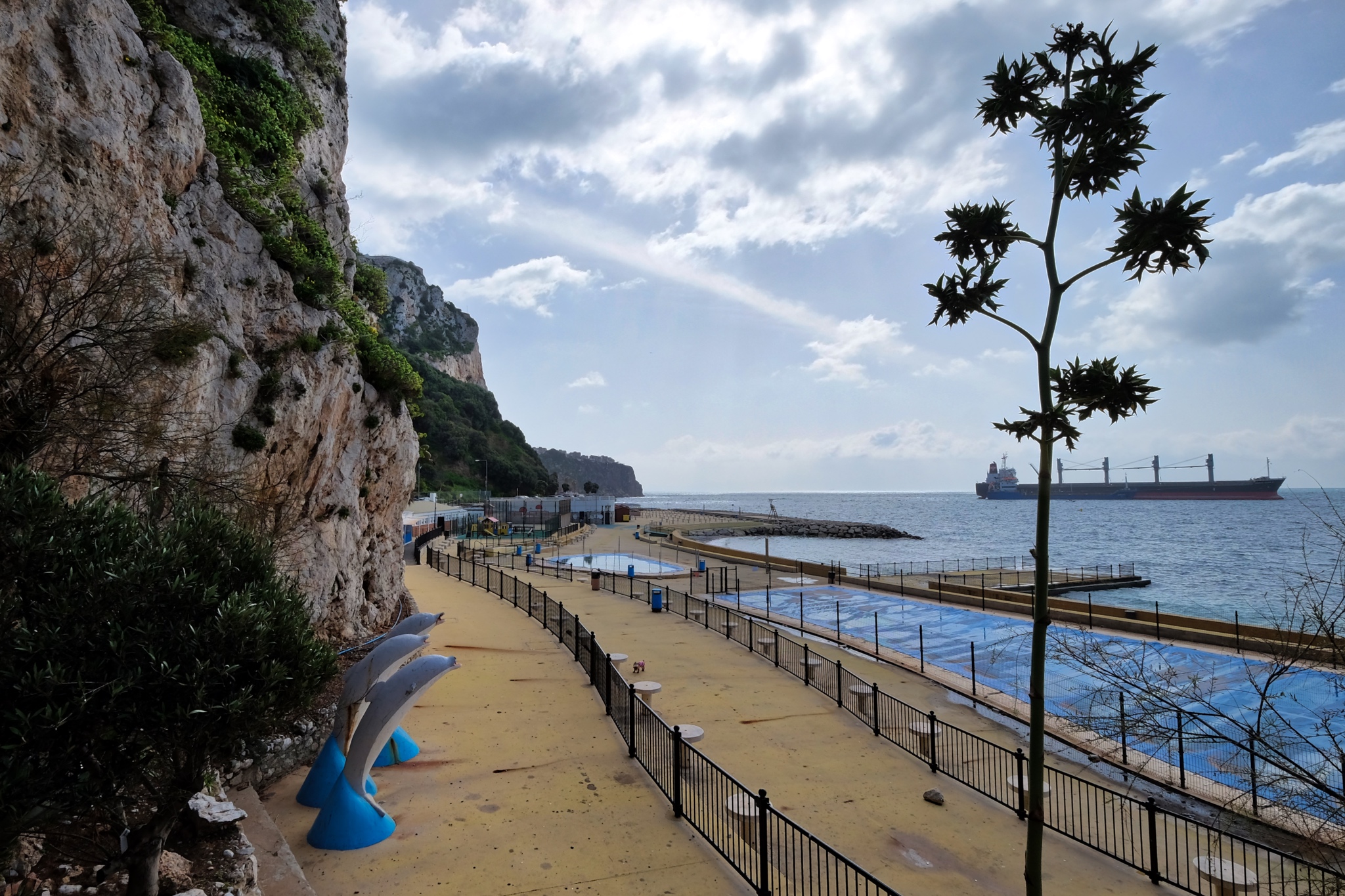
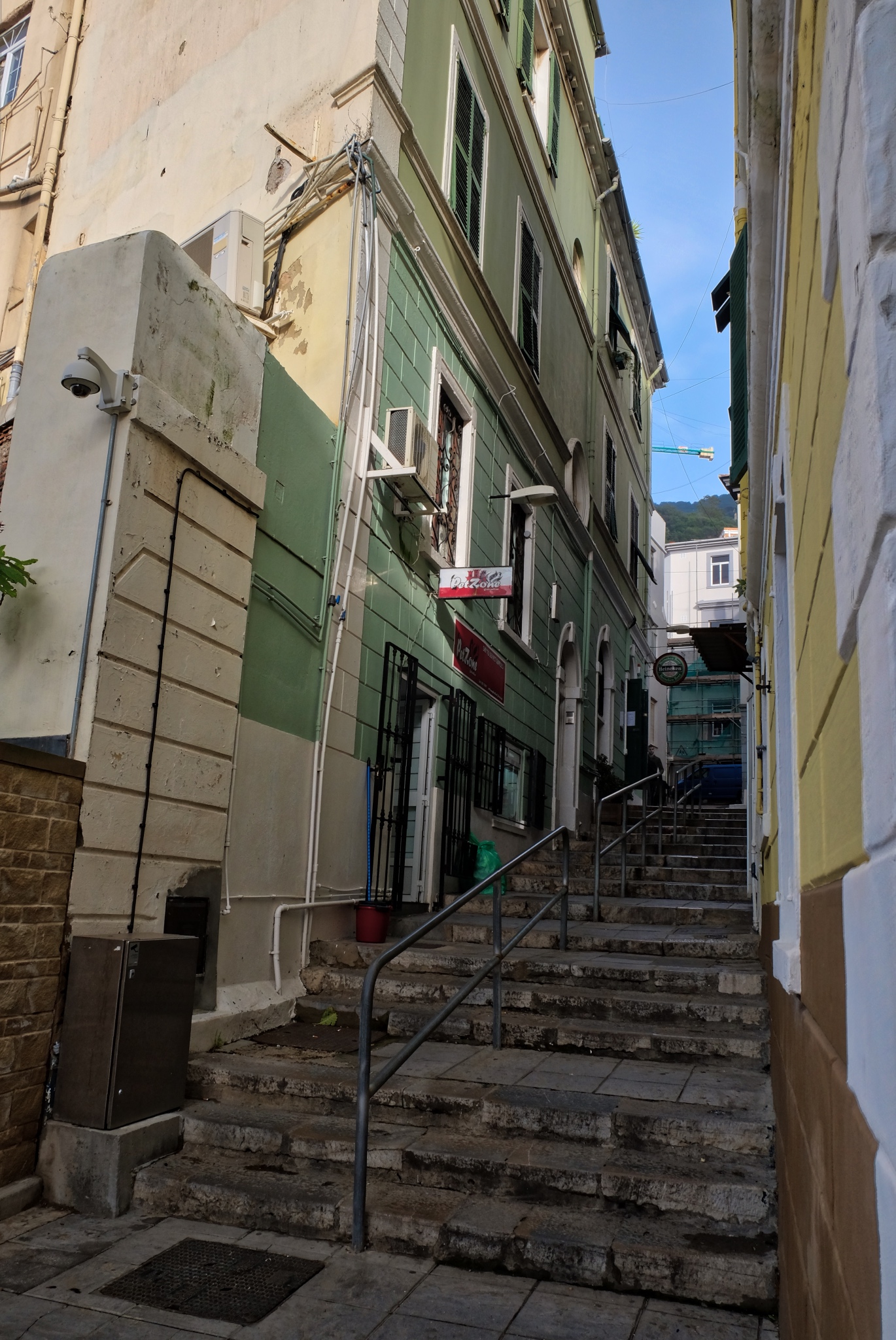 Gibraltar is, of course, built on the side of a big rock with little flat ground. As such, the streets and alleys are often just steep stairs.
Gibraltar is, of course, built on the side of a big rock with little flat ground. As such, the streets and alleys are often just steep stairs.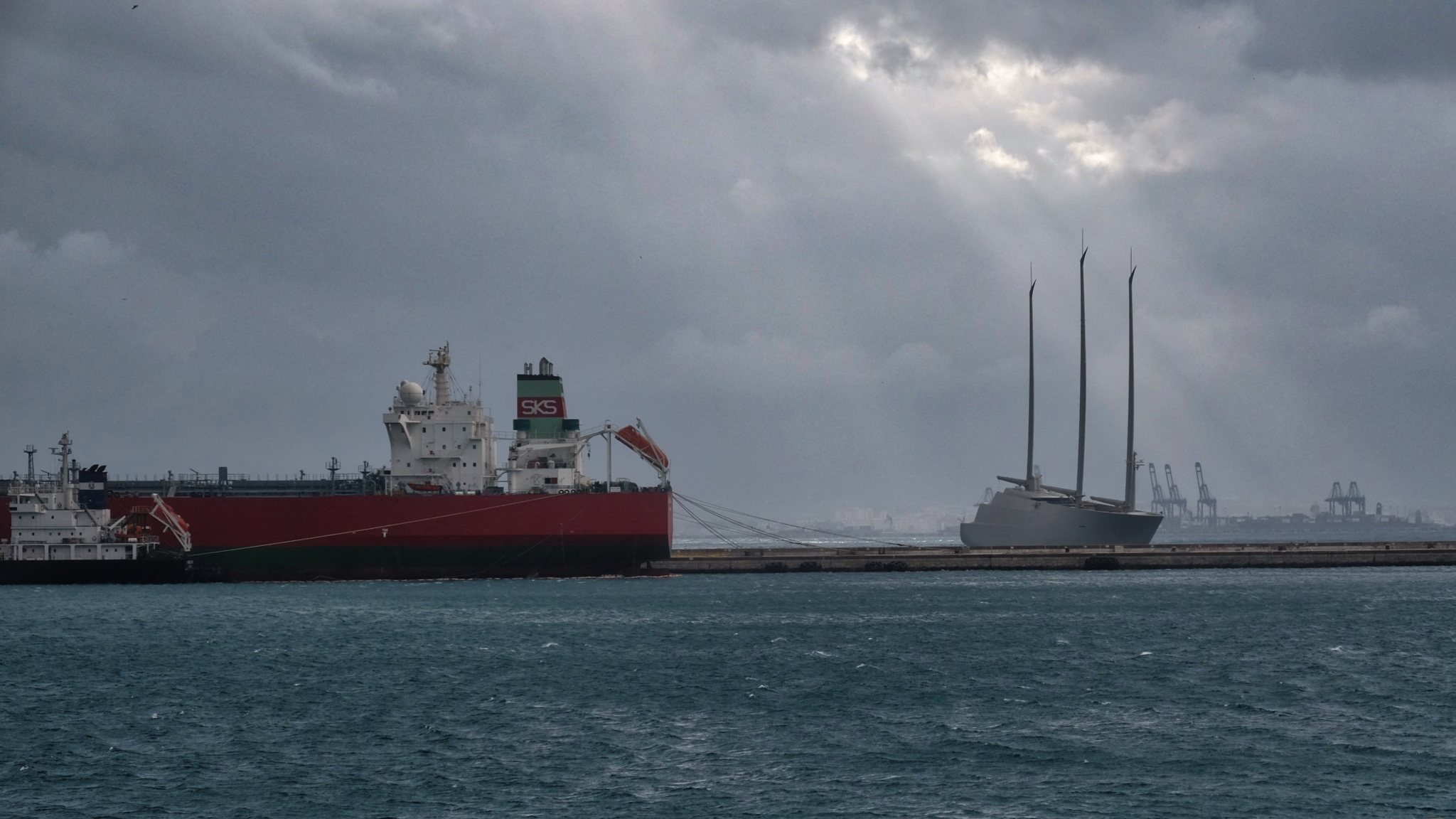 Gibraltar is also a port city . . . and a place for a 'mystery Russian' to came and try for sea trials and licensing of a stealth sailing ship. This Dark Boat was the talk of the town's permanent residents. It was gone in the morning.
Gibraltar is also a port city . . . and a place for a 'mystery Russian' to came and try for sea trials and licensing of a stealth sailing ship. This Dark Boat was the talk of the town's permanent residents. It was gone in the morning.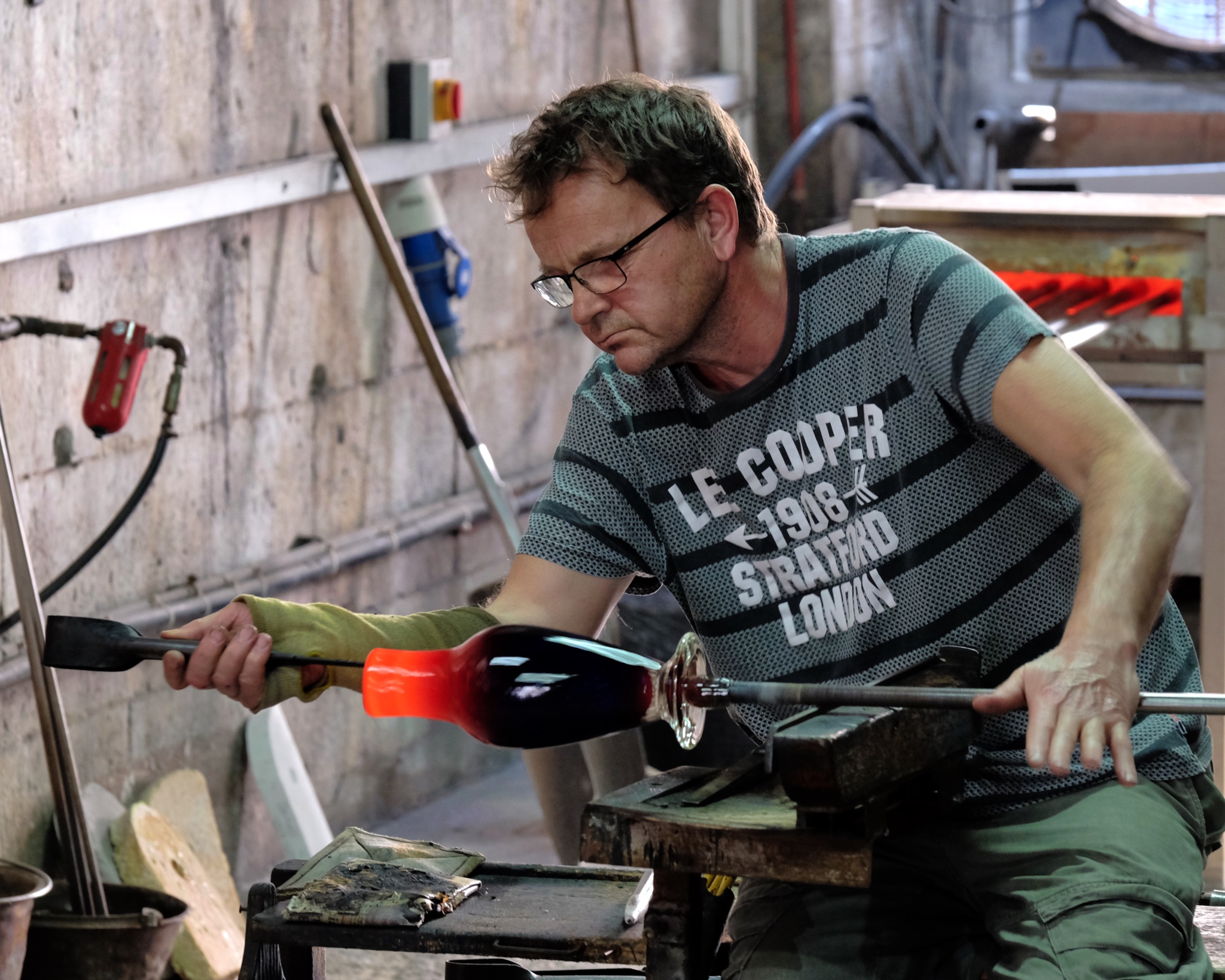 There are craft shops open to the public. Here a famous glassblower plys his trade.
There are craft shops open to the public. Here a famous glassblower plys his trade.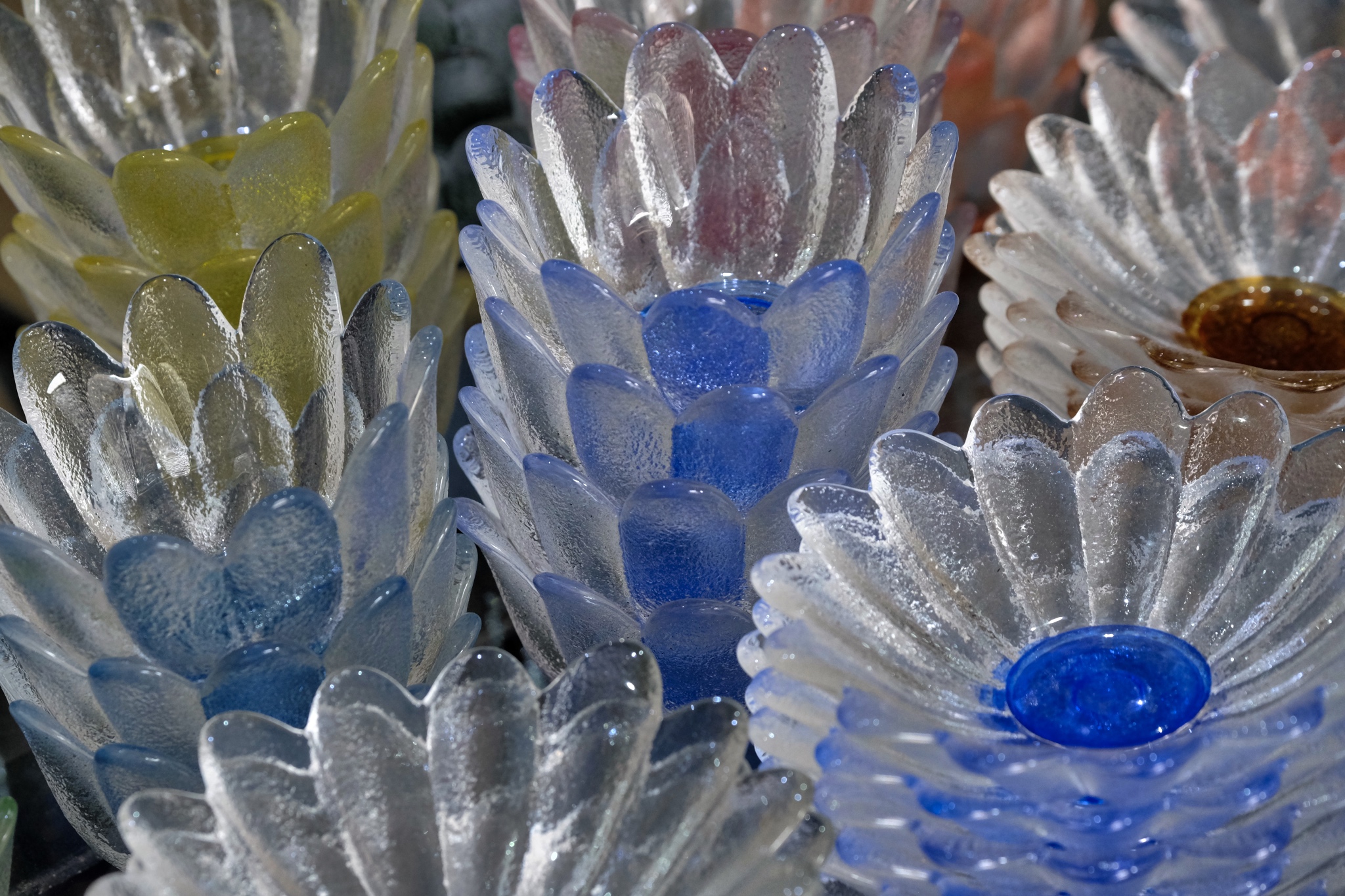 Beautiful work too . . .
Beautiful work too . . .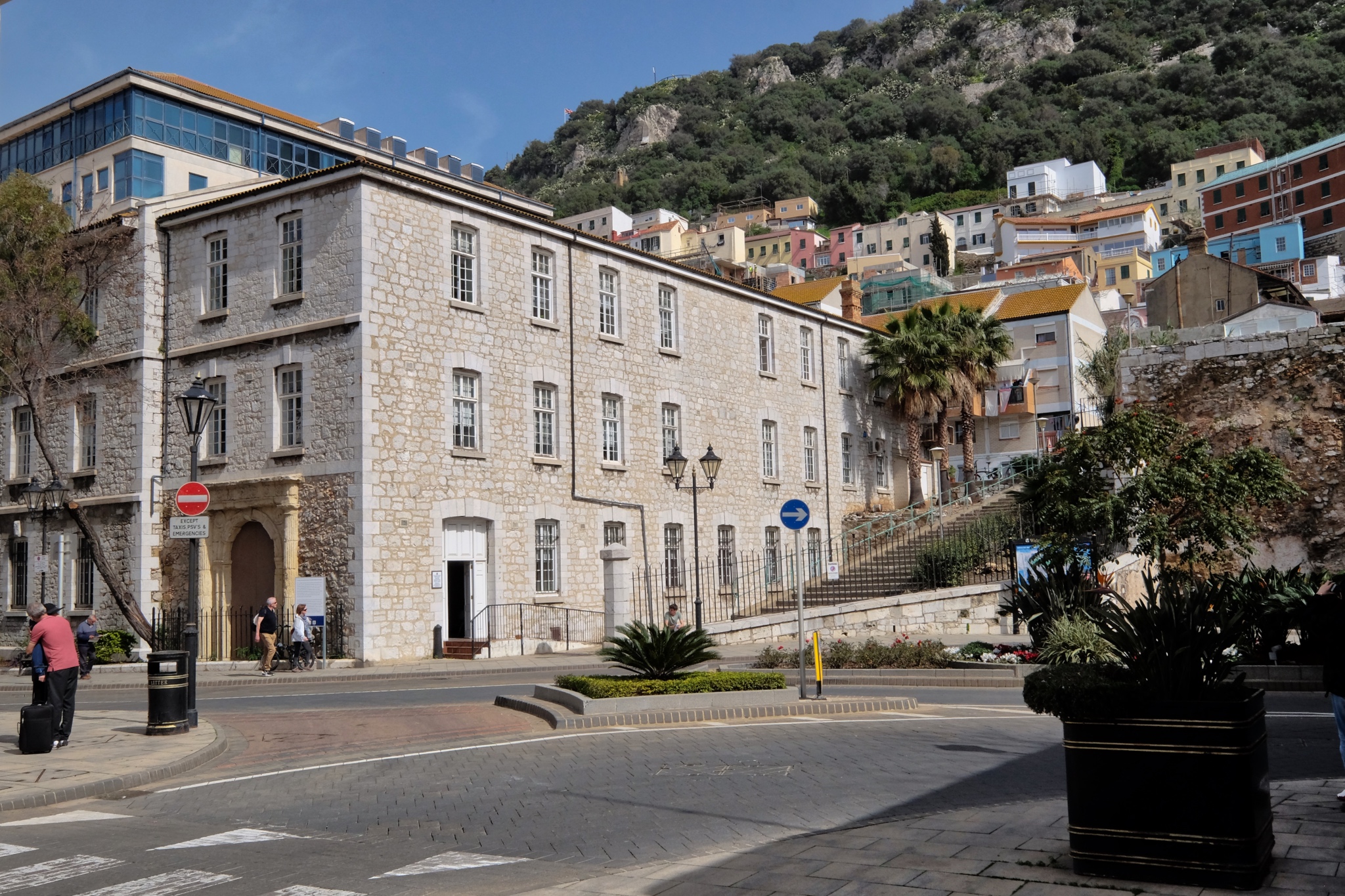 Gibraltar town sits fast against the famous 'Rock.'
Gibraltar town sits fast against the famous 'Rock.'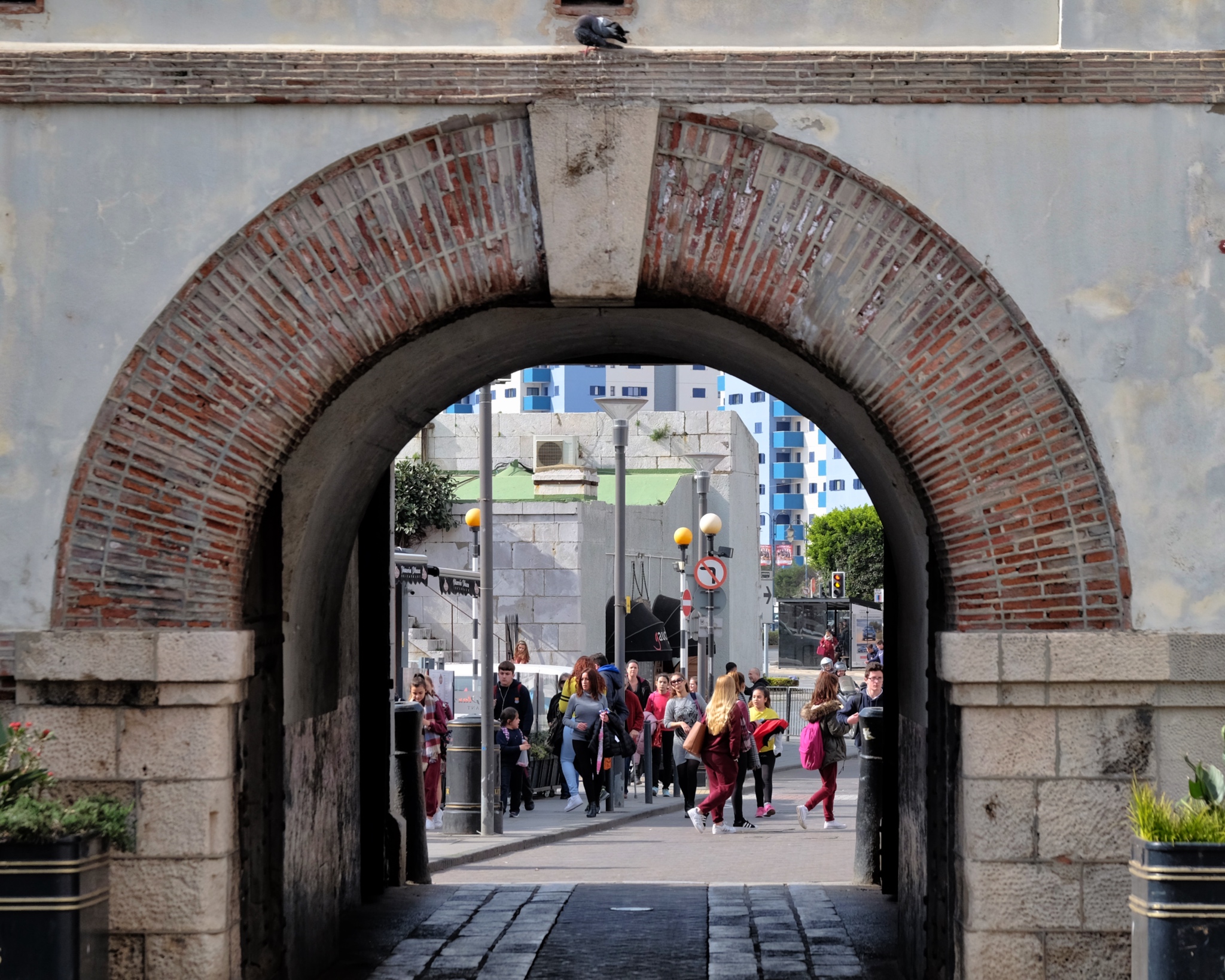 The south city gate . . . already a few tourists mixed in with the locals . . .
The south city gate . . . already a few tourists mixed in with the locals . . .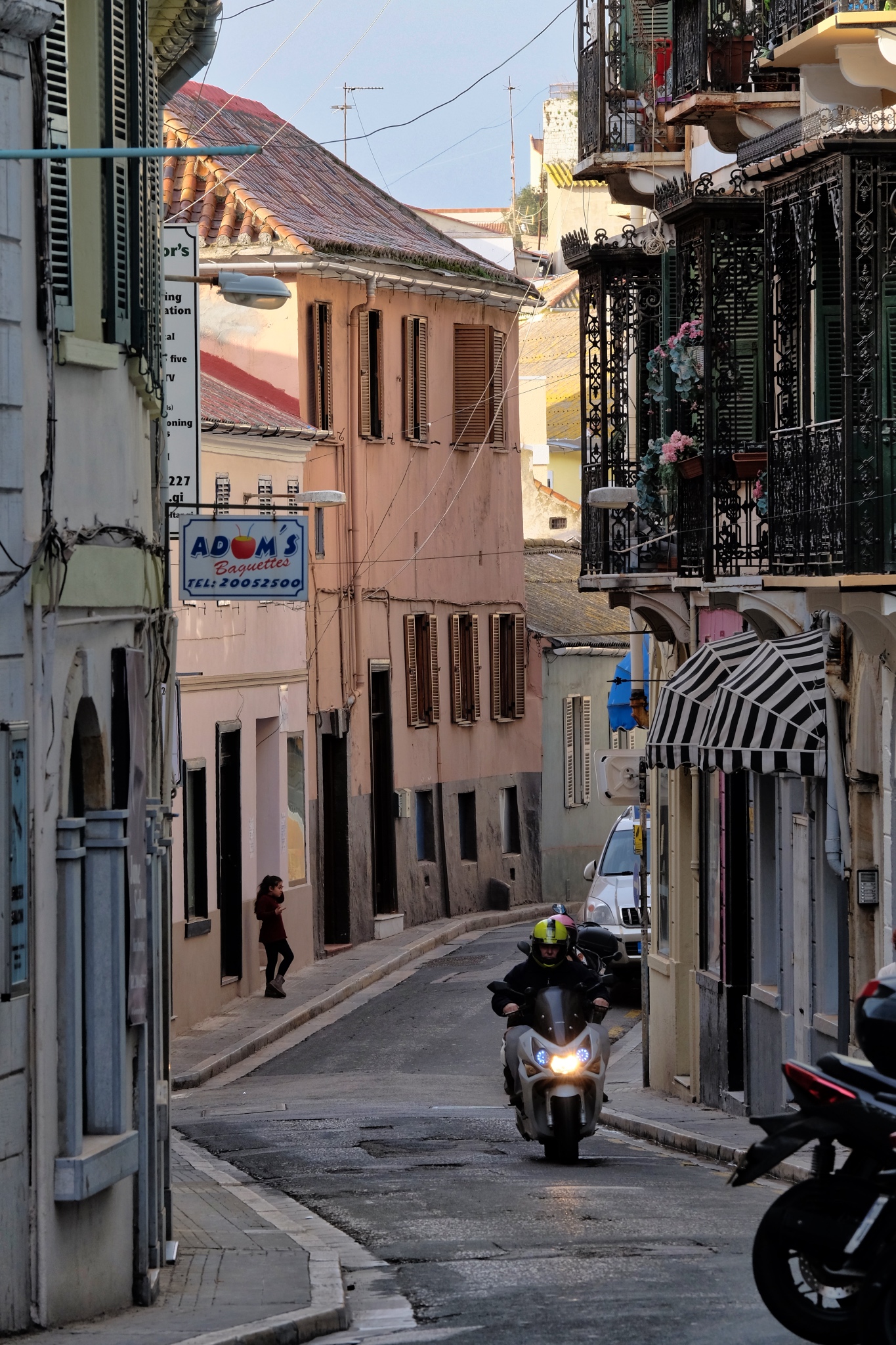 There are some beautiful curving streets through the old town.
There are some beautiful curving streets through the old town.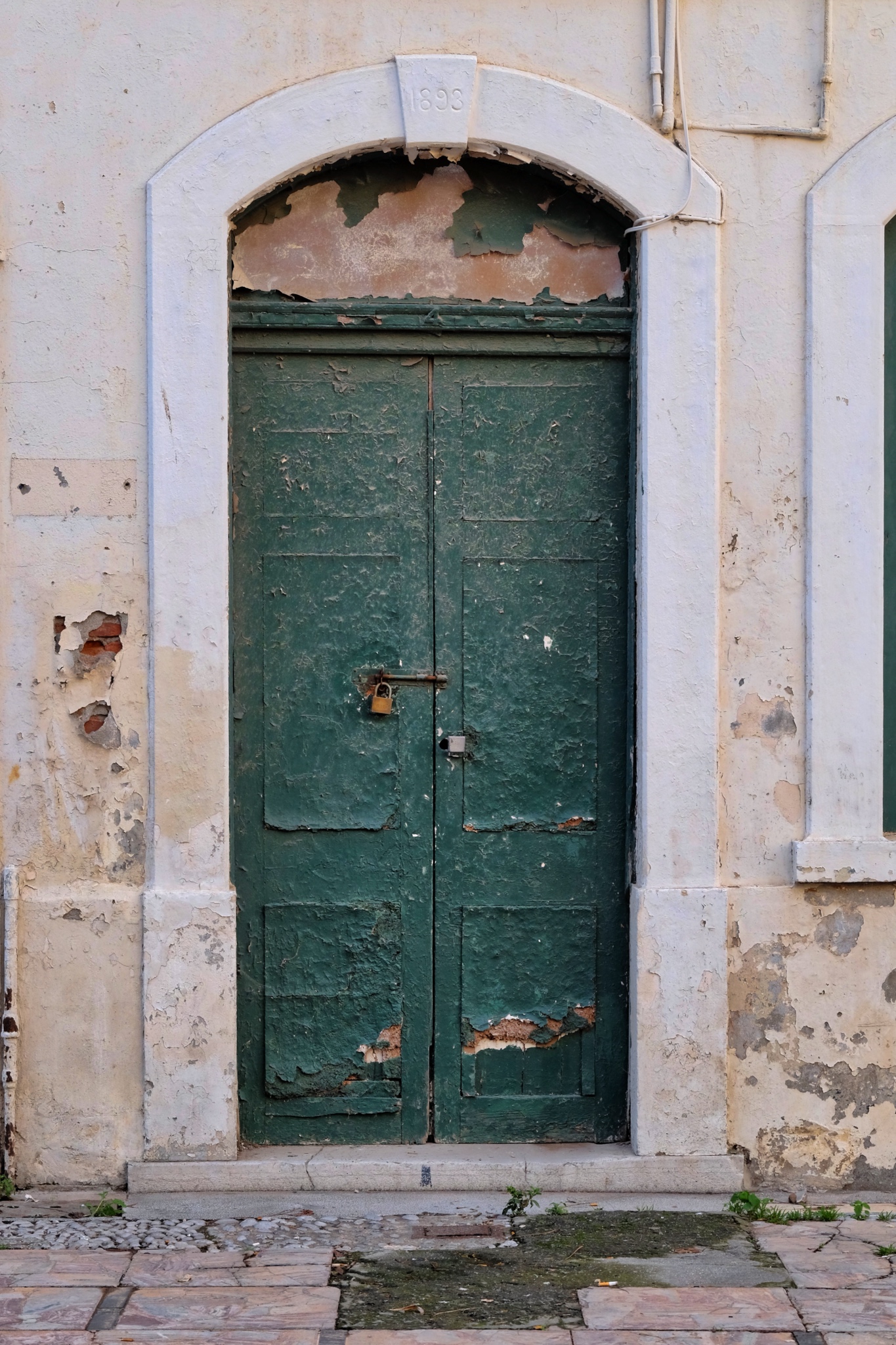 My Old Door Photo Fetish (ODPF) was completely satisfied in Gibraltar!
My Old Door Photo Fetish (ODPF) was completely satisfied in Gibraltar!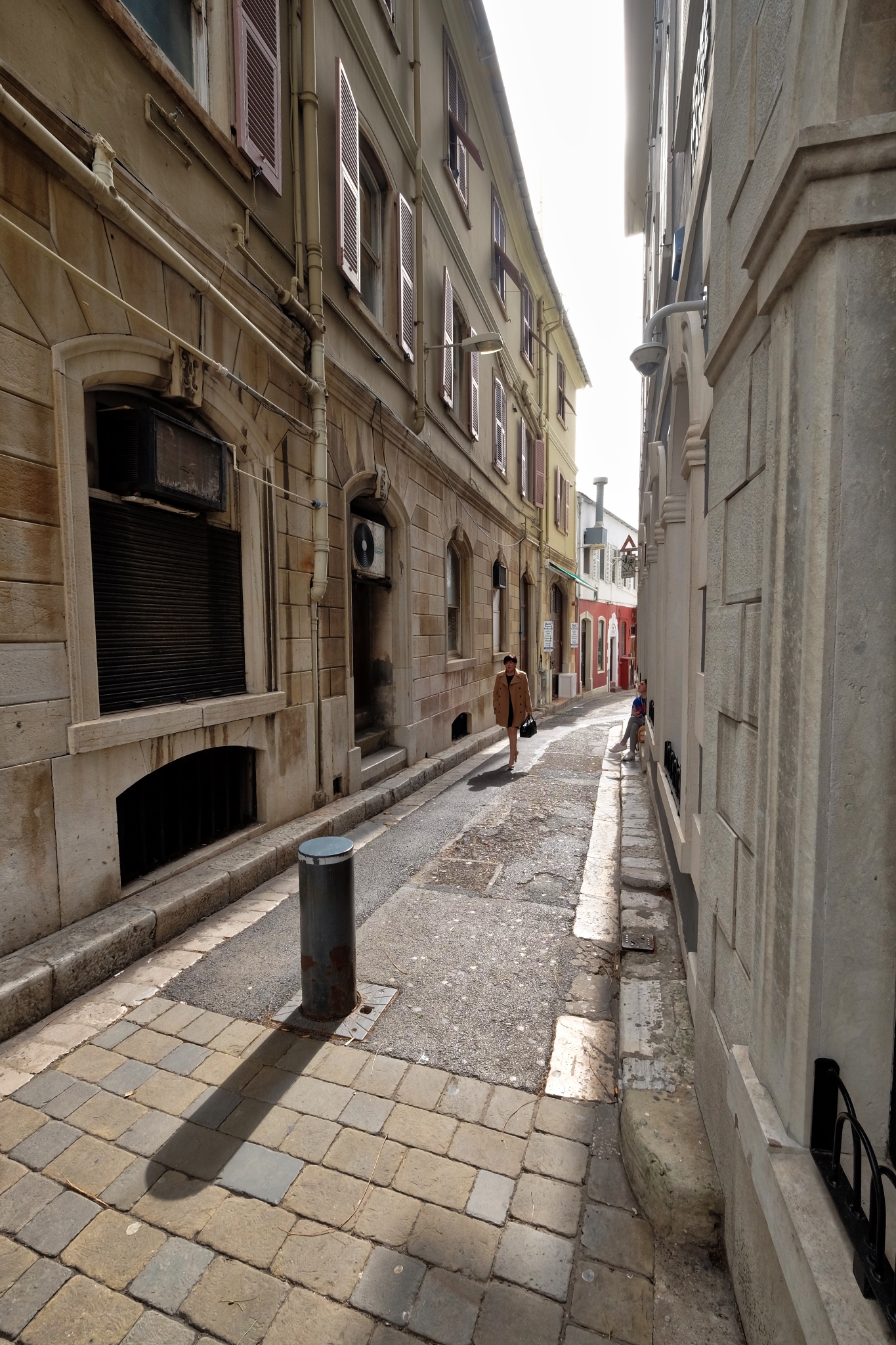 A pleasant place to stroll around . . . before the throngs of tourists arrived, the locals told us.
A pleasant place to stroll around . . . before the throngs of tourists arrived, the locals told us.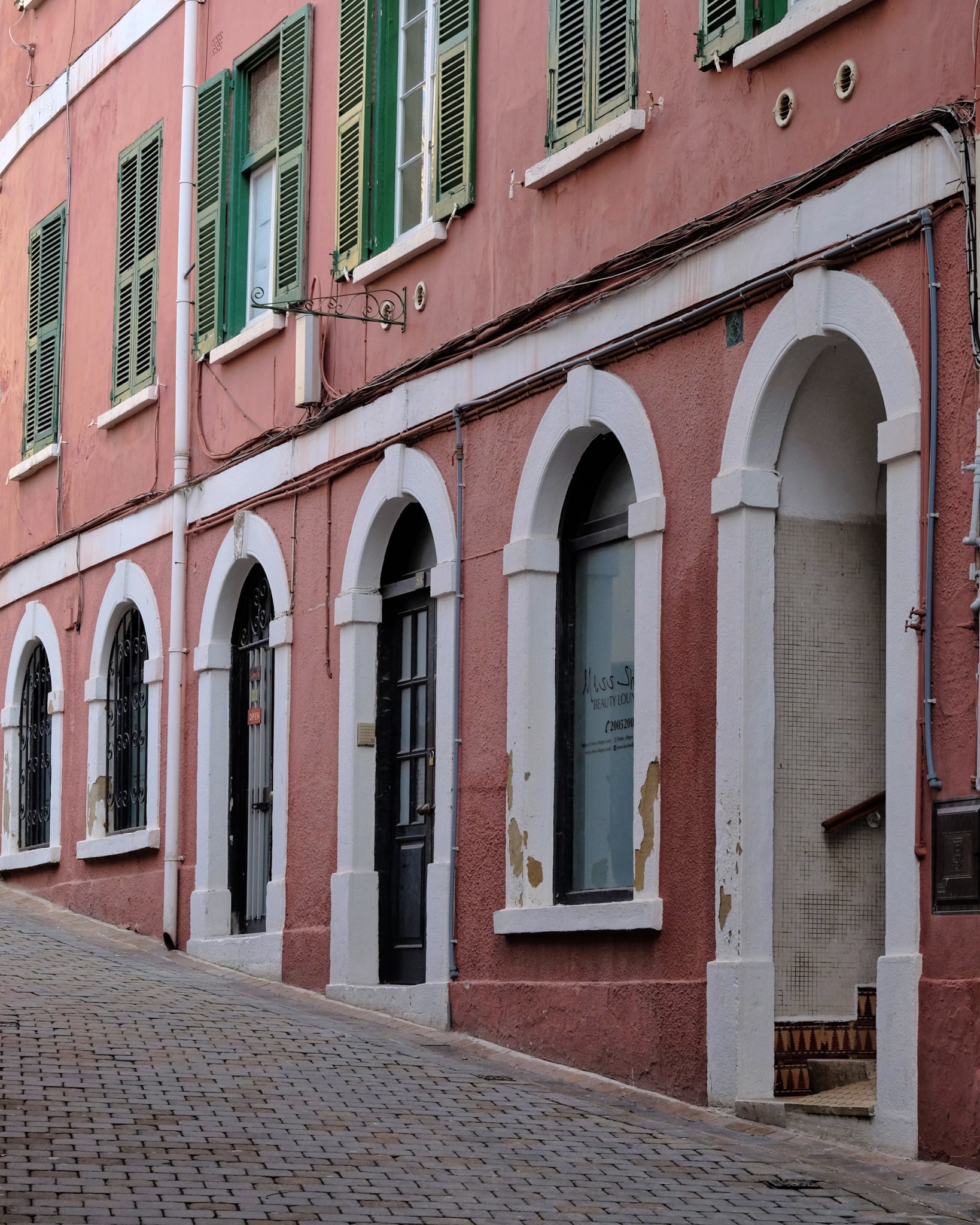 Steep streets . . . .
Steep streets . . . .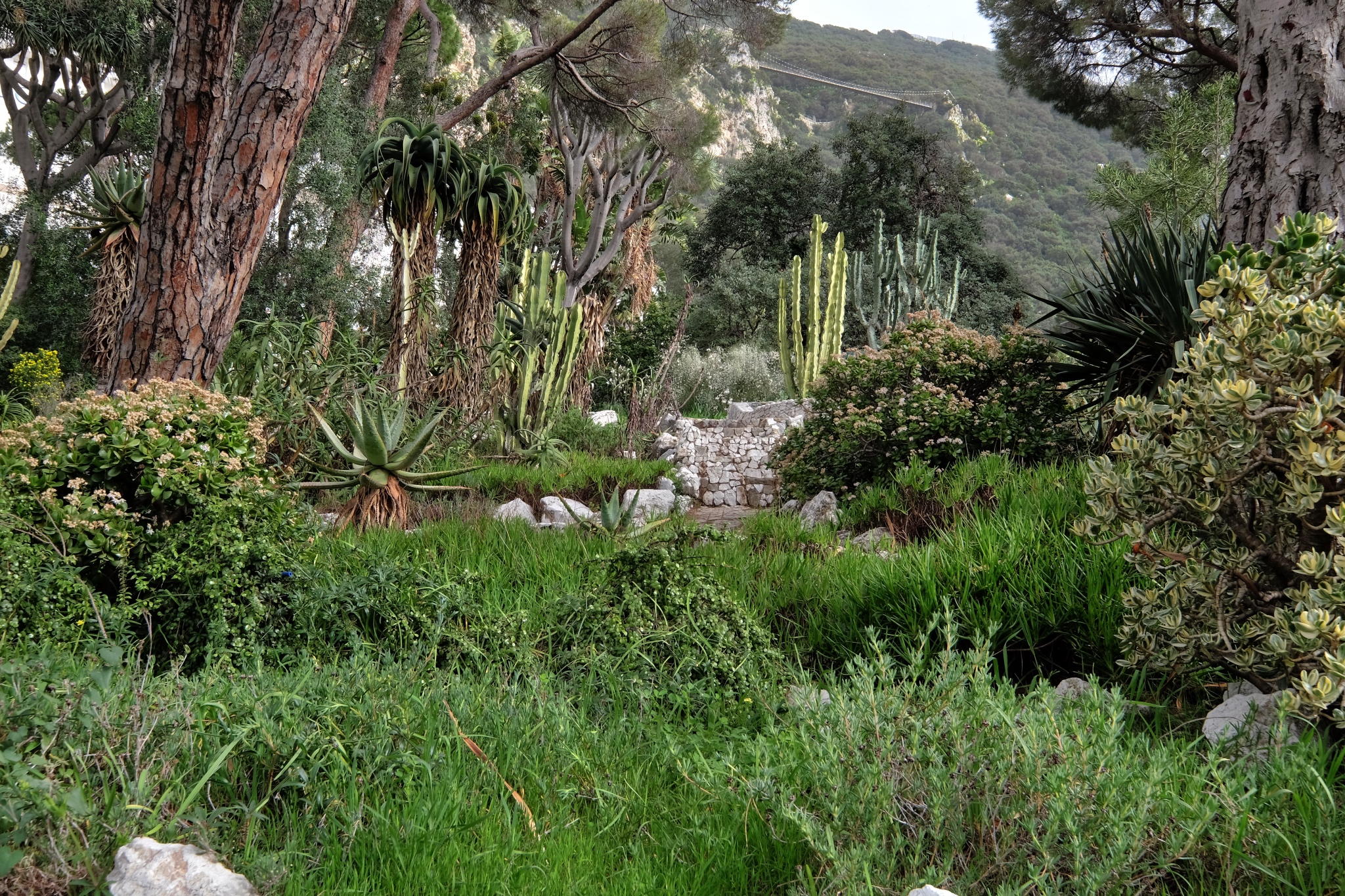 Gibraltar has a fine Botanical Garden . . . a favorite place to visit on all my travels.
Gibraltar has a fine Botanical Garden . . . a favorite place to visit on all my travels.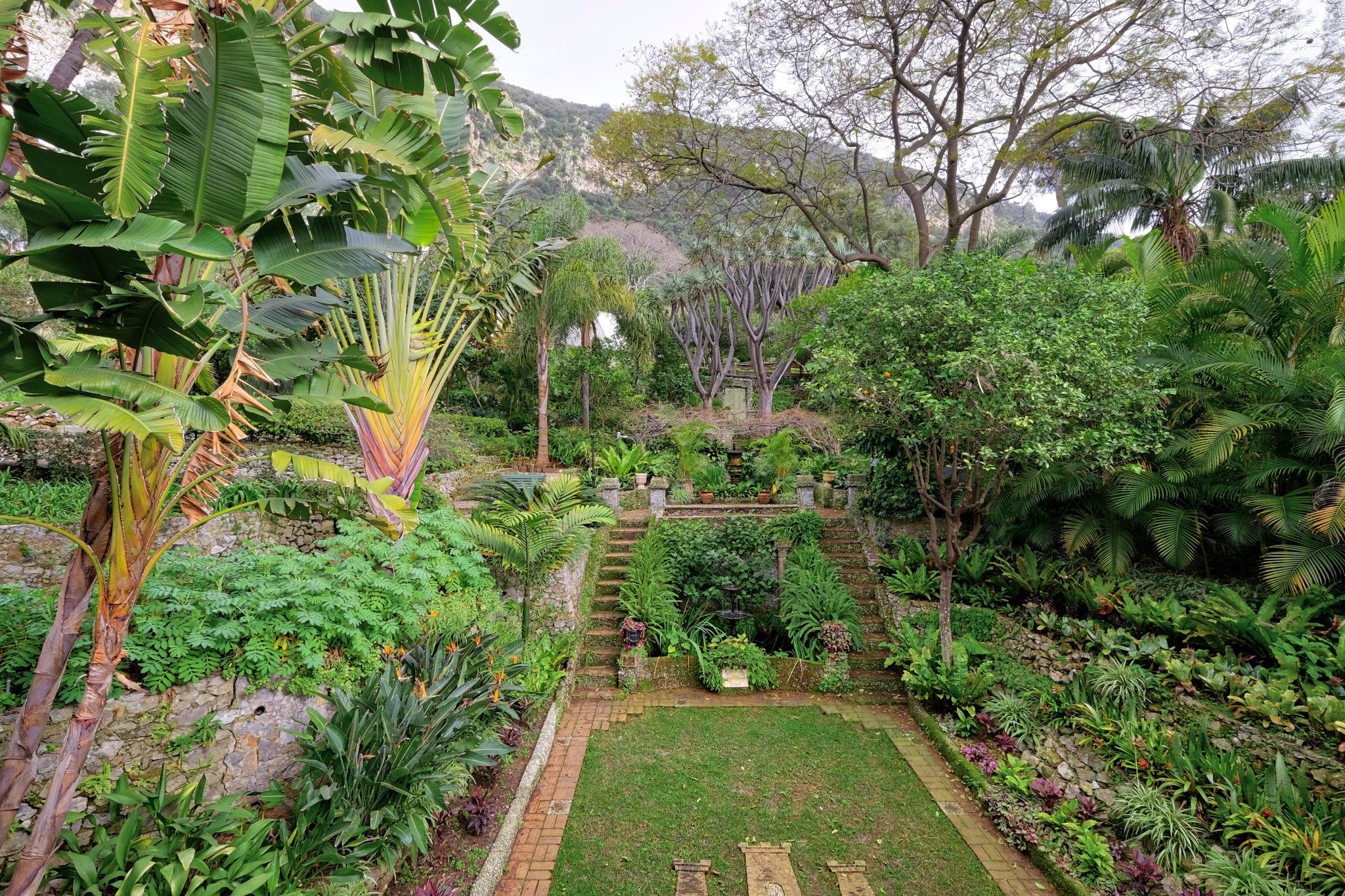 There is hardly any unused land on Gibraltar, so it was nice to see they valued their botanical garden enough to not build on it or pave it over.
There is hardly any unused land on Gibraltar, so it was nice to see they valued their botanical garden enough to not build on it or pave it over.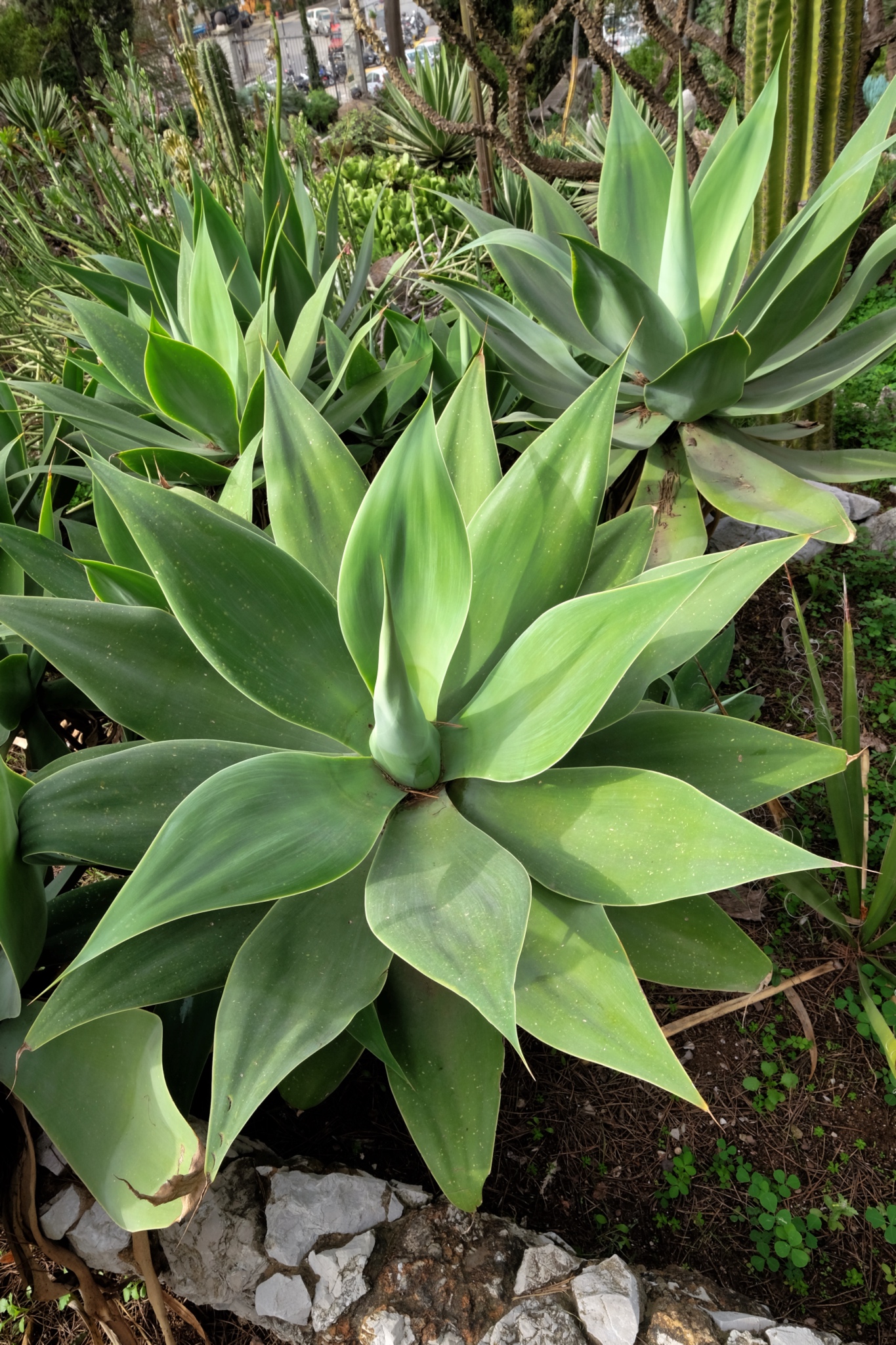 Being on the southern to of Spain, the climate is very mild. Many kinds of semi-tropical plants grow very well here.
Being on the southern to of Spain, the climate is very mild. Many kinds of semi-tropical plants grow very well here.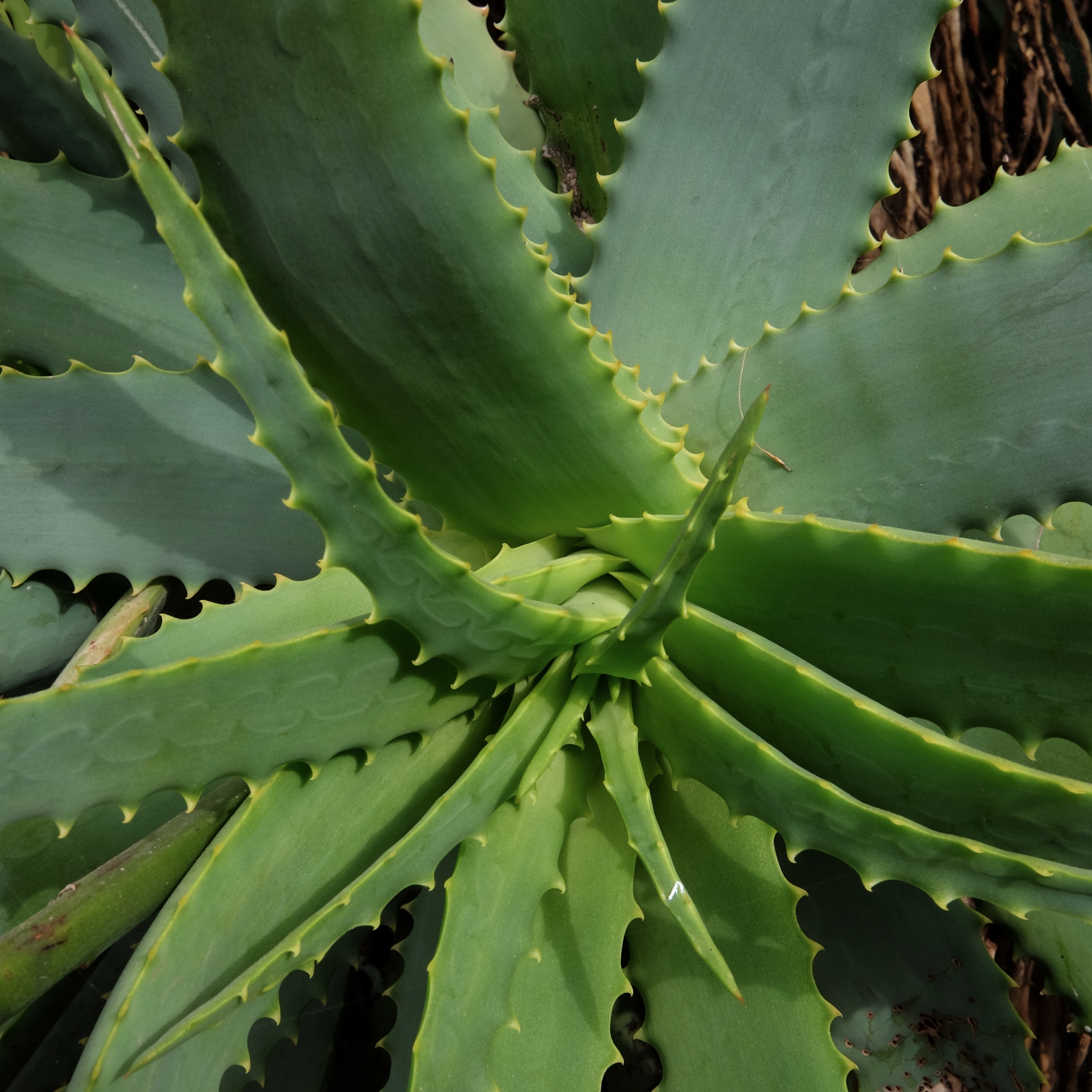 Aloe grew everywhere.
Aloe grew everywhere.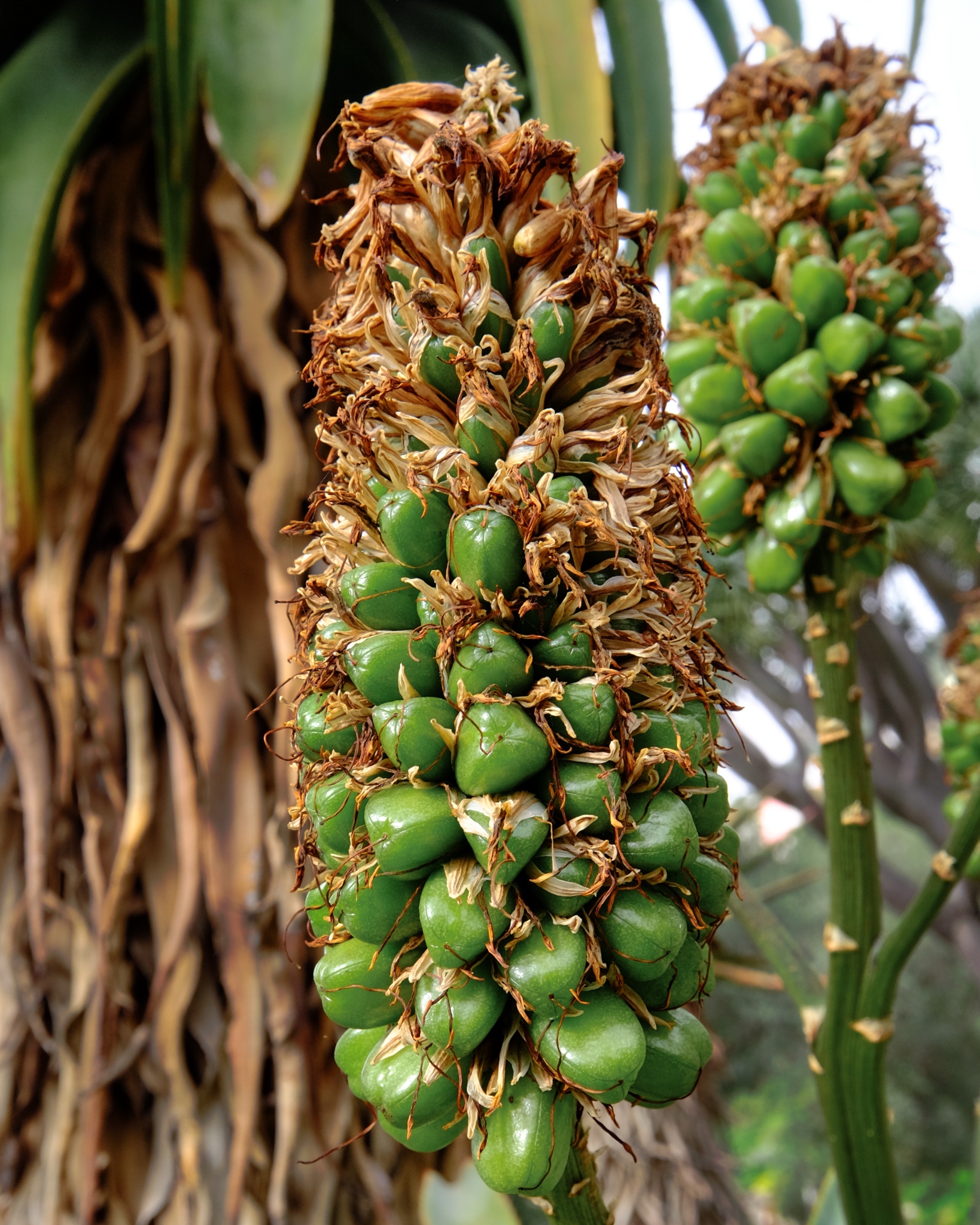 A few of the tropical plants were in flower or bud.
A few of the tropical plants were in flower or bud.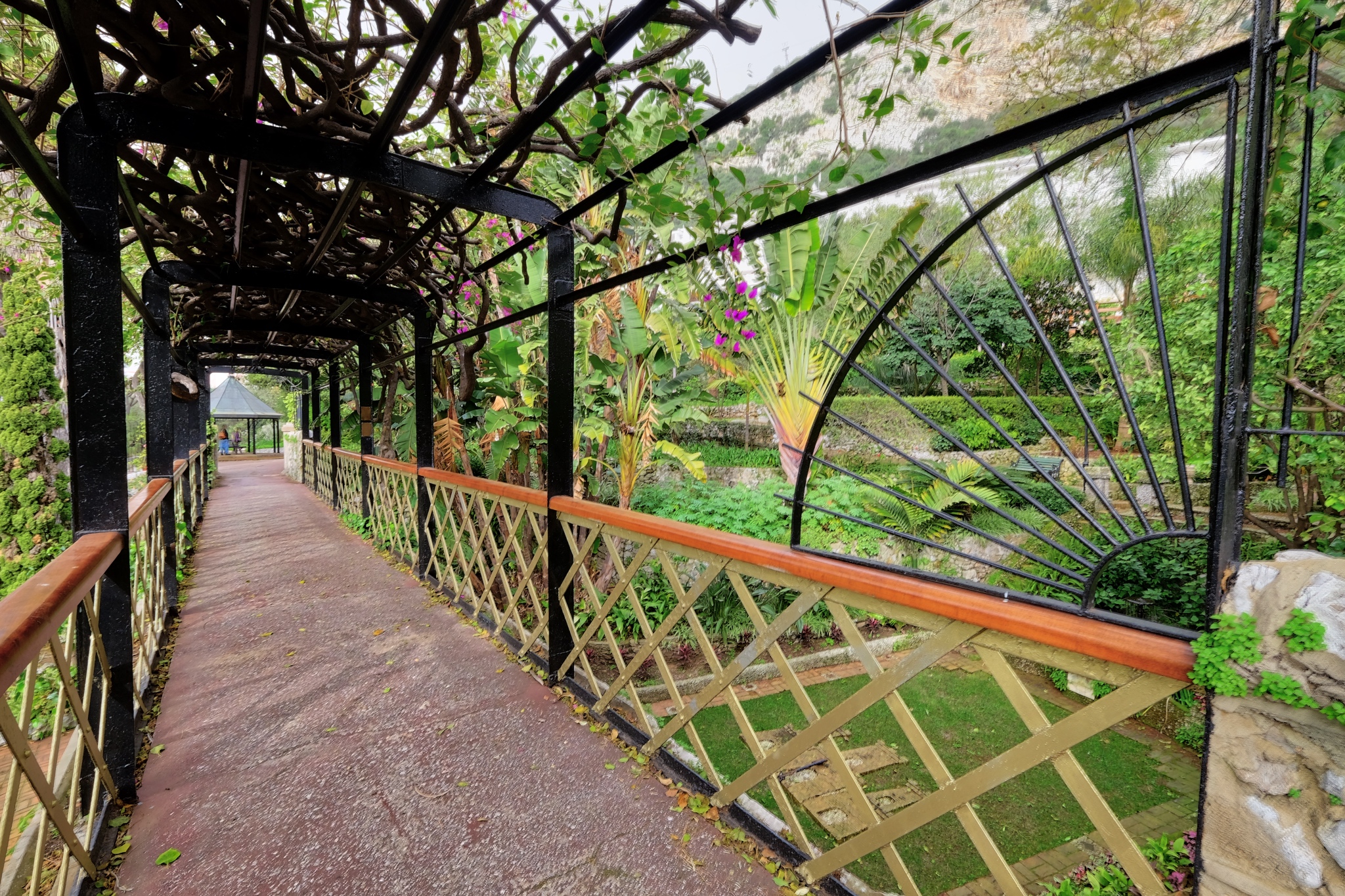 We spent art of a wonderful afternoon here . . .
We spent art of a wonderful afternoon here . . .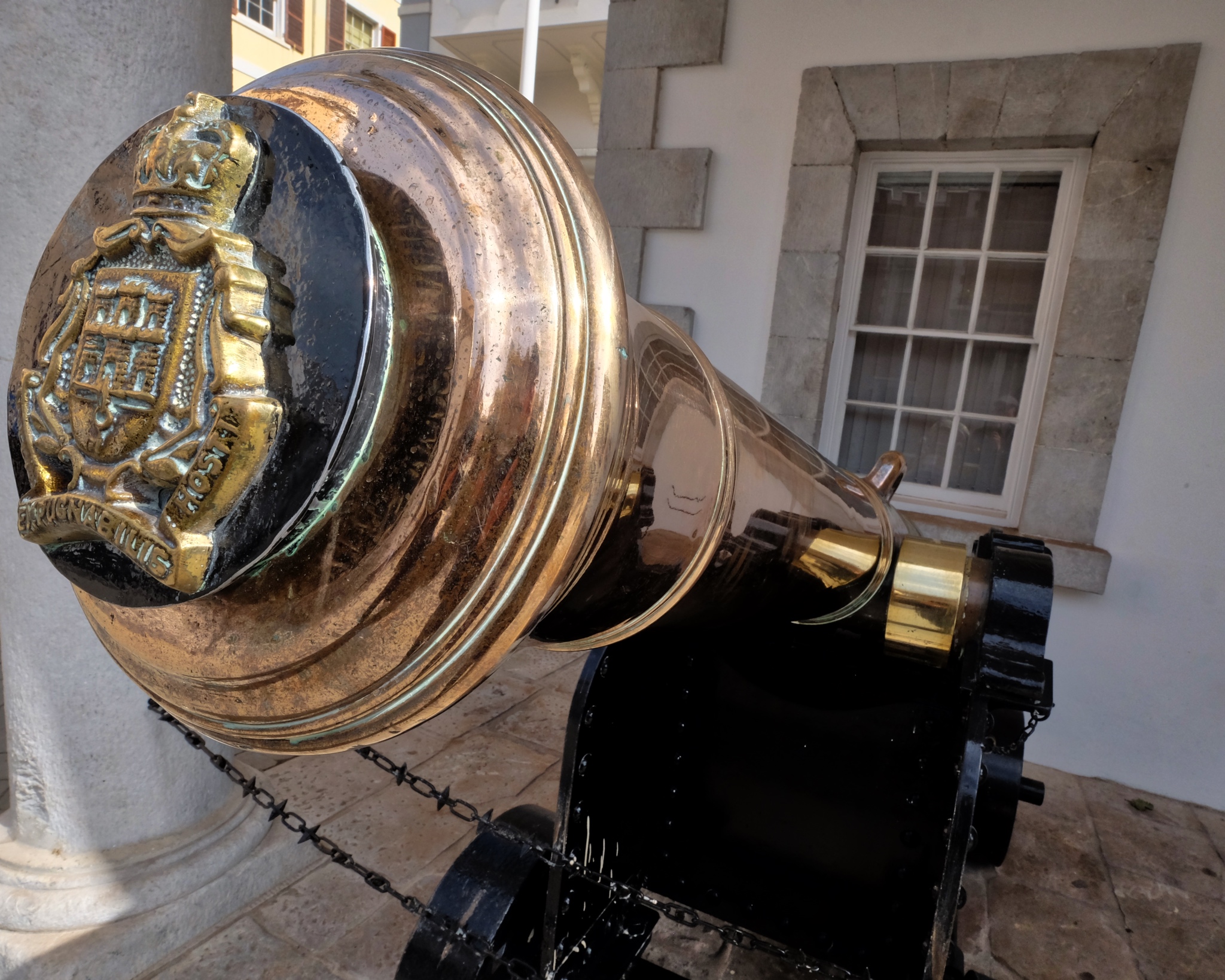 There is still a British military garrison on Gibraltar . . . complete with daily-polished brass cannon.
There is still a British military garrison on Gibraltar . . . complete with daily-polished brass cannon.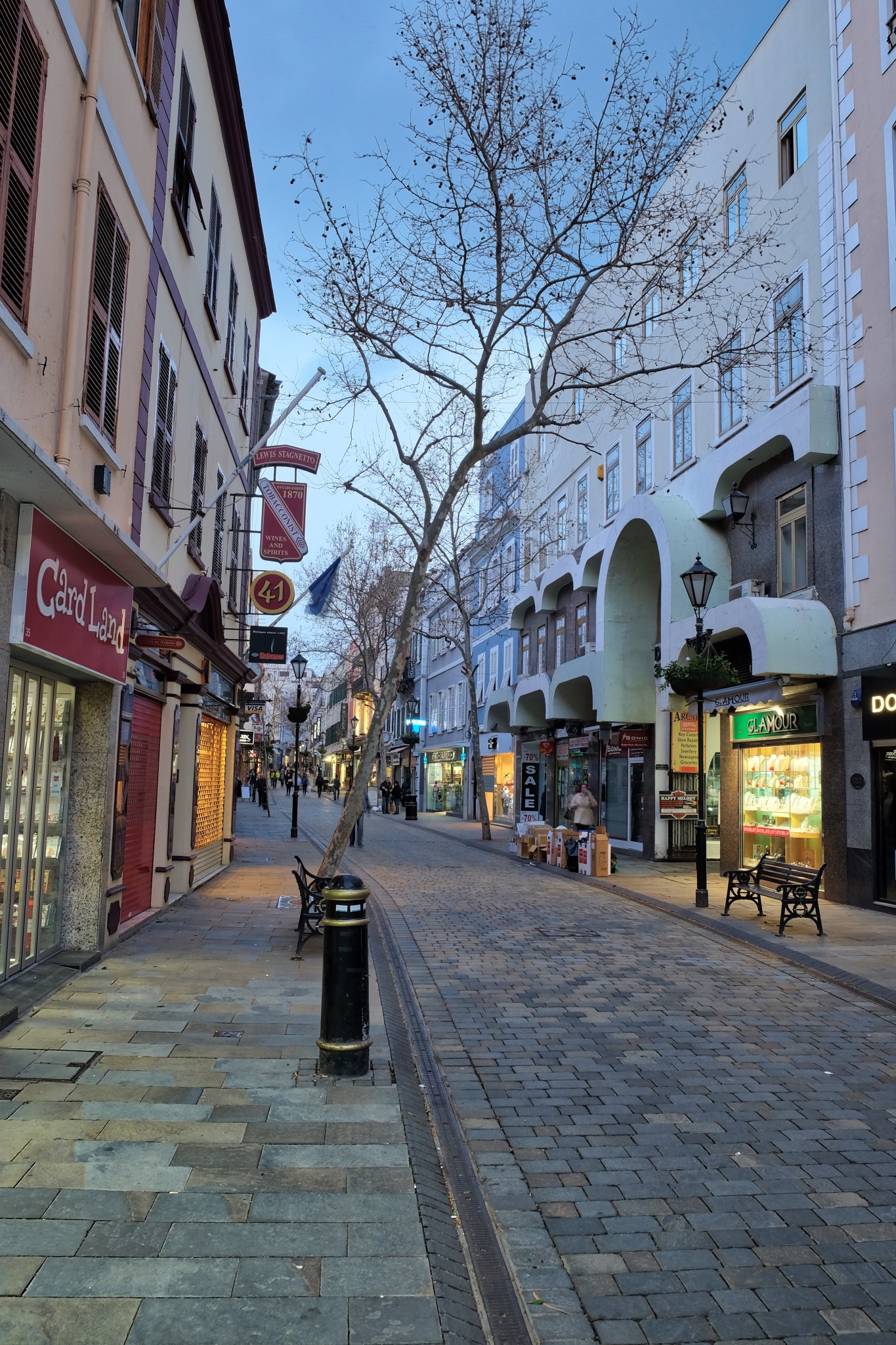 The central walking street is the focus of the town and the only developed commercial area. There are sweet cafes, bakeries, and shops all along here . . . as well as tawdry tourist curios shops where I bought a refrigerator magnet.
The central walking street is the focus of the town and the only developed commercial area. There are sweet cafes, bakeries, and shops all along here . . . as well as tawdry tourist curios shops where I bought a refrigerator magnet.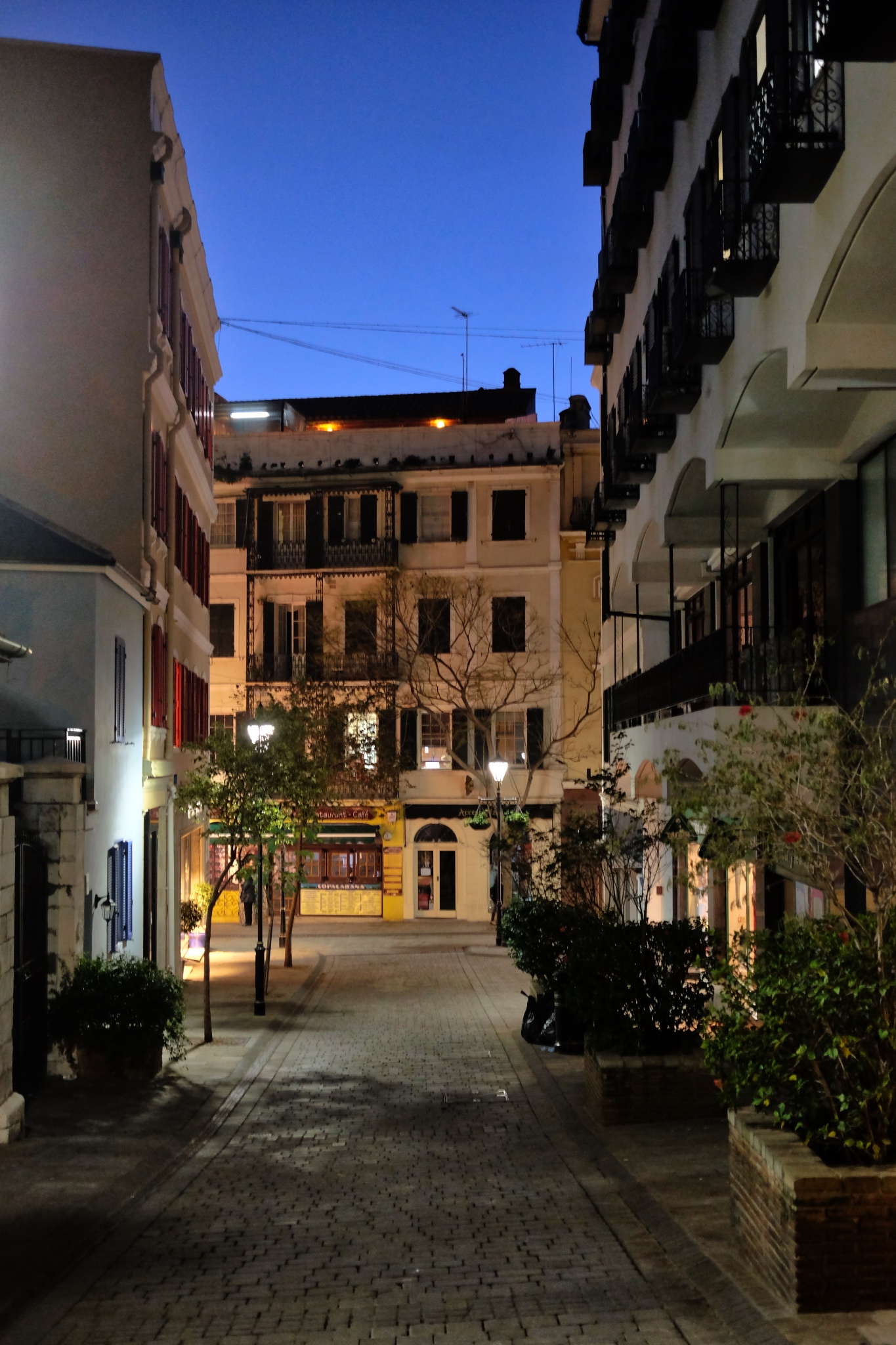 In my opinion, Gibraltar becomes even more interesting, and beautiful, when the sun sets.
In my opinion, Gibraltar becomes even more interesting, and beautiful, when the sun sets.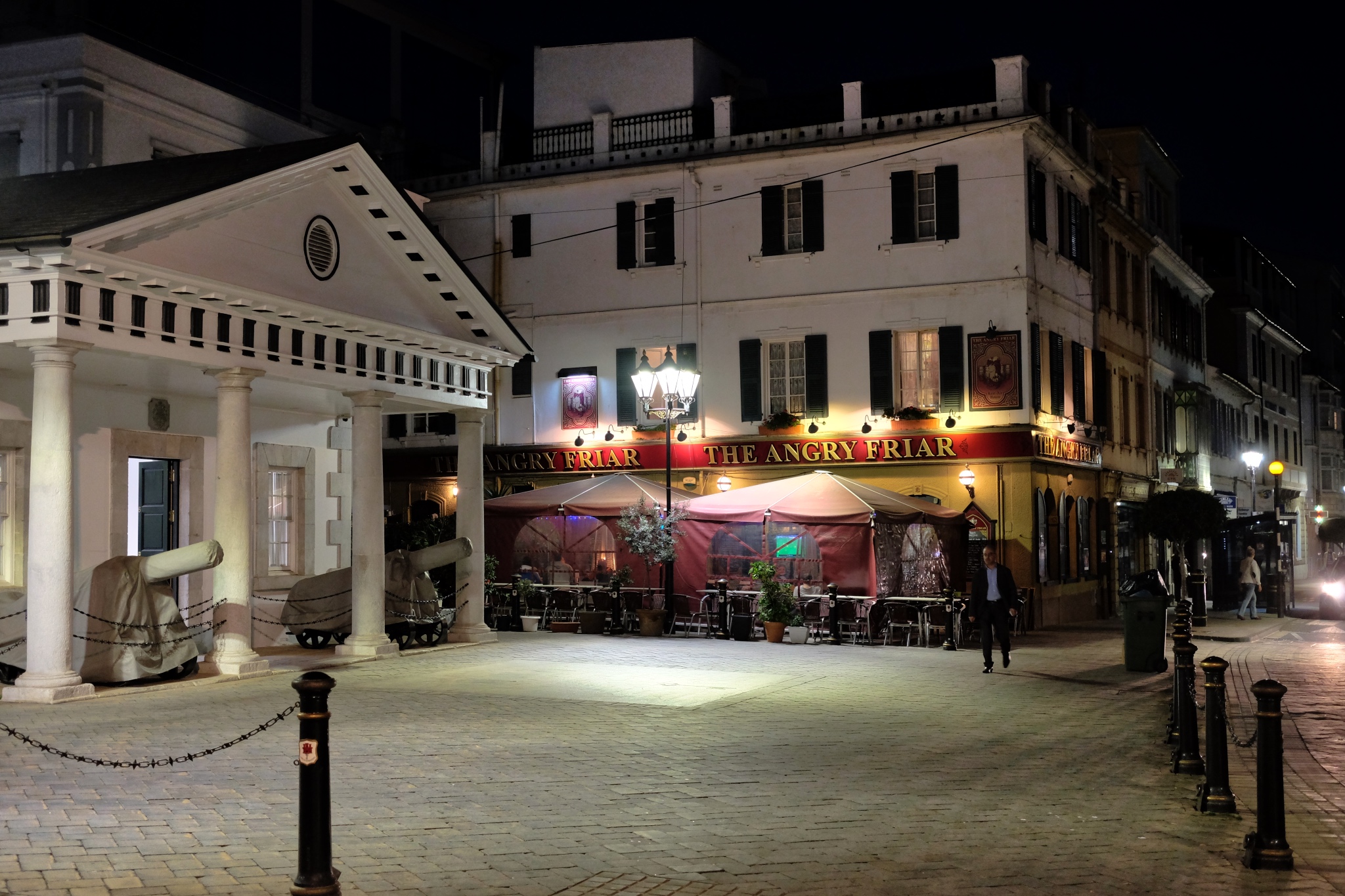 At night the squares are lit and the old government buildings stand out in all their old glory.
At night the squares are lit and the old government buildings stand out in all their old glory.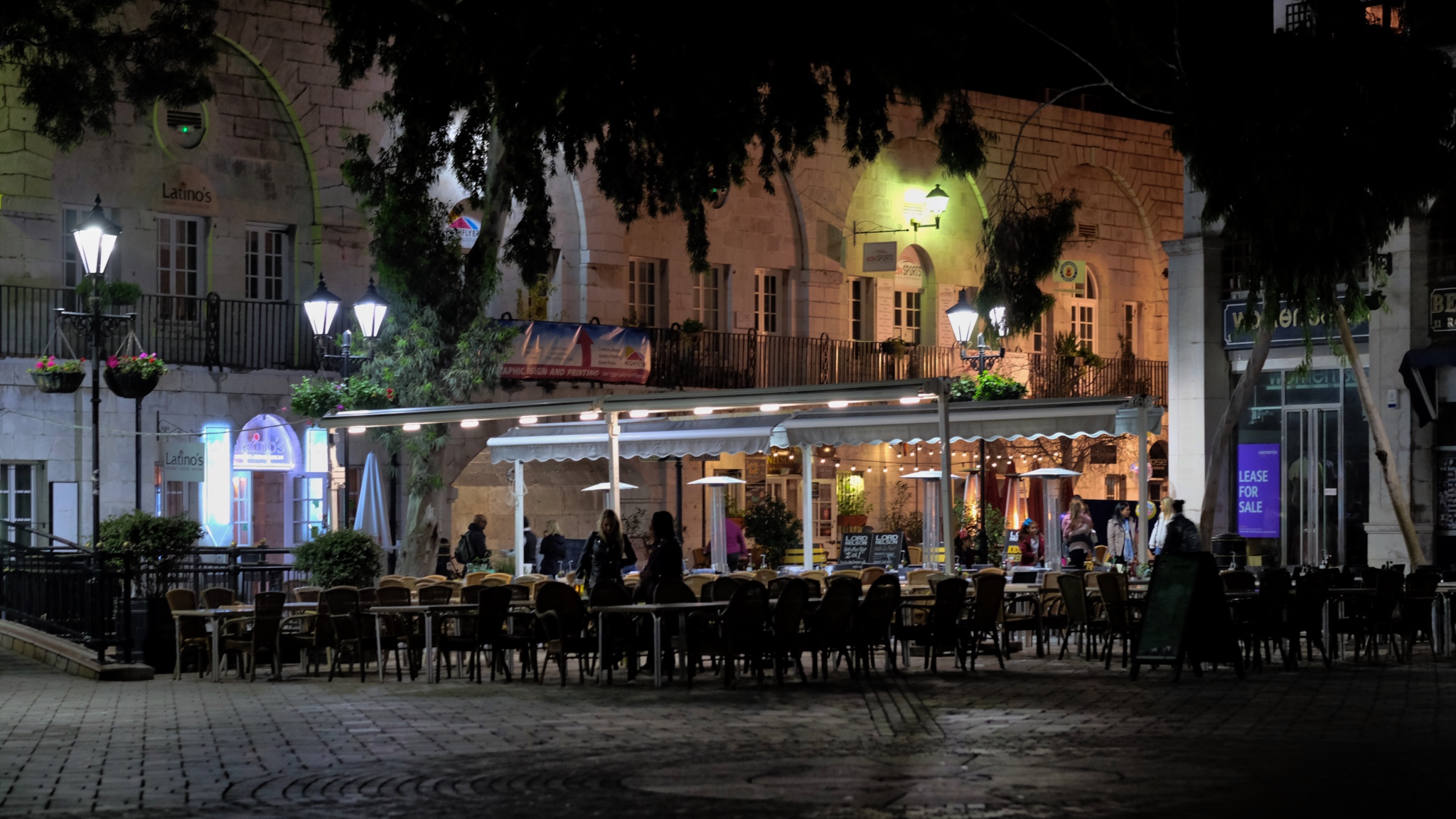 In the evening people, tourists and locals, come out to the cafes in Casement Square. One can imagine this space filled with thousands of cruise ship passengers later in the summer.
In the evening people, tourists and locals, come out to the cafes in Casement Square. One can imagine this space filled with thousands of cruise ship passengers later in the summer.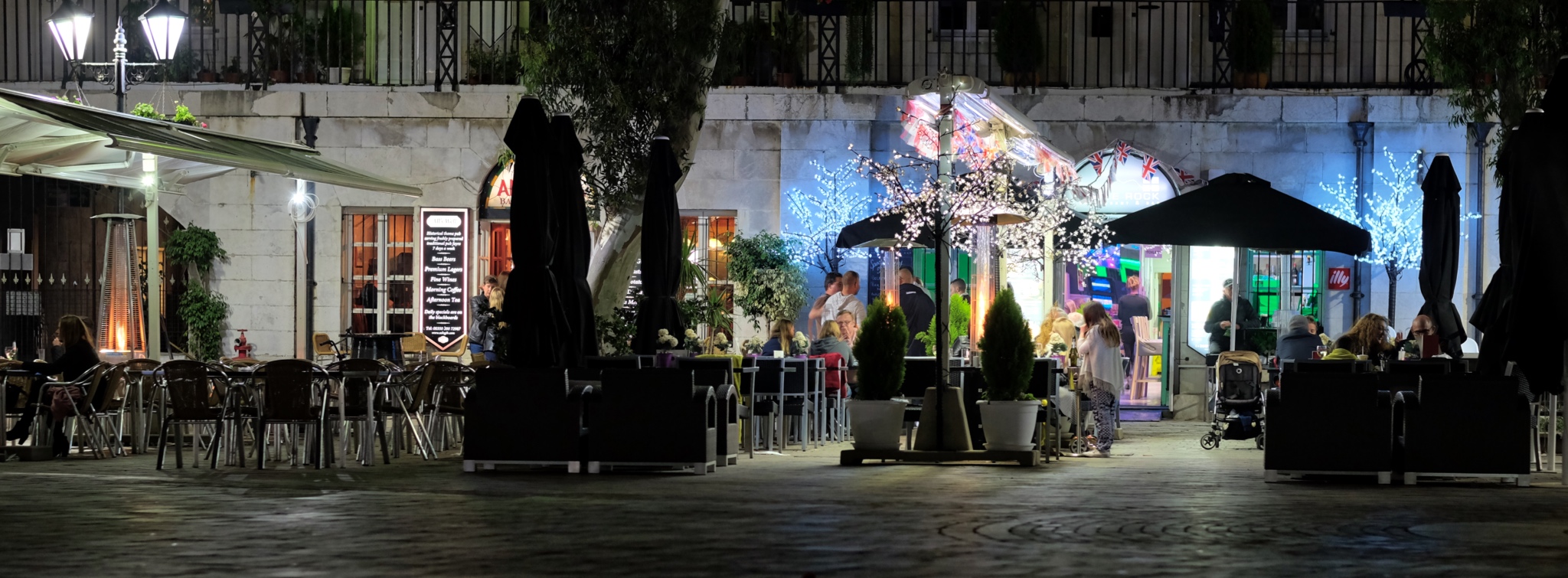
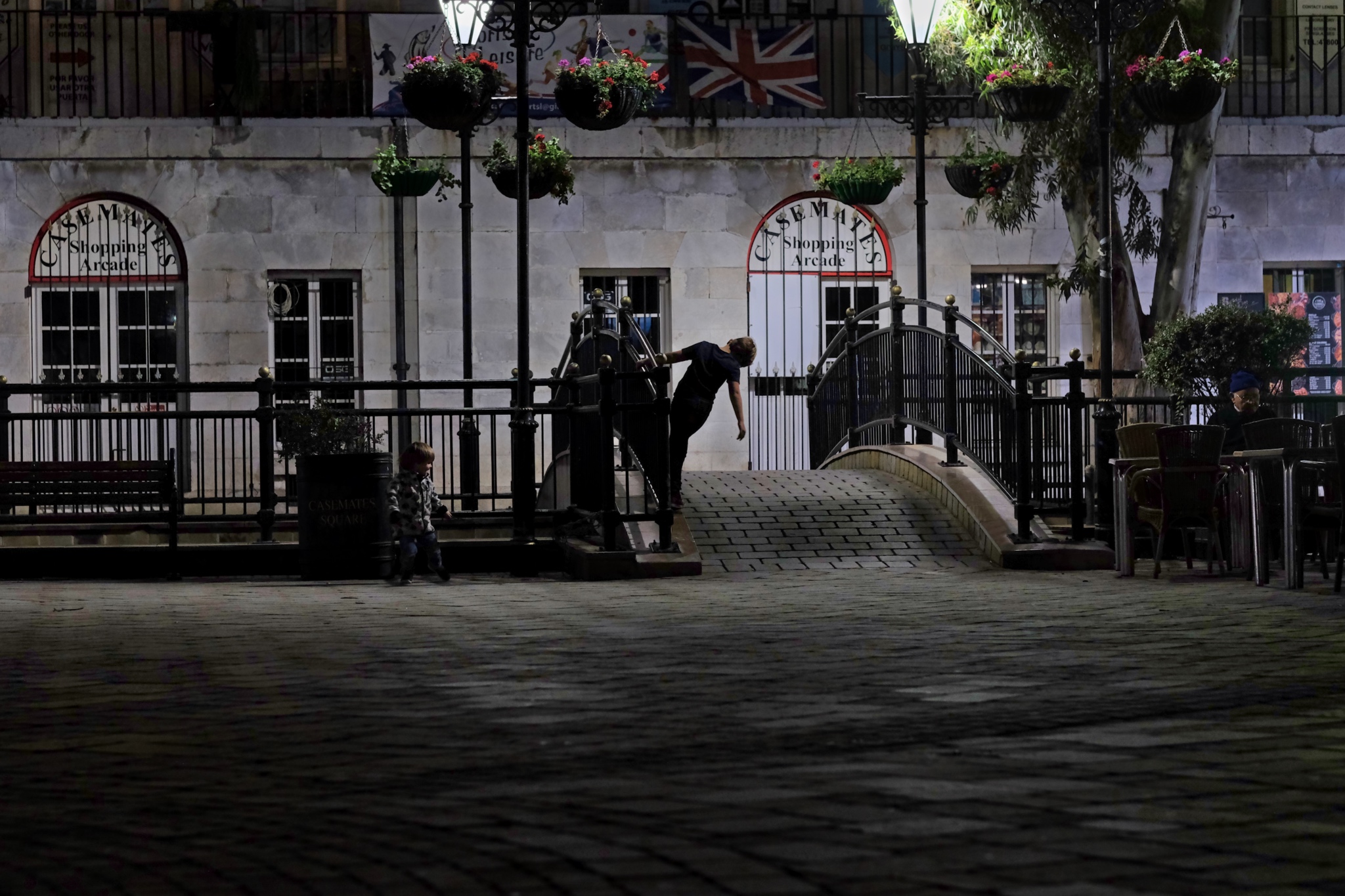 The children wandered free around the square as the adults conversed over wine.
The children wandered free around the square as the adults conversed over wine. A happy girl skipped into my photo . . .
A happy girl skipped into my photo . . .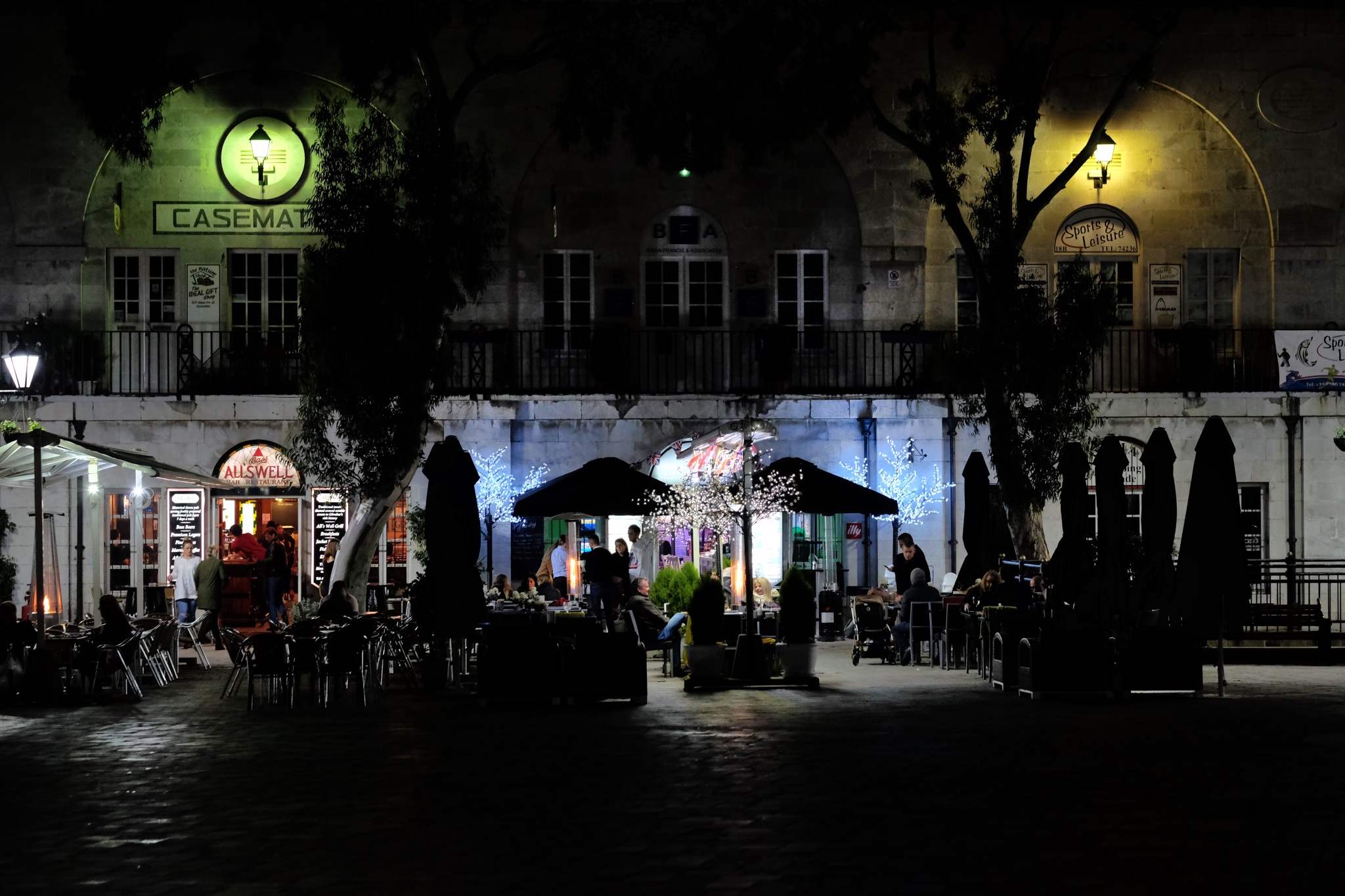 Casement Square.
Casement Square.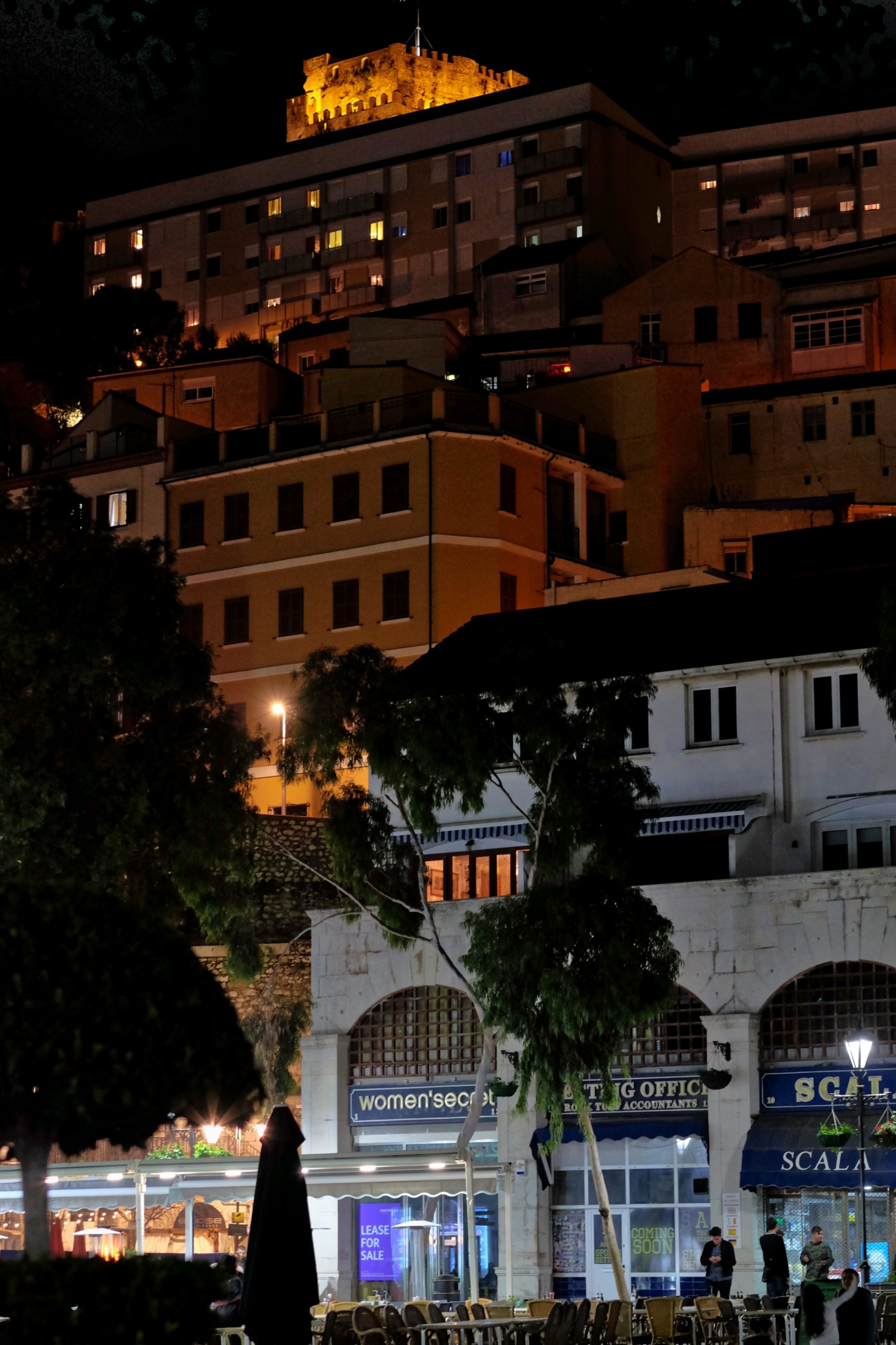 High above Casement Square, a Moorish castle looks on . . . .
High above Casement Square, a Moorish castle looks on . . . .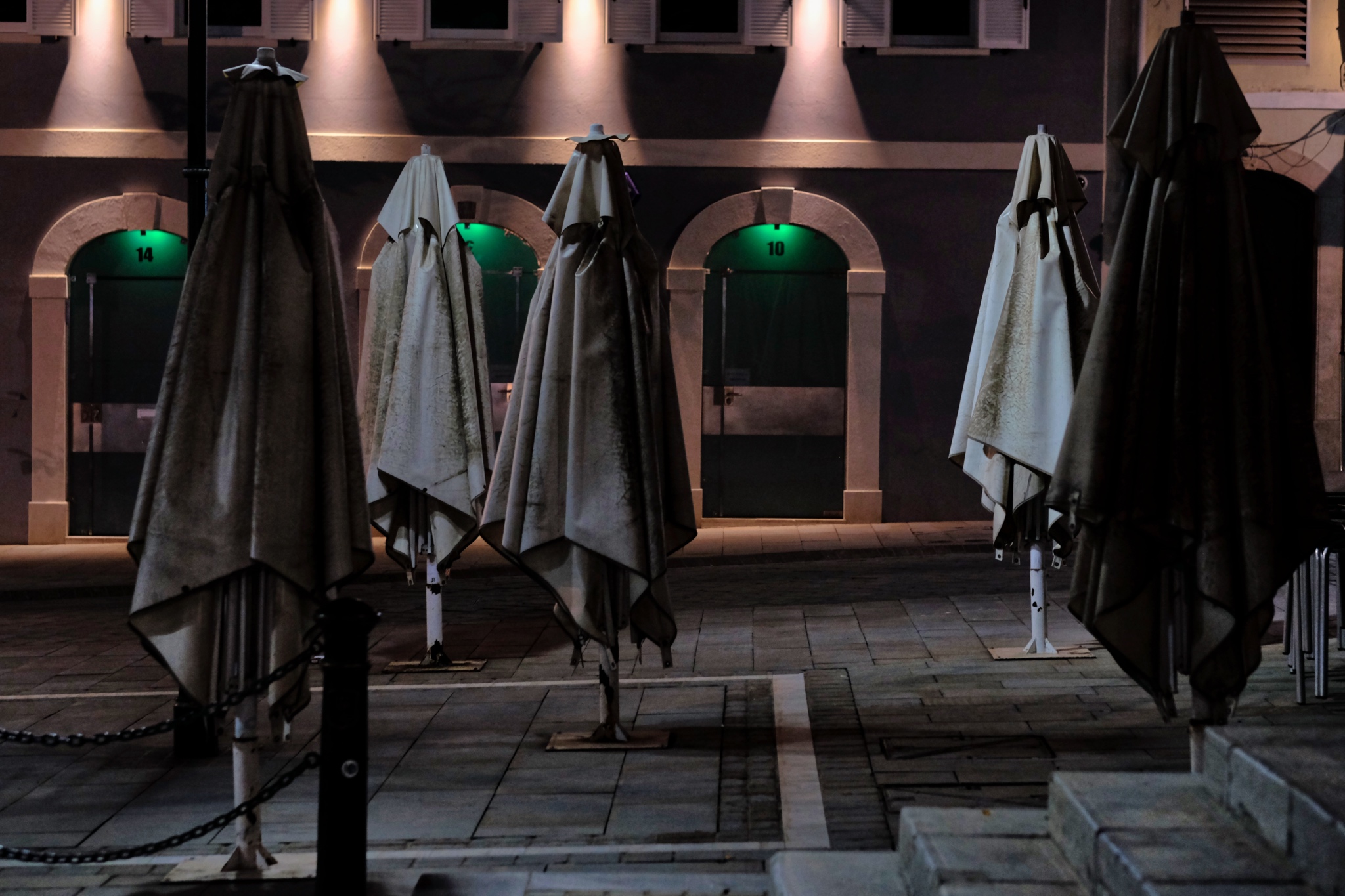 Later in the evening, the restaurants and cafes closed up . . . leaving their umbrellas like forlorn soldiers in a strange night.
Later in the evening, the restaurants and cafes closed up . . . leaving their umbrellas like forlorn soldiers in a strange night.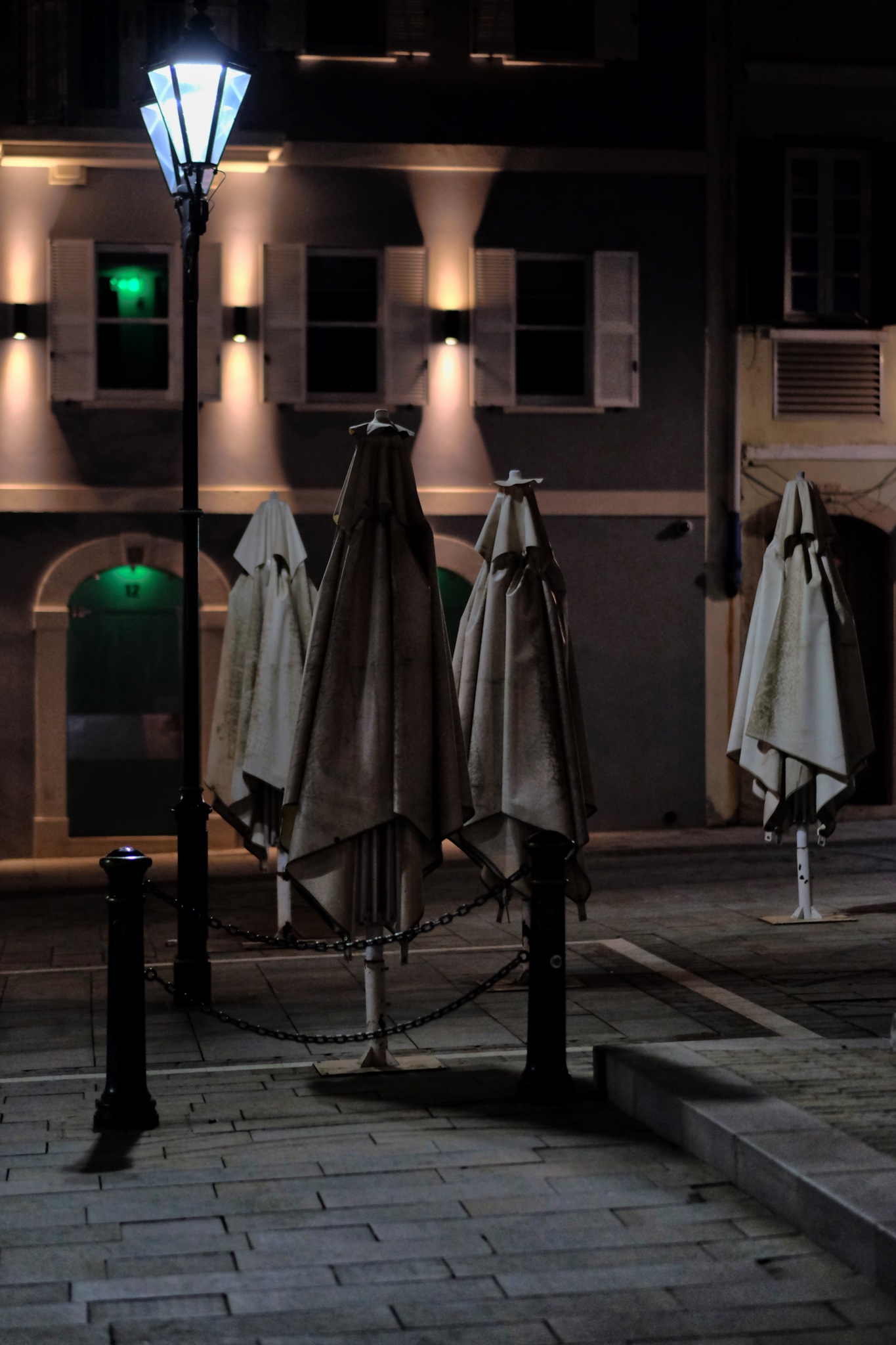 I was startled when I first saw these visages of another world!
I was startled when I first saw these visages of another world!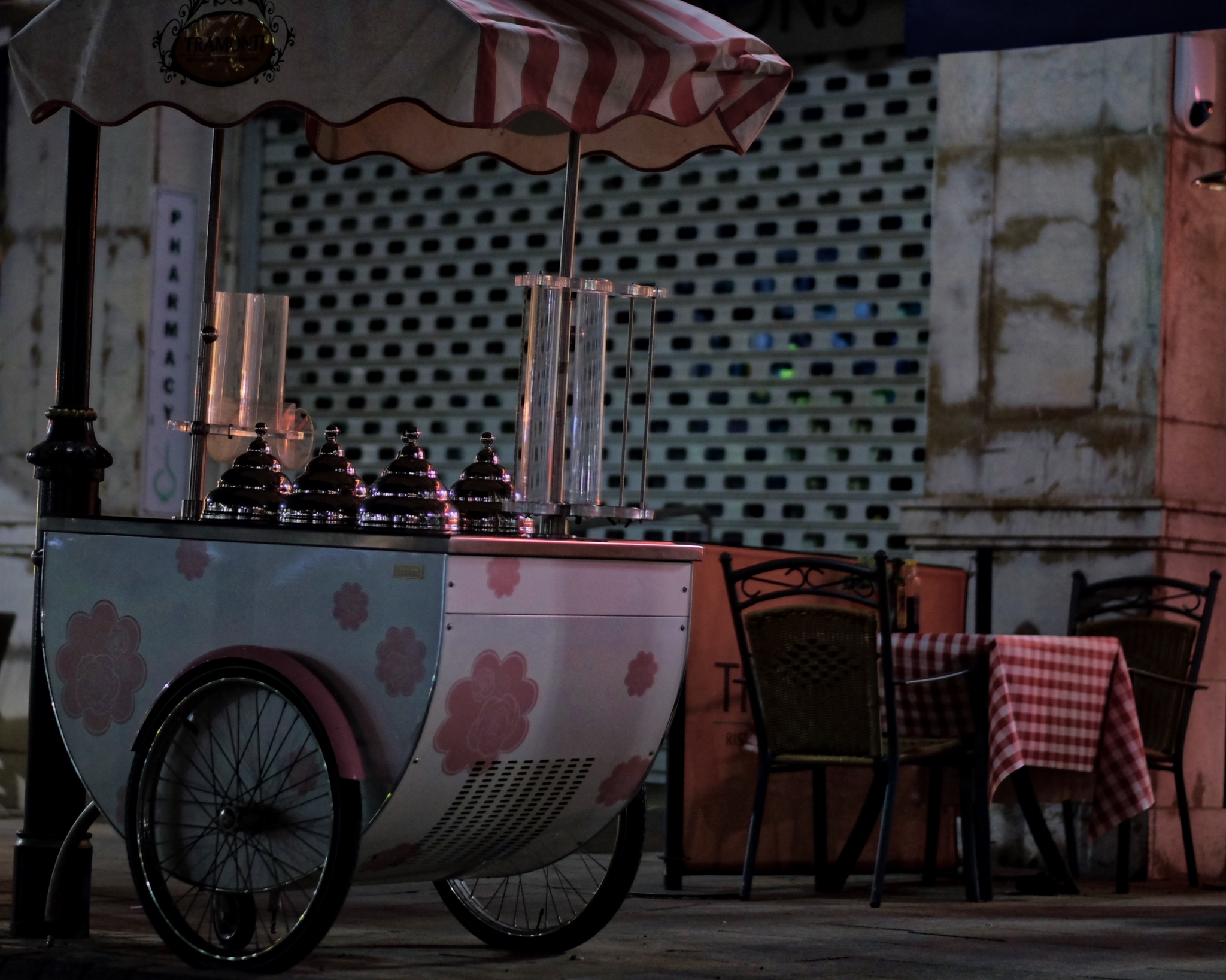 My other photographic subject obsession are push carts of all kinds. This ice cream cart waiting for another day was just fantastic.
My other photographic subject obsession are push carts of all kinds. This ice cream cart waiting for another day was just fantastic.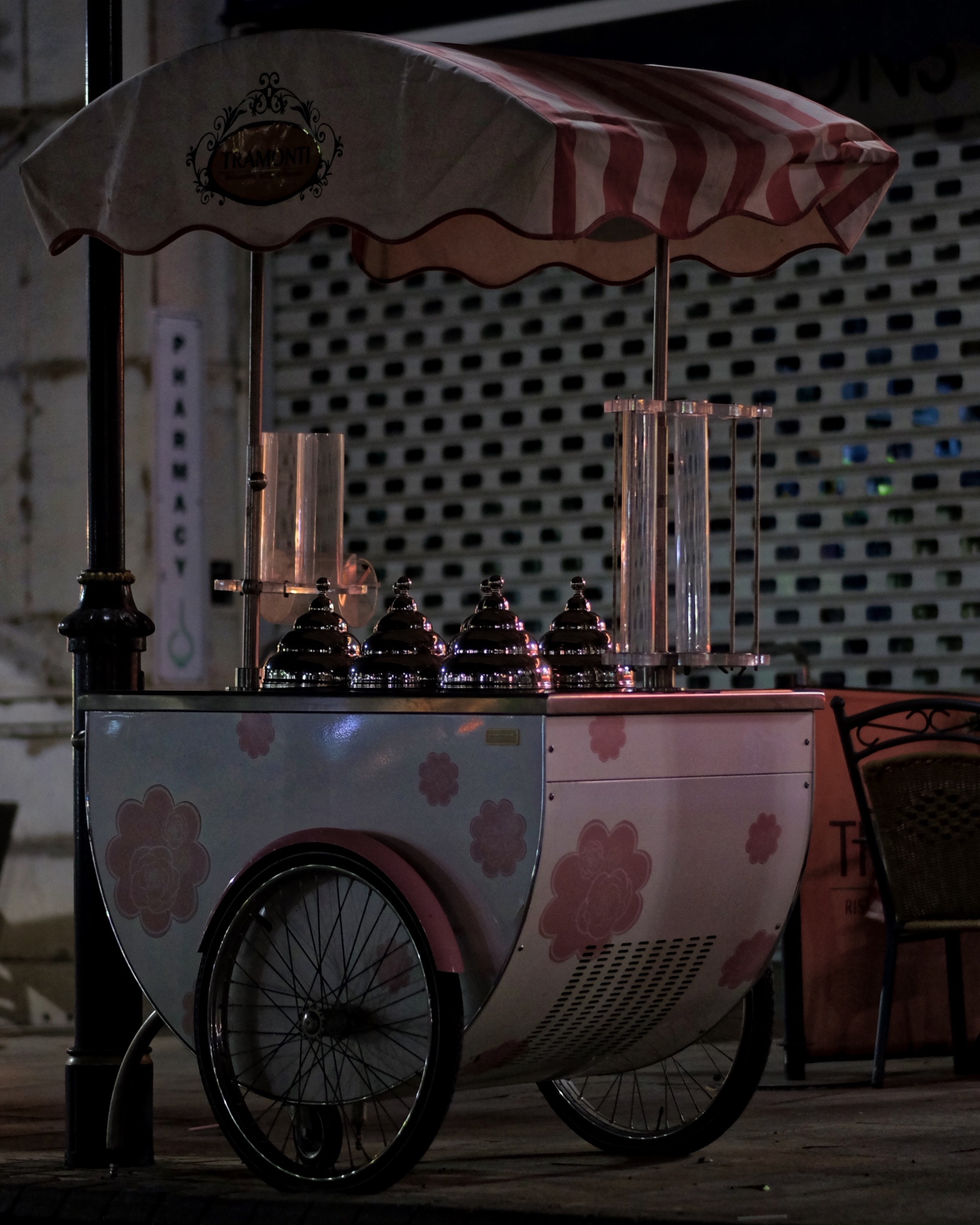
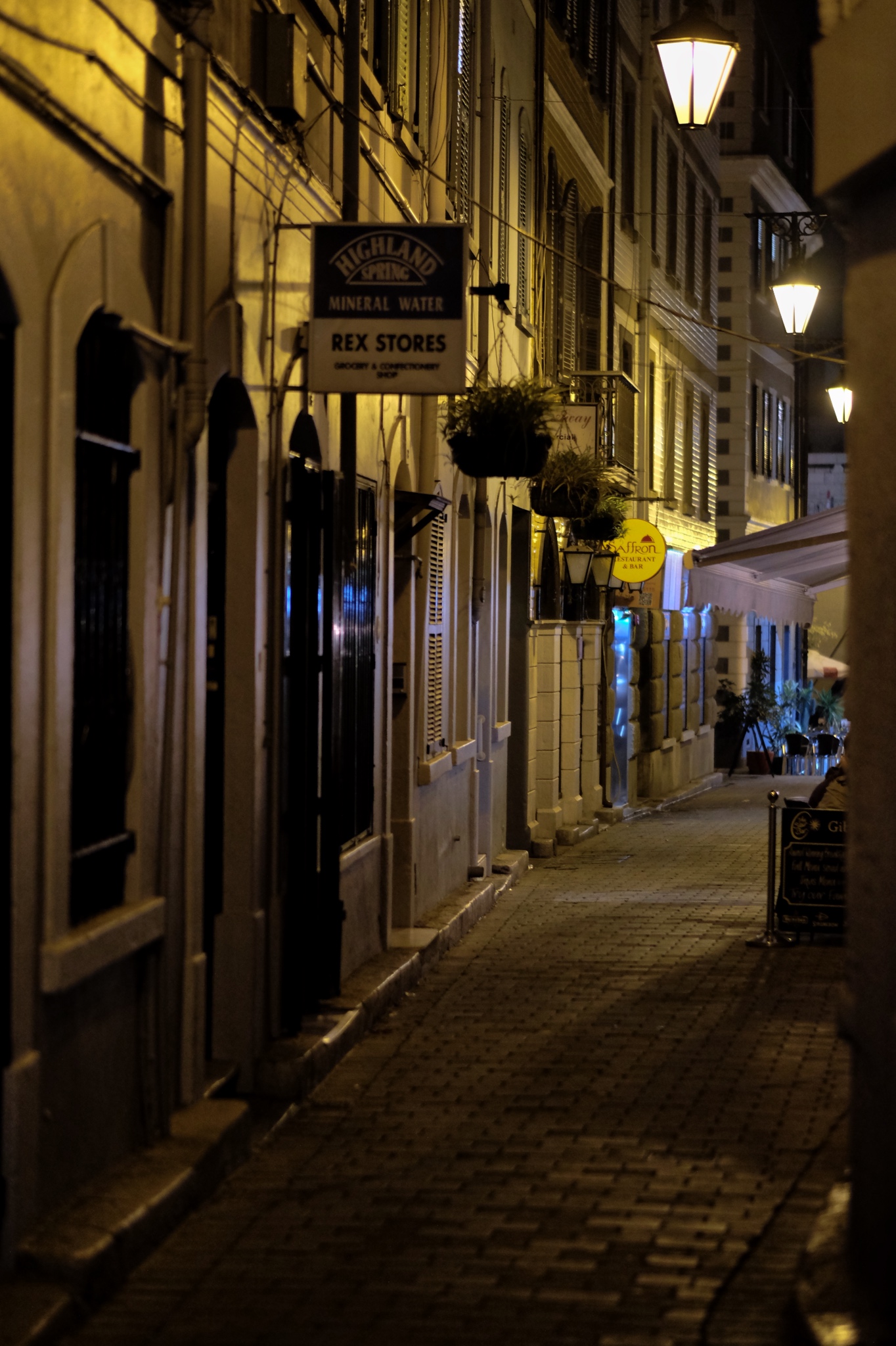 One evening (of the three) I went back out of the hotel late at night . . . to capture the abandoned streets and alleys.
One evening (of the three) I went back out of the hotel late at night . . . to capture the abandoned streets and alleys.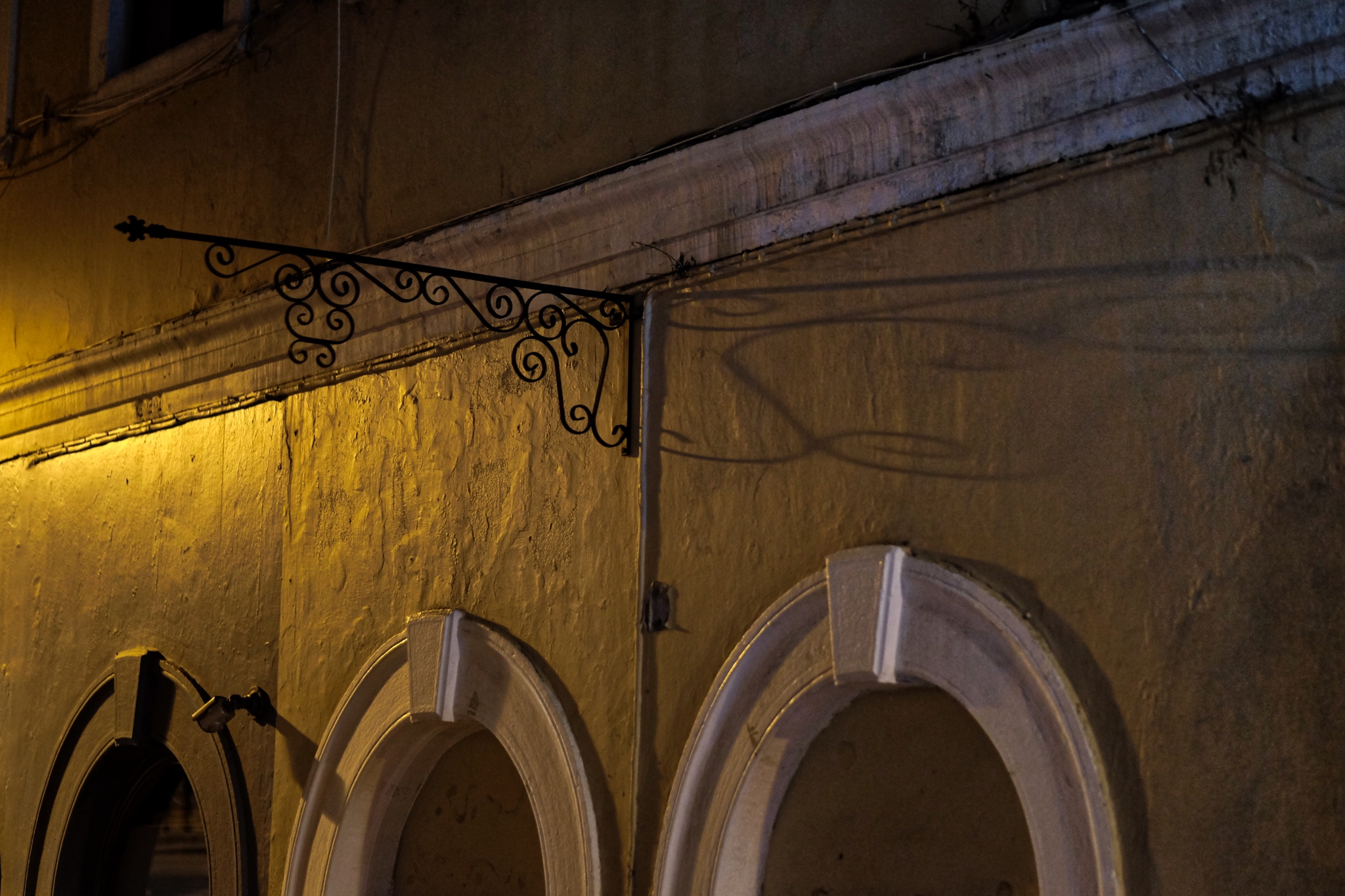 Light, textured surfaces, shadow, arches, color . . . wonderful.
Light, textured surfaces, shadow, arches, color . . . wonderful.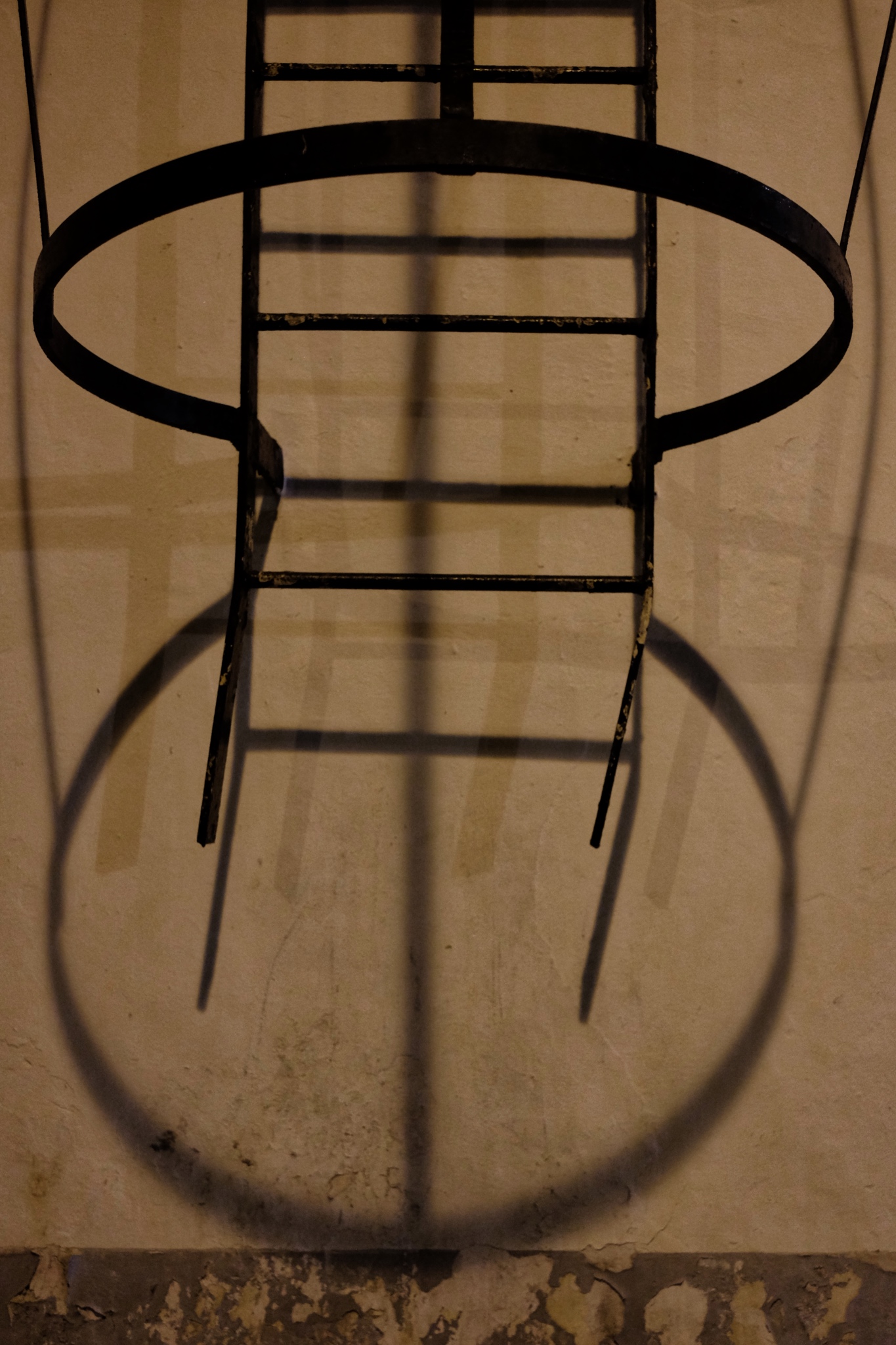 Ladder, light, shadow, and wall!
Ladder, light, shadow, and wall!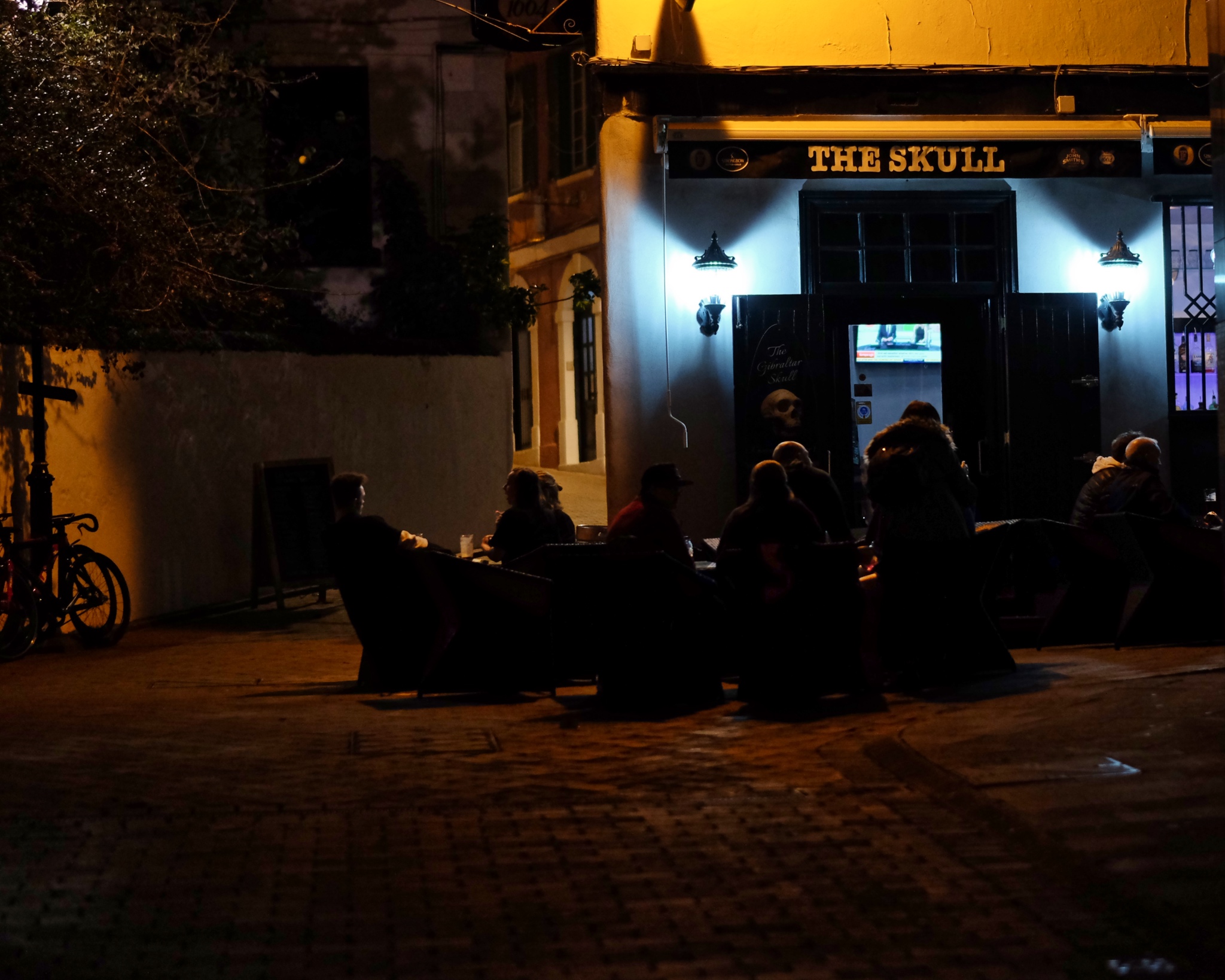 If the conversation is good, why go home? Well after midnight in Gibraltar.
If the conversation is good, why go home? Well after midnight in Gibraltar.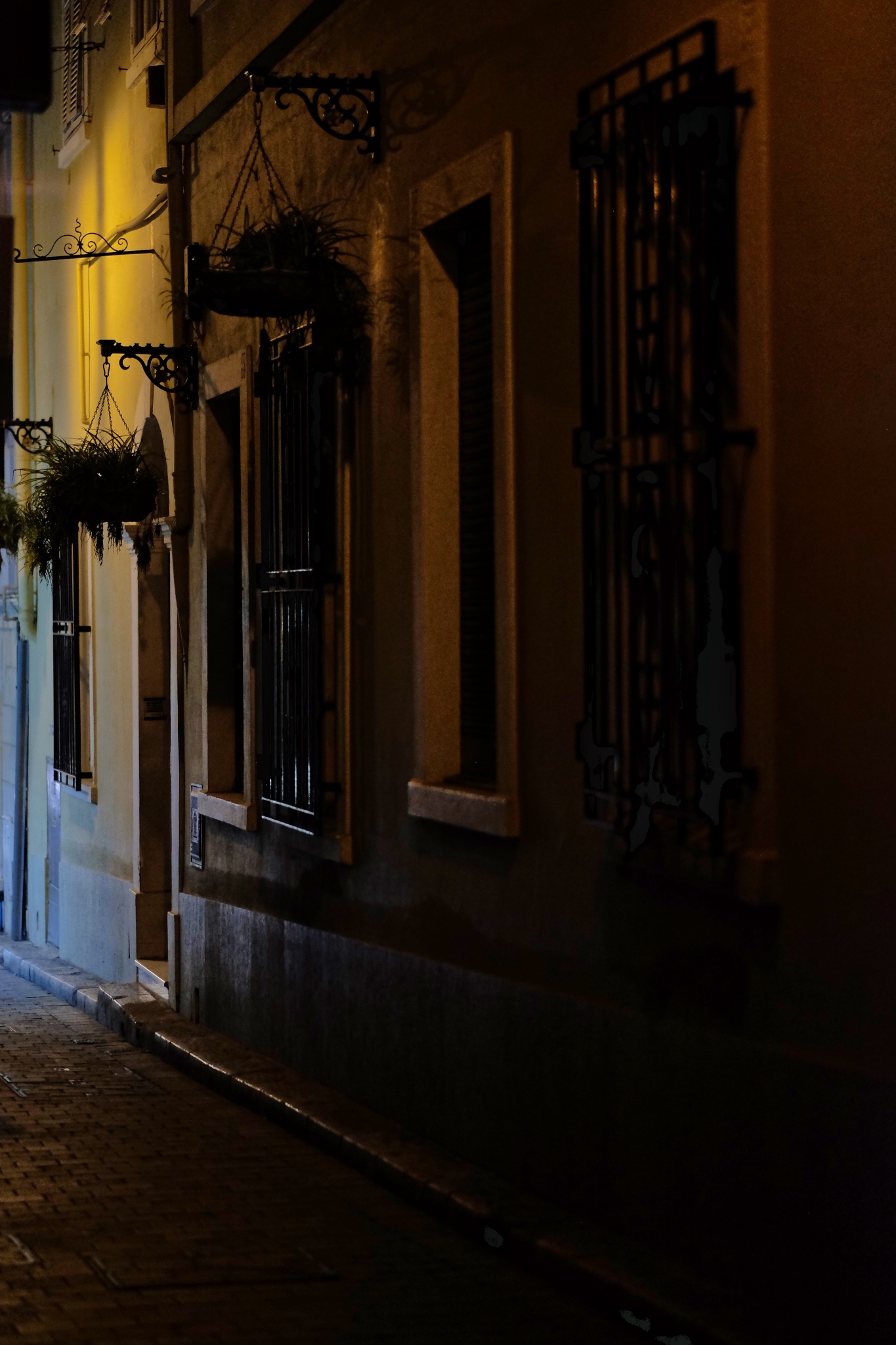 The dark streets where the only sounds were my footsteps.
The dark streets where the only sounds were my footsteps.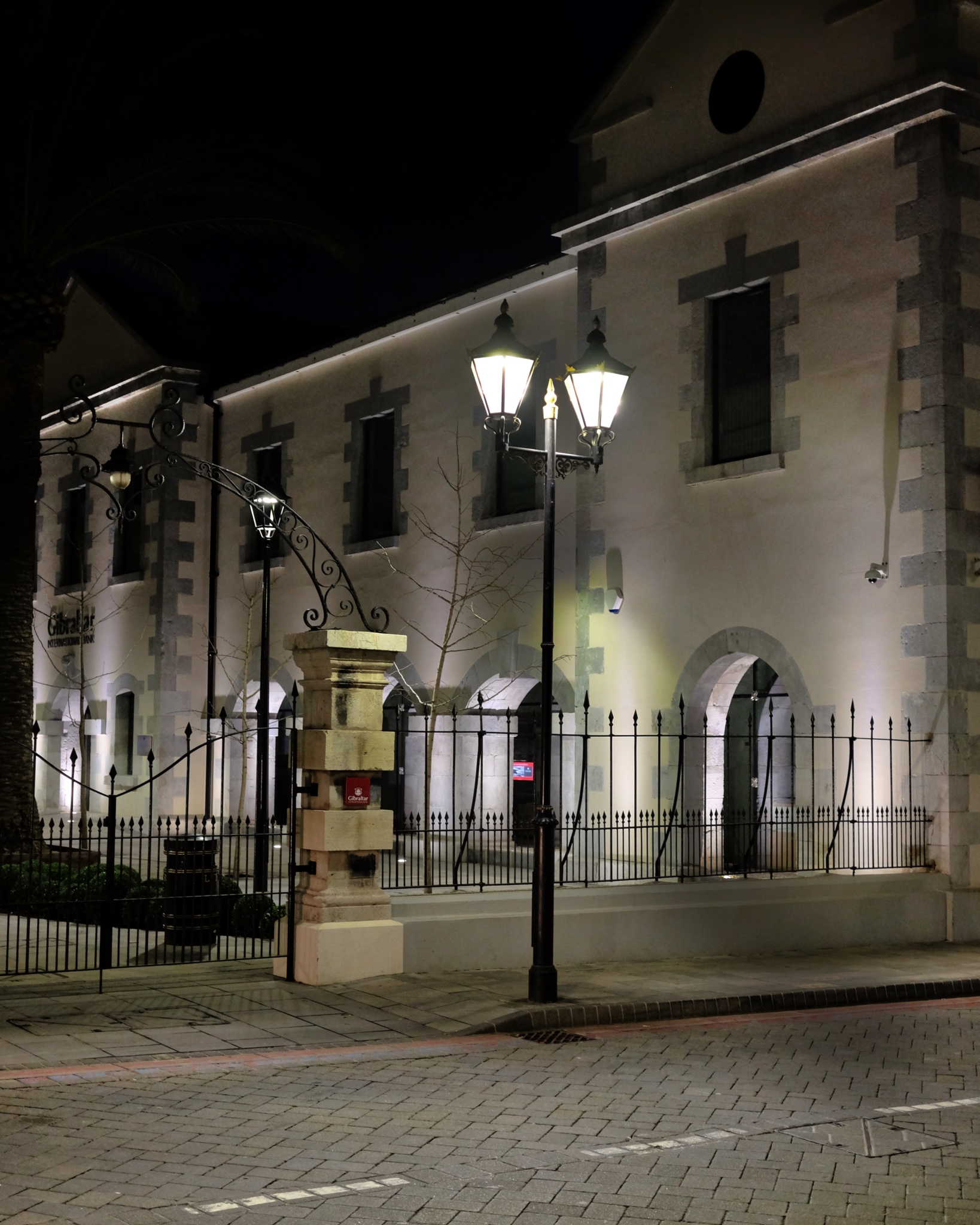 The historic government buildings were closed. Not a soul around.
The historic government buildings were closed. Not a soul around.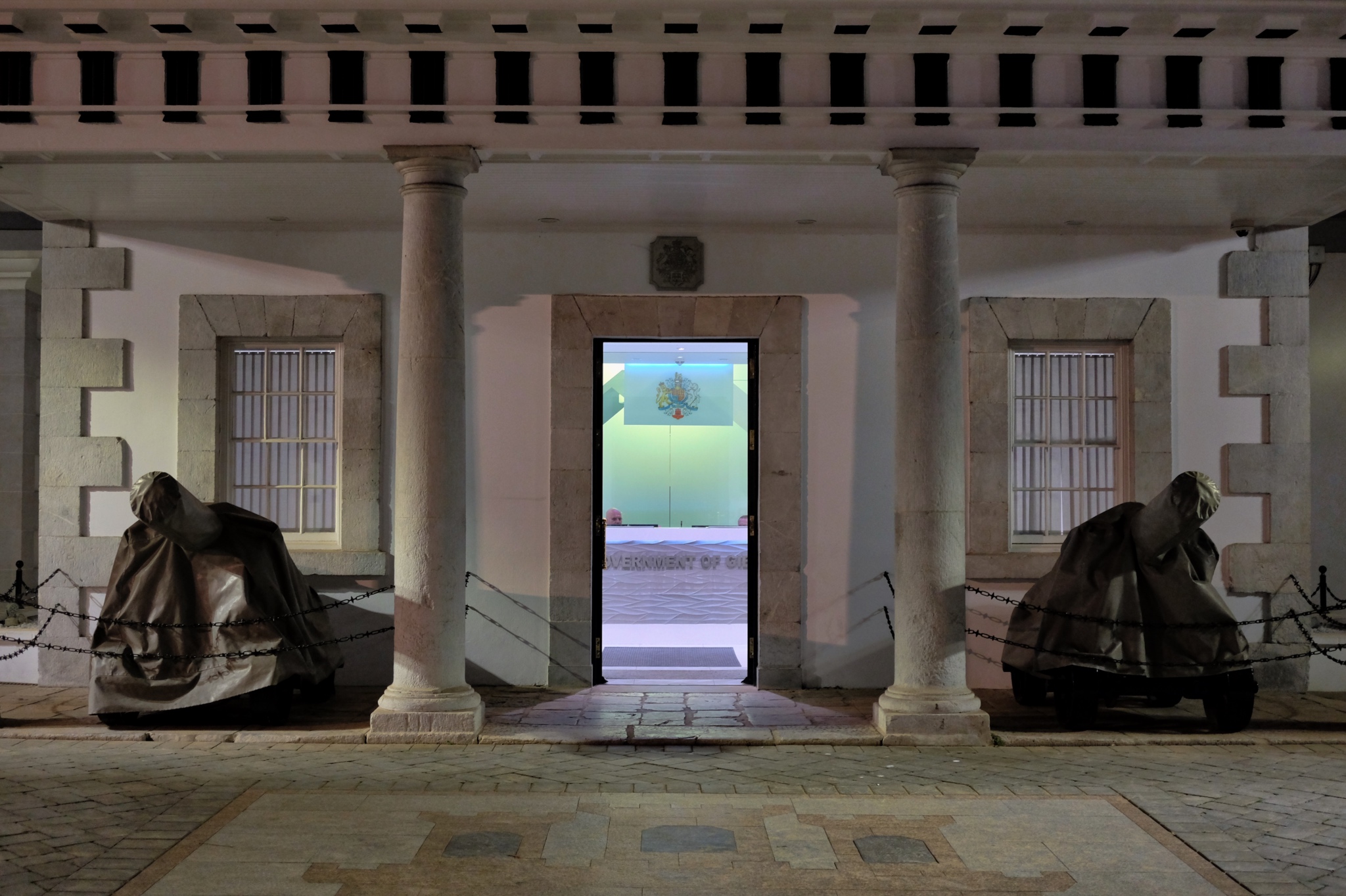 The "Government Of" . . . something or other at 01:00. Wonderful lighting . . . and only me there to see it. This must have been the police station; otherwise why were there still two men sitting behind the counter at that late hour?
The "Government Of" . . . something or other at 01:00. Wonderful lighting . . . and only me there to see it. This must have been the police station; otherwise why were there still two men sitting behind the counter at that late hour?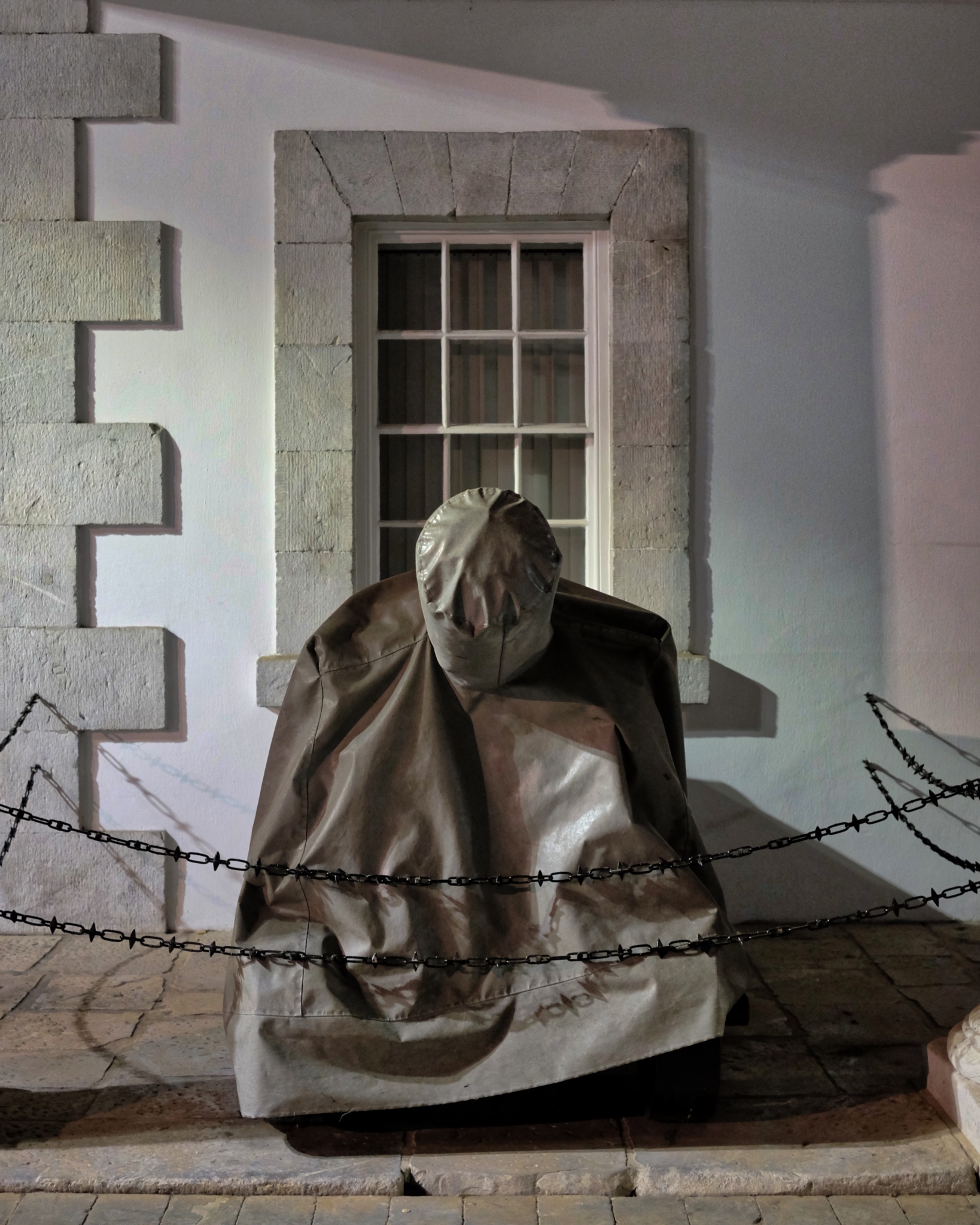 Such scrumptious shapes, line, color, shadow, and light.
Such scrumptious shapes, line, color, shadow, and light.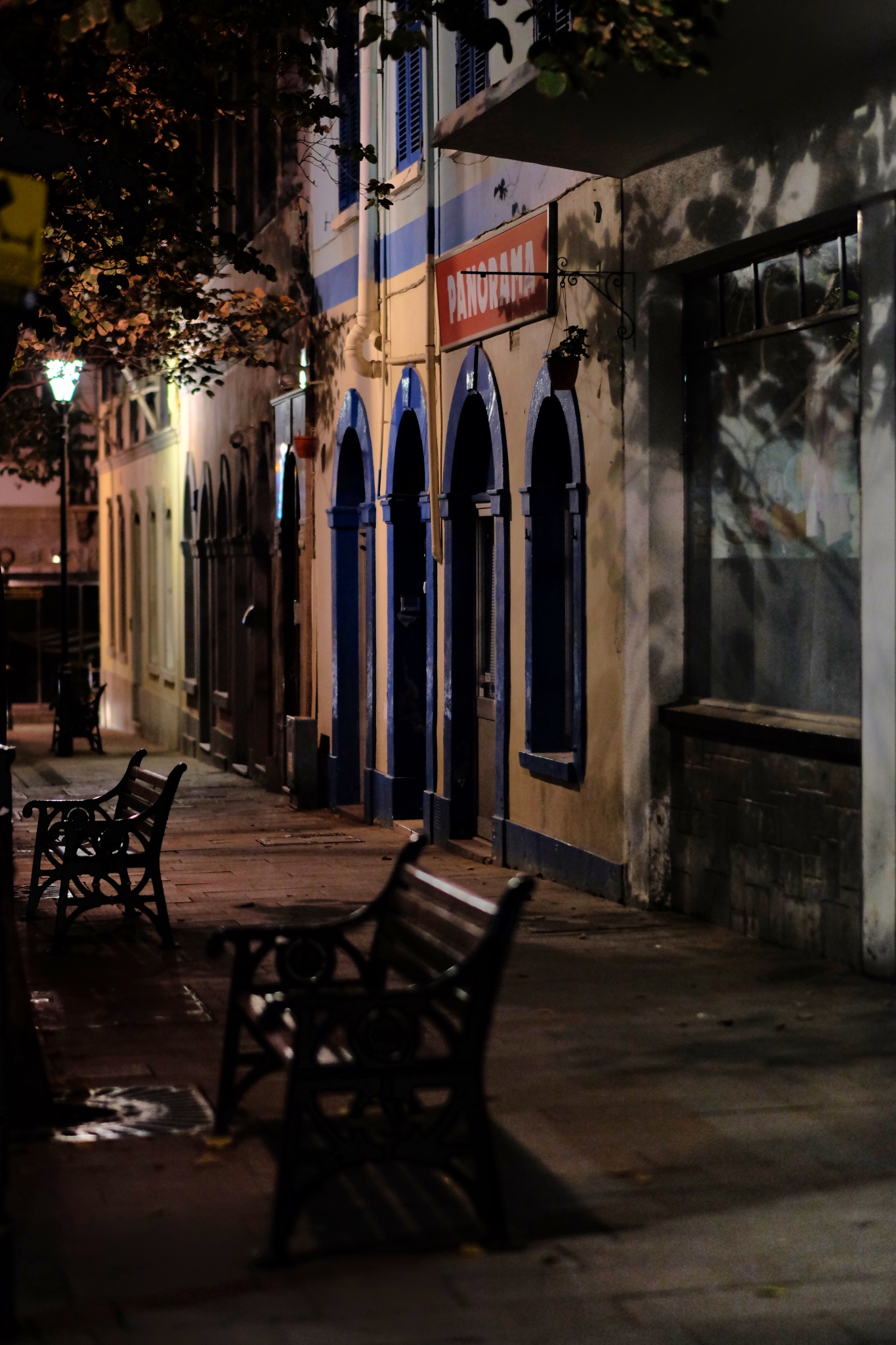 I walked through these same streets several times during the day without really noticing the relationships between shapes and structures . . .
I walked through these same streets several times during the day without really noticing the relationships between shapes and structures . . .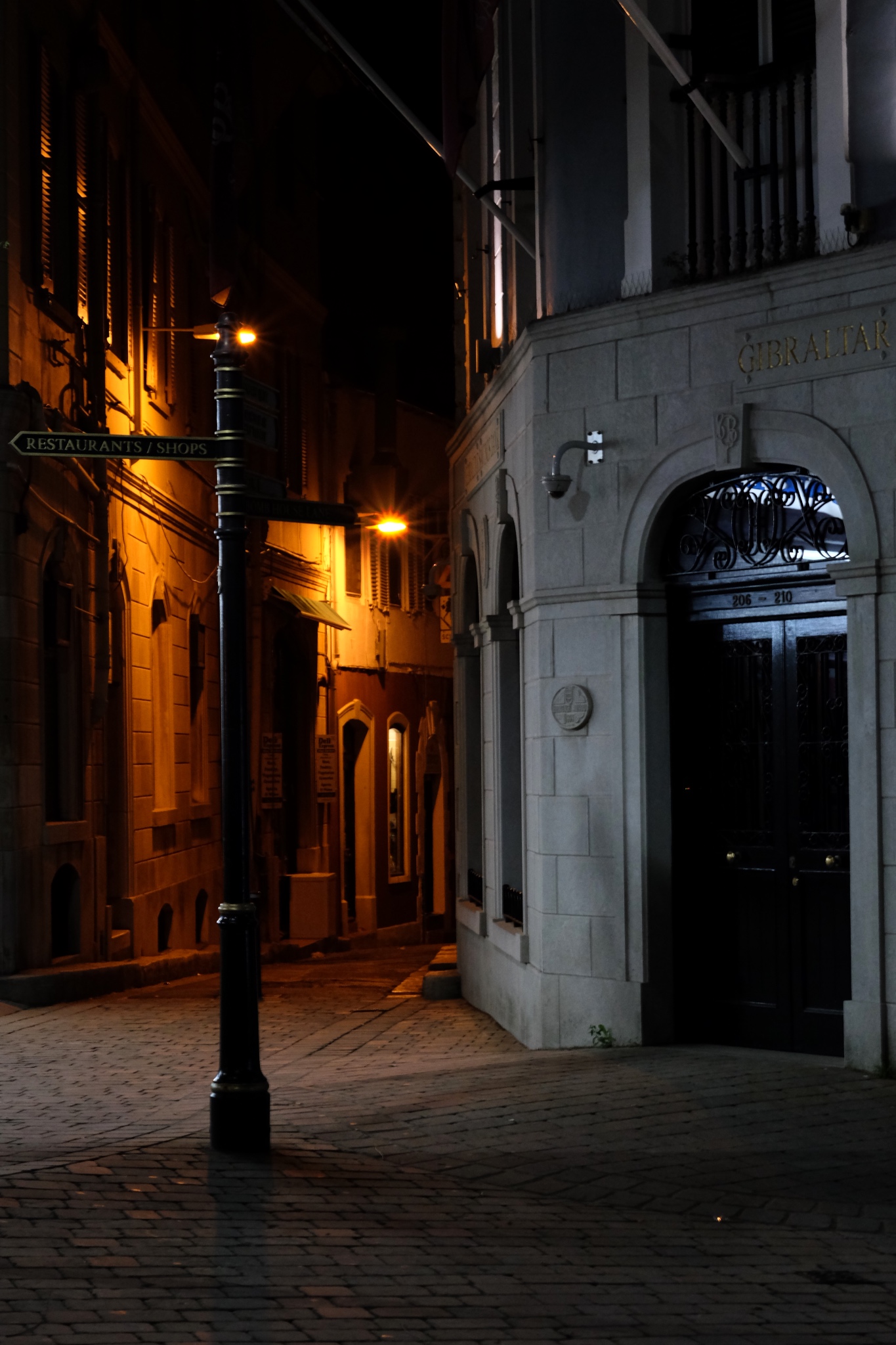 An inviting passage to . . . . who knows where.
An inviting passage to . . . . who knows where.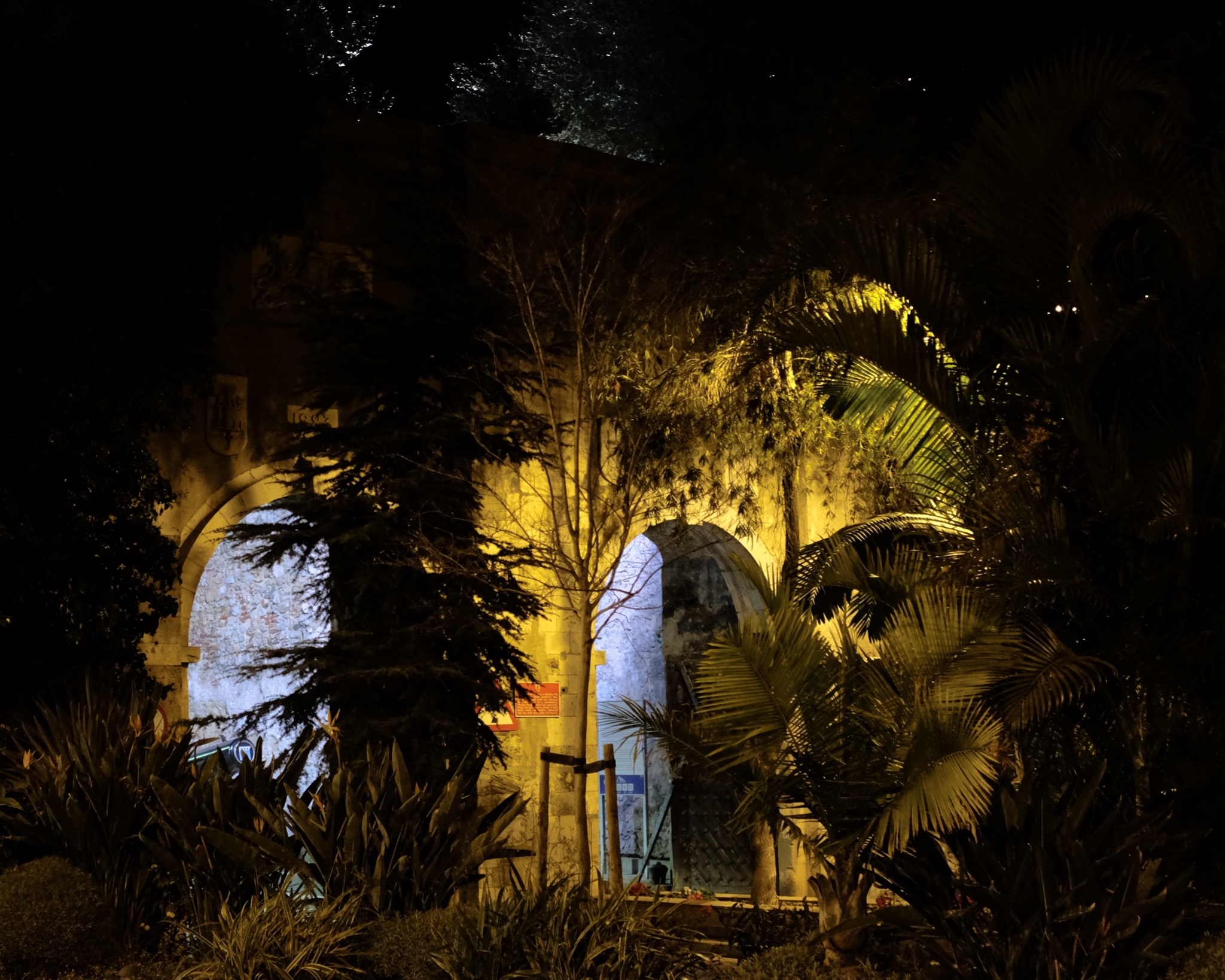 I literally walked from one end of the town to the other in only two hours . . . back out the southern city gate . . .
I literally walked from one end of the town to the other in only two hours . . . back out the southern city gate . . .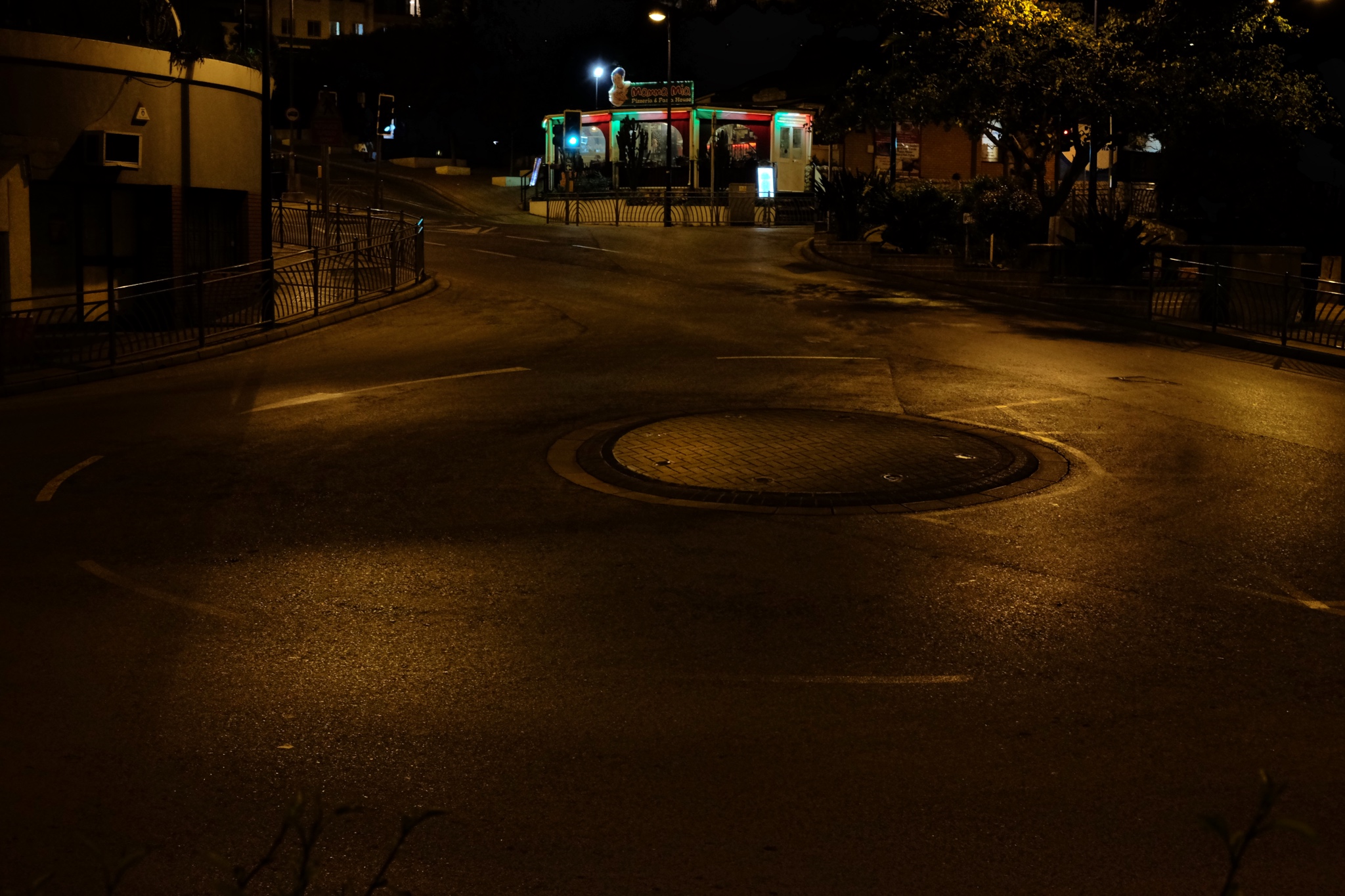 I walked all the eay back an abandoned traffic circle . . . and then back to my nearby hotel. I had had such an inspiring walkabout in the night streets of Gibraltar.
I walked all the eay back an abandoned traffic circle . . . and then back to my nearby hotel. I had had such an inspiring walkabout in the night streets of Gibraltar.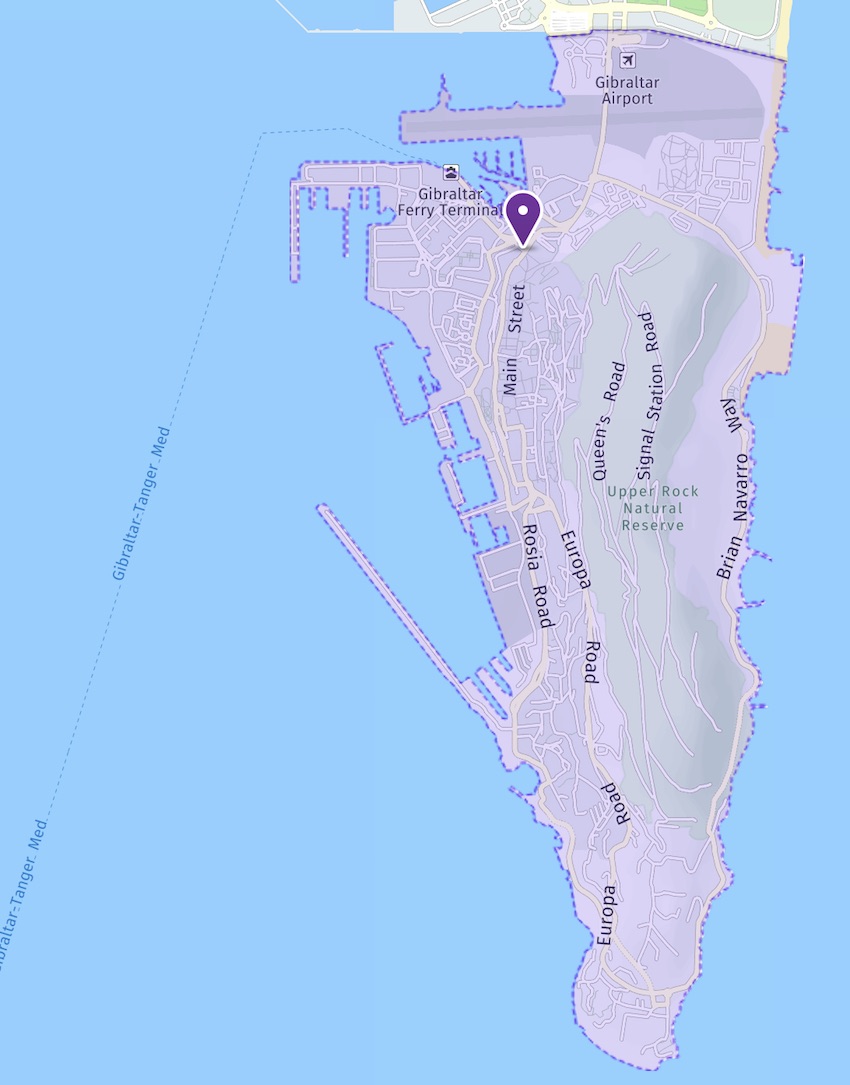
A Ramble in Scotland with a Visiting Friend (10/31 - 11/3, 2015)
 Sunday, March 18, 2018 at 11:18AM
Sunday, March 18, 2018 at 11:18AM Although I have left Scotland and am living back in Bangkok now, I am still going through photos I took on my many photographic rambles. This entry is of a three day ramble (mostly the northeast of Scotland) I took when my good friend John Stiles visited me. I took many, many photos on this ramble, so it will take some time for me to complete it. These are 'The Best of John's Visit.' Enjoy.
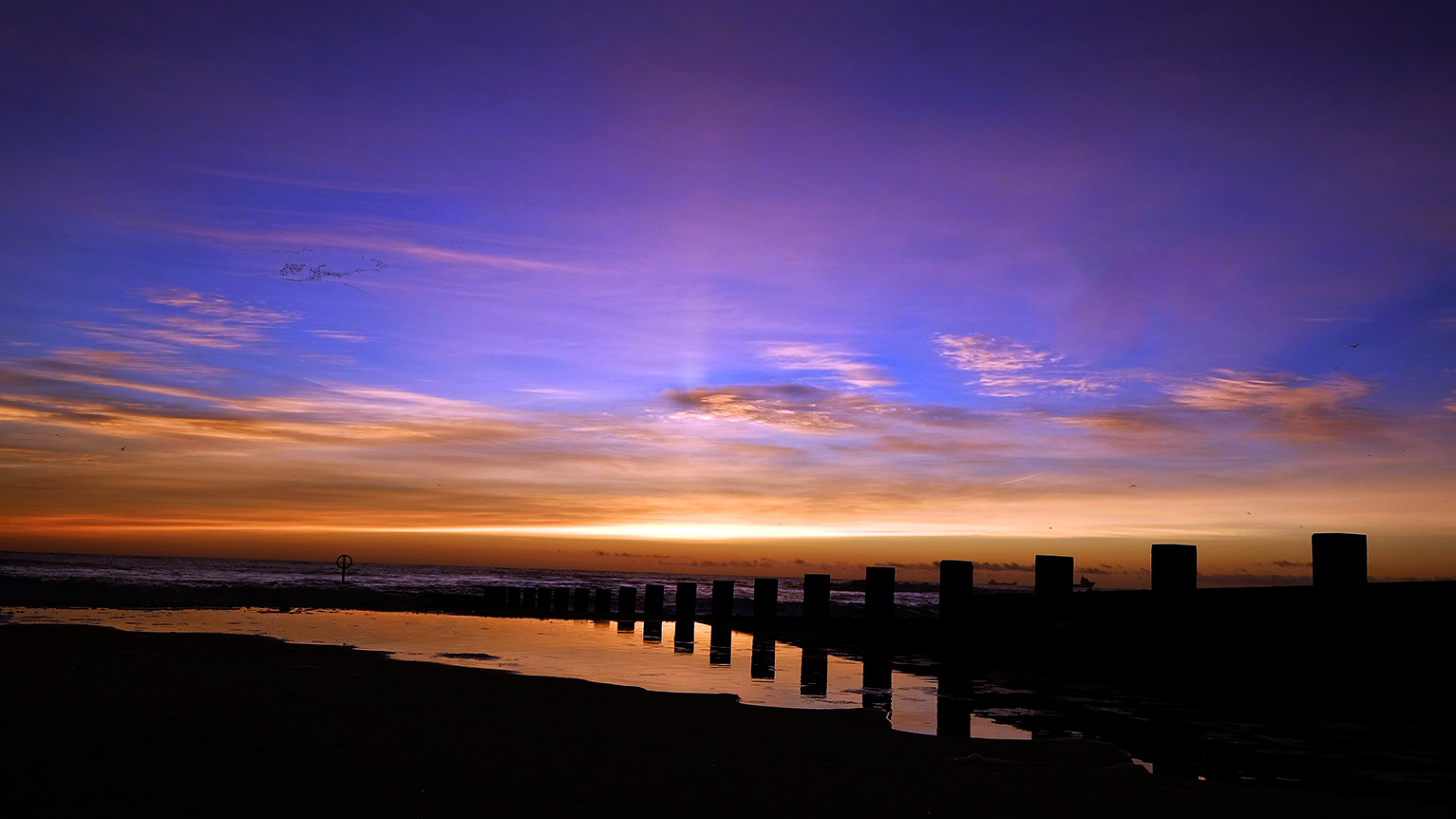 A North Sea sunrise along the Aberdeen Esplanade. Just above freezing.
A North Sea sunrise along the Aberdeen Esplanade. Just above freezing.
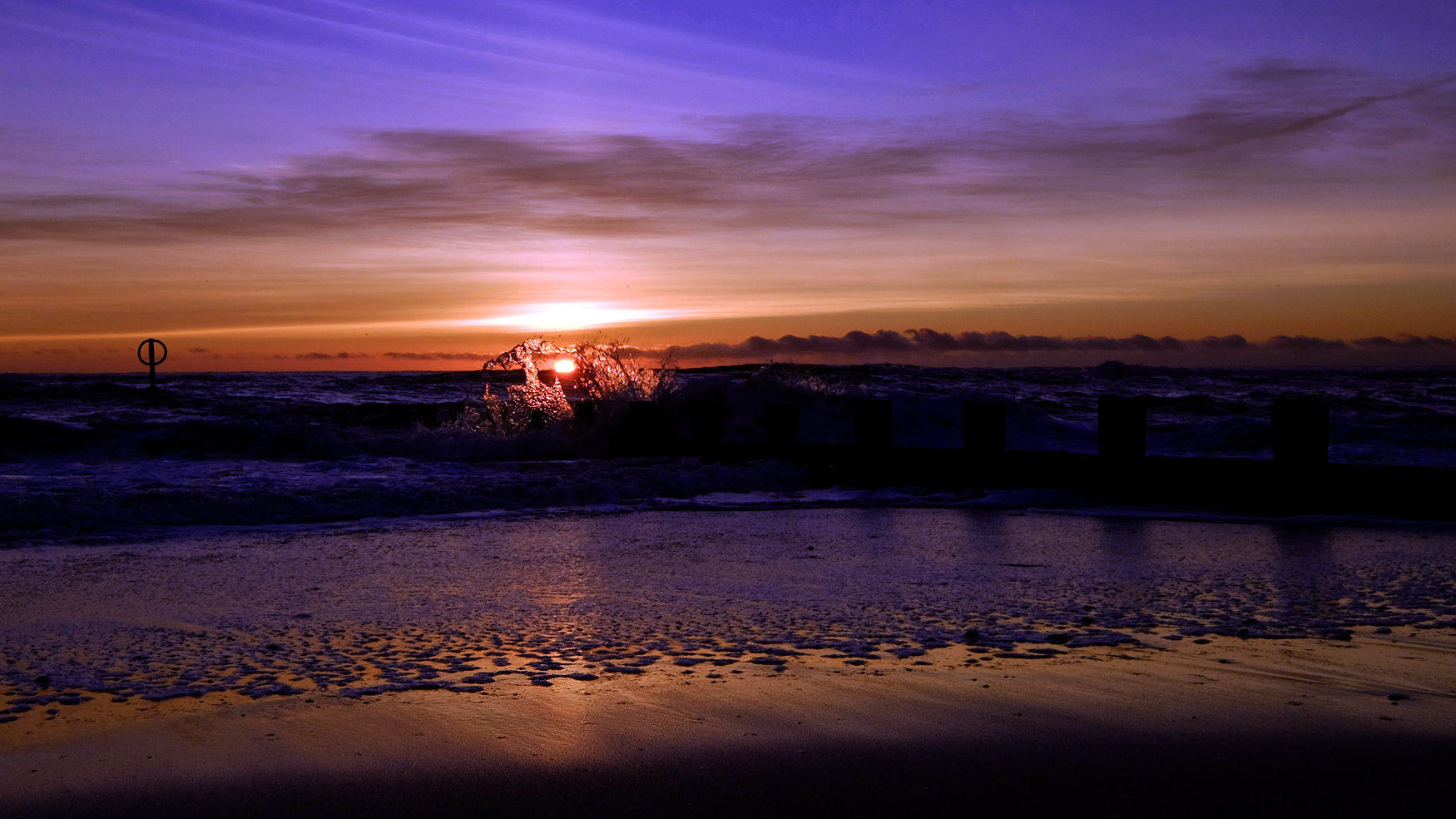 First Light. North Sea.
First Light. North Sea.
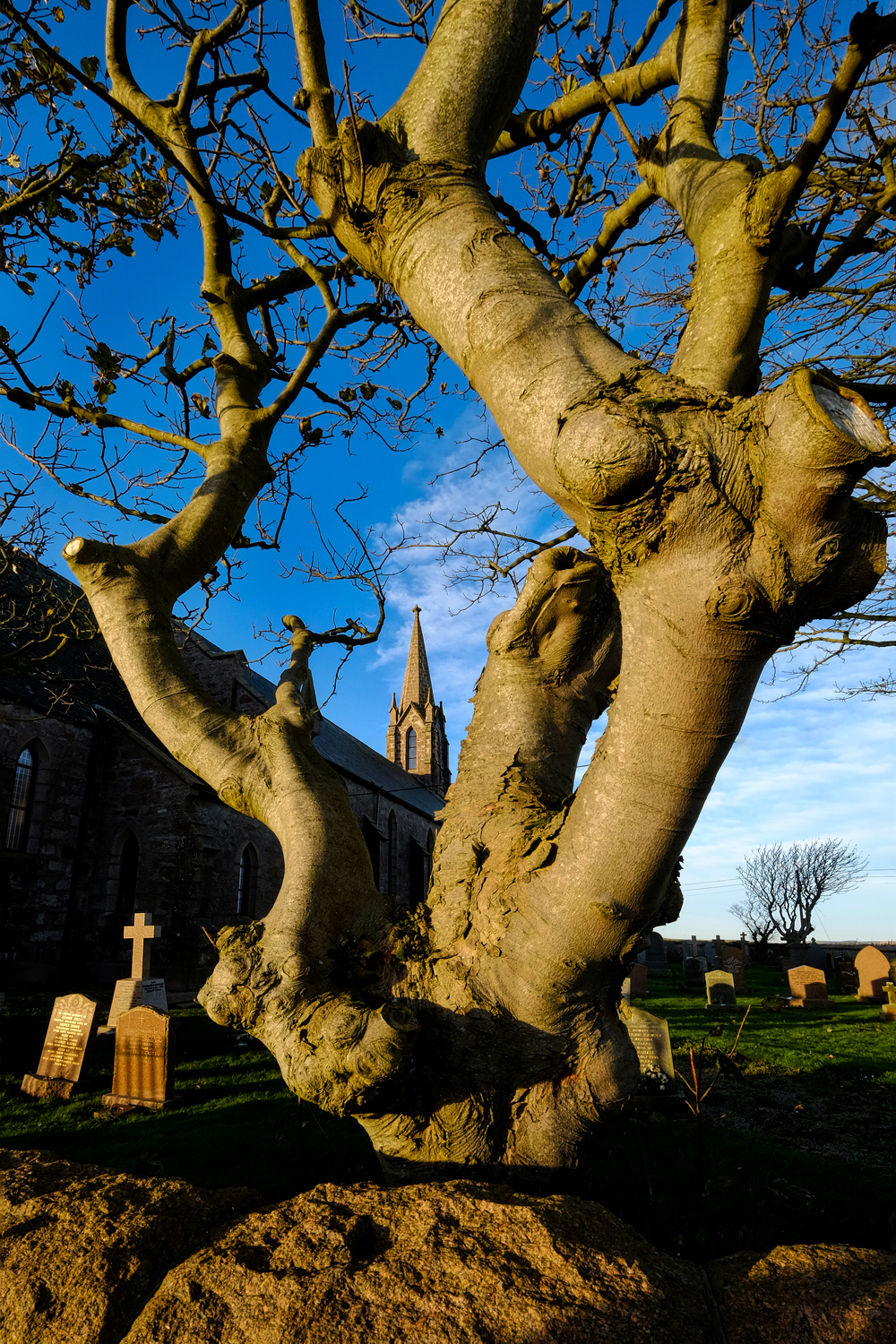 A church along an Aberdeenshire rural road.
A church along an Aberdeenshire rural road.
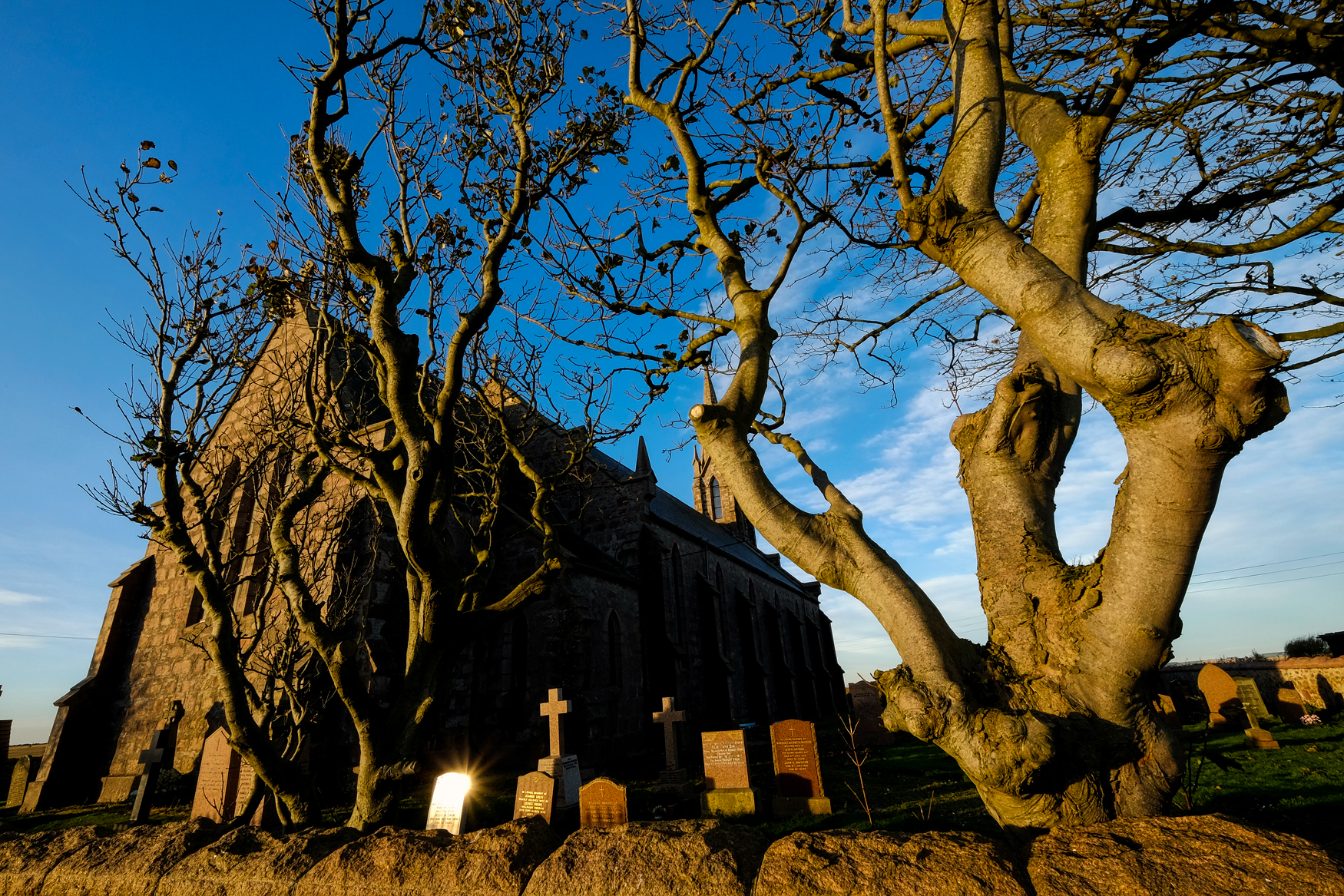 Stunning November weather for northeast Scotland.
Stunning November weather for northeast Scotland.
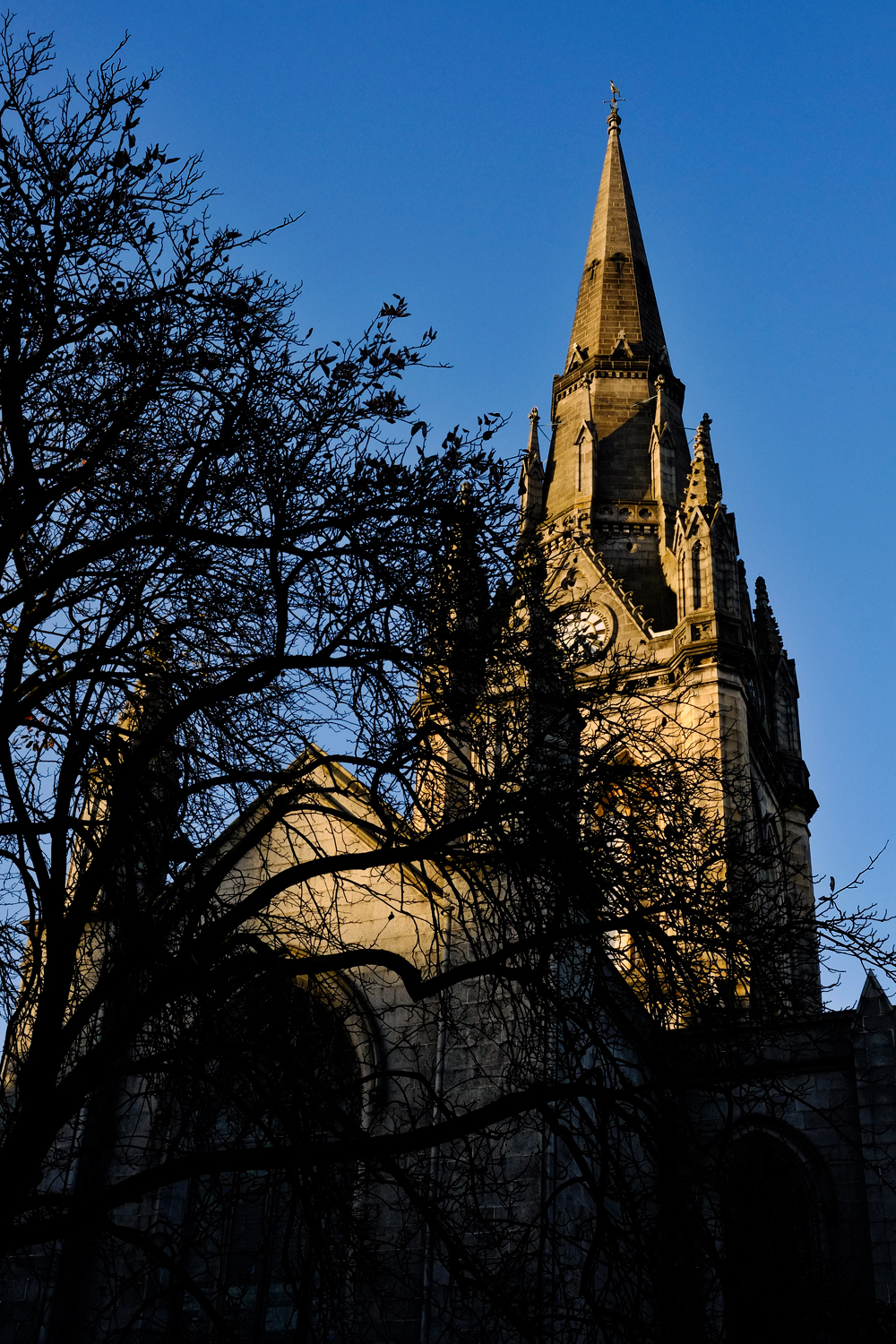 I the middle of the Aberdeen city centre is a wonderful church and cemetery.
I the middle of the Aberdeen city centre is a wonderful church and cemetery.
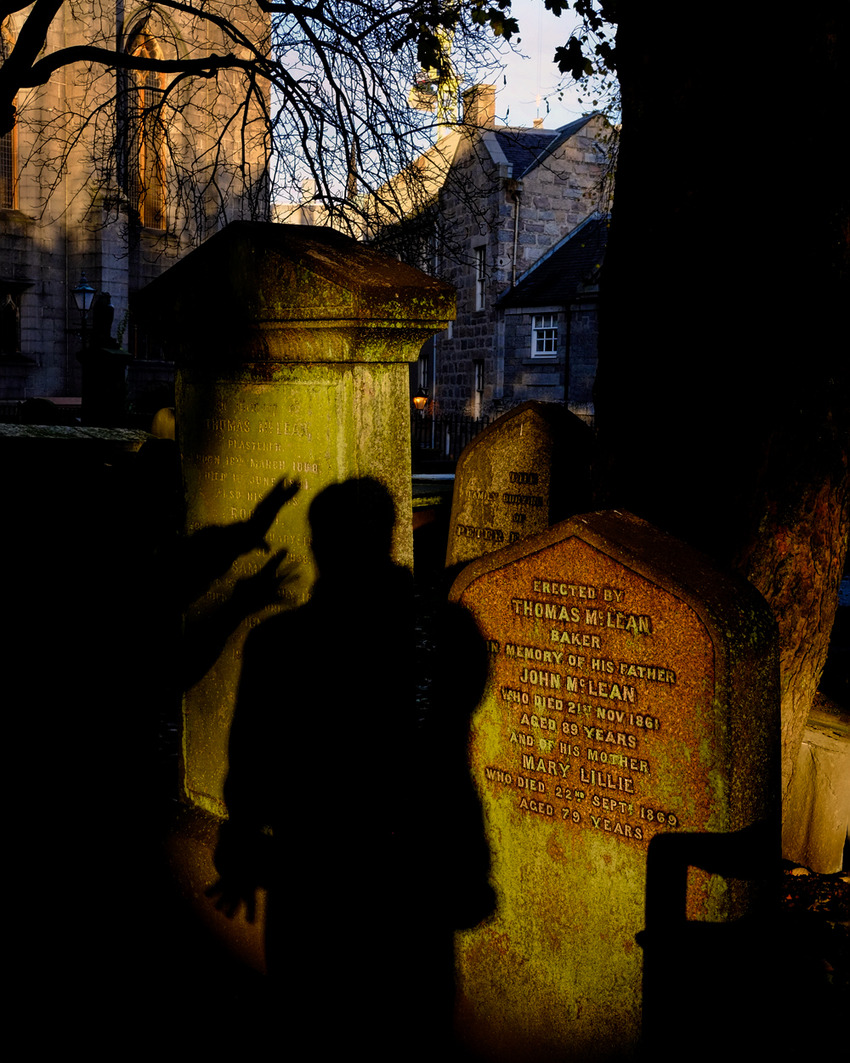 When an old friend visits that you haven't seen in a while, and it's Halloween, and you are in an old graveyard . . . you must play!
When an old friend visits that you haven't seen in a while, and it's Halloween, and you are in an old graveyard . . . you must play!
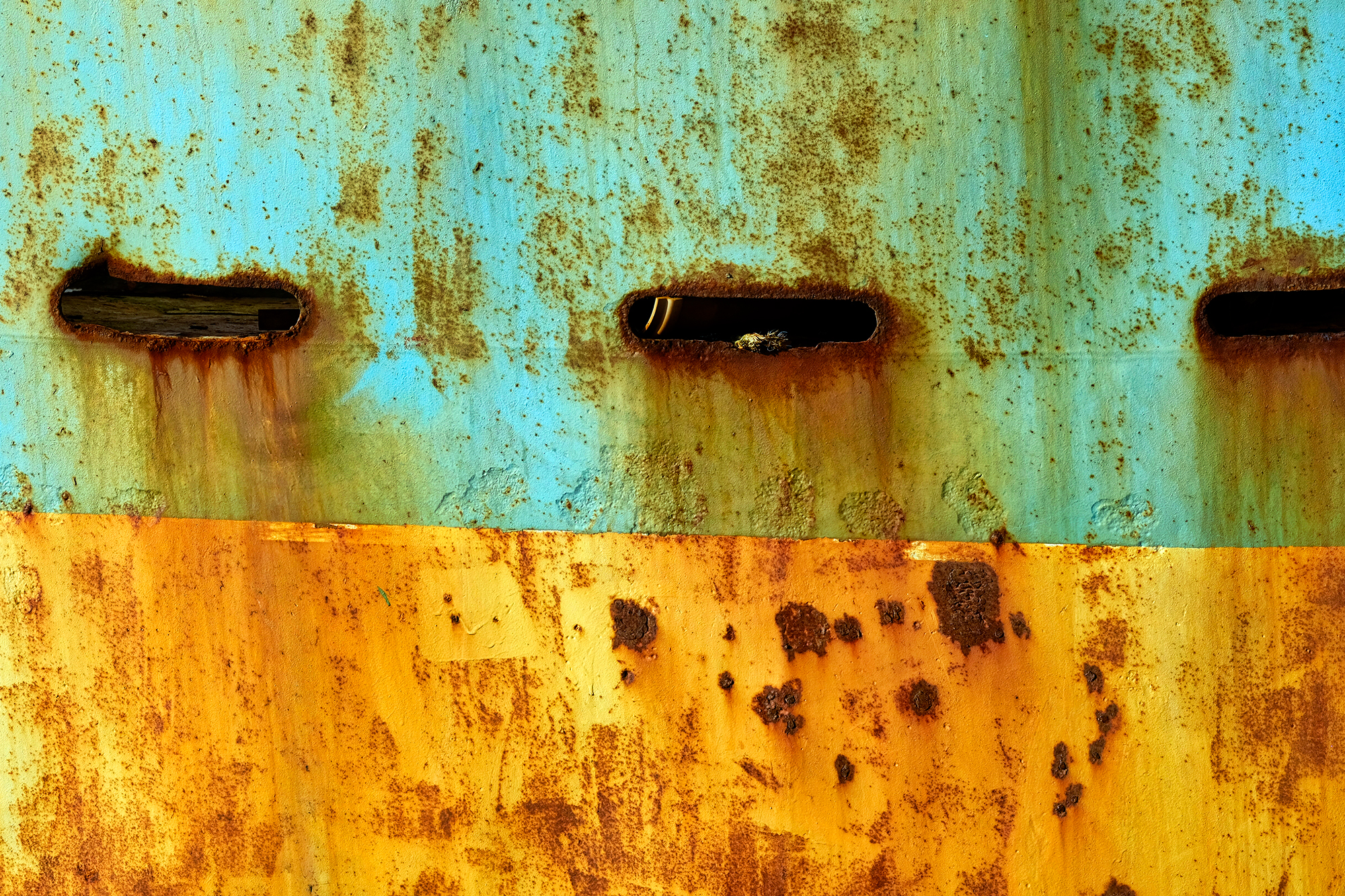 After that stunning sunrise at the Aberdeen Esplanade, our day one ramble took us up the coast to the little fishing berg of Baddam where the hulls of the beached trawlers provided extraordinary abstract studies in decay and color.
After that stunning sunrise at the Aberdeen Esplanade, our day one ramble took us up the coast to the little fishing berg of Baddam where the hulls of the beached trawlers provided extraordinary abstract studies in decay and color.
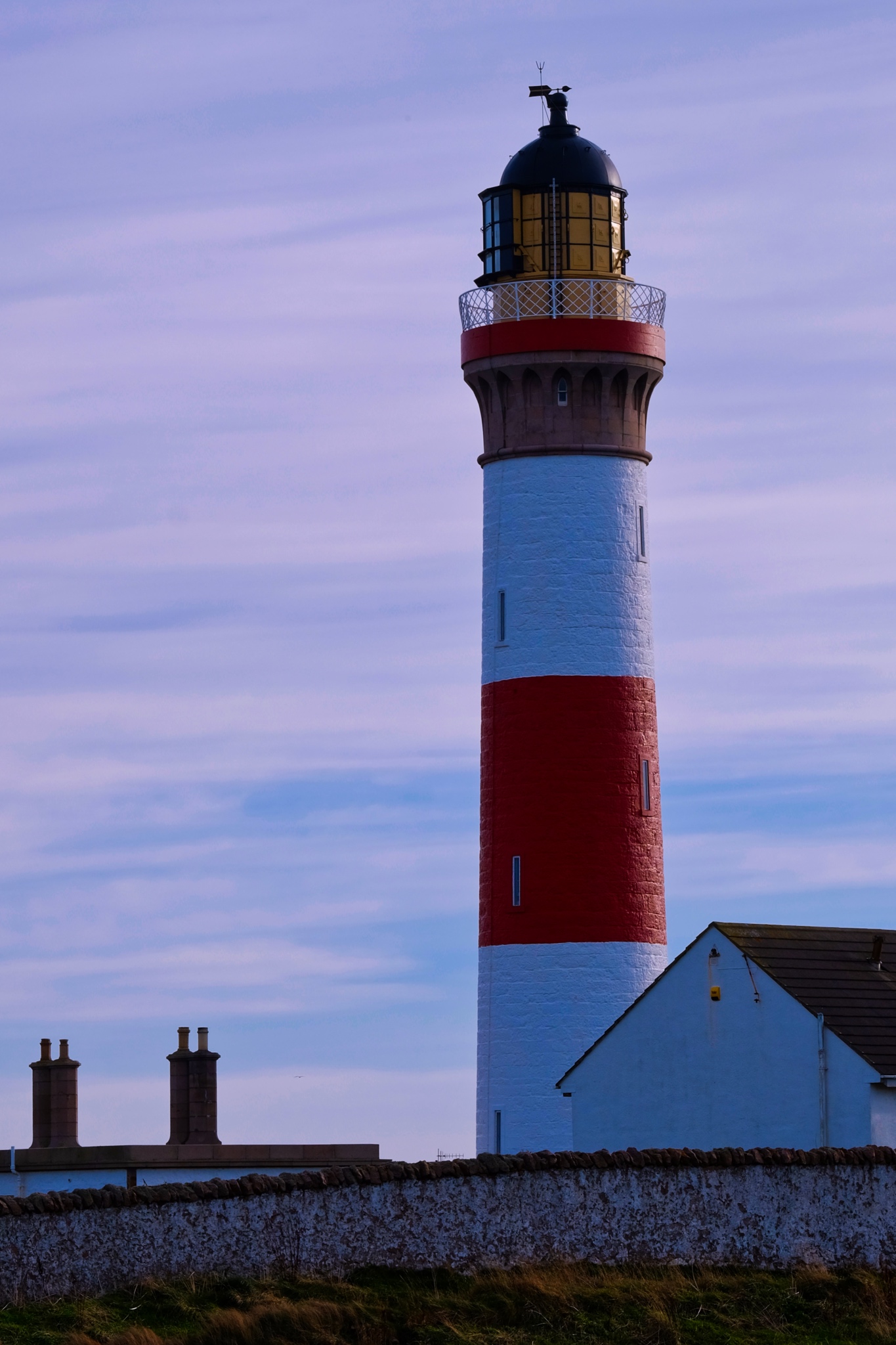 The lighthouse at Baddam.
The lighthouse at Baddam.
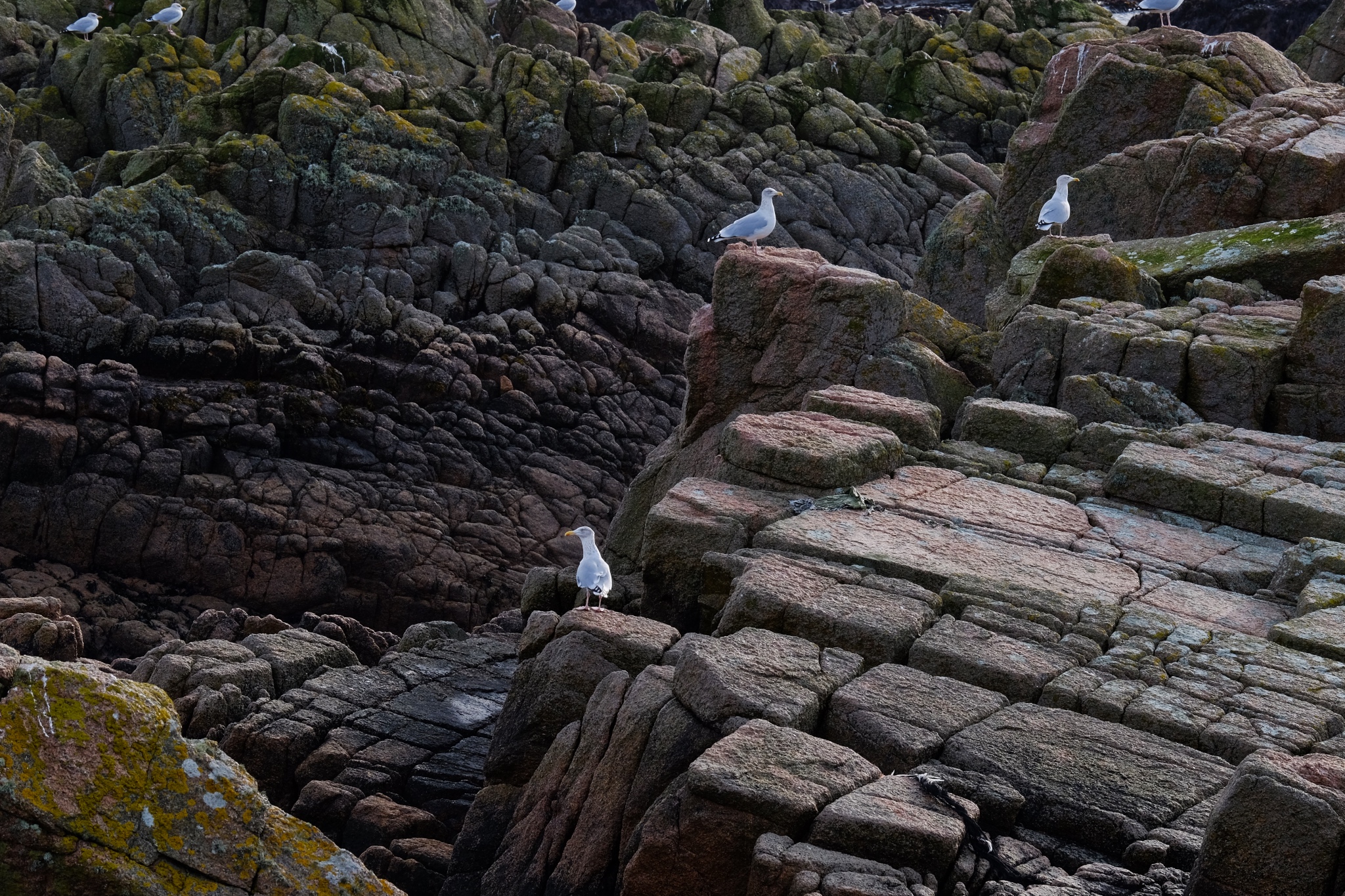 Exposed rocks near Baddam harbour.
Exposed rocks near Baddam harbour.
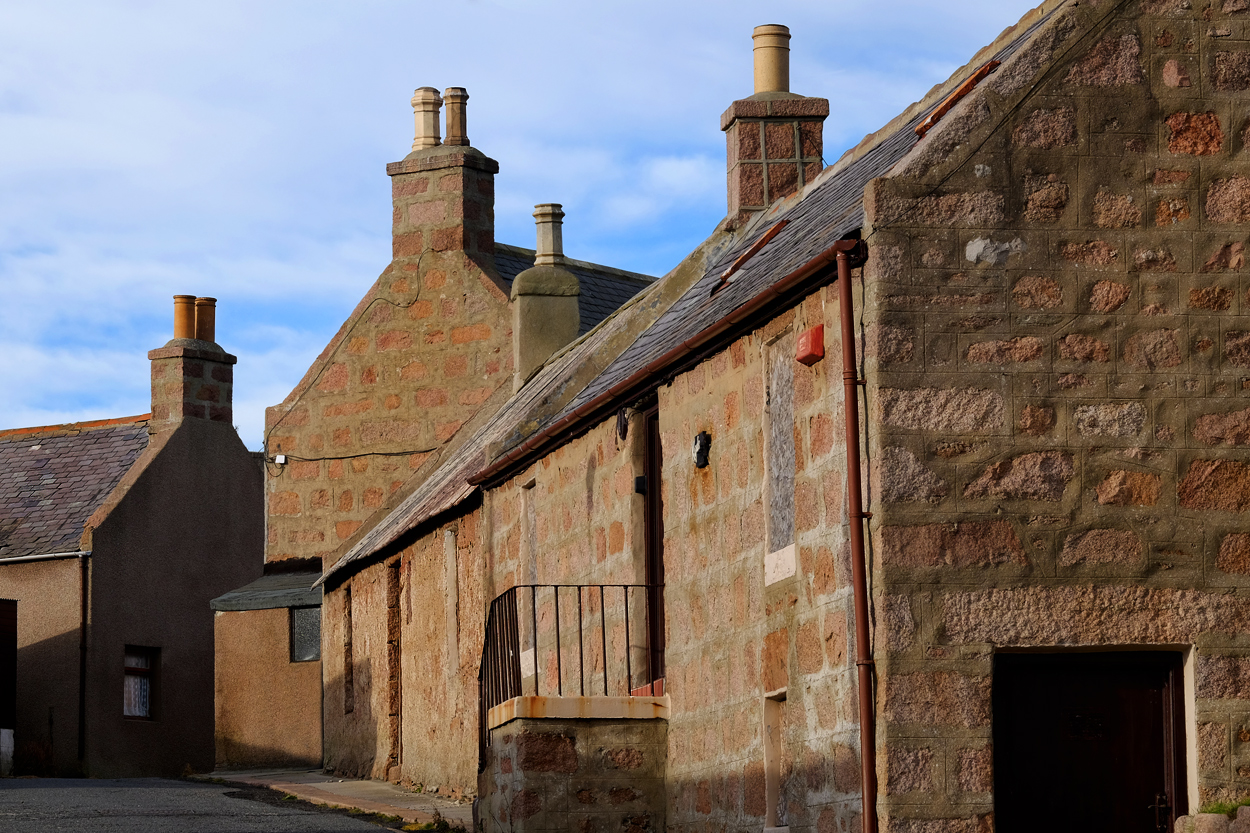 The austere old section of Baddam village.
The austere old section of Baddam village.
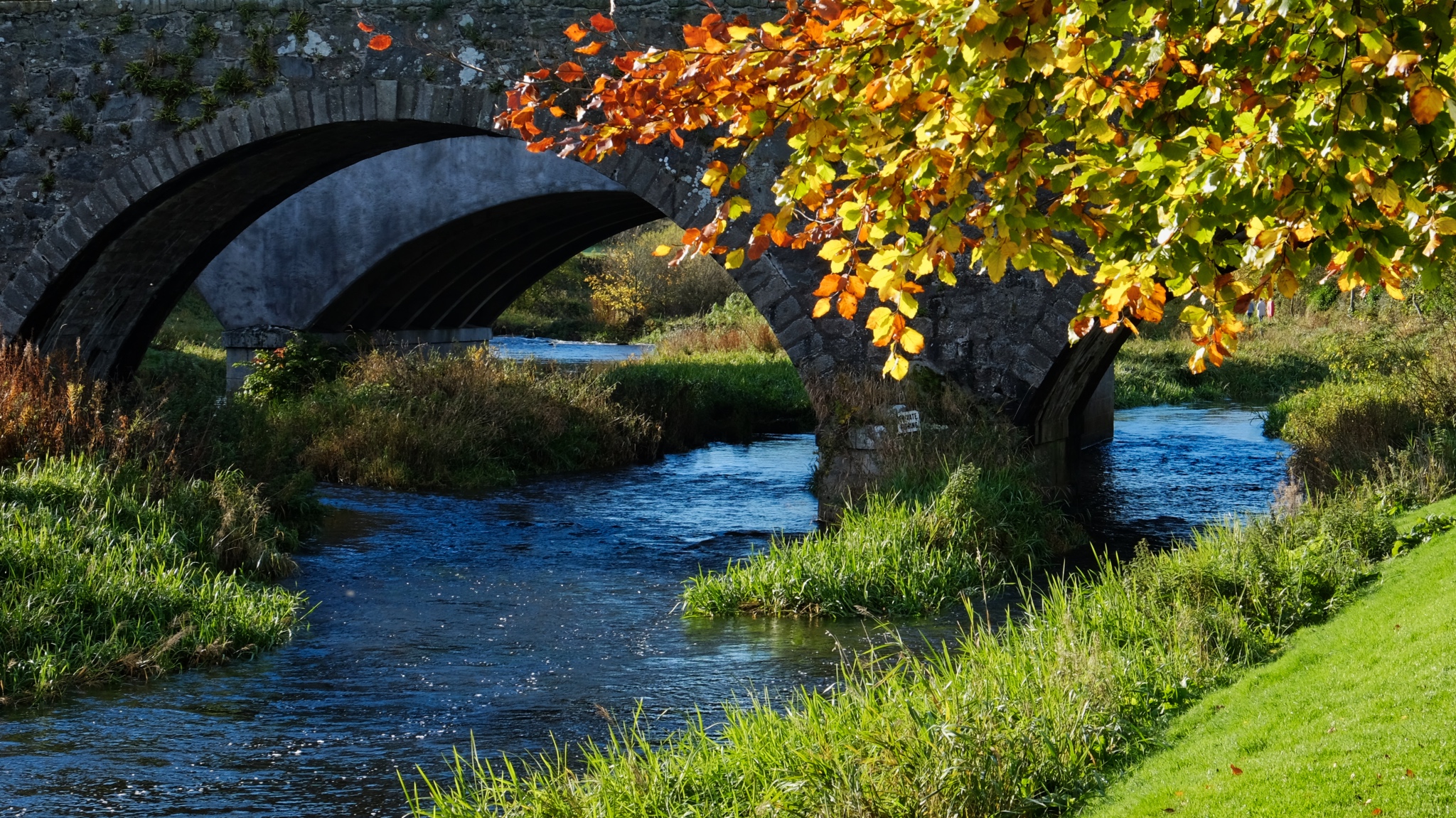 All along our small road route, we were continually 'discovering' fantastically beautiful scenes.
All along our small road route, we were continually 'discovering' fantastically beautiful scenes.
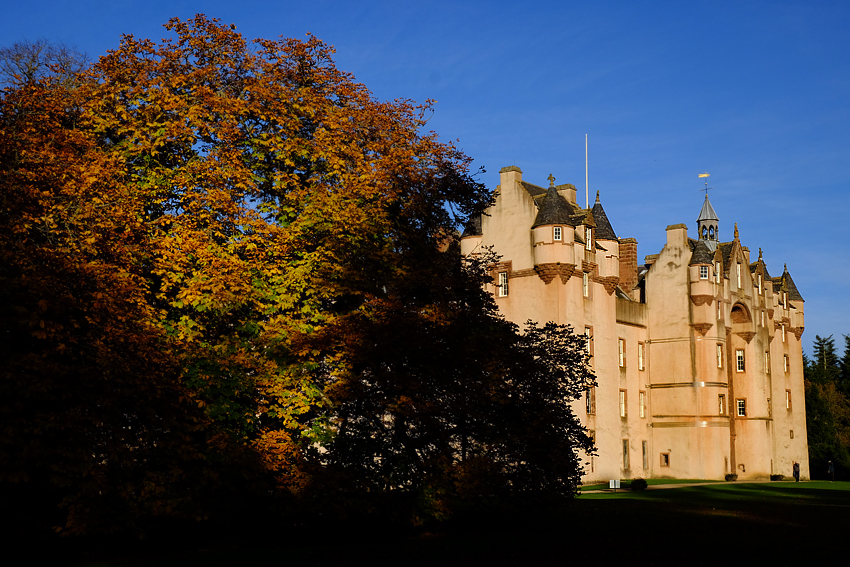 The stunning Fyvie Castle.
The stunning Fyvie Castle.
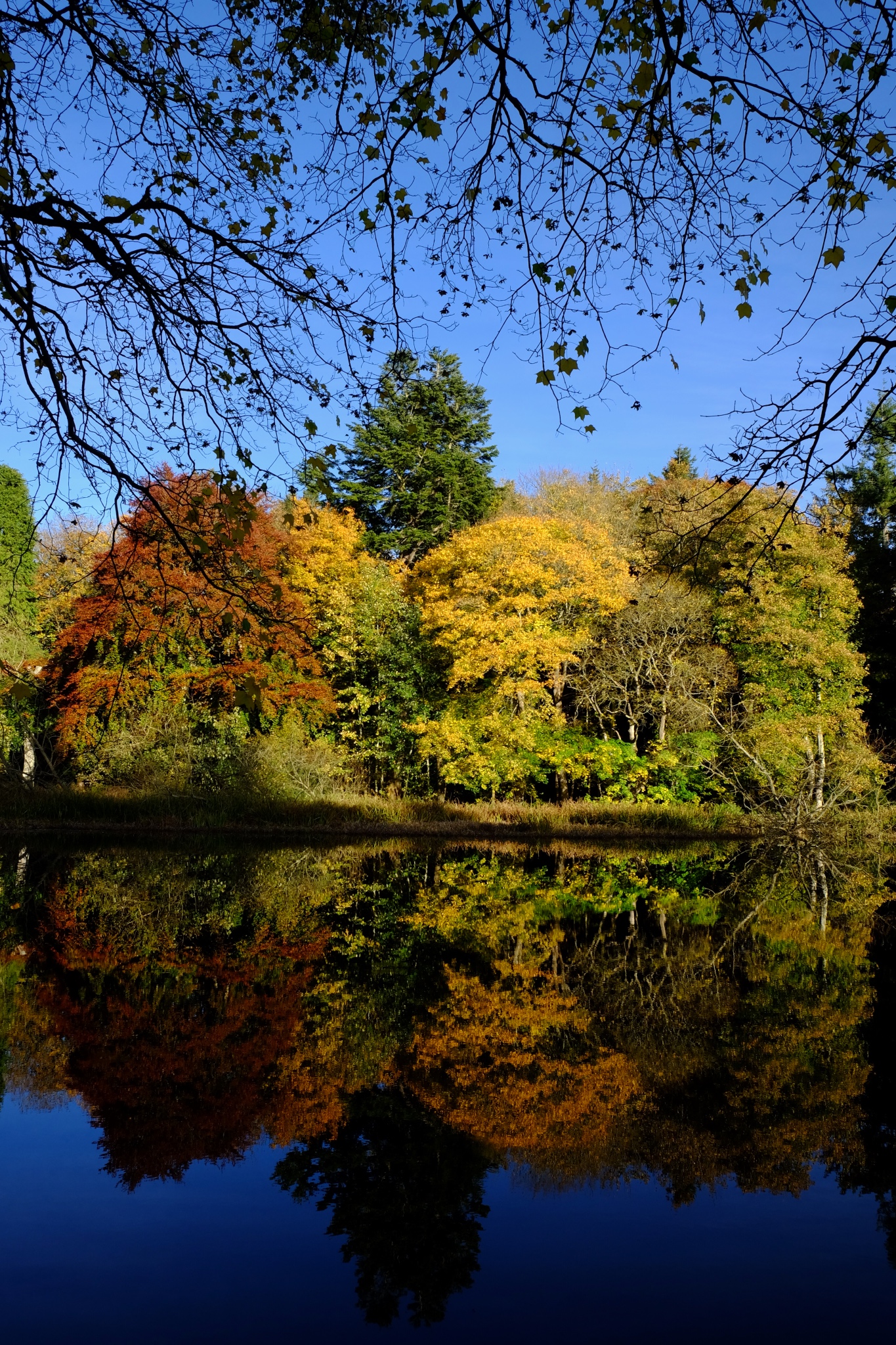 Gorgeous autumn scenes all around the grounds of Fyvie Castle.
Gorgeous autumn scenes all around the grounds of Fyvie Castle.
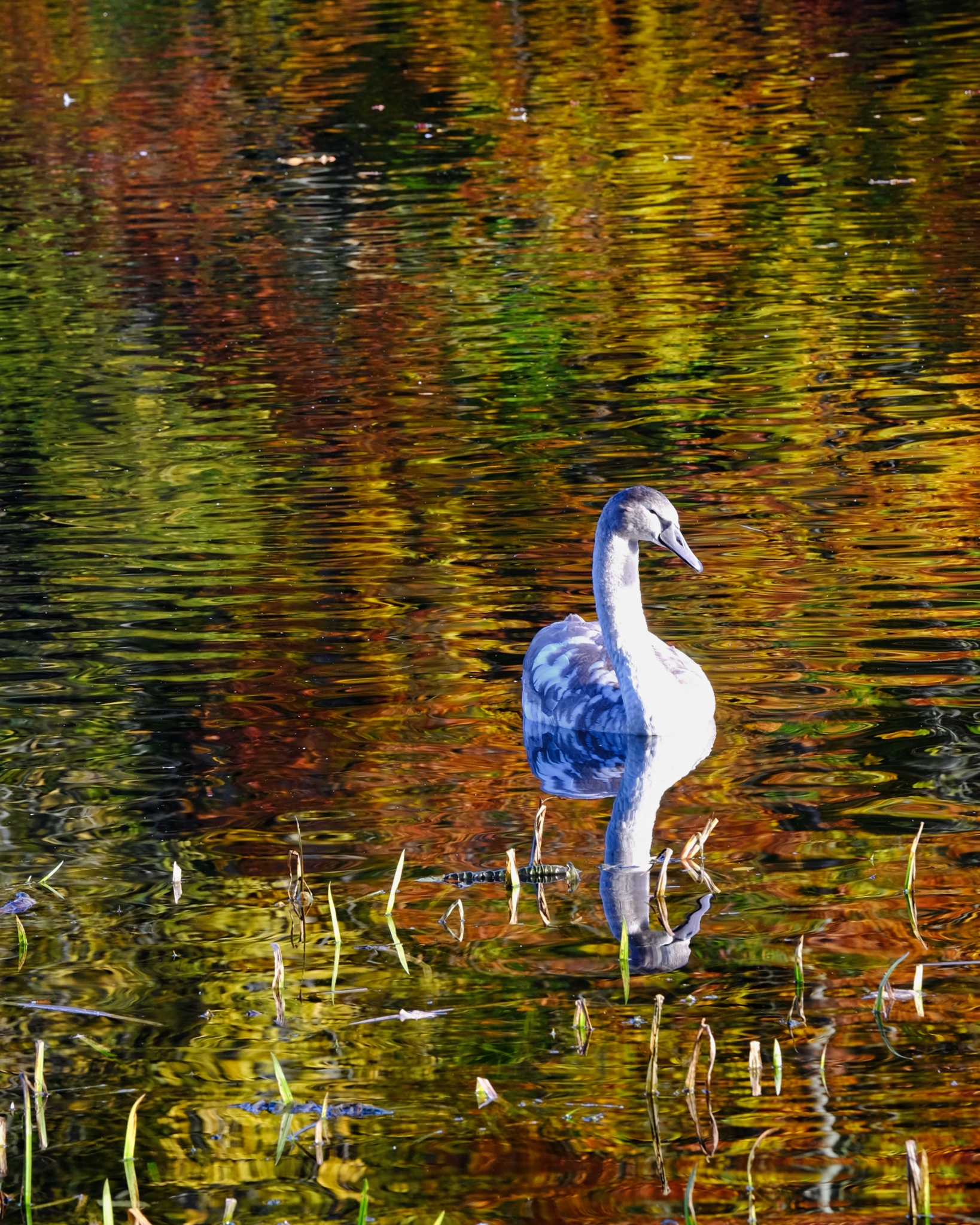 Superb Fall colors reflected in the castle goose pond.
Superb Fall colors reflected in the castle goose pond.
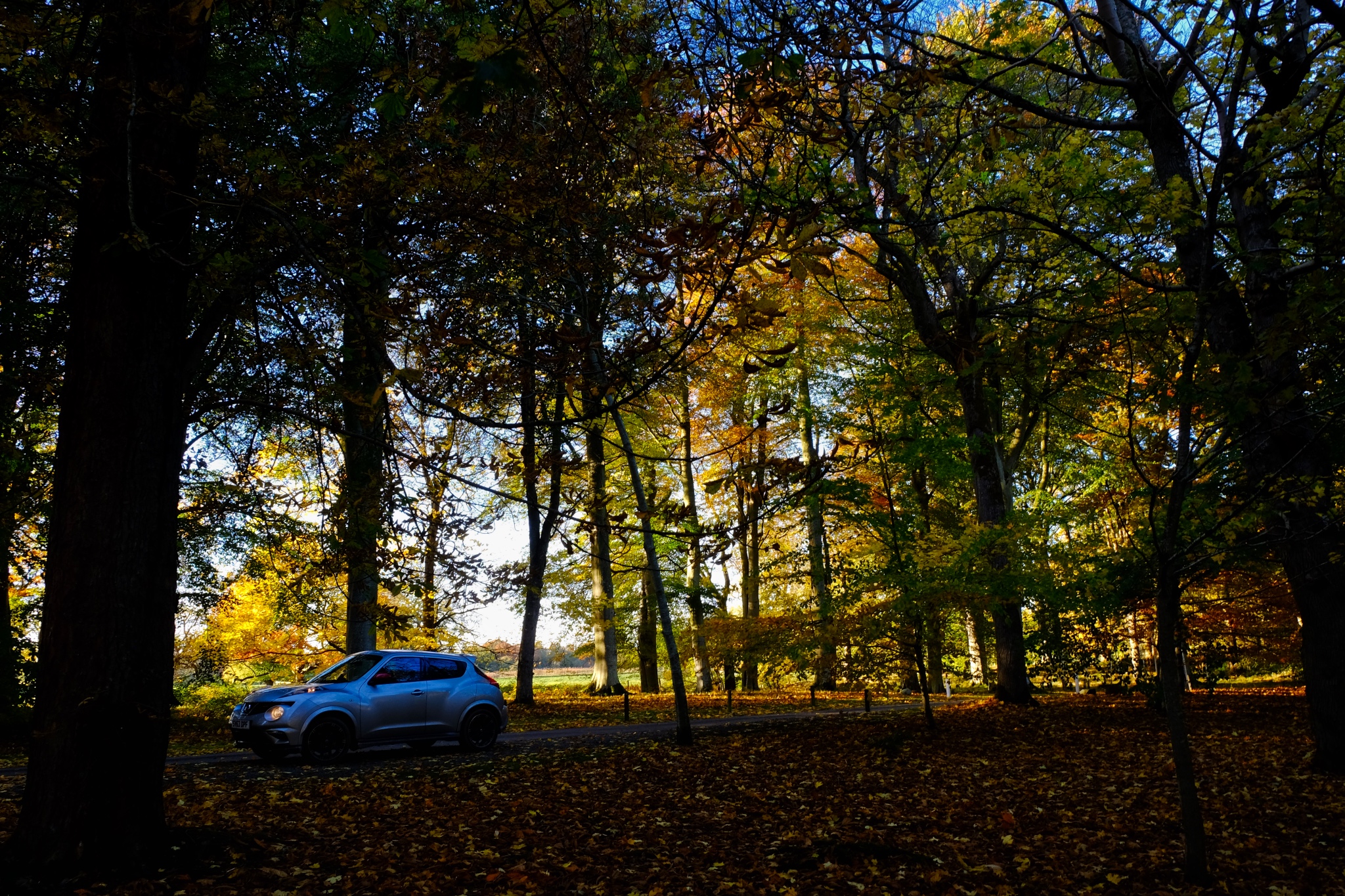 For three glorious days we rambled about the small roads of northeast Scotland. My AWD Juke NISMO was the perfect car for the narrow, winding, wet-leaf-covered country lanes.
For three glorious days we rambled about the small roads of northeast Scotland. My AWD Juke NISMO was the perfect car for the narrow, winding, wet-leaf-covered country lanes.
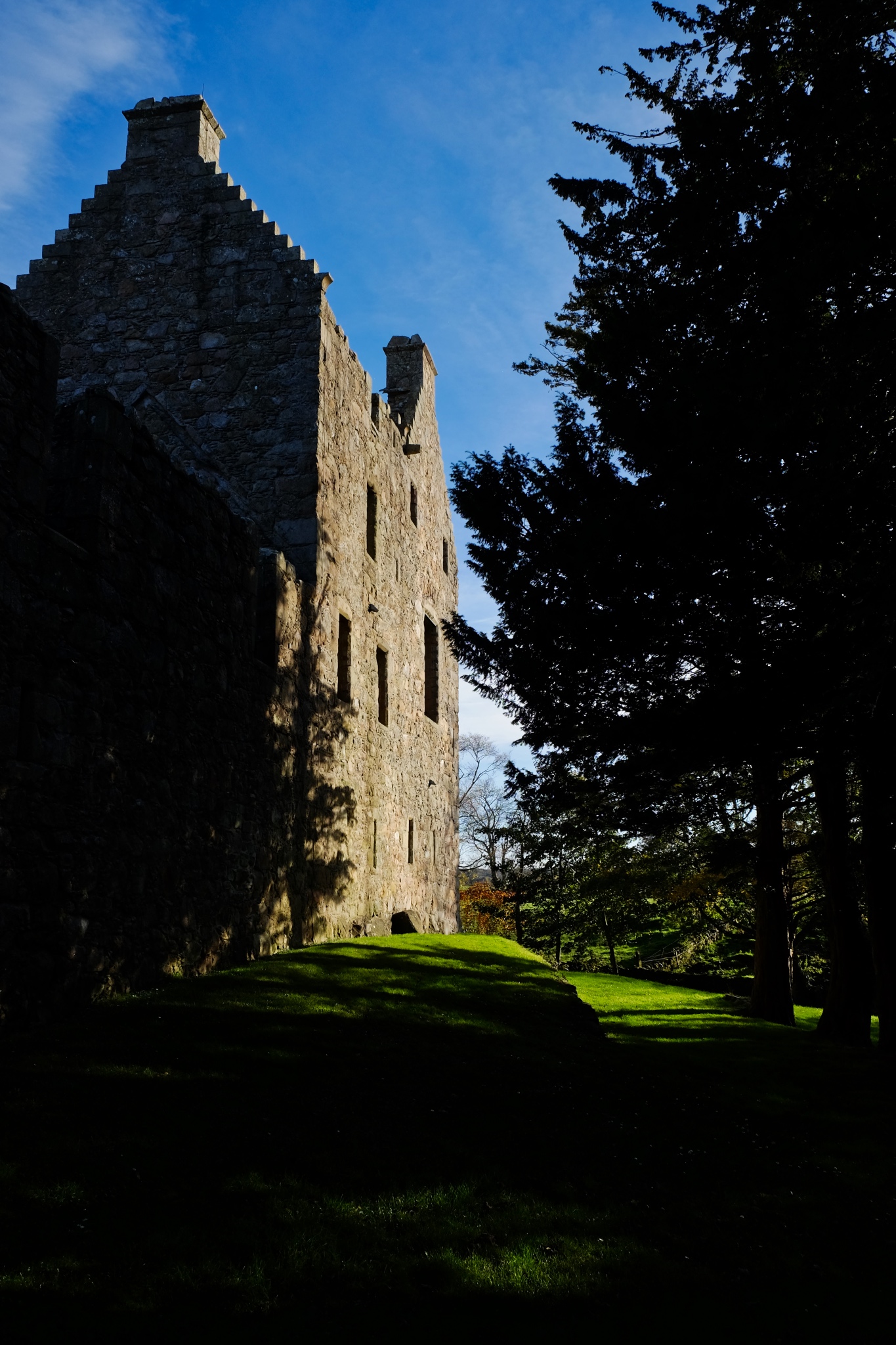 Castles and castle ruins everywhere in Aberdeenshire.
Castles and castle ruins everywhere in Aberdeenshire.
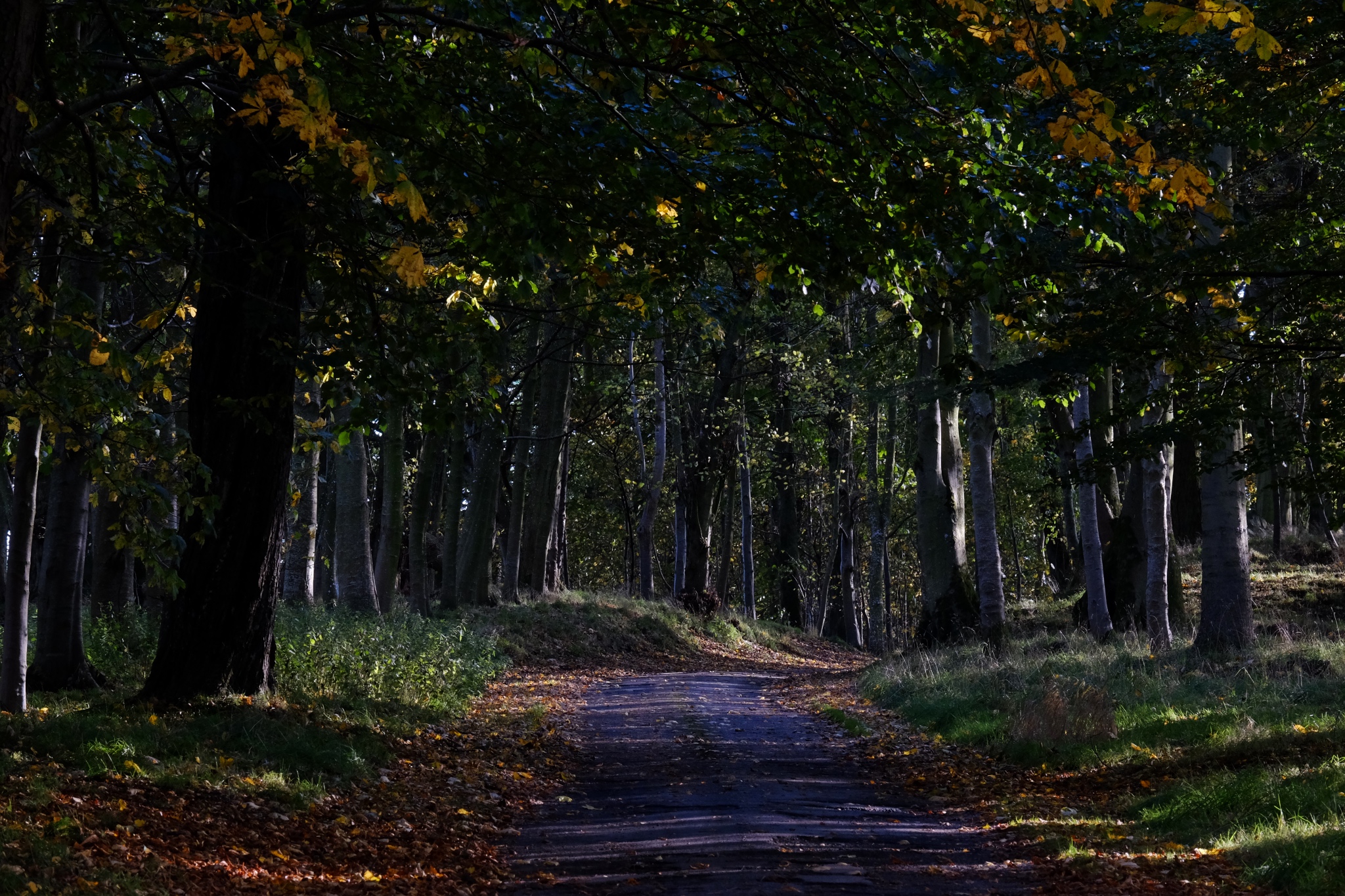 The Aberdeenshire roads would alternately suddenly diving into the deep shade of small forests . . .
The Aberdeenshire roads would alternately suddenly diving into the deep shade of small forests . . .
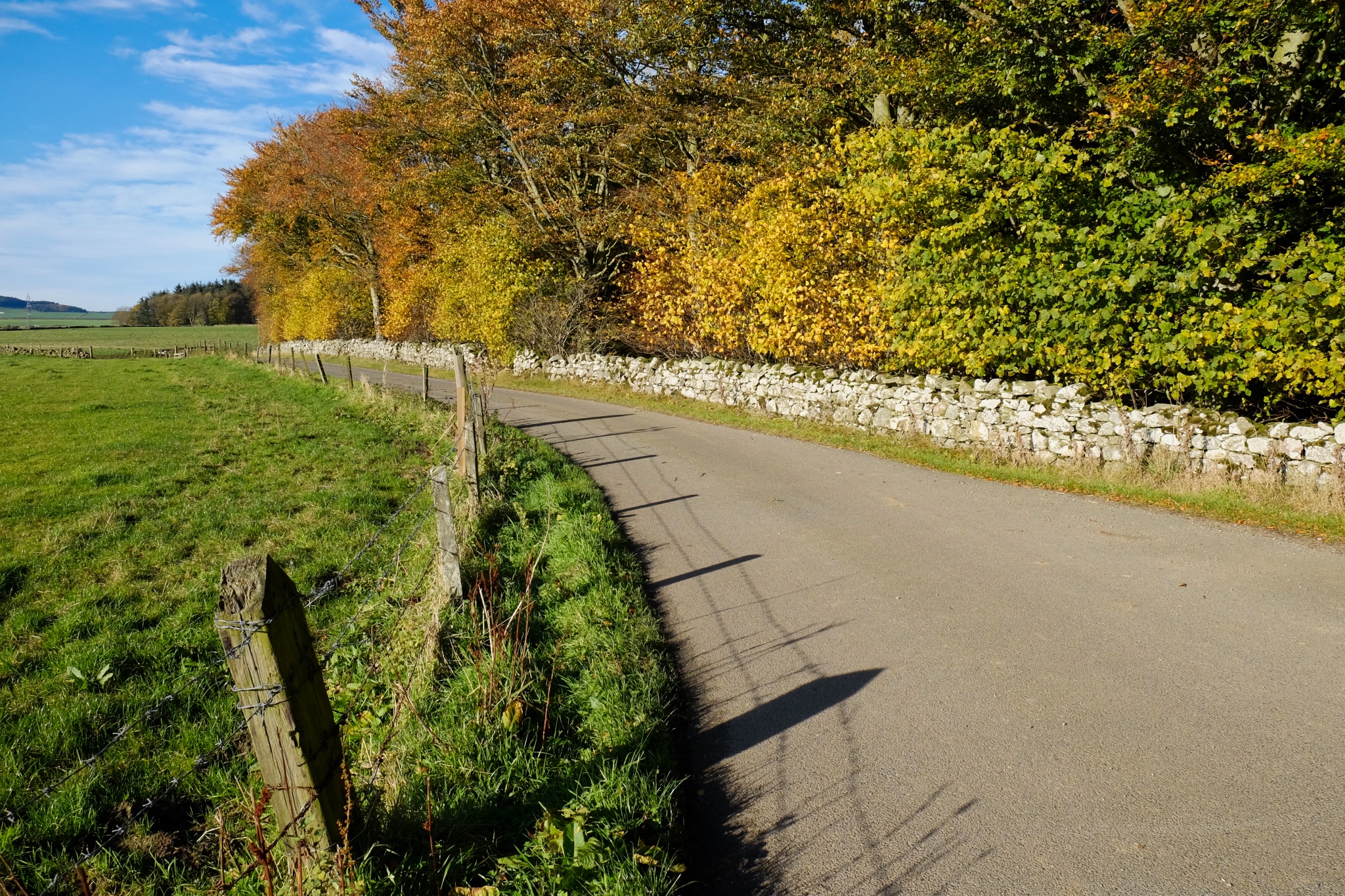 . . . and back out onto the bright, stone wall lined country roads.
. . . and back out onto the bright, stone wall lined country roads.
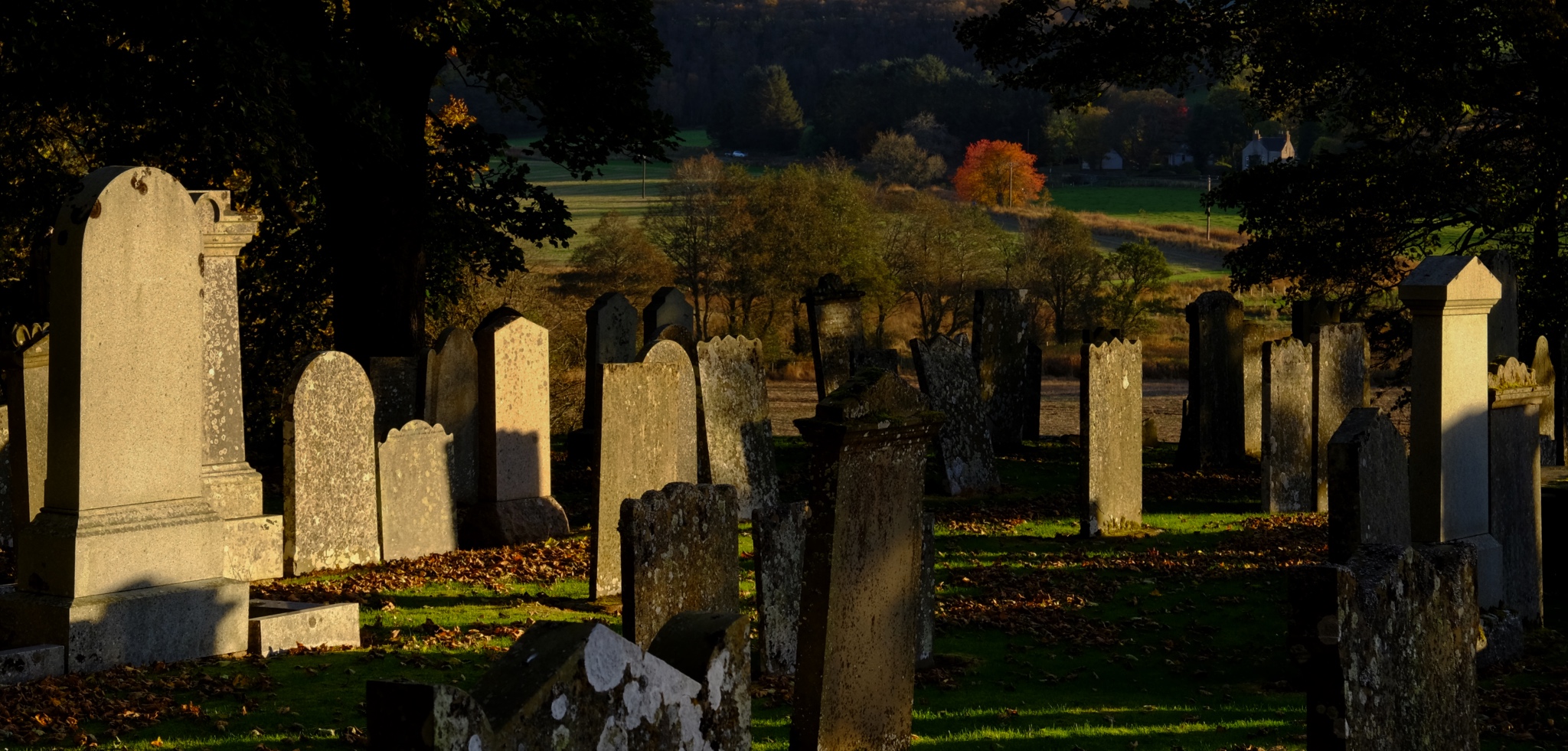 We were always up for a quick stop at an old country cemetery.
We were always up for a quick stop at an old country cemetery.
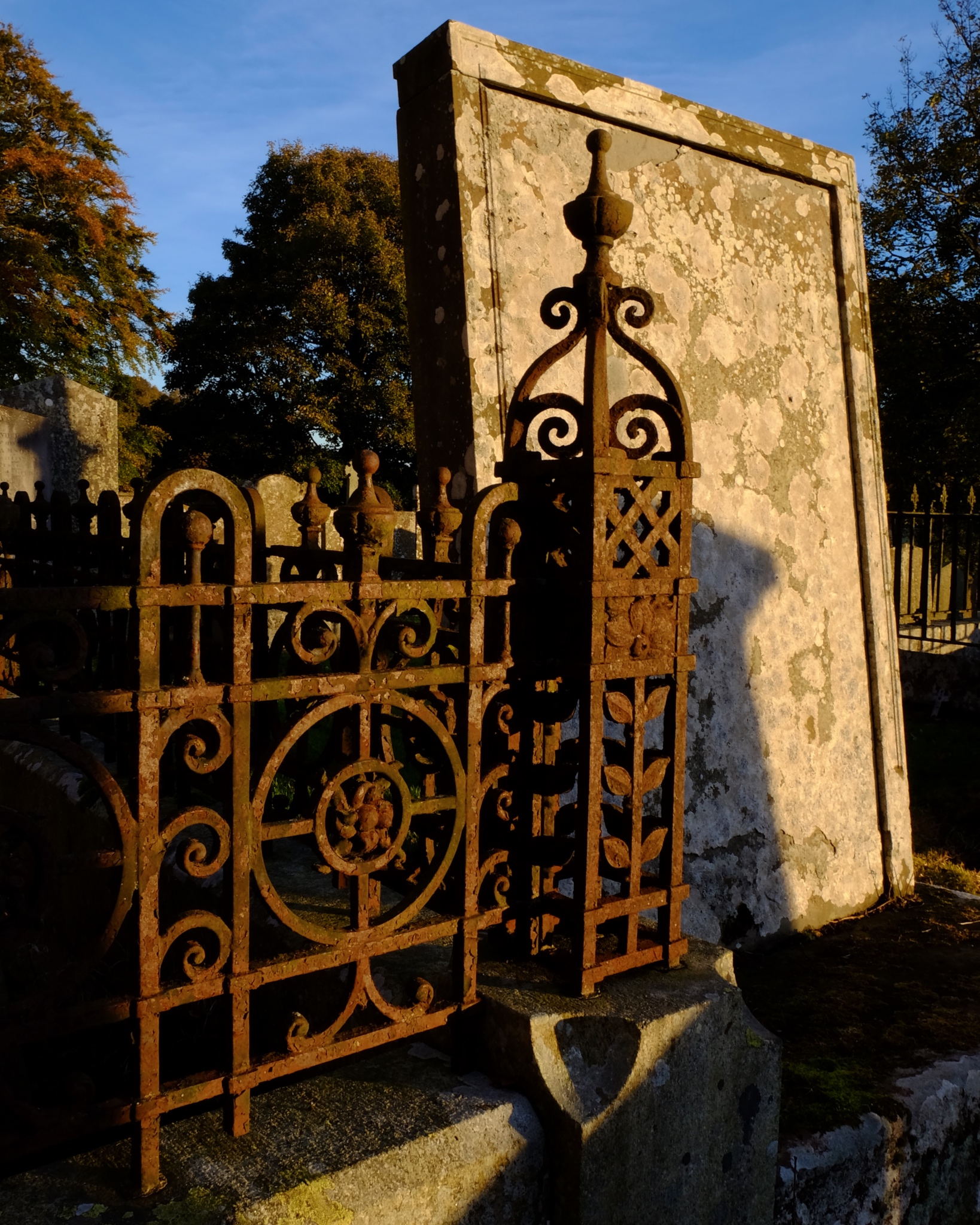 There is so much to see in the old cemeteries: colors, textures, old surfaces . . . . and . . . .
There is so much to see in the old cemeteries: colors, textures, old surfaces . . . . and . . . .
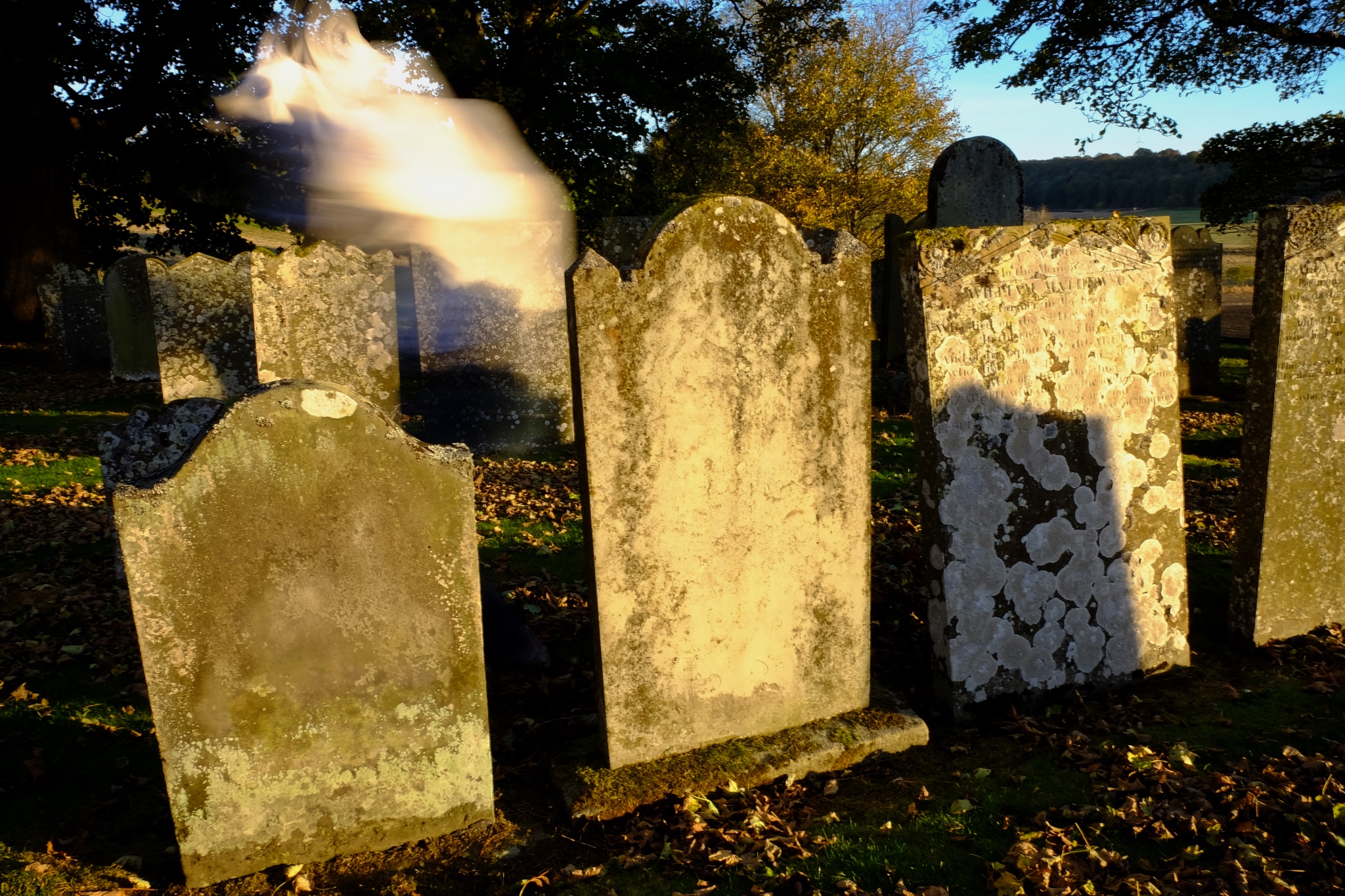 . . . and the occasional Class III freefloating spirit vapour.
. . . and the occasional Class III freefloating spirit vapour.
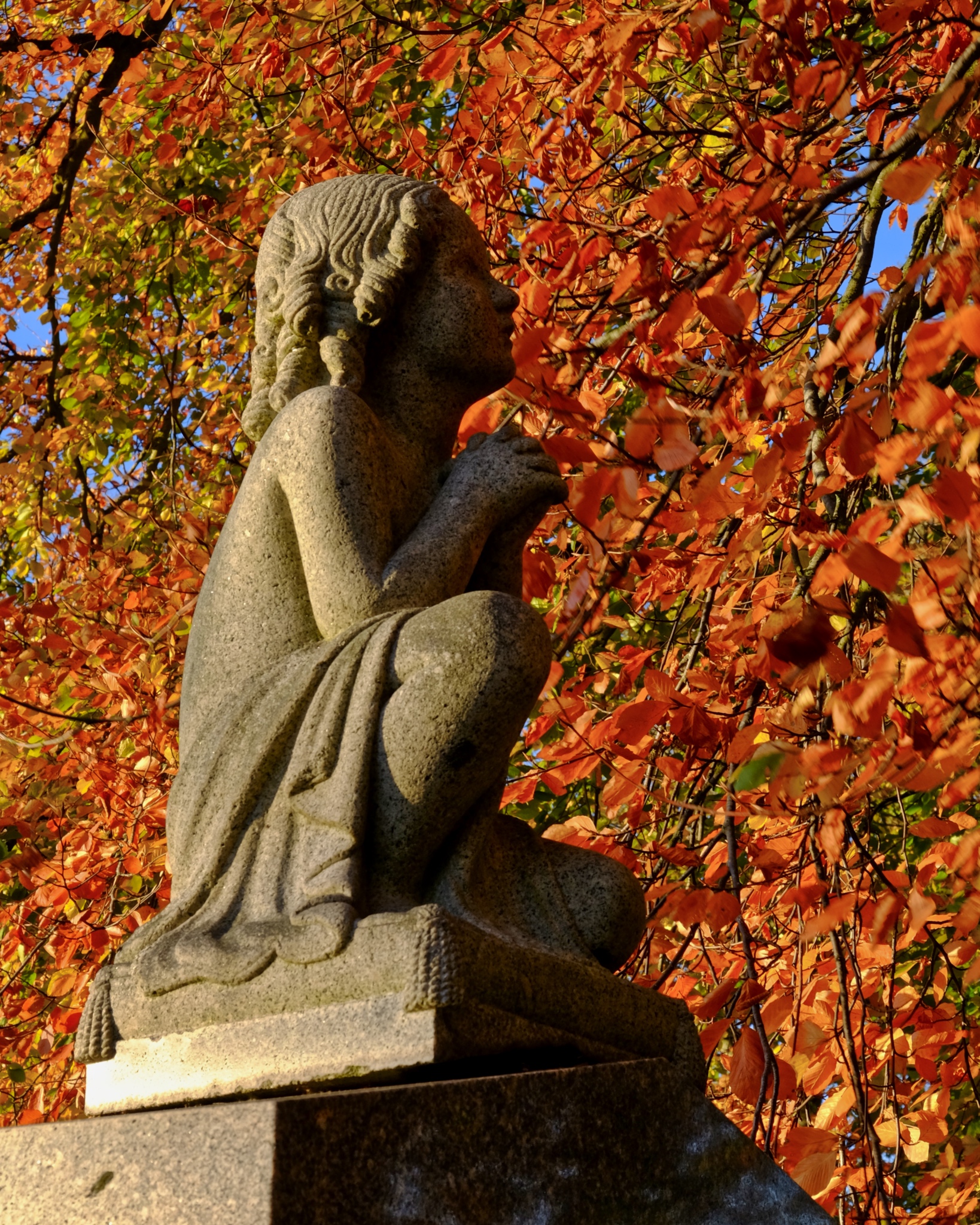 Autumn in a Scottish cemetery can be very beautiful.
Autumn in a Scottish cemetery can be very beautiful.
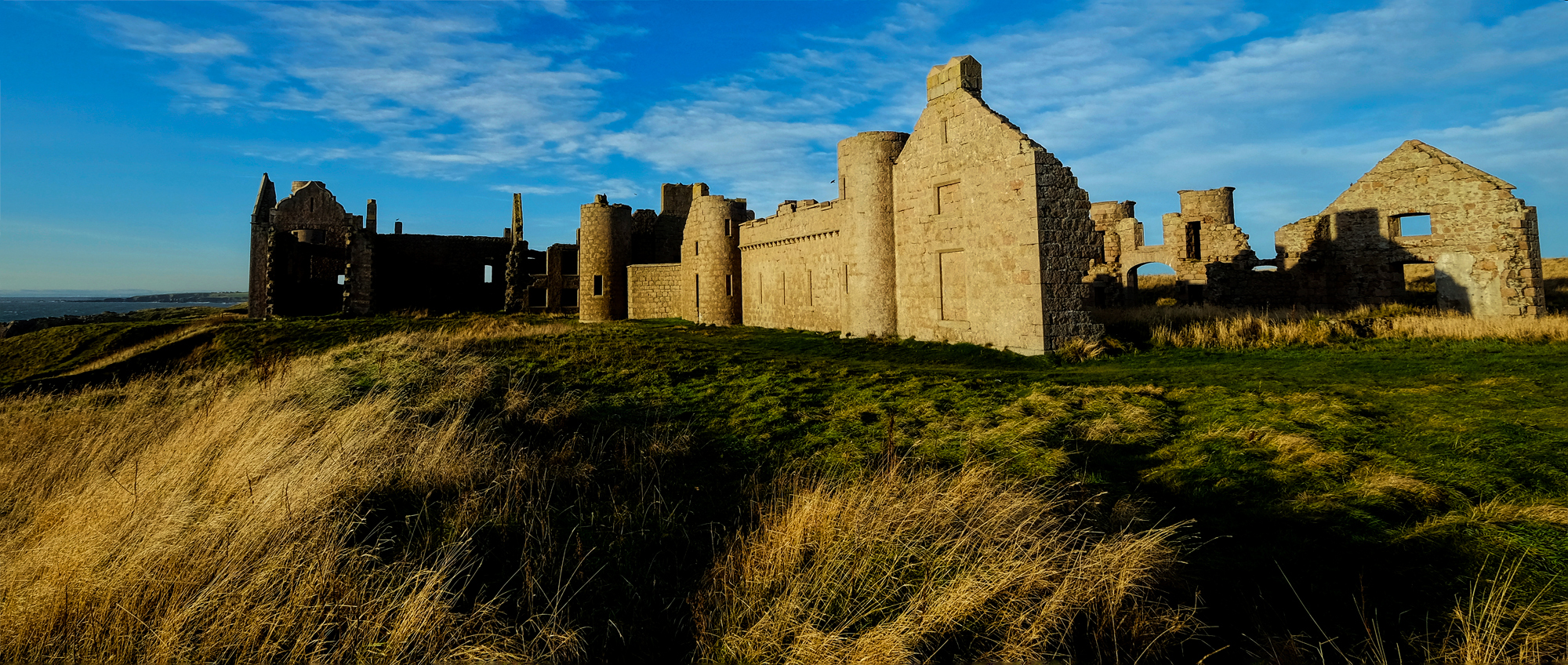 No trip to Aberdeenshire would be complete without a stop at New Slaines Castle . . . a photographer's paradise.
No trip to Aberdeenshire would be complete without a stop at New Slaines Castle . . . a photographer's paradise.
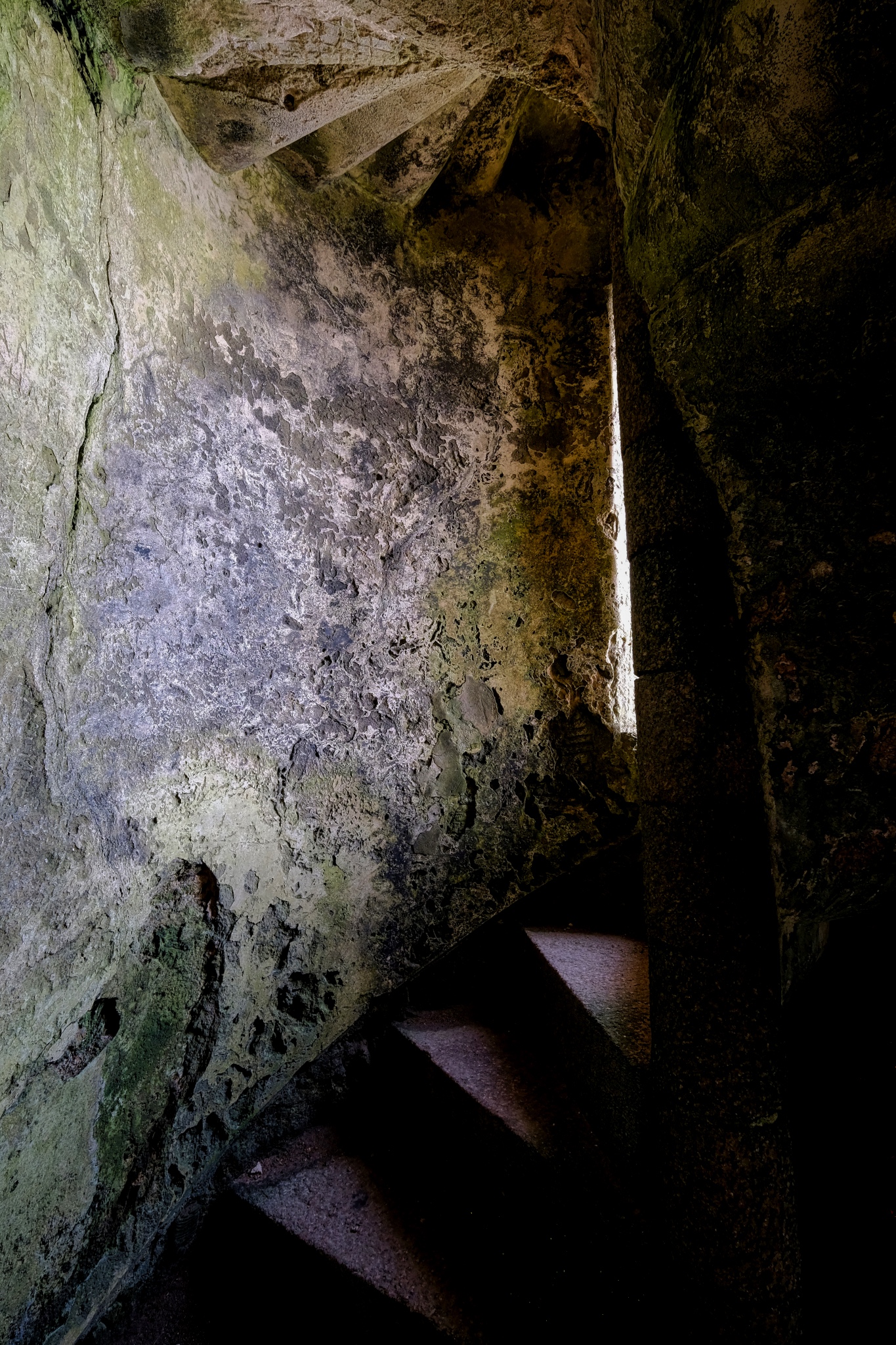 A stairwell in the ruins of New Slains Castle.
A stairwell in the ruins of New Slains Castle.
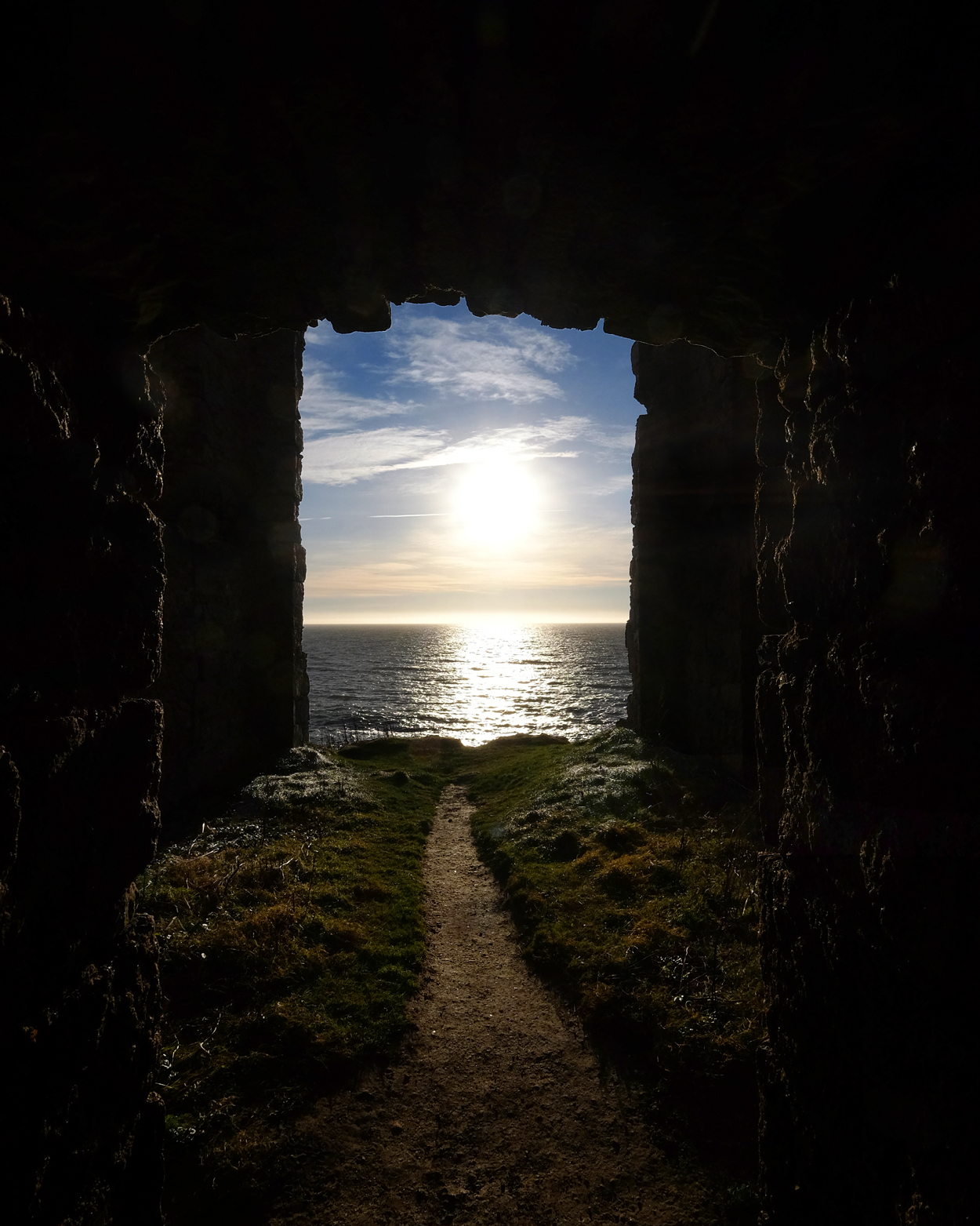 Some of the views from inside the castle ruins onto the North Sea were stunning.
Some of the views from inside the castle ruins onto the North Sea were stunning.
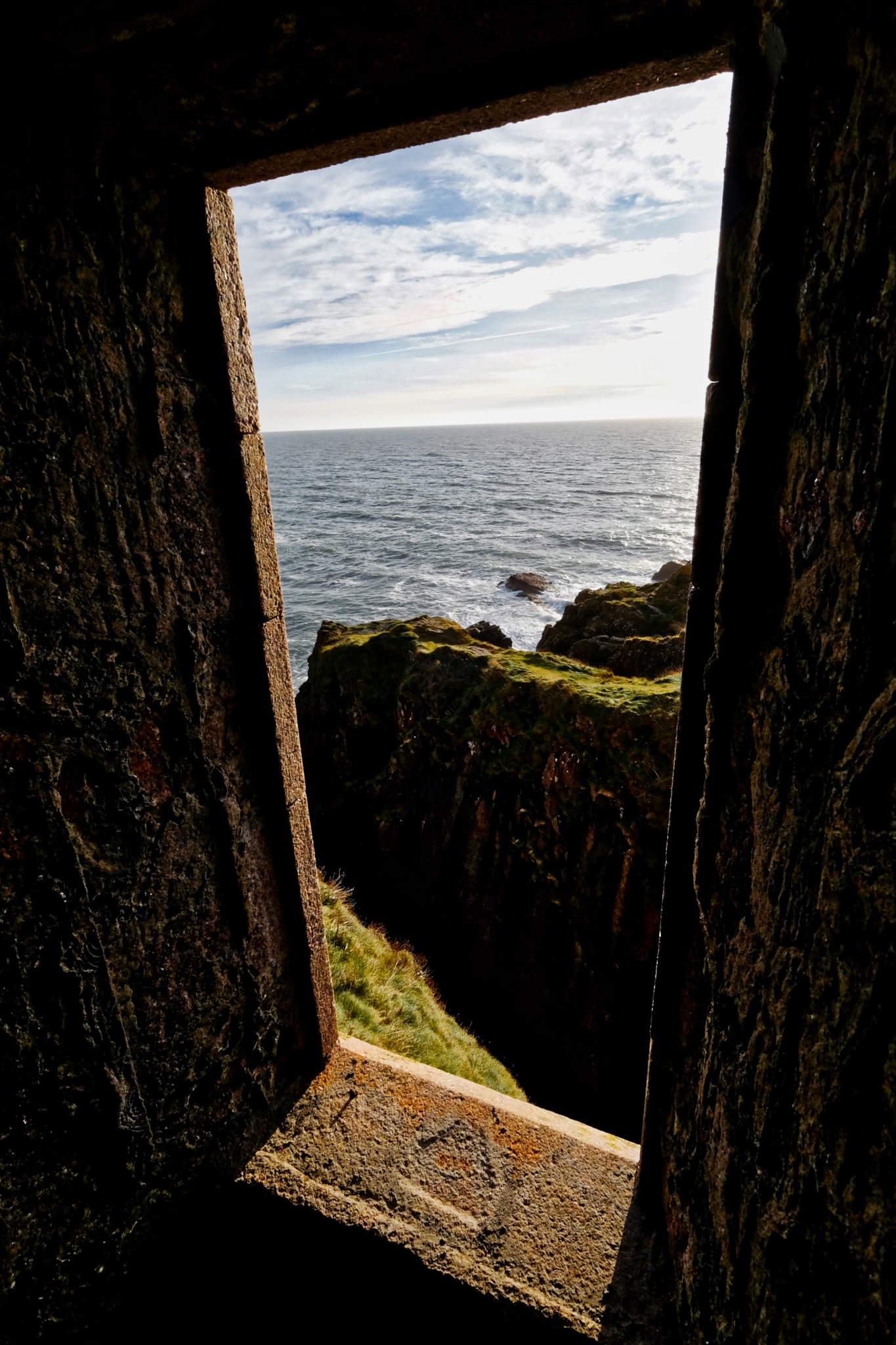 North Sea view from New Slaines Castle, Aberdeenshire, Scotland.
North Sea view from New Slaines Castle, Aberdeenshire, Scotland.
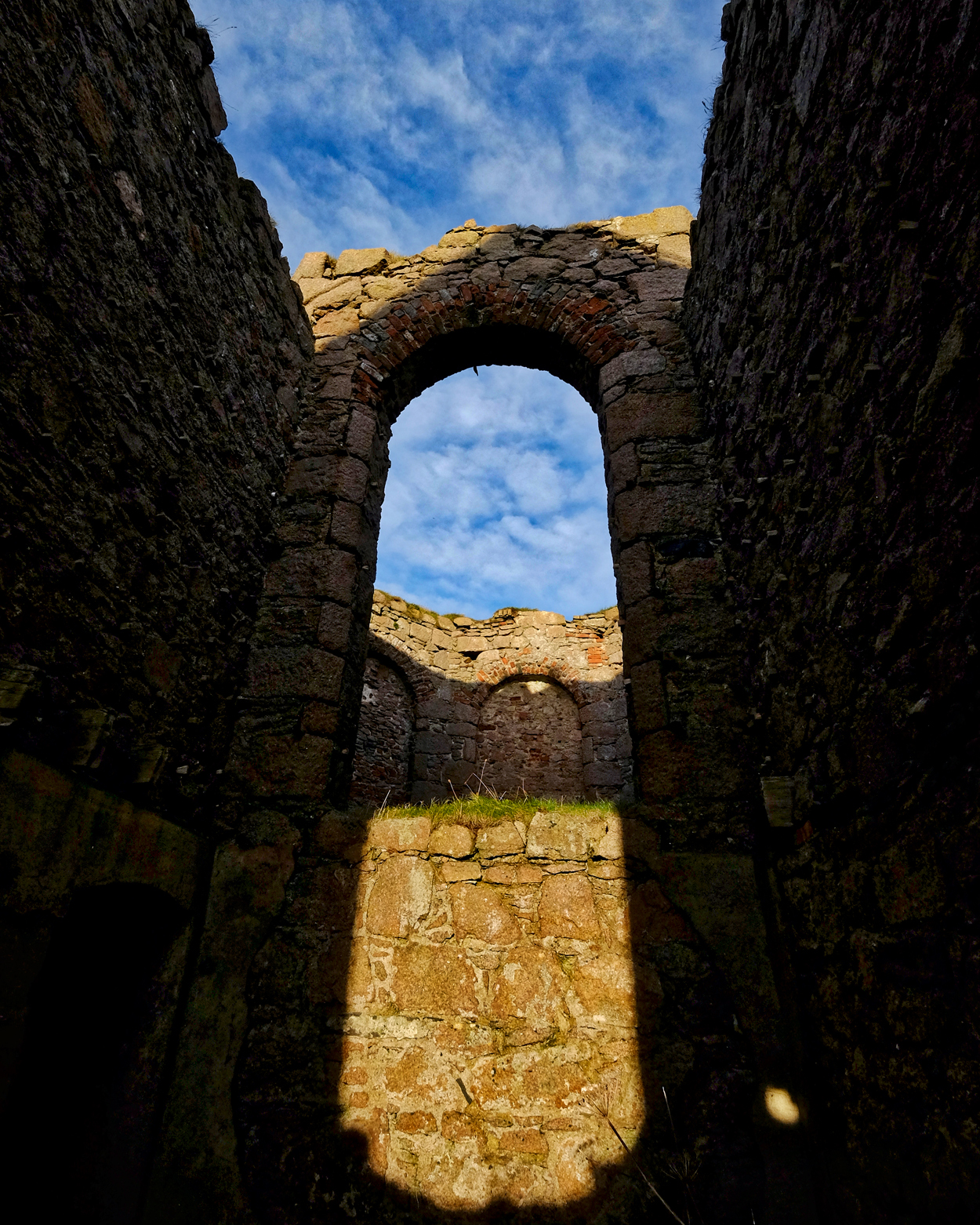 John and I spent several hours wandering around inside the ruins of New Slaines Castle enjoying the play of light and shadow on the deserted halls and rooms . . .
John and I spent several hours wandering around inside the ruins of New Slaines Castle enjoying the play of light and shadow on the deserted halls and rooms . . . 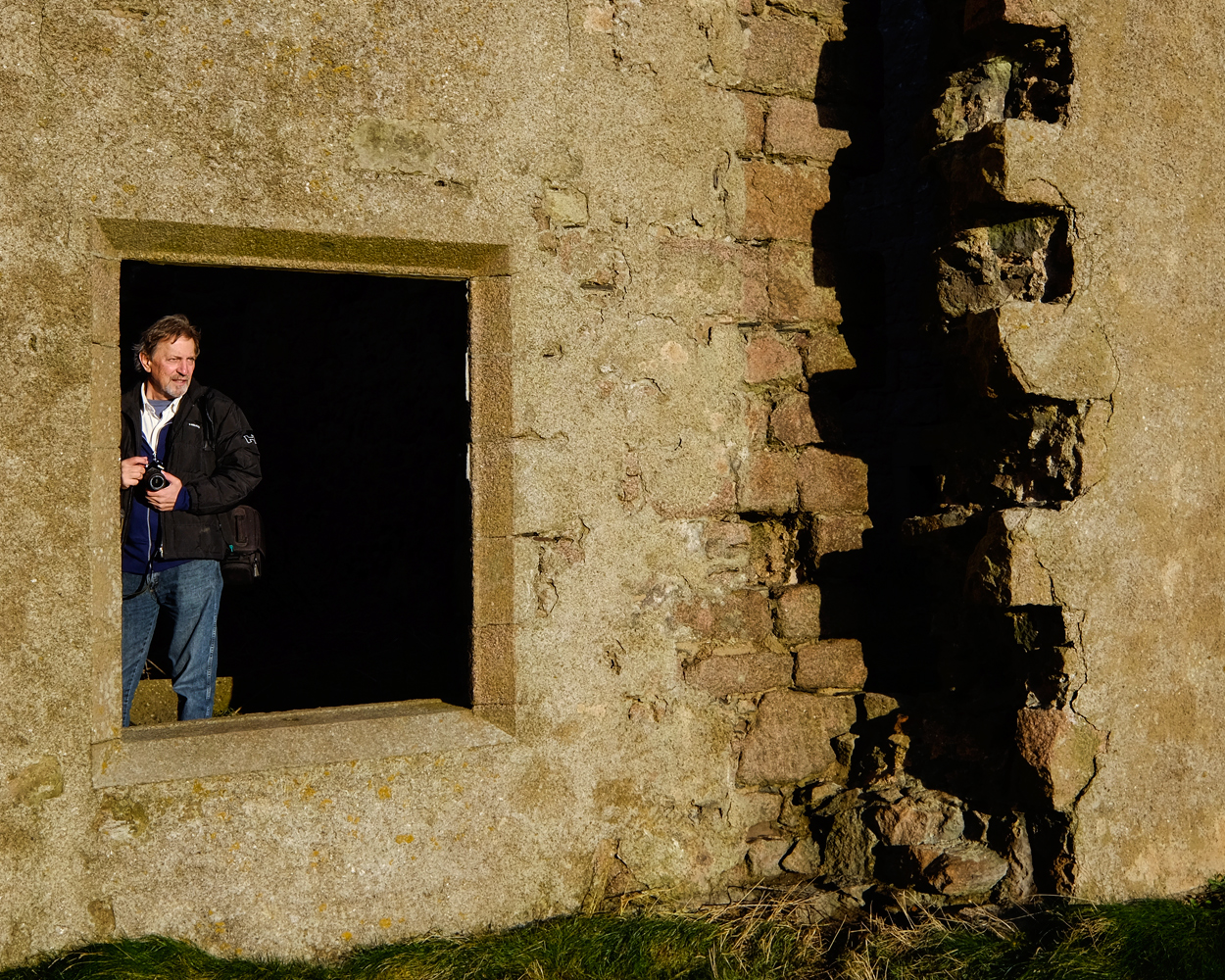 . . . as well as making portraits of each other among the ruins.
. . . as well as making portraits of each other among the ruins.
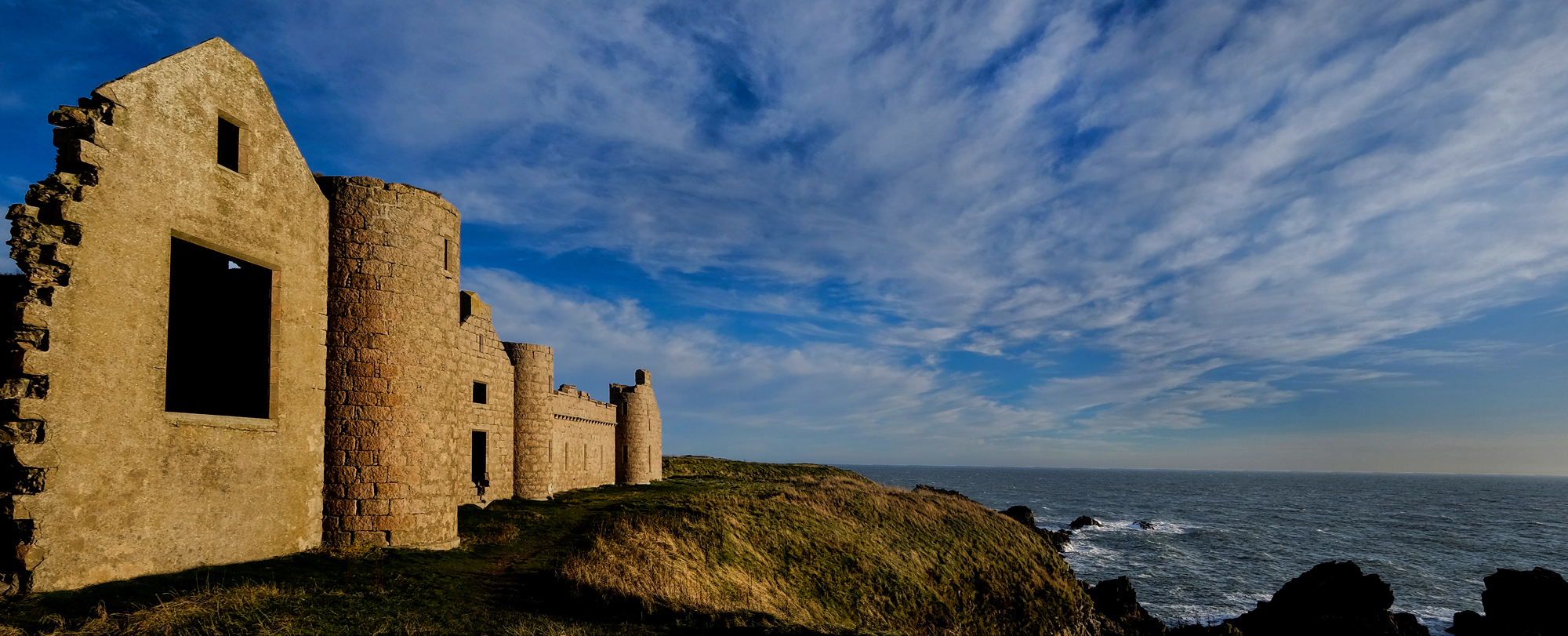 The castle on the North Sea cliffs, New Slaines.
The castle on the North Sea cliffs, New Slaines.
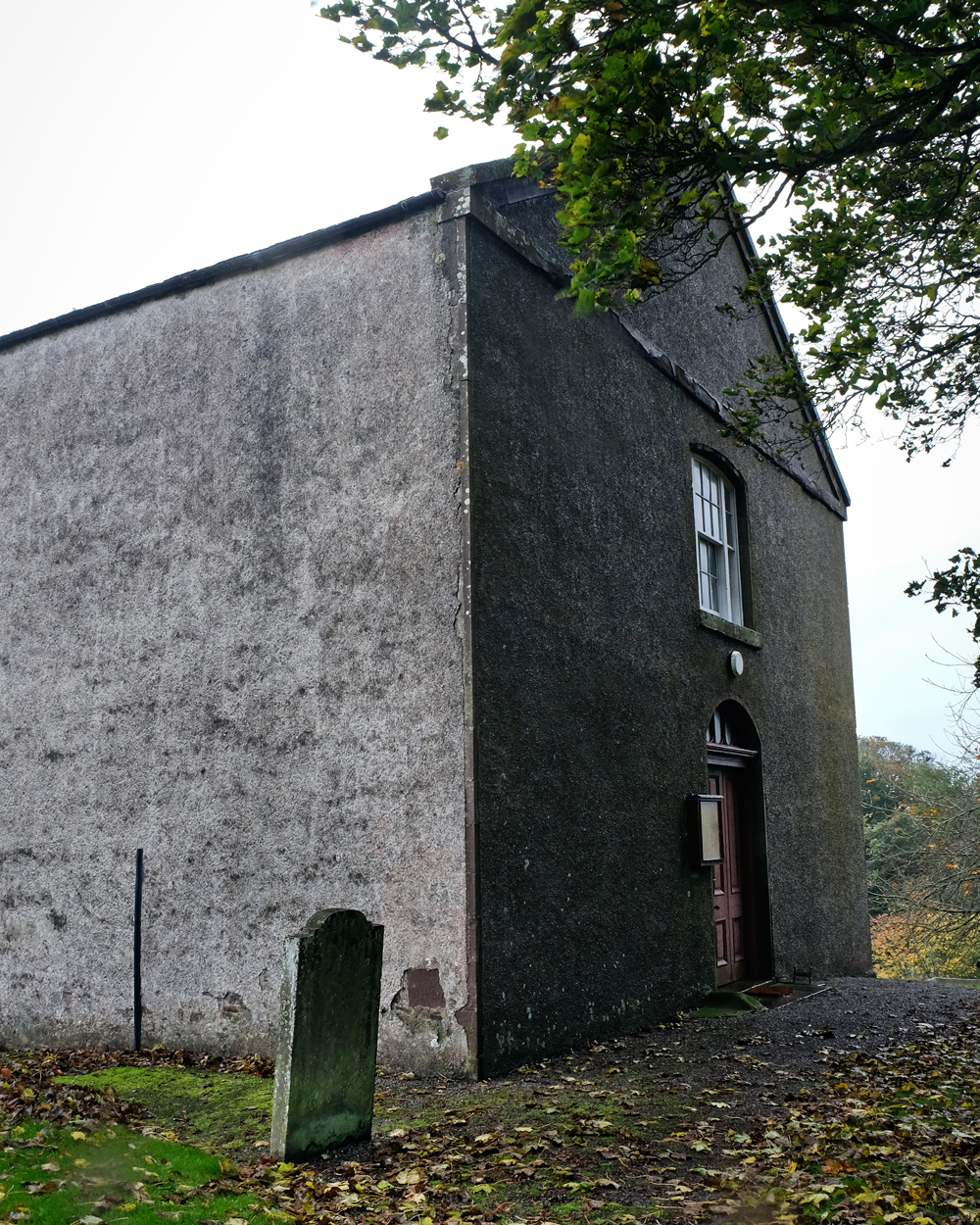 The Benholme Kirke, built on the site of a 9th century hermitage.
The Benholme Kirke, built on the site of a 9th century hermitage.
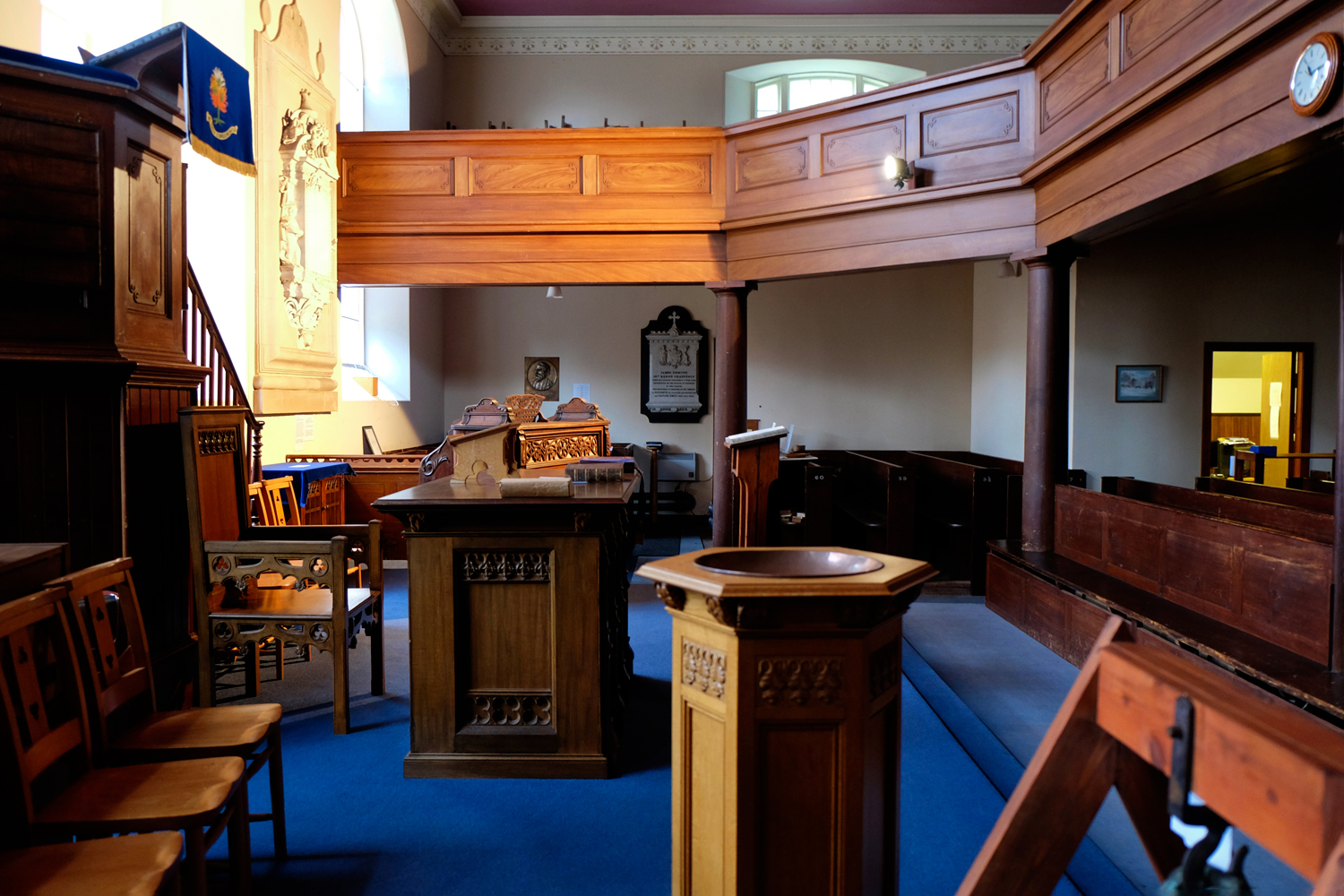 Although we interrupted the Benholm Kirke bookkeeper . . . but he obliged with a tour and short history of this interesting place.
Although we interrupted the Benholm Kirke bookkeeper . . . but he obliged with a tour and short history of this interesting place.
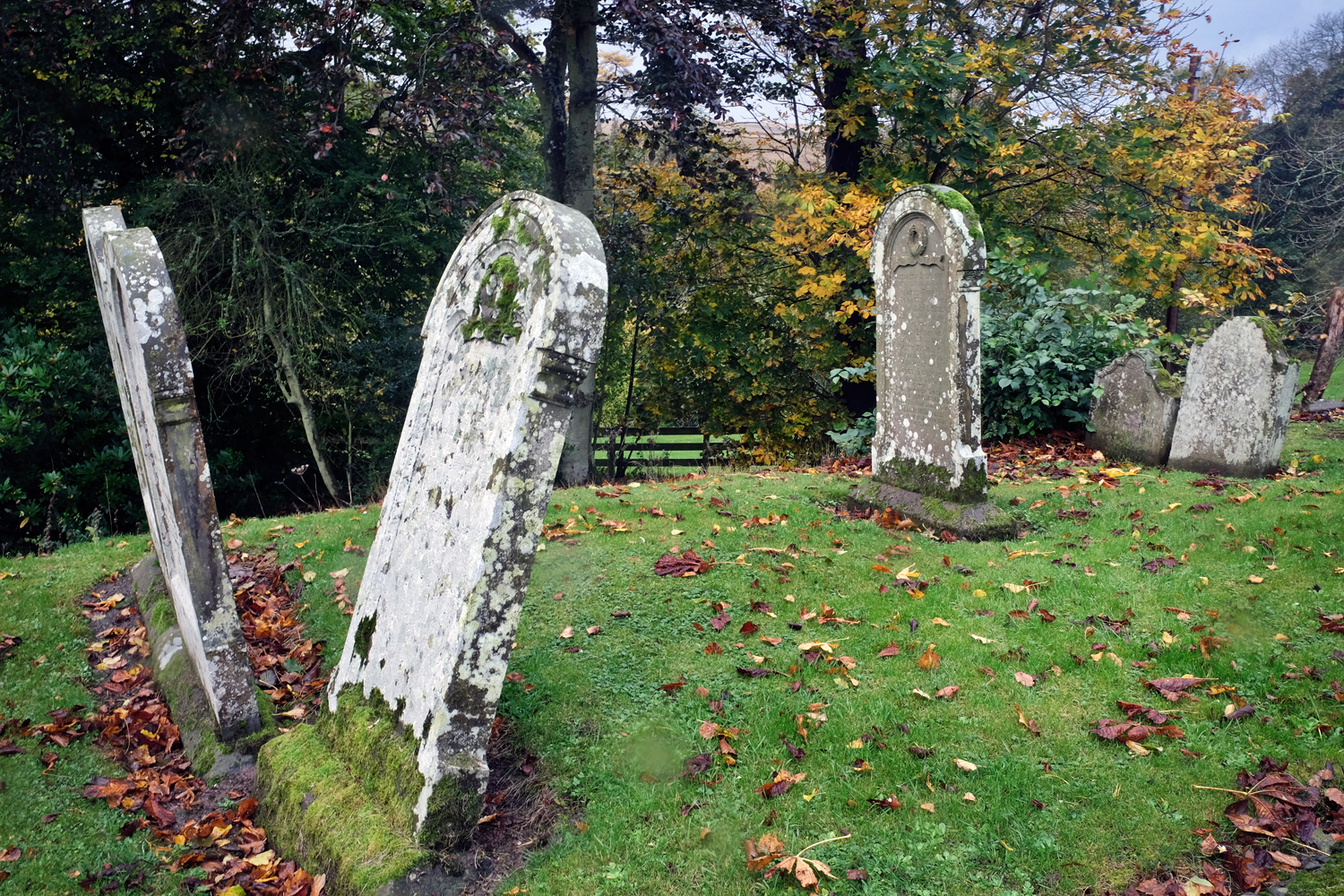 Benholm Kirke had a fine old 'kirkegaard' as well.
Benholm Kirke had a fine old 'kirkegaard' as well.
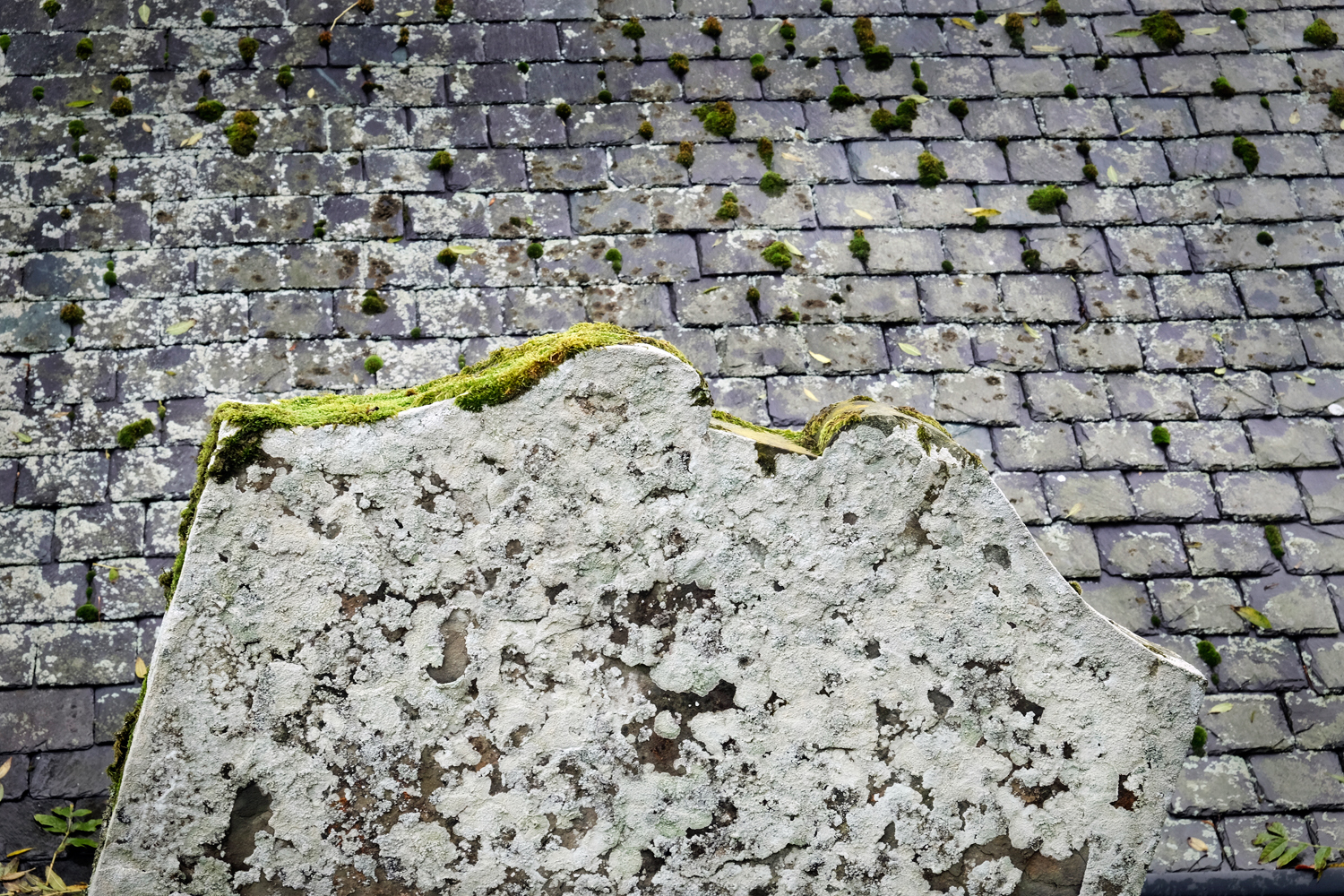 Moss and lichen-covered grave stone and ancient cottage slate roof . . .
Moss and lichen-covered grave stone and ancient cottage slate roof . . .
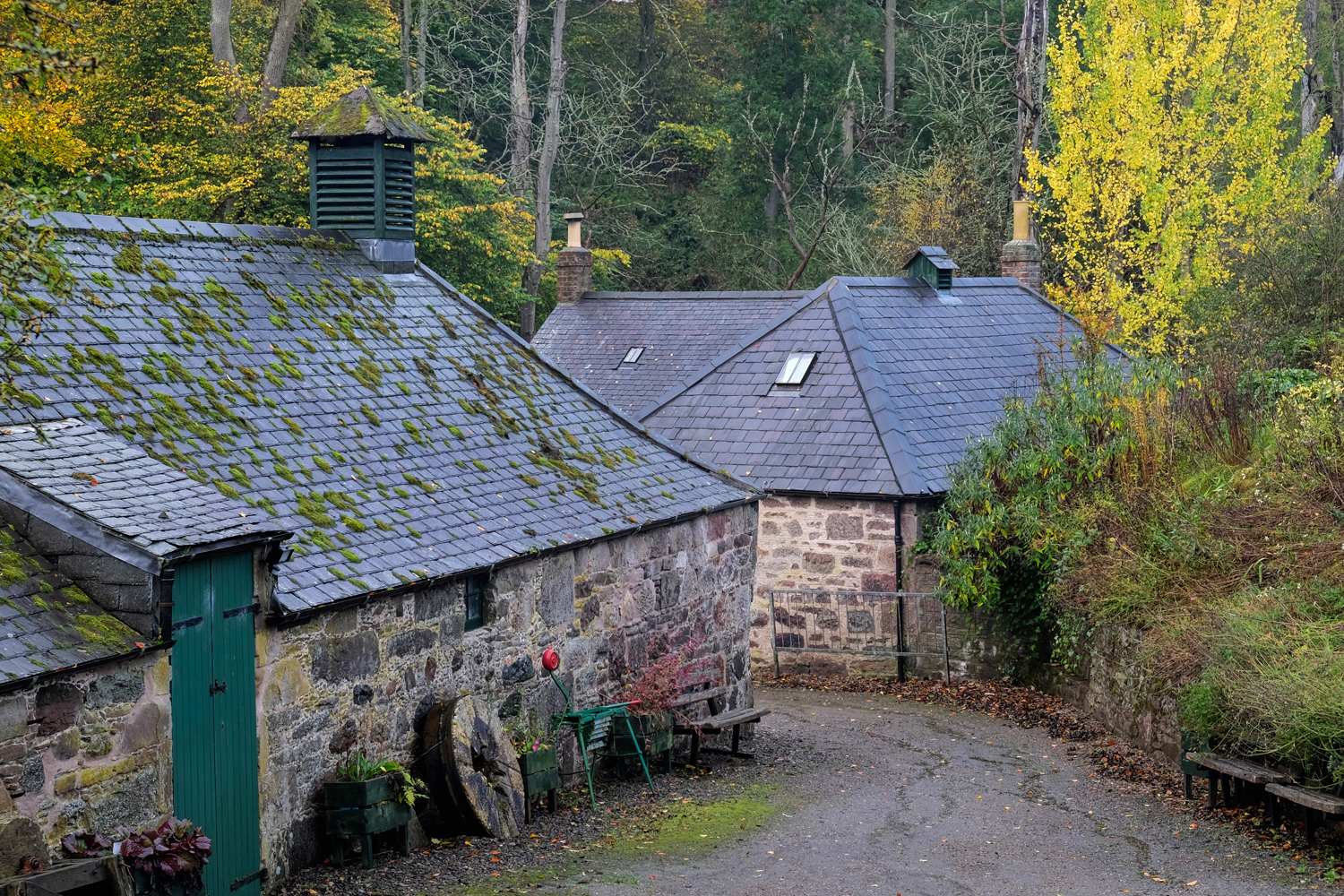 We sometimes consulted the GPS as to any 'points of interest' . . . and discovered this old mill.
We sometimes consulted the GPS as to any 'points of interest' . . . and discovered this old mill.
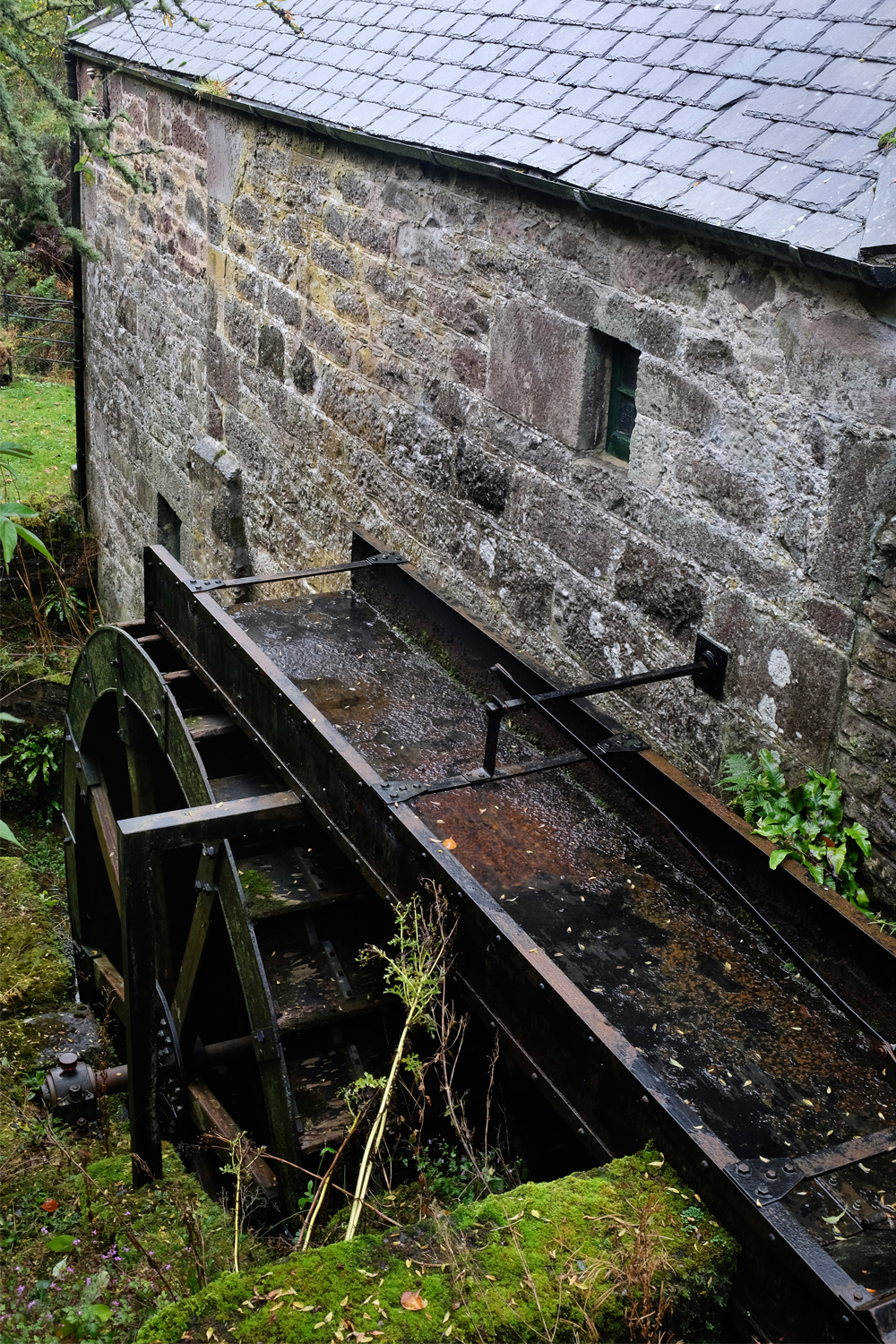 The sluice and water wheel were still there and still intact.
The sluice and water wheel were still there and still intact.
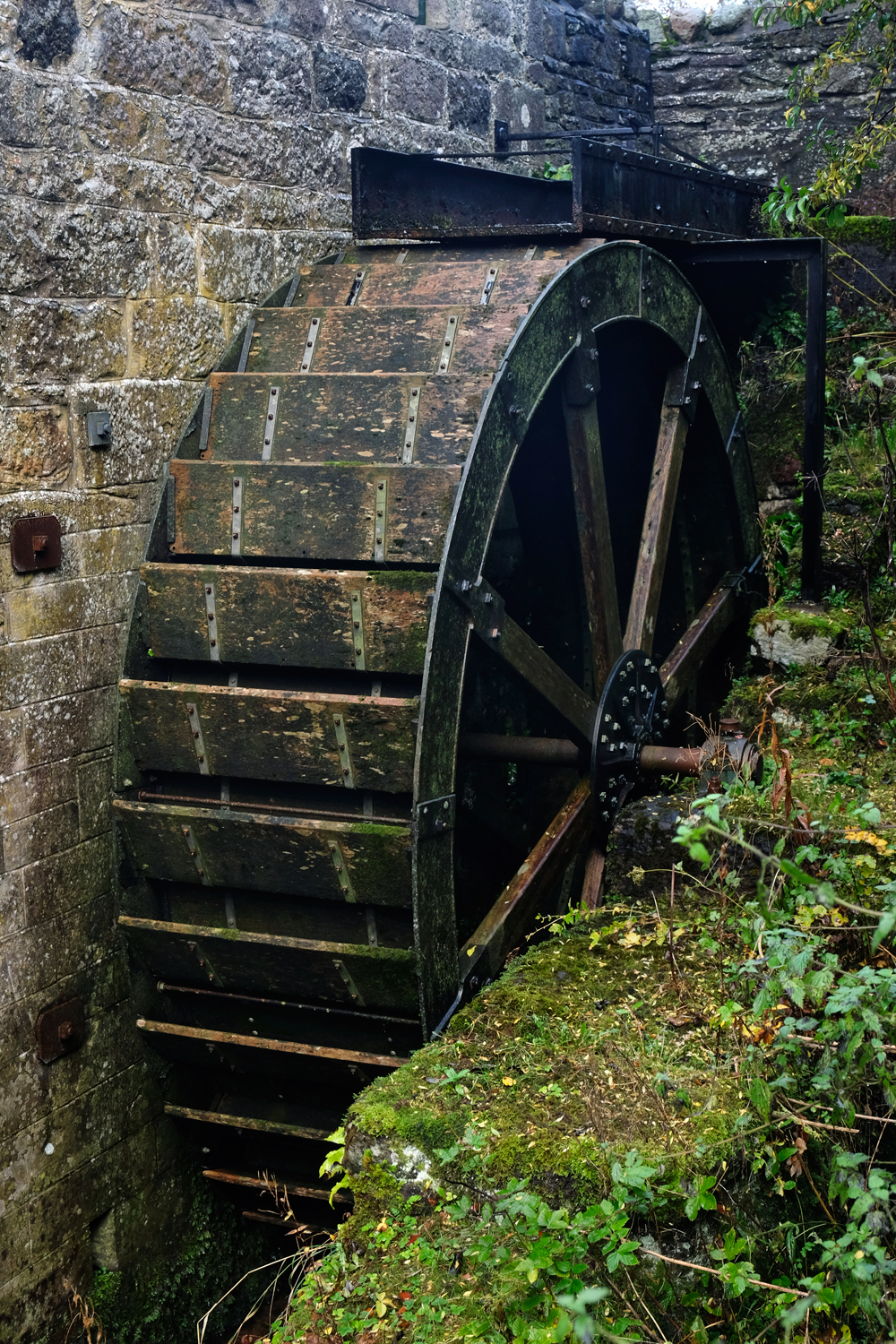 Down by the Old Mill Stream . . . A photographer's dream!
Down by the Old Mill Stream . . . A photographer's dream!
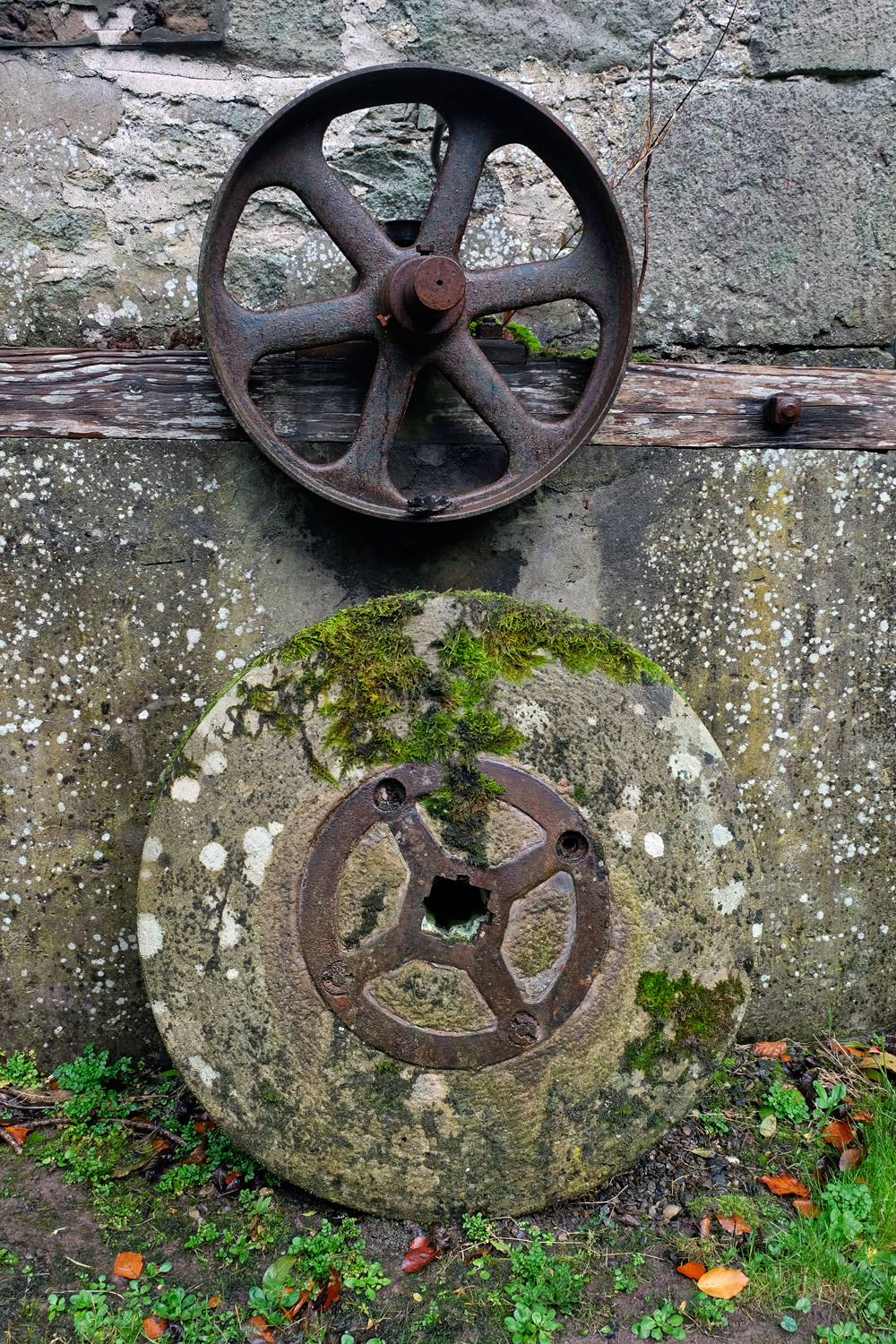 The opportunities for still life studies of mill paraphernalia was incredible. I enter only a few of the many beautiful photographs I took here.
The opportunities for still life studies of mill paraphernalia was incredible. I enter only a few of the many beautiful photographs I took here.
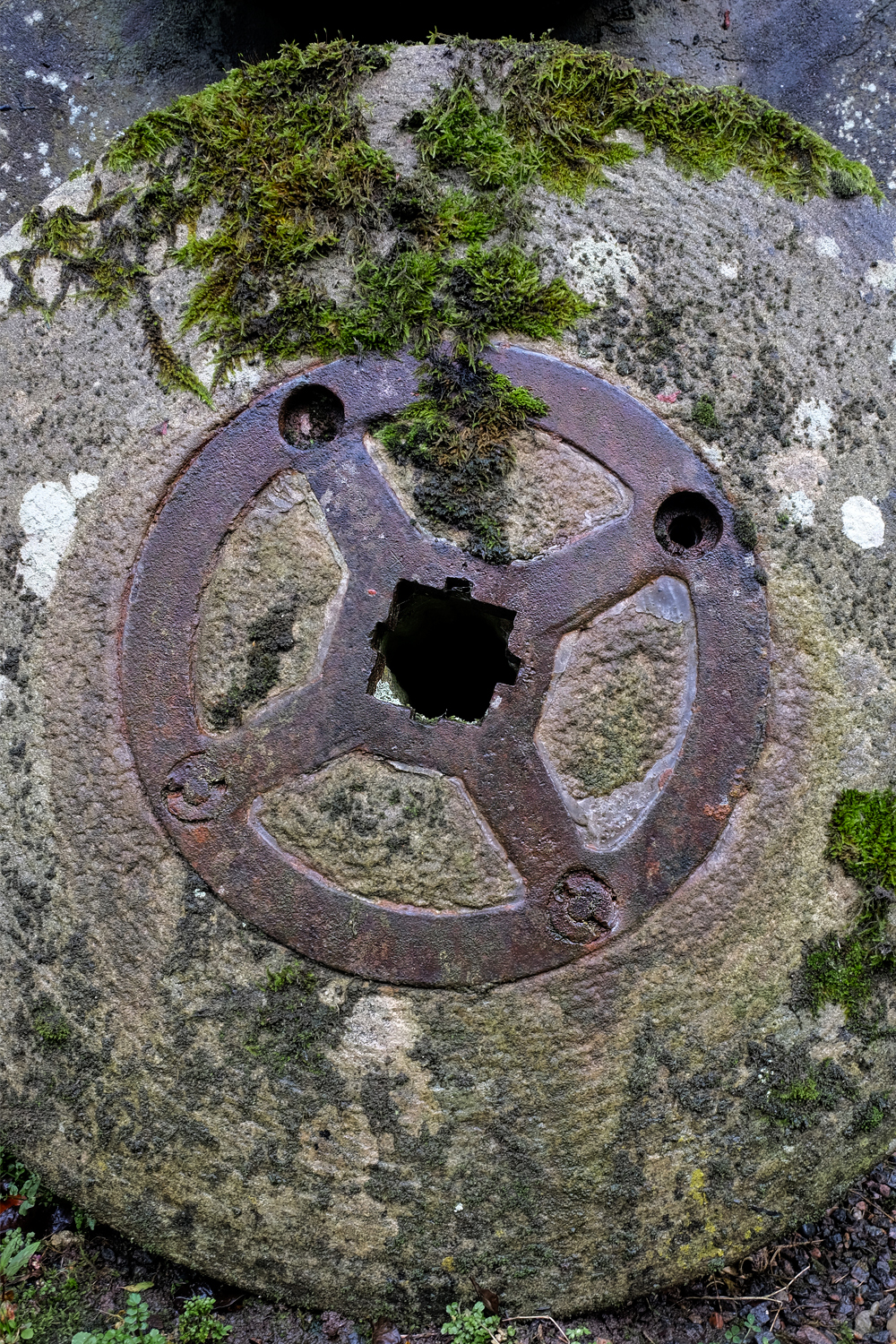 An old mill stone.
An old mill stone.
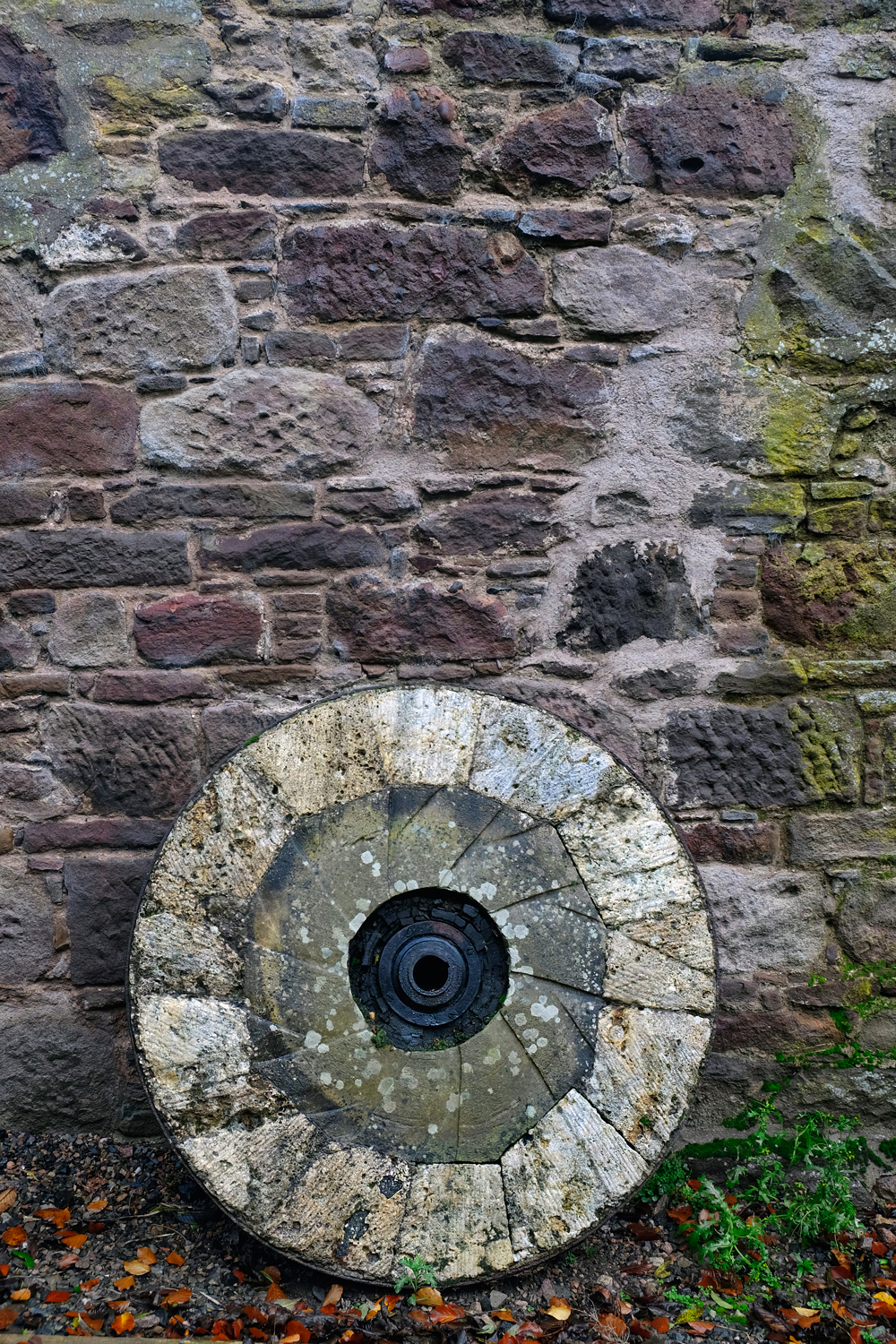 An old mill stone made of several stone segments.
An old mill stone made of several stone segments.
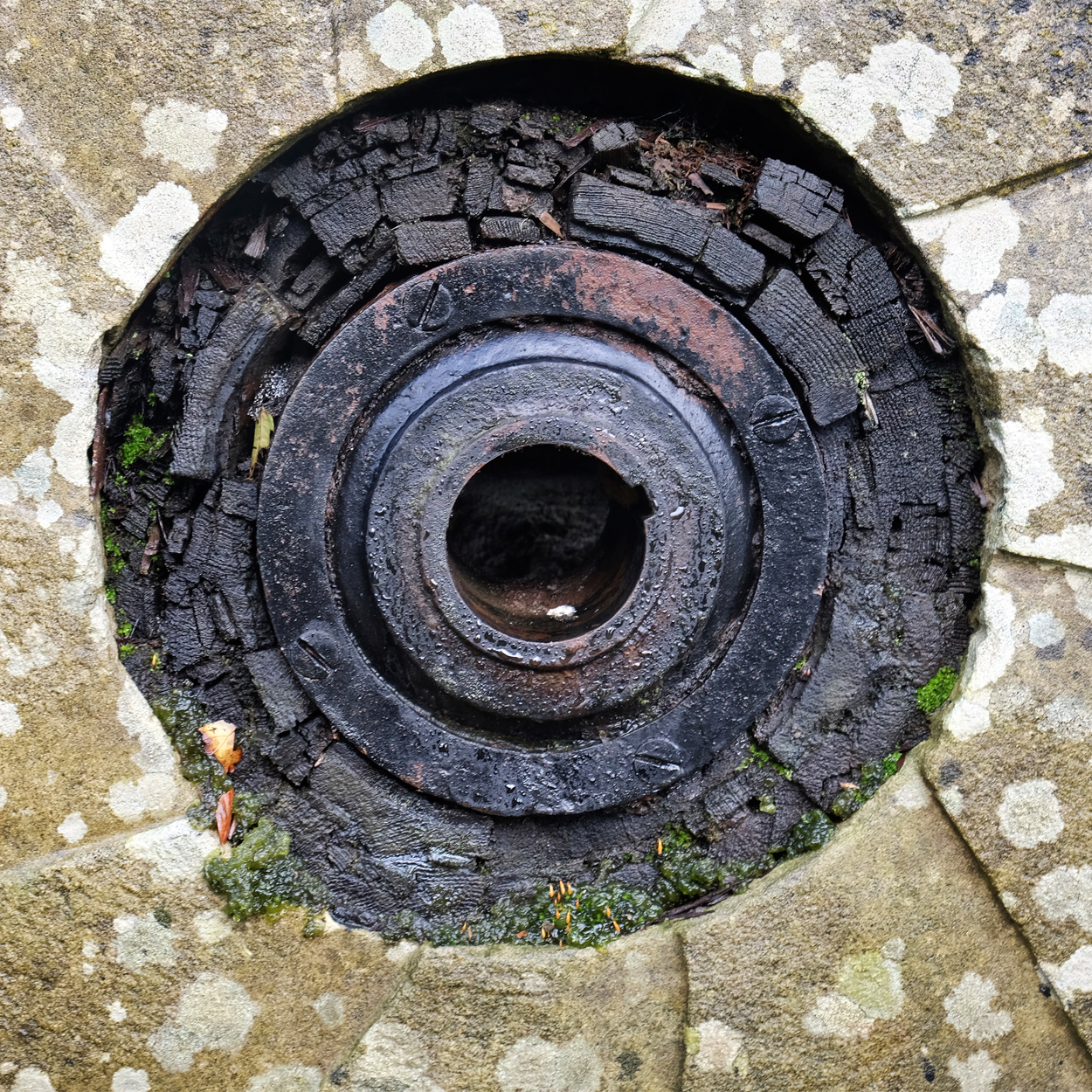 The wood-shimed center bearing of an old mill stone.
The wood-shimed center bearing of an old mill stone.
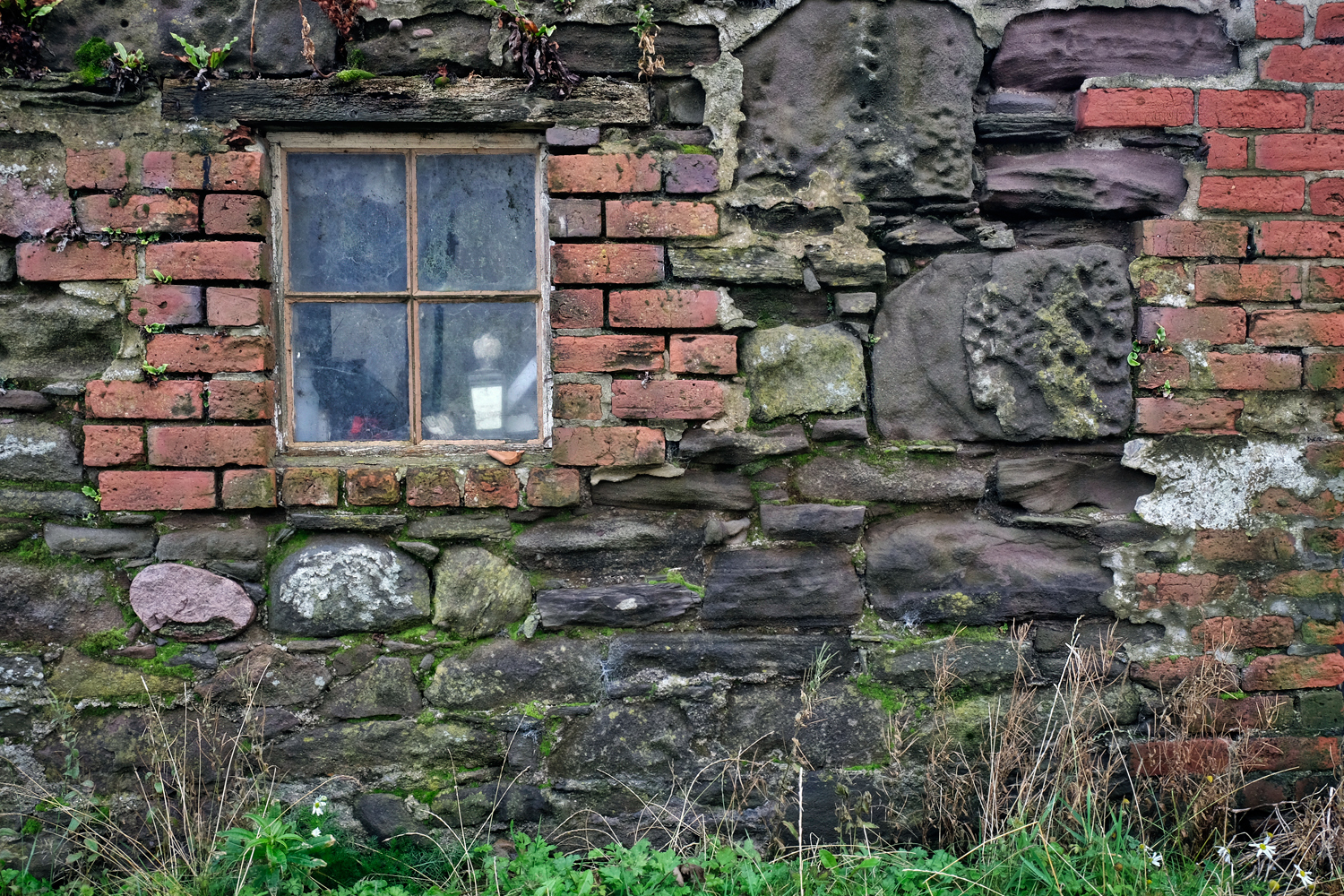 One morning we drove south on the old coastal road to the fishing village of Johnshaven.
One morning we drove south on the old coastal road to the fishing village of Johnshaven.
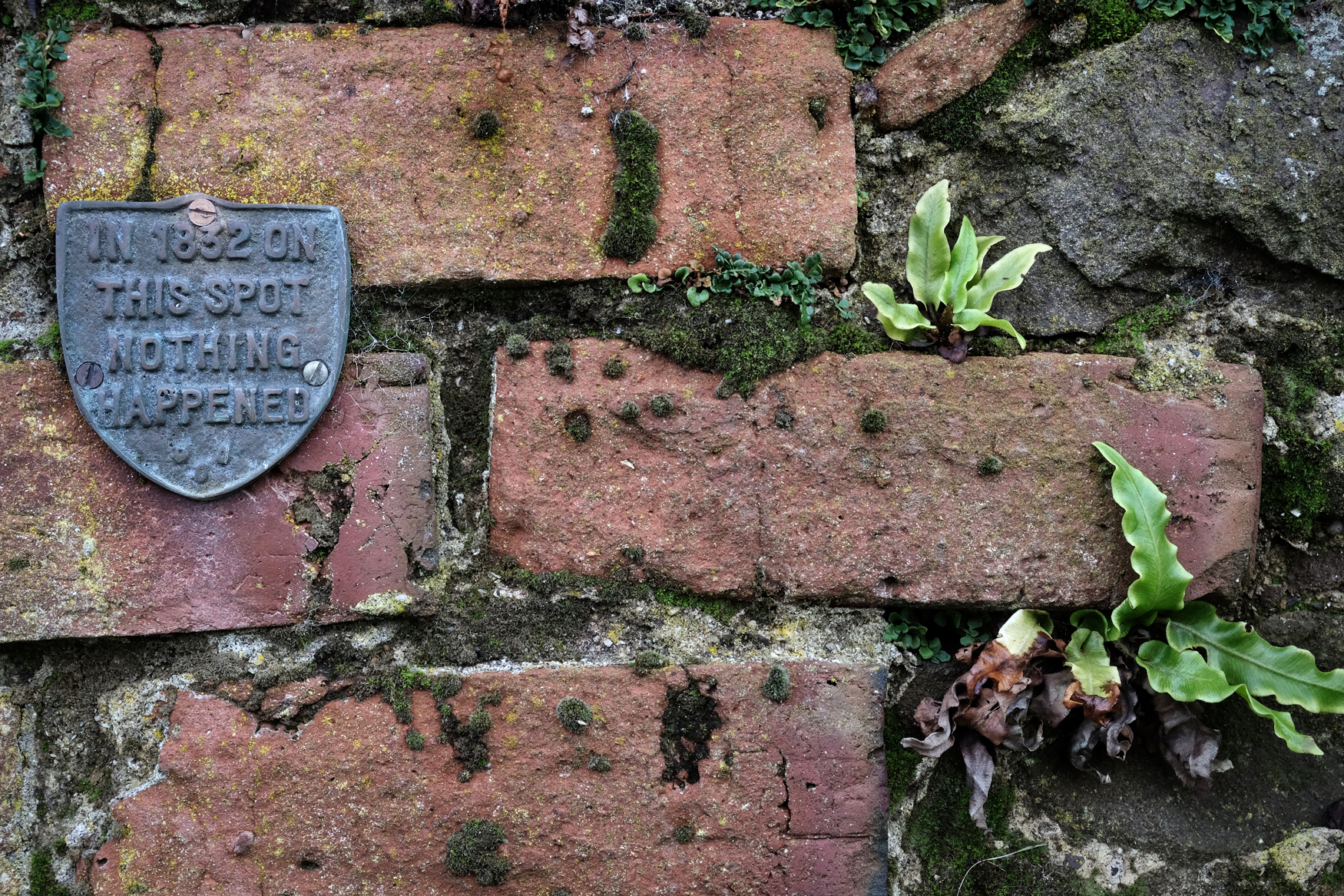 The Johnshaven townsfolk had quite the sense of humor!
The Johnshaven townsfolk had quite the sense of humor!
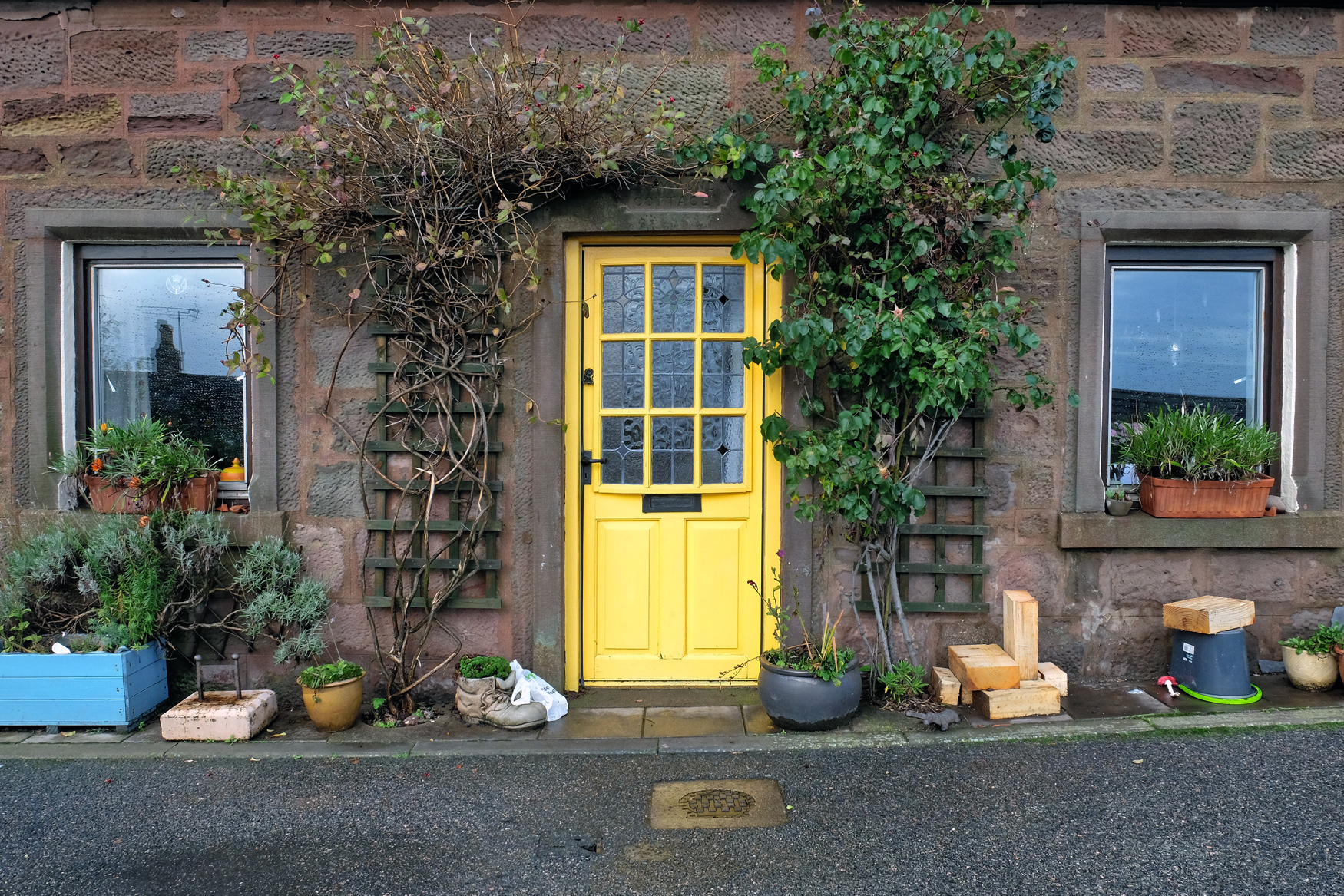 Johnshaven was a grey and austere village (like many Scottish villages) but with a splash of color here and there.
Johnshaven was a grey and austere village (like many Scottish villages) but with a splash of color here and there.
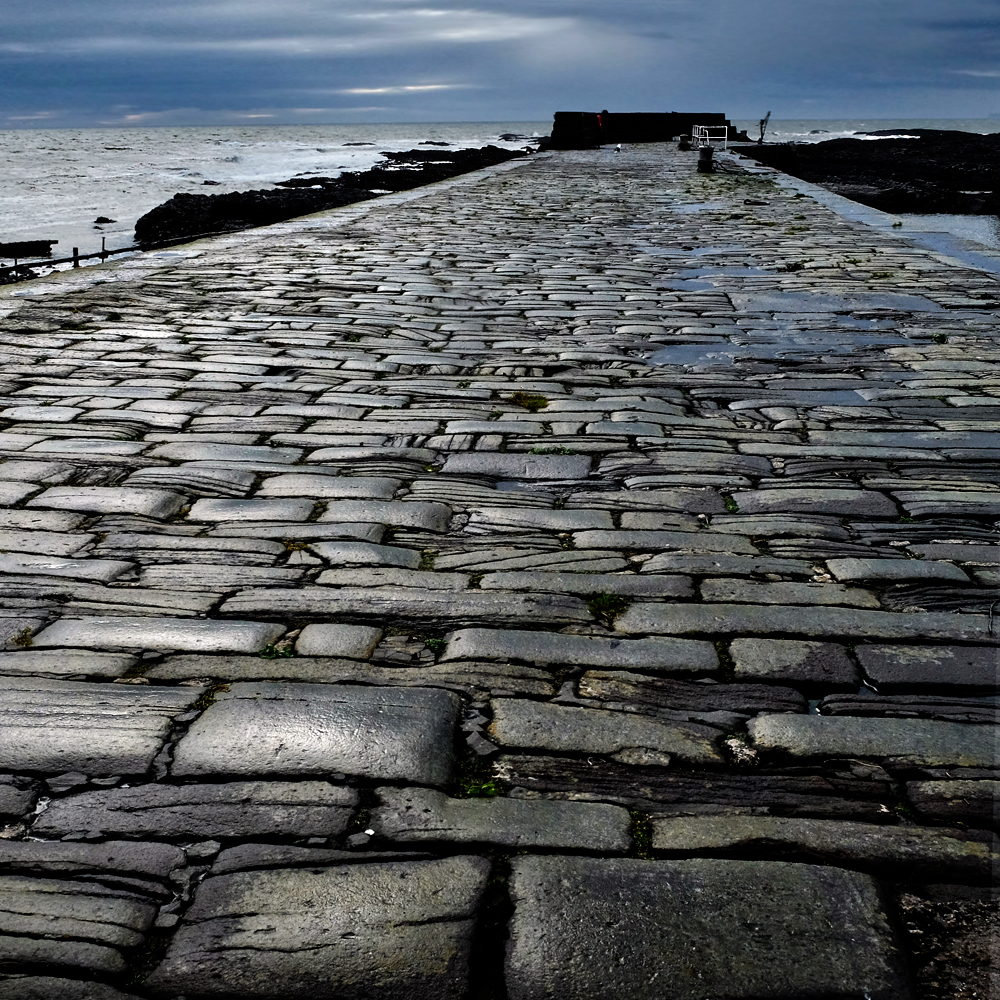 The fine old stone harbour jetty of Johnshaven.
The fine old stone harbour jetty of Johnshaven.
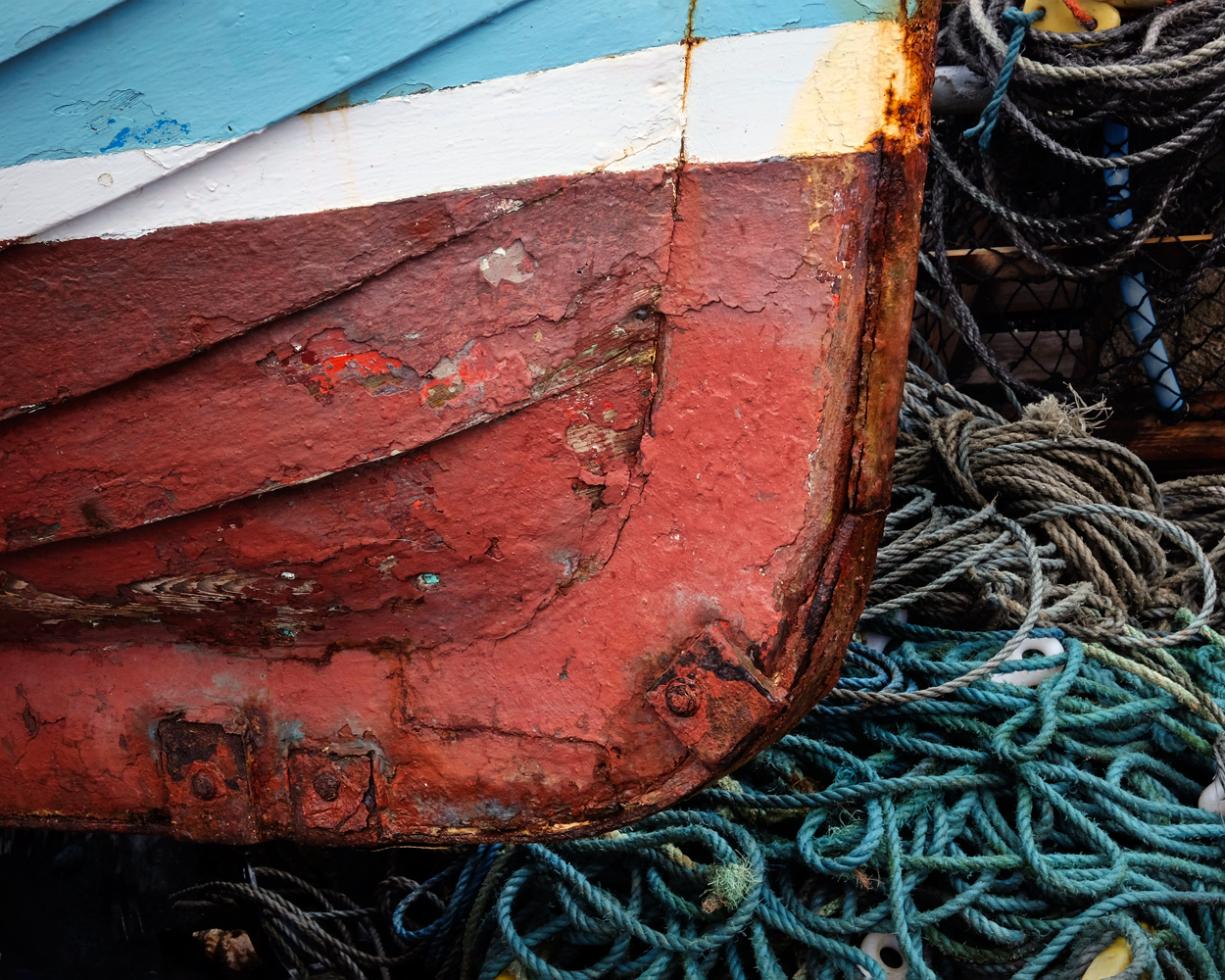 Johnshaven is a fishing village with many great nautical-themed photos to be had.
Johnshaven is a fishing village with many great nautical-themed photos to be had.
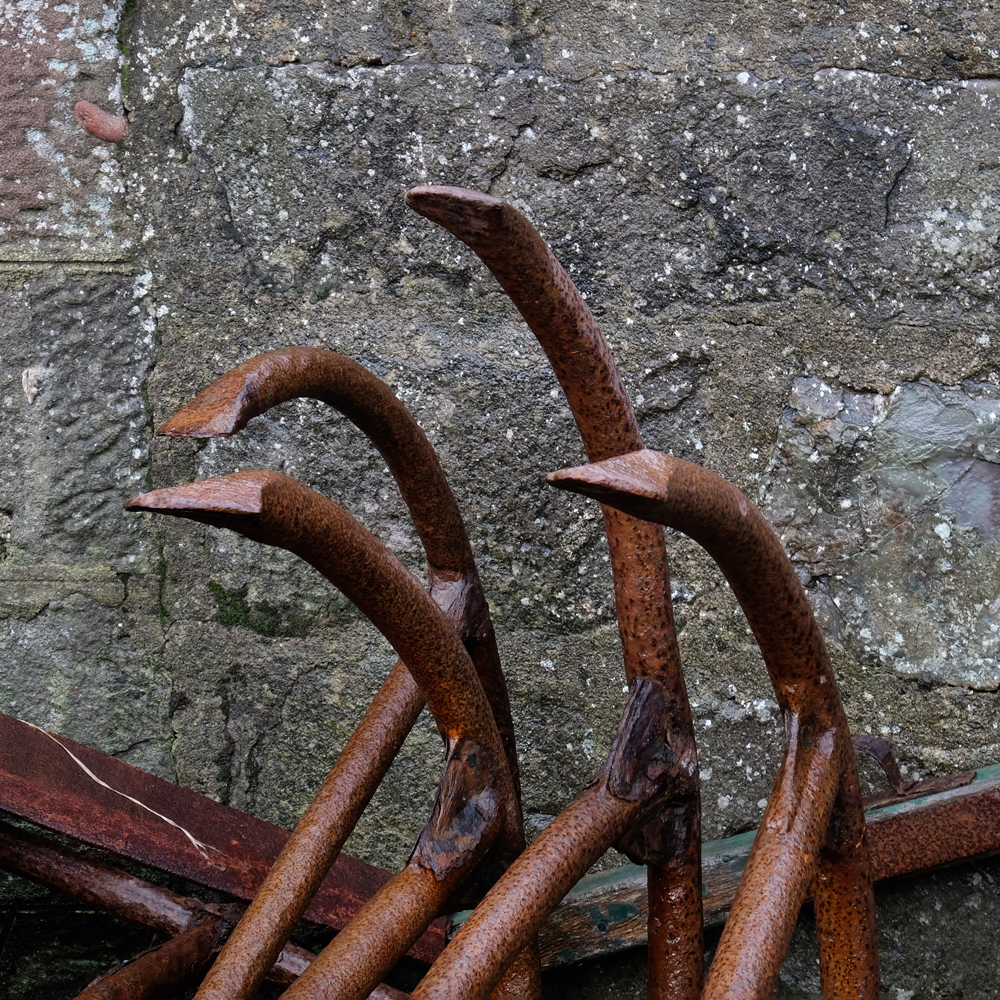 Old anchors in the boatyards.
Old anchors in the boatyards.
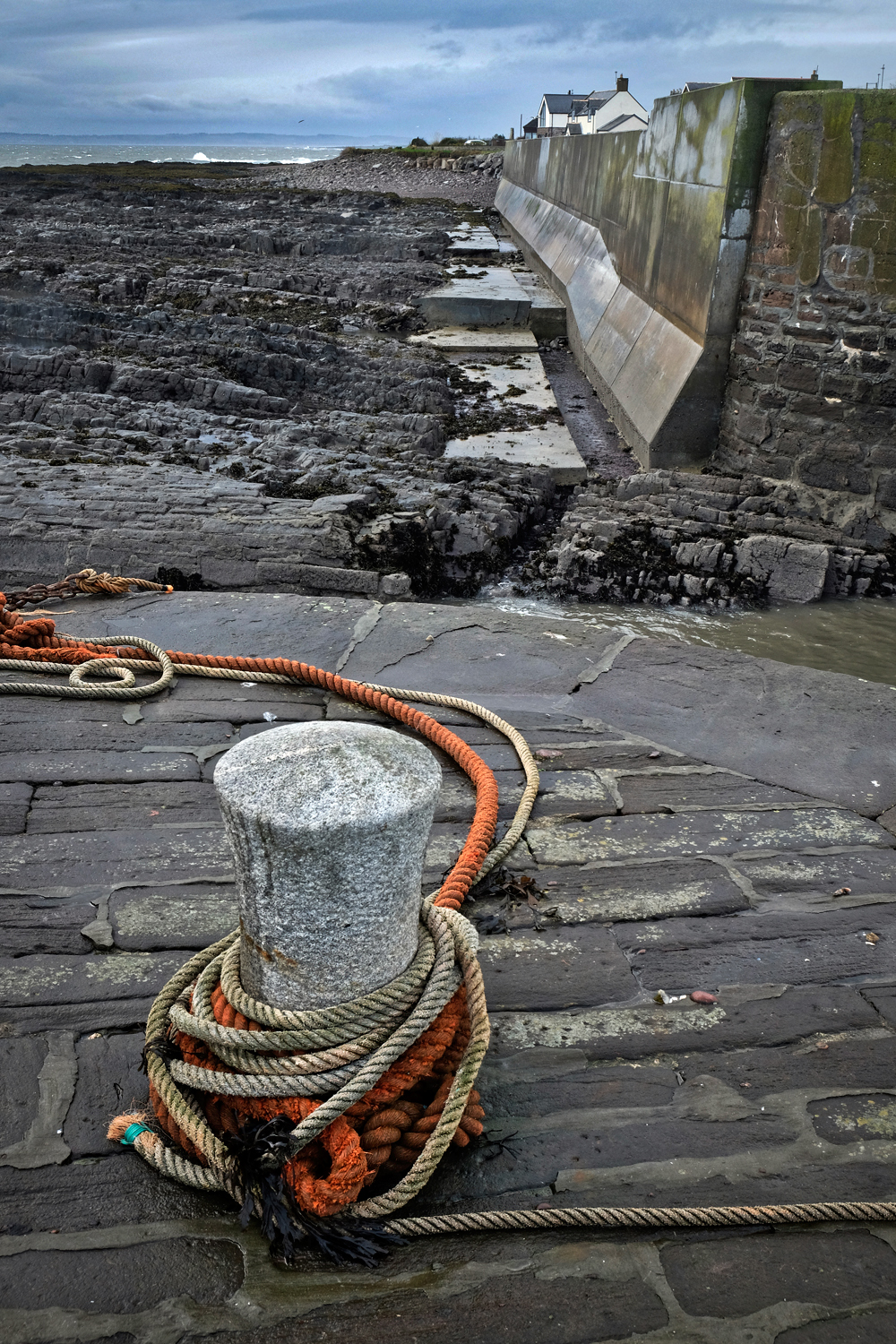 Low tide along the Johnshaven sea wall.
Low tide along the Johnshaven sea wall.
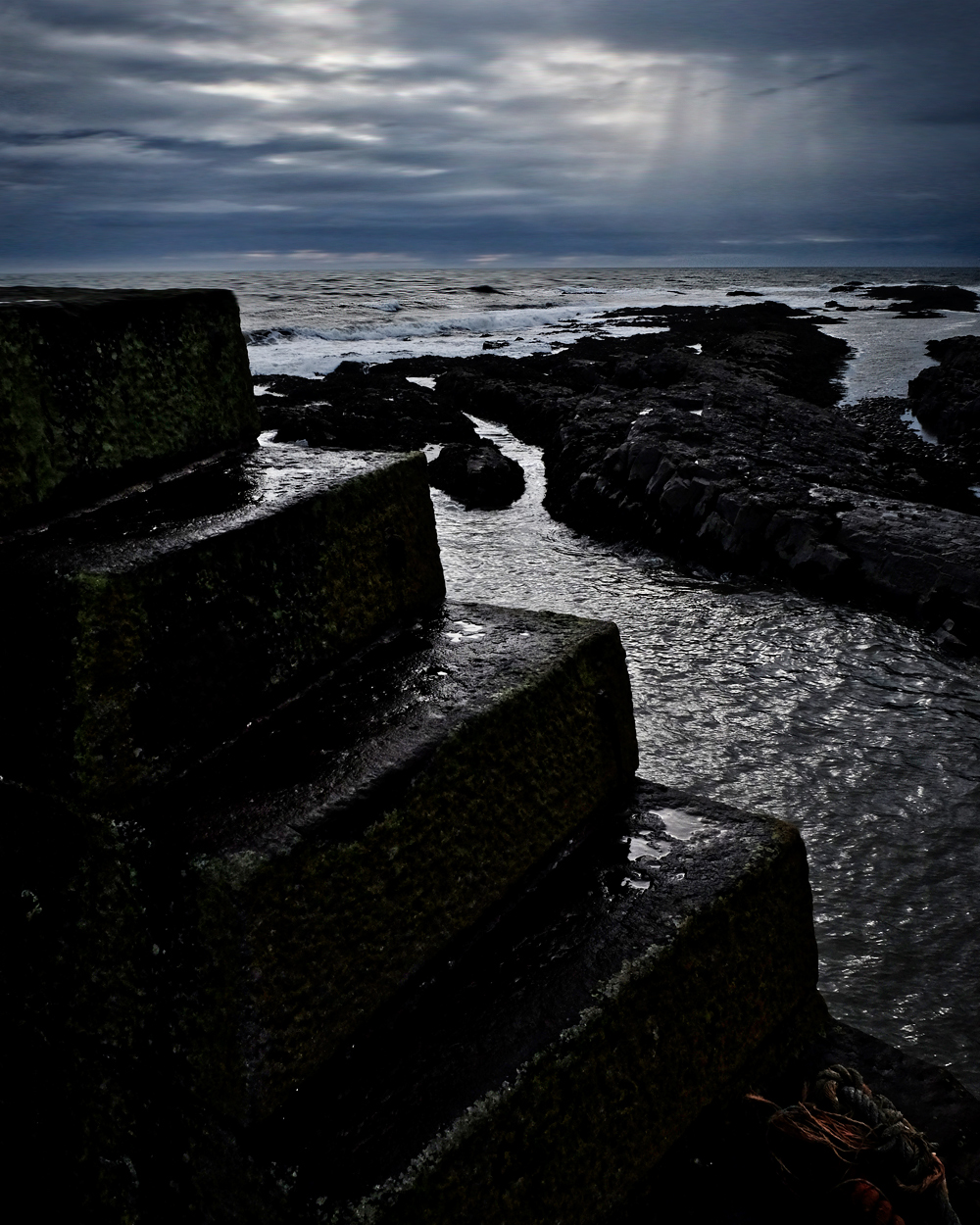 The only bad weather we saw during three days. A stormy North Sea.
The only bad weather we saw during three days. A stormy North Sea.
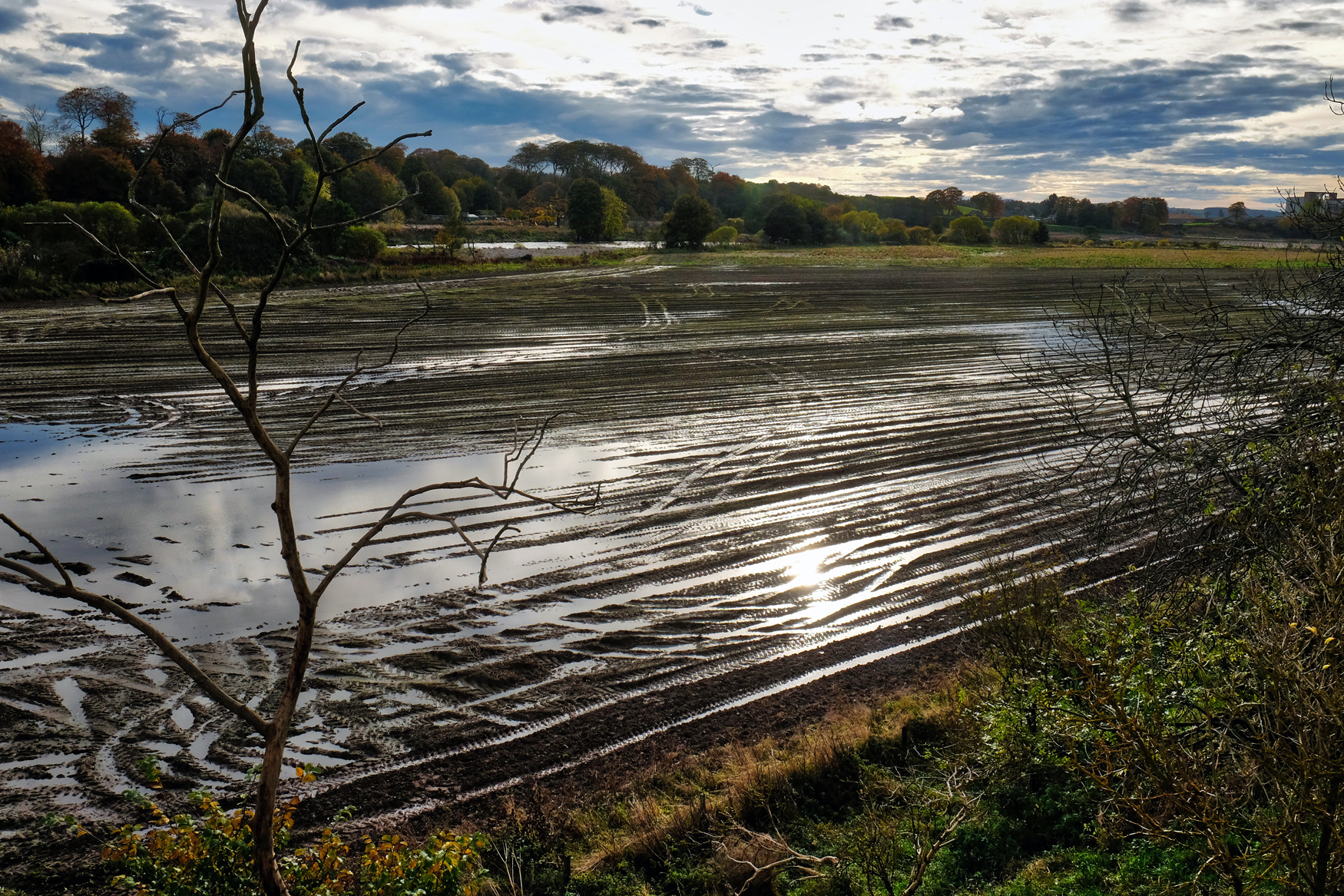 Near Montrose there were signs of a recent flood of the River Esk.
Near Montrose there were signs of a recent flood of the River Esk.
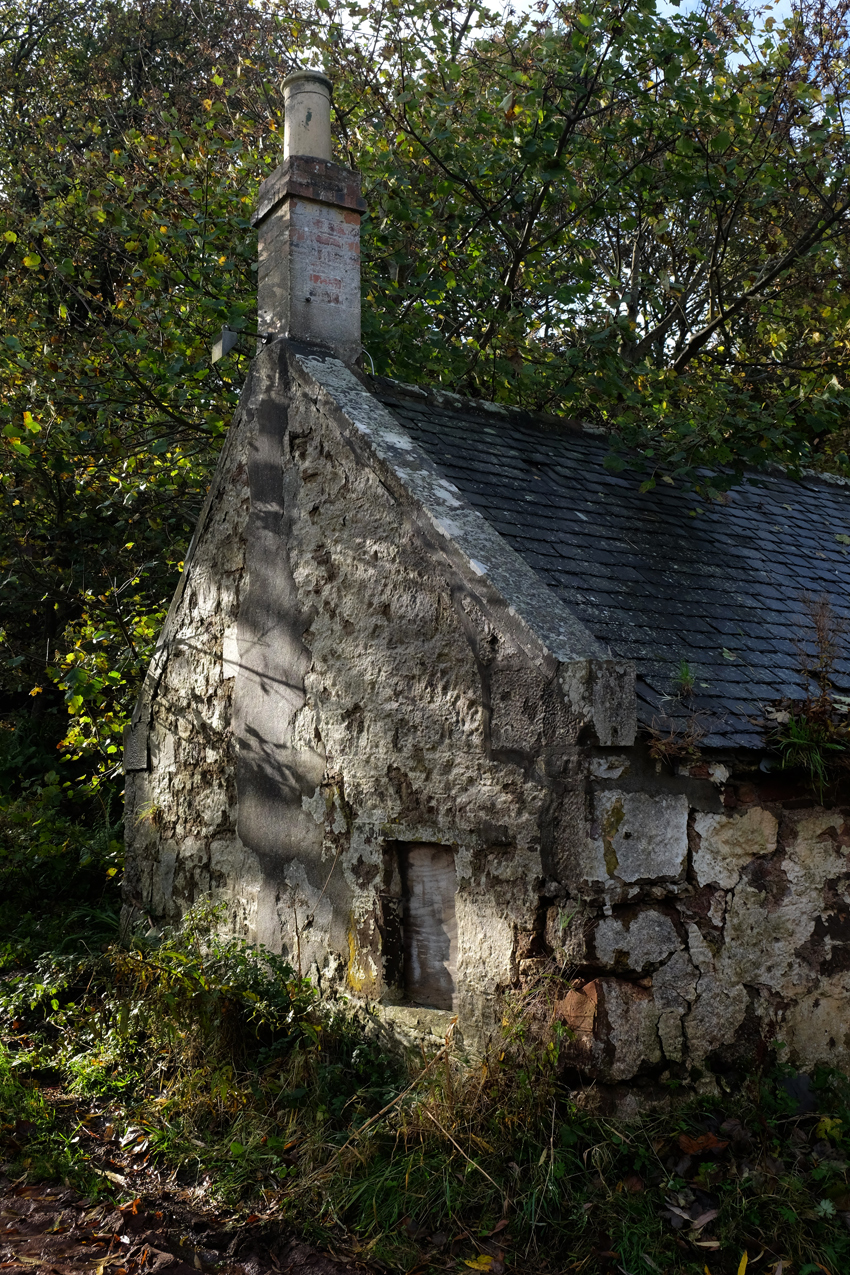 Whenever we would see magic light on an old stone building we would stop and take photographs.
Whenever we would see magic light on an old stone building we would stop and take photographs.
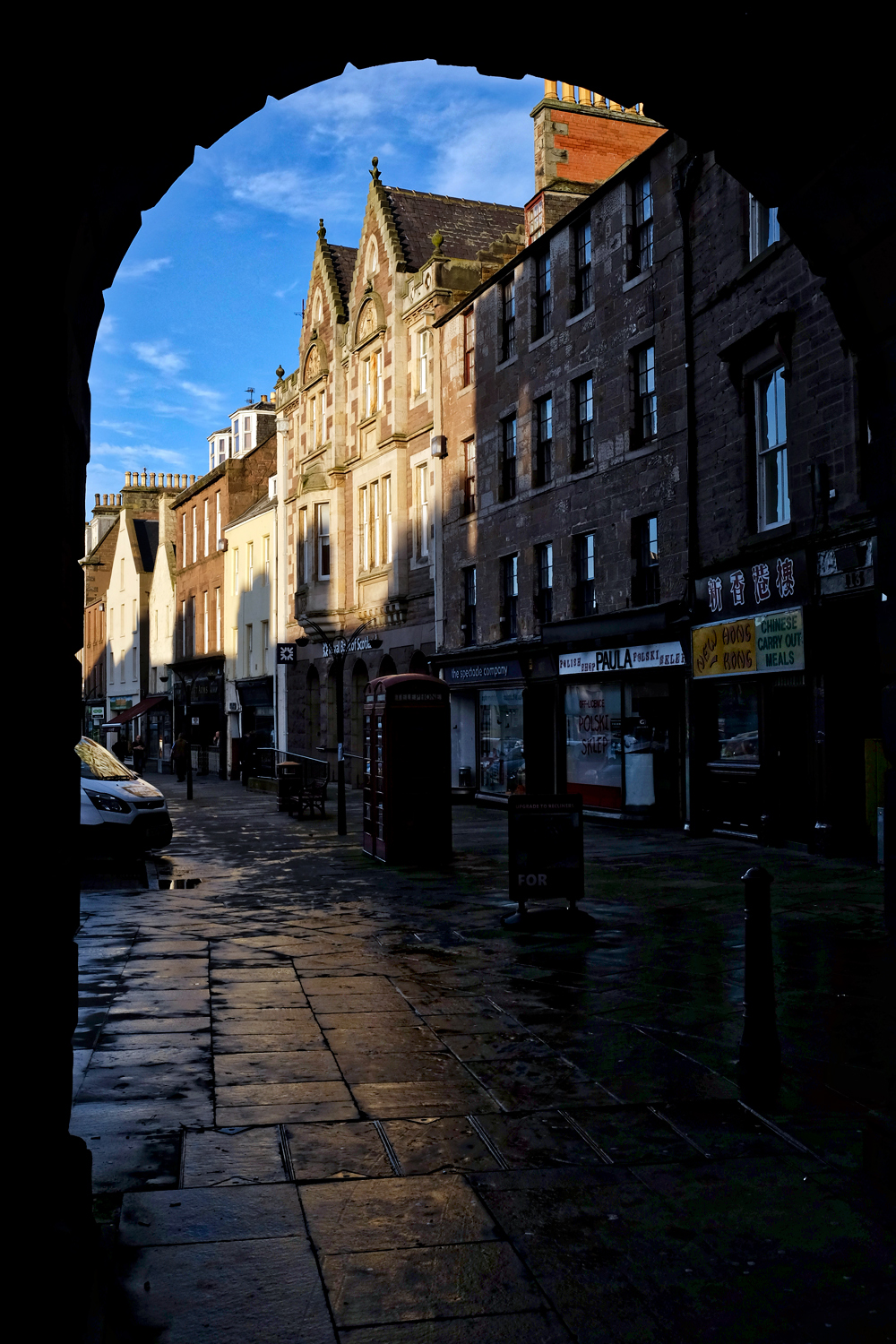 We stopped for coffee one late afternoon in the old market town of Montrose.
We stopped for coffee one late afternoon in the old market town of Montrose.
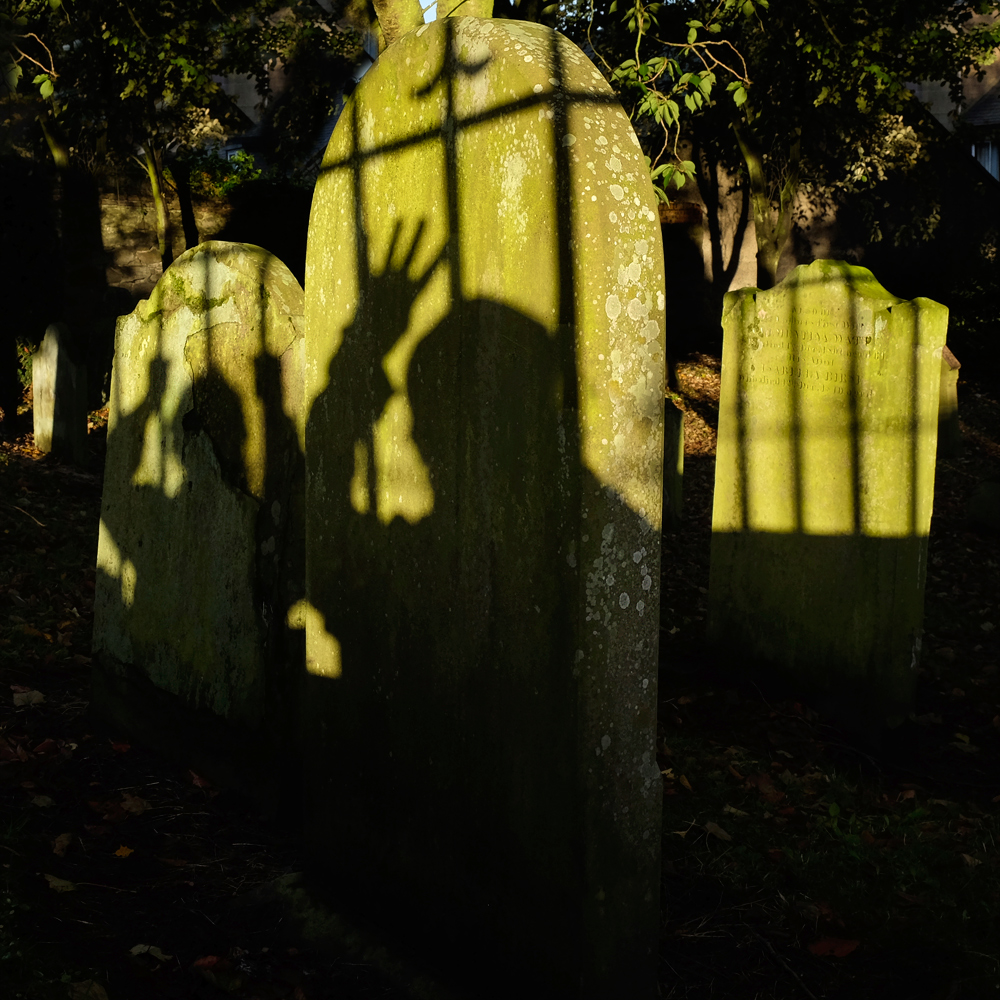 Yes, more ghoulish fun . . . in the Montrose Cemetery.
Yes, more ghoulish fun . . . in the Montrose Cemetery.
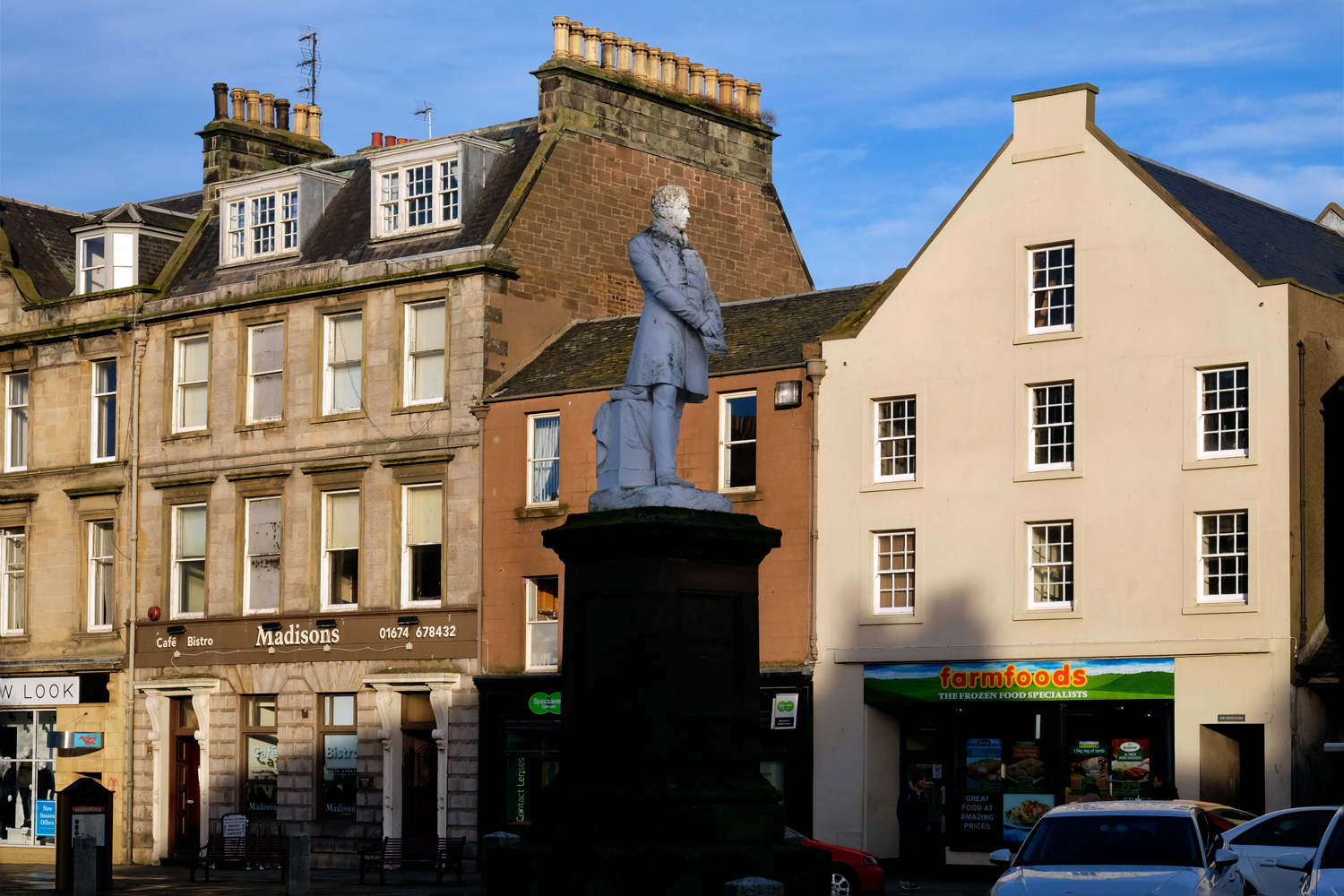 Montrose had some fine statues in the town square . . . here a good Samaritan was honored.
Montrose had some fine statues in the town square . . . here a good Samaritan was honored.
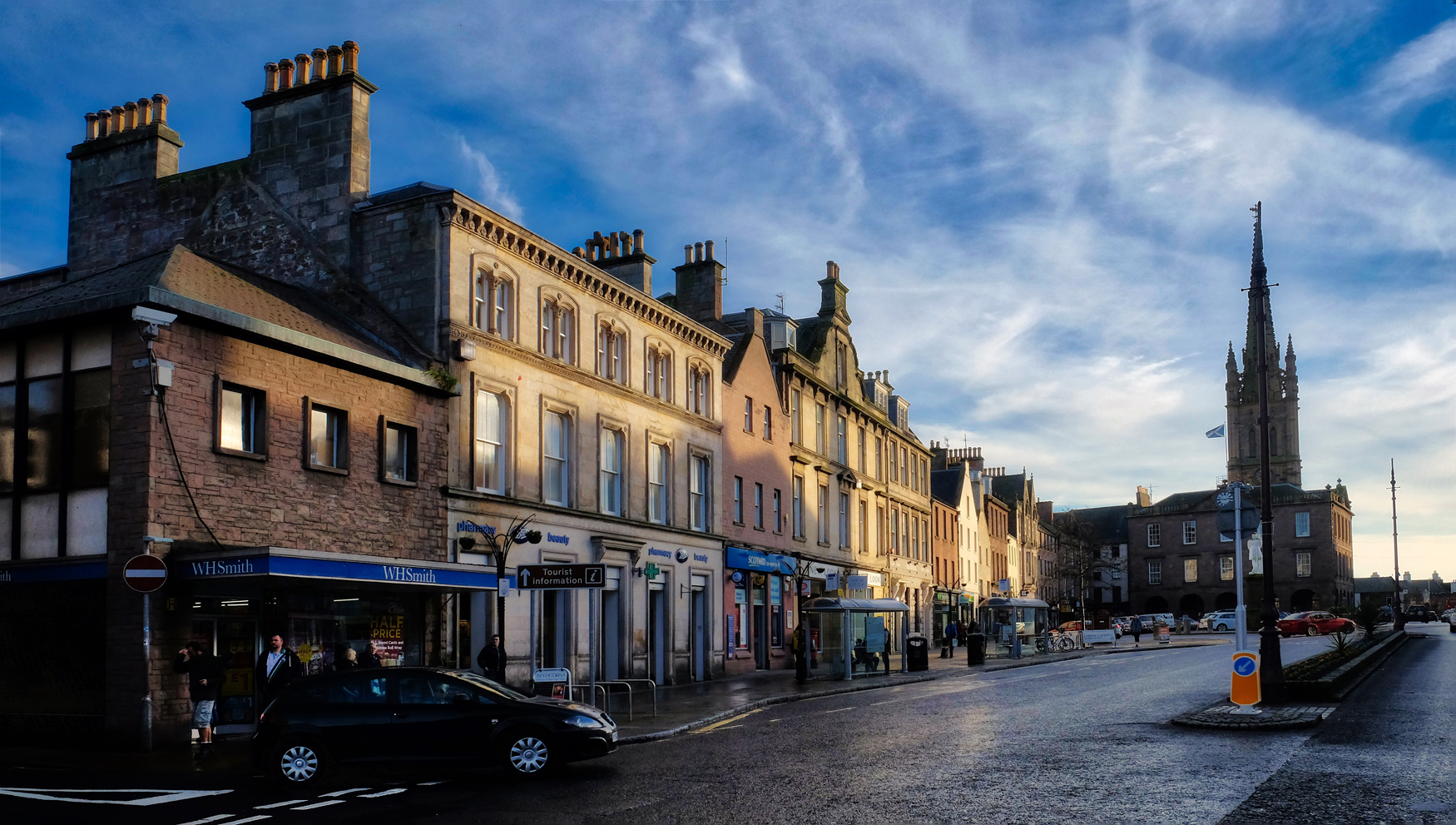 Montrose is typical of many Scottish towns.
Montrose is typical of many Scottish towns.
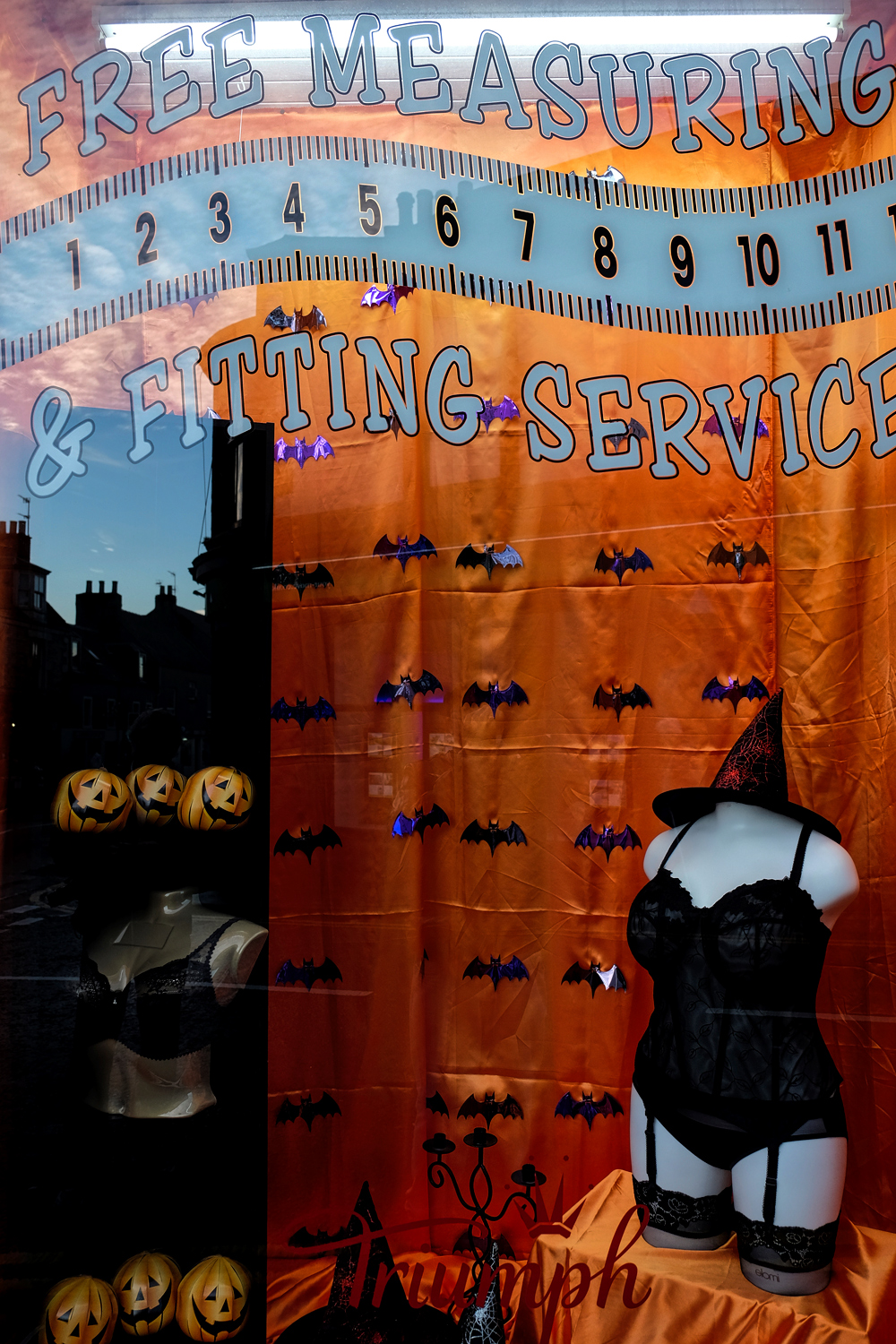 OK, maybe Montrose is not so typical after all.
OK, maybe Montrose is not so typical after all.
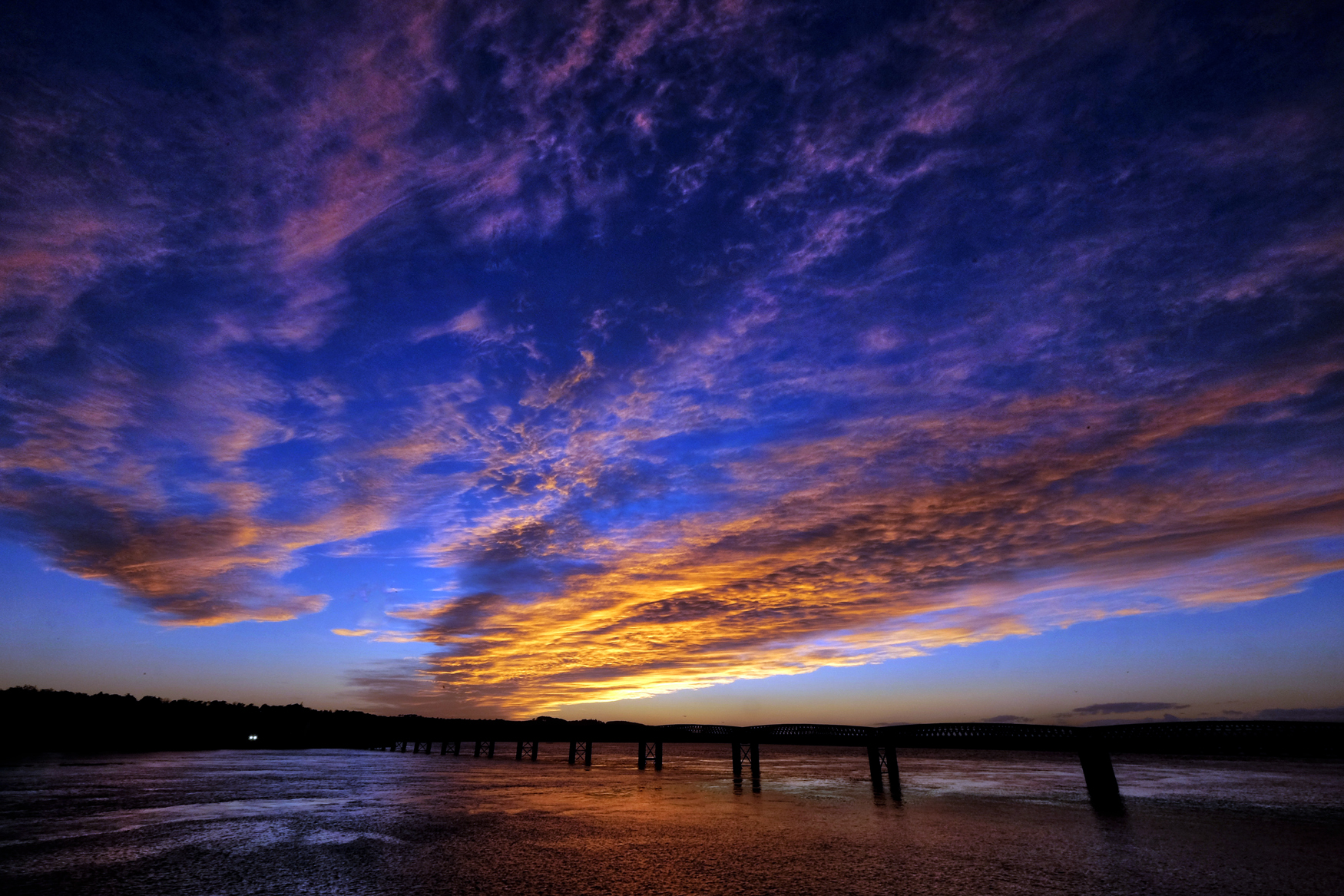 But what I will remember most about Montrose was the most incredible sunset of my life playing over us across the estuary bridge!
But what I will remember most about Montrose was the most incredible sunset of my life playing over us across the estuary bridge!
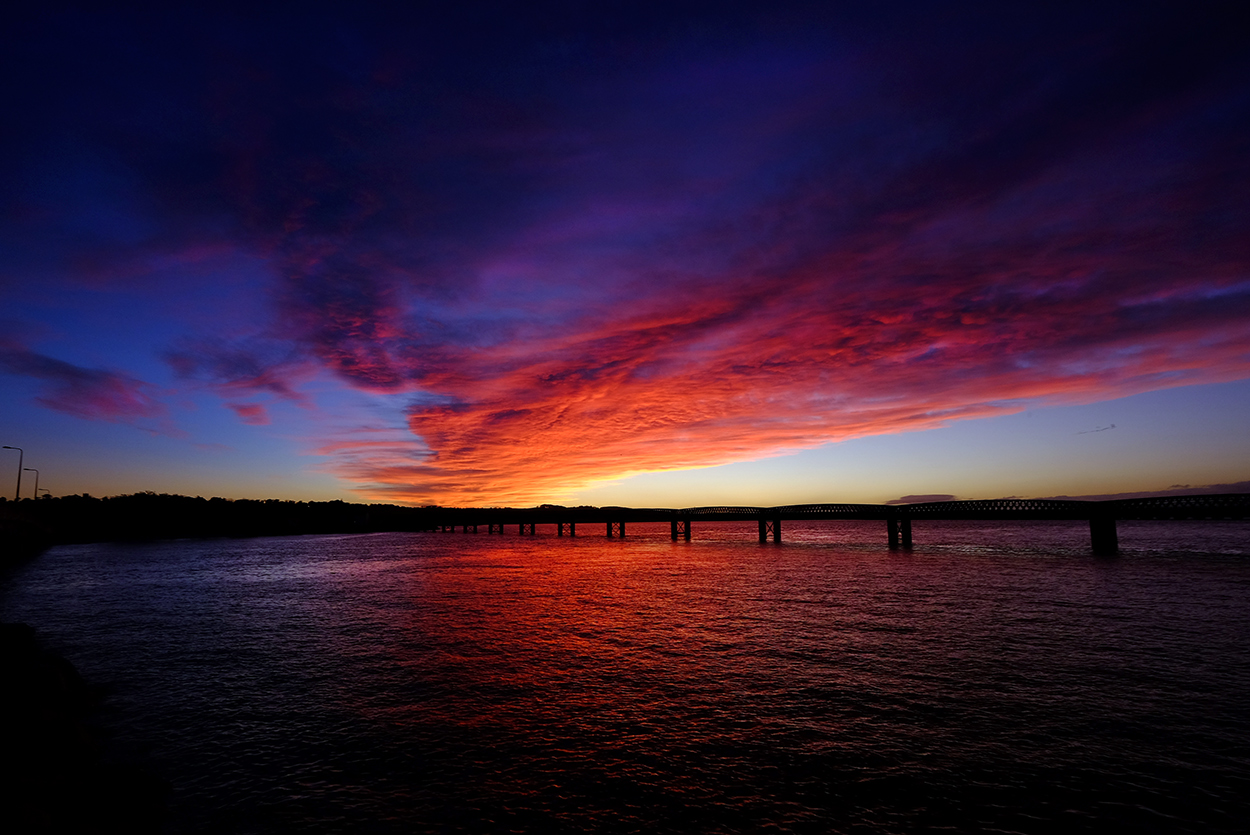 From beginning to end . . . we were completely enthralled.
From beginning to end . . . we were completely enthralled.
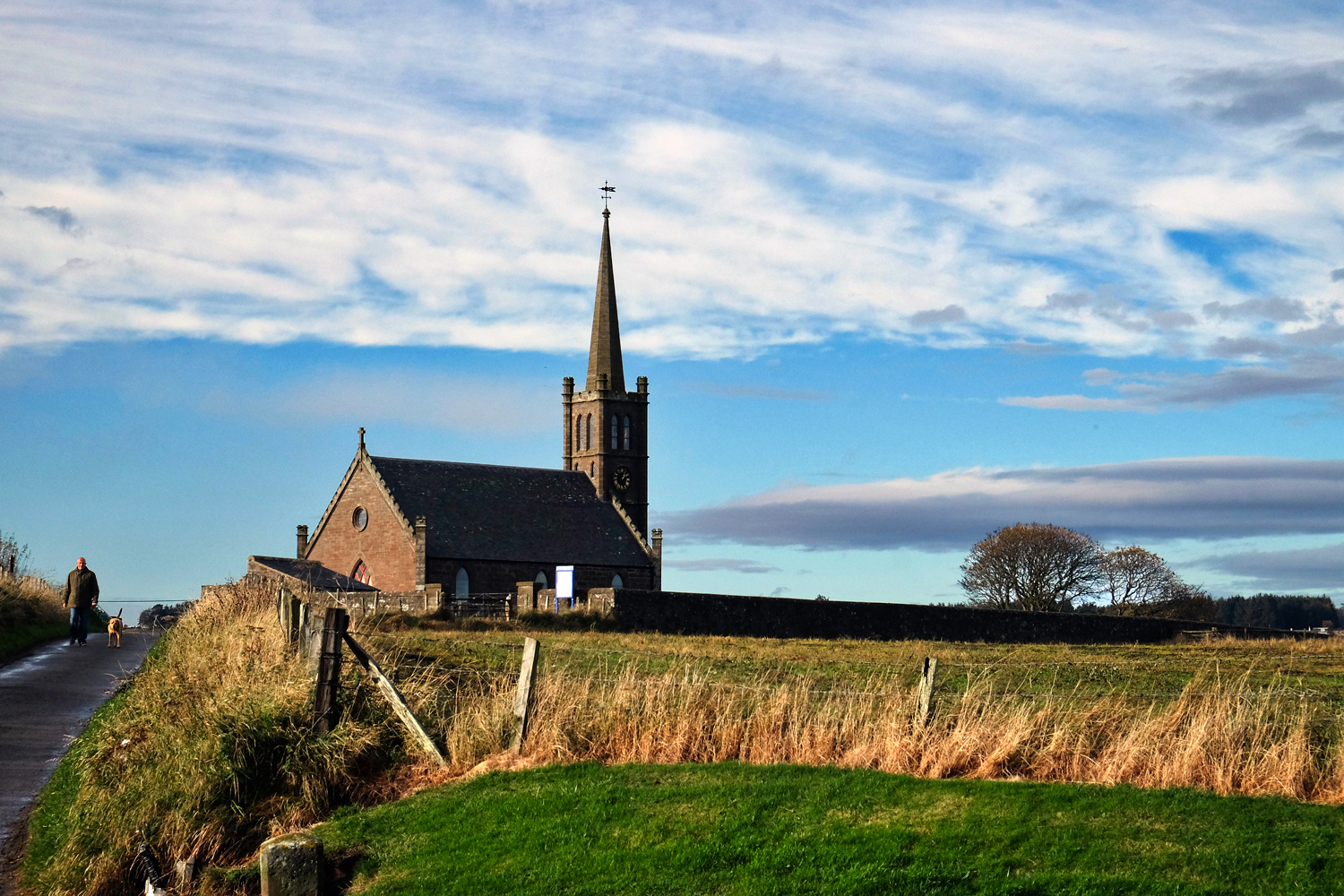 Another day along the small country lanes above the North Sea.
Another day along the small country lanes above the North Sea.
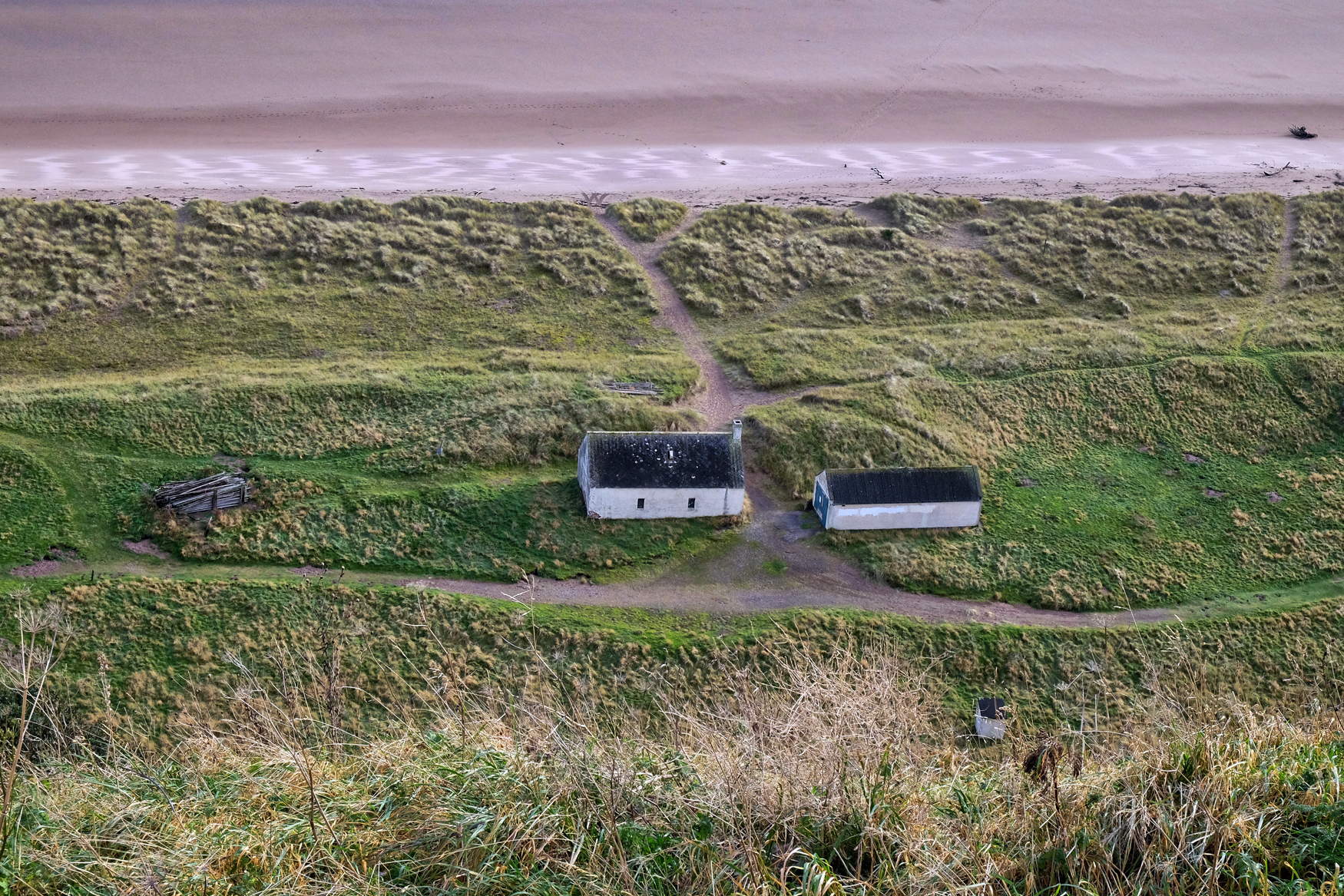 Old farm houses along a strand of the North Sea.
Old farm houses along a strand of the North Sea.
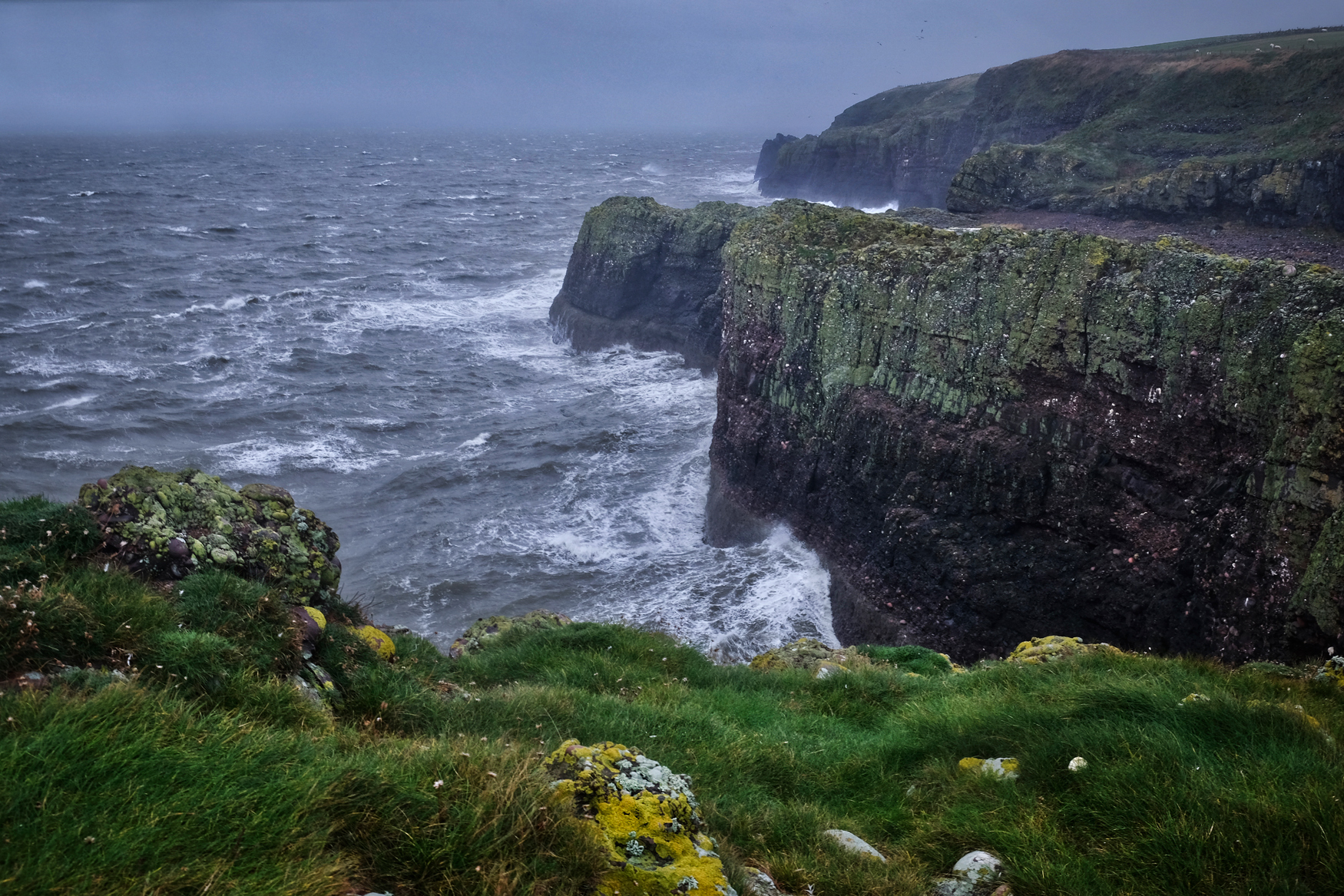 A wild North Sea below the cliffs of Aberdeenshire.
A wild North Sea below the cliffs of Aberdeenshire.
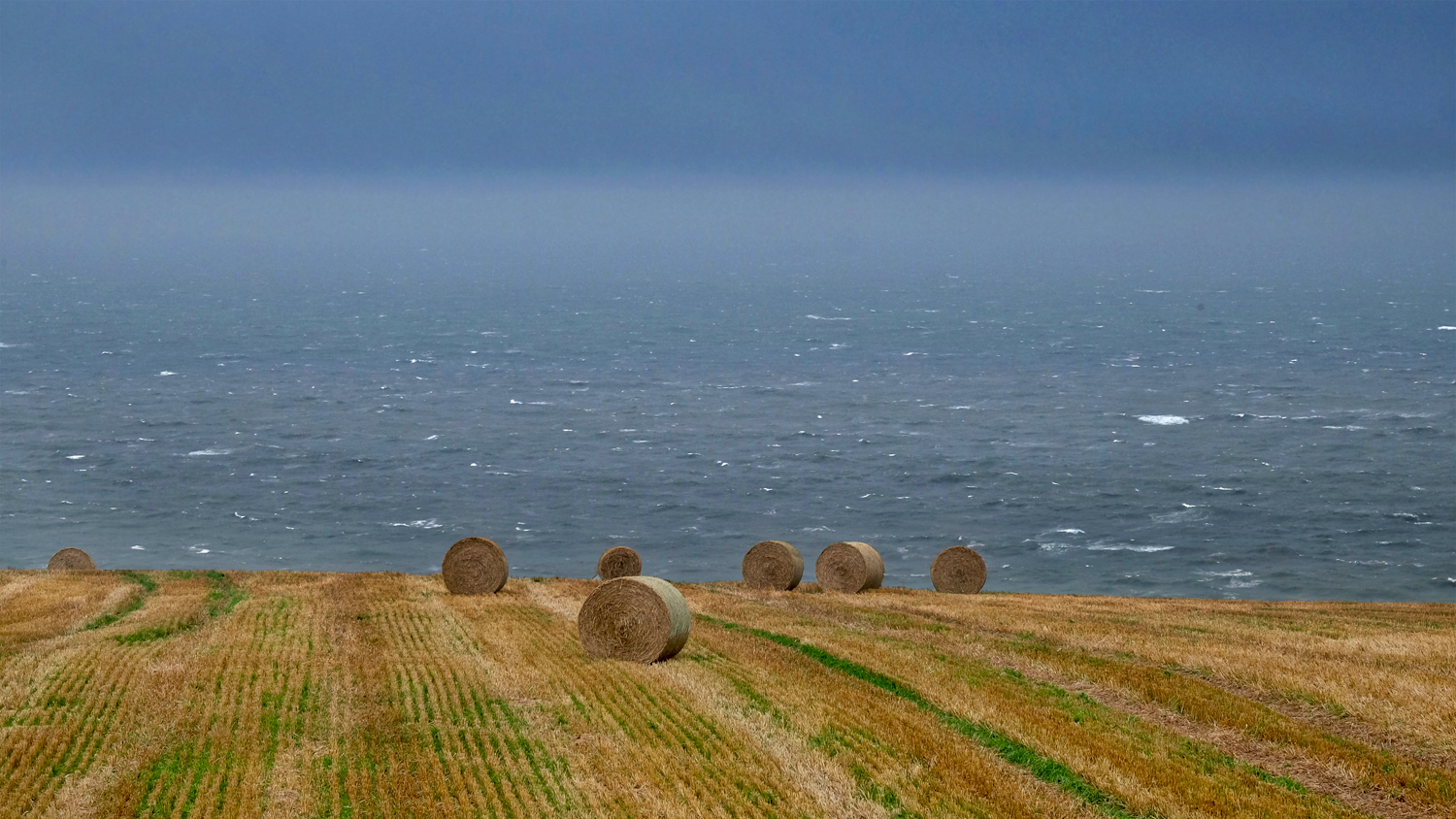 North Sea hay bales.
North Sea hay bales.
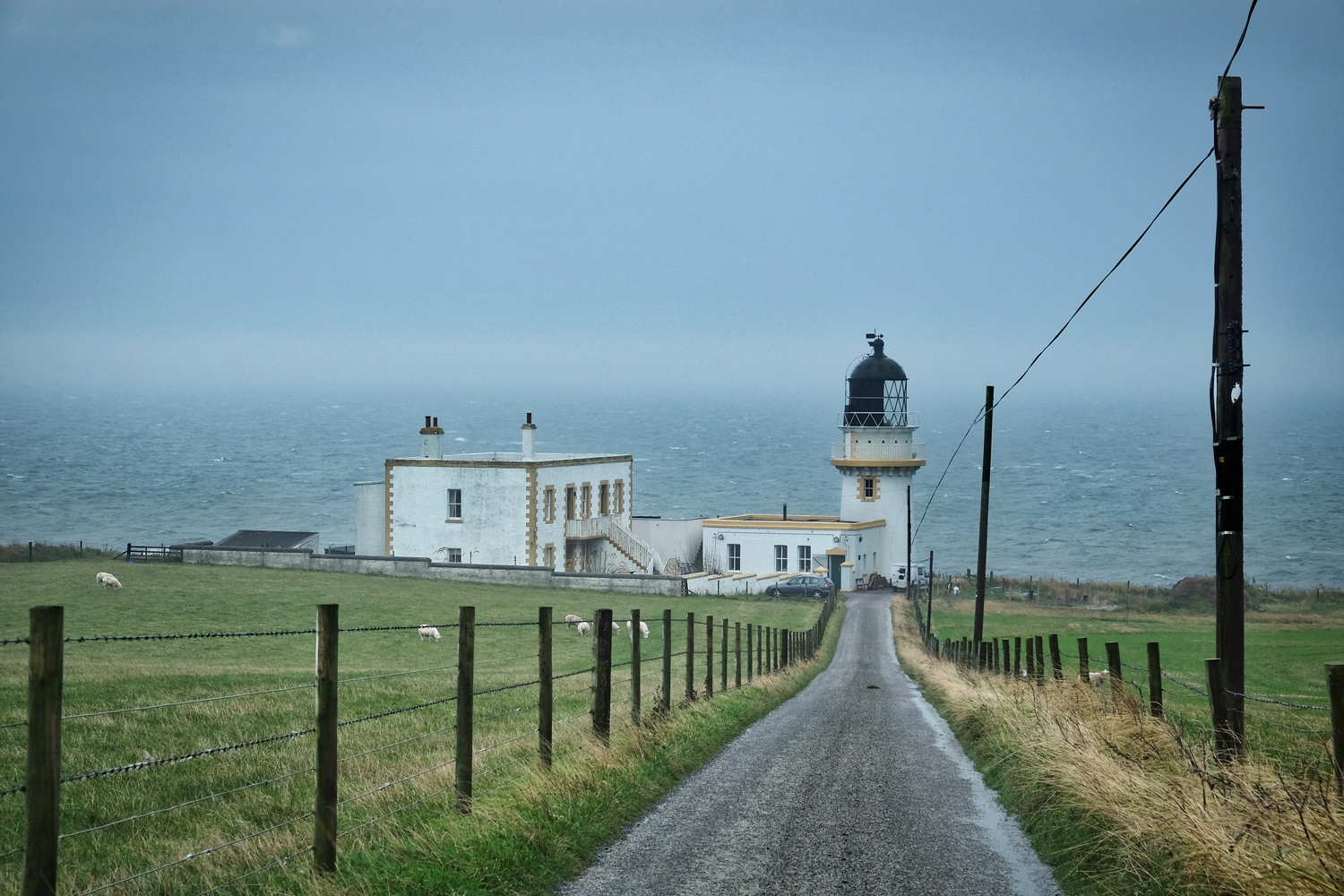 We saw so much and did so much in those short three days . . . and this blog entry represents only a small part of it all. I may elaborate more on this entry at a later date, but for now, that is all.
We saw so much and did so much in those short three days . . . and this blog entry represents only a small part of it all. I may elaborate more on this entry at a later date, but for now, that is all.
Suphanburi Province: A Day Trip Northwest Of Bangkok
 Saturday, March 10, 2018 at 7:11PM
Saturday, March 10, 2018 at 7:11PM A RAMBLE IN FOUR PARTS
Part One: An Ancient Rural Suiphanburi Riverside Wat
My friend John Stiles and I set off in my old truck up the road to the rural province of Suphanburi, to the northwest of Bangkok. As usual, we had a vague idea, from a tertiary Google search, of what we wanted to see, but no particular plan: we would ramble. We would eventually see several amazing Buddhist temple complexes, a Buffalo park, and a Farm Museum. We never 'found' the actual town of Suphanburi, but we didn't care: we had a grand adventure rambling about the rural Thai countryside.
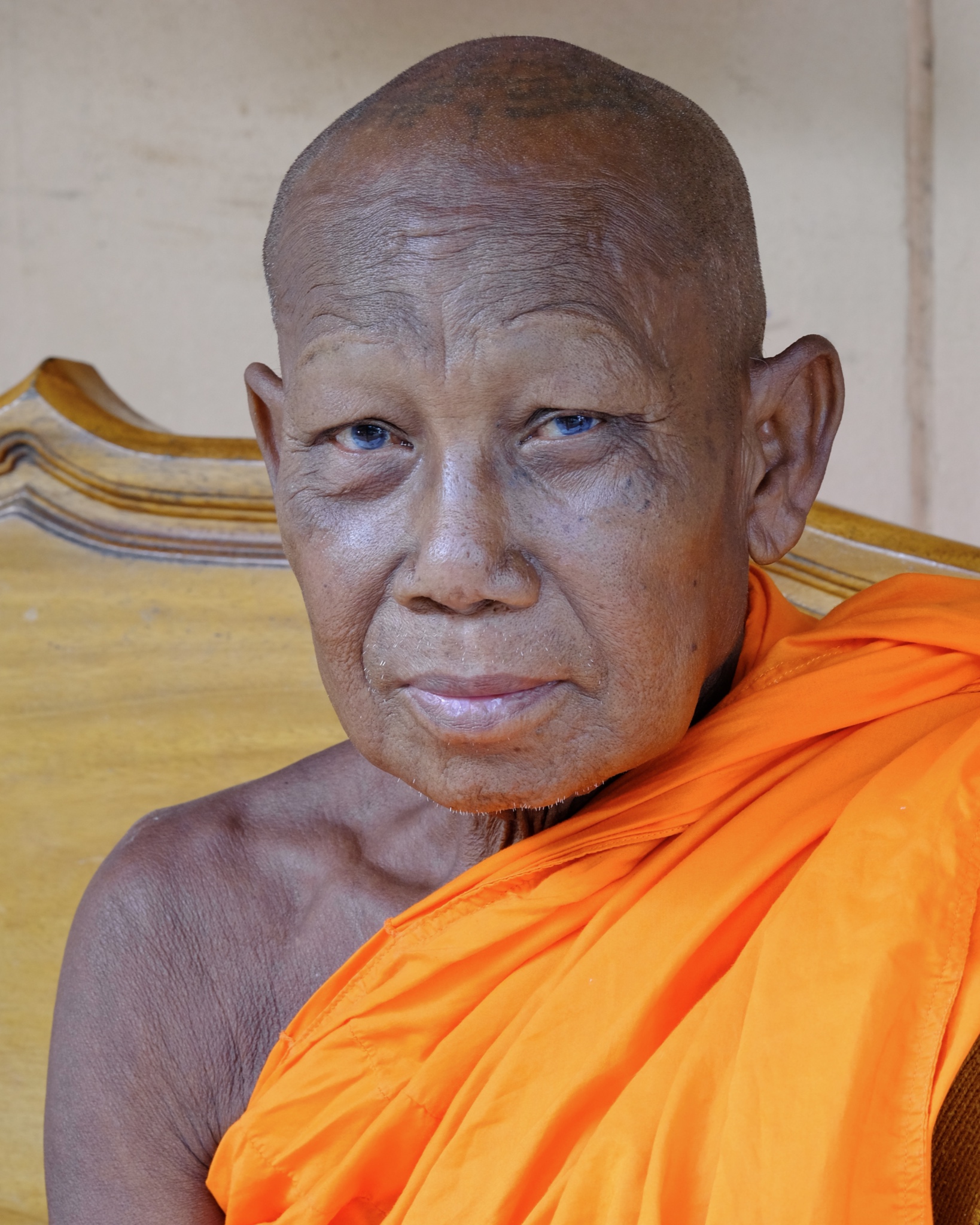 Suphanburi, just a two hours drive from my home, is like going back in time to simpler days in Thailand.
Suphanburi, just a two hours drive from my home, is like going back in time to simpler days in Thailand.
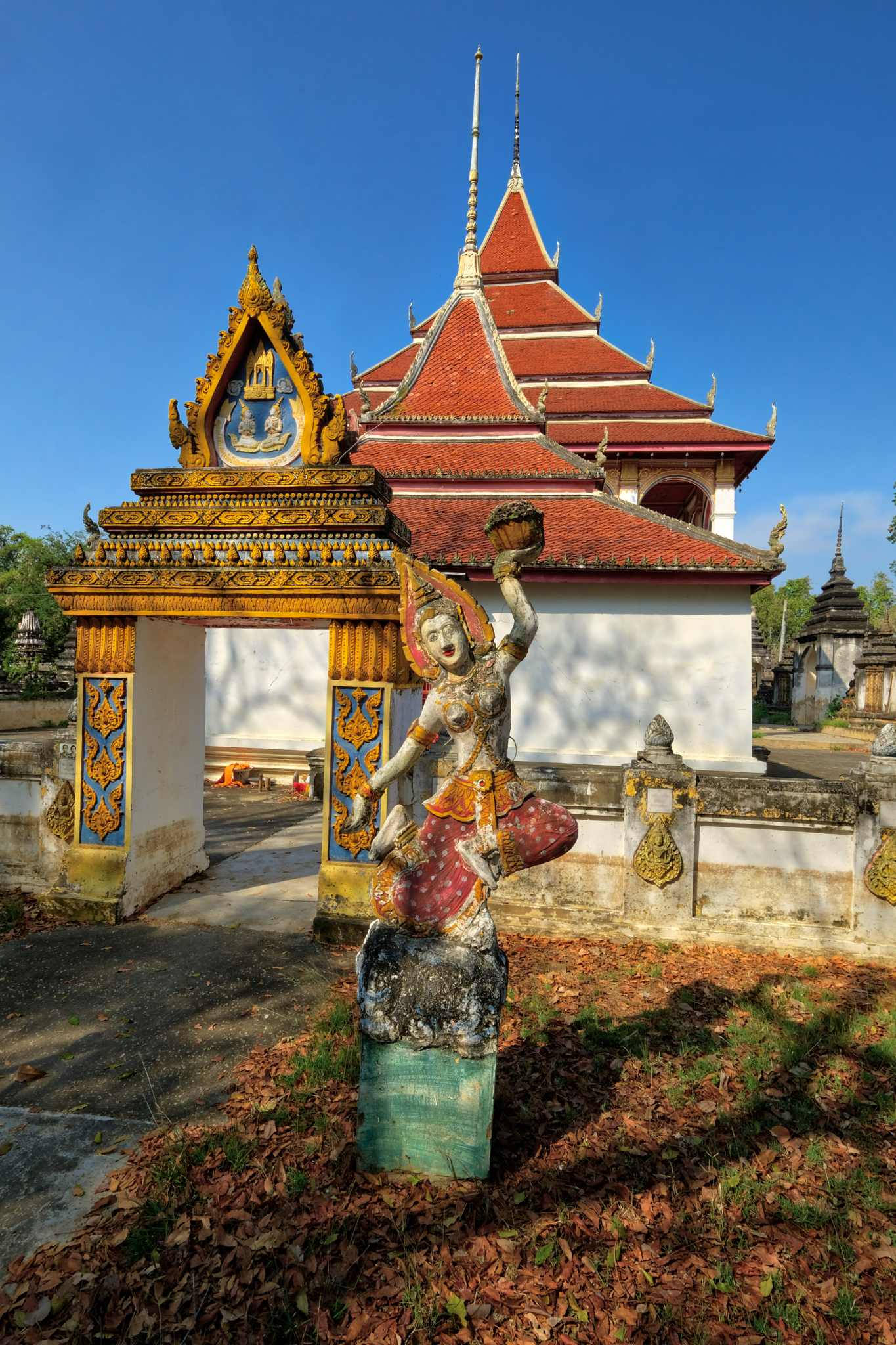 . . . and wonderful old Buddhist temples (Wats) dotted throughout the scenery. Our first stop was as the result of spotting a large, towering chedi through some trees as we sped down the highway. We turned off the road not knowing that we would find a most beautiful and interesting temple.
. . . and wonderful old Buddhist temples (Wats) dotted throughout the scenery. Our first stop was as the result of spotting a large, towering chedi through some trees as we sped down the highway. We turned off the road not knowing that we would find a most beautiful and interesting temple.
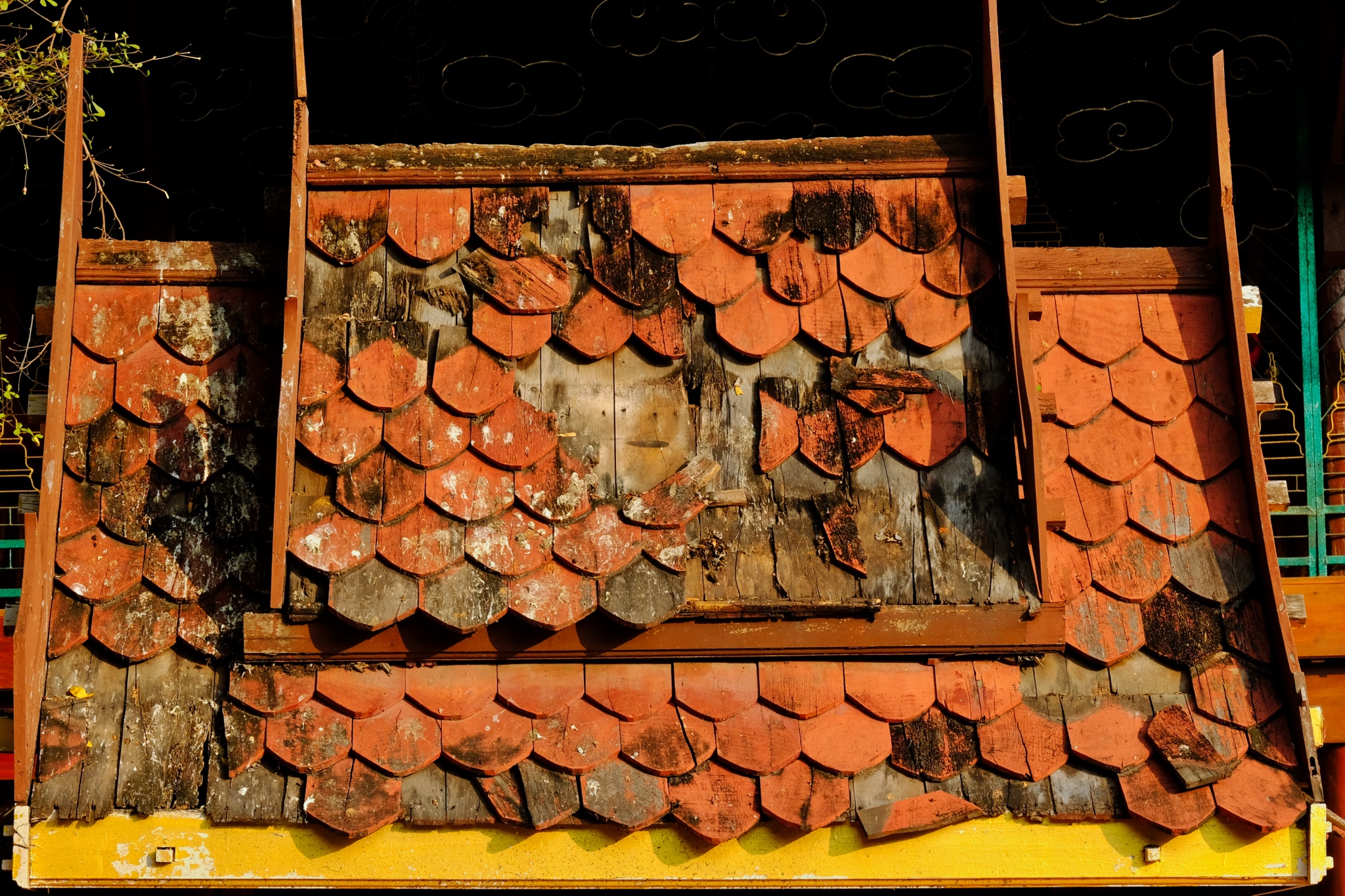 The wat we found was also a school, which was just getting started. A student band was playing and children were singing. We wandered in.
The wat we found was also a school, which was just getting started. A student band was playing and children were singing. We wandered in.
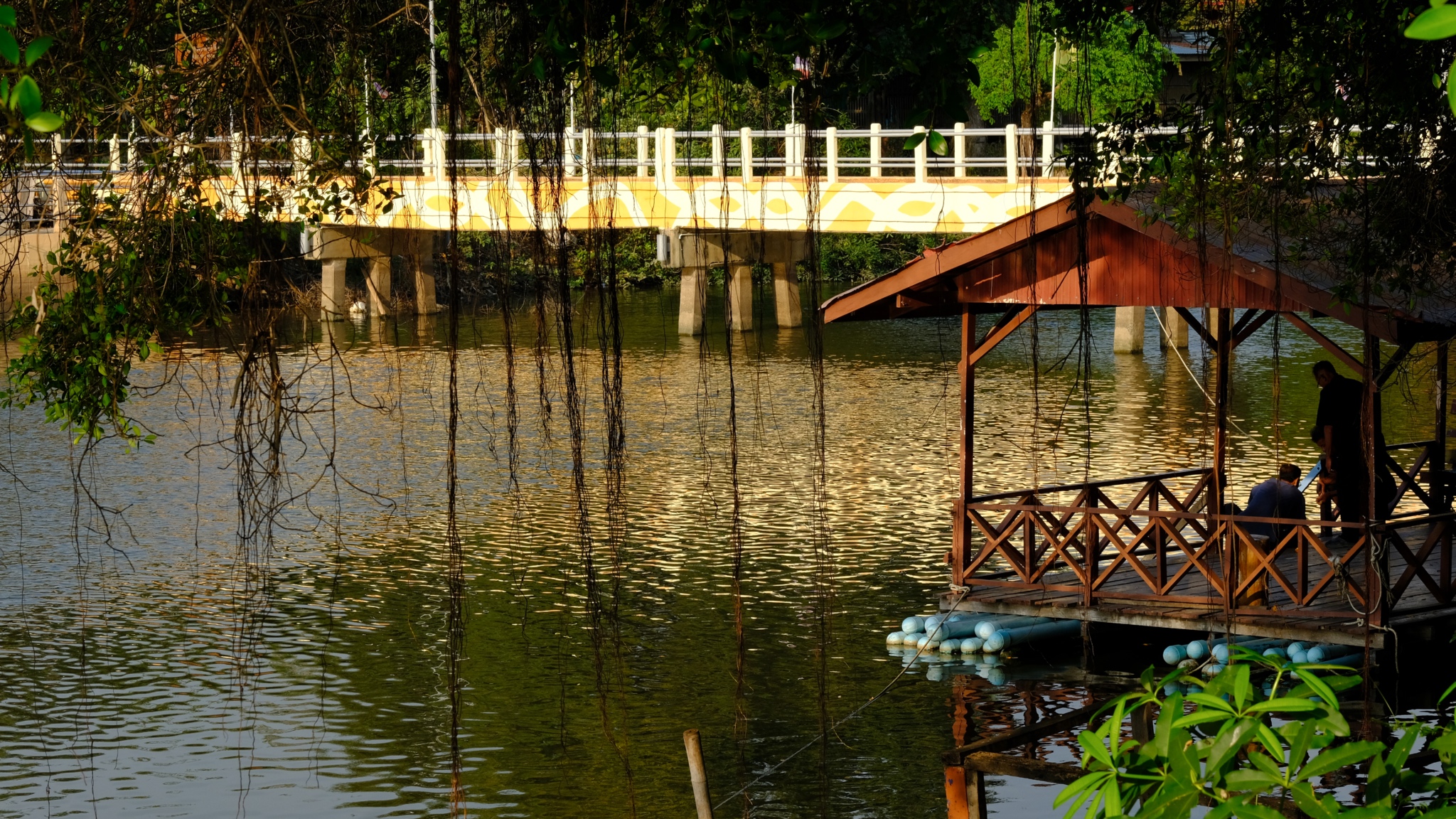 The wat was built along both sides of a river, one of the tributaries of the Chao Phraya River.
The wat was built along both sides of a river, one of the tributaries of the Chao Phraya River.
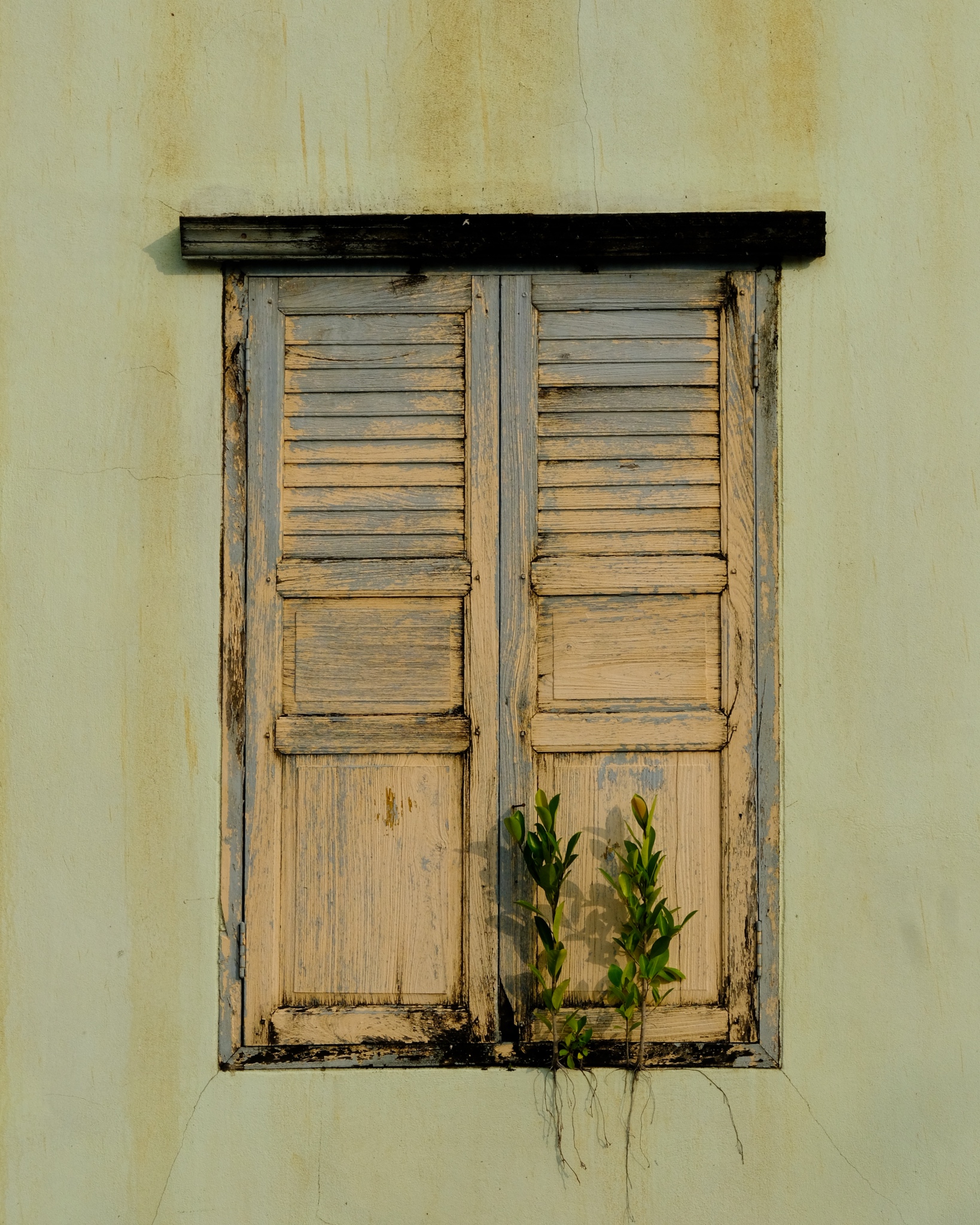 Marvelous aged textures throughout this beautiful place.
Marvelous aged textures throughout this beautiful place.
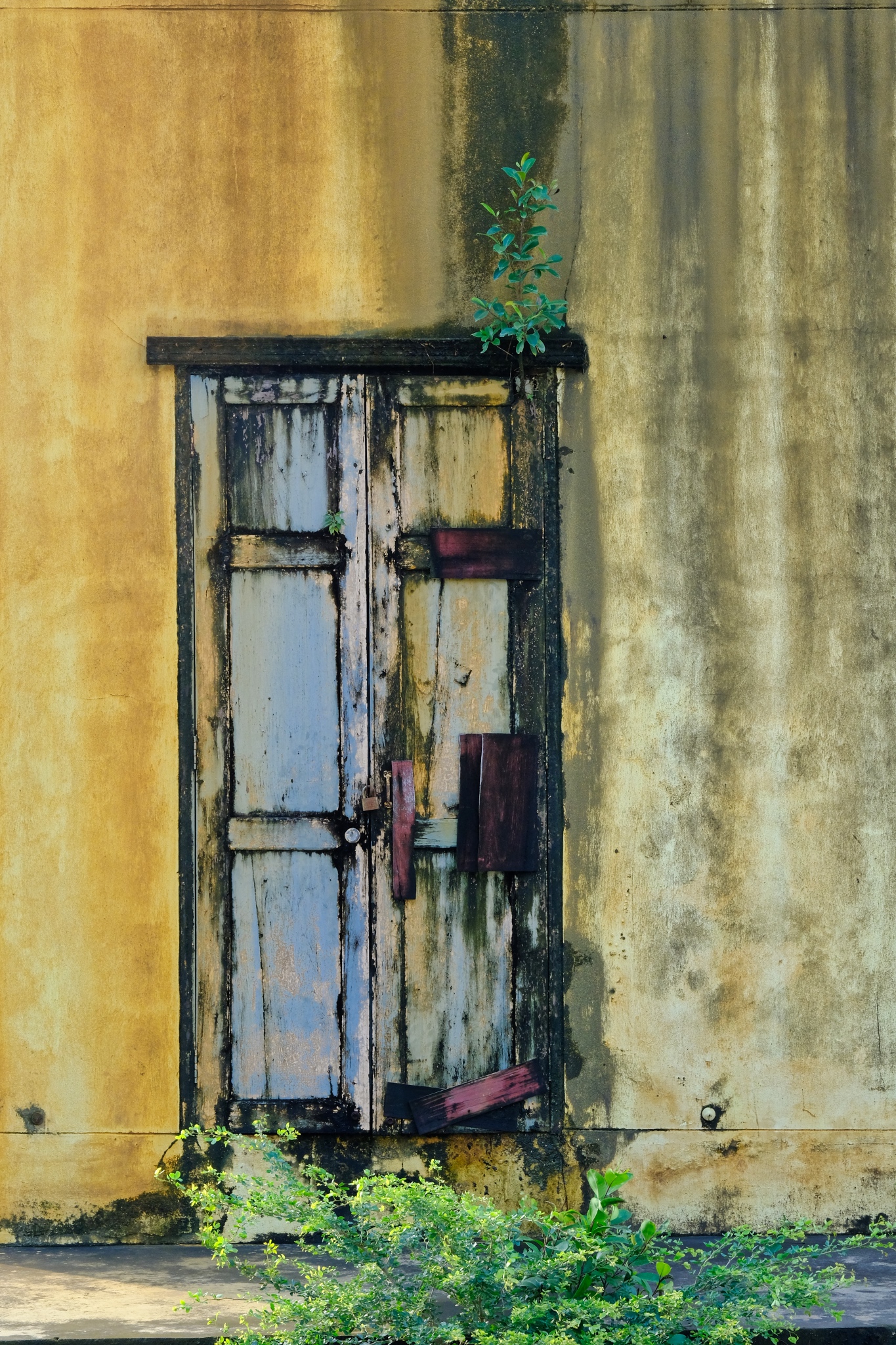 I believe we could have spent all day just photographing this door and the windows on this old storehouse. The black mold outlining, the weathered and stained walls, the encroaching plants. The color! Incredible. But we ambled on, pointing our cameras here and there, and always finding something visually interesting.
I believe we could have spent all day just photographing this door and the windows on this old storehouse. The black mold outlining, the weathered and stained walls, the encroaching plants. The color! Incredible. But we ambled on, pointing our cameras here and there, and always finding something visually interesting.
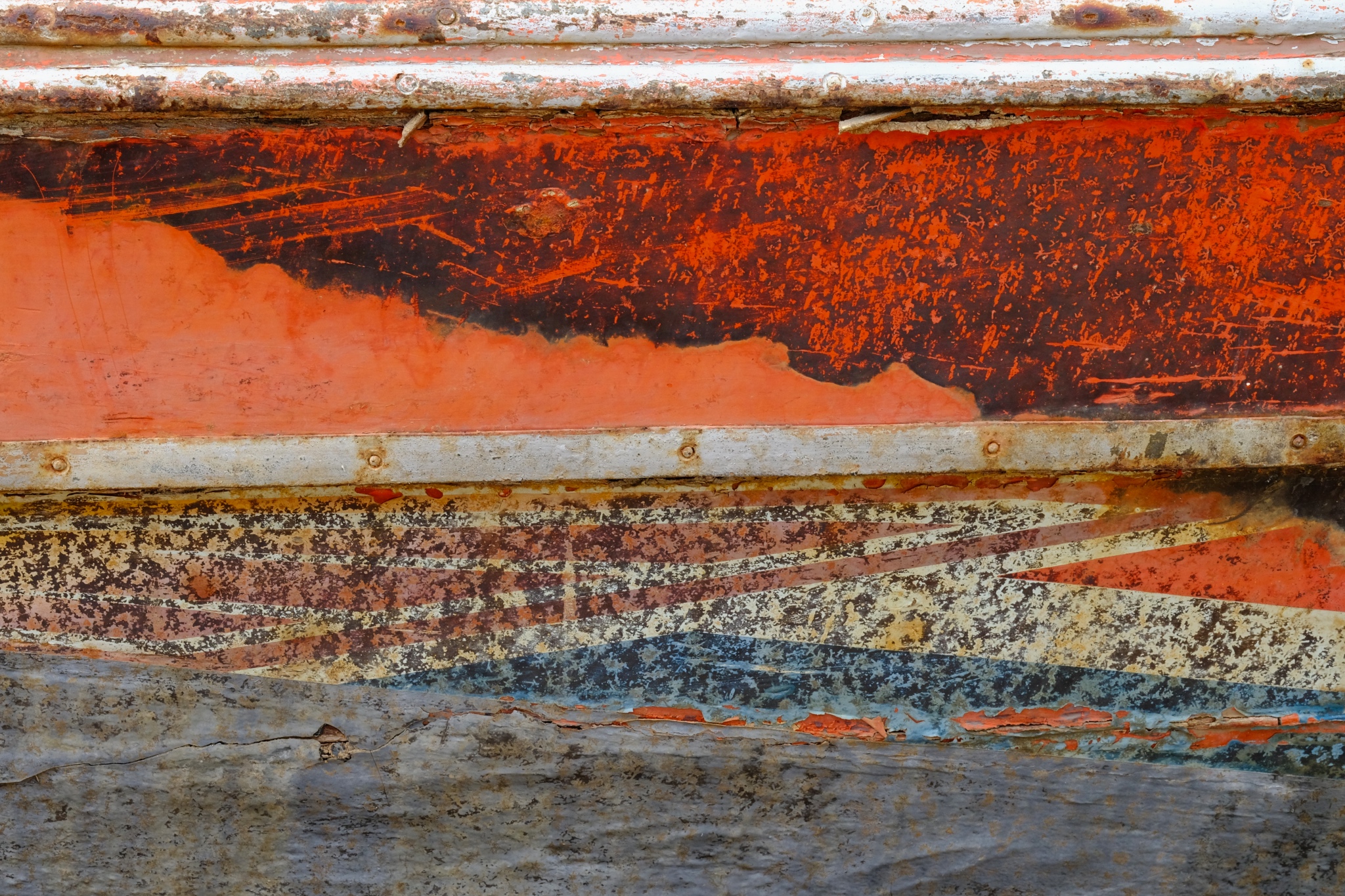
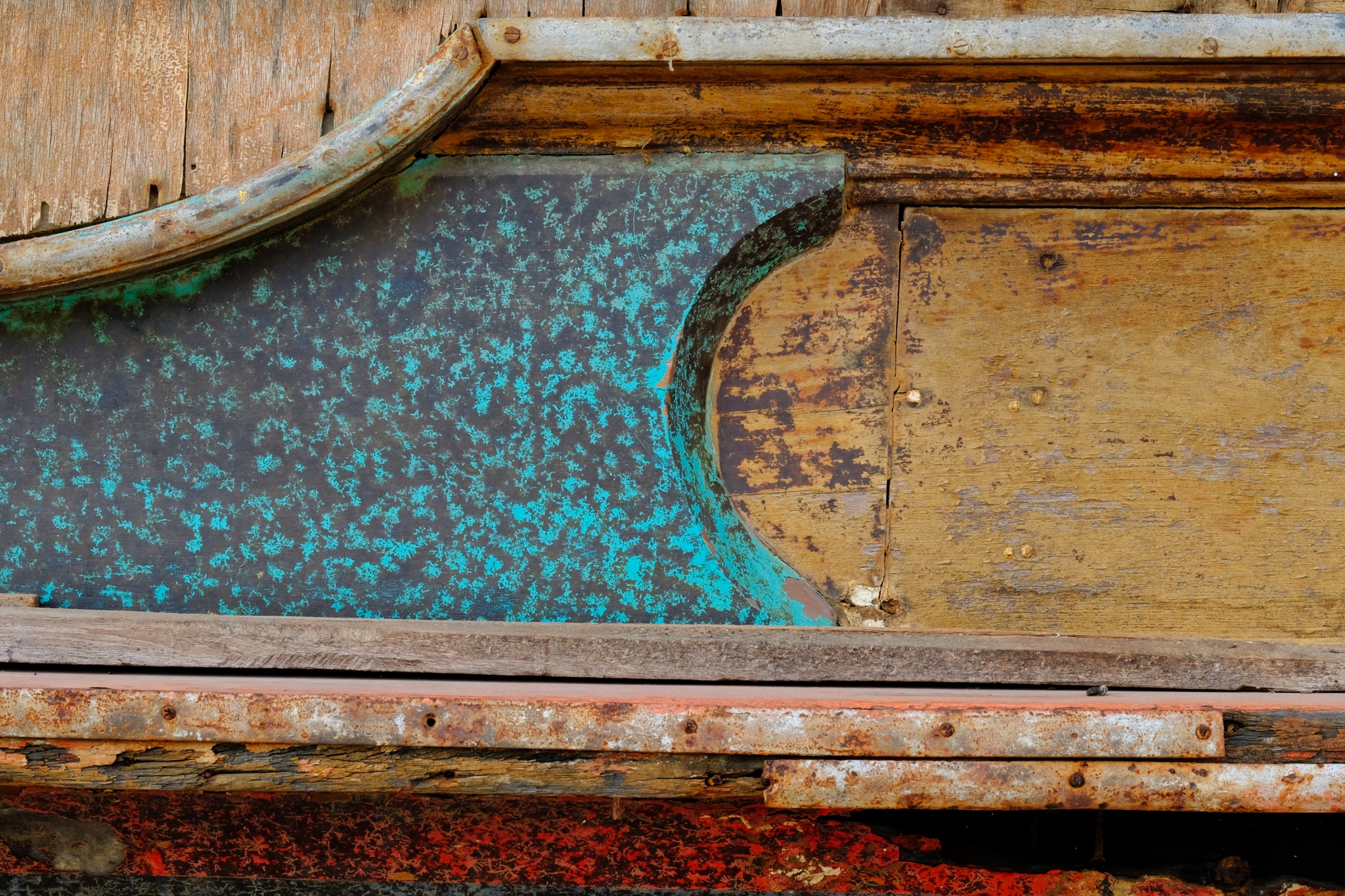 Detail of a weathered old river ferry boat that had been pulled up into the wat parking lot.
Detail of a weathered old river ferry boat that had been pulled up into the wat parking lot.
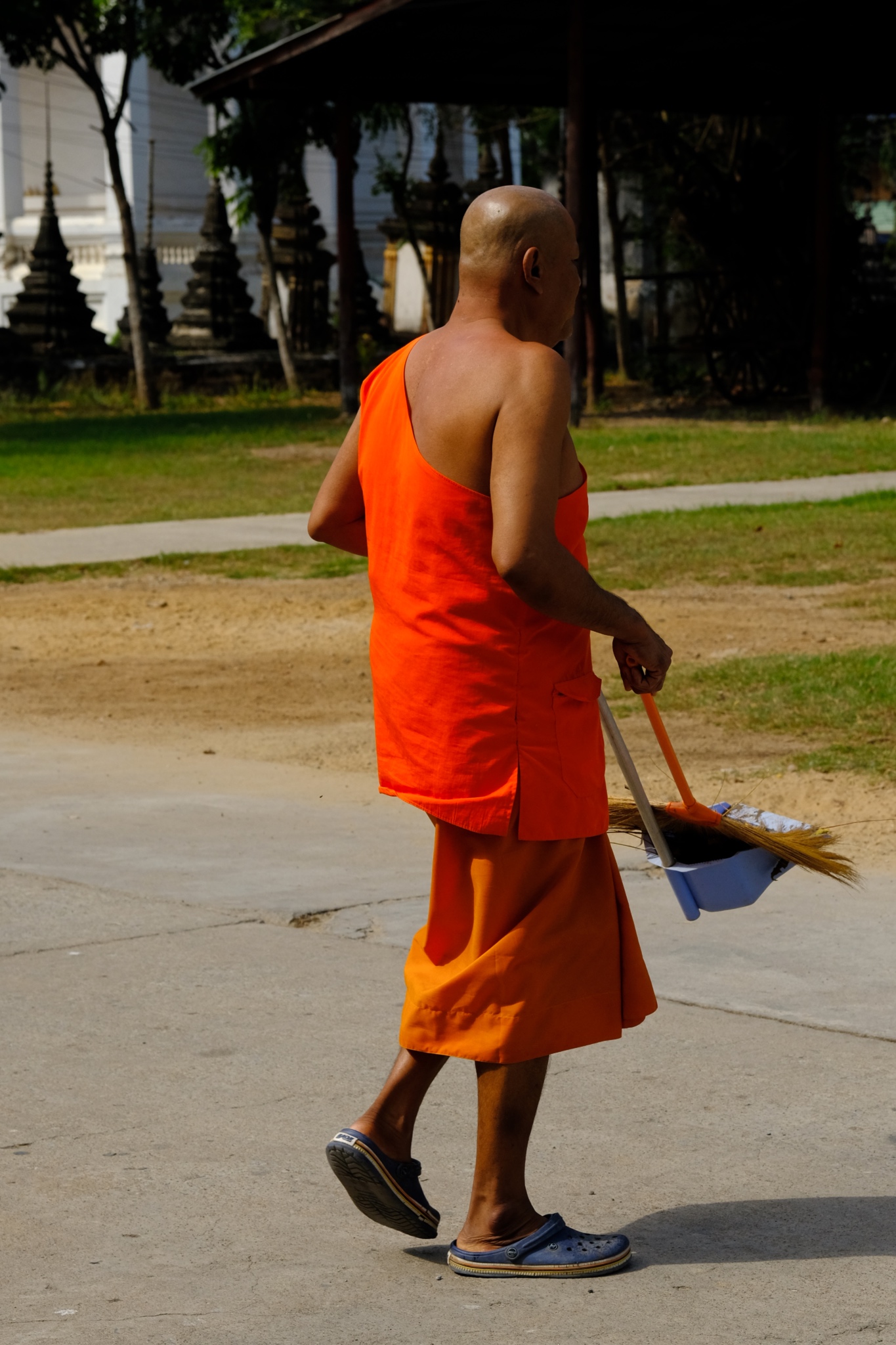 It was still early, after morning meditation, so the monks were out doing their chores.
It was still early, after morning meditation, so the monks were out doing their chores.
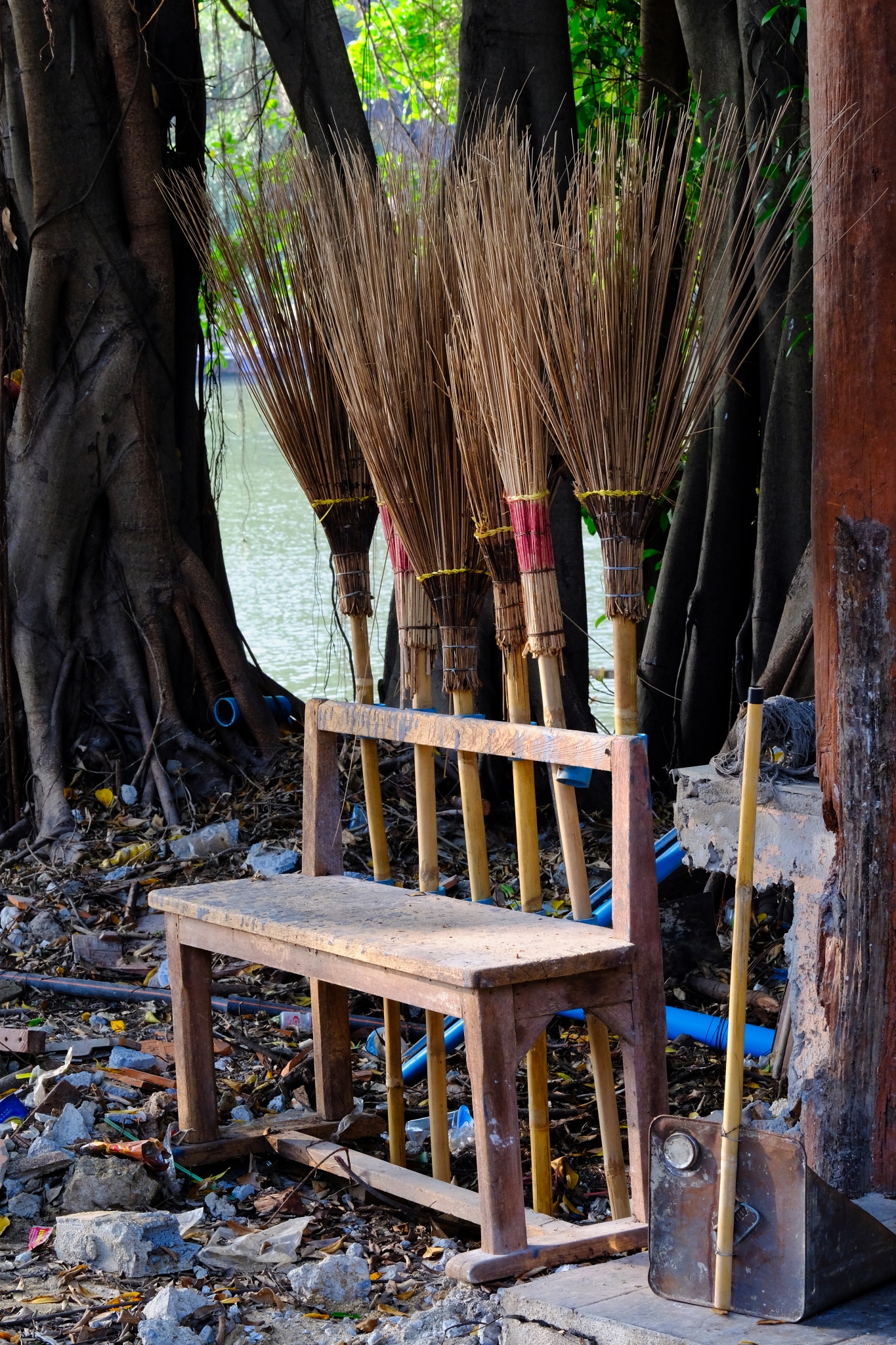 The brooms neatly arranged . . . and a bench to sit on after completing the job.
The brooms neatly arranged . . . and a bench to sit on after completing the job.
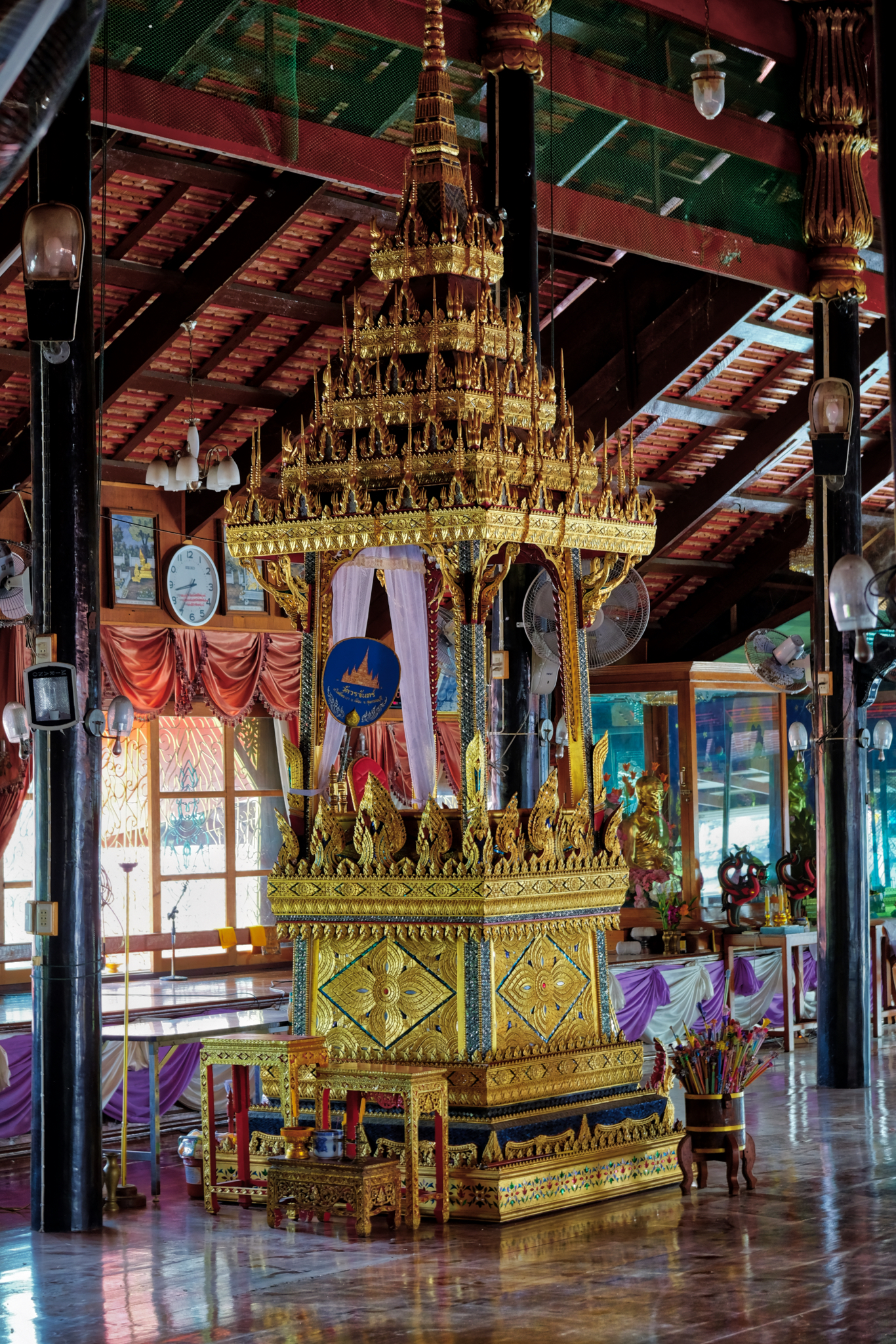 In our ambling we found an old wooden building and went up the stairs to find a meditation hall with an elaborately decorated 'pulpit.'
In our ambling we found an old wooden building and went up the stairs to find a meditation hall with an elaborately decorated 'pulpit.'
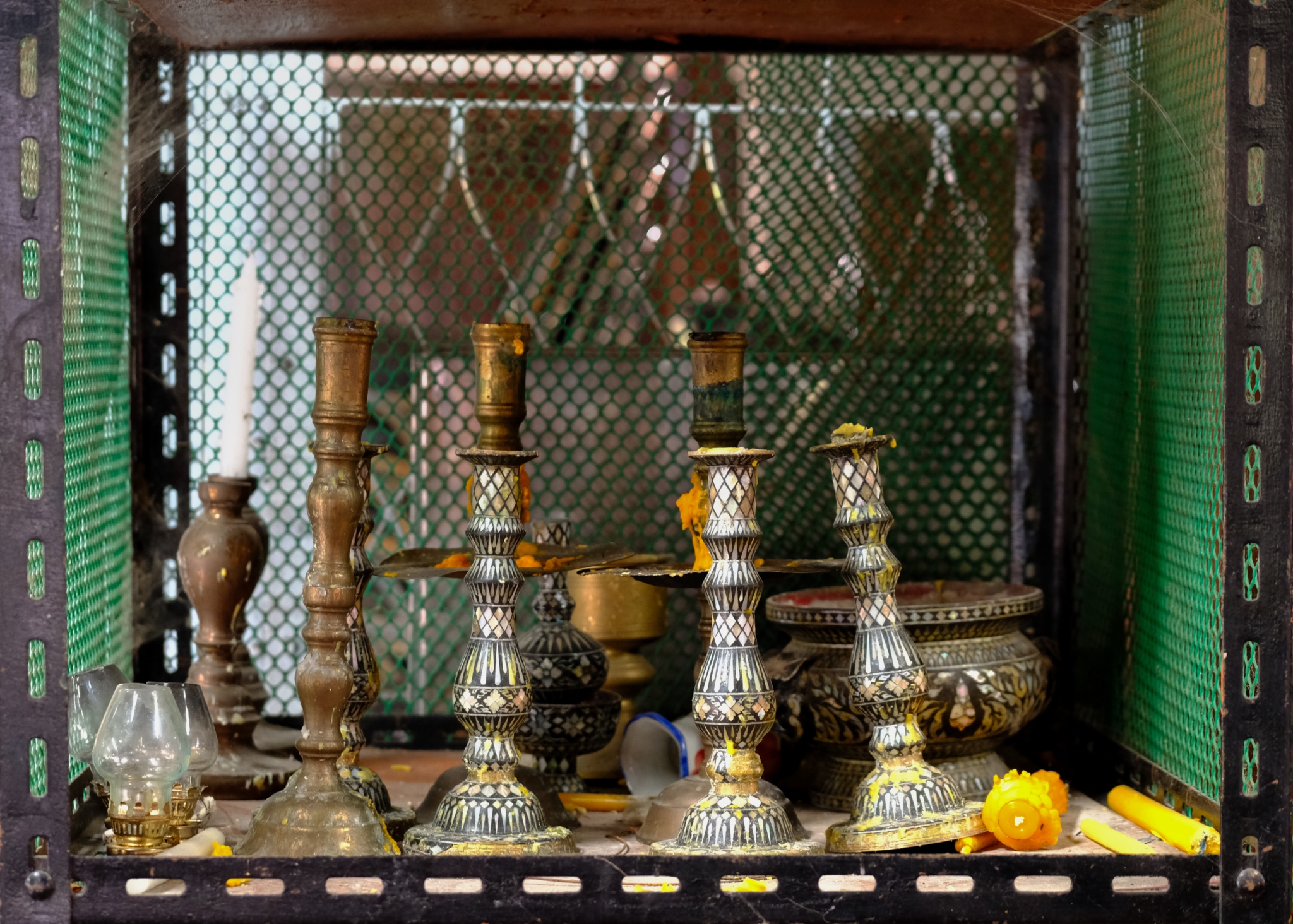 Simple votive items in storage until tomorrow's meditation.
Simple votive items in storage until tomorrow's meditation.
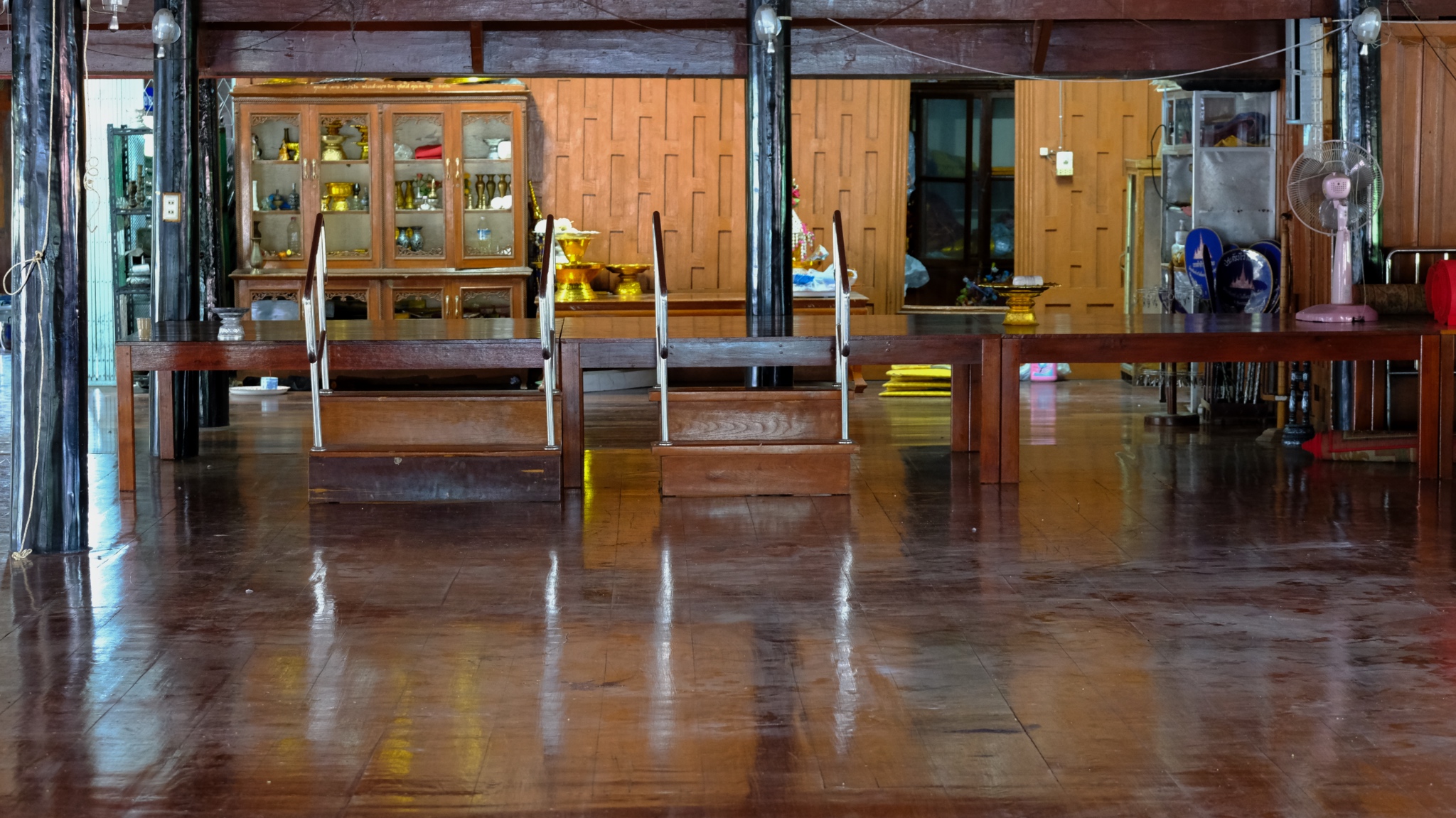 The simple interior of a rural Suphanburi wat. Little did we know that just across the river was the other half of this wat complex . . . and it was something special!
The simple interior of a rural Suphanburi wat. Little did we know that just across the river was the other half of this wat complex . . . and it was something special!
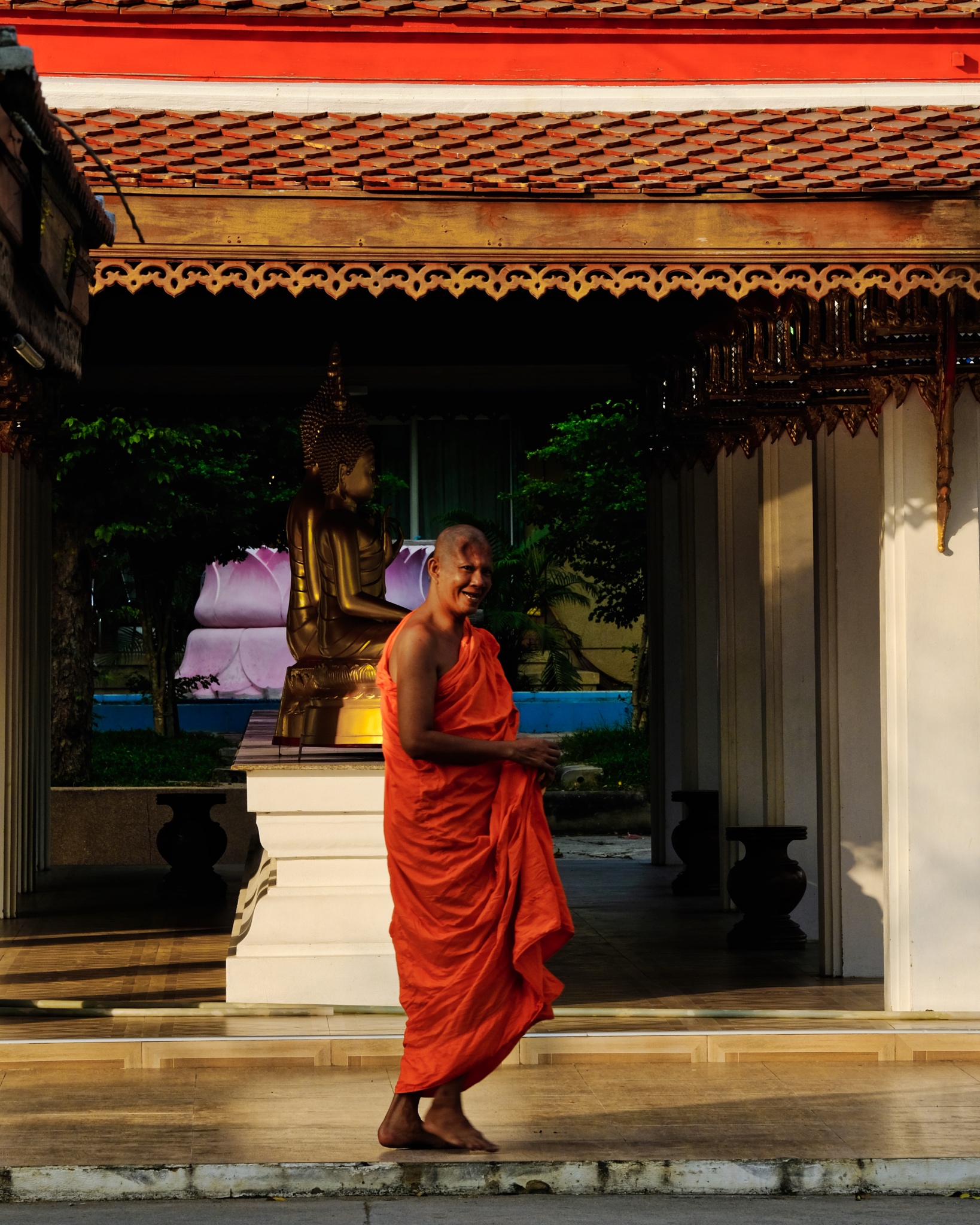 We crossed the bridge to the other side of the wat. It had a very different feel . . . Yes, this monk had a hole in his head (from an earlier injury).
We crossed the bridge to the other side of the wat. It had a very different feel . . . Yes, this monk had a hole in his head (from an earlier injury).
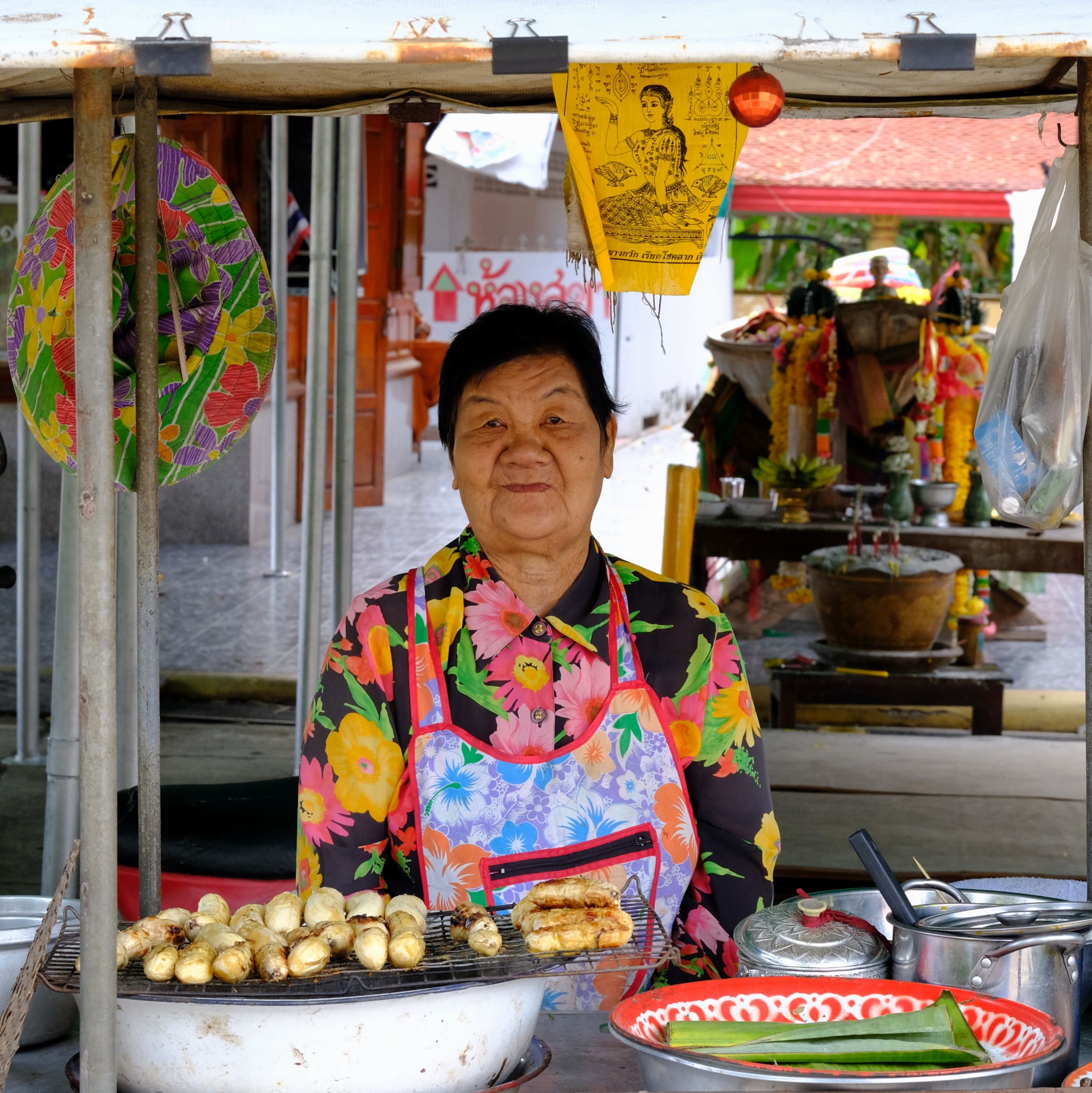 A grilled banana hawker stood outside of the temple buildings.
A grilled banana hawker stood outside of the temple buildings.
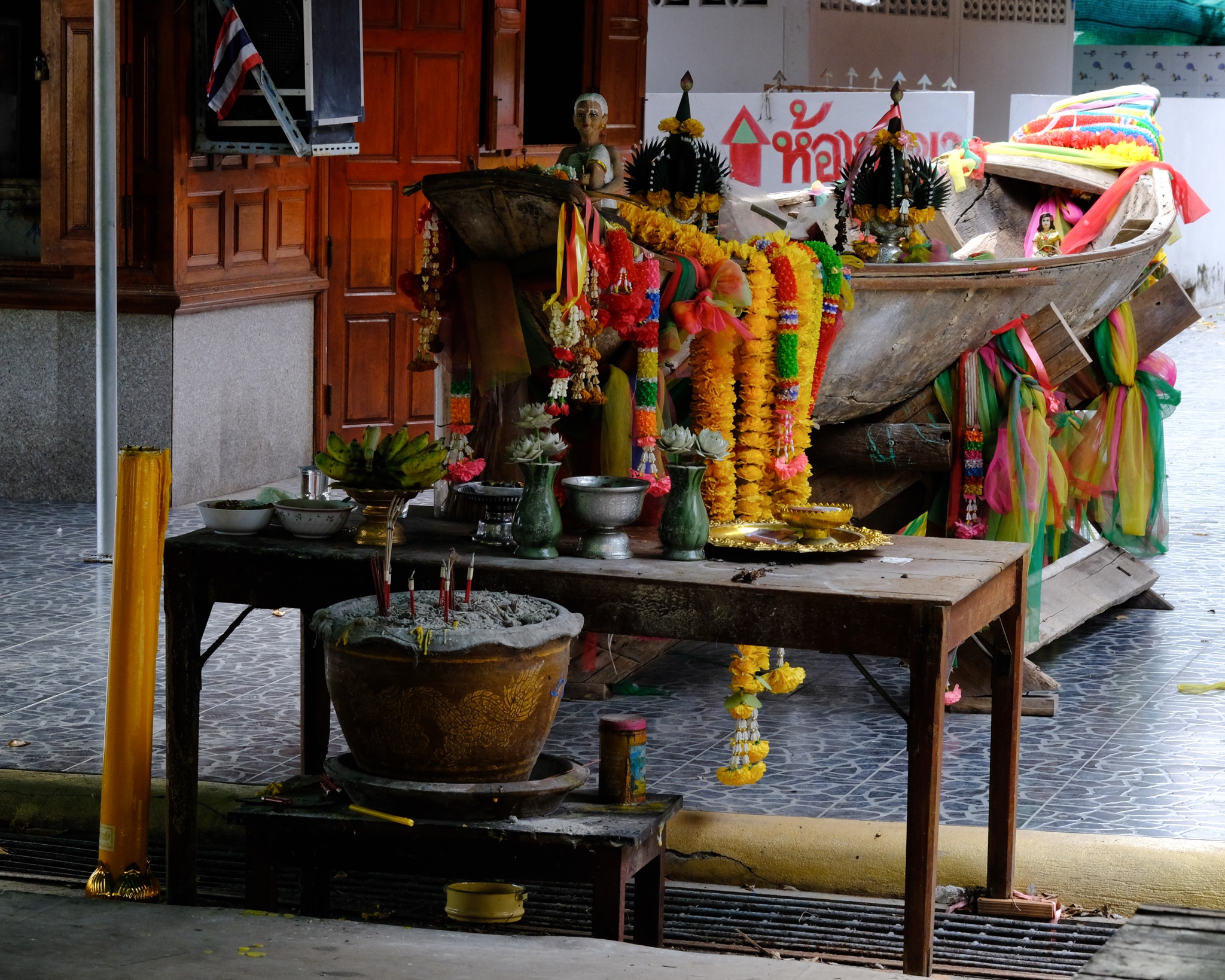 A votive altar made in a boat at this riverside temple.
A votive altar made in a boat at this riverside temple.
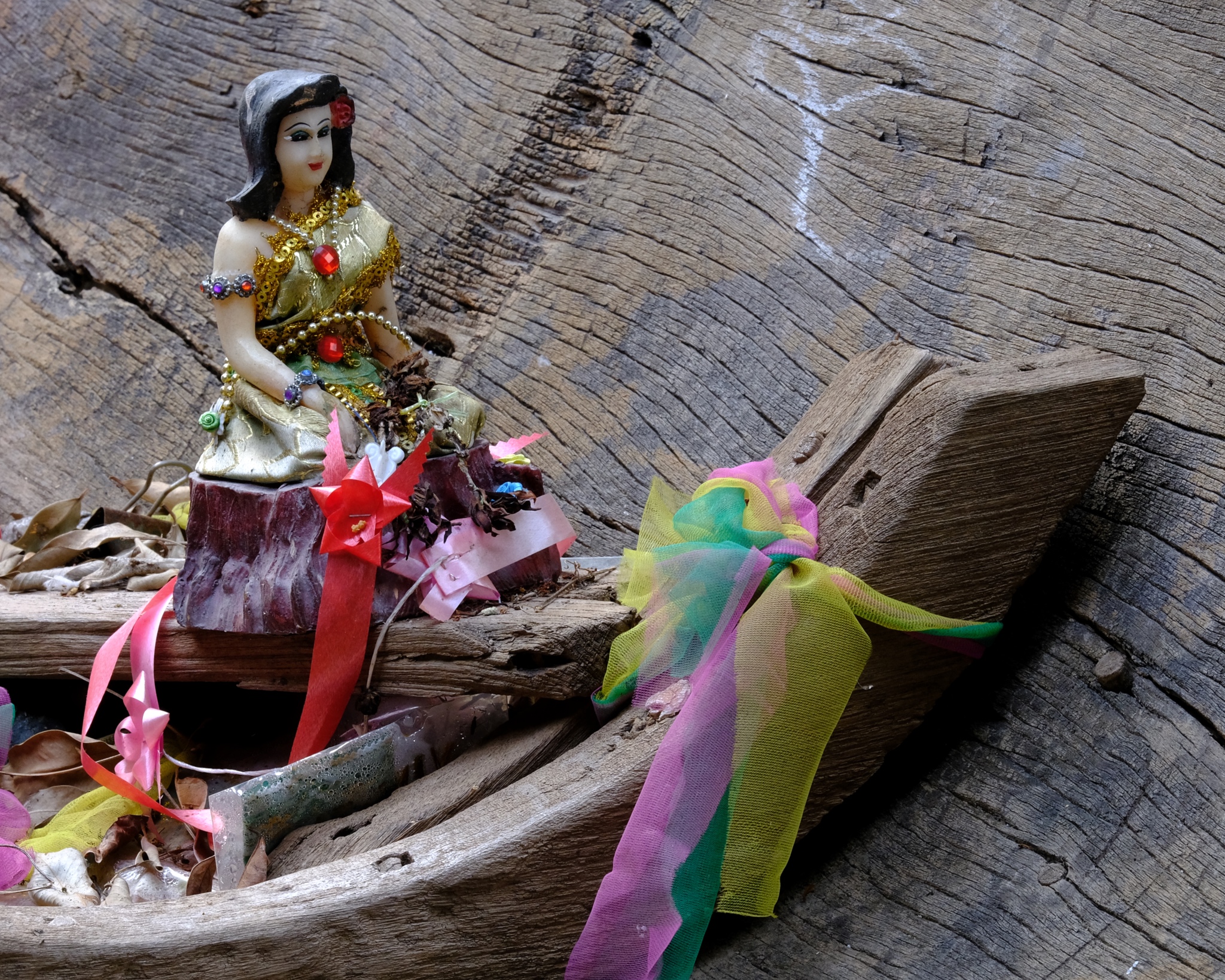 The boat altar was full of these scenes of devotional focus.
The boat altar was full of these scenes of devotional focus.
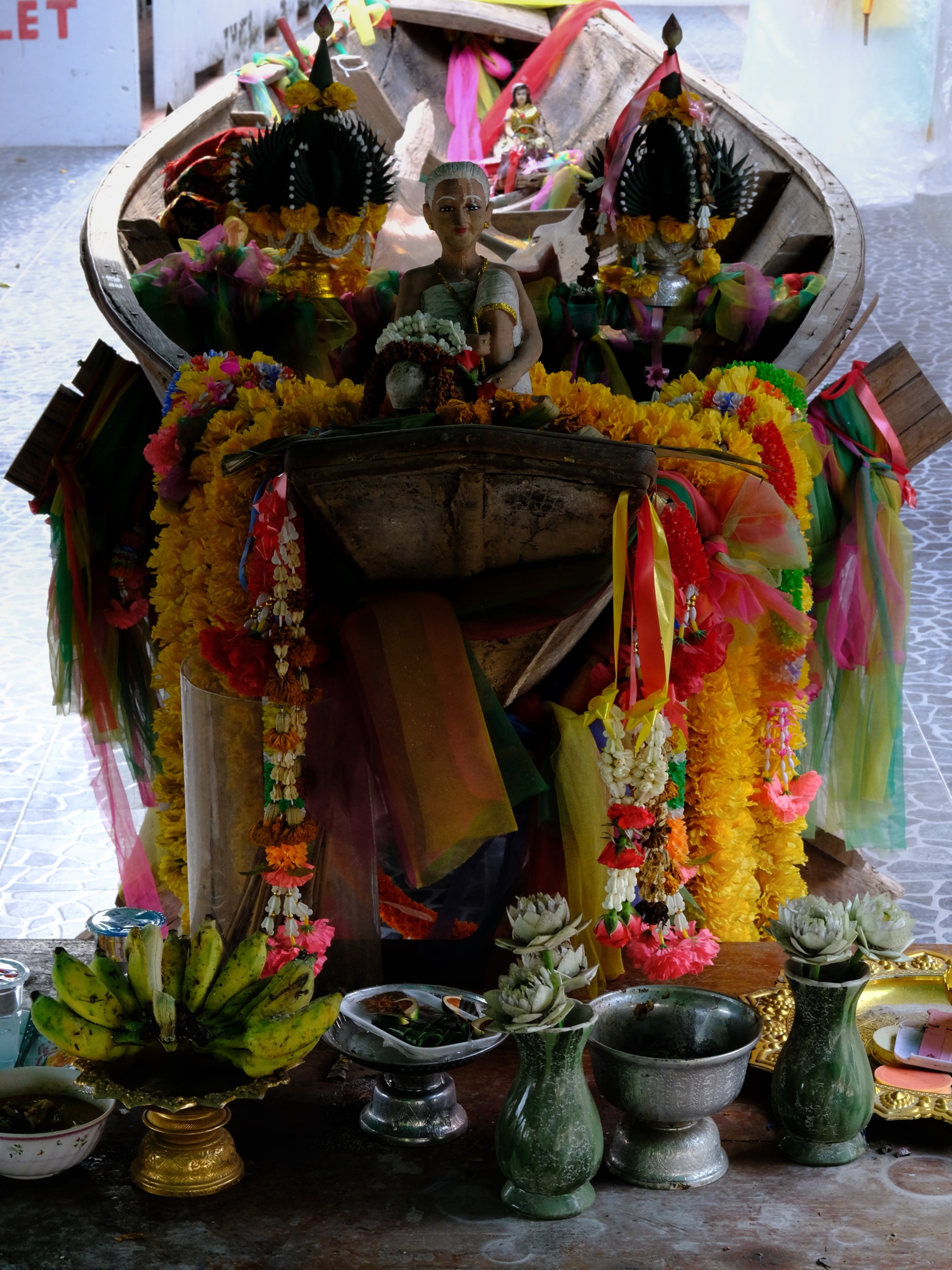 A reminder that these altars are not 'antiques' or 'relics' but living, current places of respect, attention, and daily tending (note the fresh bananas).
A reminder that these altars are not 'antiques' or 'relics' but living, current places of respect, attention, and daily tending (note the fresh bananas).
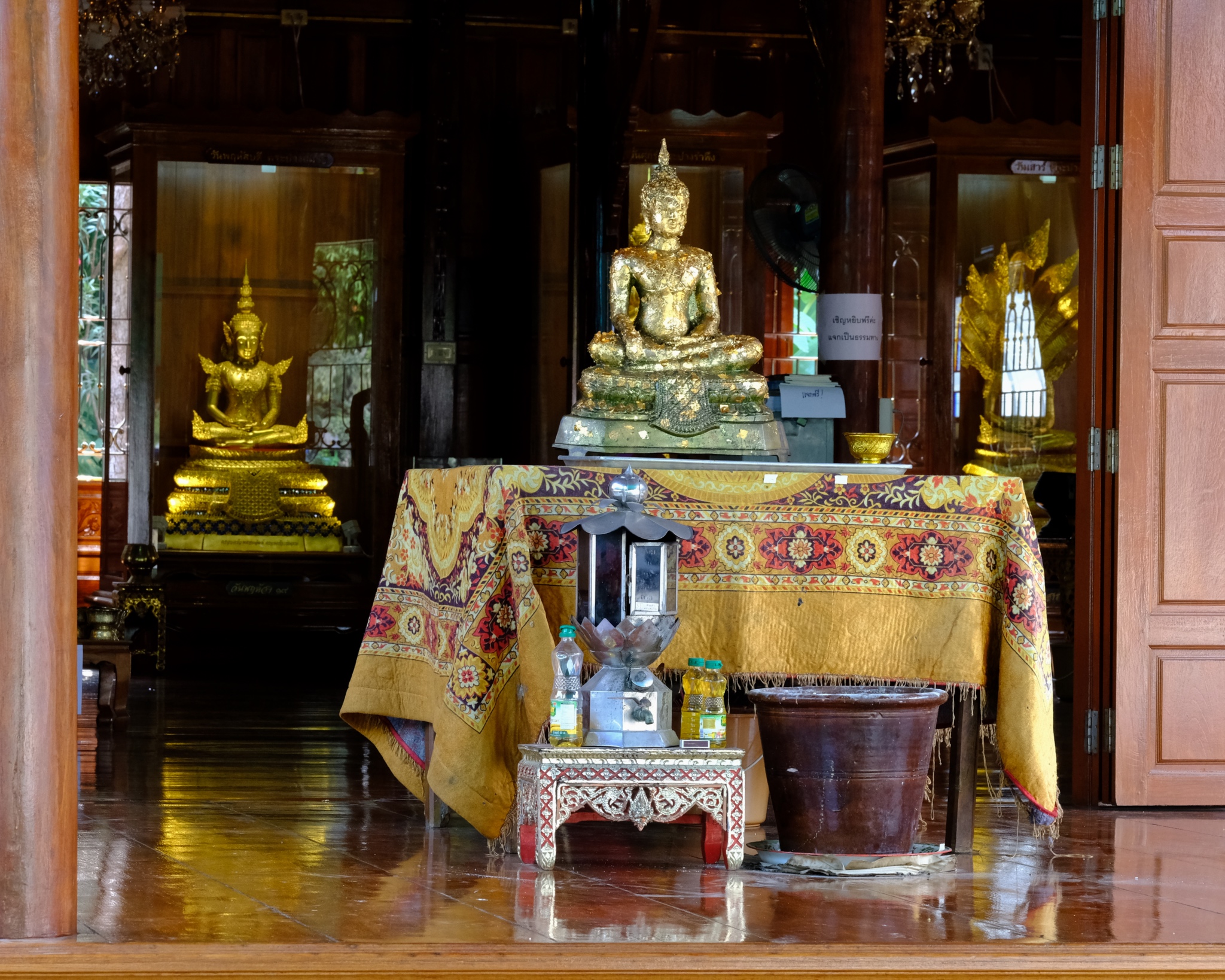 The entrance to the first wooden building we came to turned out to be a consolidated museum of the ancient Buddha images from the oldest wats on the ground.
The entrance to the first wooden building we came to turned out to be a consolidated museum of the ancient Buddha images from the oldest wats on the ground.
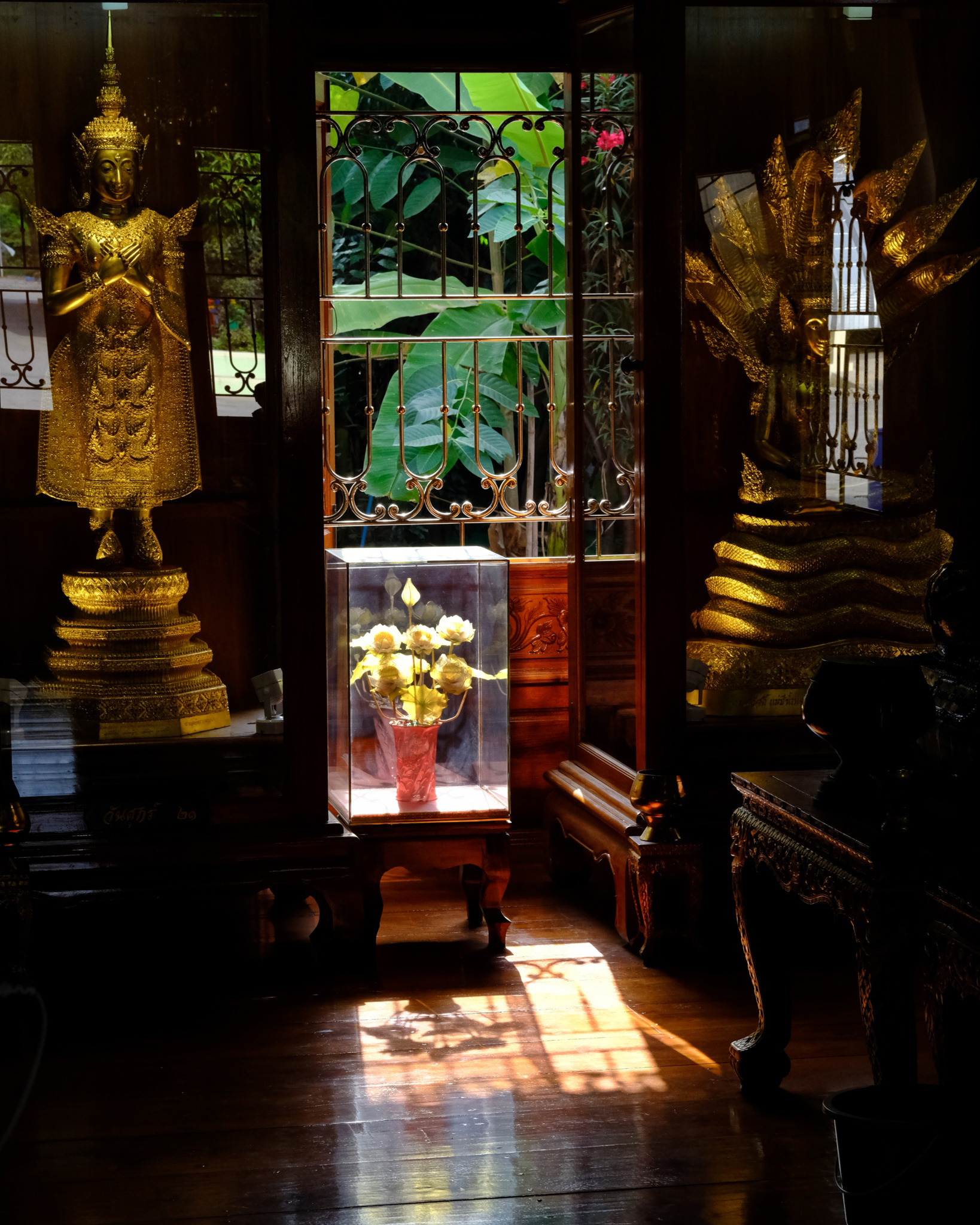 The interior of the museum. The light! The light!
The interior of the museum. The light! The light!
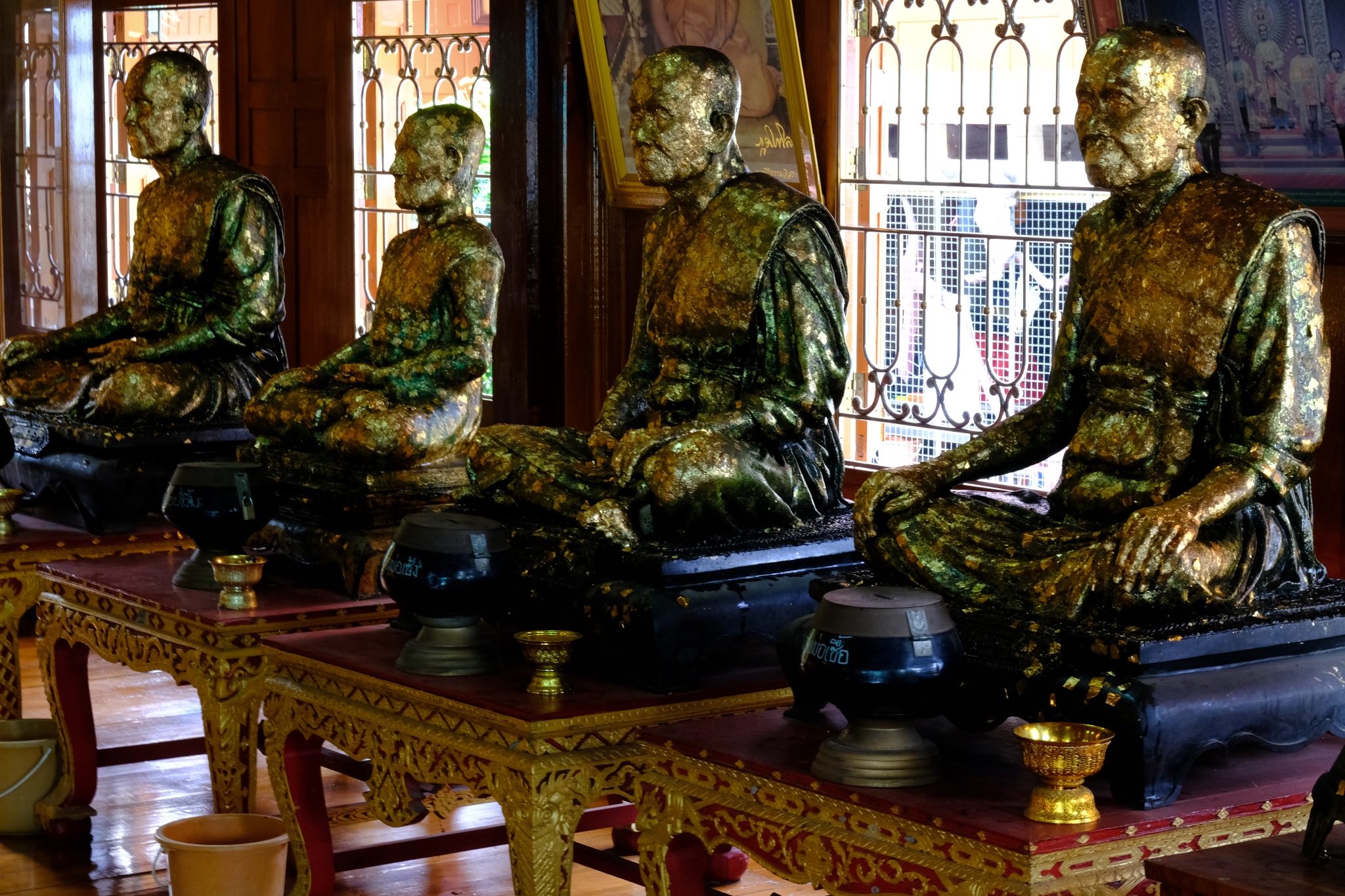 Remarkable.
Remarkable.
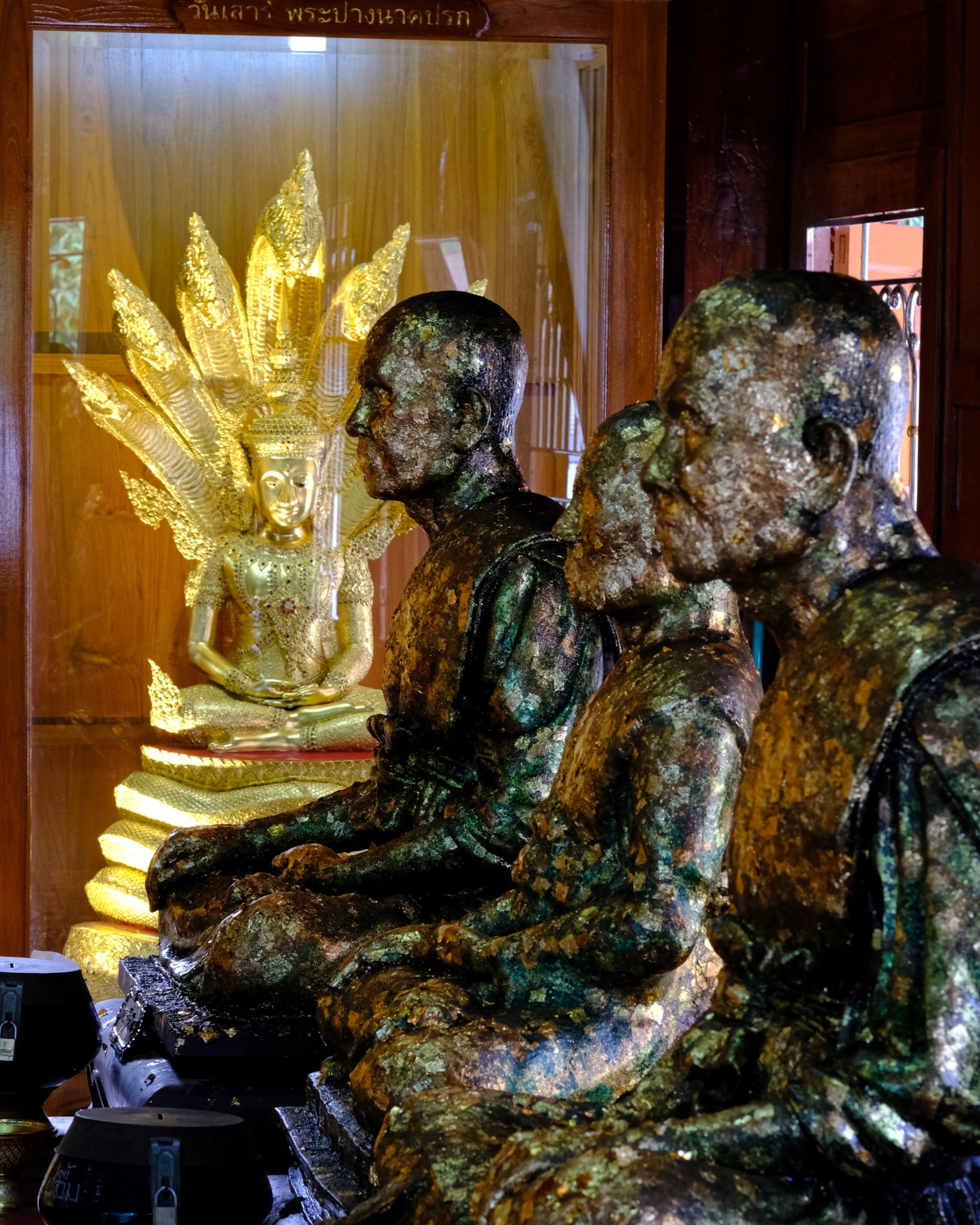 Revered monks in effigy.
Revered monks in effigy.
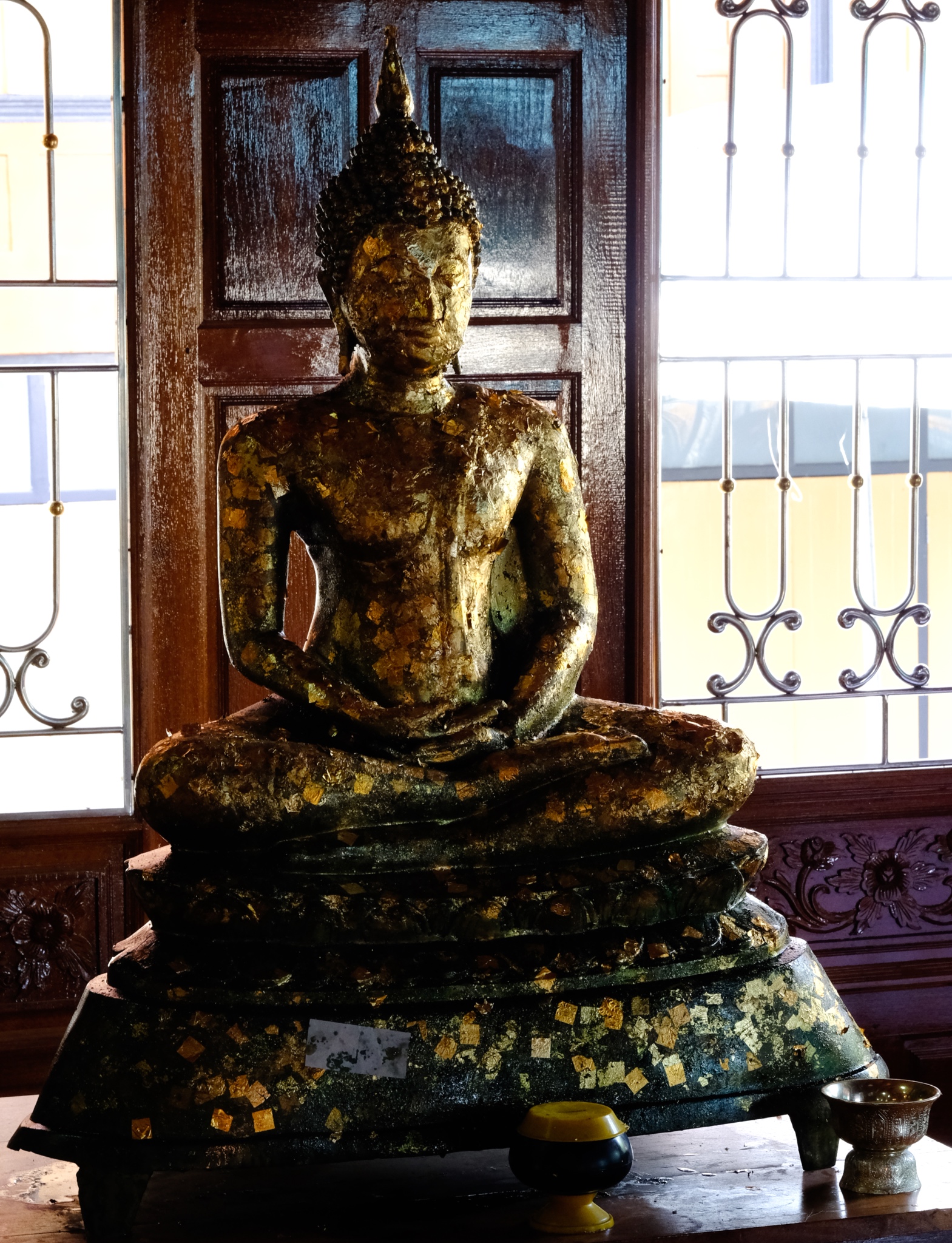 Many fine, ancient Buddha images were housed in the museum.
Many fine, ancient Buddha images were housed in the museum.
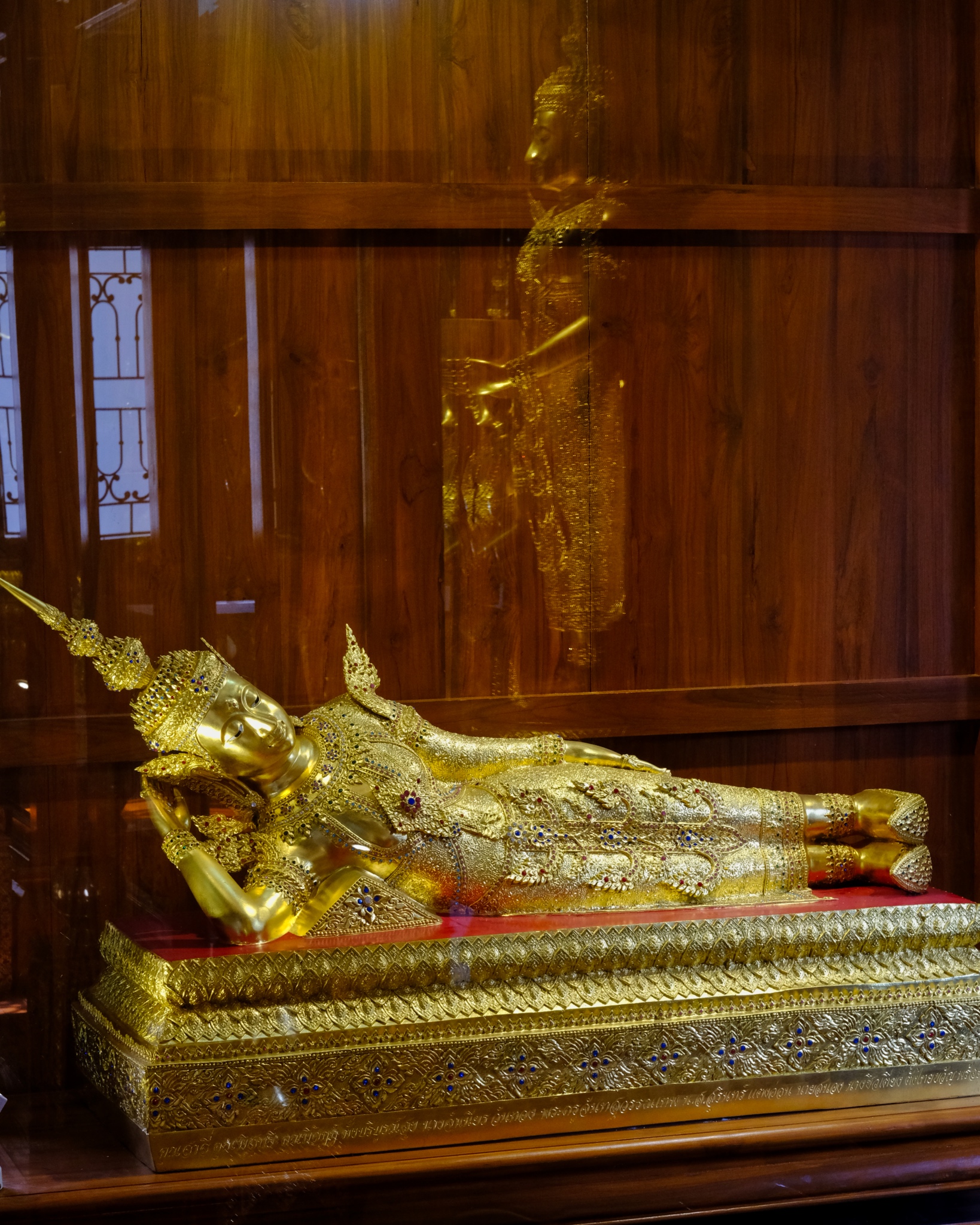 Ghostly reflections on the display cases enhanced our fantastic experience.
Ghostly reflections on the display cases enhanced our fantastic experience.
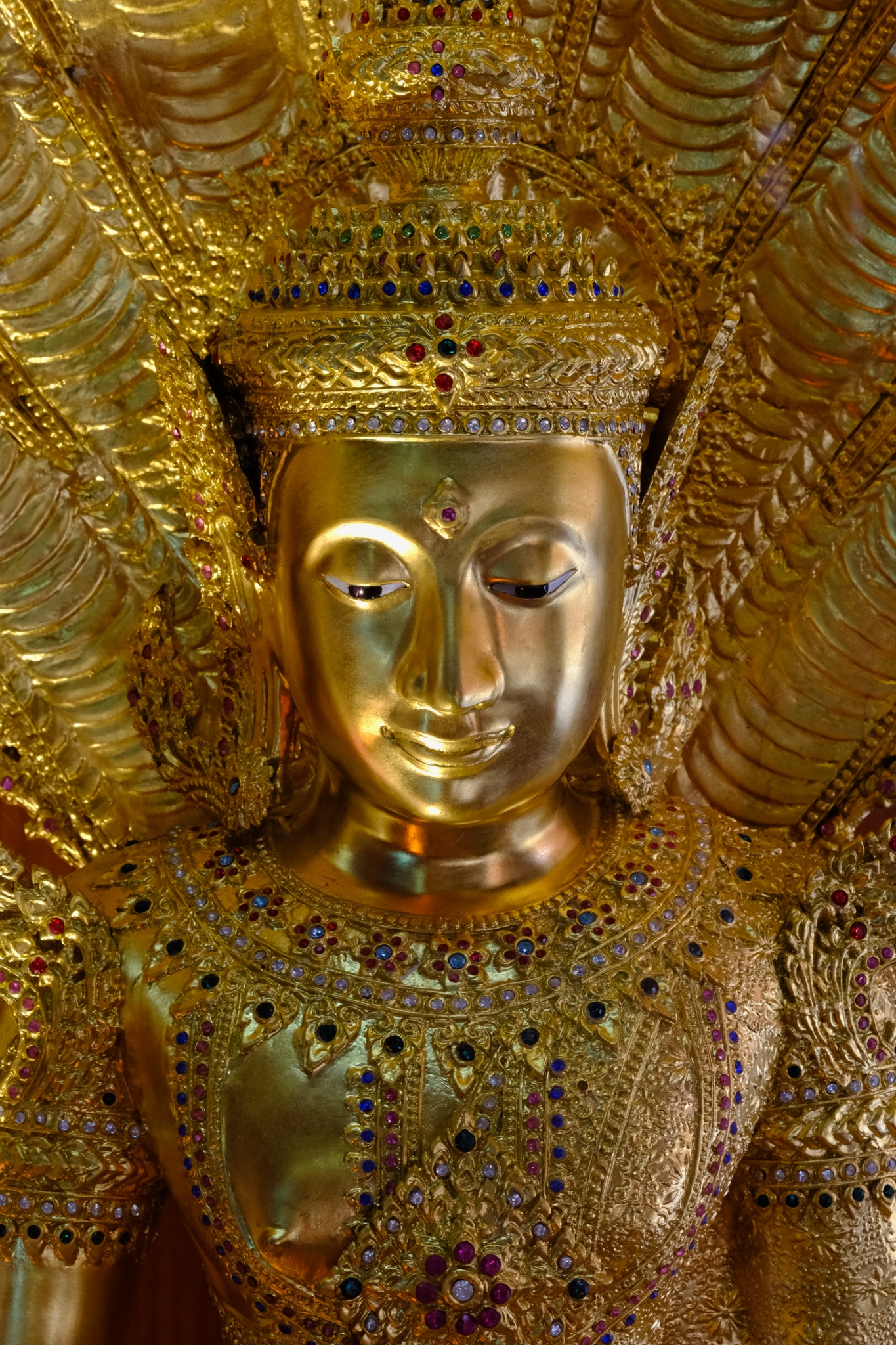 Remarkable artistry in gold.
Remarkable artistry in gold.
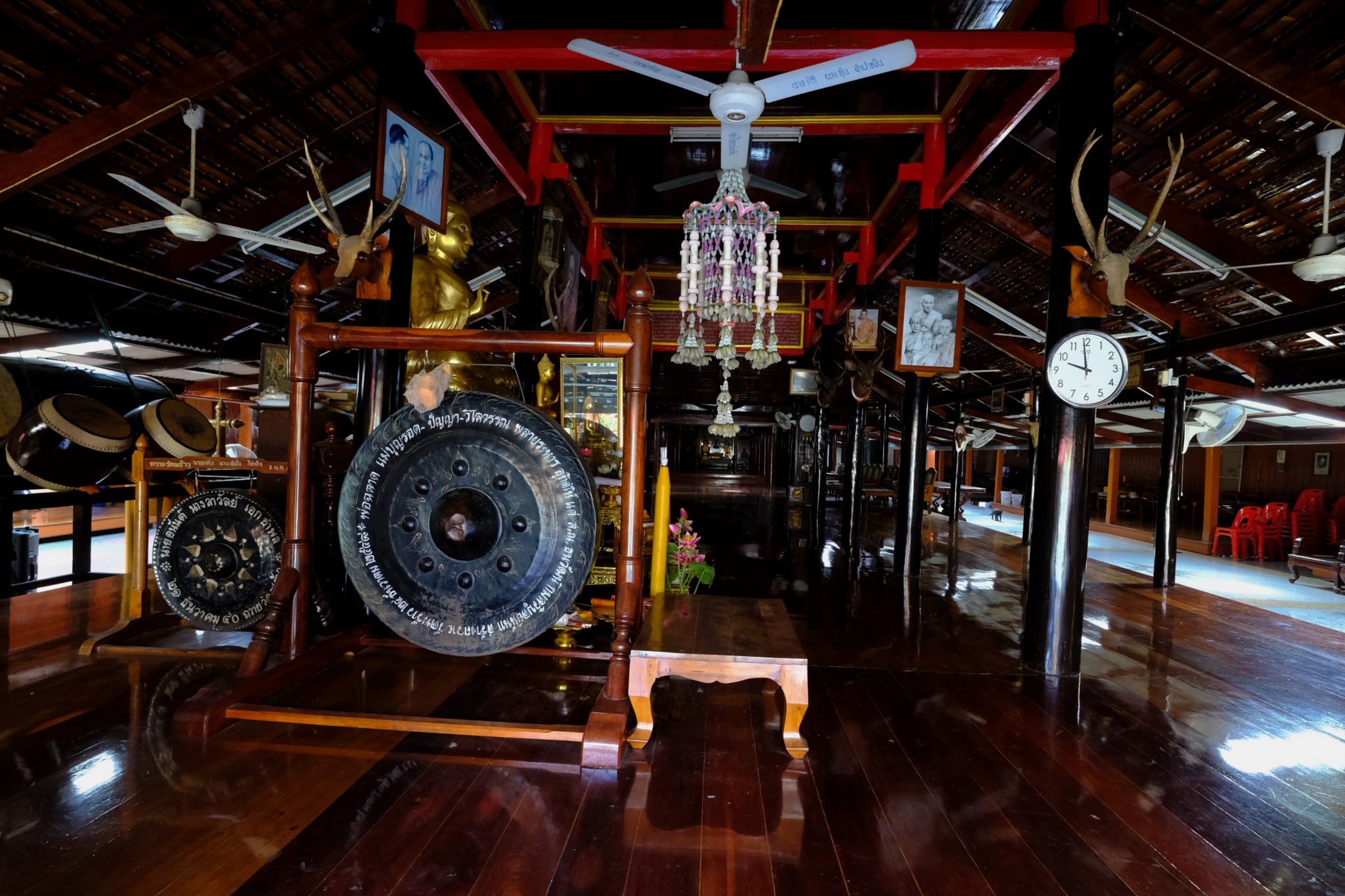 We walked out of the museum and into a nondescript wooden structure next door . . . and another world revealed itself to us!!!
We walked out of the museum and into a nondescript wooden structure next door . . . and another world revealed itself to us!!!
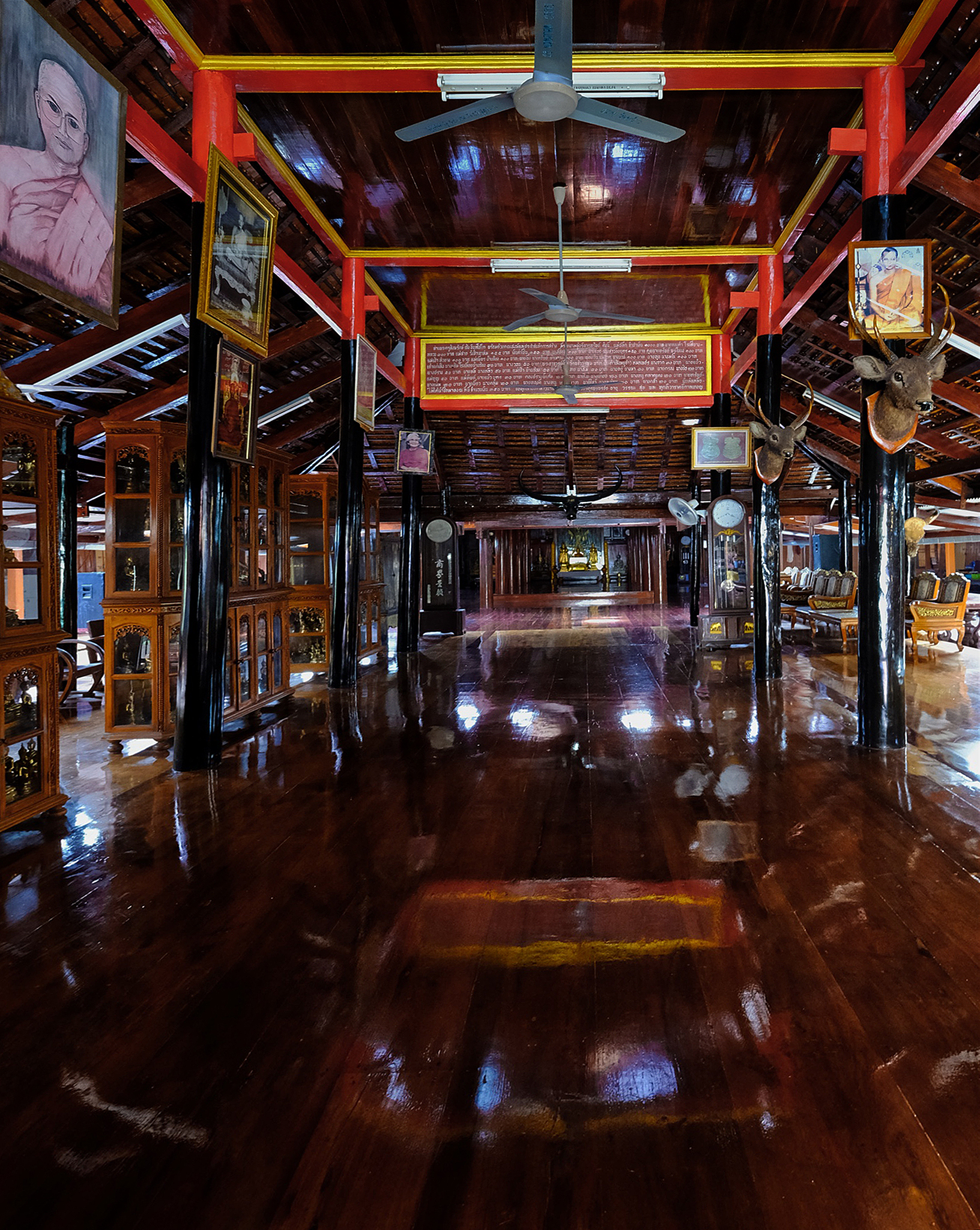 We entered at the invitation of an old monk . . . and went deeper and deeper into this artistically remarkable spiritual space.
We entered at the invitation of an old monk . . . and went deeper and deeper into this artistically remarkable spiritual space.
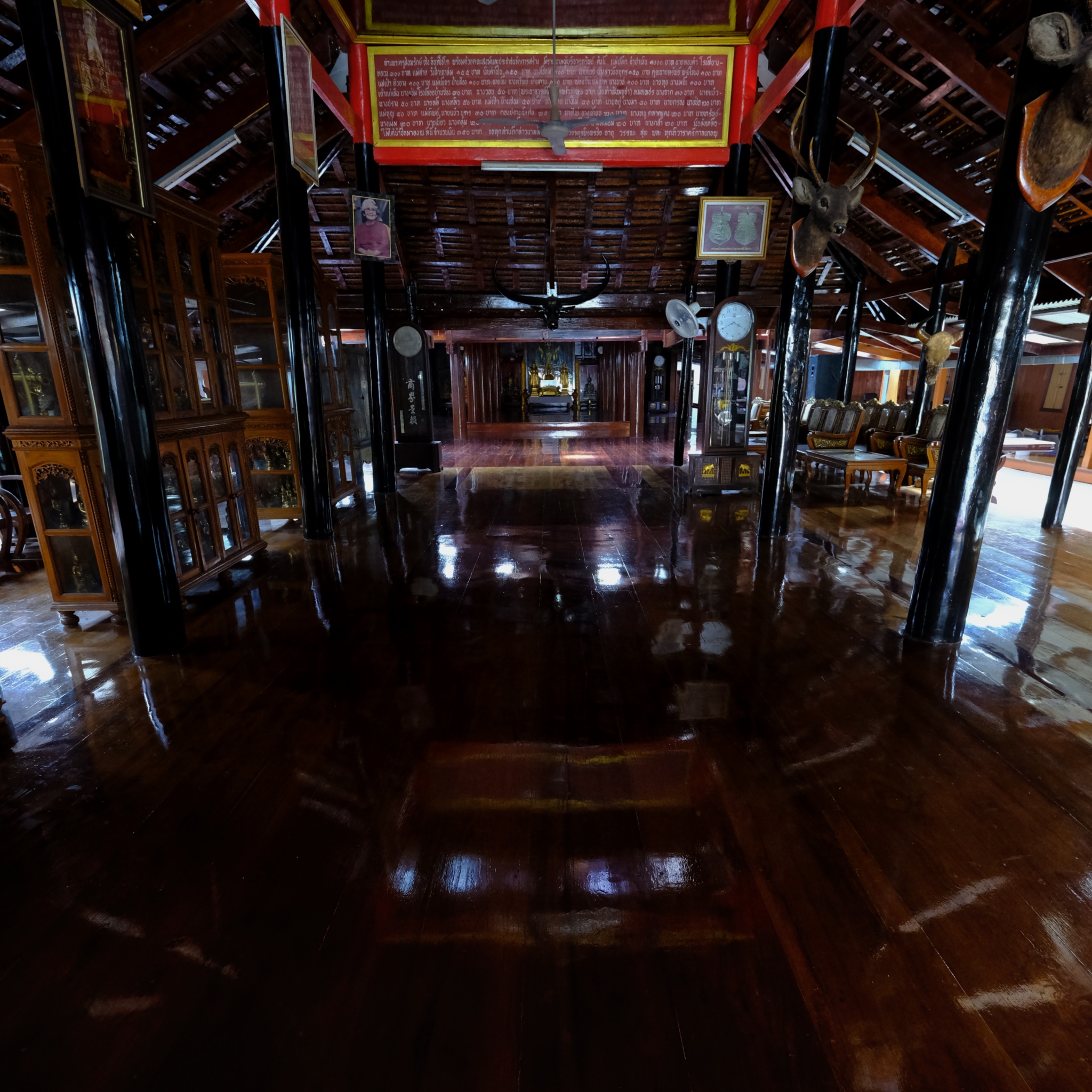 Further and further into the old wooden temple . . .
Further and further into the old wooden temple . . .
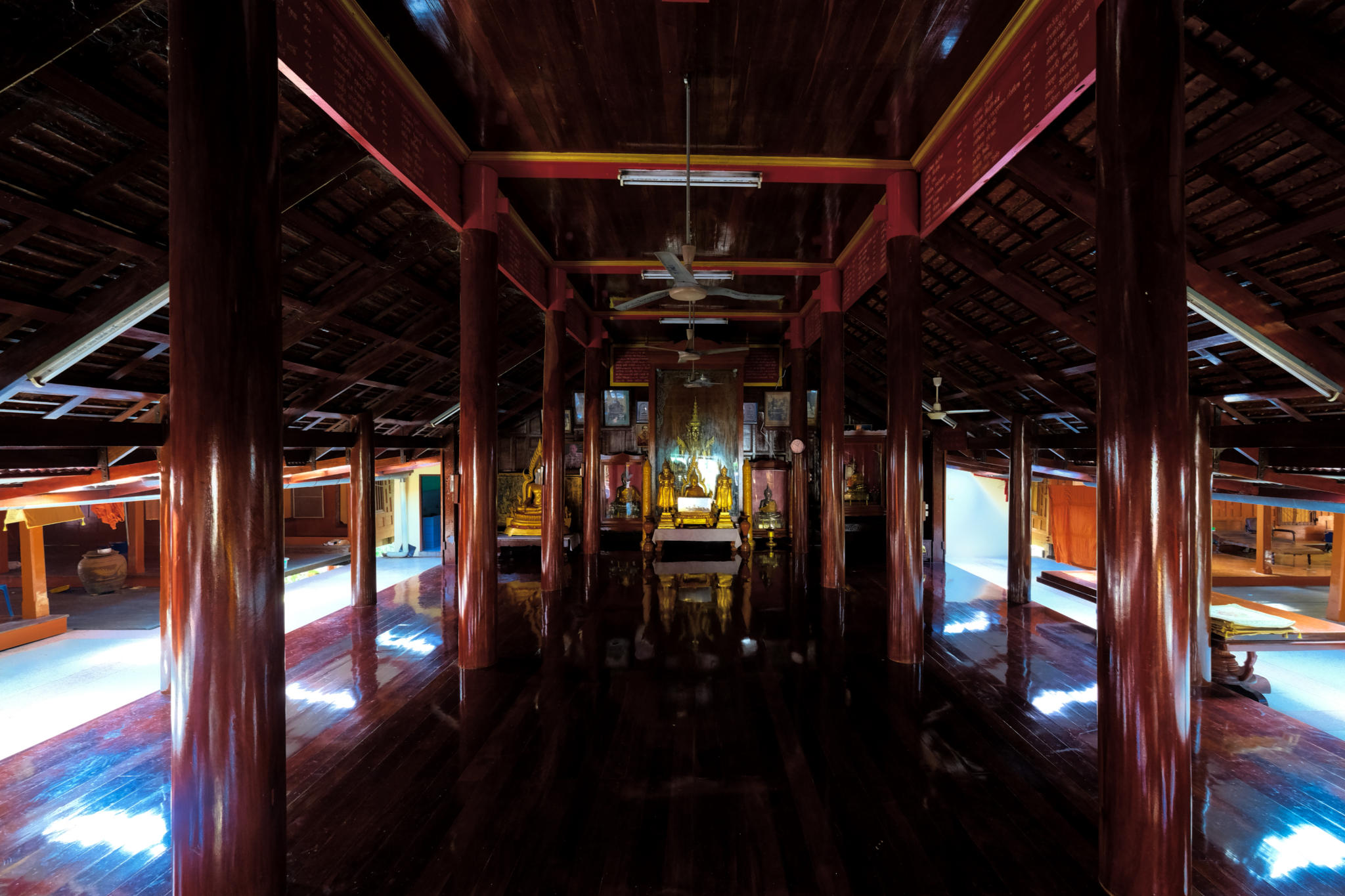 The open-sided temple seemed recently restored.
The open-sided temple seemed recently restored.
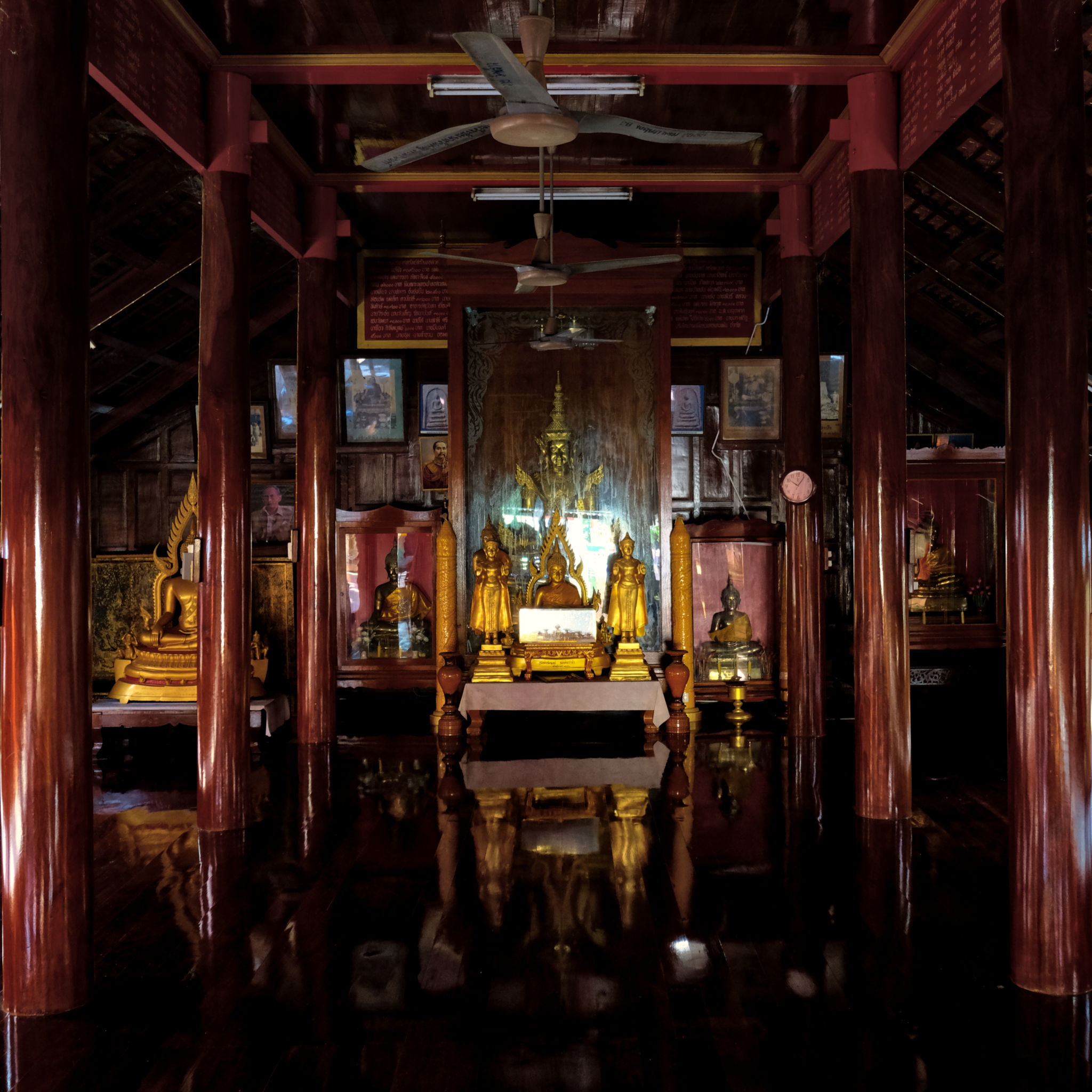 Further and further into the temple until we came to the central altar.
Further and further into the temple until we came to the central altar.
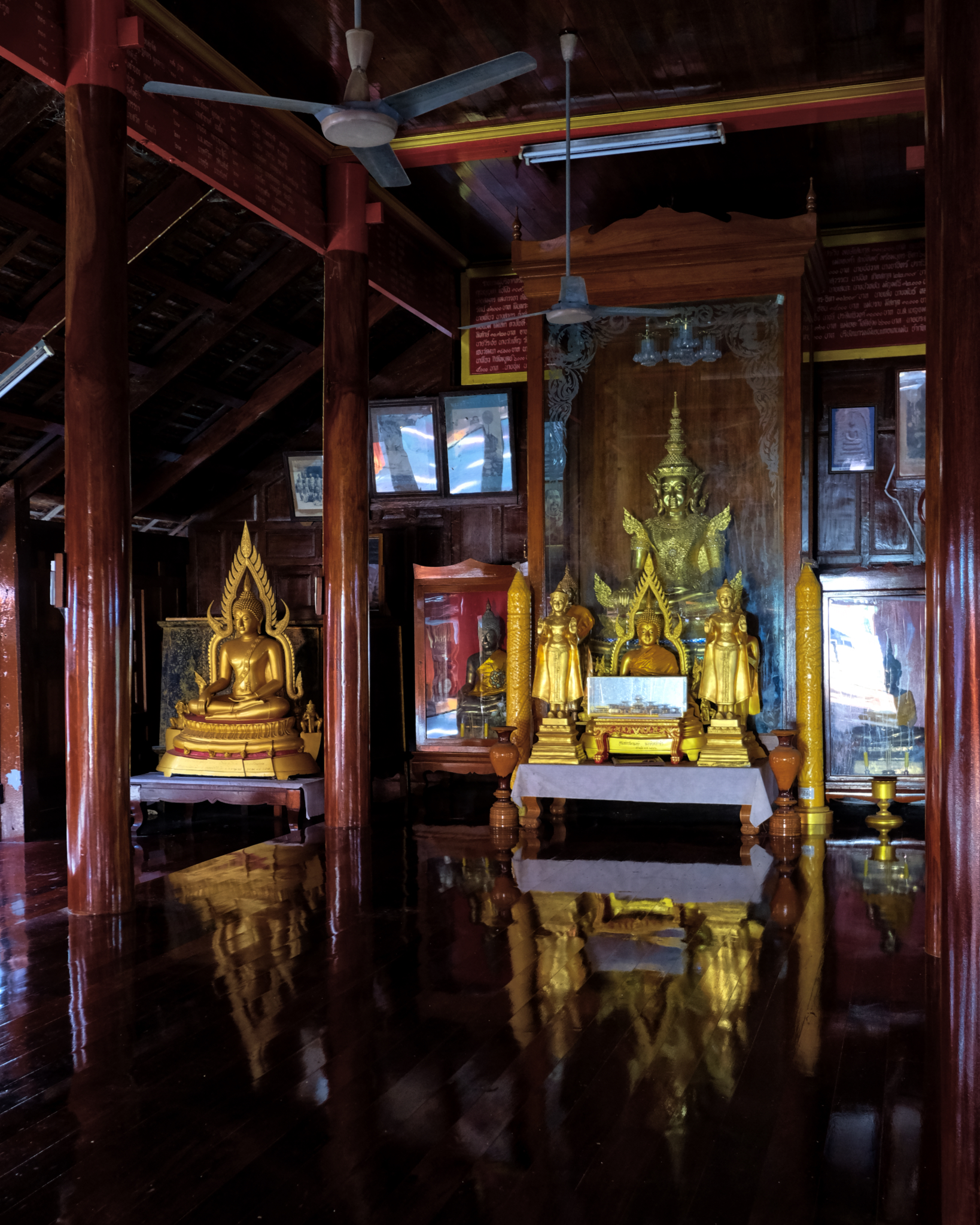 Sacred altar to The Buddha.
Sacred altar to The Buddha.
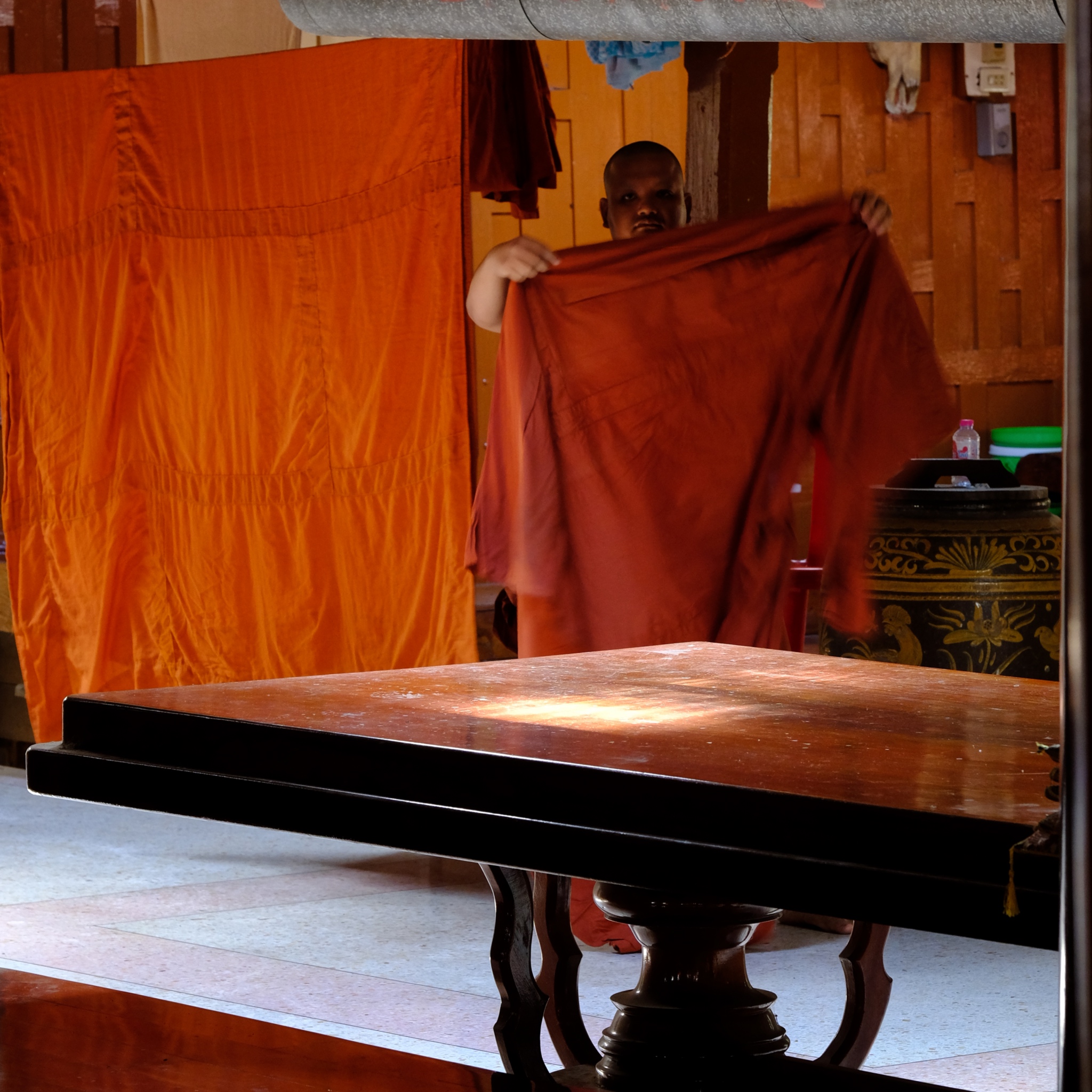 As this is a living temple, the monks live in cells around the central temple and use it as a kind of day room for their chores.
As this is a living temple, the monks live in cells around the central temple and use it as a kind of day room for their chores.
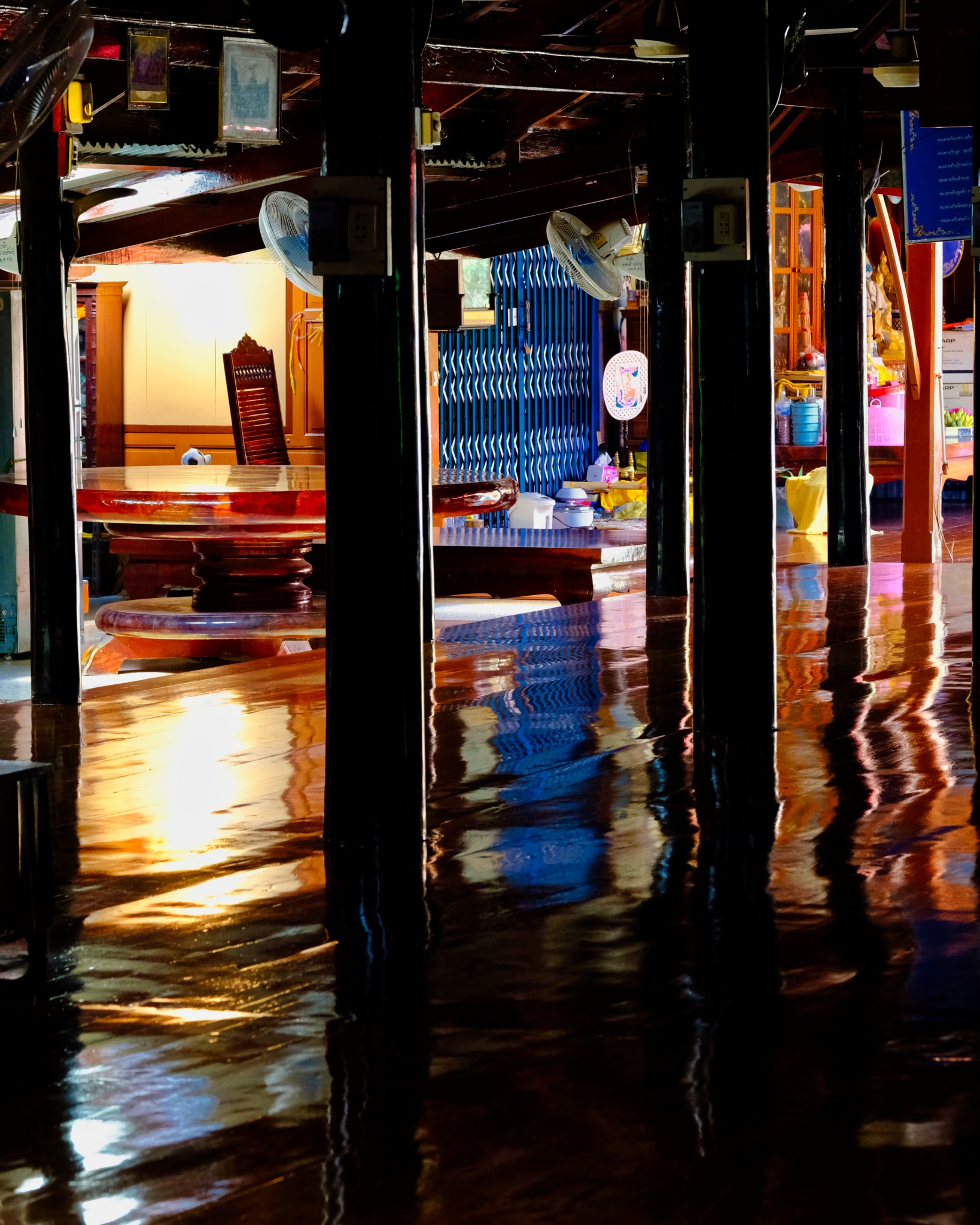 All the mundane items of daily living stacked in a corner of this remarkably beautiful place.
All the mundane items of daily living stacked in a corner of this remarkably beautiful place.
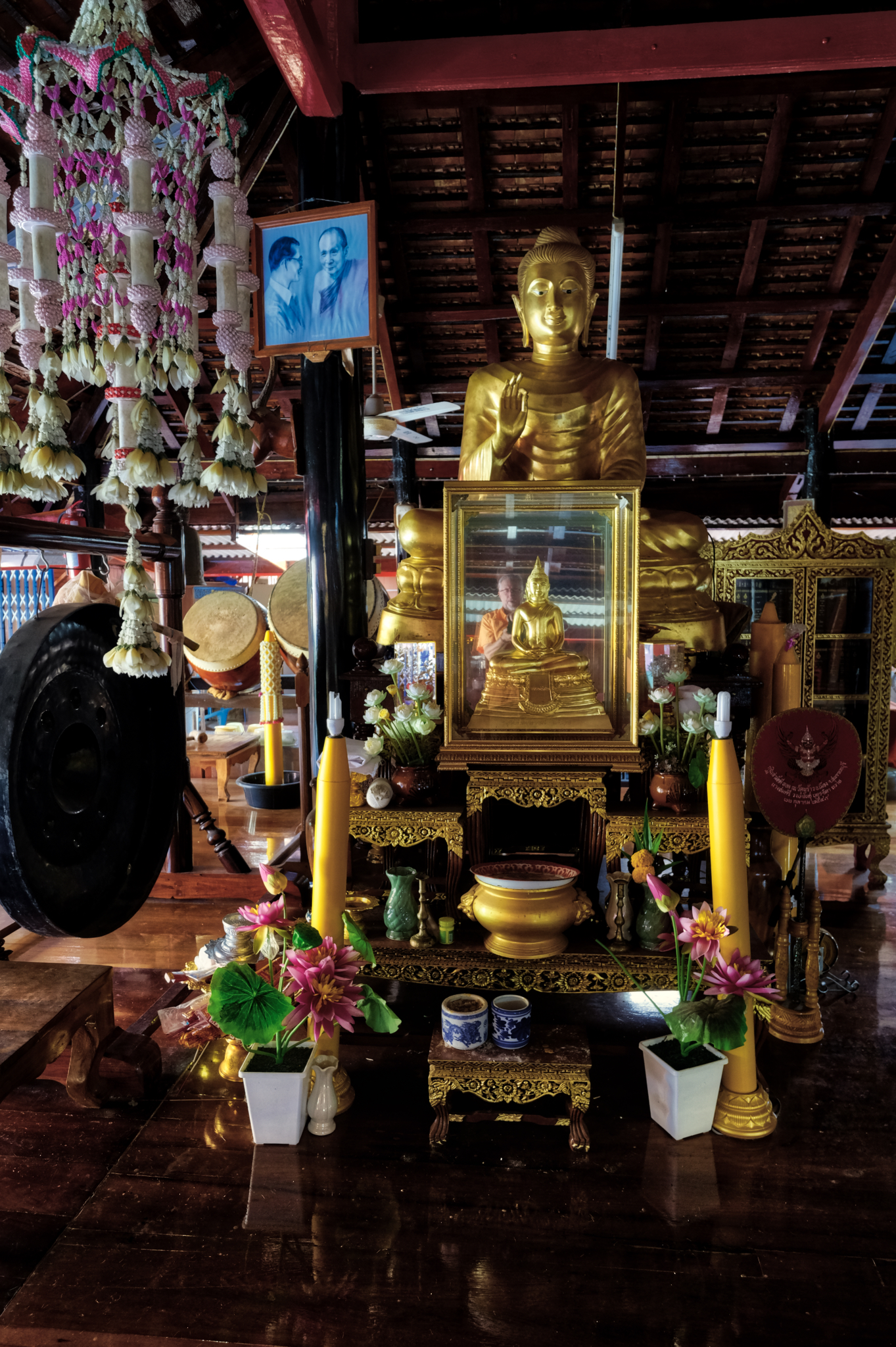 There were many other other altars in the freshly varnished temple. This one included a 'self portrait' of your intrepid photographer.
There were many other other altars in the freshly varnished temple. This one included a 'self portrait' of your intrepid photographer.
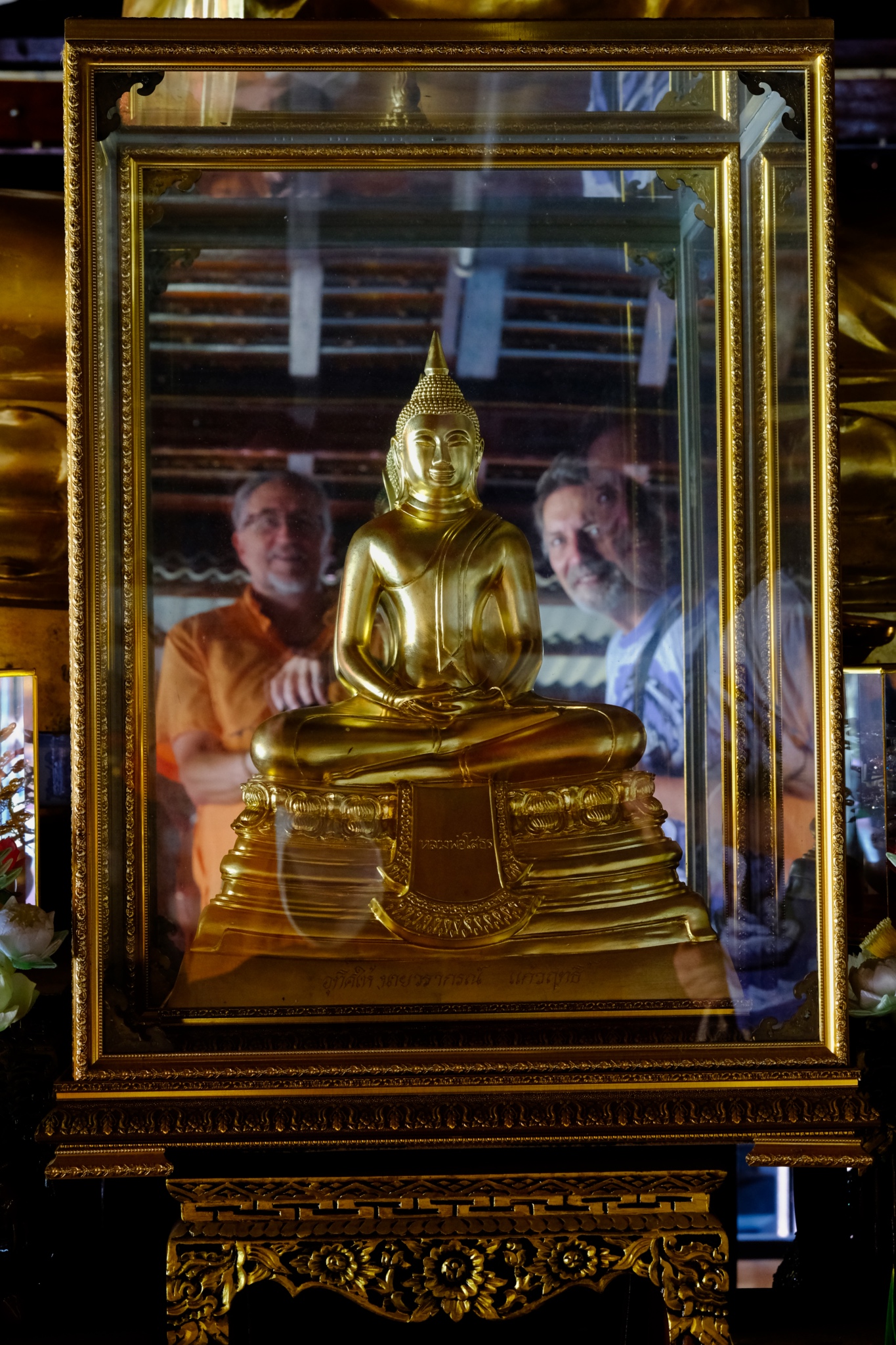 I am keeping good company . . . John and The Buddha.
I am keeping good company . . . John and The Buddha.
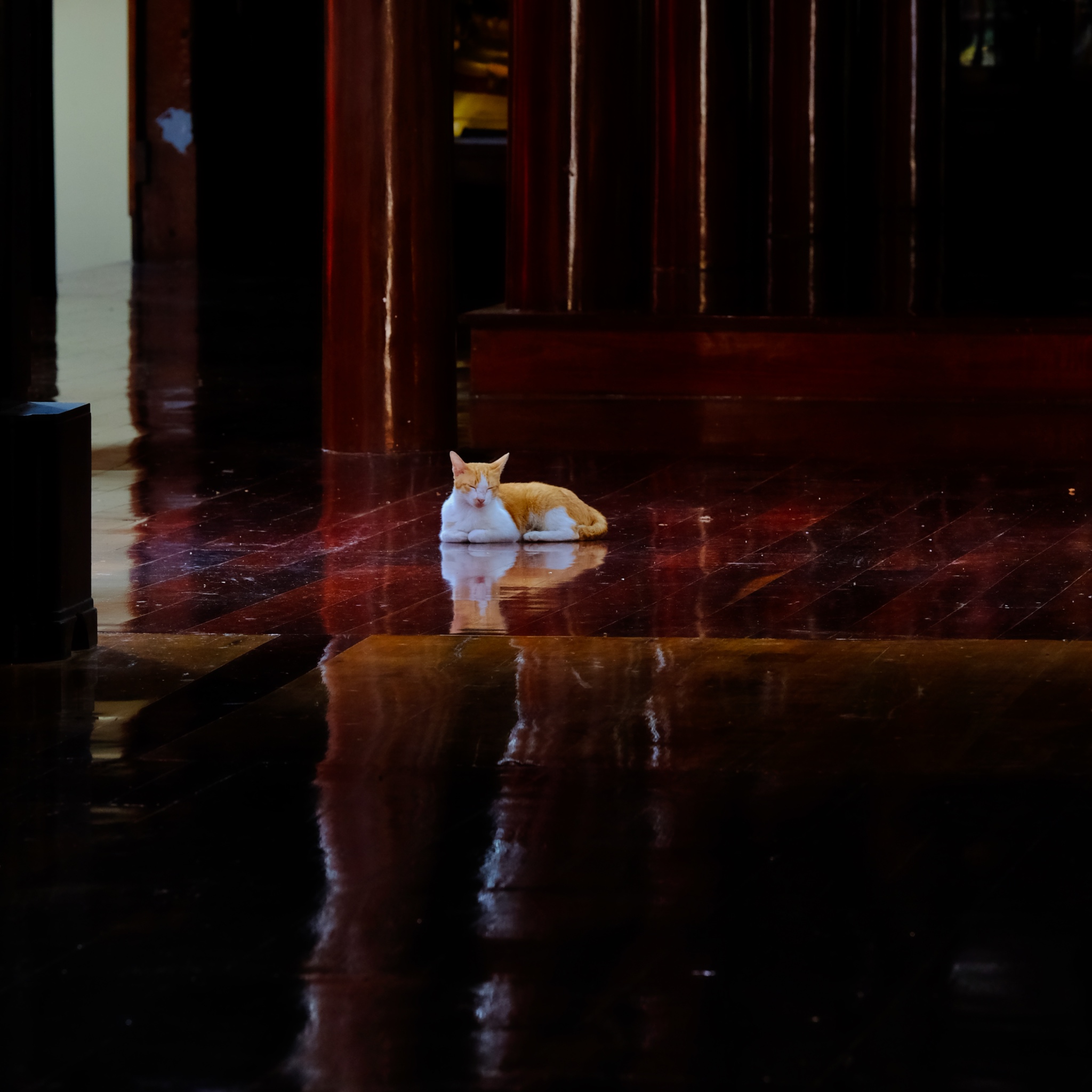 There were freeloader cats looking content in the temple.
There were freeloader cats looking content in the temple.
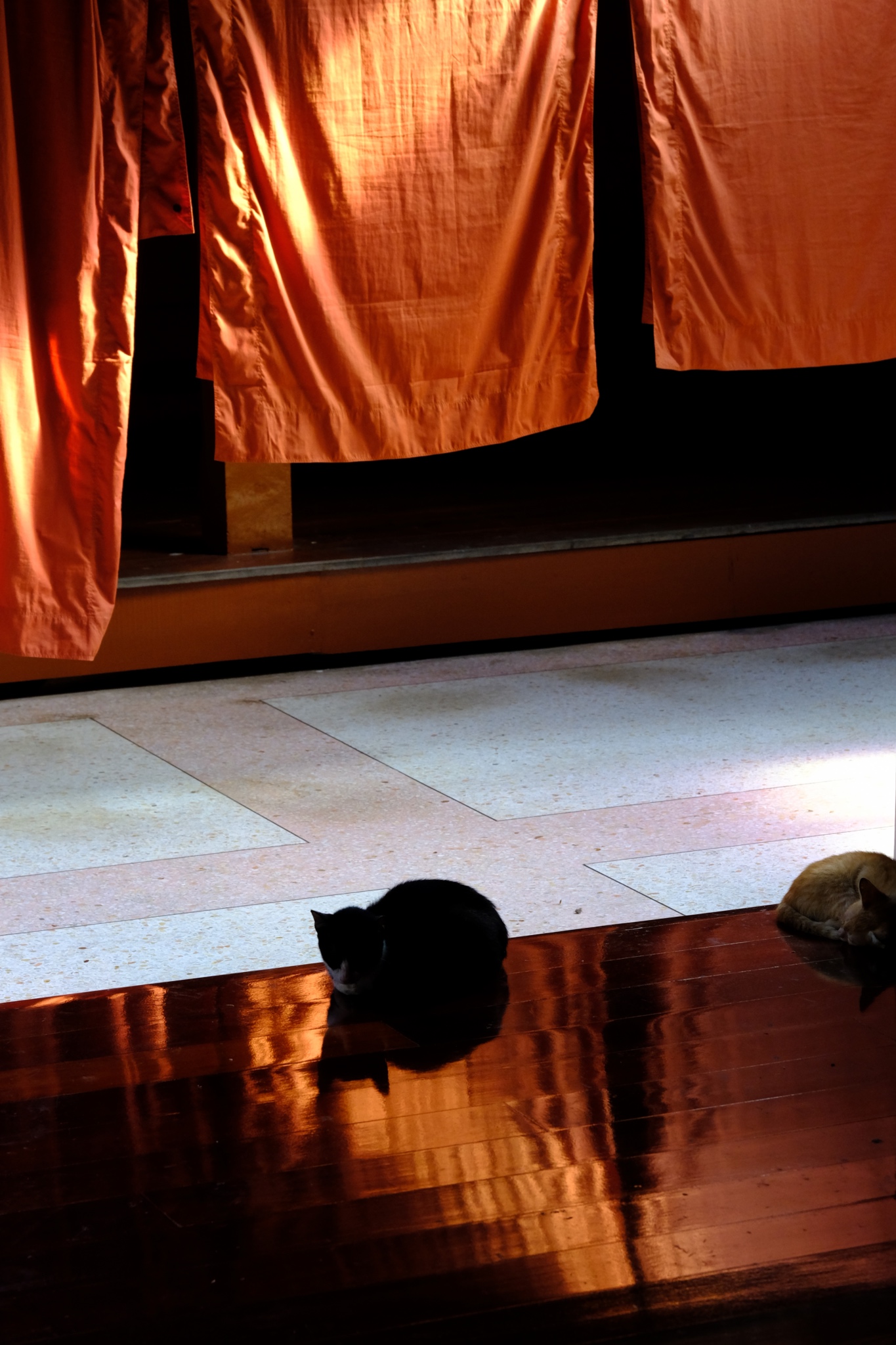 The cats distributed themselves around the temple in the most aesthetic way possible.
The cats distributed themselves around the temple in the most aesthetic way possible.
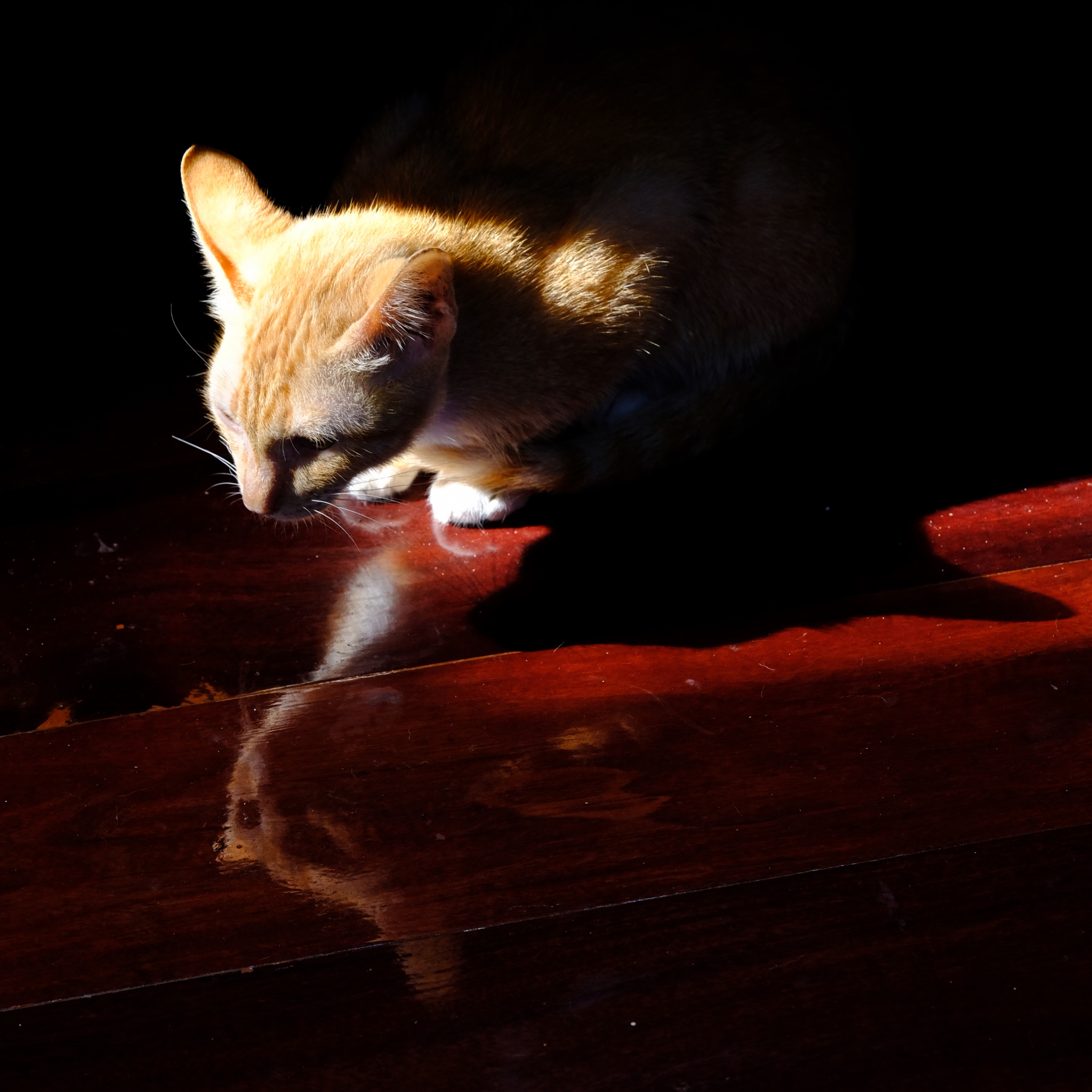 A temple cat in full meditative repose.
A temple cat in full meditative repose.
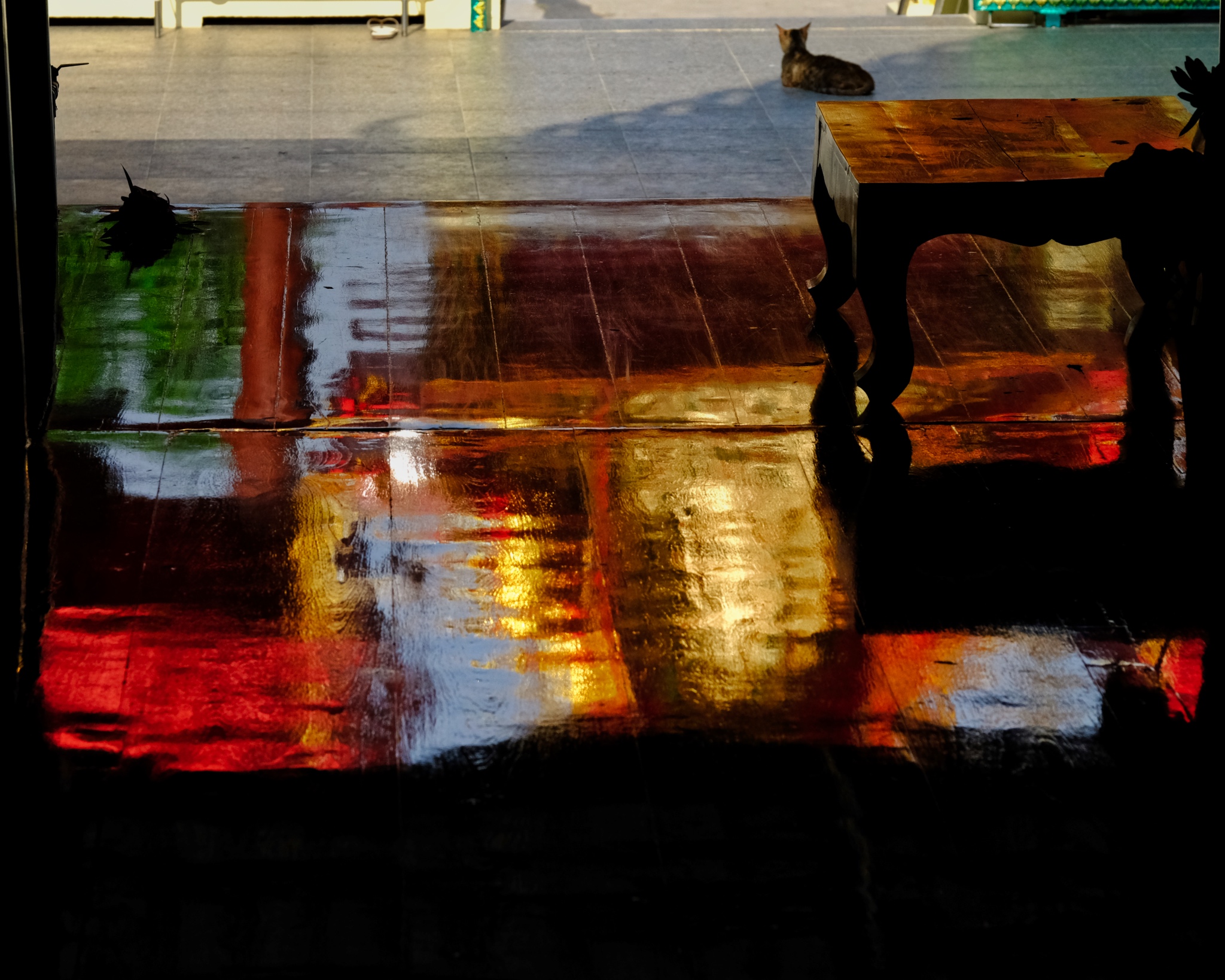 Wonderful reflection of the surrounding temple structures on the polished varnish floor (with cat).
Wonderful reflection of the surrounding temple structures on the polished varnish floor (with cat).
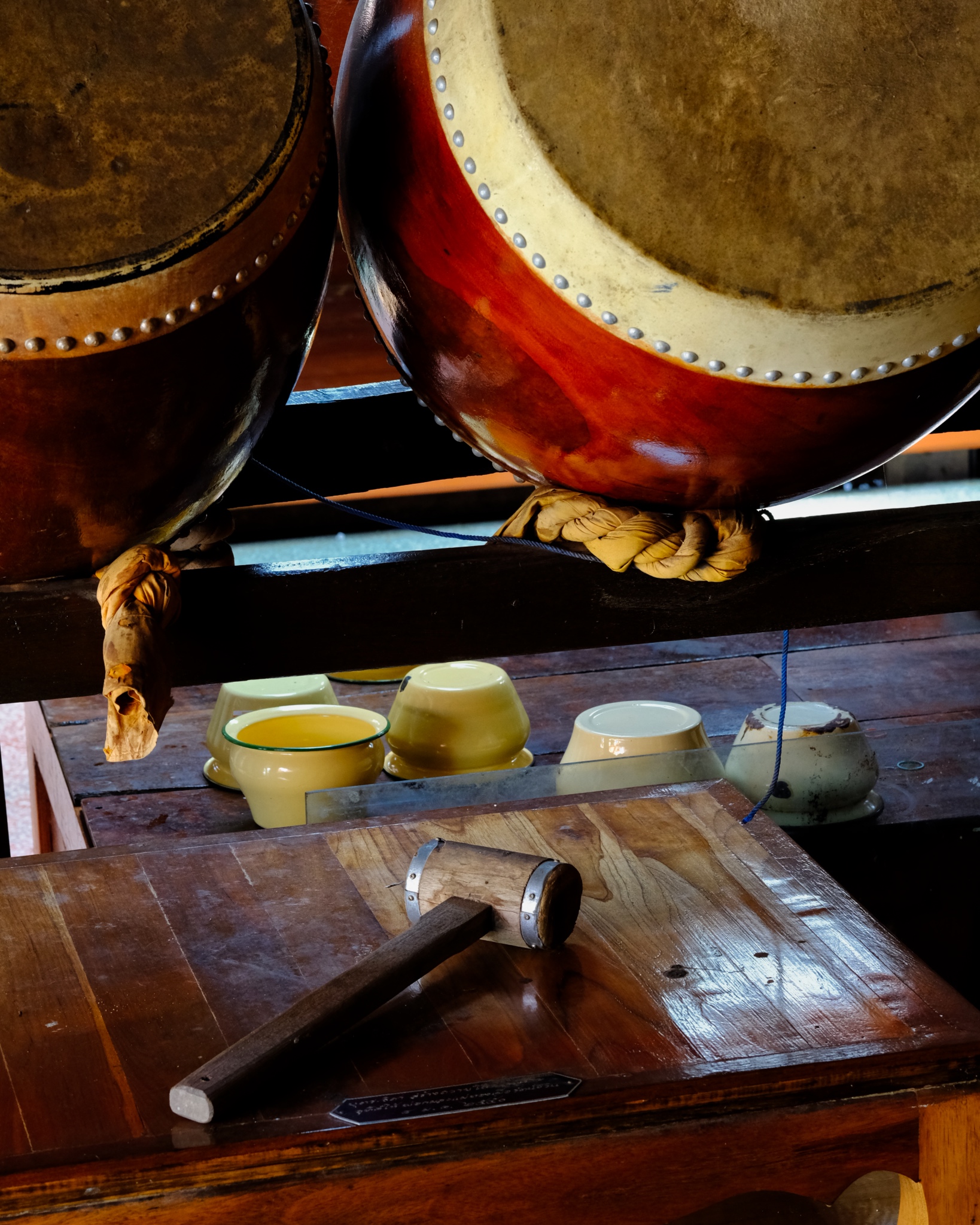 I was tempted . . . but relented . . . because of the peacefulness there.
I was tempted . . . but relented . . . because of the peacefulness there.
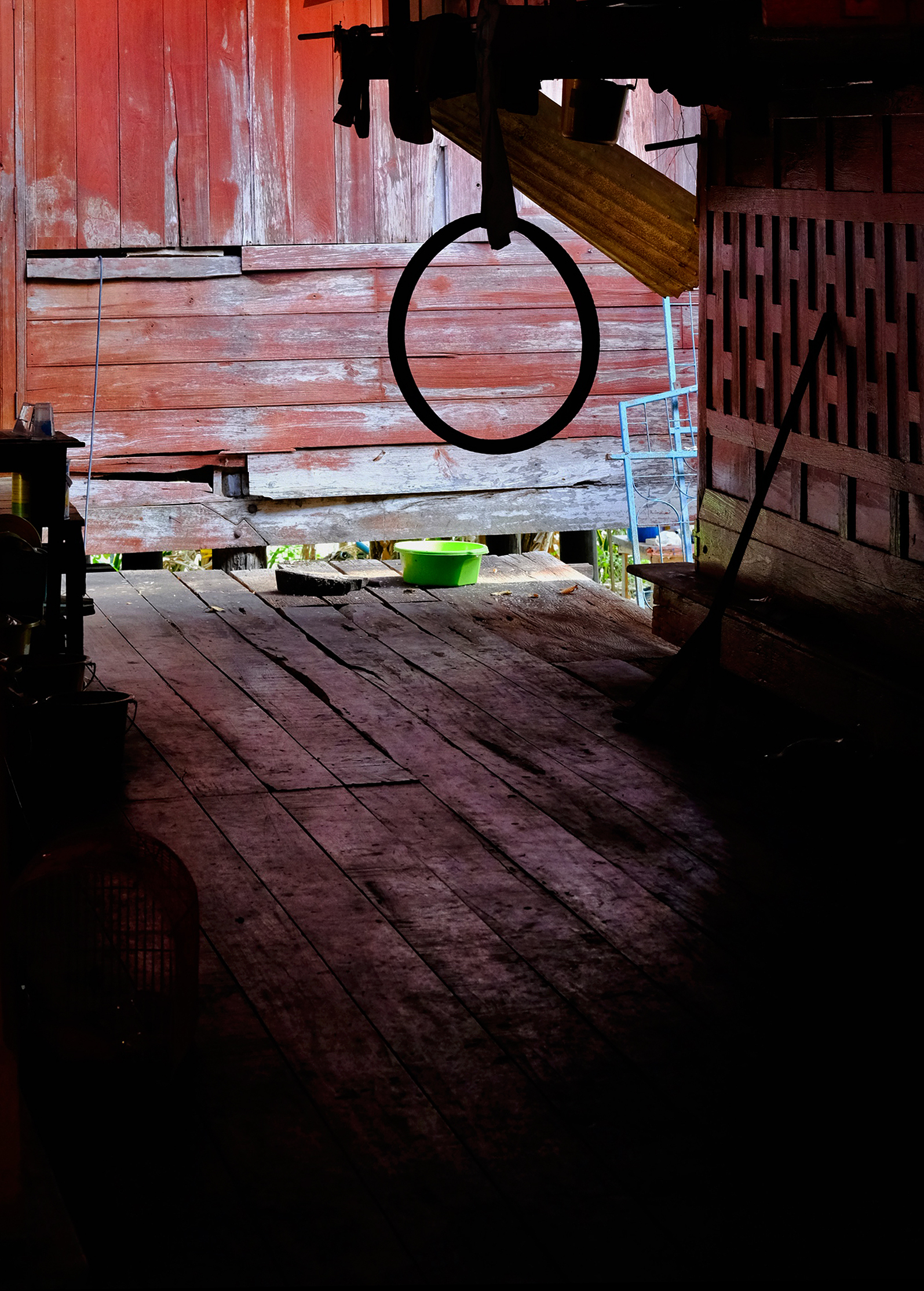 I could have spent all day in that wooden temple (or all the rest of my life!) . . . but we left our homes that morning to ramble, and ramble we would.
I could have spent all day in that wooden temple (or all the rest of my life!) . . . but we left our homes that morning to ramble, and ramble we would.
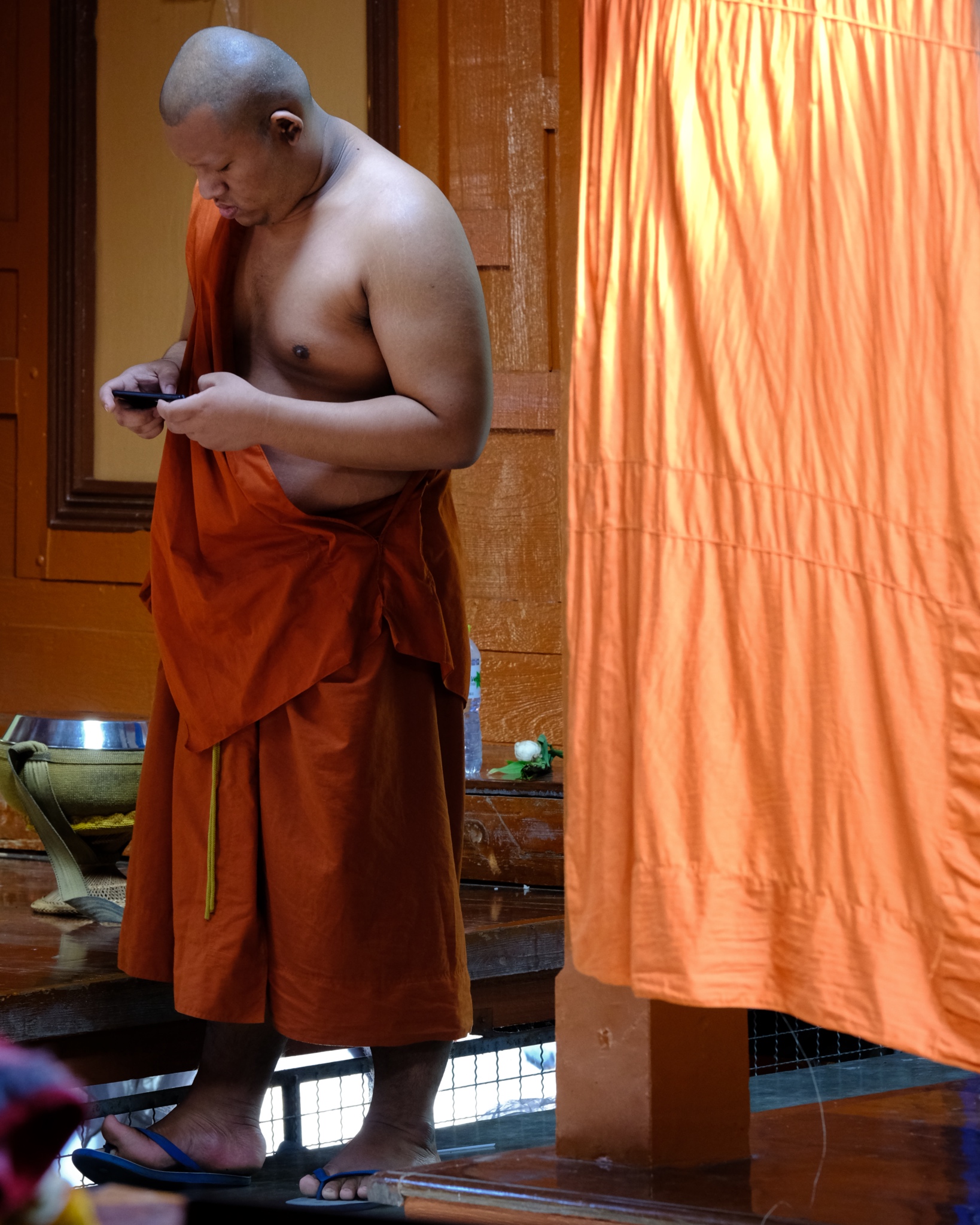 I am not sure what to say about this. I am sure this 'modern' monk is somewhere on his own spiritual path . . . but it seems odd to me. I guess the Buddha did not anticipate modern technology, and the current wat abbots have not discovered effective guidance . . . or it doesn't matter.
I am not sure what to say about this. I am sure this 'modern' monk is somewhere on his own spiritual path . . . but it seems odd to me. I guess the Buddha did not anticipate modern technology, and the current wat abbots have not discovered effective guidance . . . or it doesn't matter.
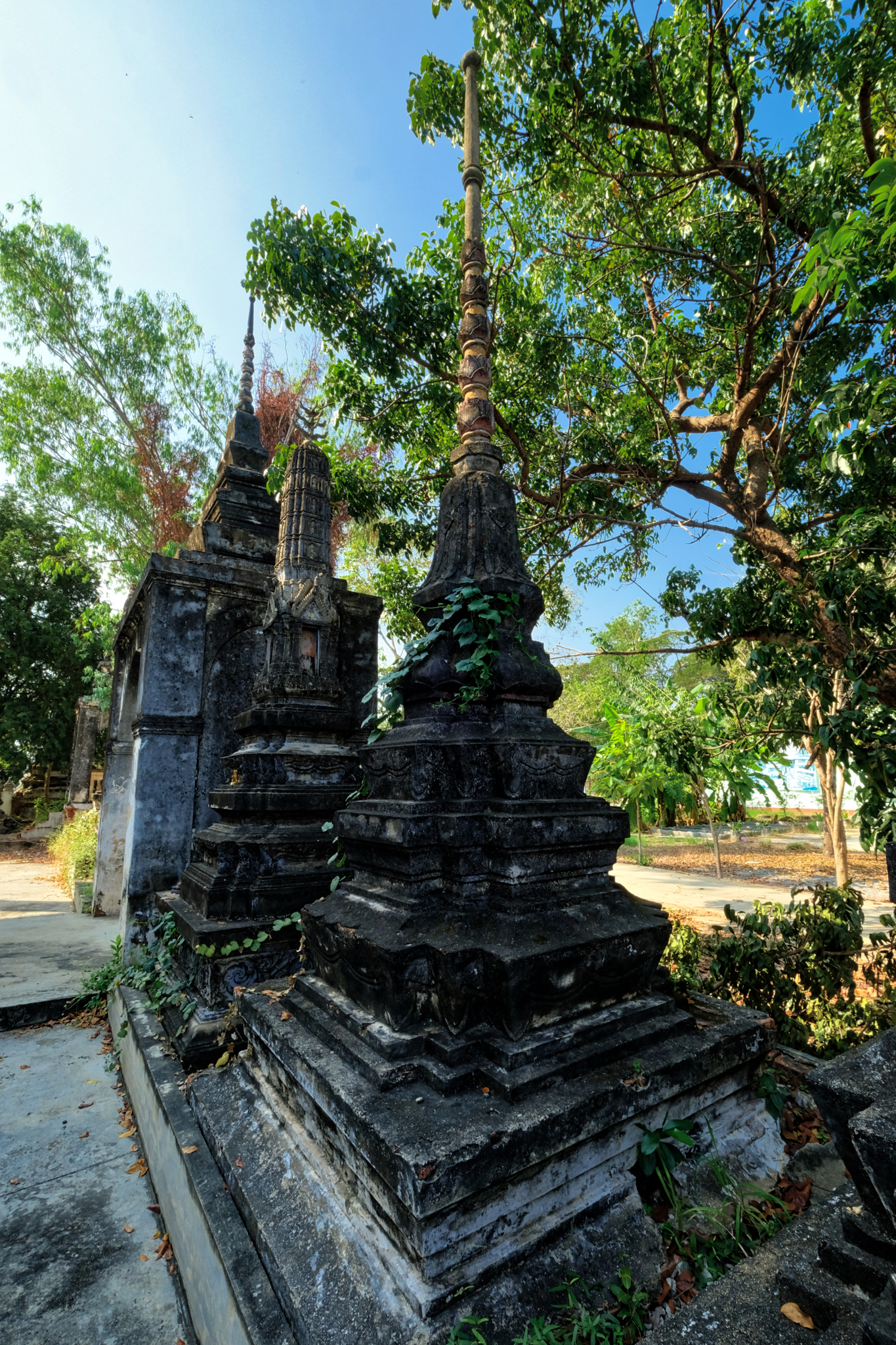 Back outside in the real air . . . a row of chedis moldering away in the sunlight.
Back outside in the real air . . . a row of chedis moldering away in the sunlight.
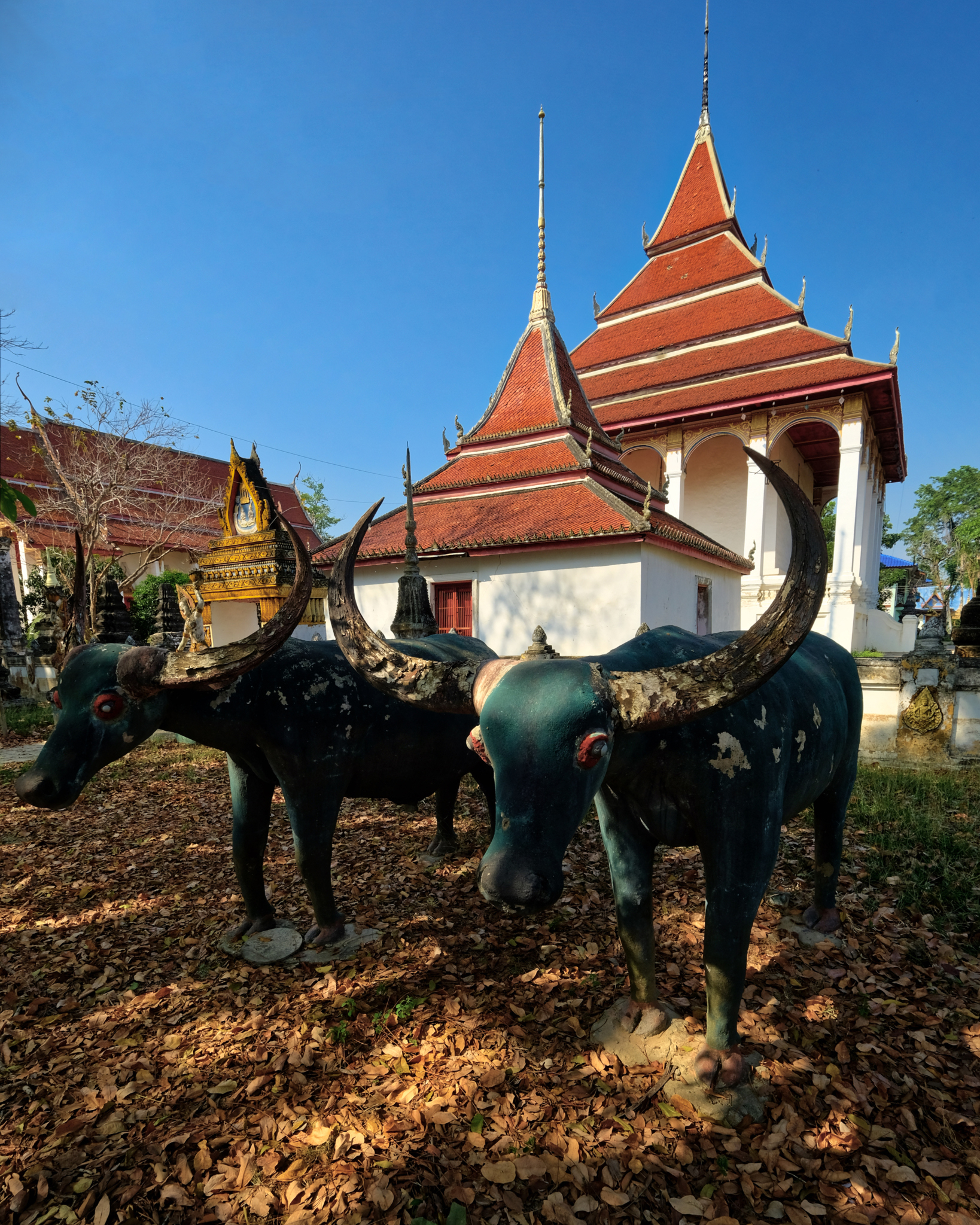 Yes, still inside the same temple grounds. Buffalo revered as a part of the lives of the people who live in the surrounding rural farmland.
Yes, still inside the same temple grounds. Buffalo revered as a part of the lives of the people who live in the surrounding rural farmland.
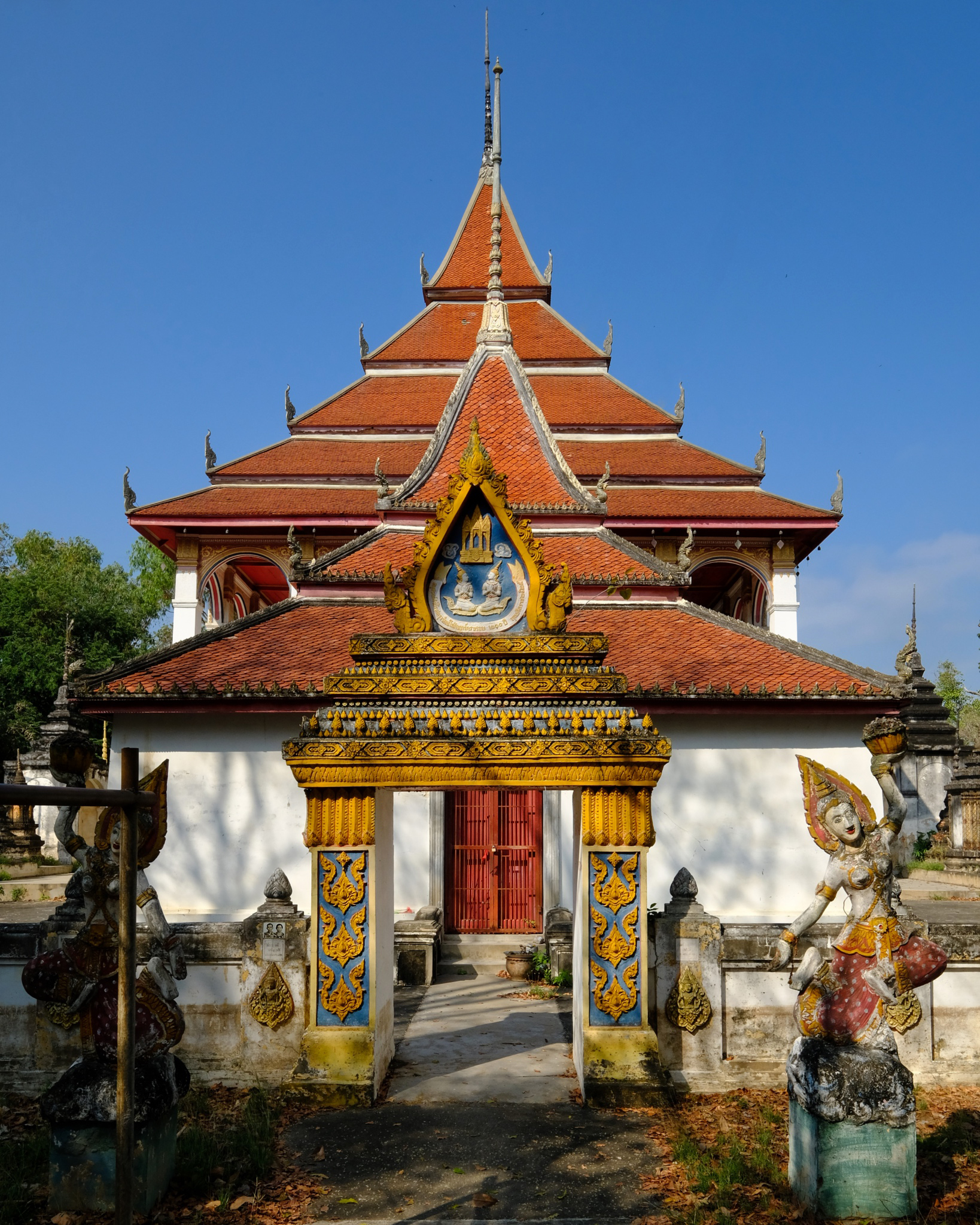 A beautiful Wat gate with welcoming mythological spirits. This building was surrounded by a walled compound filled with old chedis holding the ashes, one would assume, of former monks and abbots.
A beautiful Wat gate with welcoming mythological spirits. This building was surrounded by a walled compound filled with old chedis holding the ashes, one would assume, of former monks and abbots.
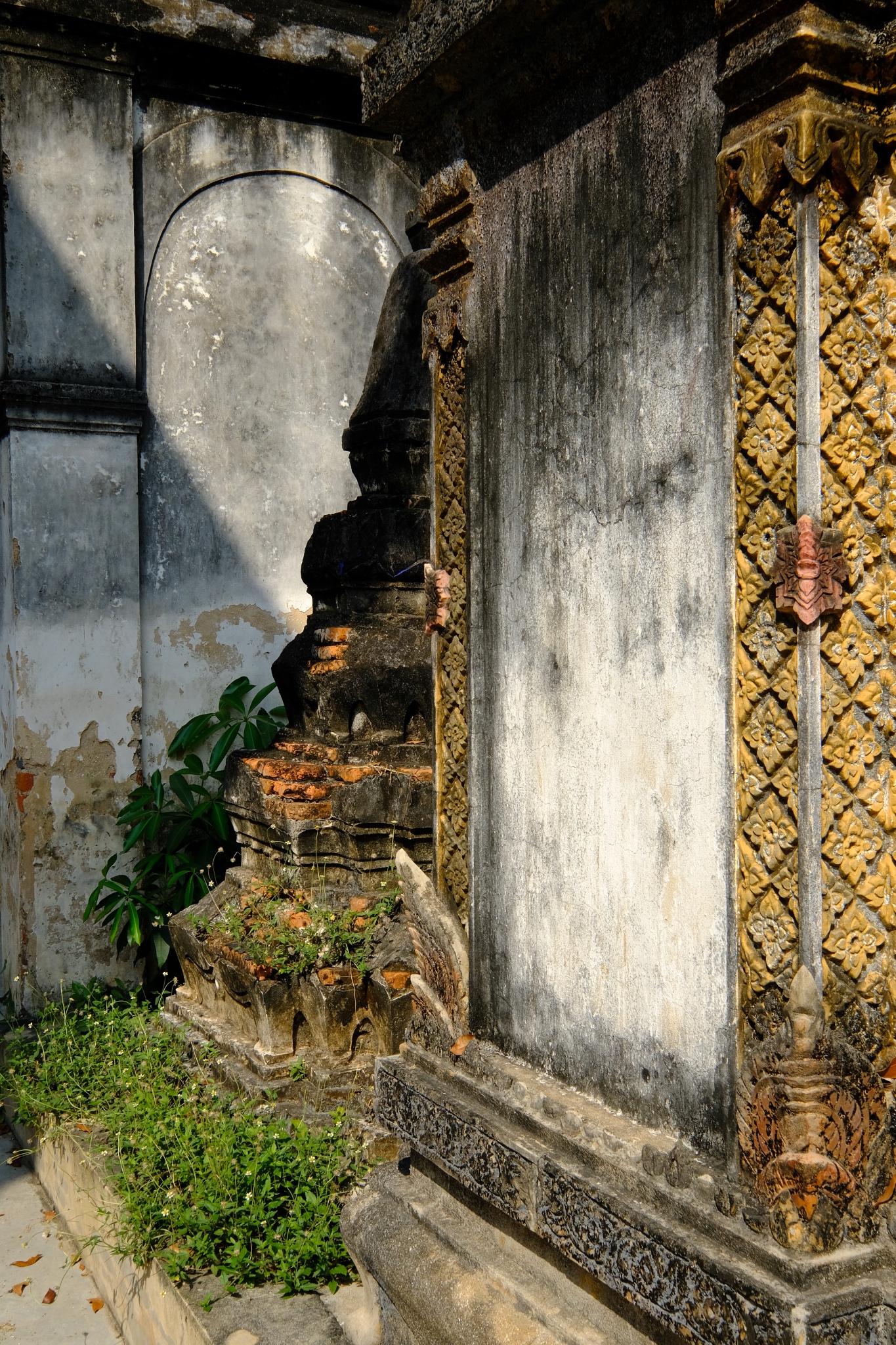 The surrounding chedis.
The surrounding chedis.
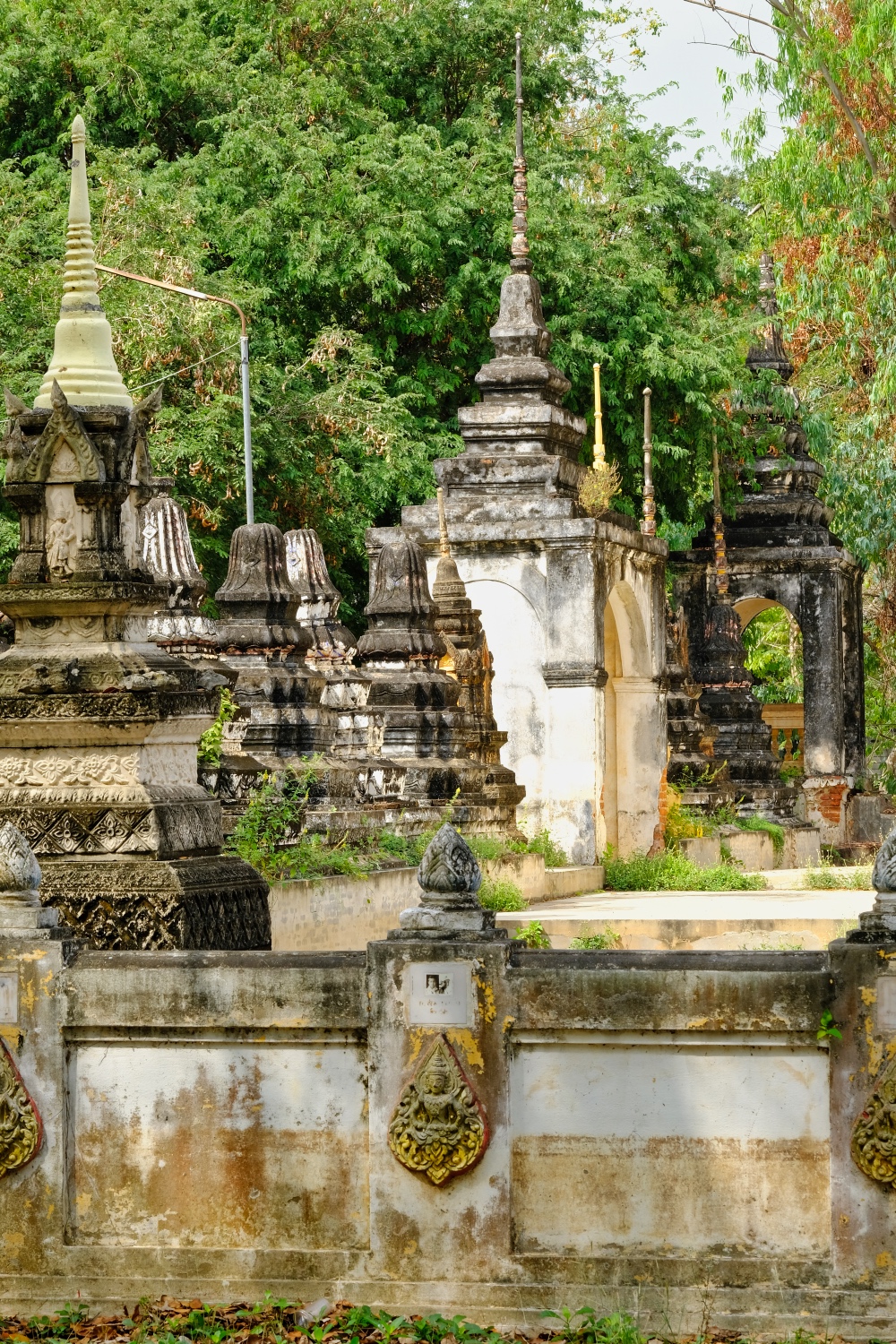 The old chedis stand in a vigil around the temple . . .
The old chedis stand in a vigil around the temple . . .
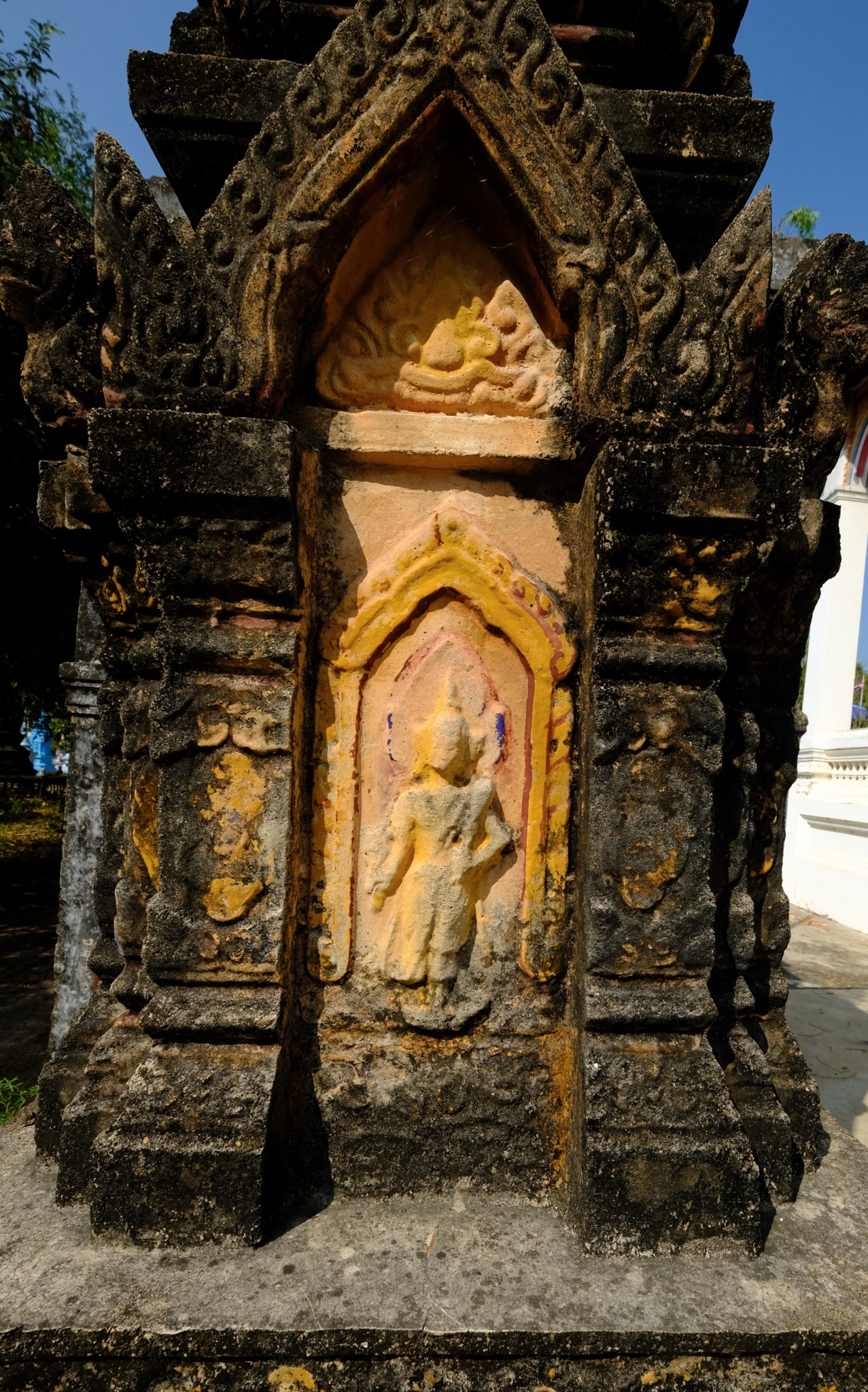 Some of the detail of these old funerary chedis is still very beautiful.
Some of the detail of these old funerary chedis is still very beautiful.
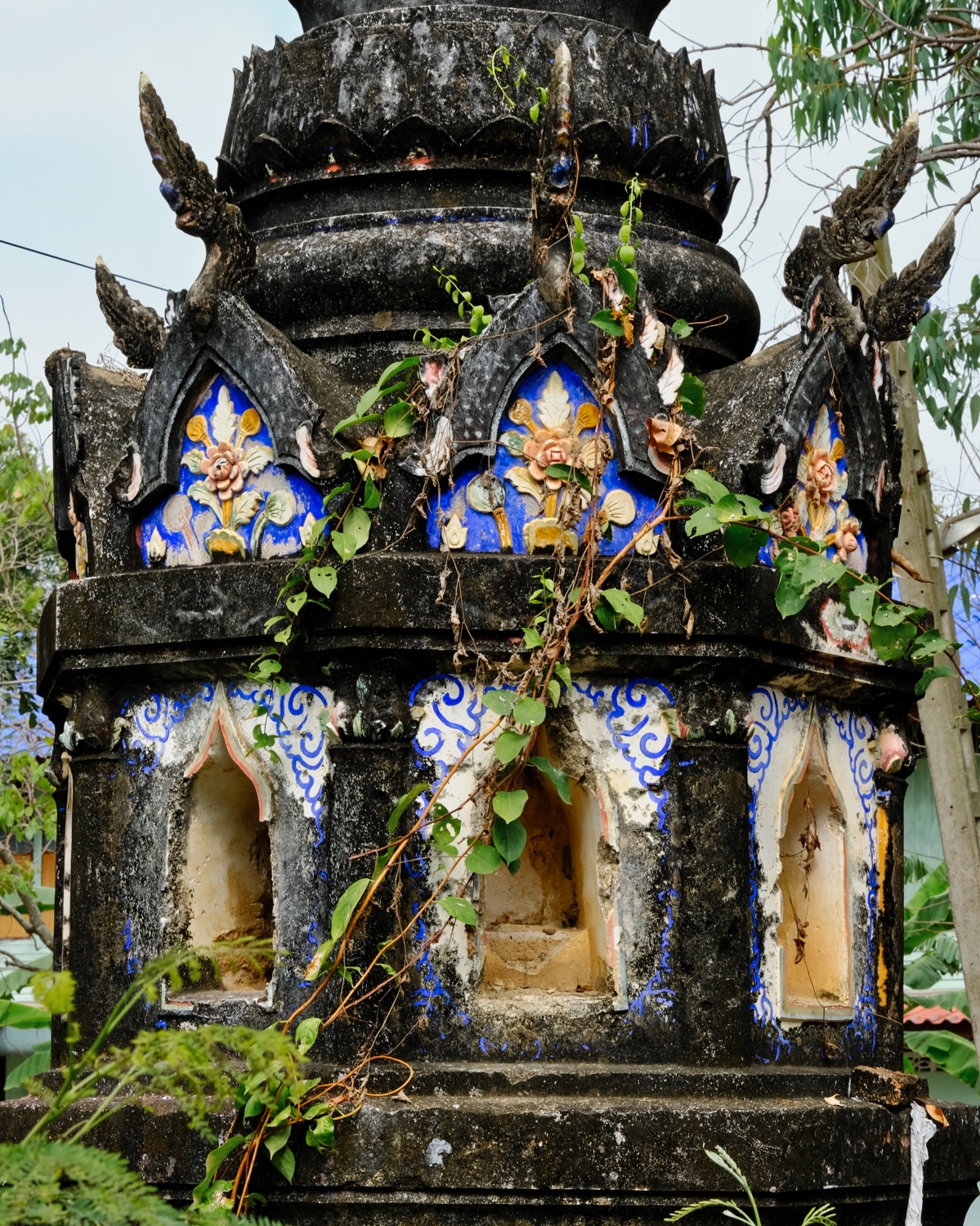 Missing Buddha images! If you ever go to Thailand, remember this photo! This is where those expensive 'rare ancient Buddha' images sold in the expensive hotel art shops come from! They are robbed from these old chedis. It is against the law to export Buddha images without the proper permission from authorities.
Missing Buddha images! If you ever go to Thailand, remember this photo! This is where those expensive 'rare ancient Buddha' images sold in the expensive hotel art shops come from! They are robbed from these old chedis. It is against the law to export Buddha images without the proper permission from authorities.
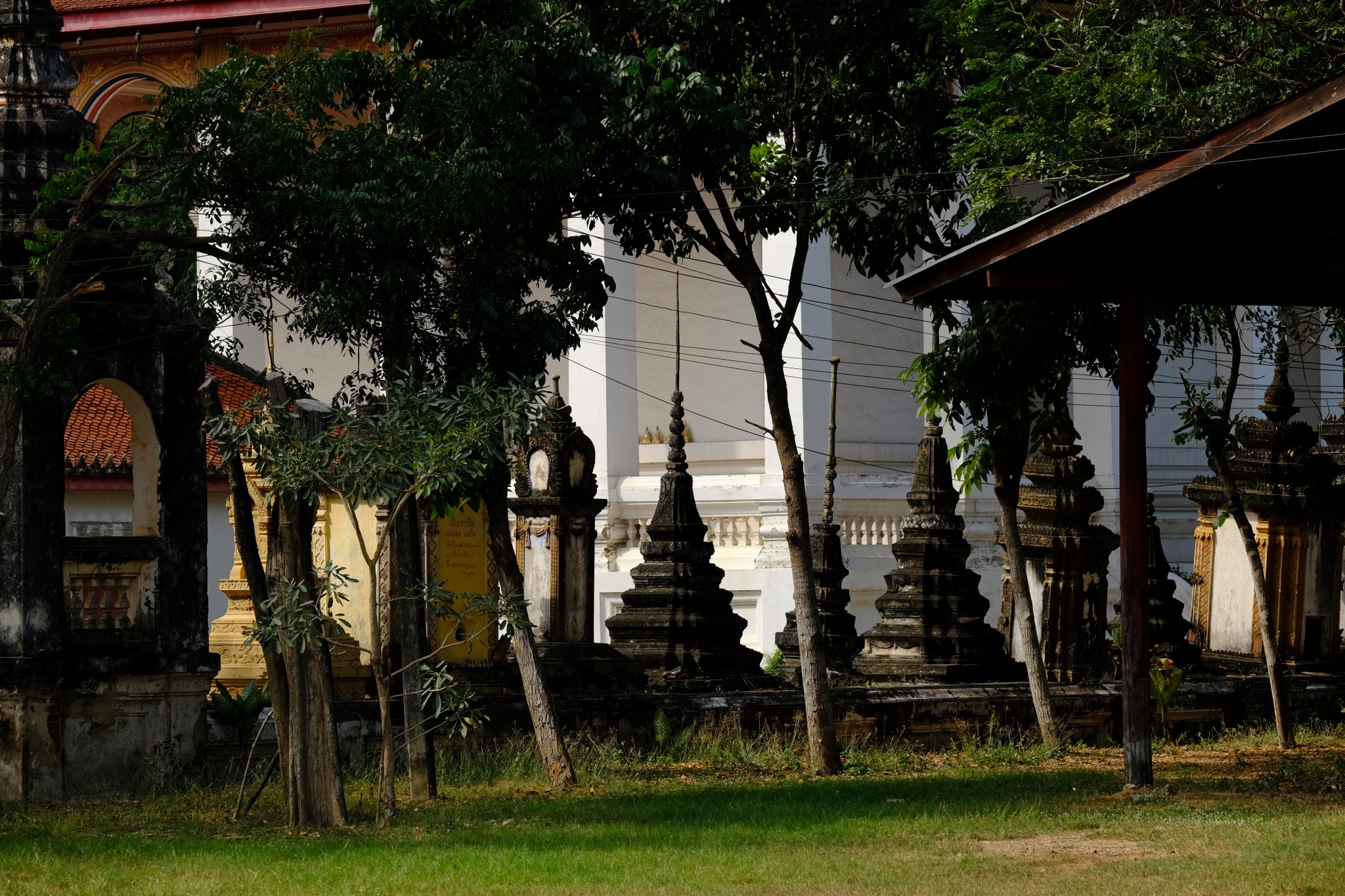 Around the temple I walked admiring the lines of chedis.
Around the temple I walked admiring the lines of chedis.
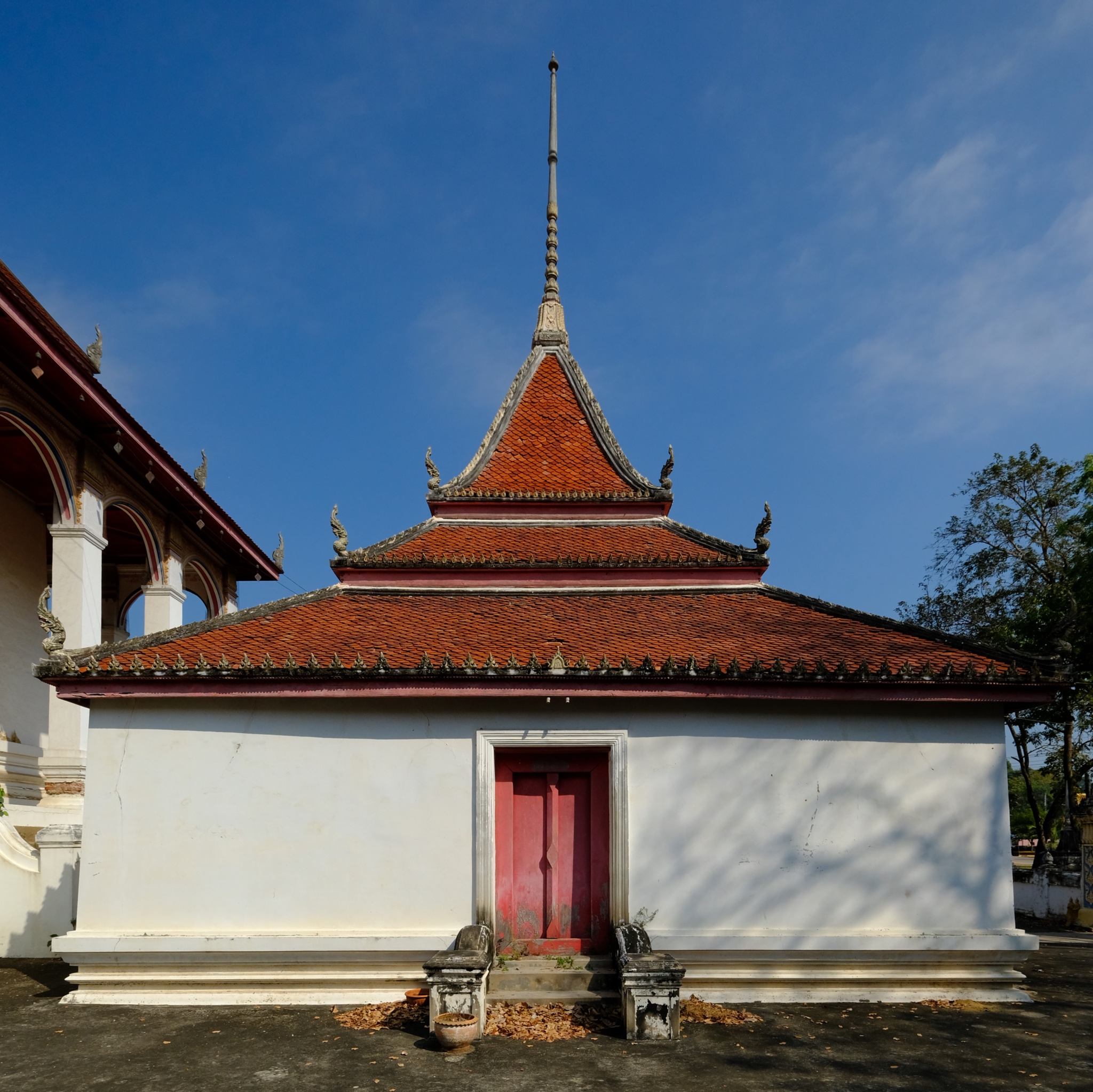 A temple within a temple. Stunning architecture.
A temple within a temple. Stunning architecture.
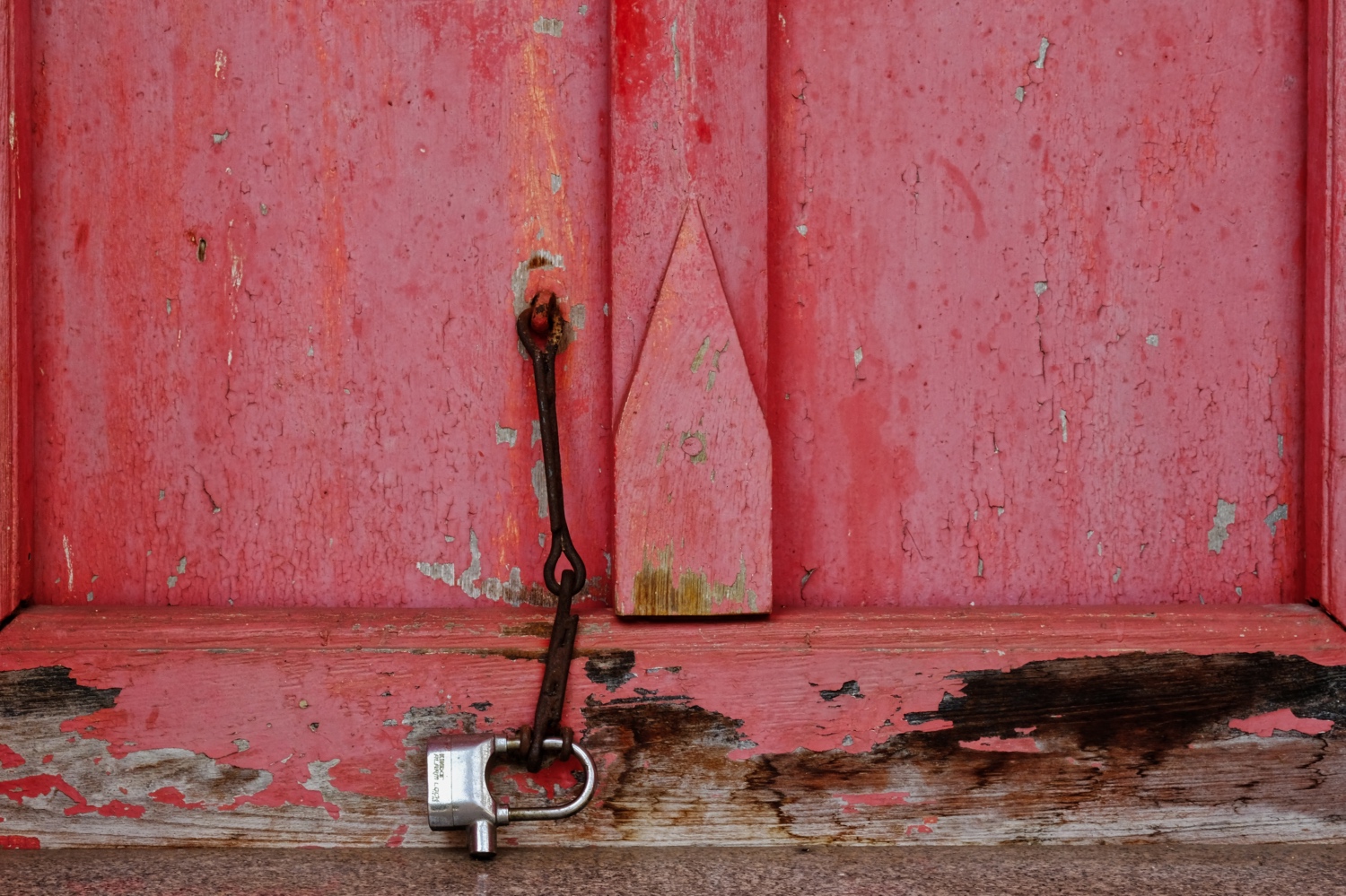 Old and decaying temple hardware . . . and a new lock.
Old and decaying temple hardware . . . and a new lock.
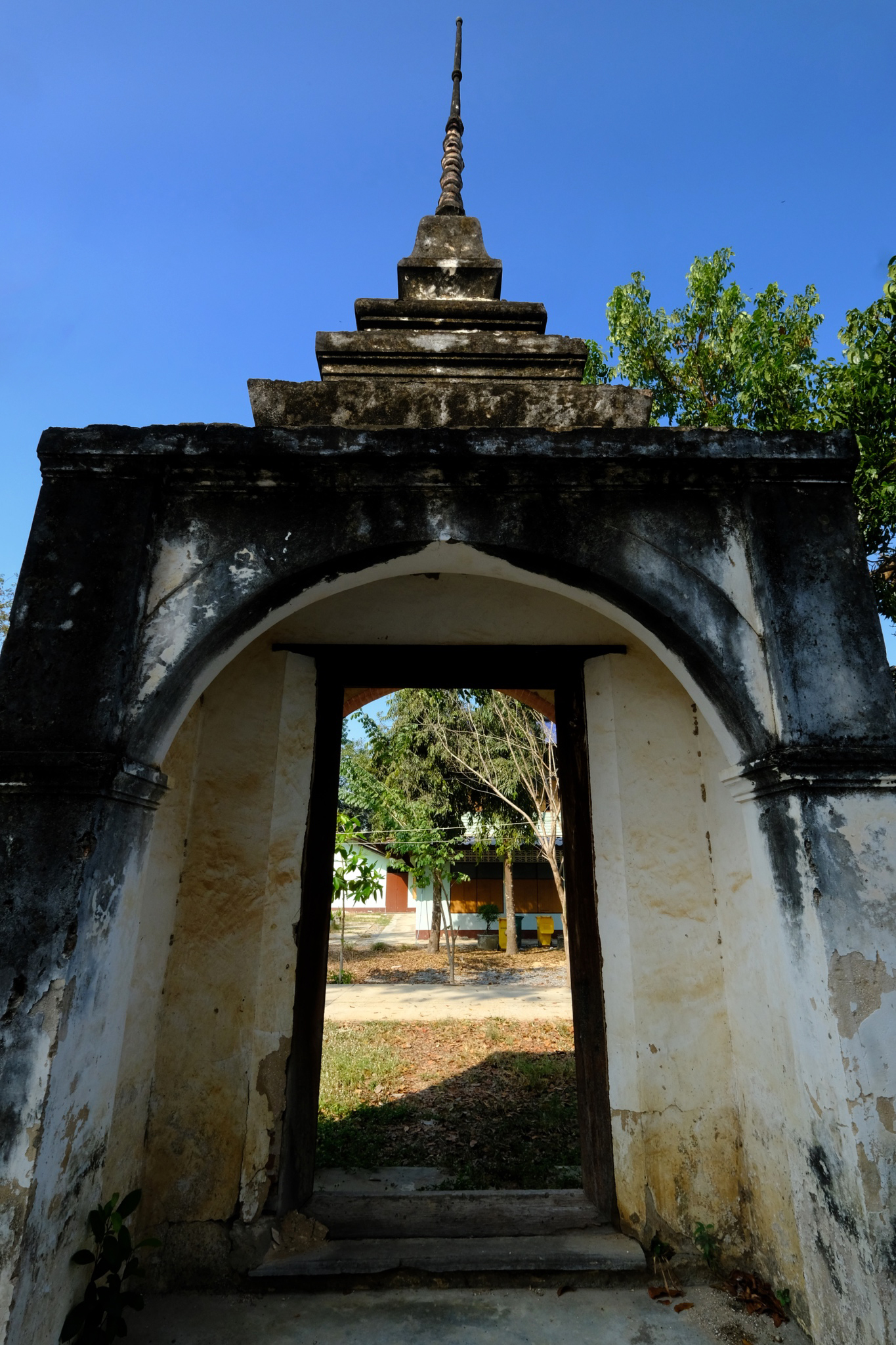 I left the inner courtyard though this gate . . . more exploring to do.
I left the inner courtyard though this gate . . . more exploring to do.
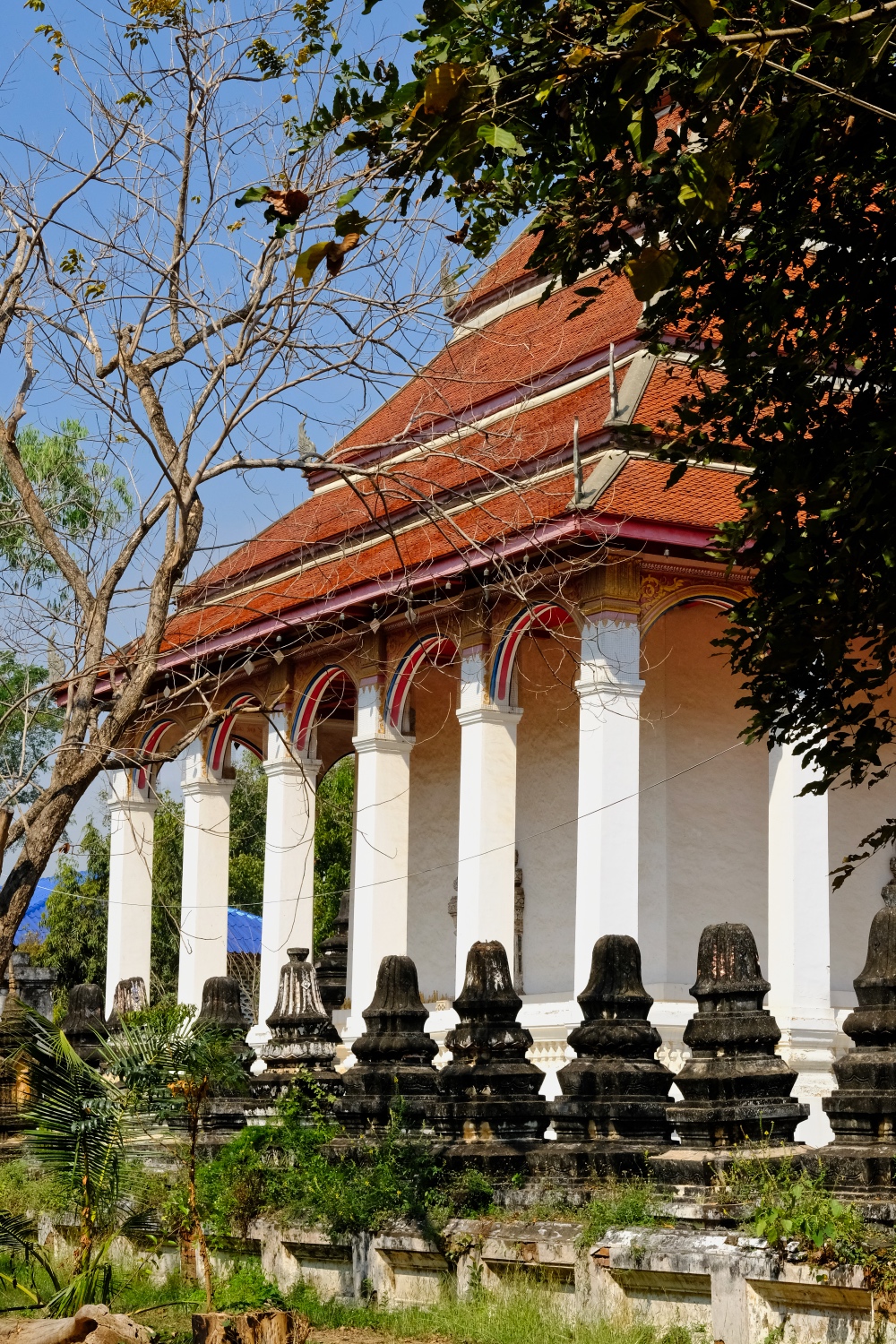 This wat building nearby drew my attention.
This wat building nearby drew my attention.
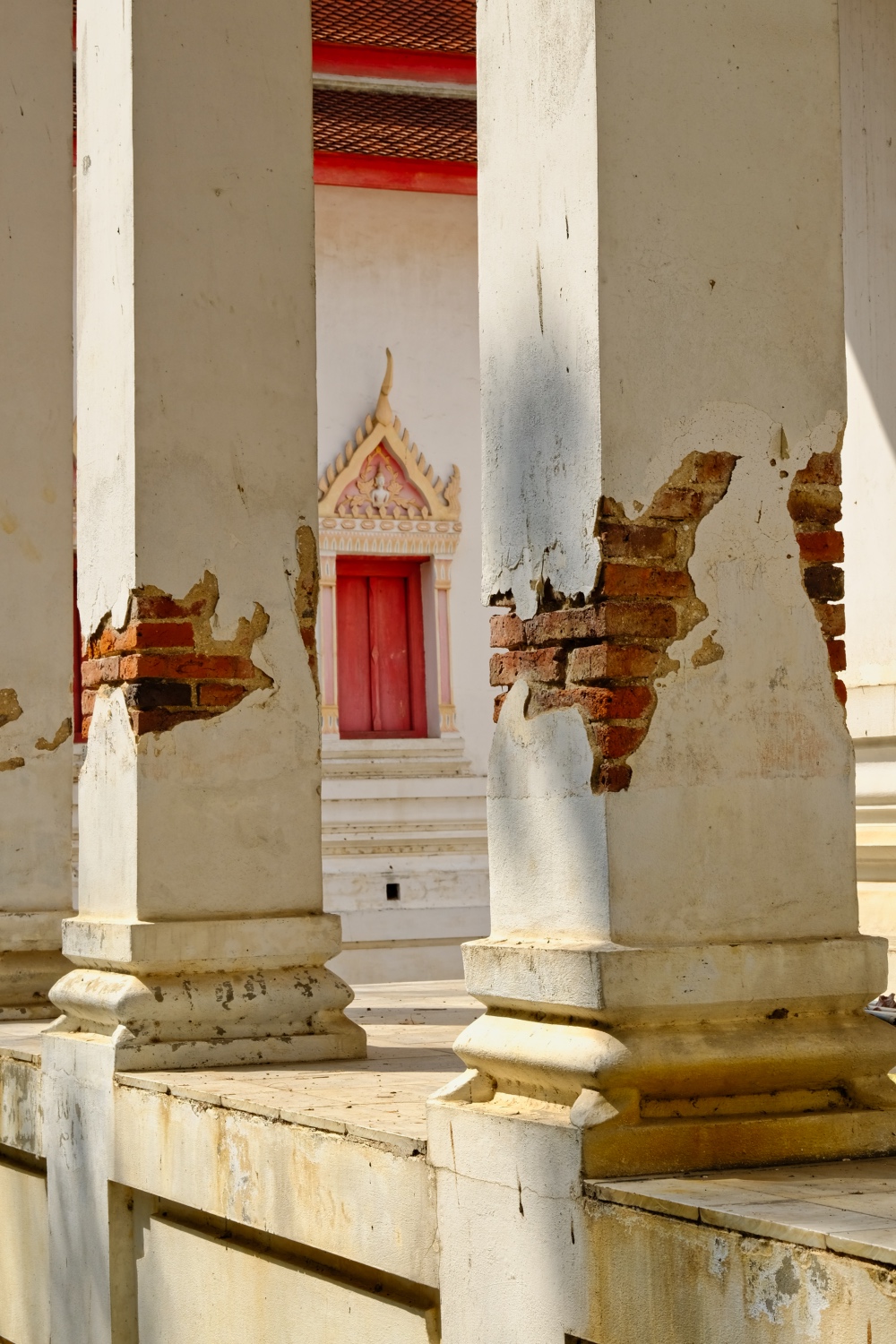 Several of the traditional white wat structures stood nearby.
Several of the traditional white wat structures stood nearby.
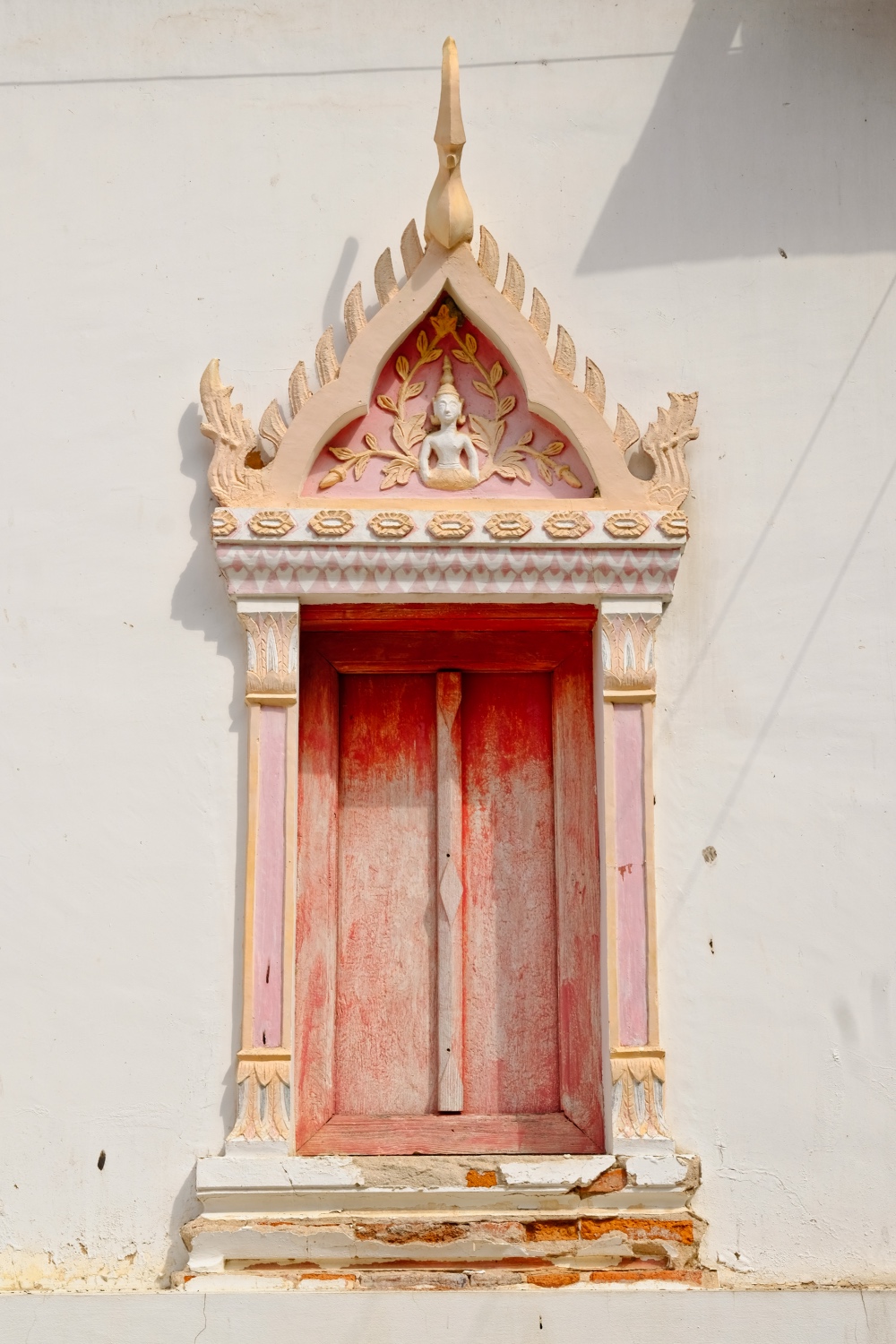 An old, sun bleached and forlorn door to the first wat building.
An old, sun bleached and forlorn door to the first wat building.
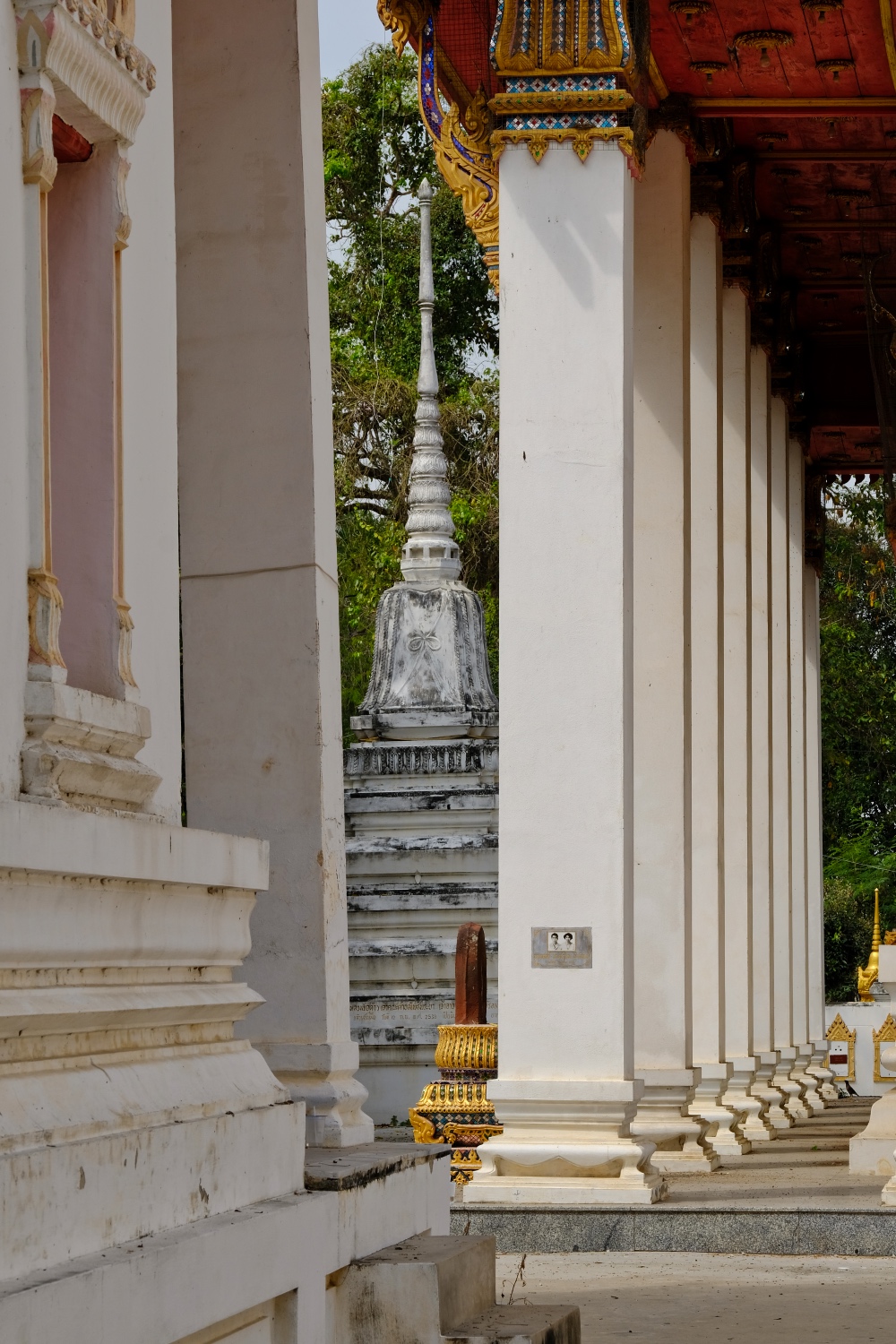 A view between the several wats. The small photos on the column (right) indicates there are the ash urns of deceased donors enshrined in the wall or column.
A view between the several wats. The small photos on the column (right) indicates there are the ash urns of deceased donors enshrined in the wall or column.
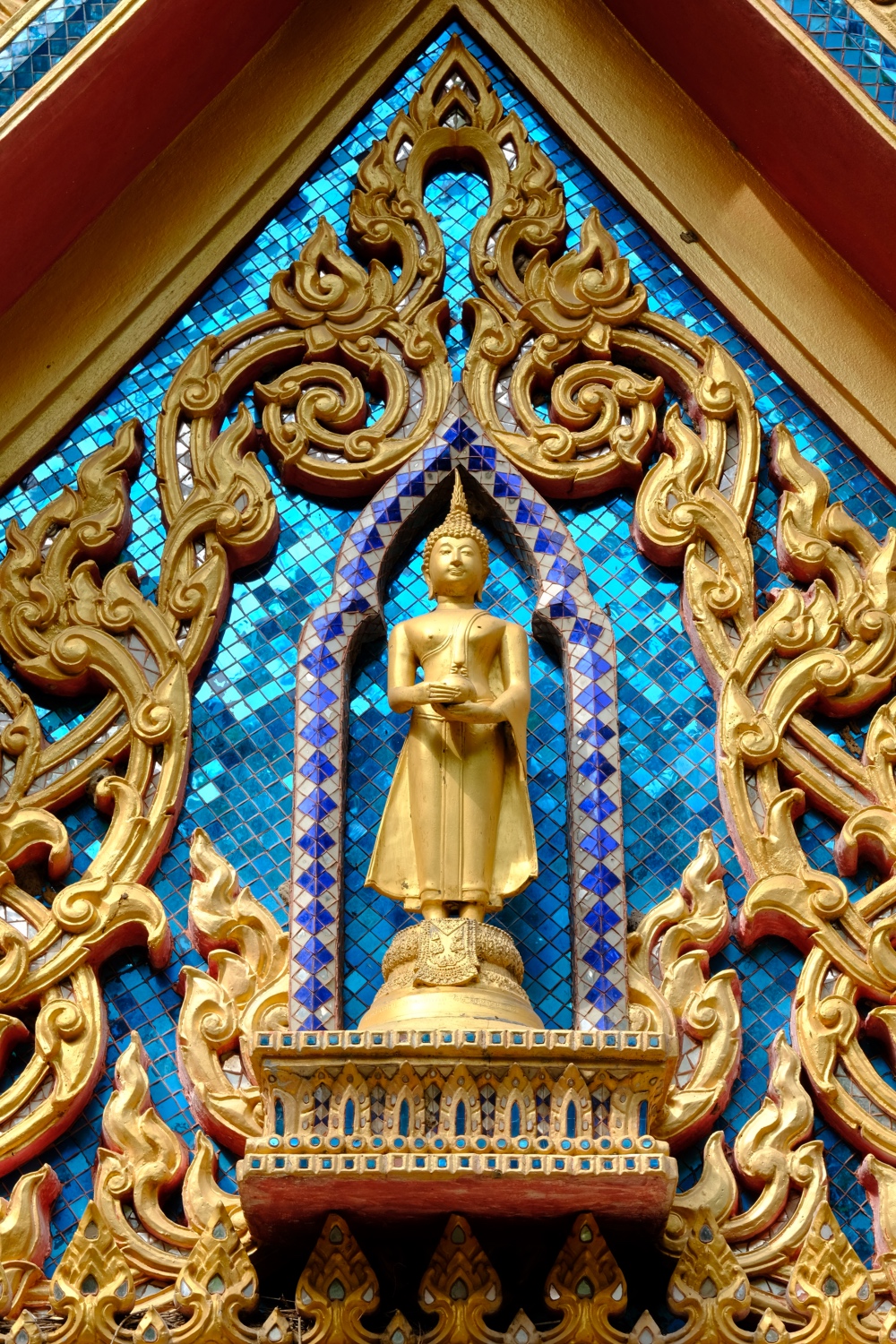 High up, under the gabled roof end, the exquisite Buddhist art looked almost new.
High up, under the gabled roof end, the exquisite Buddhist art looked almost new.
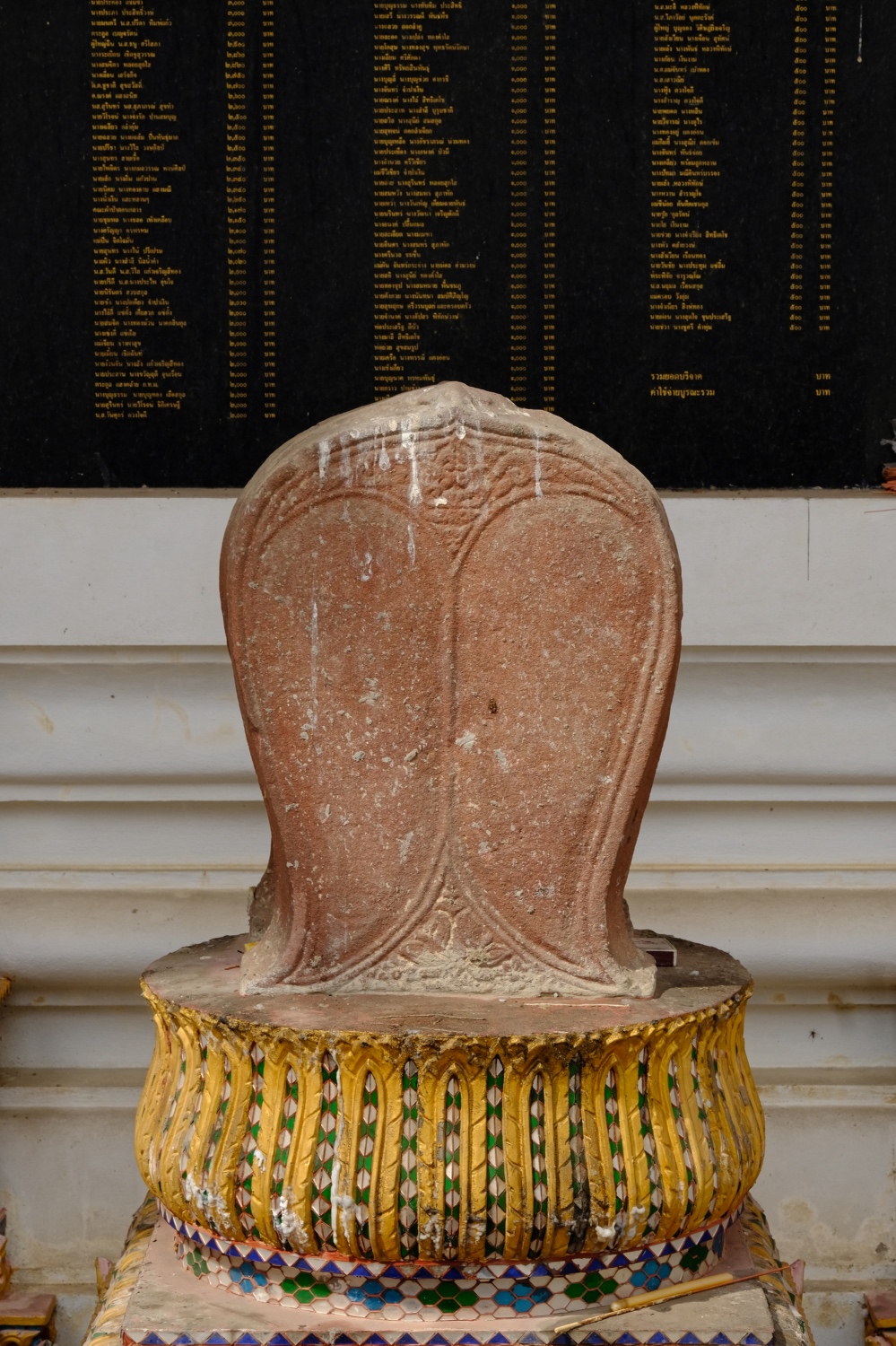 This old Buddhist tablet stood in front of a plaque listing donors to the Wat . . . in order of the amount donated. My name, and my wife's name, appears on many of these donor lists throughout Thailand.
This old Buddhist tablet stood in front of a plaque listing donors to the Wat . . . in order of the amount donated. My name, and my wife's name, appears on many of these donor lists throughout Thailand.
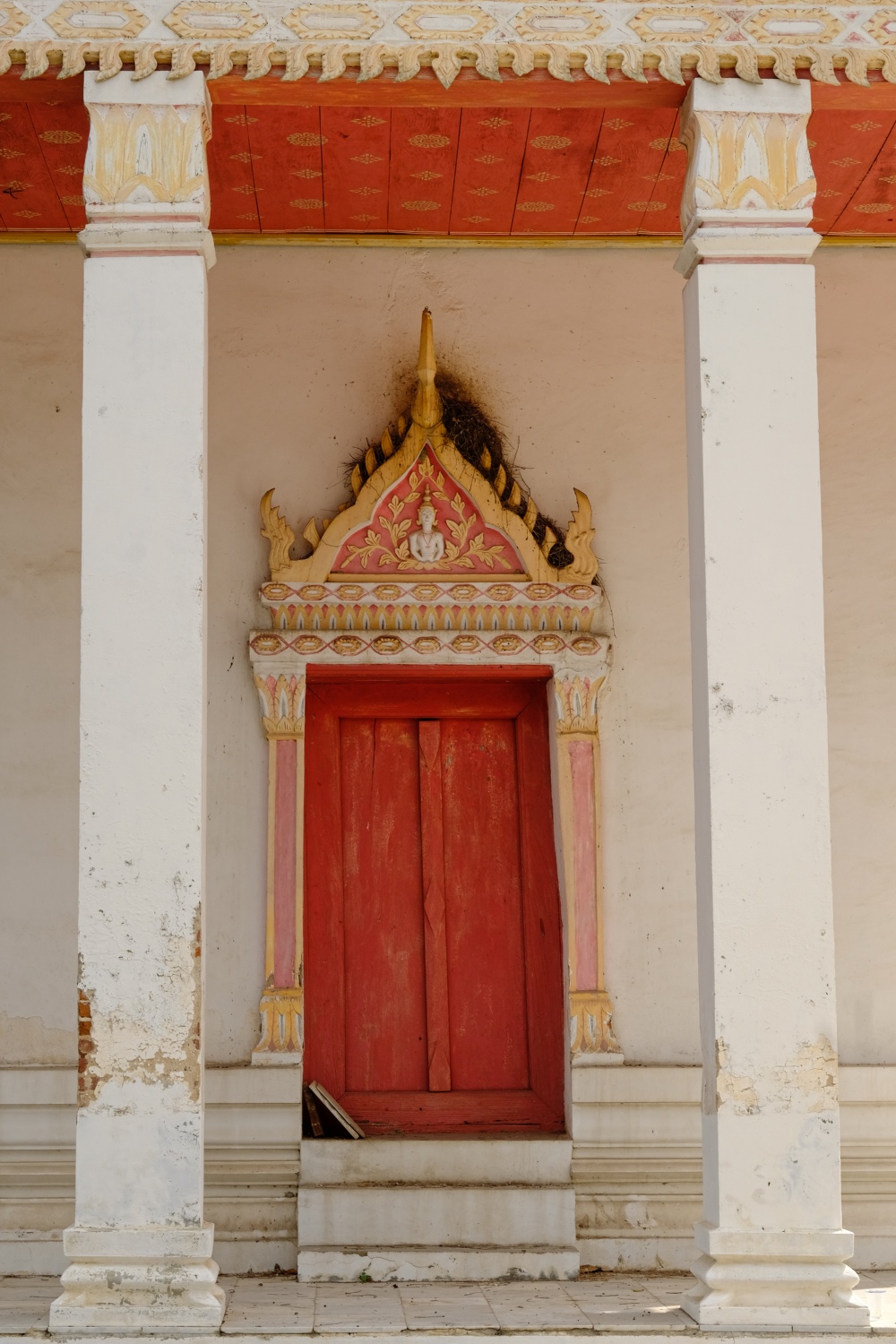 Birds had built quite a nest above one of the doors.
Birds had built quite a nest above one of the doors.
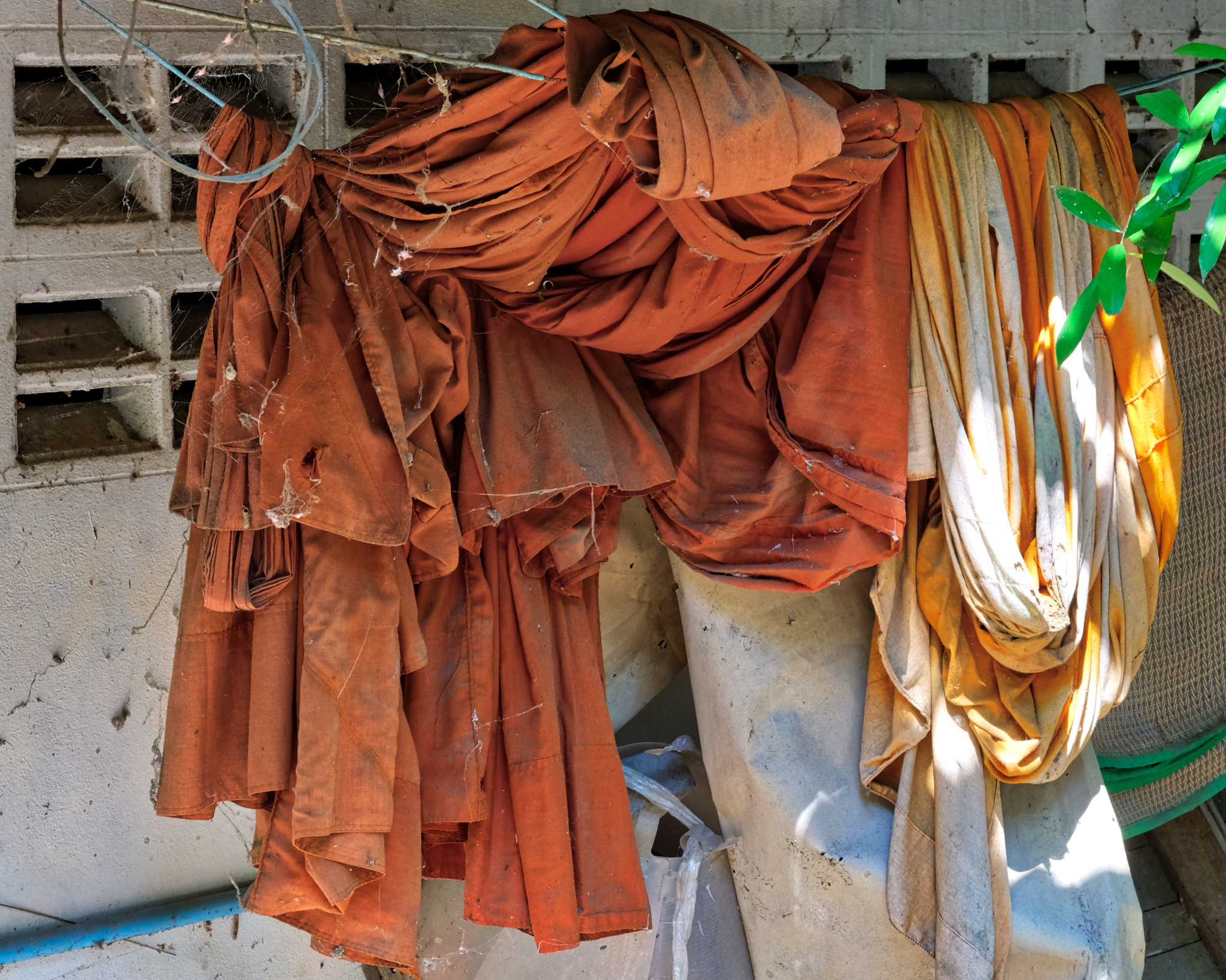 John and I wandered further back into the wat along a wooded path and discovered abandoned monks' quarters. It looks like whoever lived there in the past left all of a sudden.
John and I wandered further back into the wat along a wooded path and discovered abandoned monks' quarters. It looks like whoever lived there in the past left all of a sudden.
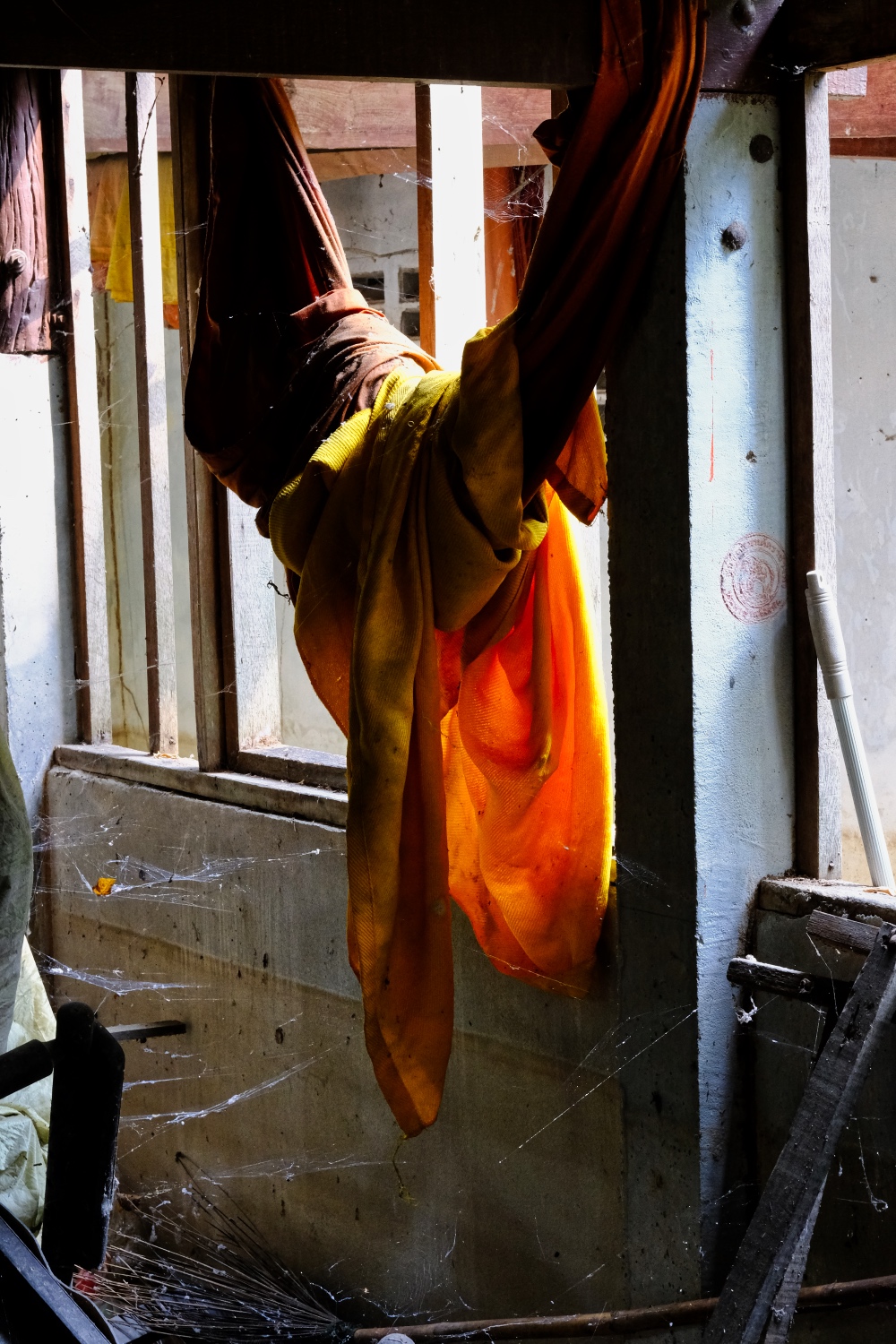 We sensed a mystery: Why had these monks left in such a hurry that they did not even have time to take their robes with them? Perhaps they had done something bad . . . or had been suddenly transferred to another wat . . . or . . .?
We sensed a mystery: Why had these monks left in such a hurry that they did not even have time to take their robes with them? Perhaps they had done something bad . . . or had been suddenly transferred to another wat . . . or . . .?
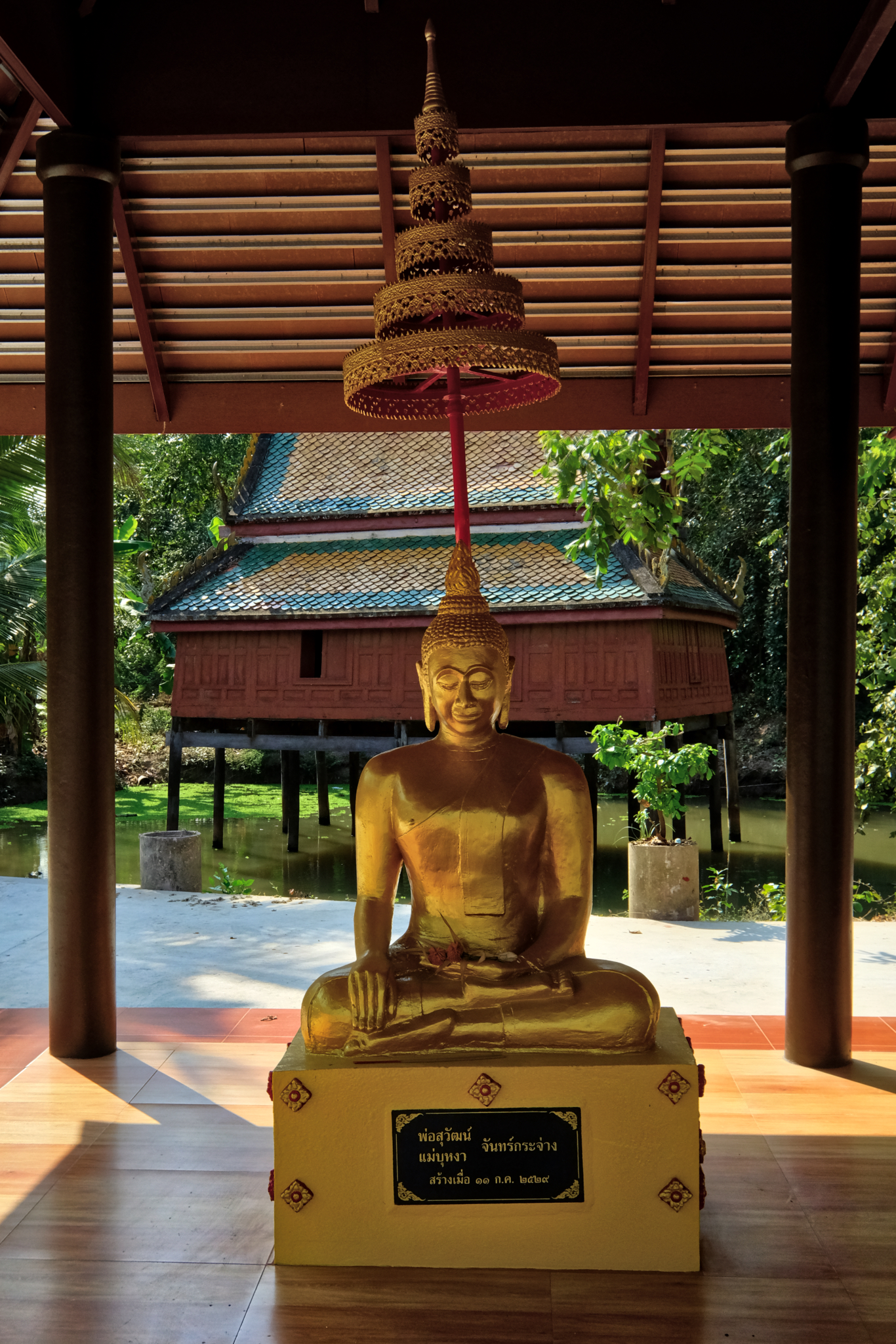 Along a path we came upon two powerful Buddha images in a pavilion next to a pond.
Along a path we came upon two powerful Buddha images in a pavilion next to a pond.
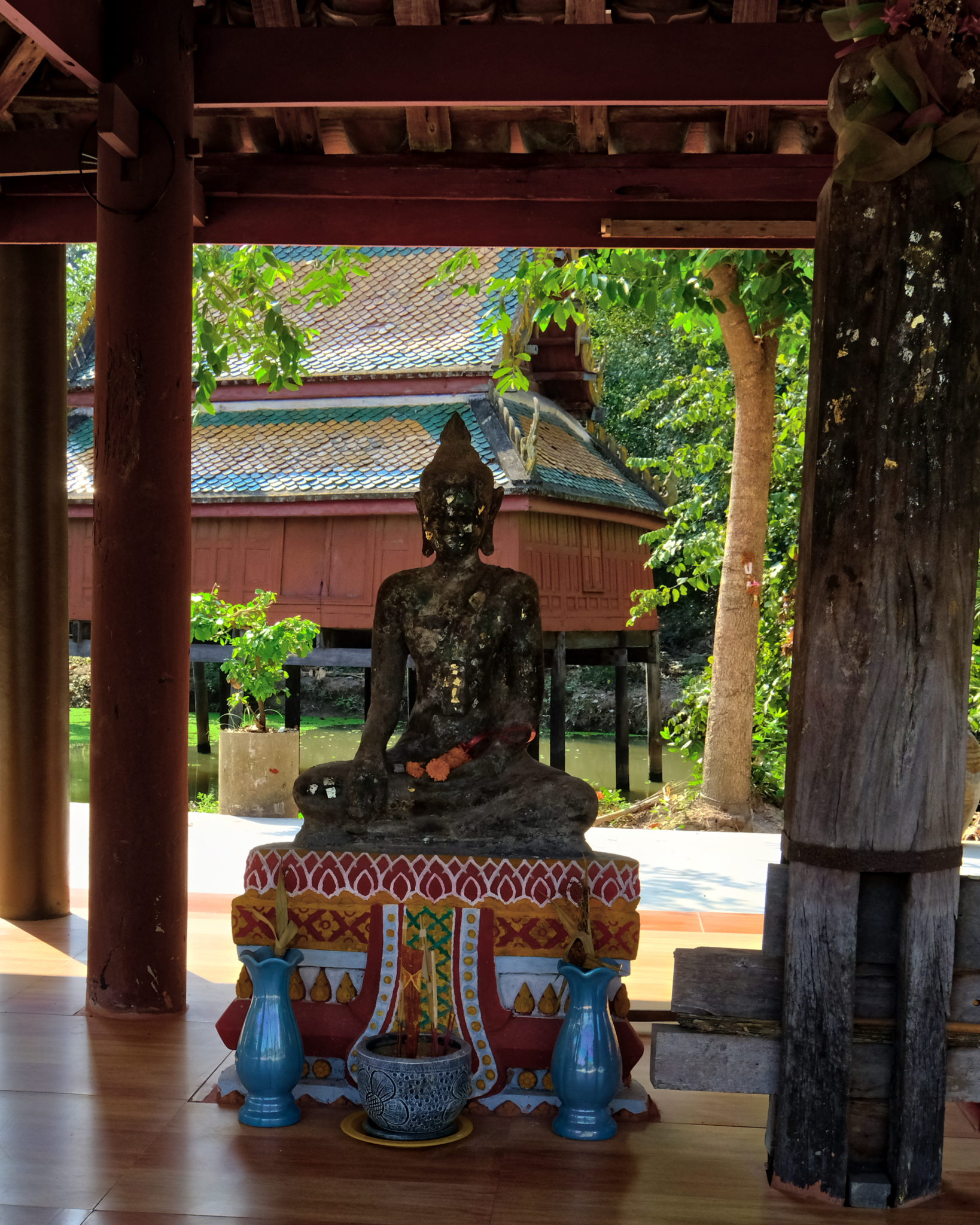 Each pavilion Buddha was amazing.
Each pavilion Buddha was amazing.
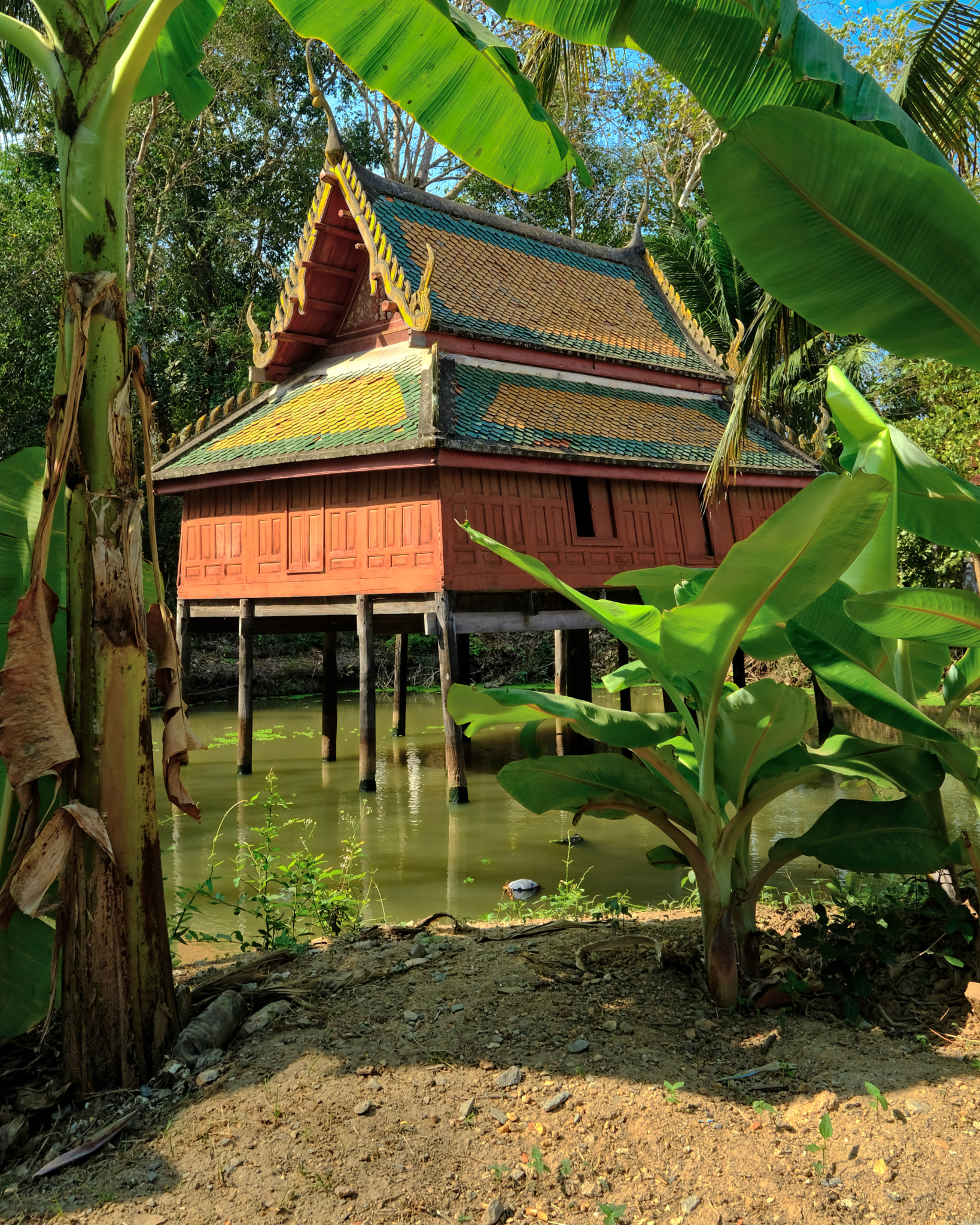 Behind the Buddha pavilion was this Thai-style cottage set in the middle of a pond.
Behind the Buddha pavilion was this Thai-style cottage set in the middle of a pond.
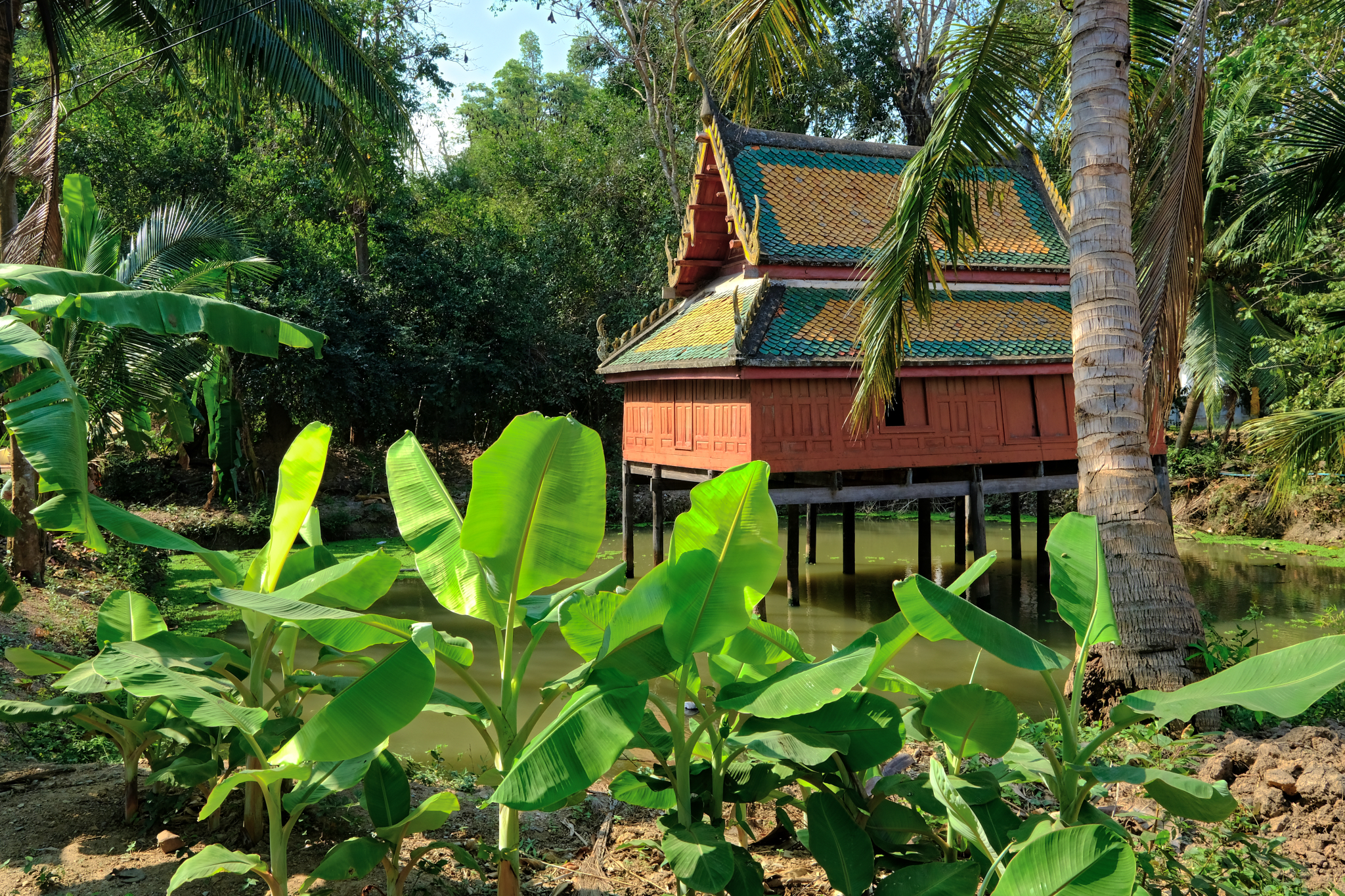 This building was a bit of a mystery too: there was no bridge out to the structure, and there was no boat anywhere to be seen.
This building was a bit of a mystery too: there was no bridge out to the structure, and there was no boat anywhere to be seen.
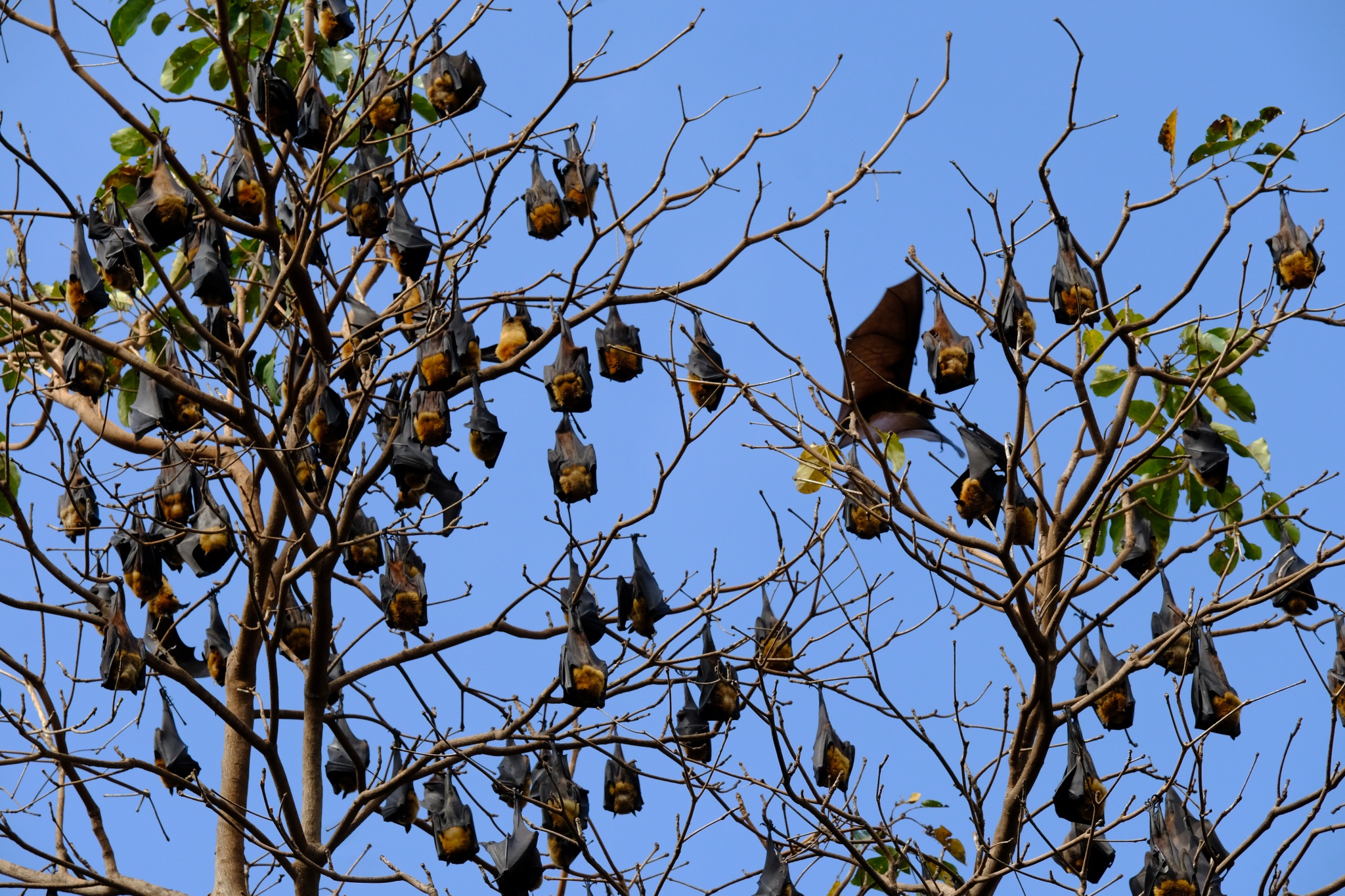 A small forest of trees full of chattering fruit bats surrounded the cottage in the pond.
A small forest of trees full of chattering fruit bats surrounded the cottage in the pond.
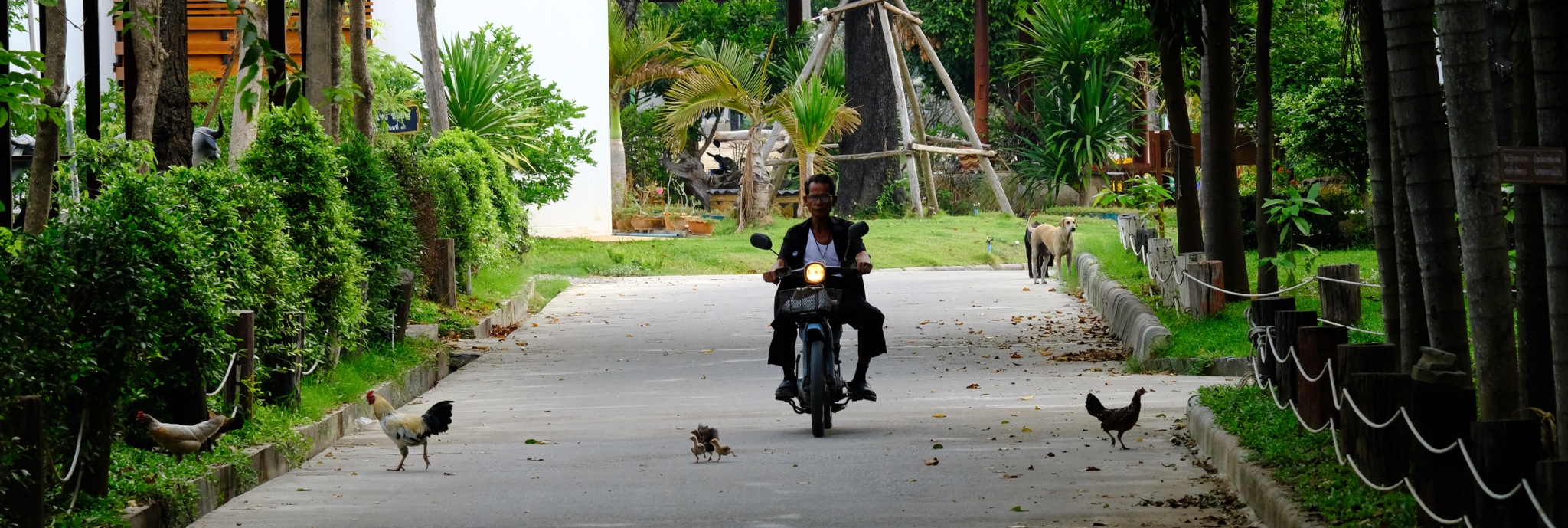 It was not even noon and I felt my day had already been successful. We walked out of the wat over the bridge and along this road.
It was not even noon and I felt my day had already been successful. We walked out of the wat over the bridge and along this road.
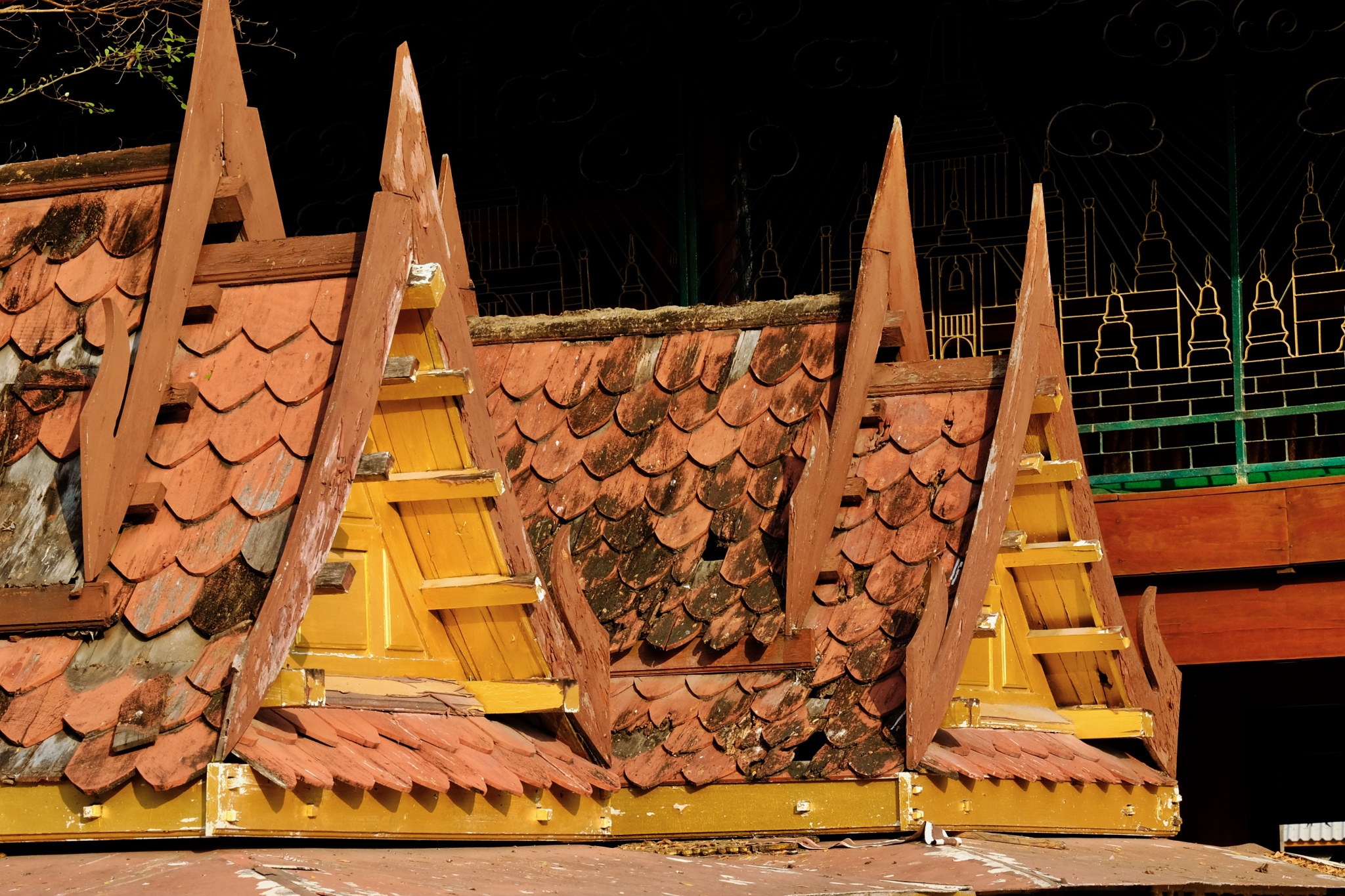 Out past the old school house to my truck and back on the road to more rambling adventure in Suphanburi Province.
Out past the old school house to my truck and back on the road to more rambling adventure in Suphanburi Province.
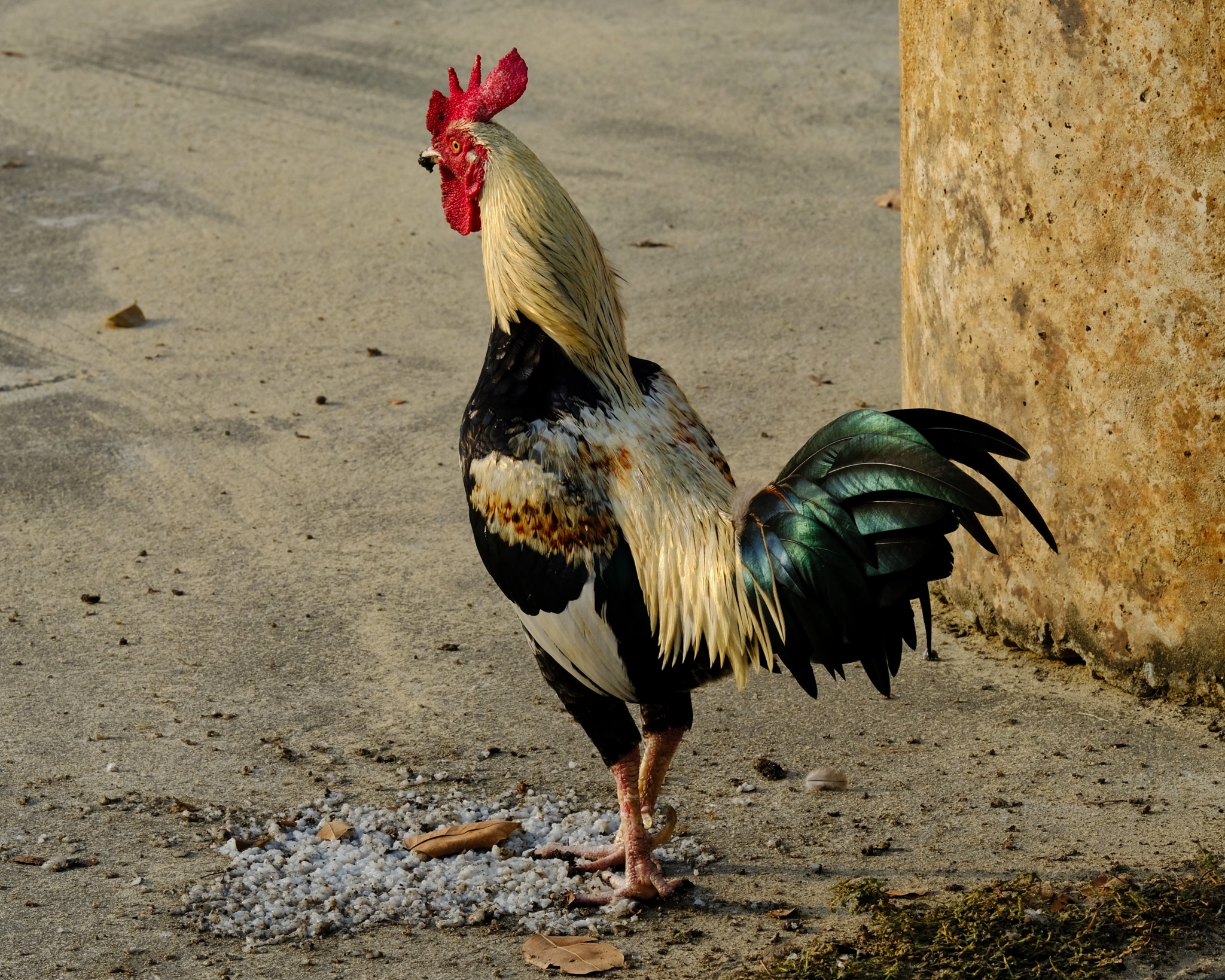 Oh, I almost forgot . . . there was a rooster at the wat and I took the best rooster photo of my entire life!
Oh, I almost forgot . . . there was a rooster at the wat and I took the best rooster photo of my entire life!
Out and About in Pakkret, My Hometown
 Sunday, February 11, 2018 at 11:48AM
Sunday, February 11, 2018 at 11:48AM 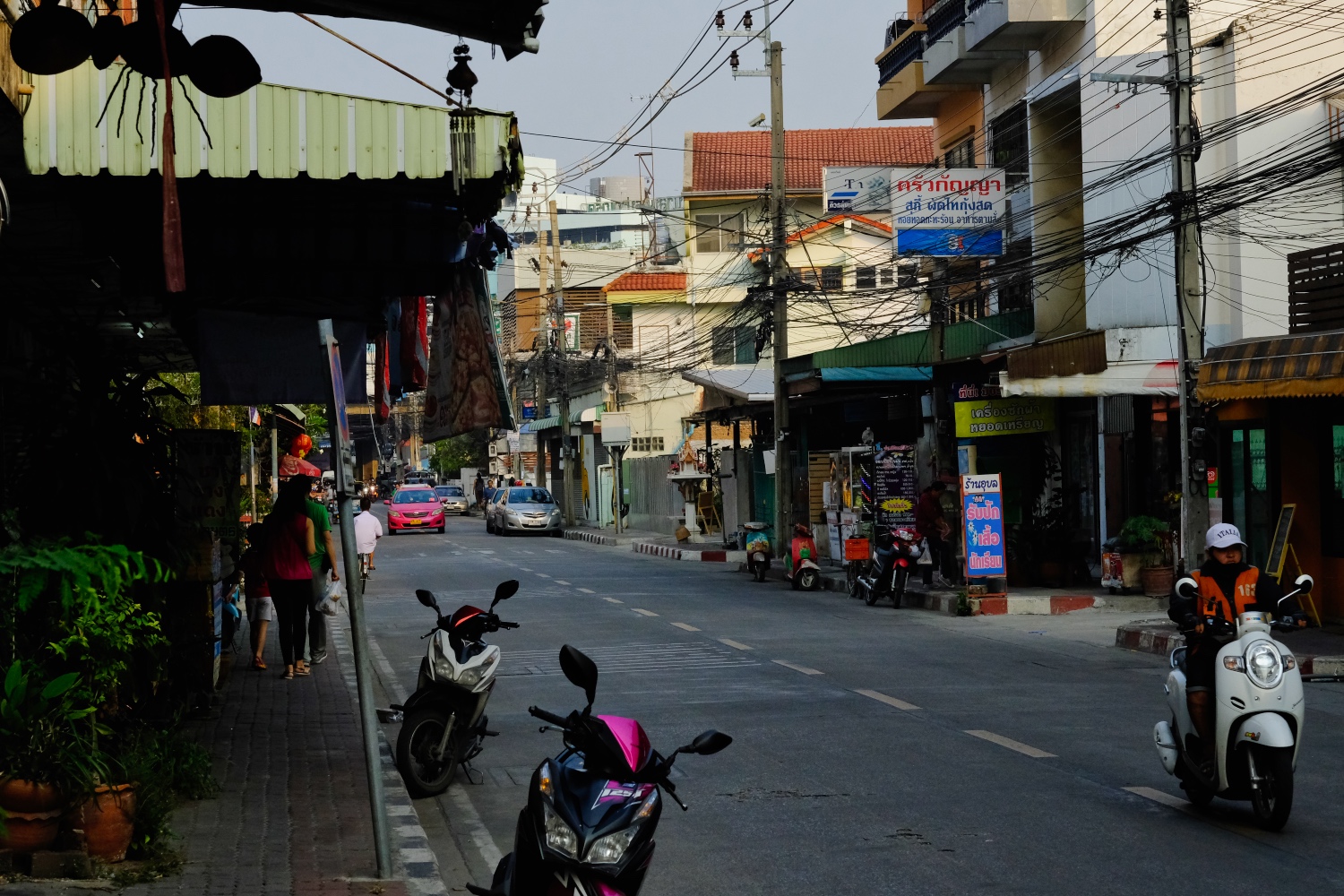 Pakkret* (variously Pak Kred or Pak Kret) is a small municipality (population 180,000) in the Thai province of Nonthaburi, 10 miles up the Chao Phayra River from the heart of Bangkok. [* The name Pakkret derives from the Thai, Ban Pak Tret Noi (บ้านปากเตร็ดน้อย), meaning village on the mouth of the lesser bypass.]
Pakkret* (variously Pak Kred or Pak Kret) is a small municipality (population 180,000) in the Thai province of Nonthaburi, 10 miles up the Chao Phayra River from the heart of Bangkok. [* The name Pakkret derives from the Thai, Ban Pak Tret Noi (บ้านปากเตร็ดน้อย), meaning village on the mouth of the lesser bypass.]
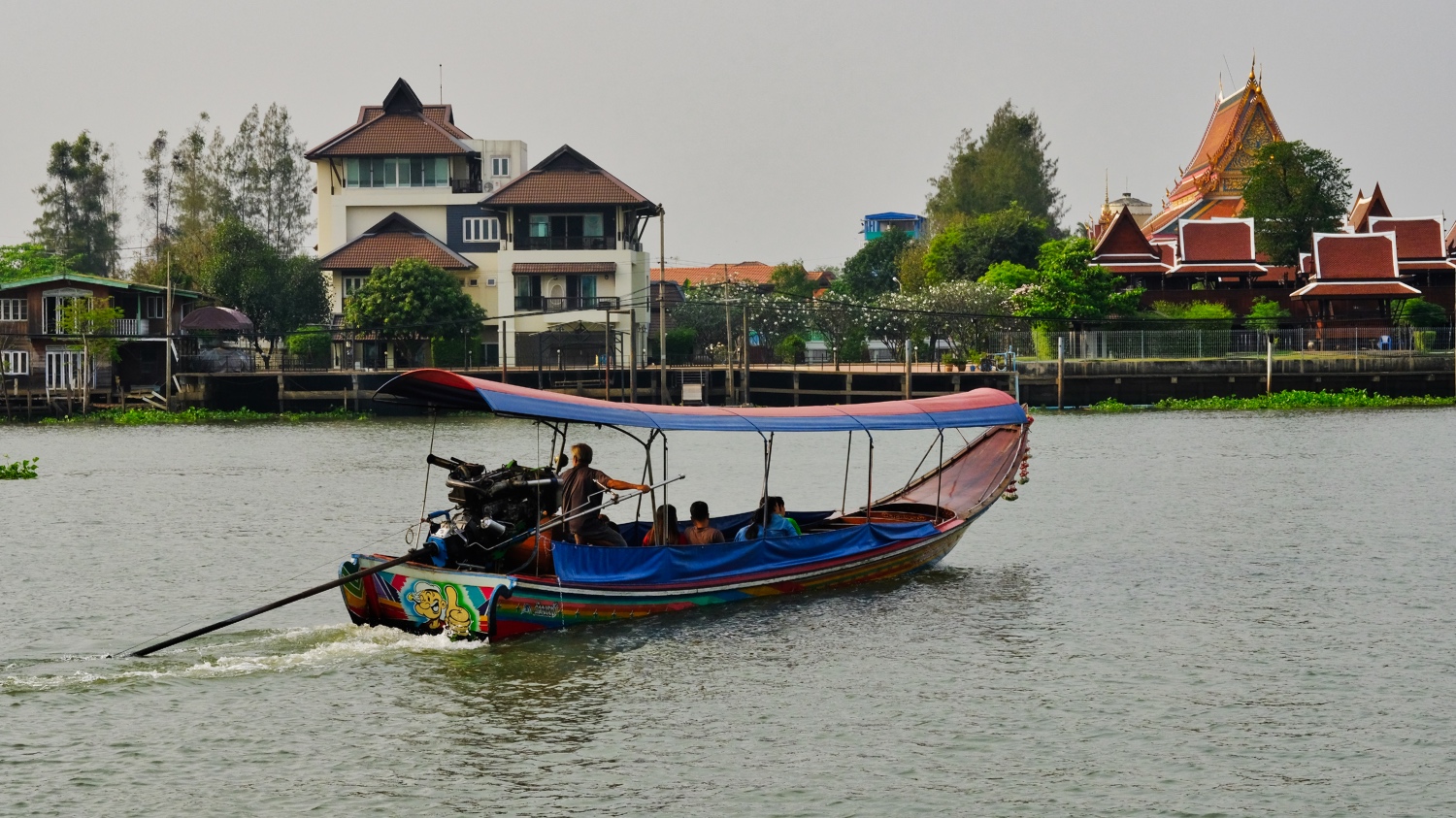 Pakkret sits on the east shore of the busy river. Longtail boats and ferries move people across and around the river banks.
Pakkret sits on the east shore of the busy river. Longtail boats and ferries move people across and around the river banks.
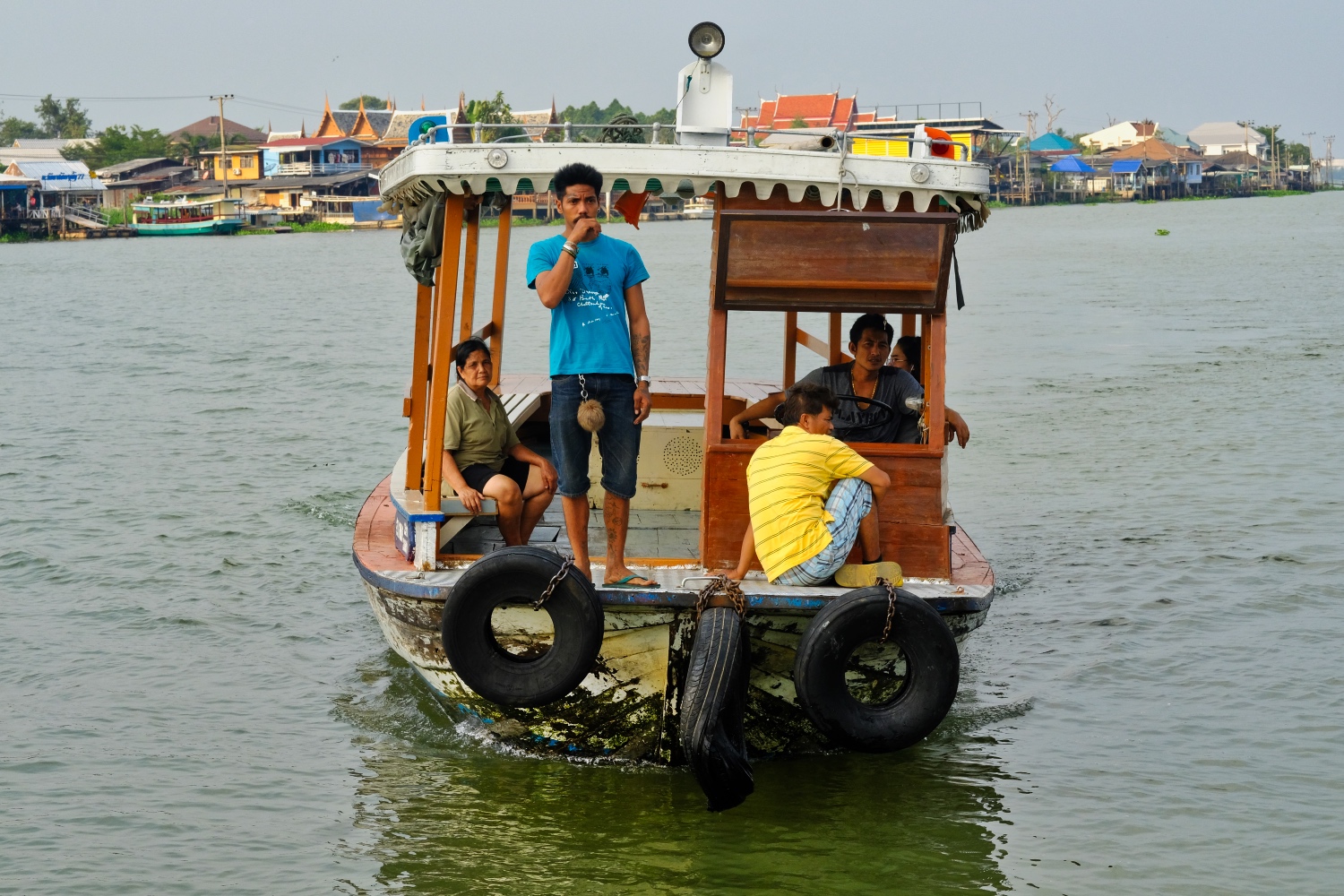 Small government ferries take shoppers headed to the big Pakkret Market . . . for 3 baht (US$0.09).
Small government ferries take shoppers headed to the big Pakkret Market . . . for 3 baht (US$0.09).
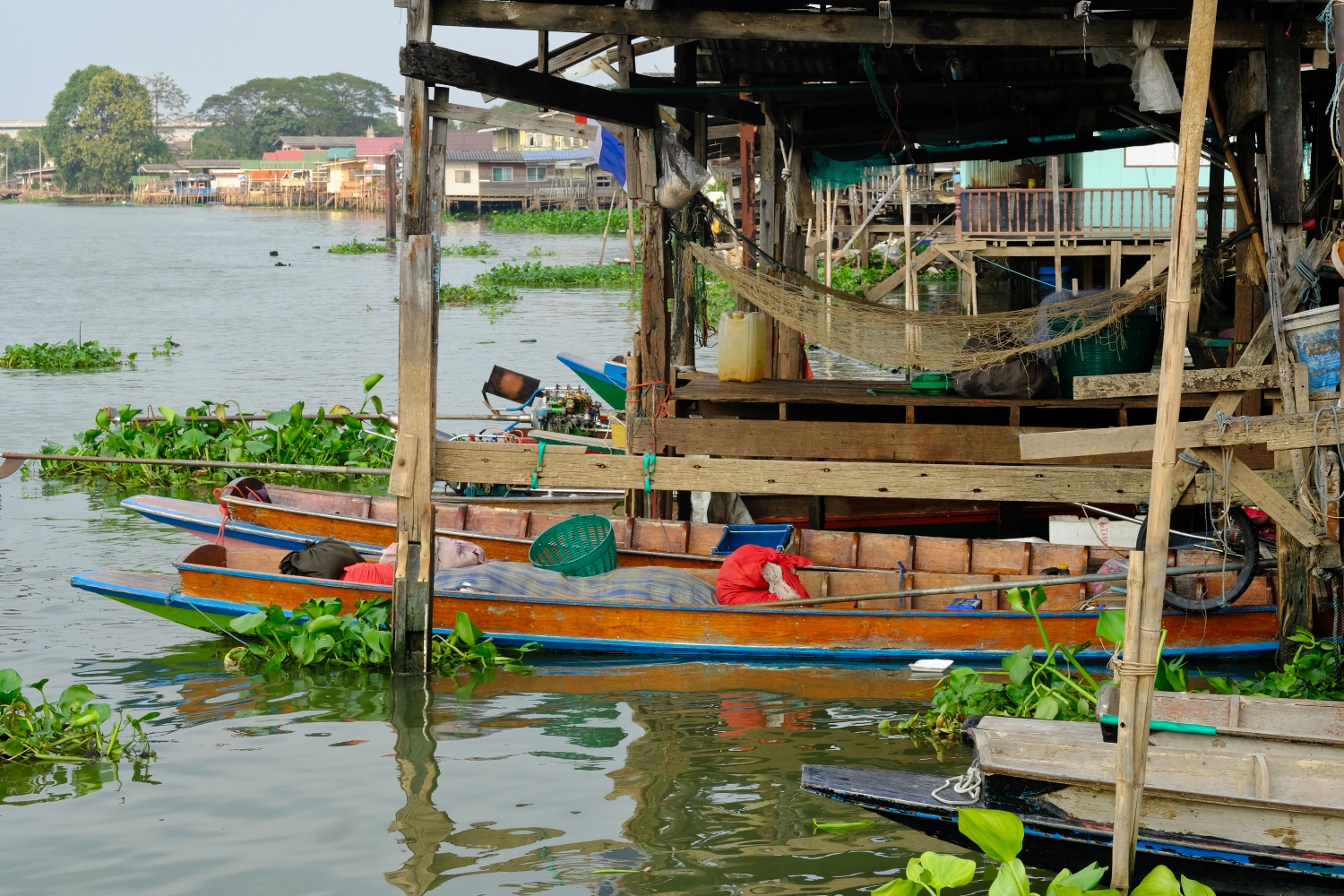 Many wooden houses on wooden pilings line the river at Pakkret. Many of these houses sit below the river flood level and the residents vacate their home for 2-3 months of the year.
Many wooden houses on wooden pilings line the river at Pakkret. Many of these houses sit below the river flood level and the residents vacate their home for 2-3 months of the year.
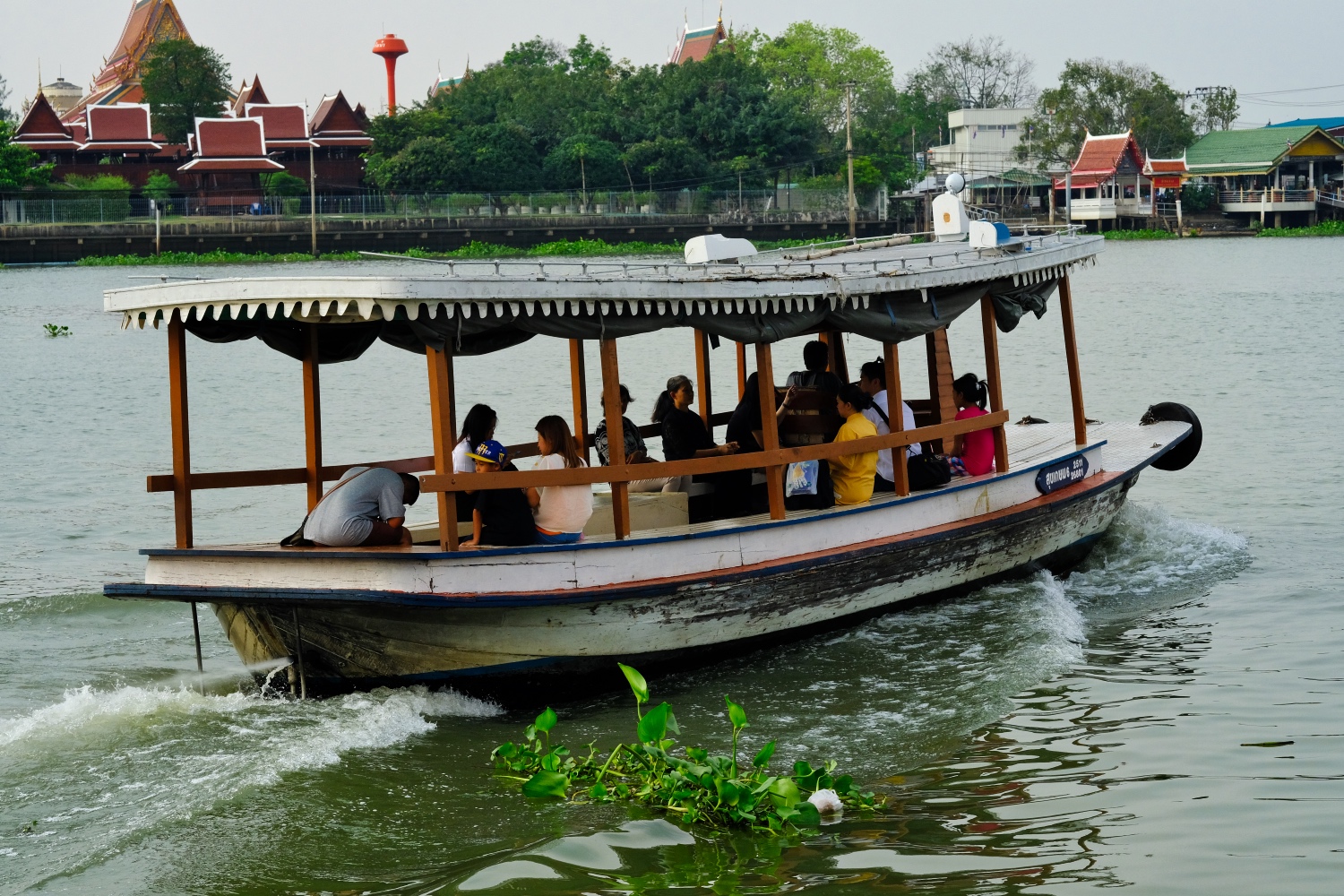 Shoppers going back across the river.
Shoppers going back across the river.
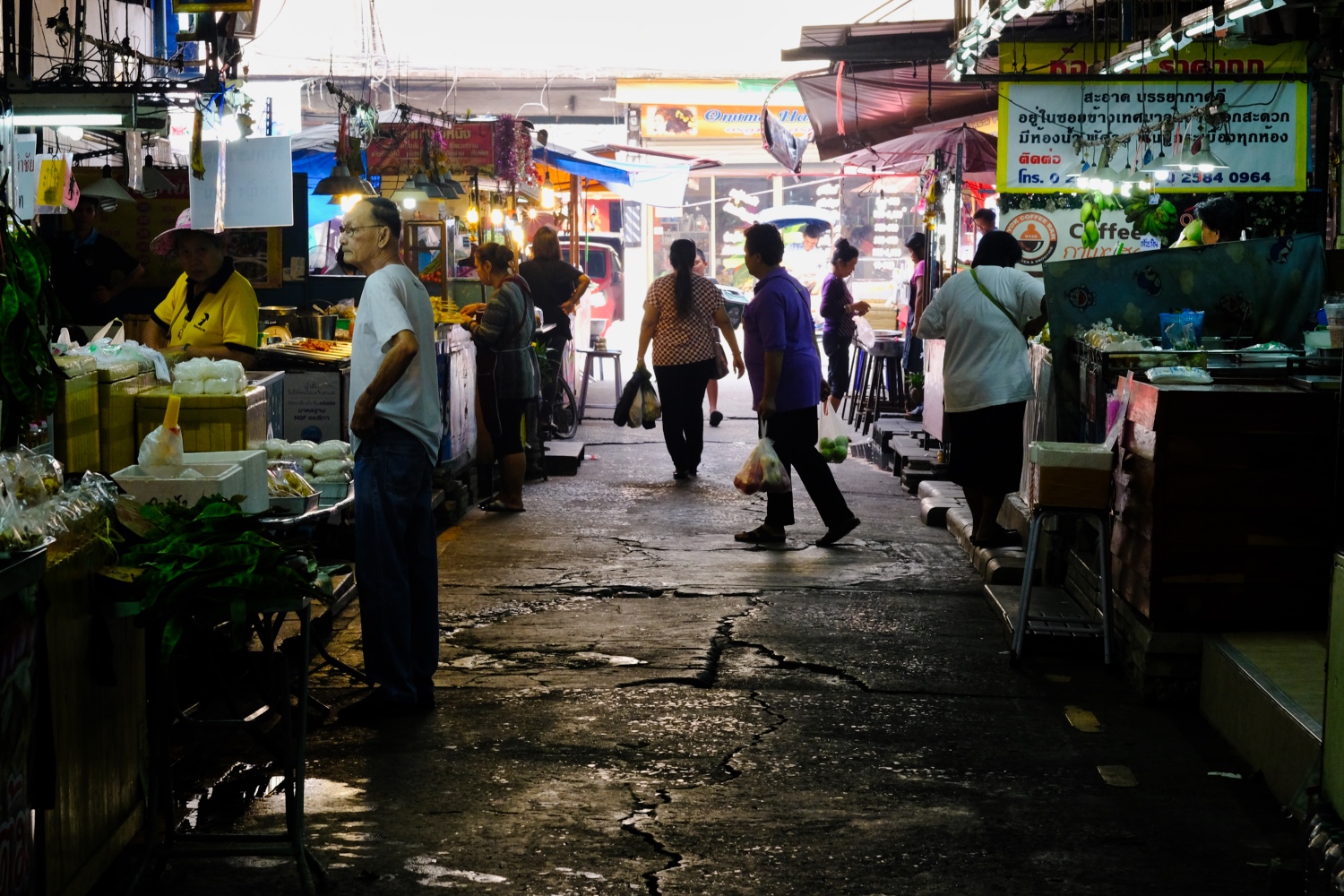 When I think of Pakkret I think of the river . . . and the two grand markets.
When I think of Pakkret I think of the river . . . and the two grand markets.
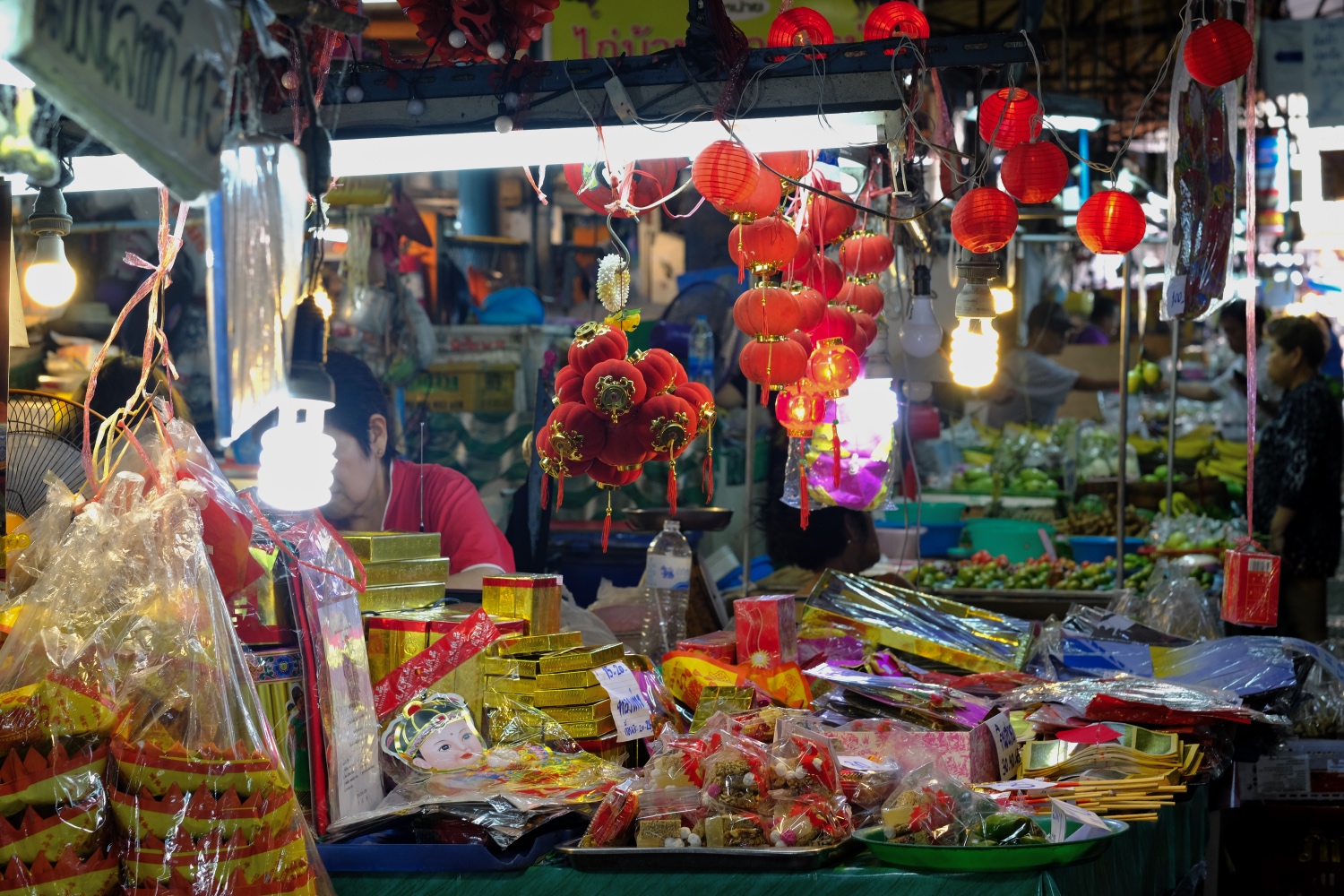 With Chinese New Year just a week away, the Pakkret market has taken on a festive feel.
With Chinese New Year just a week away, the Pakkret market has taken on a festive feel.
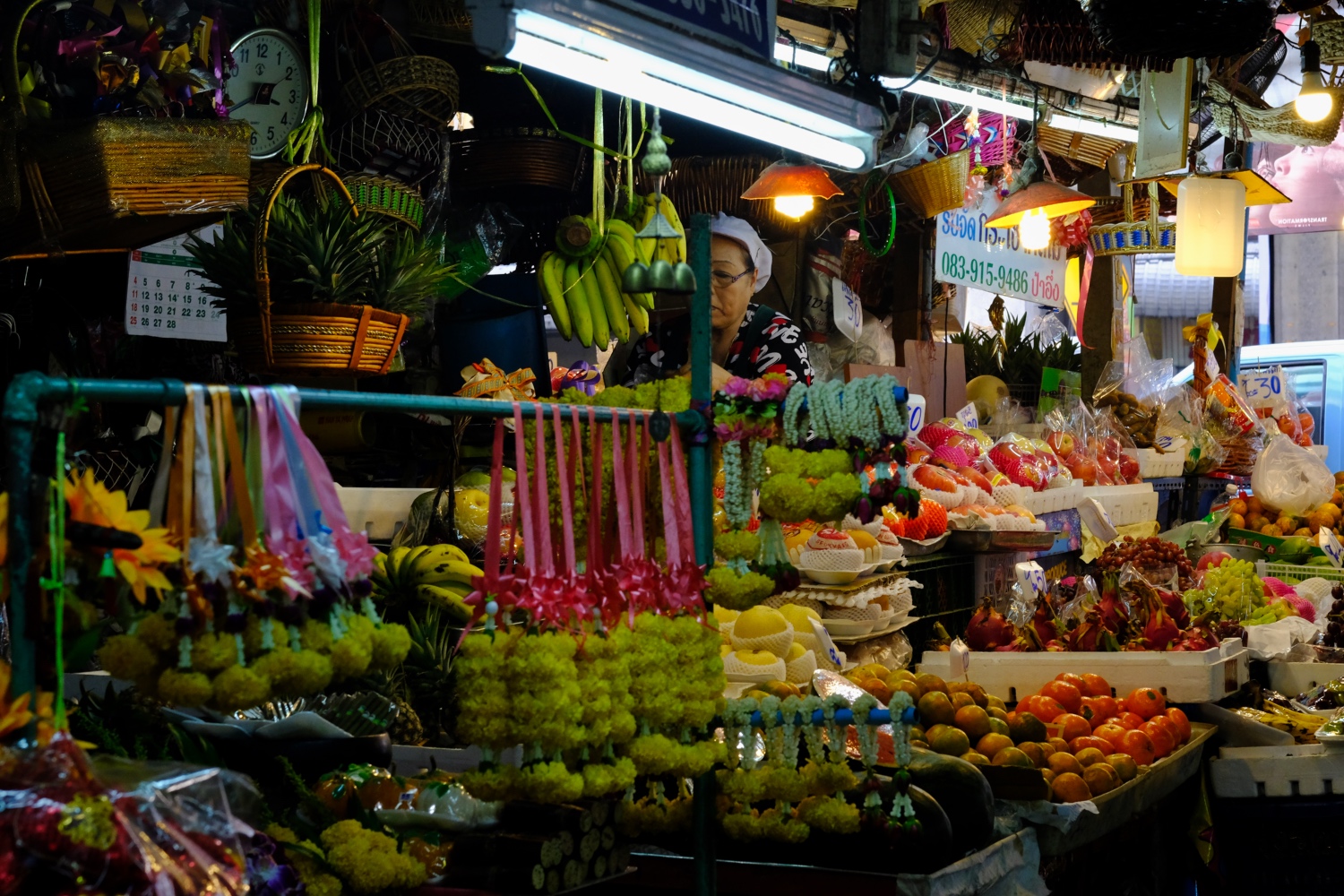 The Pakkret market is a very visually stimulating place . . . and an olfactory stimulating place. Wonderful smells.
The Pakkret market is a very visually stimulating place . . . and an olfactory stimulating place. Wonderful smells.
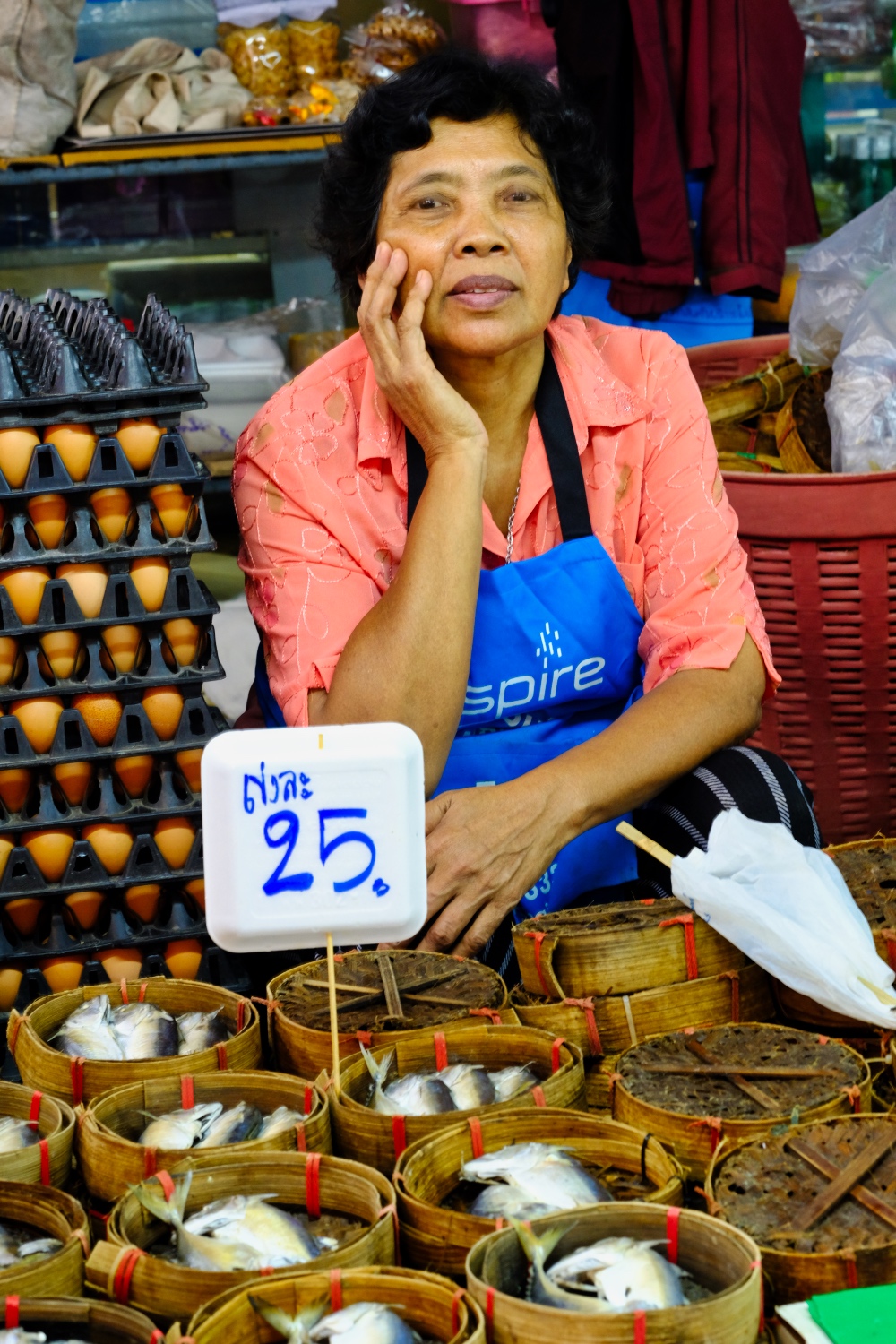 A Pakkret market fish hawker.
A Pakkret market fish hawker.
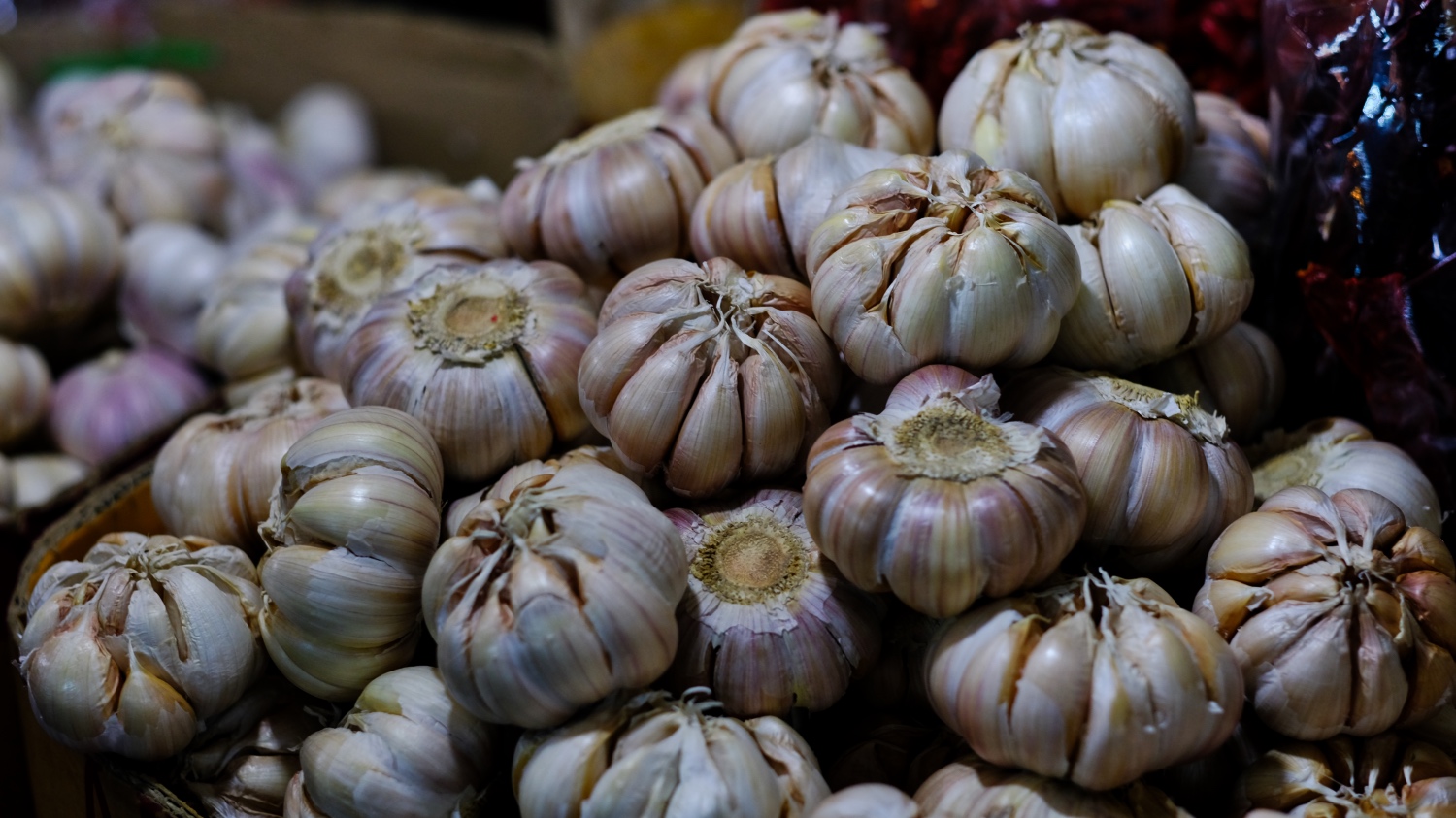 So many still life studies everywhere I looked.
So many still life studies everywhere I looked.
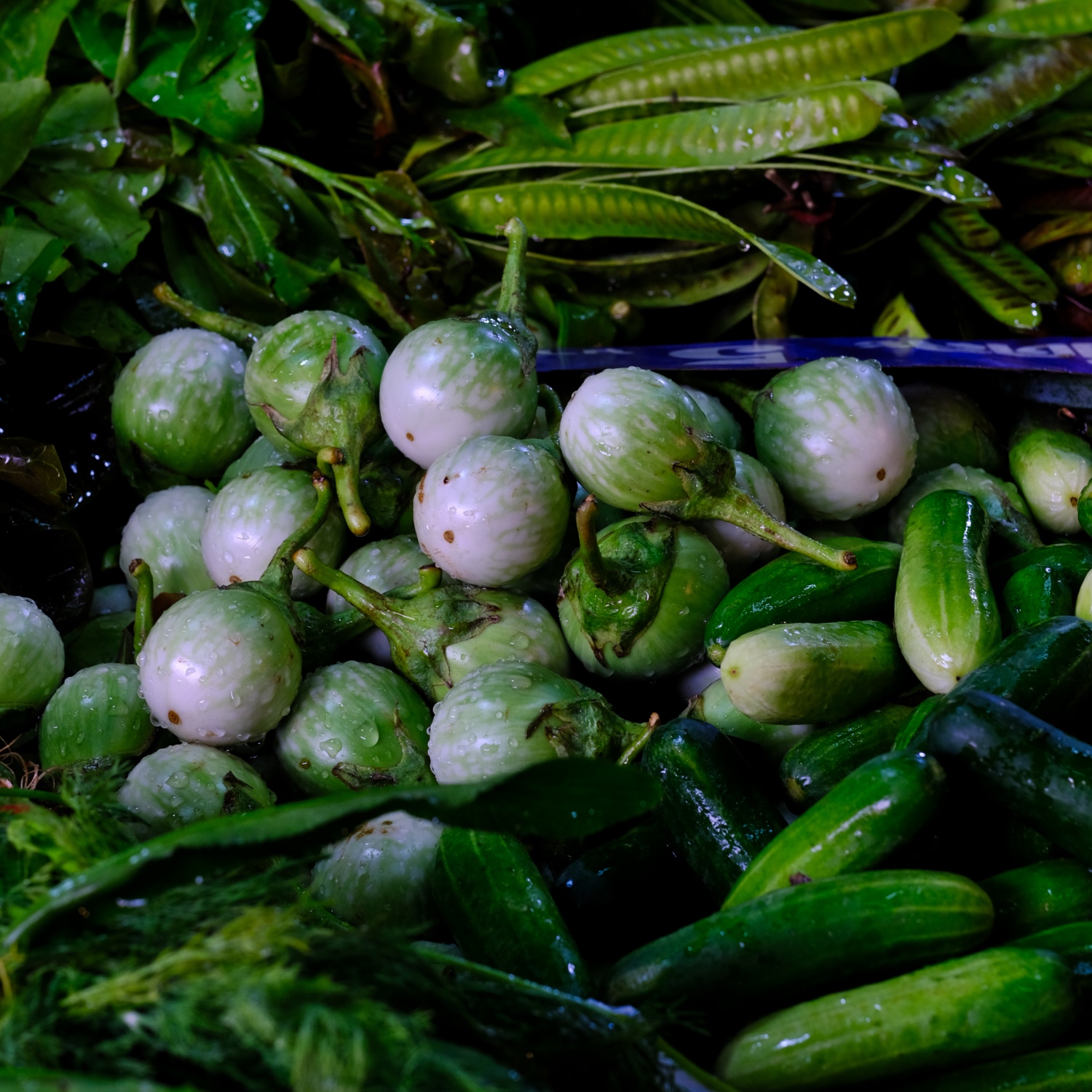 All that great tasting Thai street food has its origins in these 'wet markets.'
All that great tasting Thai street food has its origins in these 'wet markets.'
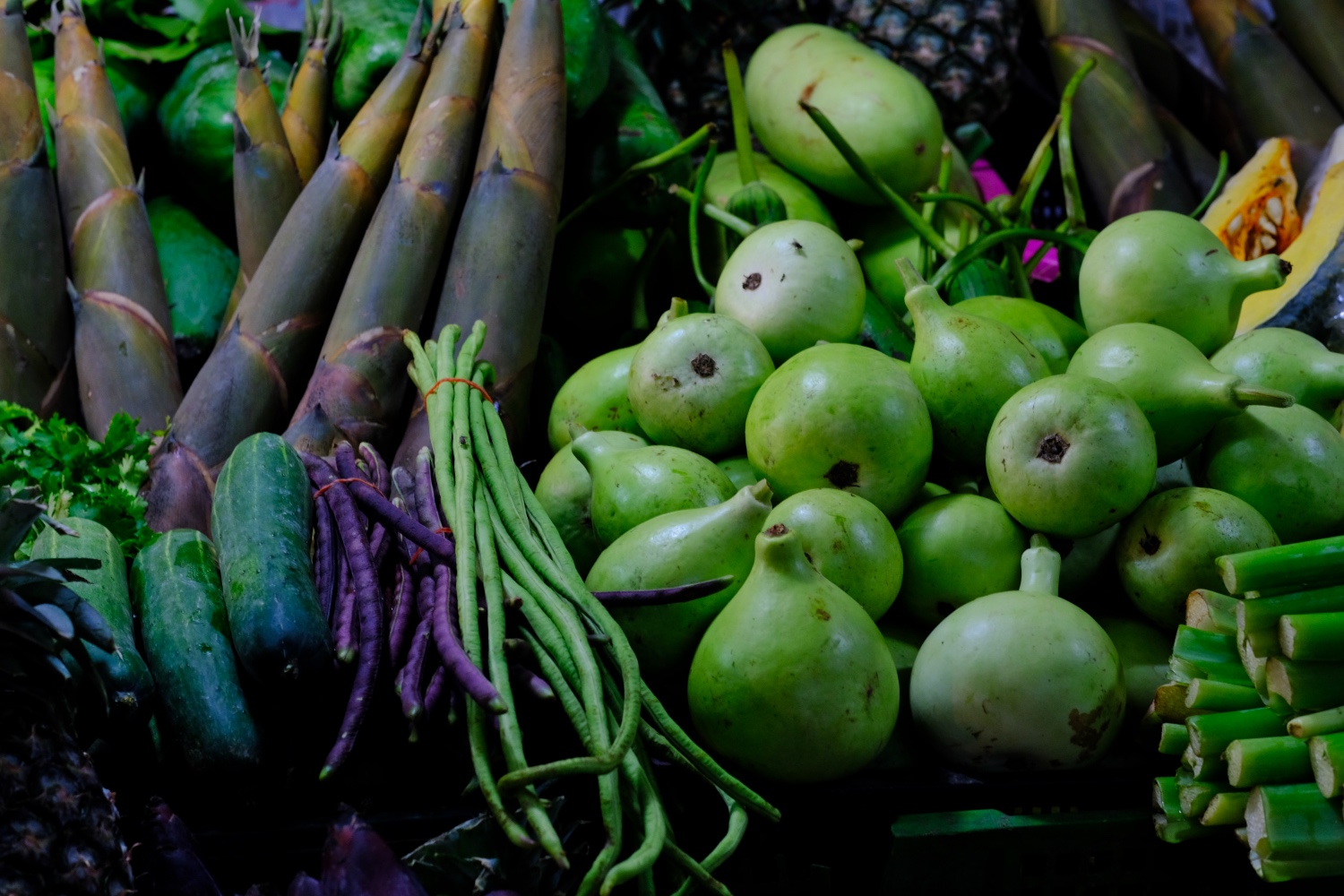 I am not even sure know the names of all of these interesting vegetables. I can't remember ever eating purple green beans . . .
I am not even sure know the names of all of these interesting vegetables. I can't remember ever eating purple green beans . . .
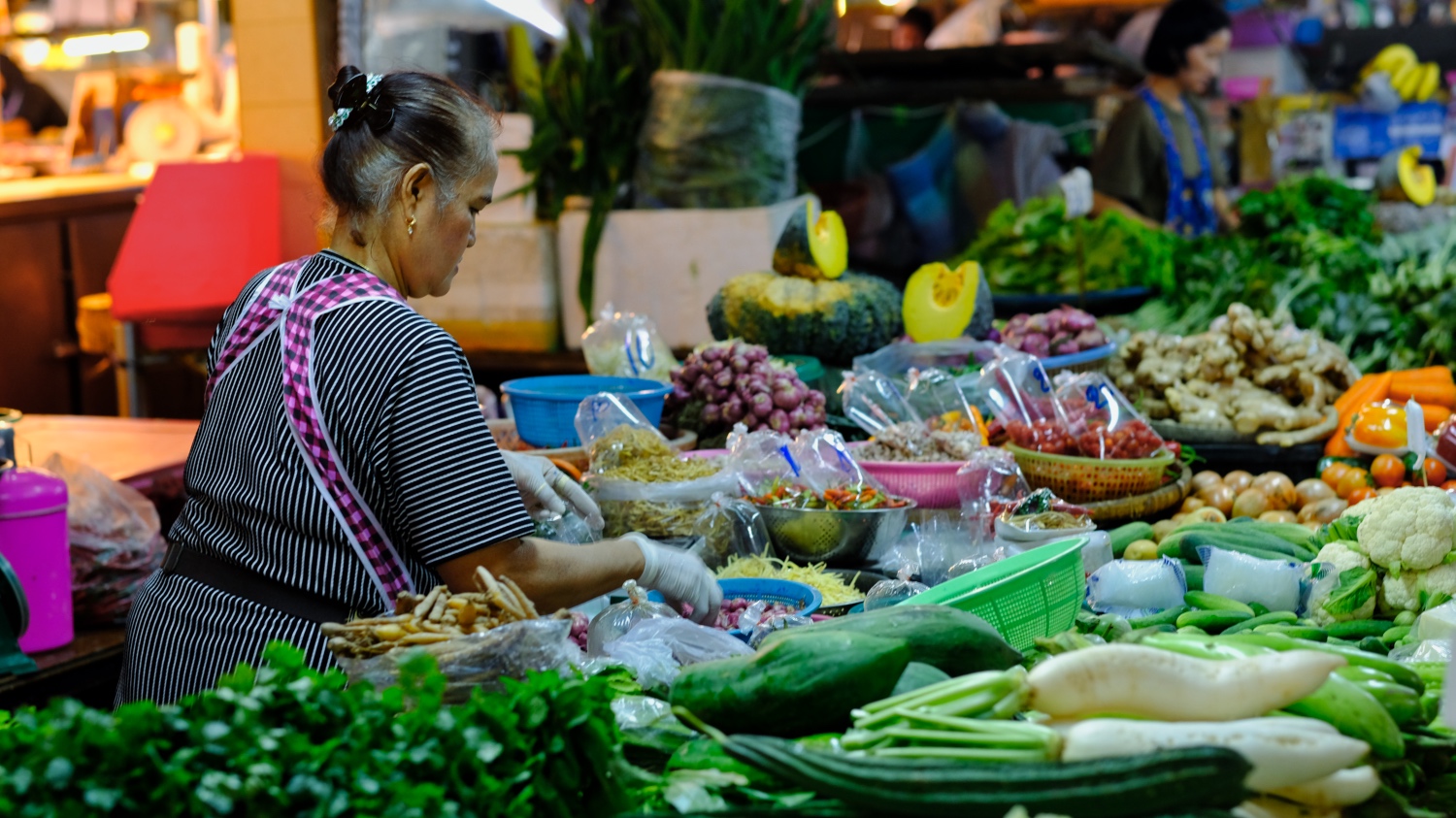 It was a late Saturday afternoon, so it was not a crowded as usual.
It was a late Saturday afternoon, so it was not a crowded as usual.
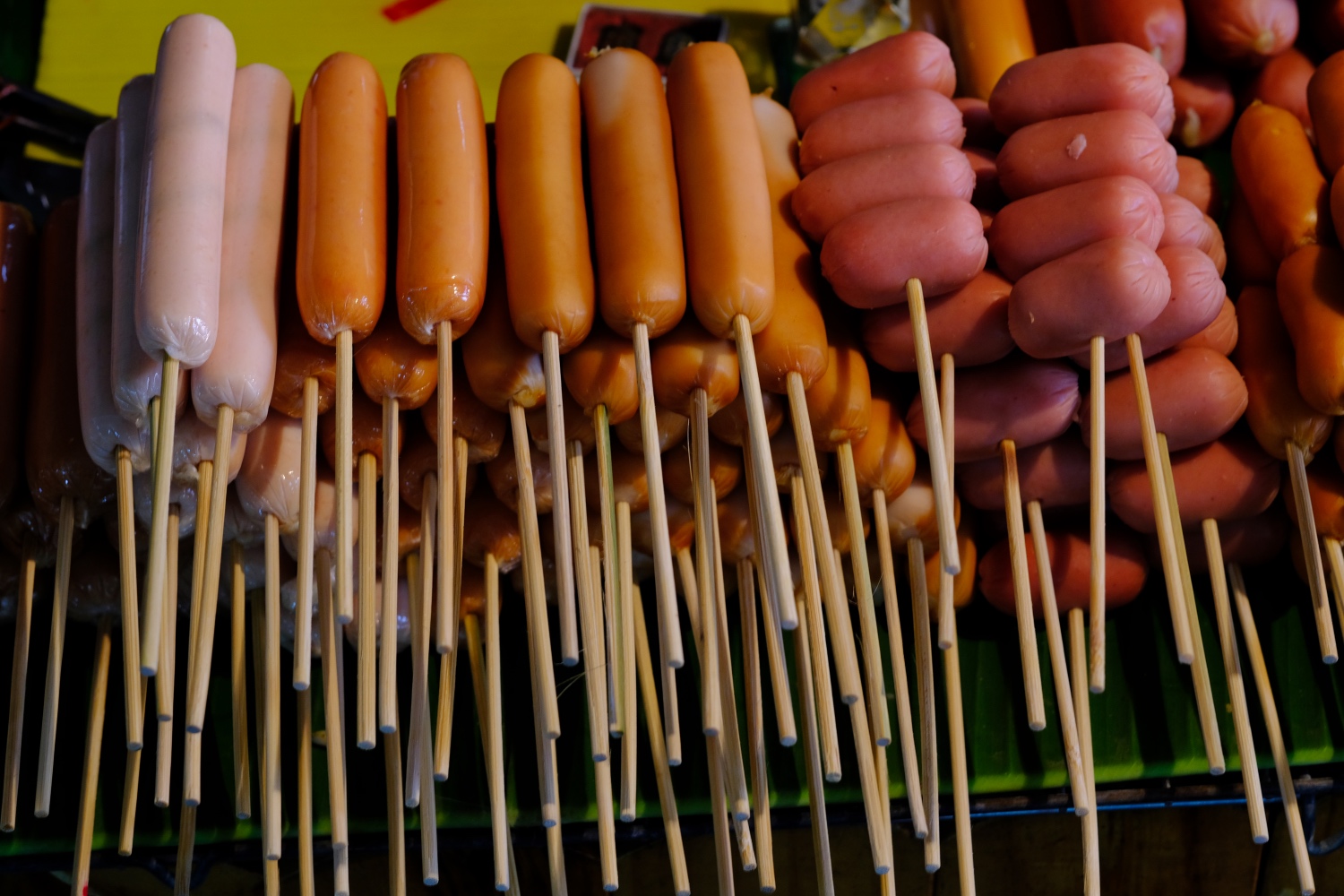 What would a Thai market be without the ubiquitous stuff-on-a-stick!
What would a Thai market be without the ubiquitous stuff-on-a-stick!
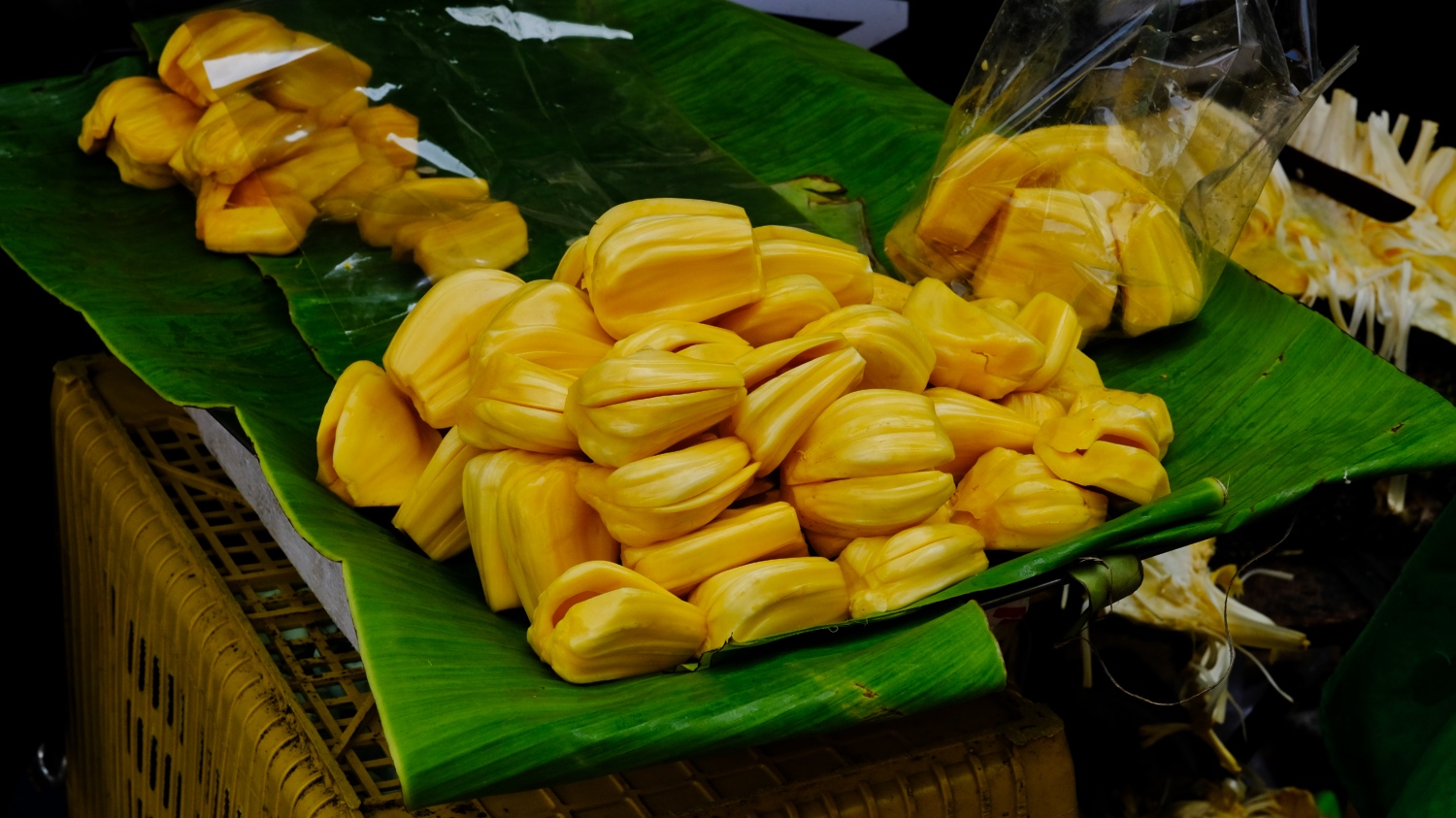 Delicious Jackfruit.
Delicious Jackfruit.
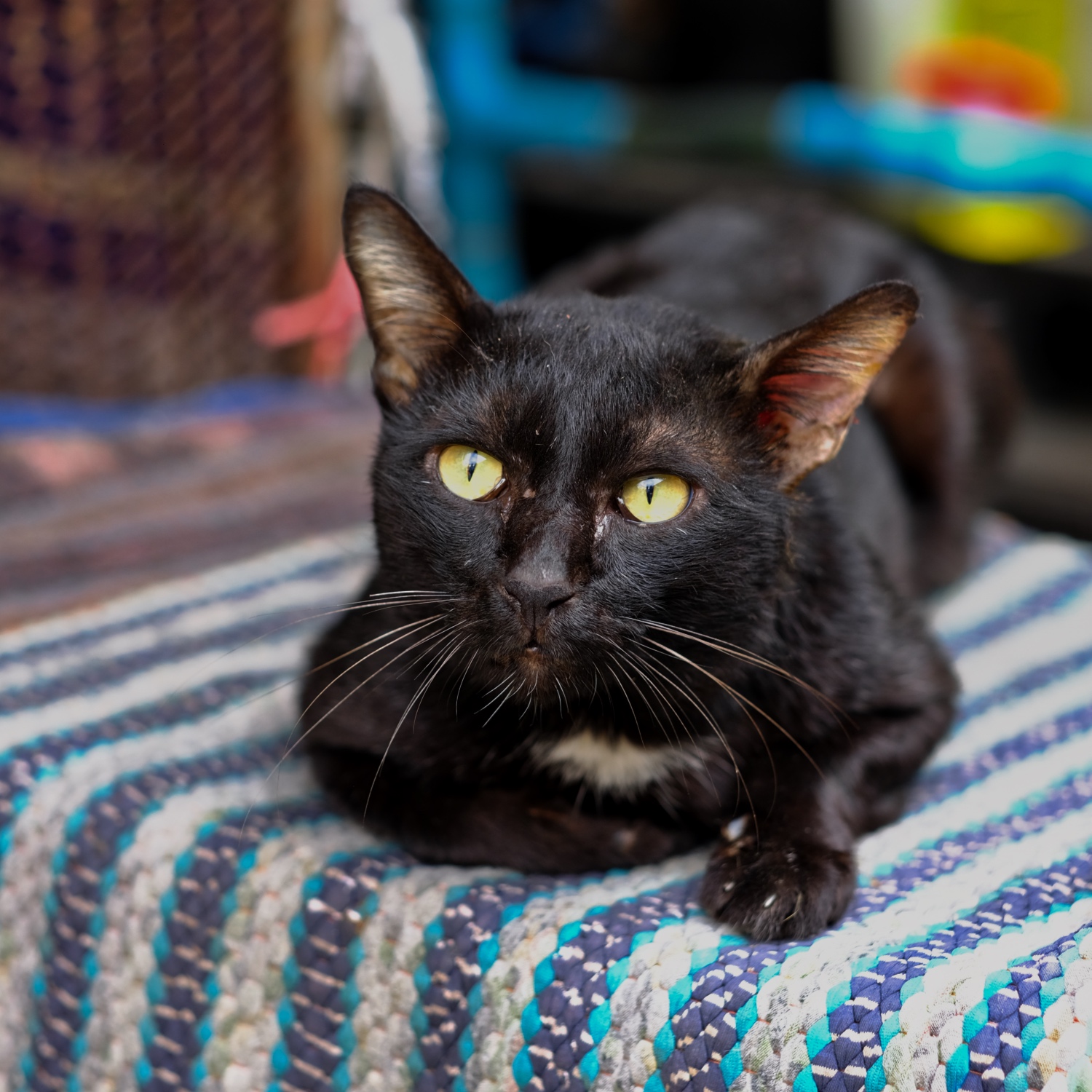 I don't normally take cat photos, but this forlorn market mouser with a recently chewed ear caught my eye.
I don't normally take cat photos, but this forlorn market mouser with a recently chewed ear caught my eye.
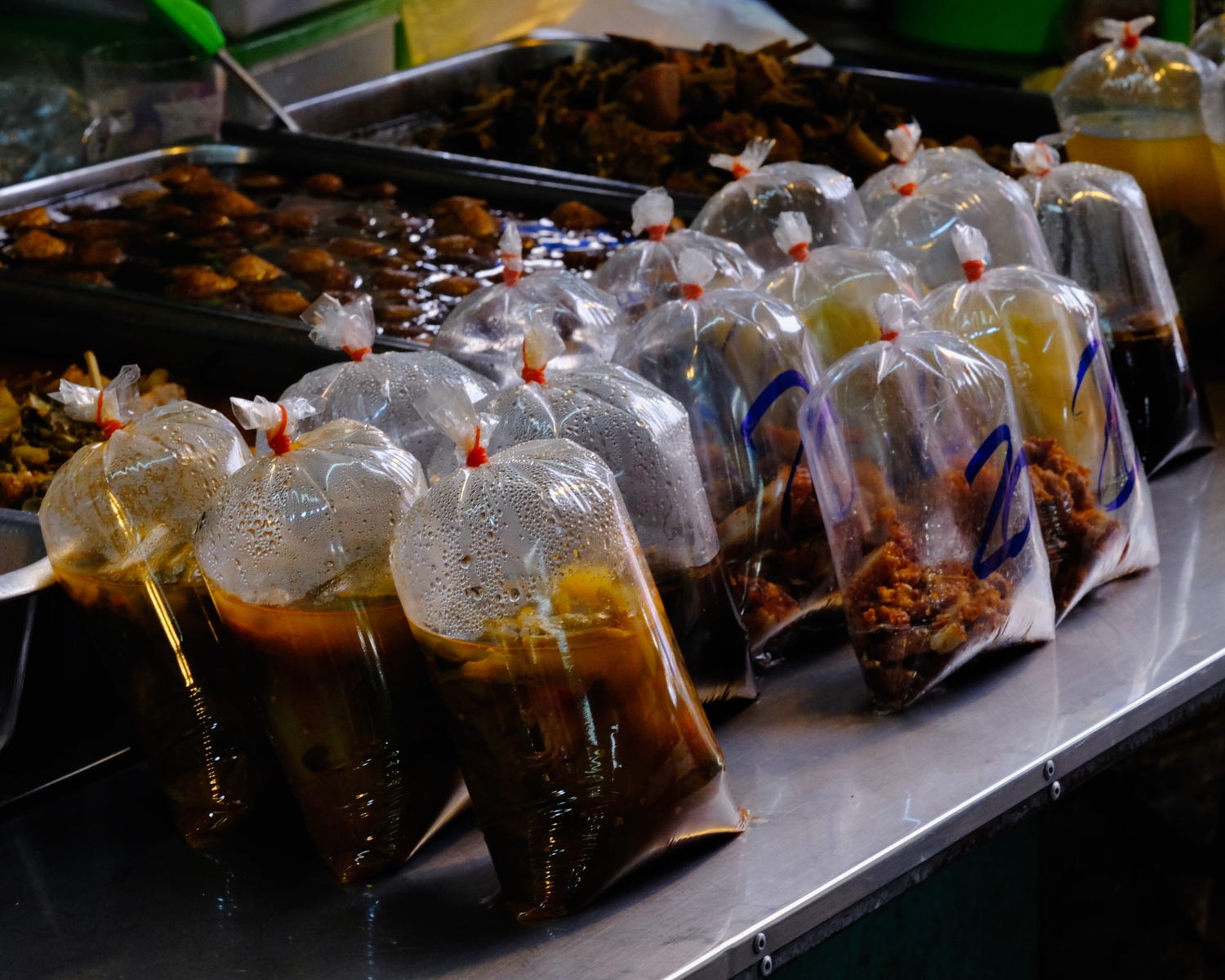 Food is very inexpensive in Thailand. Most markets have stalls selling these 'meals in a bag' for commuters. Just pick one of these up on the way to or from work.
Food is very inexpensive in Thailand. Most markets have stalls selling these 'meals in a bag' for commuters. Just pick one of these up on the way to or from work.
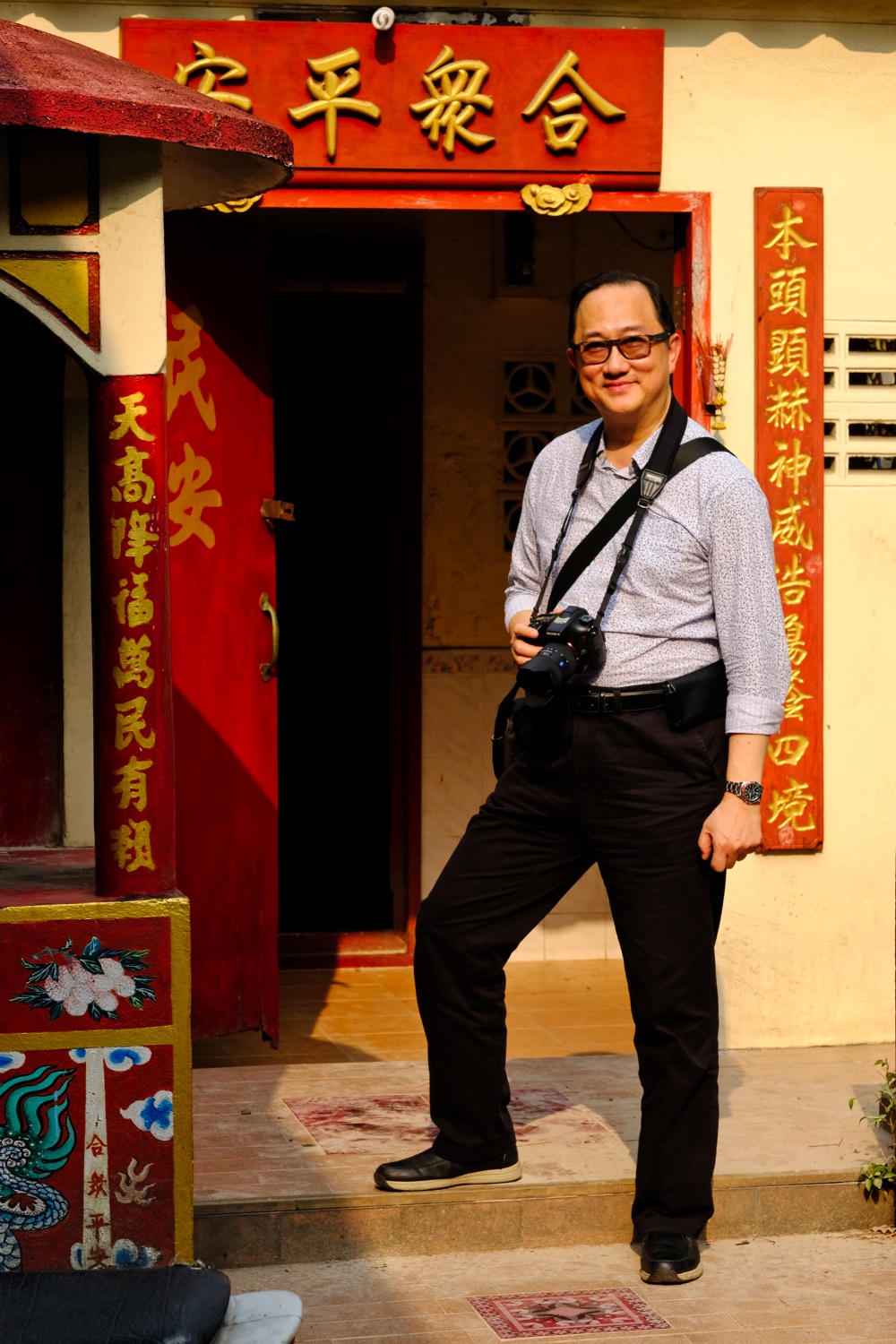 My brother-in-law from Hong Kong, and fellow photo buff, was the excuse to explore the market and riverside attractions. We found the little Chinese temple sandwiched in an alley.
My brother-in-law from Hong Kong, and fellow photo buff, was the excuse to explore the market and riverside attractions. We found the little Chinese temple sandwiched in an alley.
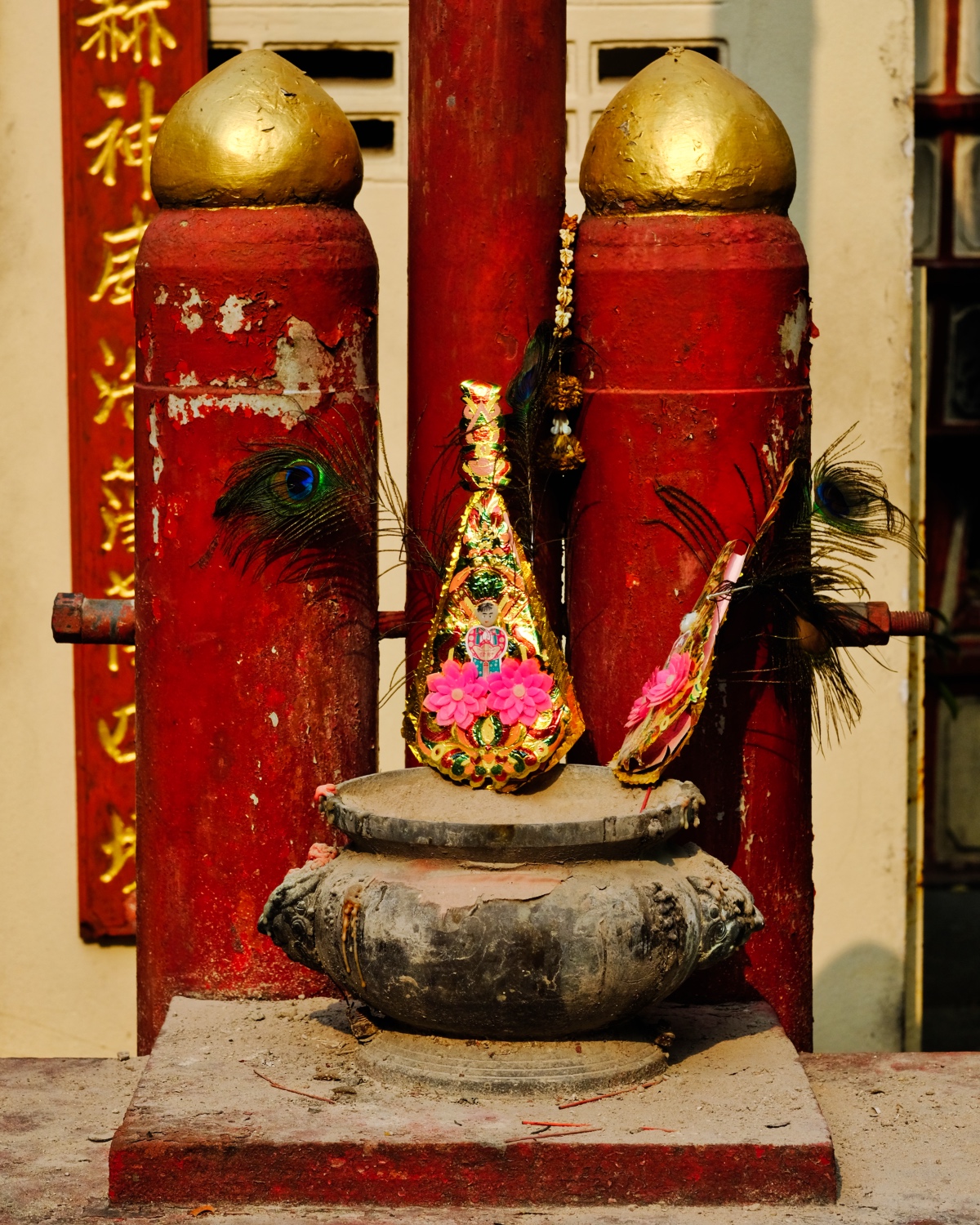 Chinese Temple detail . . .
Chinese Temple detail . . .
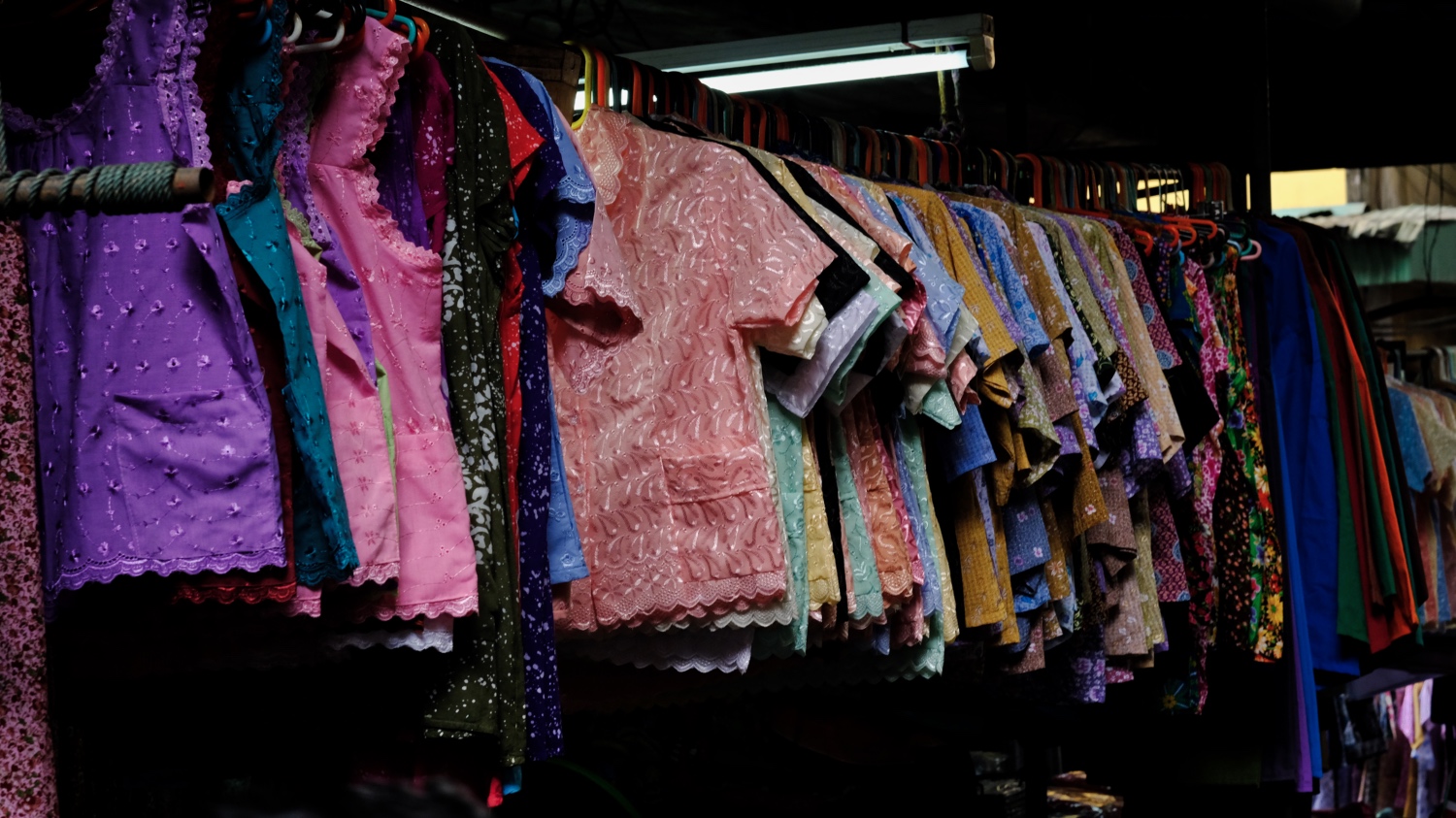 In addition to food, the Pakkret market also has sections for [old lady] clothes.
In addition to food, the Pakkret market also has sections for [old lady] clothes.
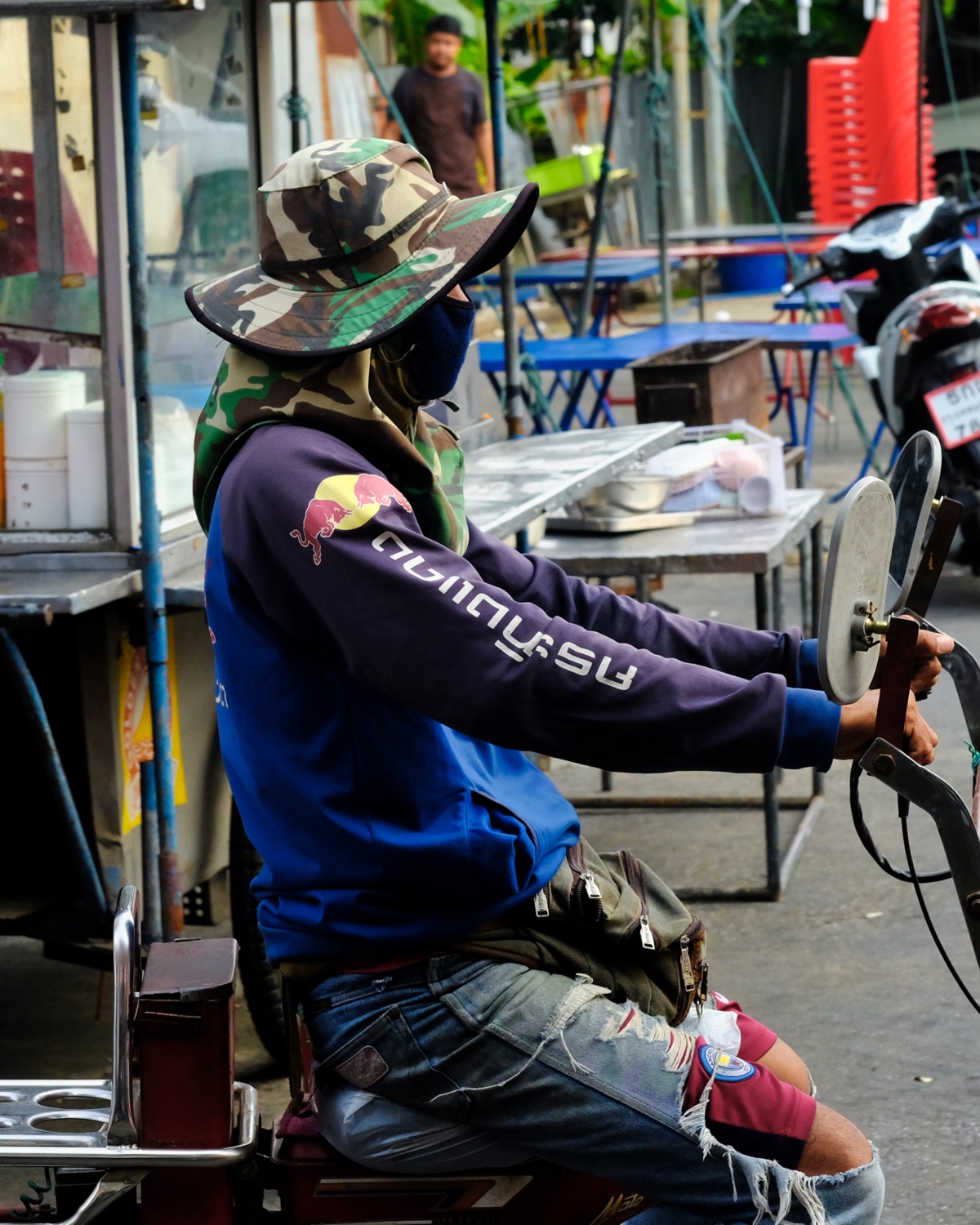 After shopping for your restaurant or market stall, you can hire a motorcycle taxi truck to get your stuff where you want it to go.
After shopping for your restaurant or market stall, you can hire a motorcycle taxi truck to get your stuff where you want it to go.
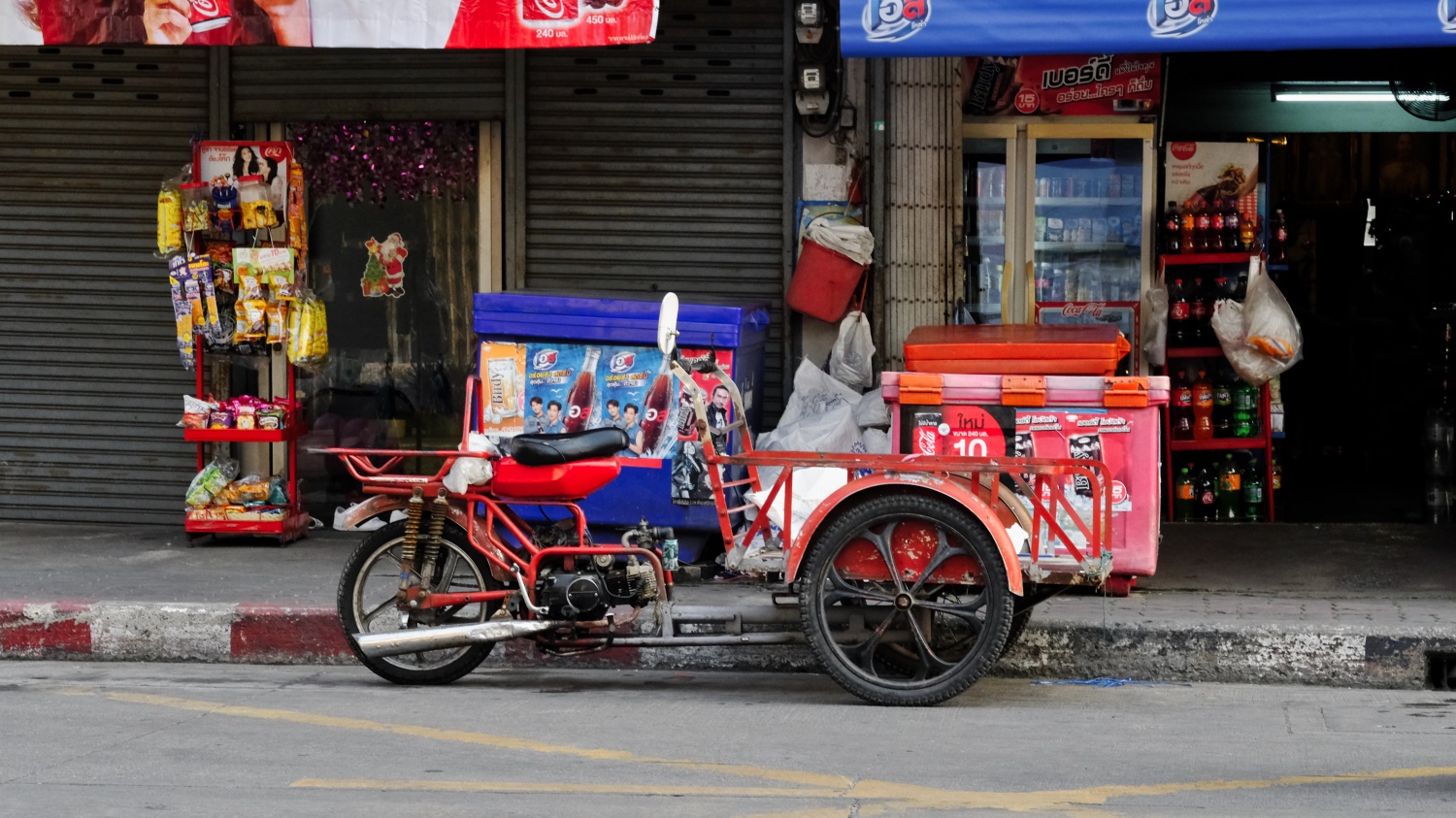 Motorized carts for moving produce and products around the market district.
Motorized carts for moving produce and products around the market district.
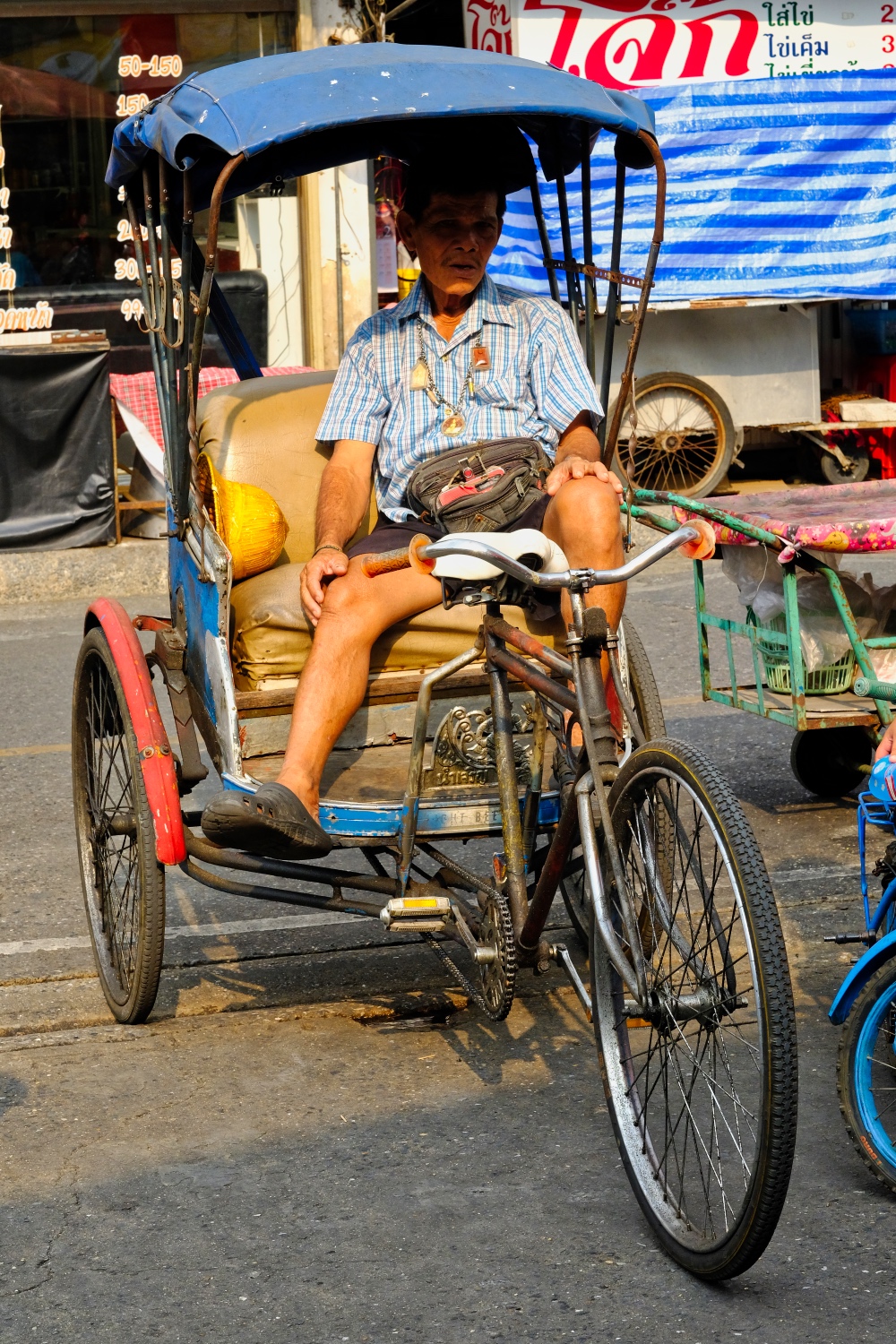 A traditional, and less expensive, means of transportation is the samlor.
A traditional, and less expensive, means of transportation is the samlor.
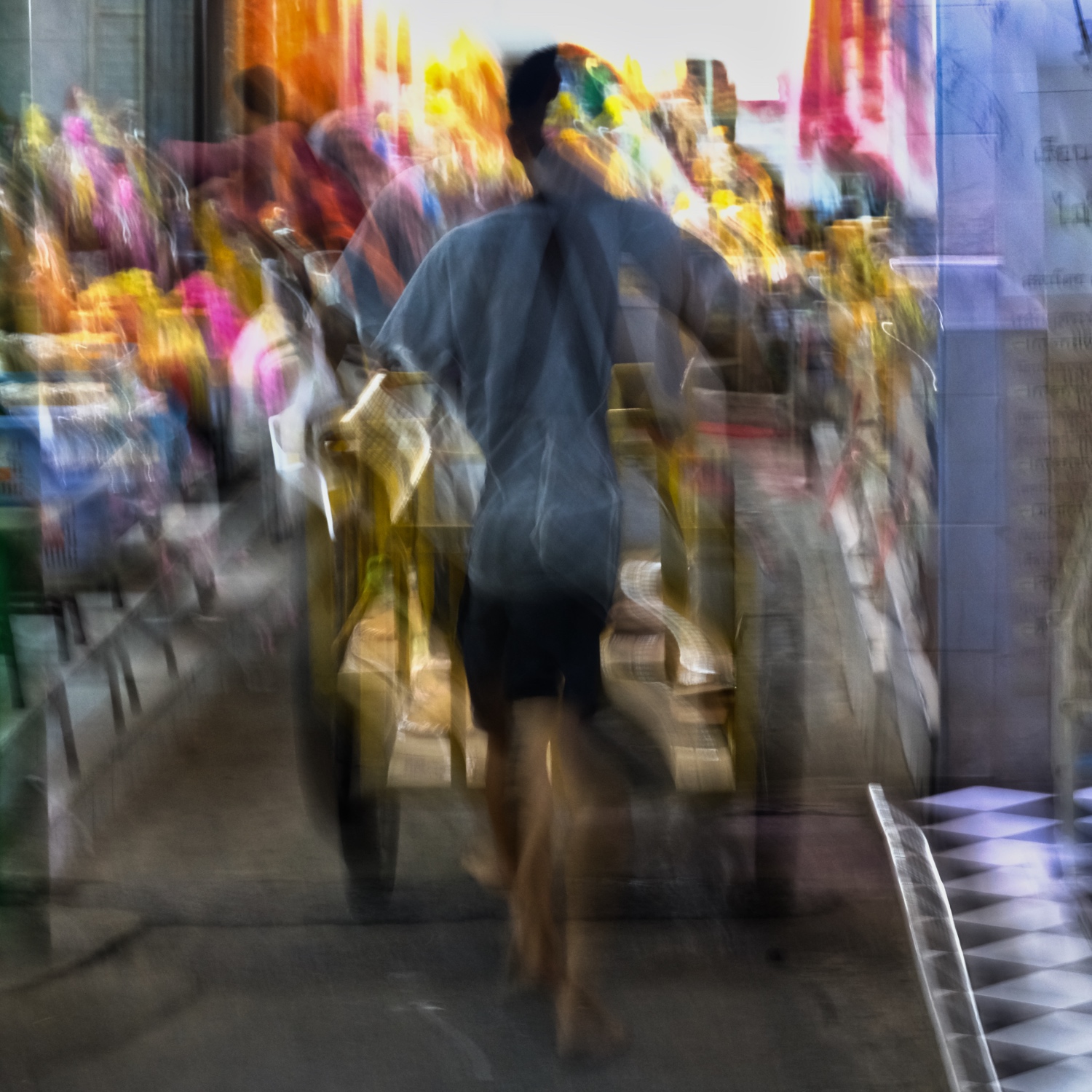 The Thai markets are places of constant action and movement.
The Thai markets are places of constant action and movement.
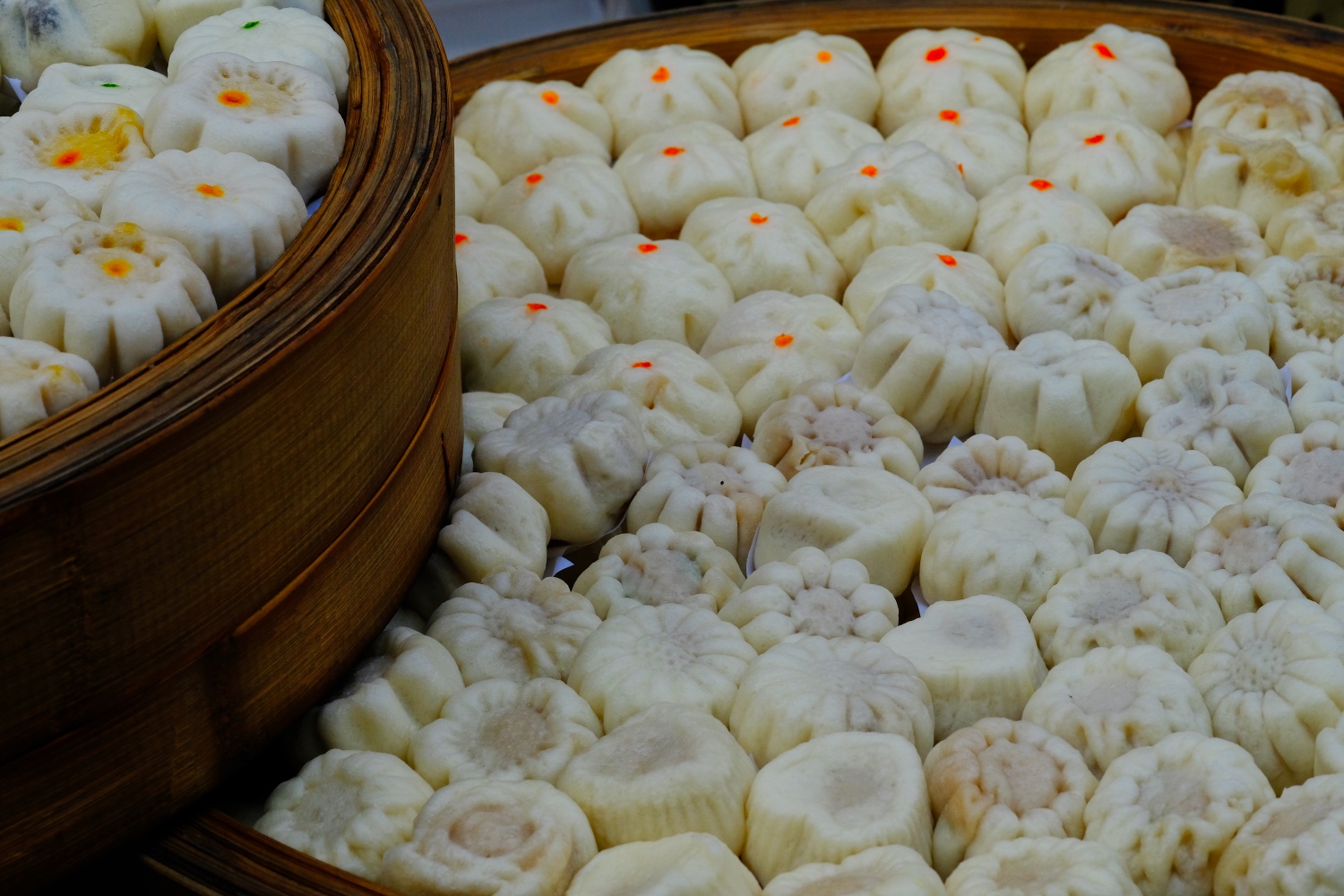 Outside the market, on the street, are even more edibles . . . steamed dim sum.
Outside the market, on the street, are even more edibles . . . steamed dim sum.
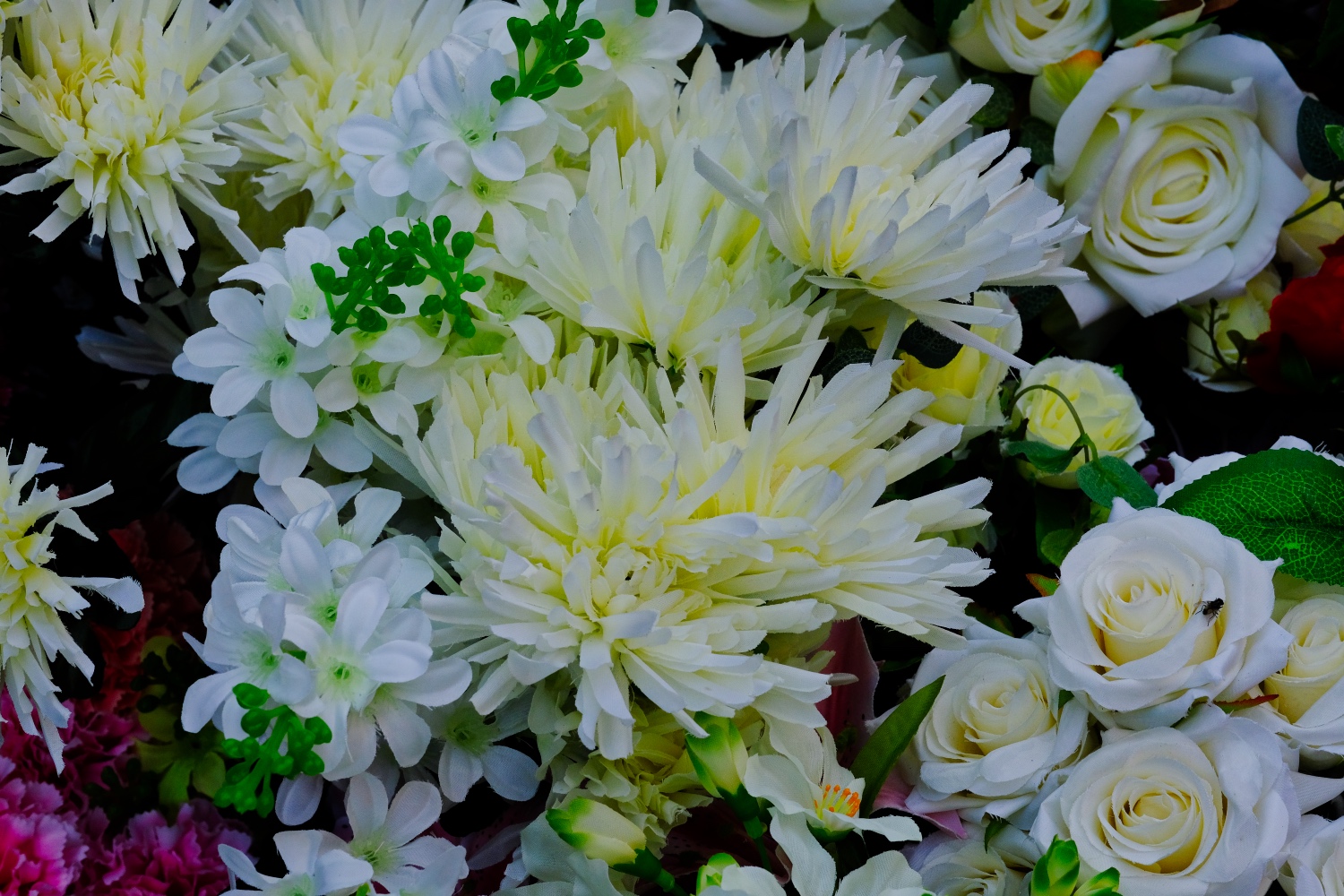 I am always amazed at the artistry of Thai artificial flowers!
I am always amazed at the artistry of Thai artificial flowers!
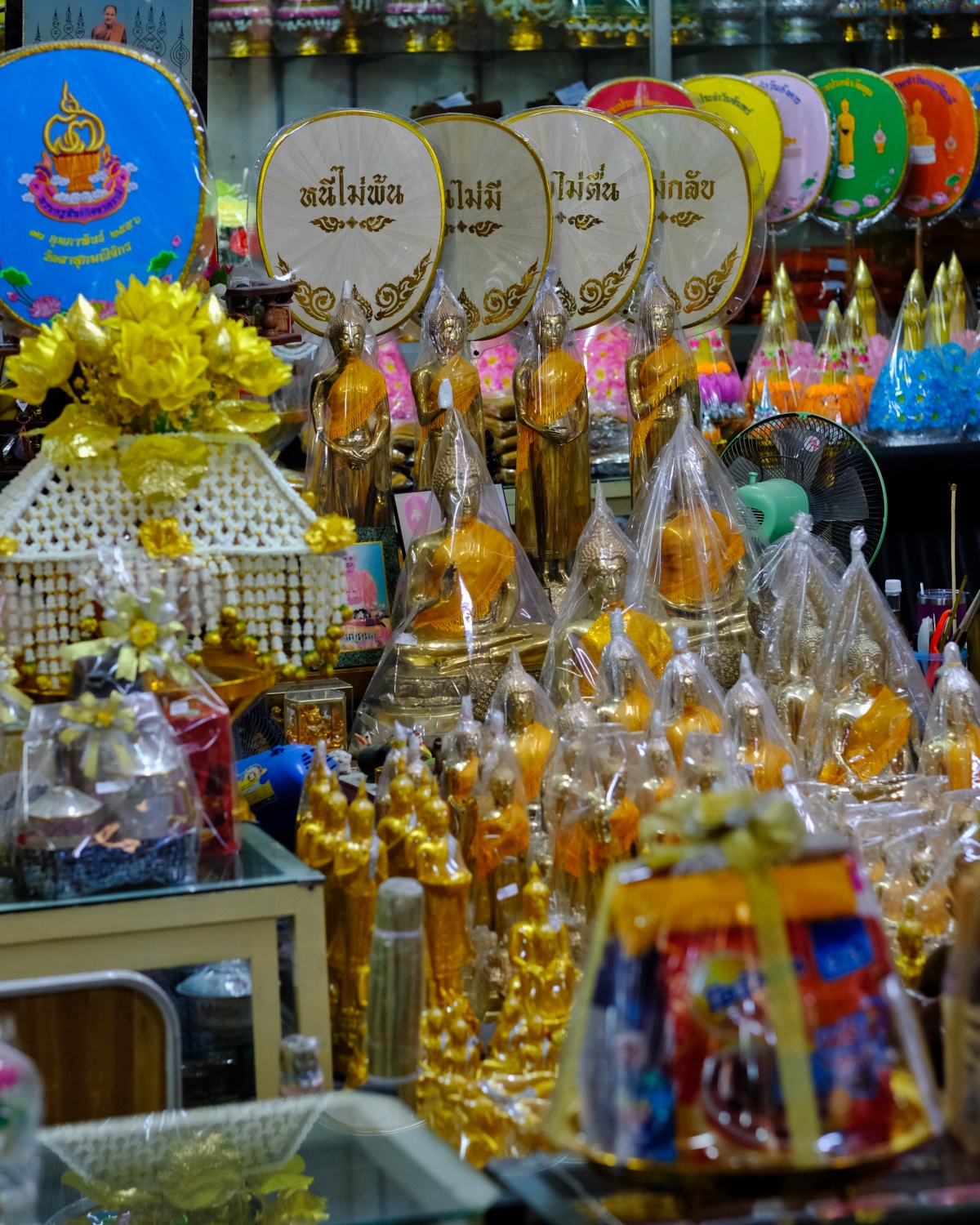 We wandered around in some alleyways along the river and discovered a Buddhist Temple Supply Shop.
We wandered around in some alleyways along the river and discovered a Buddhist Temple Supply Shop.
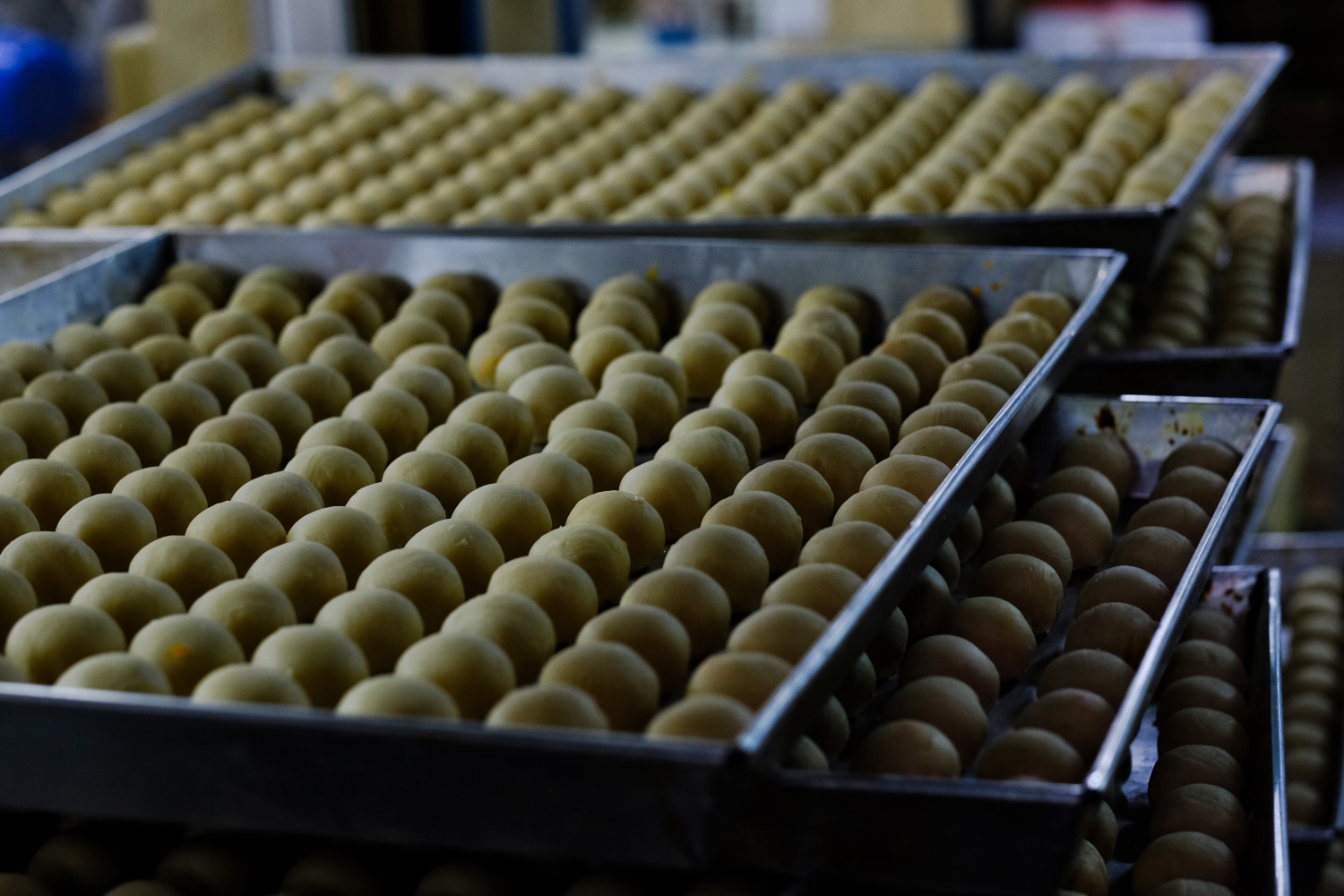 A back alley home cookie factory making traditional Chinese treats.
A back alley home cookie factory making traditional Chinese treats.
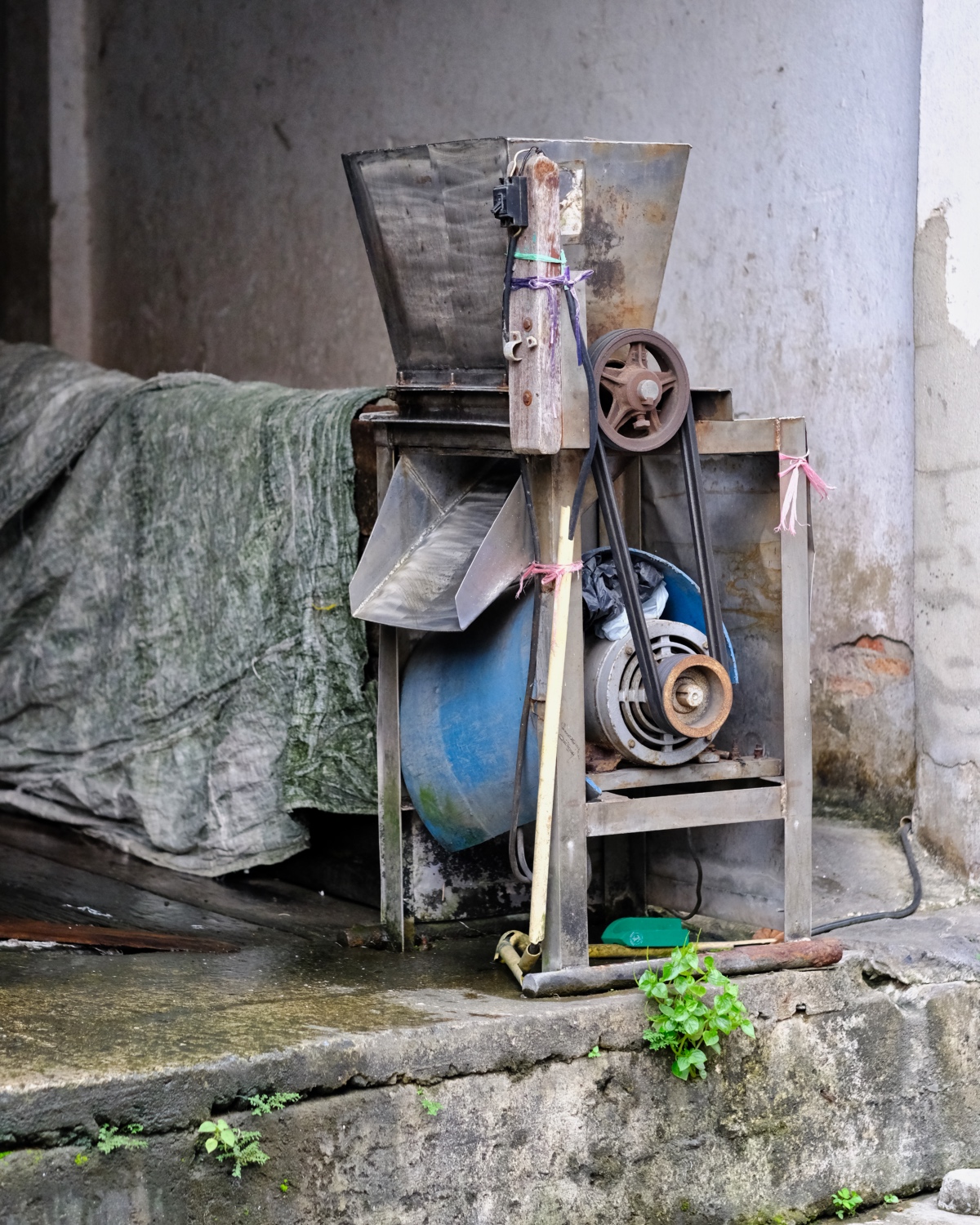 Somebody's business: crushed ice.
Somebody's business: crushed ice.
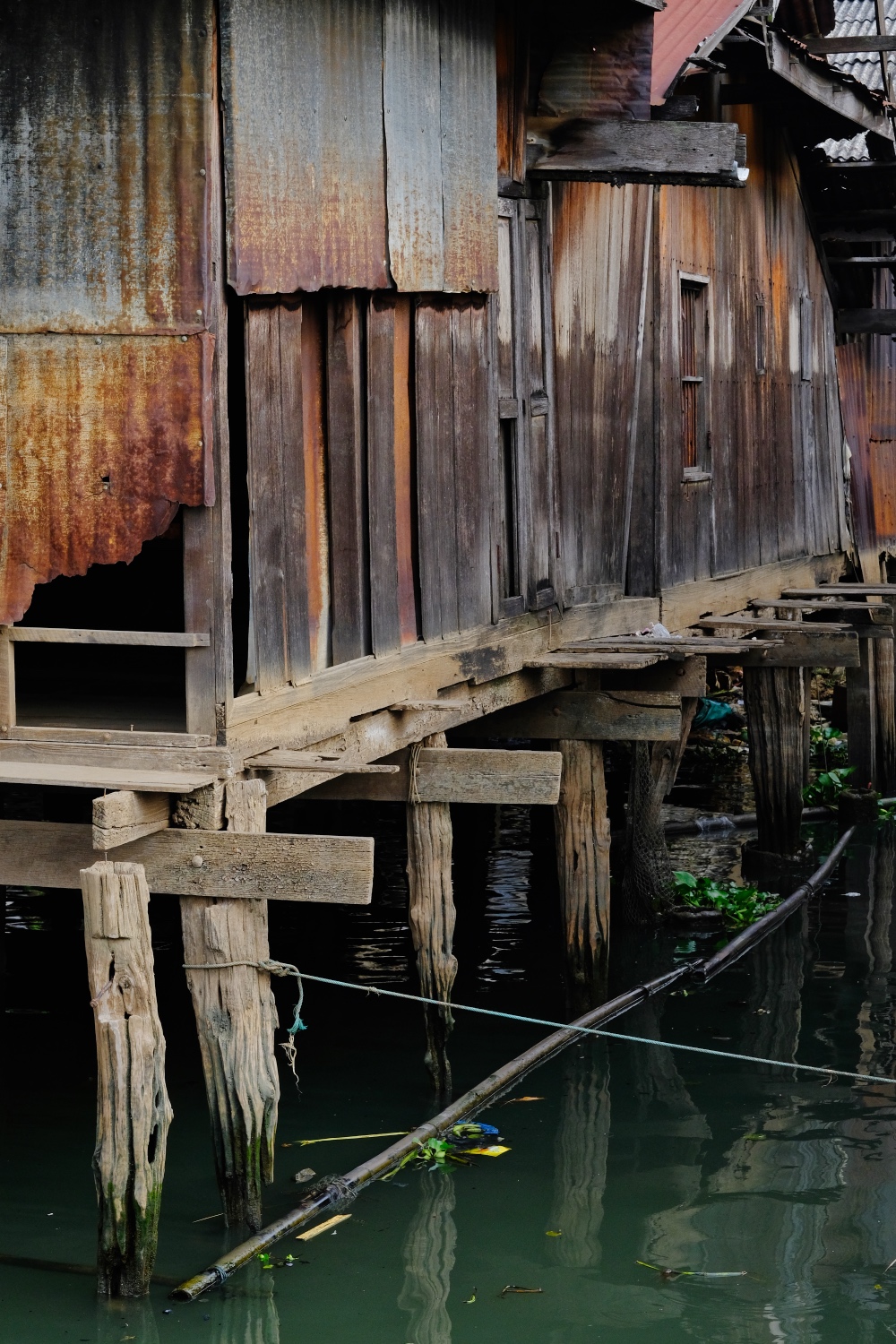 Down along the river . . .
Down along the river . . .
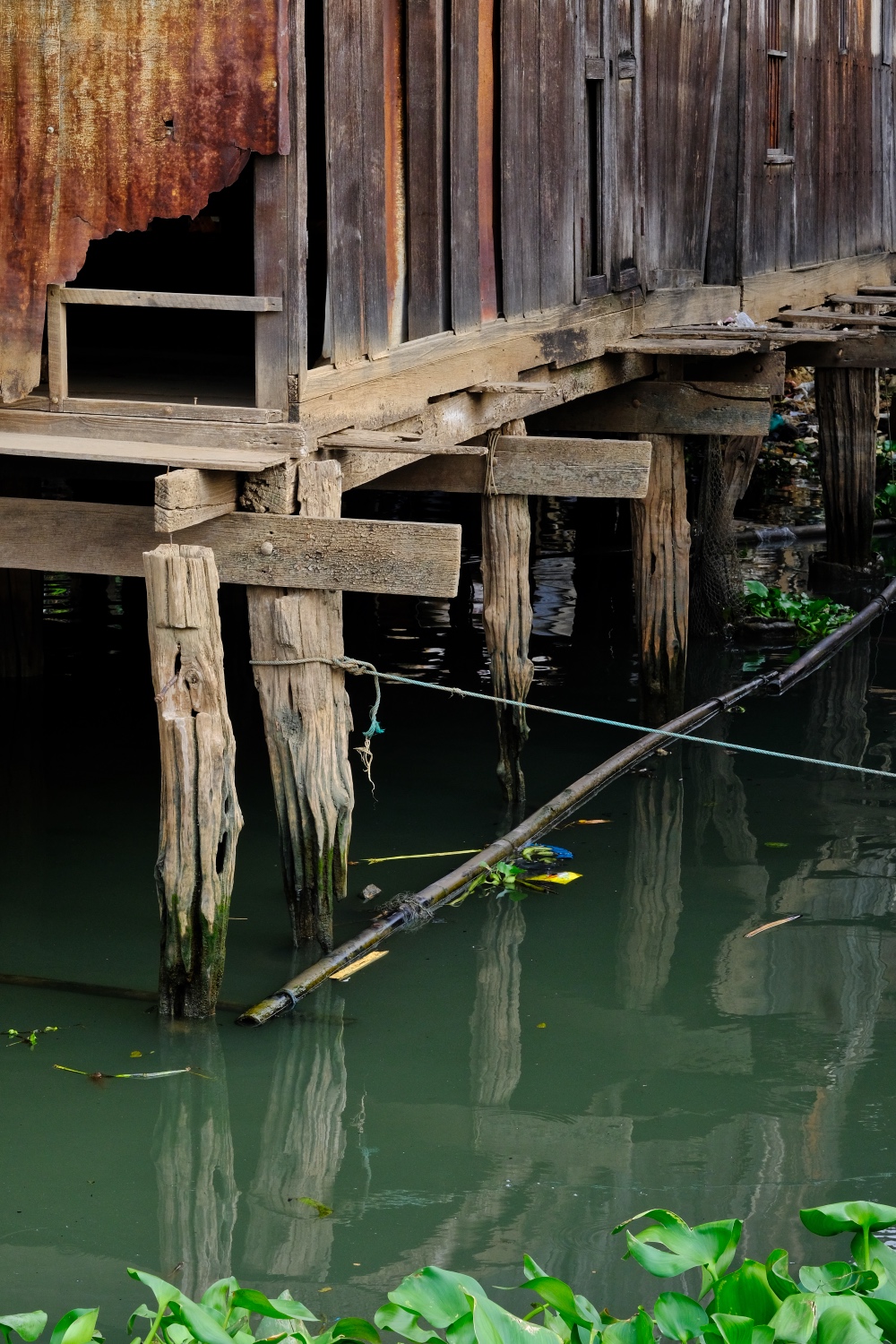 Our late afternoon walk brought us to the riverside . . . and this fantasticly weathered and decaying old wooden house . . .
Our late afternoon walk brought us to the riverside . . . and this fantasticly weathered and decaying old wooden house . . .
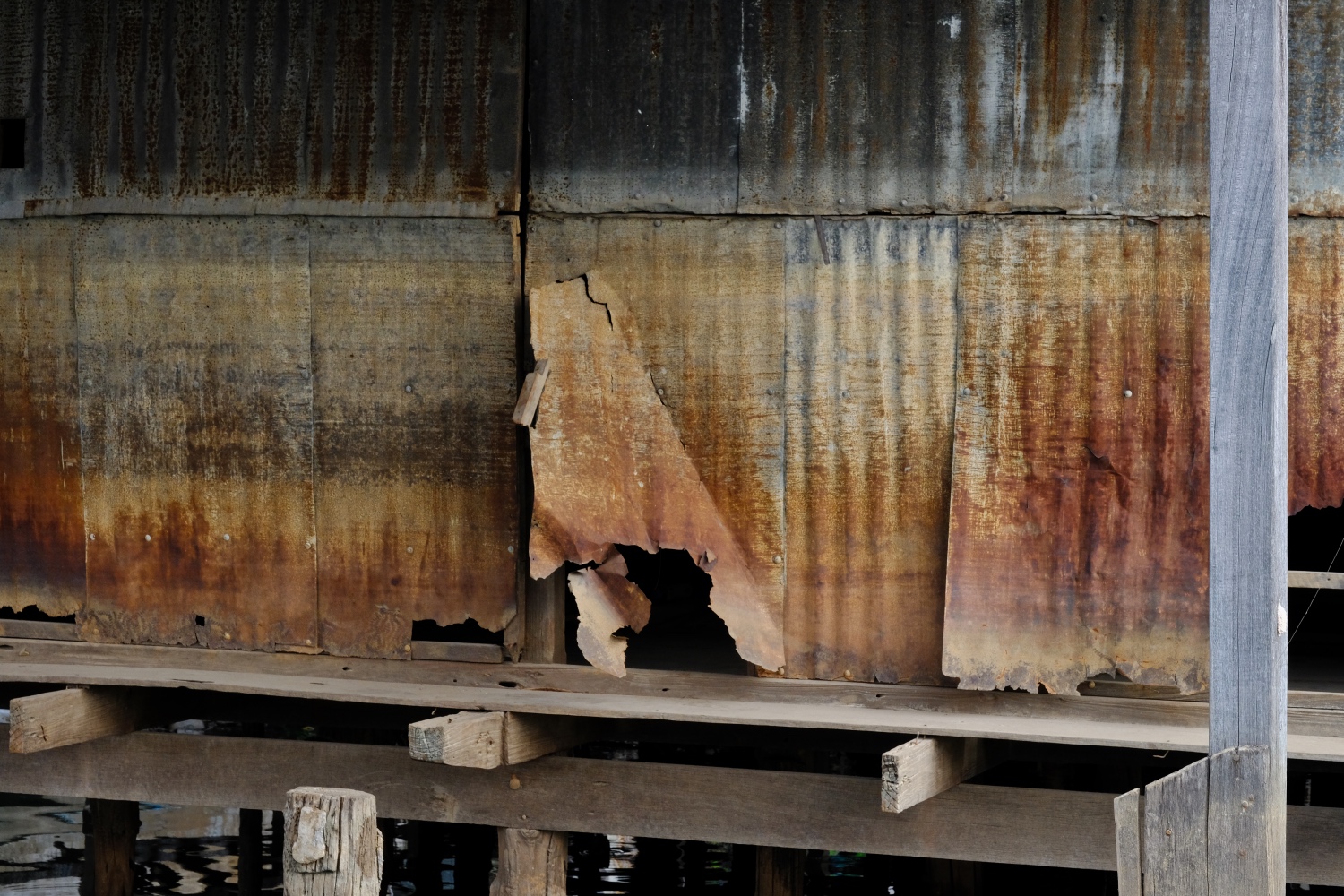 The high water lines of recent river flooding clearly shown on the old house.
The high water lines of recent river flooding clearly shown on the old house.
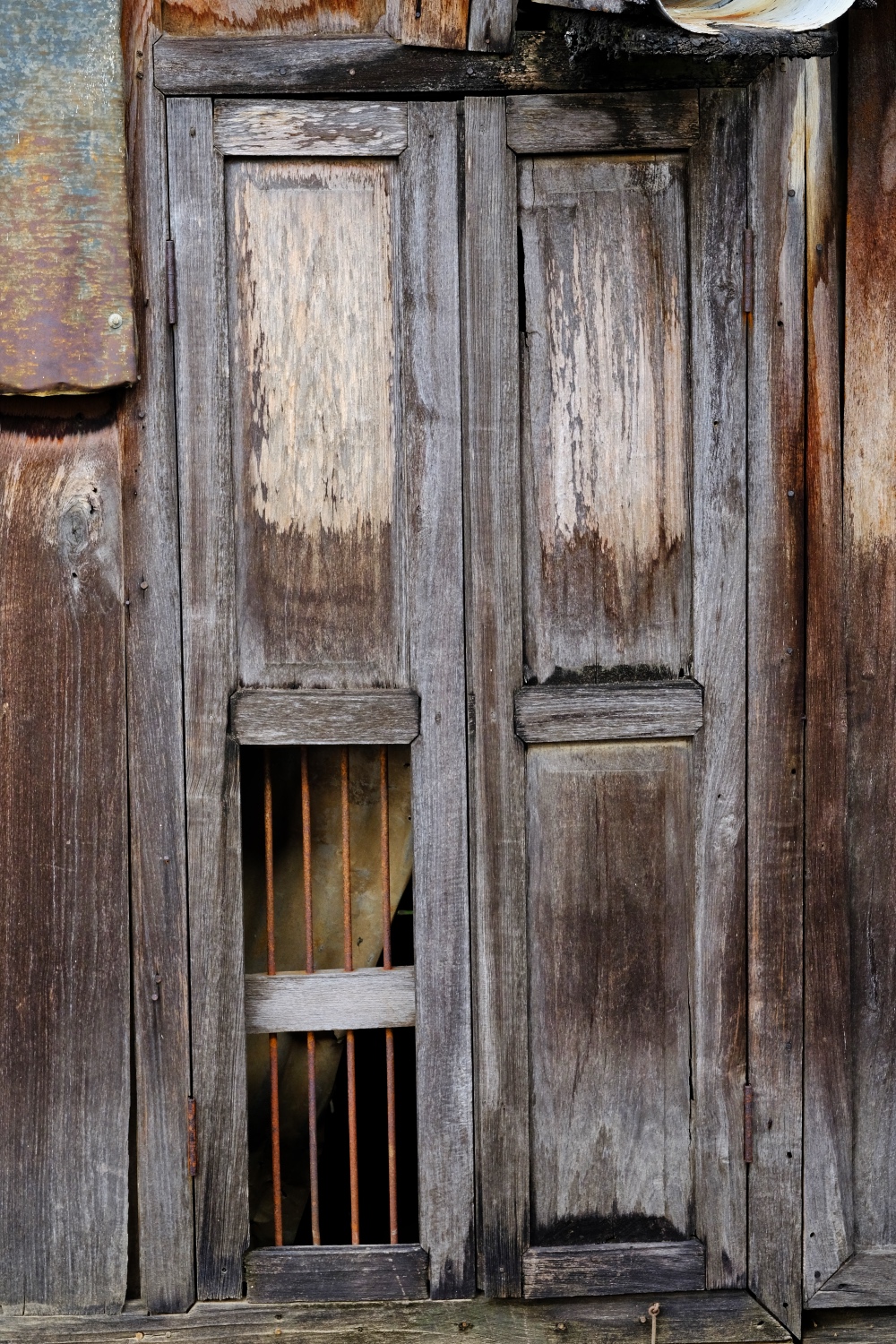 I love the textures of deteriorating wood on old doors and windows. This particular riverside house had absolutely scrumptious surfaces.
I love the textures of deteriorating wood on old doors and windows. This particular riverside house had absolutely scrumptious surfaces.
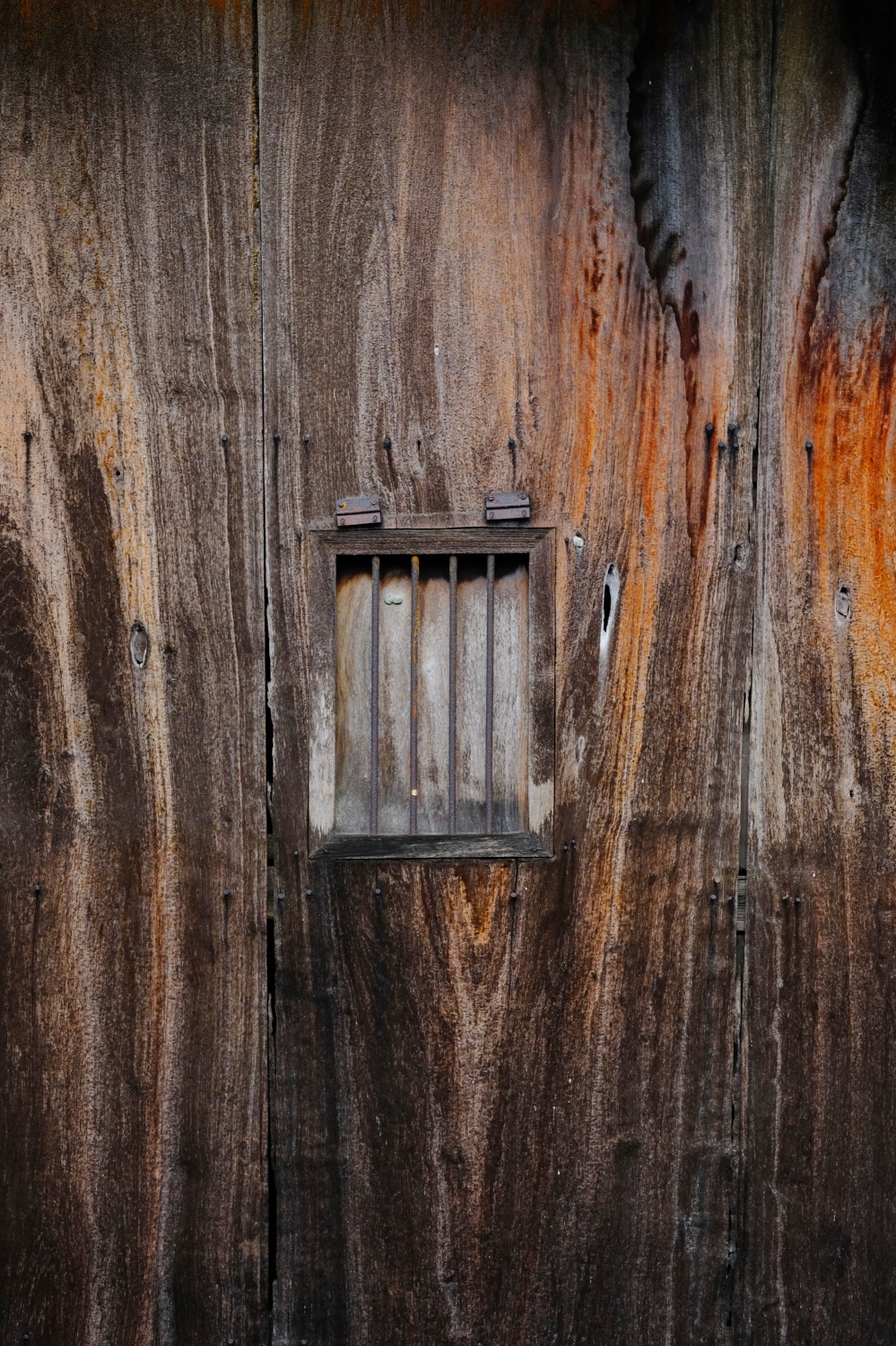 Yes, these are the actual colors . . . fantastic.
Yes, these are the actual colors . . . fantastic.
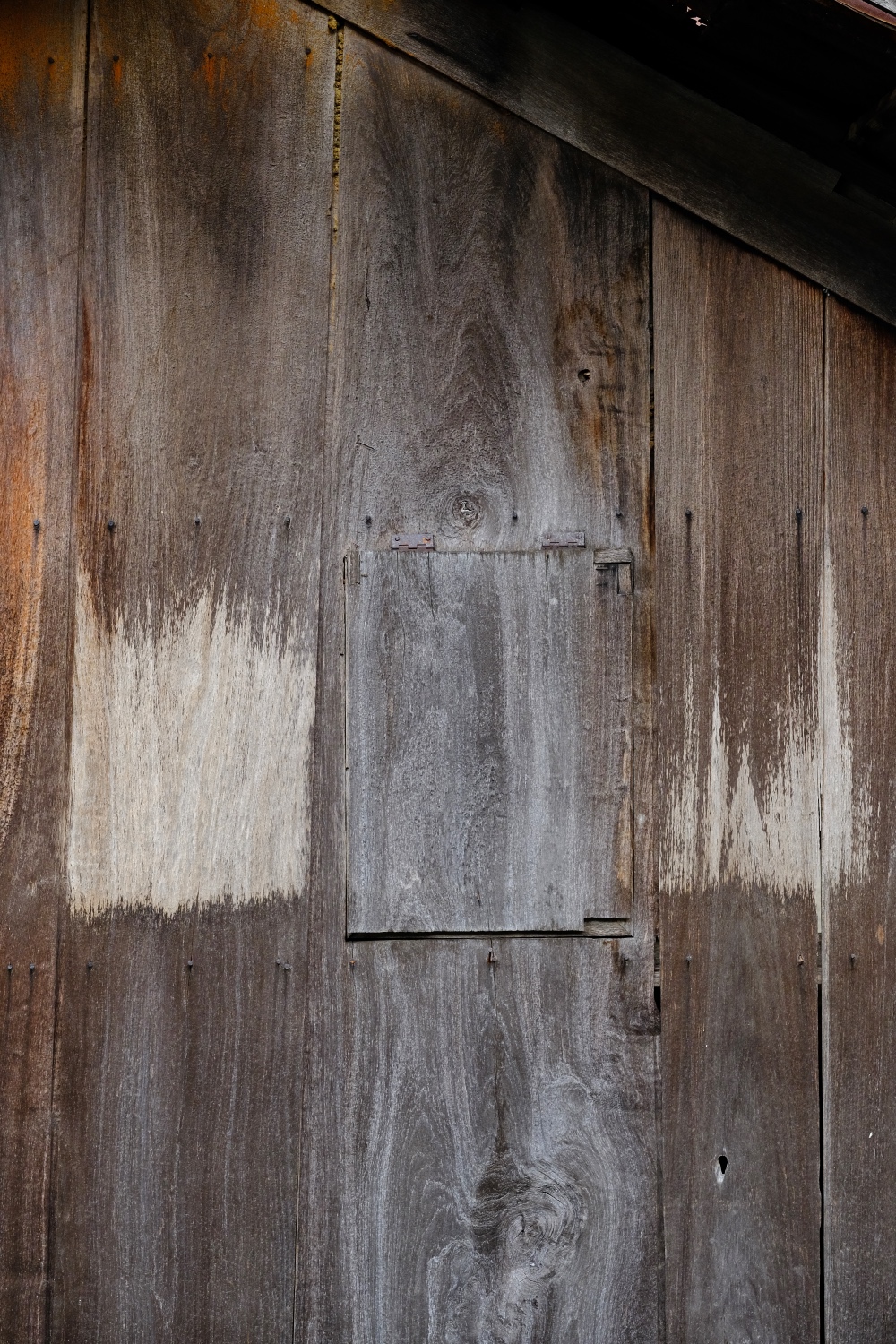 I think of the surface variegation on these surfaces as their histories.
I think of the surface variegation on these surfaces as their histories.
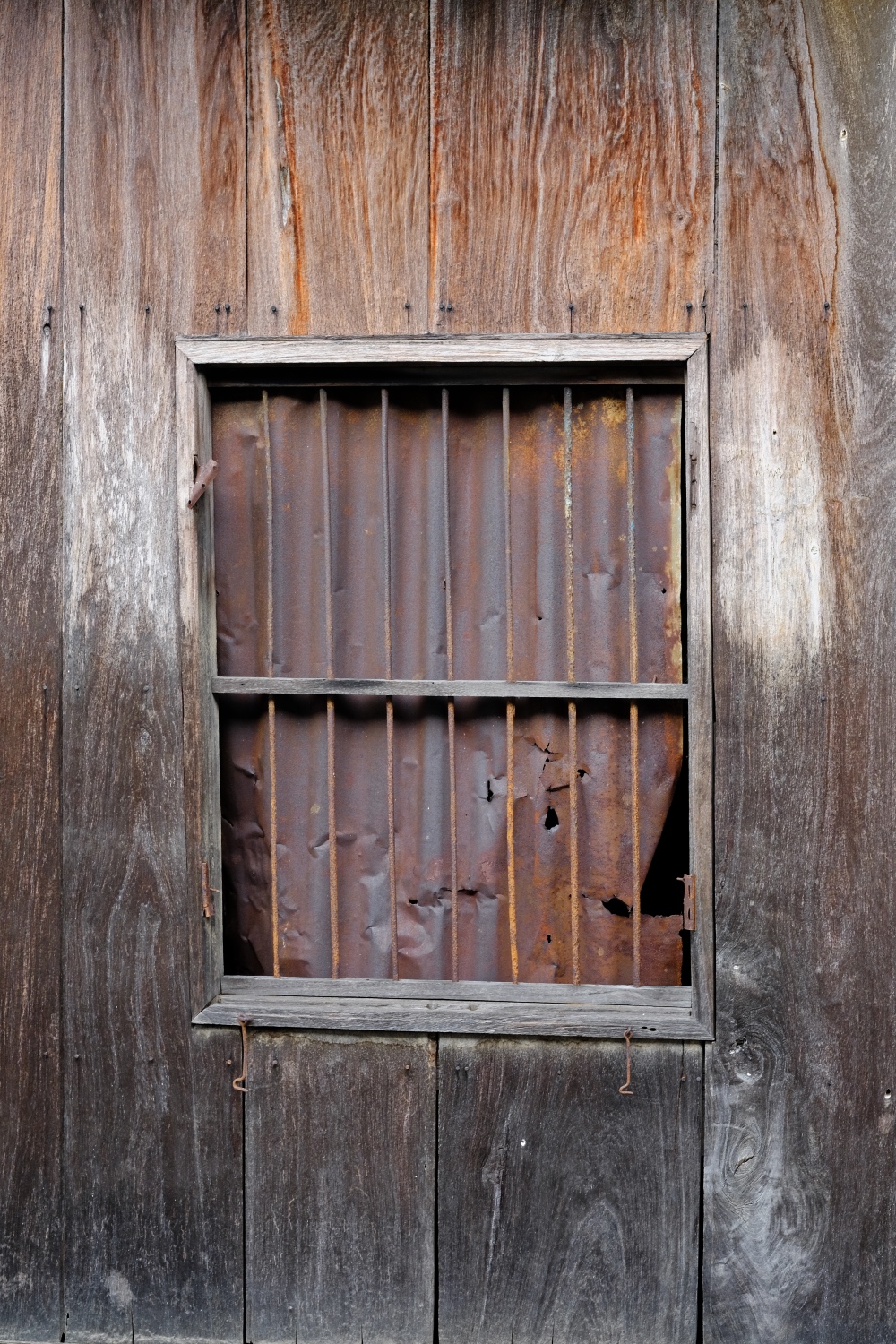 This window has everything I want in a photo: dilapidation, corrugation, and decay.
This window has everything I want in a photo: dilapidation, corrugation, and decay.
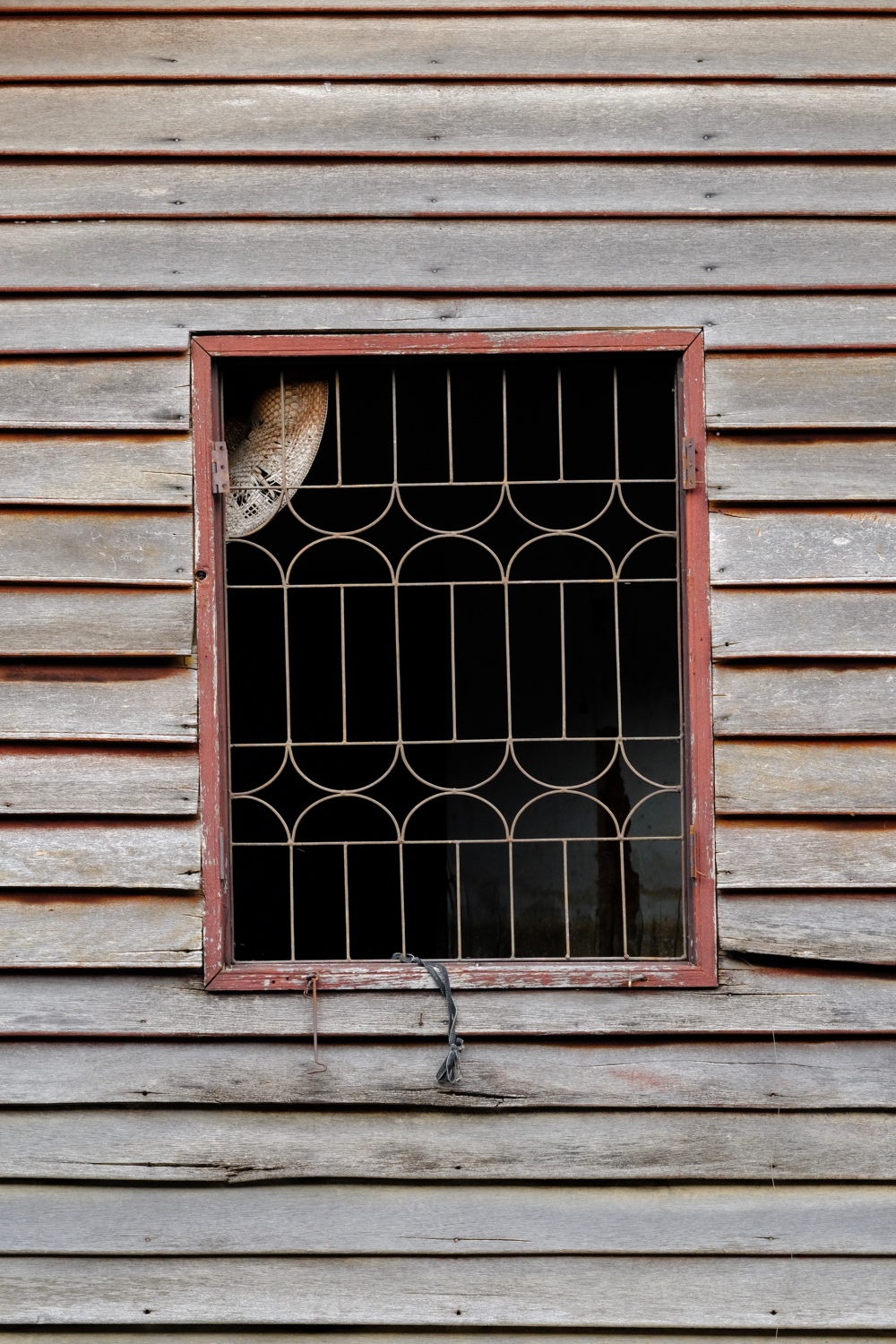 This window and those above are all on the same old wooden house sitting on pilings in the Chao Phraya River.
This window and those above are all on the same old wooden house sitting on pilings in the Chao Phraya River.
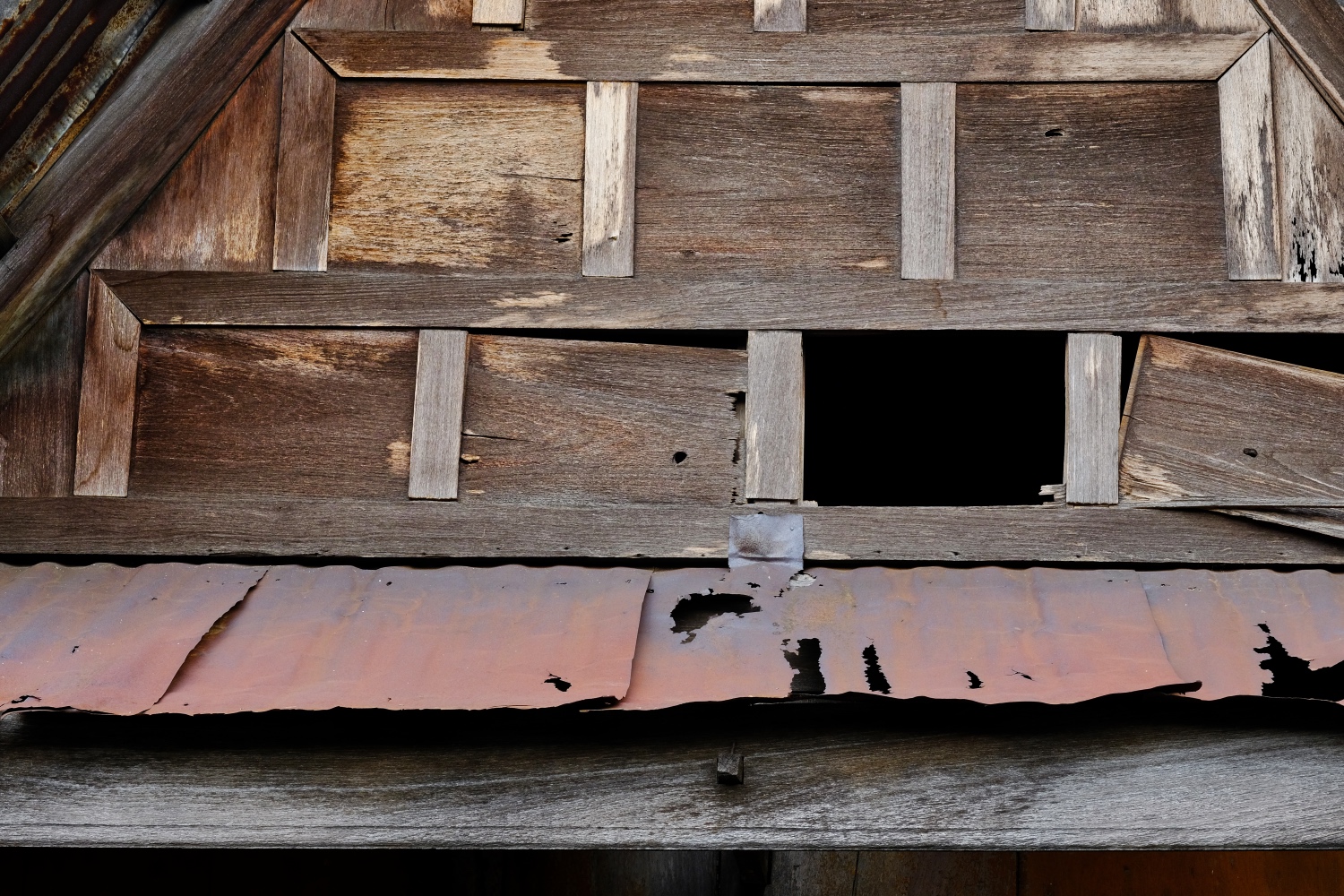 The Thai-style gabled roof . . . showing the age of this magnificent structure.
The Thai-style gabled roof . . . showing the age of this magnificent structure.
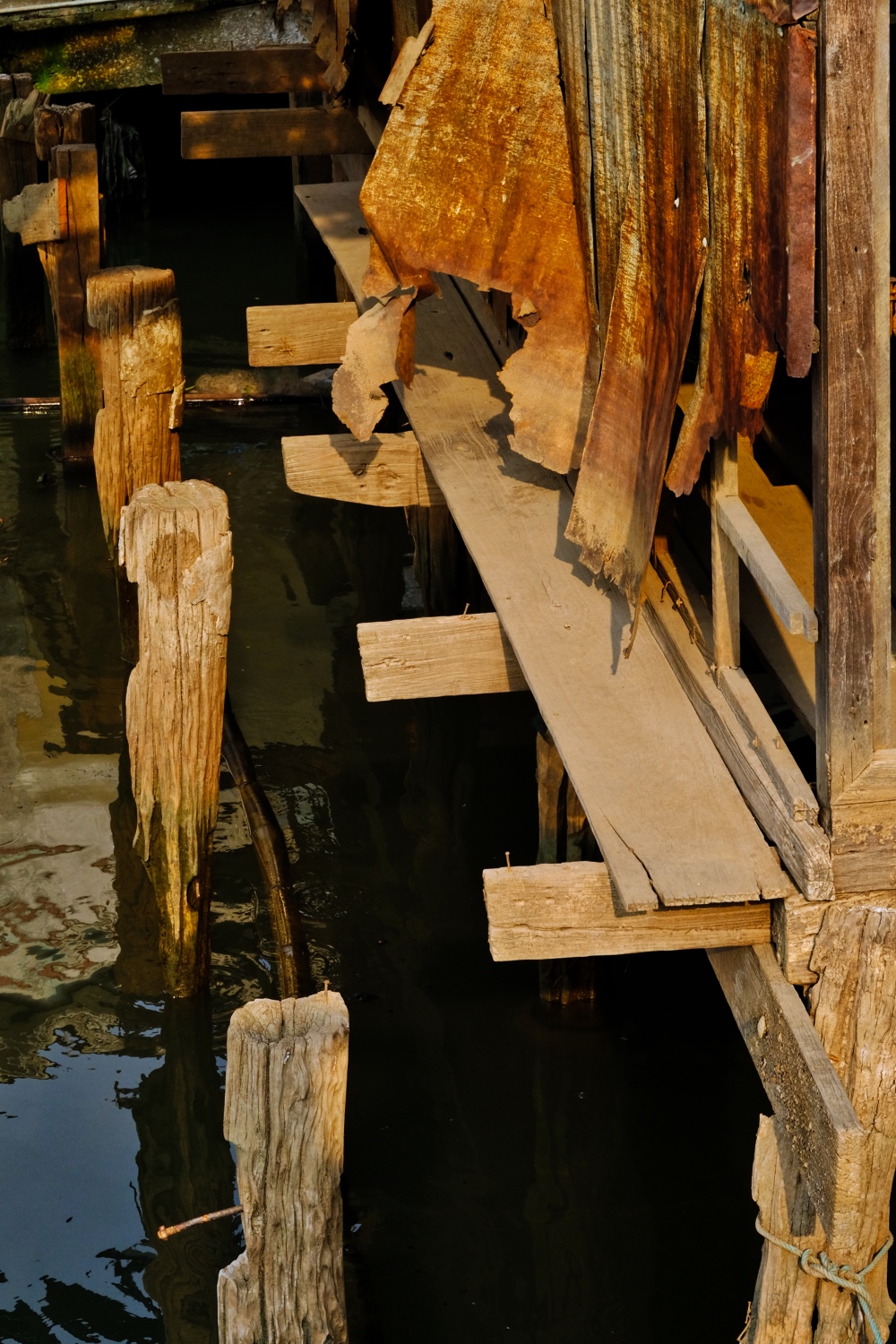 Just as we were leaving this beautiful place, the sun came out and shown magic afternoon light on the rotting piers of the old house.
Just as we were leaving this beautiful place, the sun came out and shown magic afternoon light on the rotting piers of the old house.
